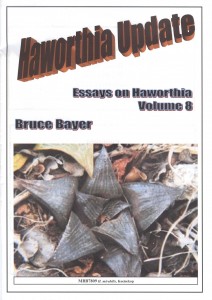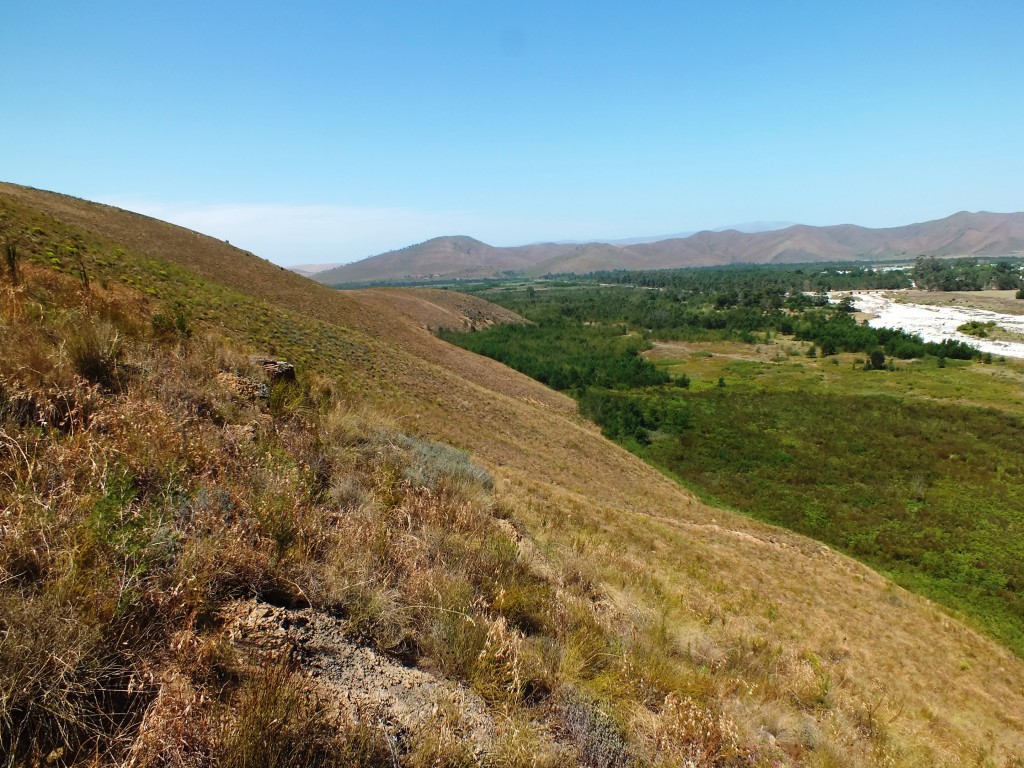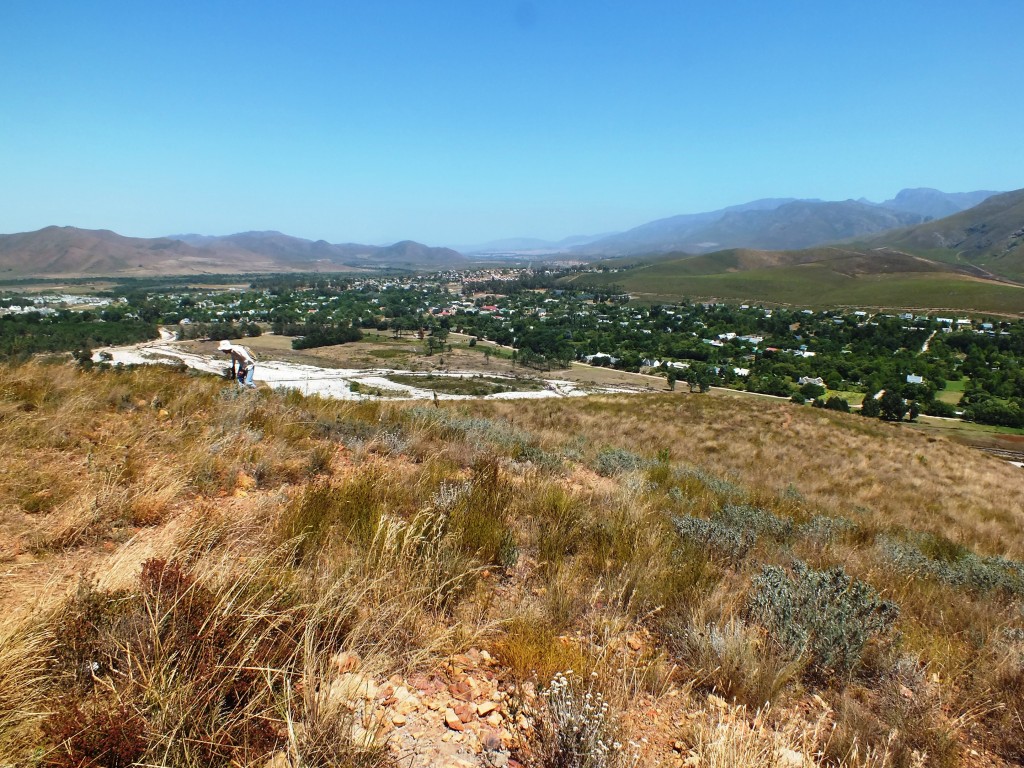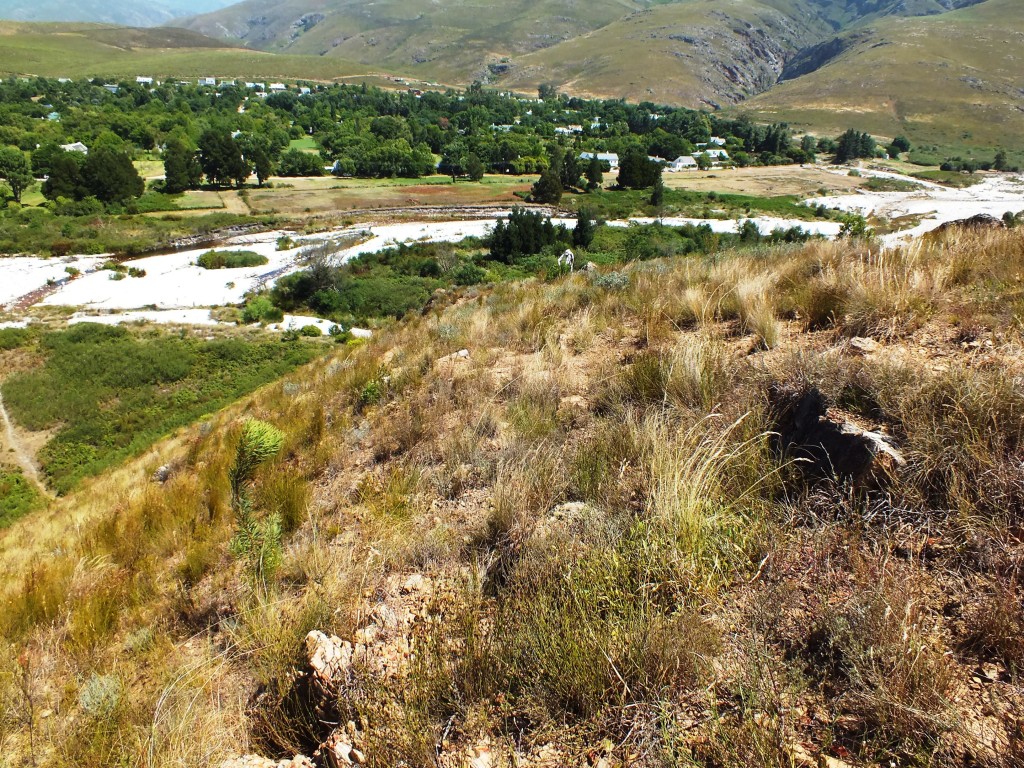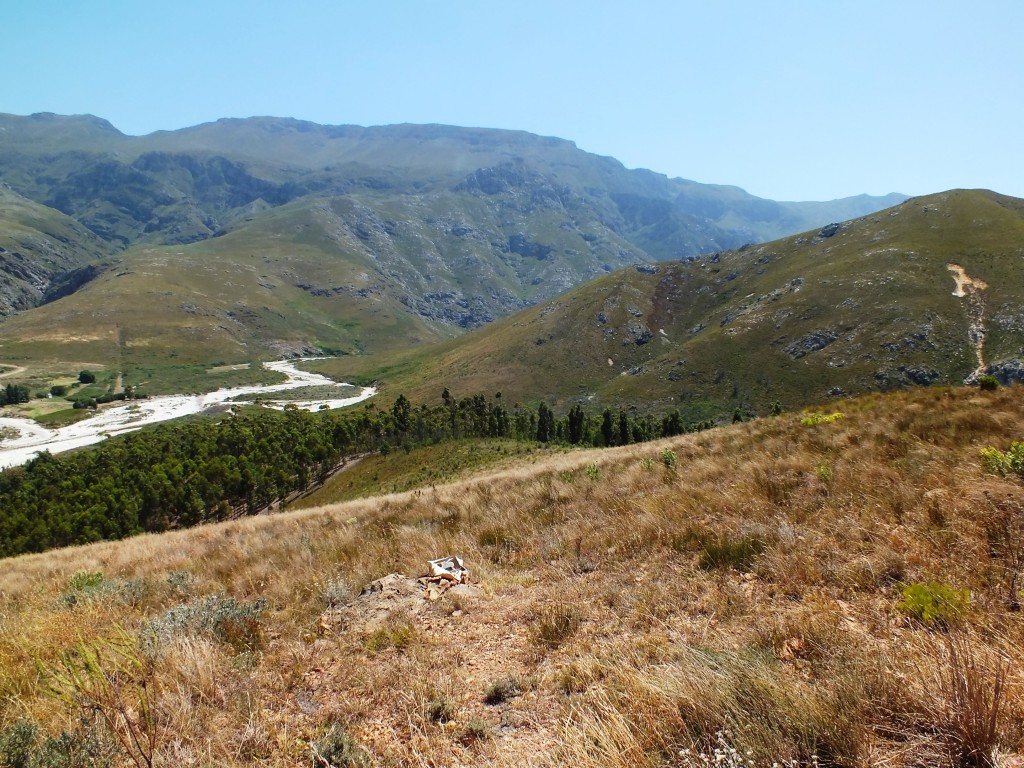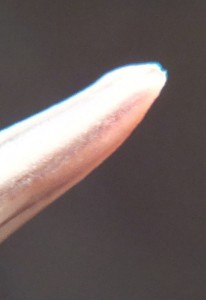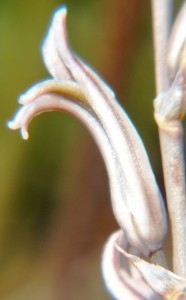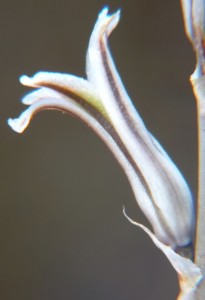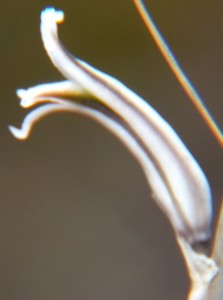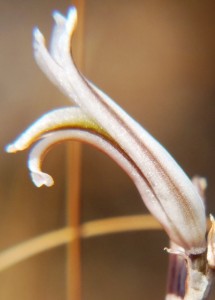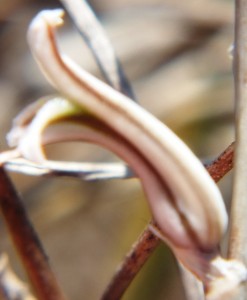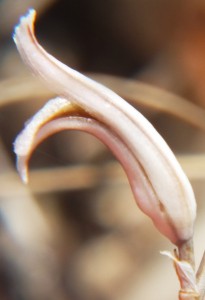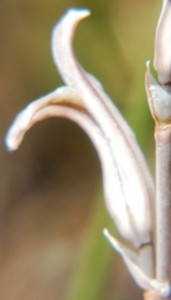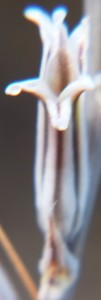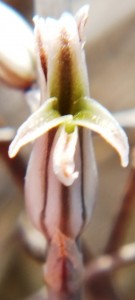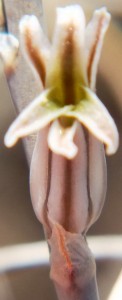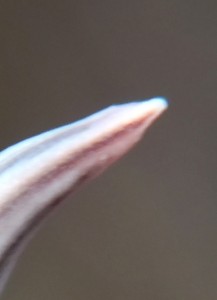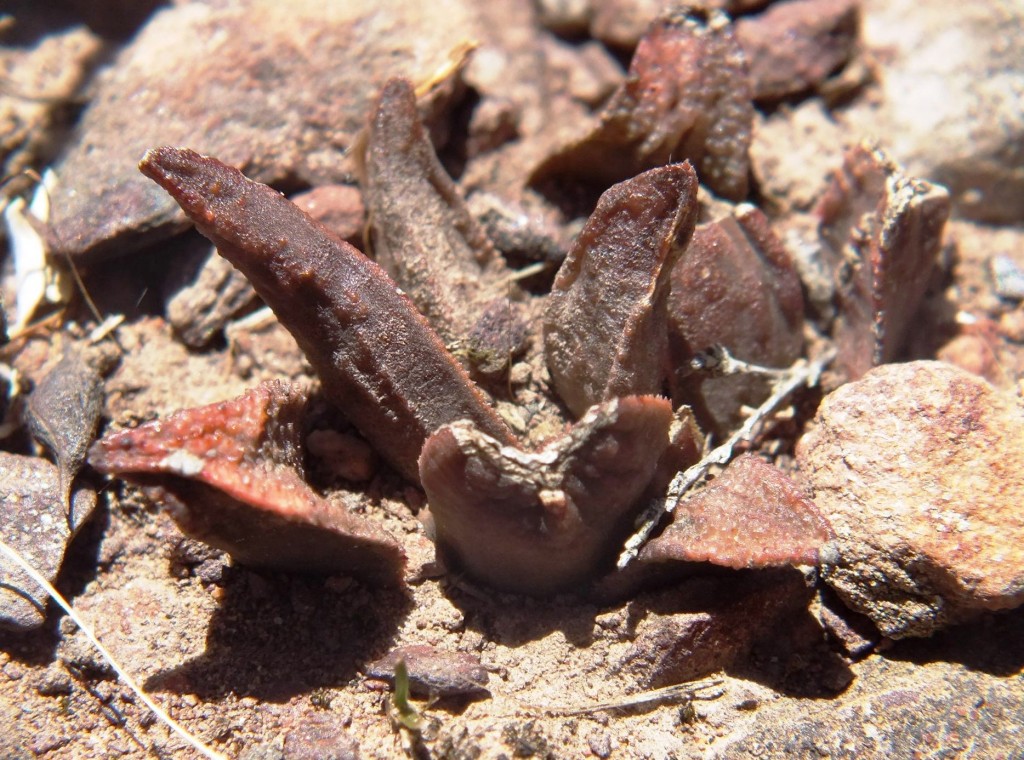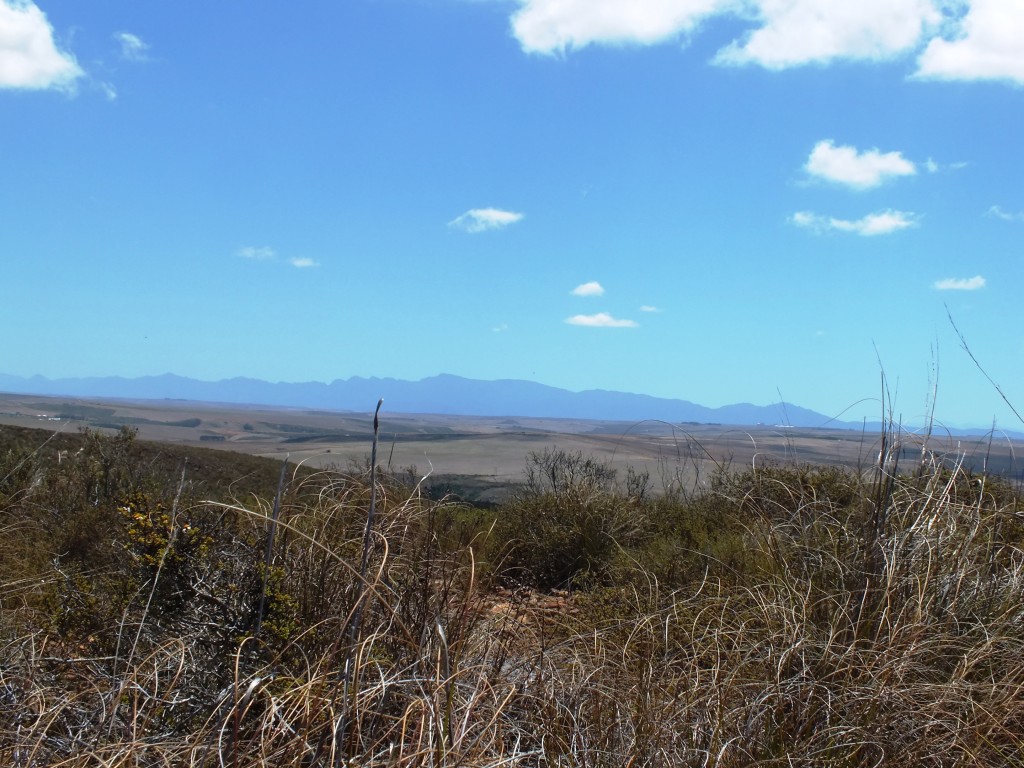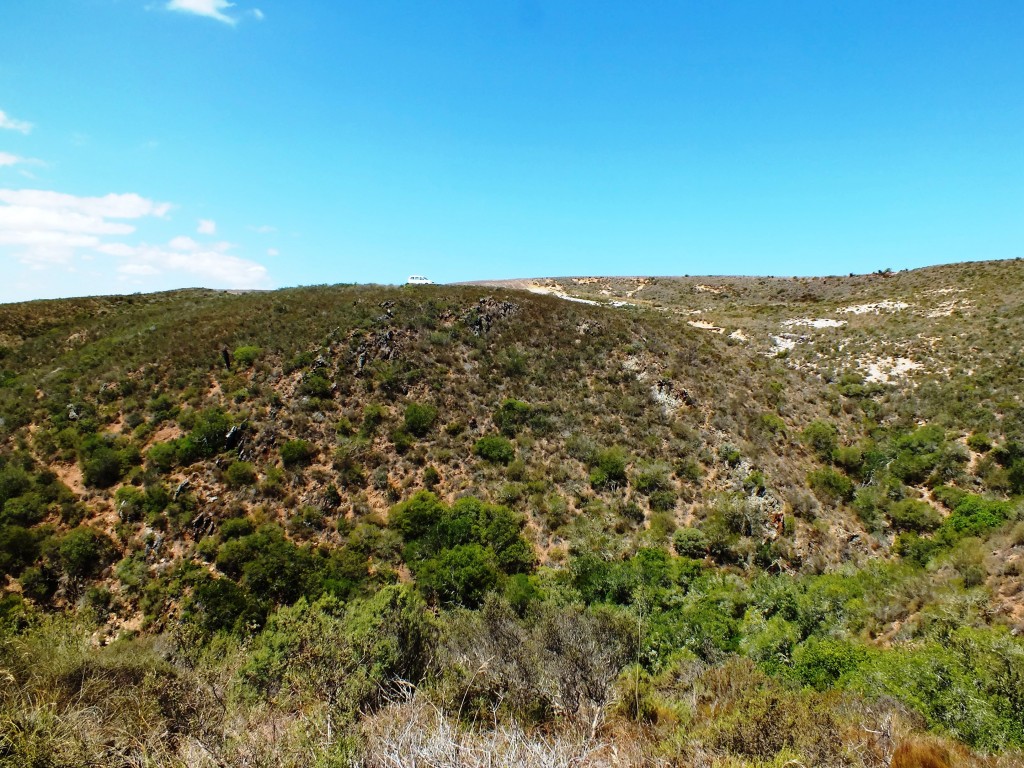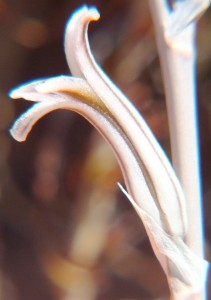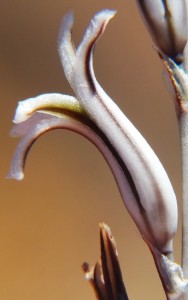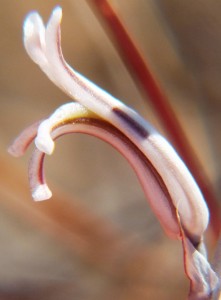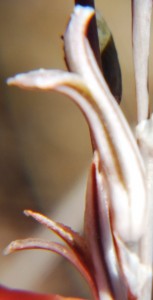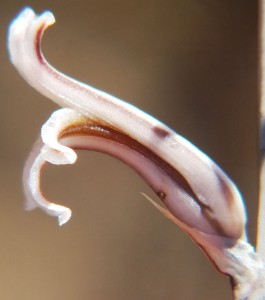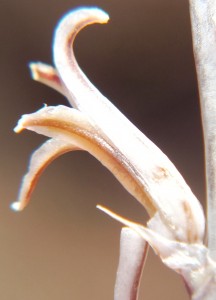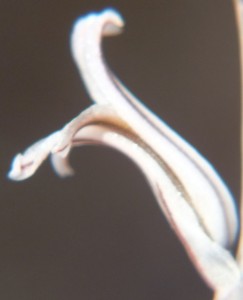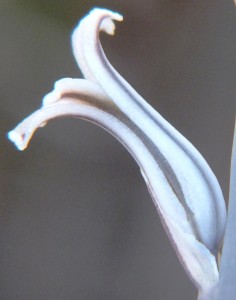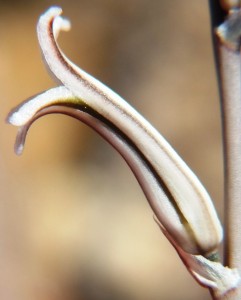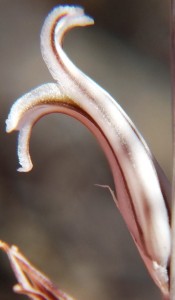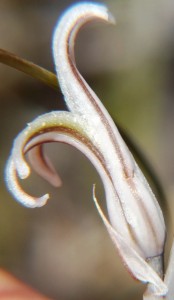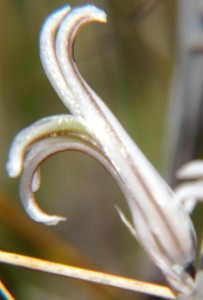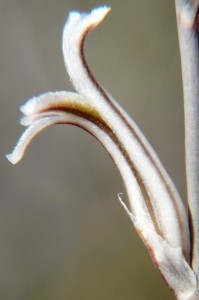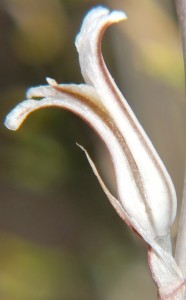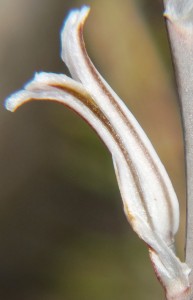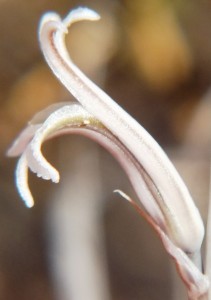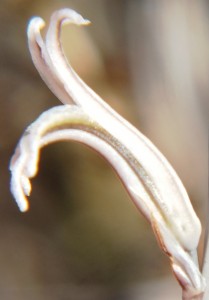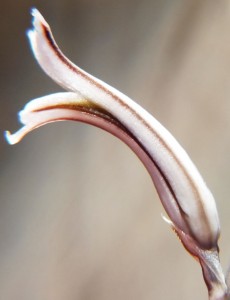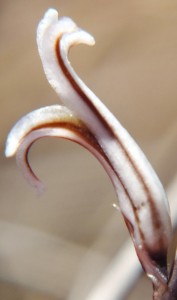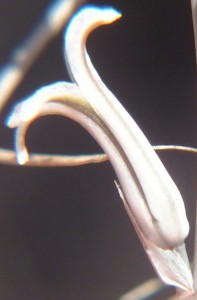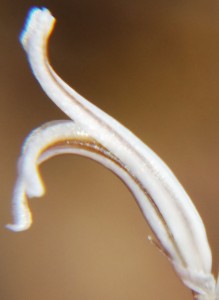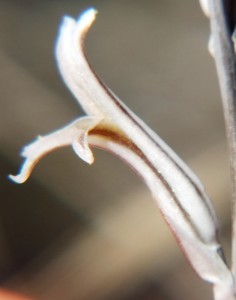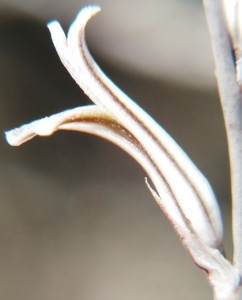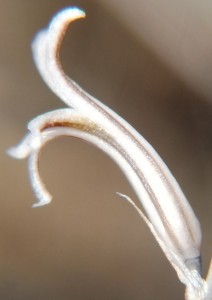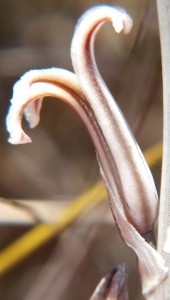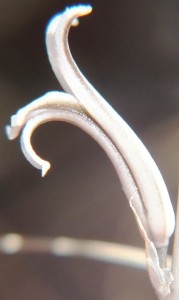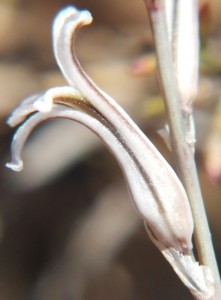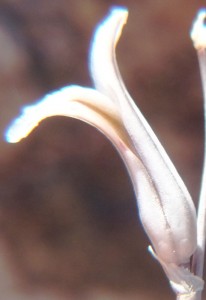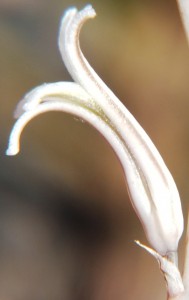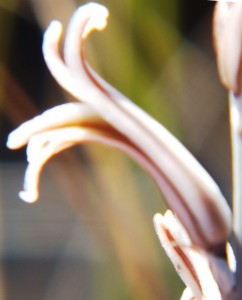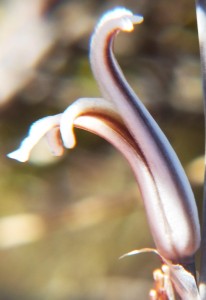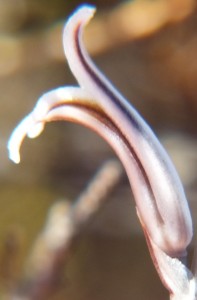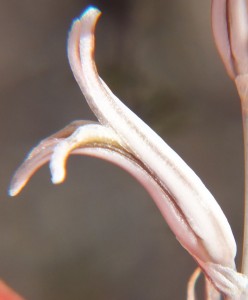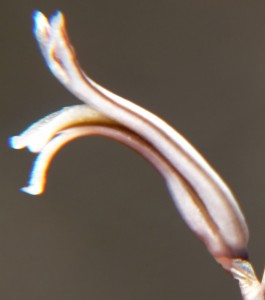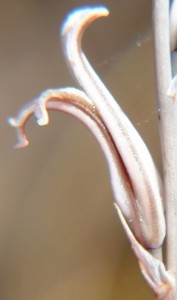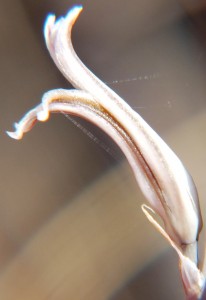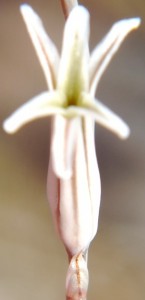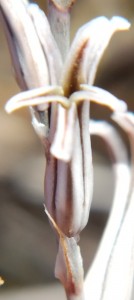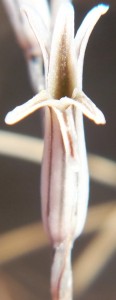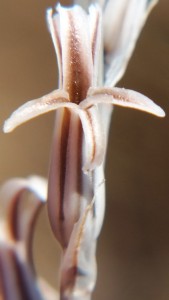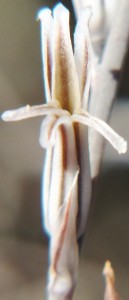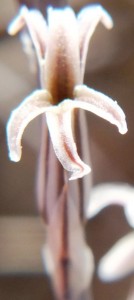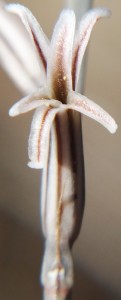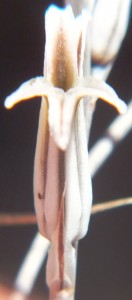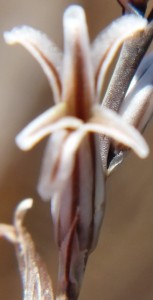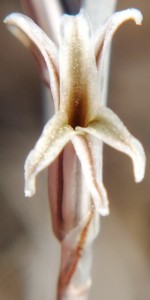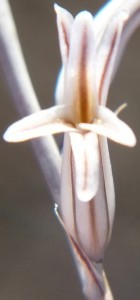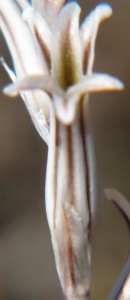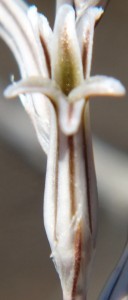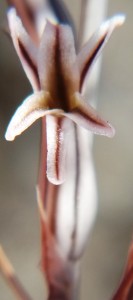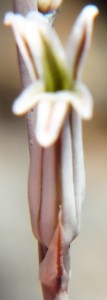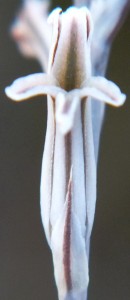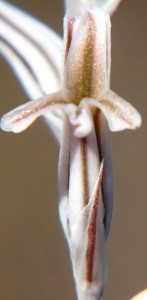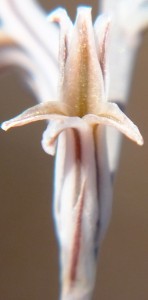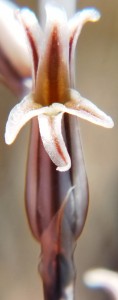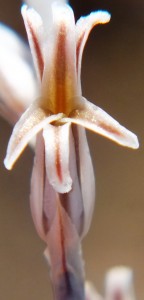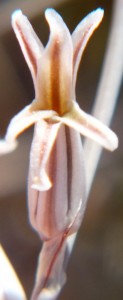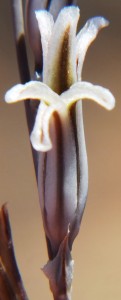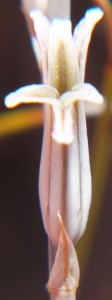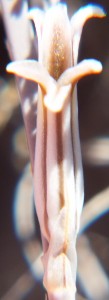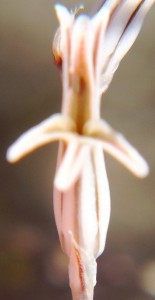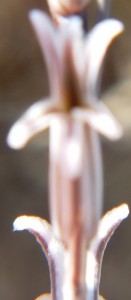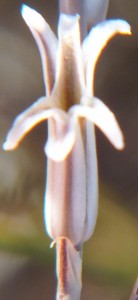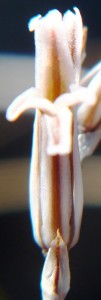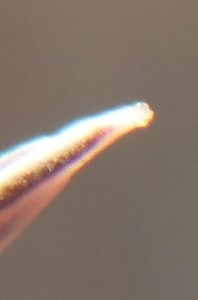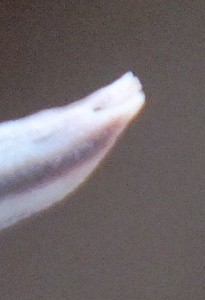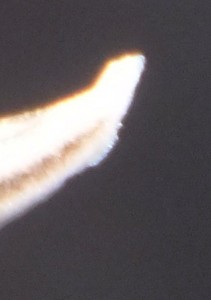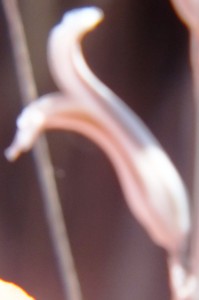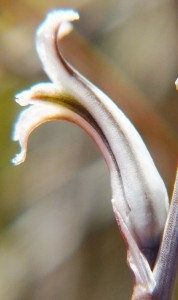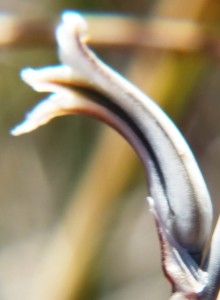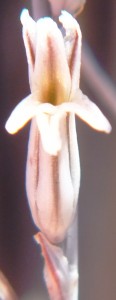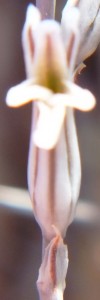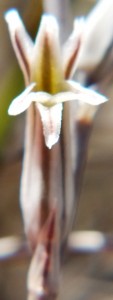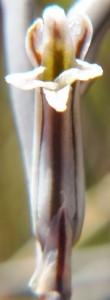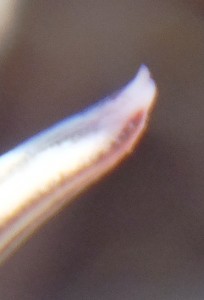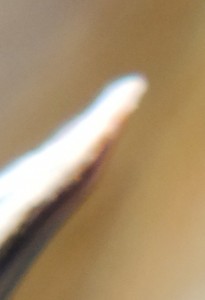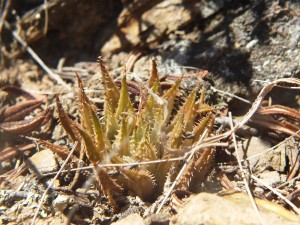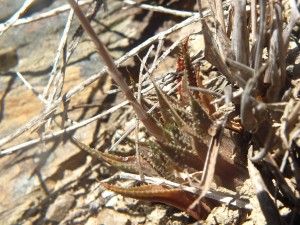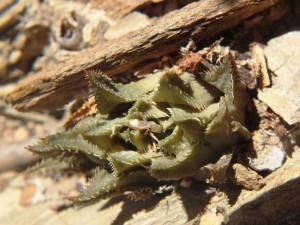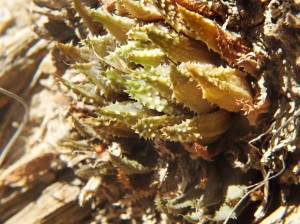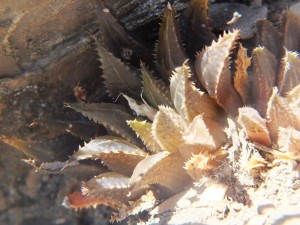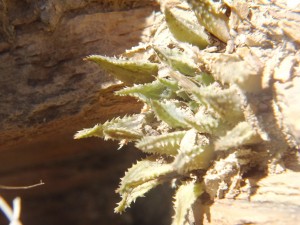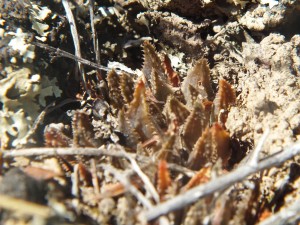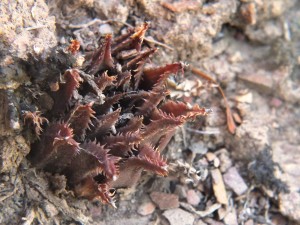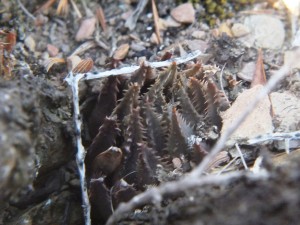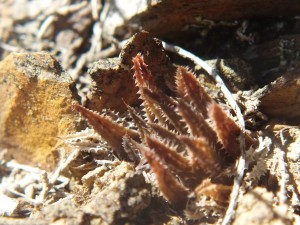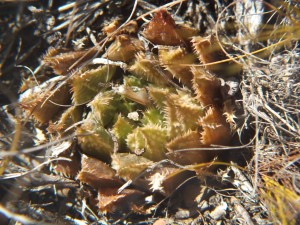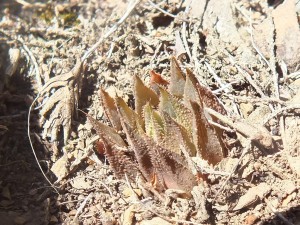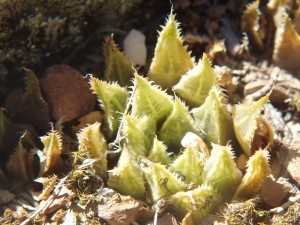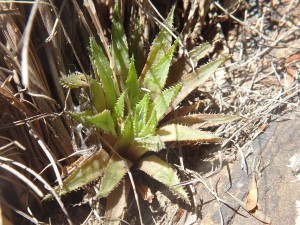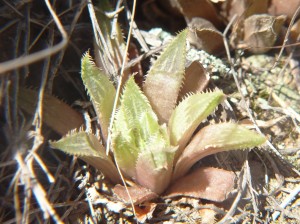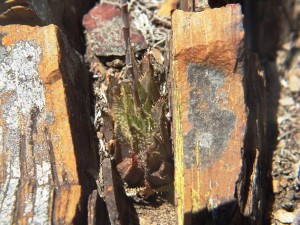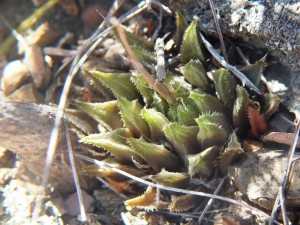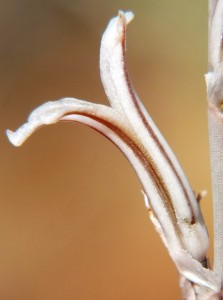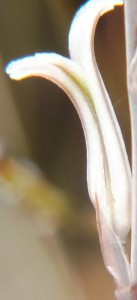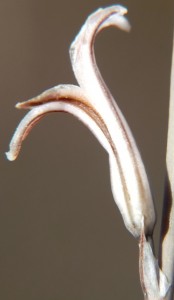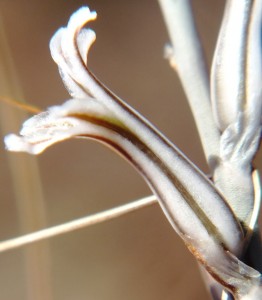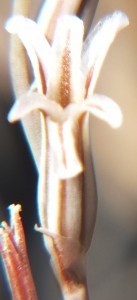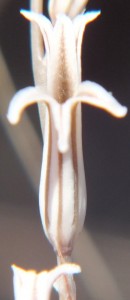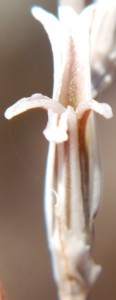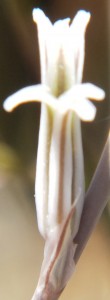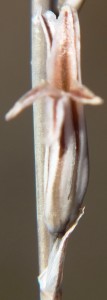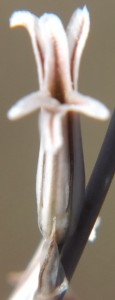- Haworthia Update Vol. 8 – Table of Contents
- Plant Names – A word of warning
- Haworthia flowers – some comments as a character source, part 1
- Haworthia flowers – some comments as a character source, part 2
- Haworthia flowers – some comments as a character source, part 3
- Haworthia flowers – some comments as a character source, Appendices 1, 2, 3
- Haworthia flowers – some comments as a character source, Appendix 4
- Haworthia flowers – some comments as a character source, Appendix 5
- Haworthia flowers – some comments as a character source, Appendix 6
- Haworthia flowers – some comments as a character source, Appendix 7
- Haworthia flowers – some comments as a character source, Appendix 8
- Haworthia flowers – some comments as a character source, Appendix 9
- Haworthia flowers – some comments as a character source, Appendix 10
Category Archives: Update 8
Plant Names – A word of warning
Alsterworthia International has always published information for Aloe, Gasteria, Haworthia, related smaller genera, nothogenera and cultivars without favour, believing that freedom of information is vitally important. Readers should be able to make up their own minds about the relative merits or otherwise of what is published, always provided that there is a balance of opposing views. This policy will continue, but a situation has developed which does require explanation and a decision by the Editor. Regardless of which species definition an author uses, authors normally publish their species names in accordance with the International Code of Botanical Nomenclature (ICBN). All names published under the provisions of that code are listed annually in the Repertorium Plantarum Succulentarum (Rep.), published by the International Organisation for Succulent Plant Study (IOS), either as valid or invalid. Any names not published under the provisions of the ICBN are simply ignored by the scientific world and others, are not published in the Rep. even as invalid and are not generally used.
Bruce Bayer’s field research is widely recognised as methodical, efficient and valuable. It has produced much new information and continues to do so. Over the years he has published many books on haworthias. At the outset, he published species names in accordance with the provisions of the ICBN, but in later years he has taken exception to that Code and published names outside its provisions. These names take the form of trinomials, consisting of the genus name, the species name he accepts to cover a much broader spectrum of plants, followed by species names in single inverted commas of species he regards as forming an integral, inseparable part of the species he accepts. All these names have been ignored by the scientific community and are not recorded in the Rep. etc even as invalid.
Bruce is on record as rejecting subdivisions of haworthia species, but last year when a request was put out for up-to-date revisions of genera for a replacement Illustrated Handbook of Succulent Plants he cooperated with Dr. Manning to produce a revision in accordance with the ICBN. This was published in Alsterworthia International 11(3)7-17 – A rationalization of names in Haworthia. A list of species with new combinations and new synonyms by M.B. Bayer and J.C. Manning (November, 2011).
Subsequent to this Bruce sent me material for this publication, Update 8. As one would expect, it contains much new information which is well worth consideration even if you disagree with his views. Unfortunately the species names he uses do not always follow his November, 2011 revision, as he continues to use some of his trinomials invalid under the ICBN. Bruce feels that he has good reasons for doing this based on his previously published objections to the ICBN.
I, therefore, consulted two well known “referees” who (I summarize) were not in favour of his reversion to using his invalid trinomials. One reminded me that as editor I had the final decision whether or not to print Update 8 because names did not always comply with the ICBN. My decision is to publish Update 8 as written by Bruce Bayer, but to make it quite clear that names which do not comply with the ICBN are invalid. Always use ICBN names. You can always equate Bruce’s invalid names with them if you think this is necessary for clarity.
This decision may not be approved by everyone, but it does allow the publication of Bruce’s valuable work in the absence of his non-compliance with the ICBN and at the same time it stresses that names not in accordance with the ICBN are invalid. It is notable that other authors (Ingo Breuer, Dr Hayashi, S.D. Gildenhuys, Gerhard Marx etc. with different species concepts) all comply with the ICBN and their species names are recorded in the Repertorium Plantarum Succulentarum as either valid or invalid. The fact that there are different classifications with different names complying with the ICBN does not make it easy for collectors to identify a species with one universally accepted species name. Bruce’s non-ICBN names add further to the difficulty.
Under the ICBN it is possible to follow a broad species concept and comply with that Code, as demonstrated by the aforementioned revision in Alsterworthia International 11(3)7-17, November 2011. An alternative is to publish the all-embracing species with others being recorded as synonyms. I would like all authors who write for Alsterworthia International to comply with the ICBN (and the Cultivar Code, ICNCP), but for any who have good reason for not complying I will continue to print their articles stressing at the same time that species names not complying are invalid. Original thought sometimes results in non-compliance. It should not be discouraged, but upholding the ICBN should be as it is all that we have to ensure consistency of names world wide.
Harry Mays, Alsterworthia International editor, and member of the IOS.
Haworthia flowers – some comments as a character source, part 1
M B Bayer, Kuilsriver, RSA
Introduction
The object of this essay is to discuss where we are now with respect to classification of Haworthia. Despite my comments and observations stretching over 50 years, there are still taxonomists writing and arguing on the basis of method and practice that generated the anarchy of names that existed at the start of my involvement. This method is what is probably referred to as “typological” i.e. there is a single herbarium specimen and anything that departs from this in some mind catching way is a different and thus needs a new name. At the generic level, recent DNA studies show that Haworthia is indeed three separate entities (the subgenera), and that these cannot be rationally separated from the aloid genera. Formal classification requires that Haworthia thus be subsumed in Aloe (see Treutlein et al, Rhamdani et al and Daru et al). This is both incomprehensible and anathema to writers and collectors locked into method that does not rest on any insight to what the problem of species actually is, let alone take proper cognizance of the problems that exists at generic level.
In response to some of the expressed anxiety about the proposed changes to Aloe, Dr John Manning, in a personal communication, wrote…”Most folk follow the biological species concept, which in its simplest form proposes that species are groups of interbreeding populations that are more or less reproductively isolated from other species. The existence of infrequent hybrids does not invalidate it. HOWEVER this is just about always a purely theoretical construct because there is no experimental data in most species to back it up. In practice, therefore, folk use morphology as a surrogate for reproductive isolation on the argument that discontinuities in morphology will coincide with these reproductive boundaries. Naturally there are all sorts of natural variabilities within species and so it becomes tricky to decide which of them fall within the boundary of the species and which fall outside of it”.
Two interesting things arise from this. Firstly, a “species” is itself a biological entity and there are not (or should not) be species that are not biological. Secondly there is a difference between a species concept and a definition. The concept is a general idea, while a definition lays down requirements that must be met. It might be better to say…”species determined by their interbreeding potential”, than use the term “biological species”. There is a huge amount of real experience and observation of the interbreeding capabilities of Haworthia both in the field and in cultivation. This suggests that if we really followed this criterion for determining in the genus then most of the Latin species names are superfluous, as I indeed consider them to be. Therefore, while there is a problem with the formal recognition of genera, the seems to be a total vacuum in respect of considerations around the constitution of species and how they can be, or are to, be circumscribed.
I have of course based what I regard as Haworthia species on a view of species as dynamic systems in a geographic framework, because history and my own long experience suggest that there are no morphological (or biological) criteria that produce the kind of classification that writers have produced or that collectors may need or expect. I proved by my studies in Oxalis, that morphological criteria can be extremely misleading, and that characters (or even character sets) thought to be useful in delimiting species, may in fact vary more within species than between species. I observe that this is true in many other genera. Flowers have recently been touted again by aspiring taxonomists as characters that will solve problems and it has even been said that I have ignored them. This is not true. I do not deny their value as characters. My experience simply suggests that variation and similarities in floral characters, mirror the situation with regard to vegetative morphology and may actually provide evidence for further amalgamation of species and reduction of names. This essay thus explores the situation in a data set, fortuitously available by virtue of modern digital photography and opportunity.
The elemental issue underlying all of this is dependent on the species definition. If some floral character is, or characters are, identified and specified as species characters then of course they would acquire significance in that context. What I can only show is that I observe nothing of the kind to relate to such a definition and insist on as species as systems in a geographic framework. Can they be rationally organized in any other system?
The hypothesis this essay addresses is that the floral morphology can be used to identify and circumscribe taxonomic ranks in Haworthia.
Overview
Originally I very laboriously drew flowers – often only one per collection. But one of my projects was trying to find more consequential objective evidence than just subjective vegetative differences to distinguish between H. reticulata and H. herbacea. I used a range of floral measurements but found the variation so great that to get a statistically significant result would have entailed many more samples than the number I used. Doing this would have been both very labour intensive and very destructive to the populations. I must point out that I am confident I could separate H. arachnoidea, H. mirabilis, H. pubescens as well as H. herbacea and H. reticulata (to some degree), all in the Worcester area, on the basis of their flowers. But this is not the level at which any other solution is needed beyond the appearance of the plants. There are only general differences by which one can separate H. herbacea and H. reticulata in respect of both vegetative and floral characters. H. wittebergensis could probably be identified just on the basis of its small white and more recurved flower, but its vegetatitve characters are quite adequate for the purpose.
Photography in those early days was not an option for recording flower detail. The advent of digital photography changes that quite dramatically and this essay is an exercise using this technology to attempt to document field observations. I photographed flowers as available in approximately 30 populations during February 2012, and these are used now in a posteriori manner to test the hypothesis regarding flowers. These images cover three species as I recognize them as systems in a geographic context viz. H. mirabilis (20 populations from three geographic zones), a summer flowering set of H. mutica (3 populations), H. floribunda (5 populations). Several outlier populations are added although sometime by single clones (see Table 1 listing the accessions. Map 1 (at end) indicates relative geographic position). These photographs provide a pictorial record of variation and difference within populations, between populations of the same species and between populations of different species.
Data
1. The plants. Figure Set 1 is a set of to 4 each, of the plants as they are in the populations covered. I have done this as a reference to how the names were derived and as I use them. The plants are far more variable than is generally understood and four images per population is really grossly inadequate as a sample to base a circumscription on. In the case of 7163 H. mirabilis, Frehse Reserve, S Riversdale, I have included pictures of plants (no flowers) because this is the type locality for the name H. magnifica (=H. mirabilis) that is widely used without any consideration of the range of variants there and how they may relate to other populations of H. mirabilis that are equally variable. Curiously there were no flowers and it appeared that the few plants that had flowered had done so earlier than expected. The same applies to a very similar population 6651 from a little to the southwest where there was only a single open flower. But two other populations viz. 7778 and 7818 in the area had many flowers at the time. It was rather similar at Van Reenens Crest where the various populations had not flowered with equal vigour and at some it was not possible to get a respectable number of flowers. It should be noted that in a good season with some summer rain, the plants will flower more successful with more plants flowering and some plants producing successive inflorescences. Thus the flower season could be extended be several weeks. Note that in the case of 7976 H. floribunda I did not take plant pictures for this second population.
Table 1. List of populations and identifications.
1. Haworthia mirabilis – eastern zone, Riversdale area (cf H. magnifica).
6651 H. mirabilis, E Riversdale.
7163 H. mirabilis, S Riversdale.
7778 H. mirabilis, Komserante, E Riversdale.
7818 H. mirabilis, Windsor, SE Riversdale.
7809 H. mirabilis, Koeisekop, Heidelberg.
2. H. mirabilis – central zone, Swellendam area.
7887 H. mirabilis, Rotterdam.
7912 H. mirabilis, Rietkuil.
7913 H. mirabilis, Rietkuil.
7916 H. mirabilis, Van Reenens Crest.
7917 H. mirabilis, NE Dam VR Crest.
7918 H. mirabilis, Van Reenens Crest, SE Dam.
7919 H. mirabilis, Van Reenens Crest, Game camp.
7955 H. mirabilis, Van Reenens Crest.
7959 H. mirabilis, W Van Reenens Crest.
7960 H. mirabilis, Kruiskloof.
3. H. mirabilis – western zone, Greyton area (cf. vars beukmannii, rubrodentata).
7262 H. mirabilis, S Greyton.
7978 H. mirabilis, Schuitsberg.
7979 H. mirabilis, Nethercourt.
7980 H. mirabilis, E Ouplaas.
7981 H. mirabilis, Schuitsberg N.
4. H. mutica – north-eastern zone, Buffeljags (Swellendam area, cf. H. groenewaldii).
7801 H. mutica, Buffeljags.
7888 H. mutica, Rotterdam 1.
7889 H. mutica, Rotterdam 2.
5. H. floribunda – central zone, Swellendam area.
7774 H. floribunda, S Swellendam.
7910 H. floribunda, Rietkuil.
7963 H. floribunda, Niekerkshek.
7975 H. floribunda, Rotterdam 1.
7976 H. floribunda, Rotterdam.
6. H. mirabilis – outliers and ‘outgroups’.
7248 H. mirabilis, Ballyfar, Infanta.
7513 H. mirabilis, Klipfontein N Bromberg.
7612 H. mirabilis, Diamant W.
7780 H. retusa ‘geraldii’, Komserante.
7781 H. retusa ‘foucheii’, Komserante.
7920 H. retusa ‘ nigra’, Van Reenens Crest.
7974 H. mirabilis, Klipfontein, Potberg.
7982 H. mirabilis, Melkhoutkraal, Goukou.
JDV87-132 H. parksiana, Mossel Bay.
The plant images :-
SET 1. H. mirabilis, Eastern Zone.


6651 H. mirabilis, SW Riversdale


6651 H. mirabilis, SW Riversdale


7163 H. mirabilis, Frehse Reserve, S Riversdale


7163 H. mirabilis, Frehse Reserve, S Riversdale


7778 H. mirabilis, Komserante


7778 H. mirabilis, Komserante


7818 H. mirabilis, Windsor


7818 H. mirabilis, Windsor


7809 H. mirabilis, Koeisekop


7809 H. mirabilis, Koeisekop
SET 2. H. mirabilis, Central Zone.


7887 H. mirabilis, Rotterdam


7887 H. mirabilis, Rotterdam


7912 H. mirabilis, Rietkuil


7912 H. mirabilis, Rietkuil


7913 H. mirabilis, Rietkuil


7913 H. mirabilis, Rietkuil


7916 H. mirabilis, Van Reenens Crest


7916 H. mirabilis, Van Reenens Crest


7917 H. mirabilis, Van Reenens Crest


7917 H. mirabilis, Van Reenens Crest


7918 H. mirabilis, Van Reenens Crest


7918 H. mirabilis, Van Reenens Crest


7919 H. mirabilis, Van Reenens Crest


7919 H. mirabilis, Van Reenens Crest


7955 H. mirabilis, Van Reenens Crest


7955 H. mirabilis, Van Reenens Crest


7959 H. mirabilis, Van Reenens Crest


7959 H. mirabilis, Van Reenens Crest

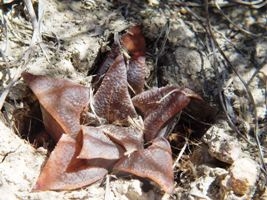
7960 H. mirabilis, Kruiskloof
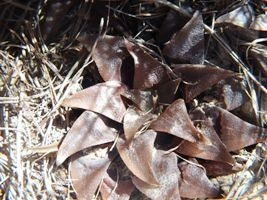
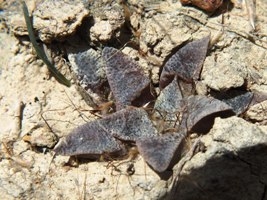
7960 H. mirabilis, Kruiskloof
SET 3. H. mirabilis, Western Zone.

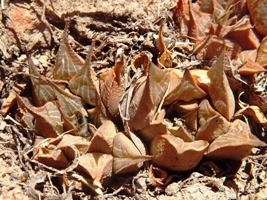
7262 H. mirabilis, S Greyton
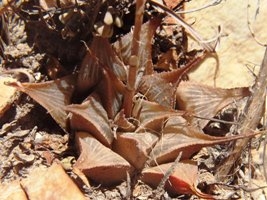
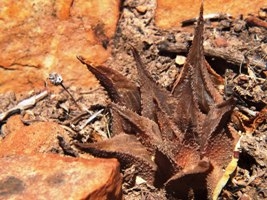
7262 H. mirabilis, S Greyton
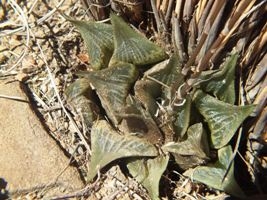
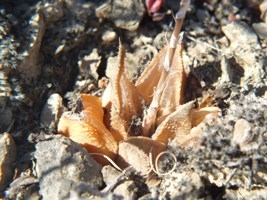
7978 H. mirabilis, Schuitsberg
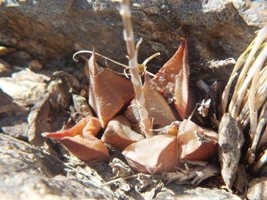
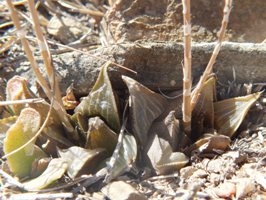
7978 H. mirabilis, Schuitsberg
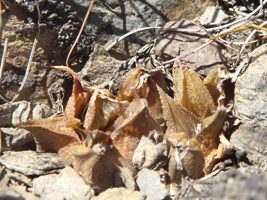

7979 H. mirabilis, Nethercourt

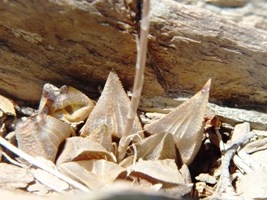
7979 H. mirabilis, Nethercourt
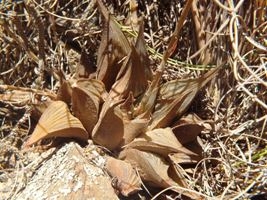

7980 H. mirabilis, E Ouplaas
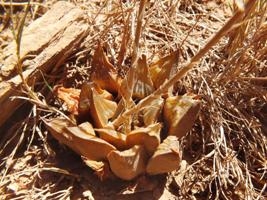
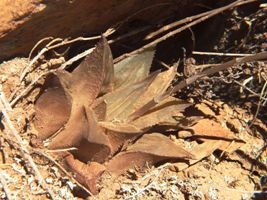
7980 H. mirabilis, E Ouplaas
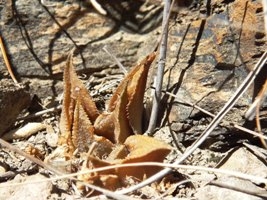
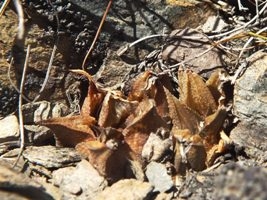
7981 H. mirabilis, Schuitsberg N
SET 4. H. mutica in its NE zone, Swellendam.

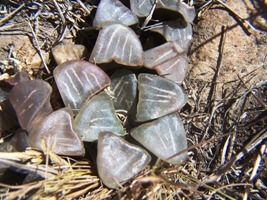
7801 H. mutica, Buffeljags
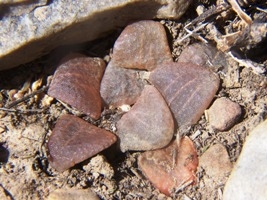
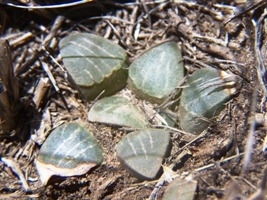
7801 H. mutica, Buffeljags

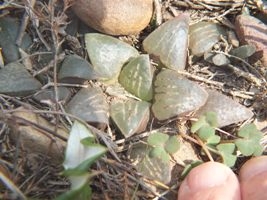
7888 H. mutica, Rotterdam 1

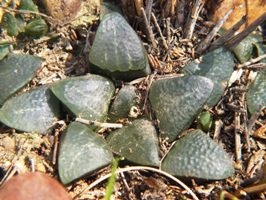
7888 H. mutica, Rotterdam 1
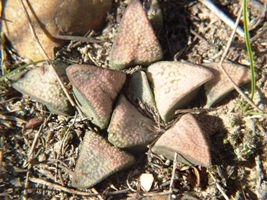

7889 H. mutica, Rotterdam 2
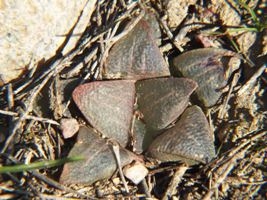
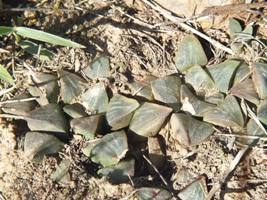
7889 H. mutica, Rotterdam 2
Set 5. H. floribunda in its western zone, Swellendam.

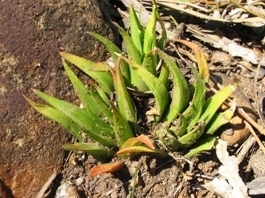
7774 H. floribunda, S Swellendam
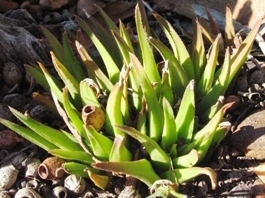
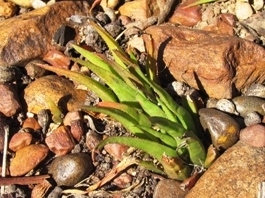
7774 H. floribunda, S Swellendam
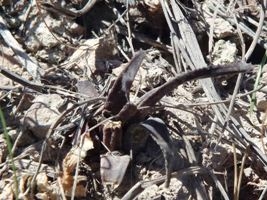
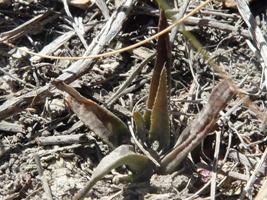
7910 H. floribunda, Rietkuil
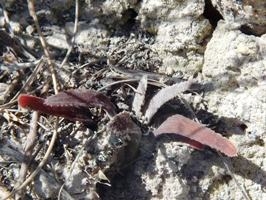
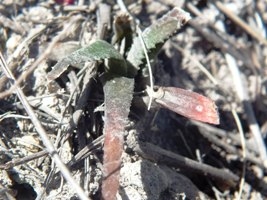
7910 H. floribunda, Rietkuil
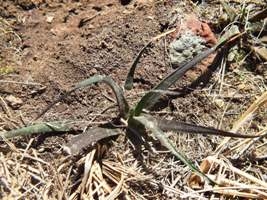
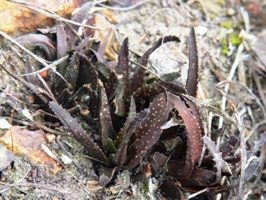
7963 H. floribunda, Niekerkshek

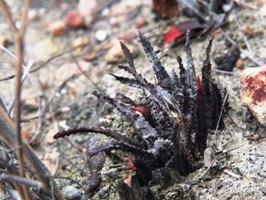
7963 H. floribunda, Niekerkshek
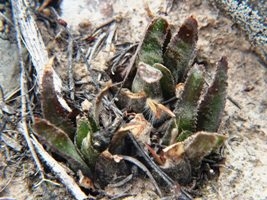

7975 H. floribunda, Rotterdam 1

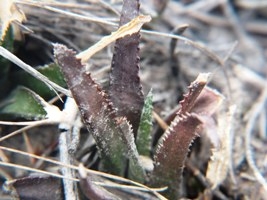
7975 H. floribunda, Rotterdam 1
7976 H. floribunda, Rotterdam – not illustrated.
SET 6. Outliers H. mirabilis and some relevant populations.
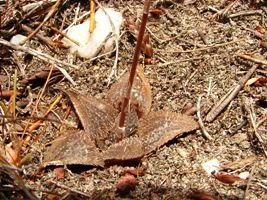
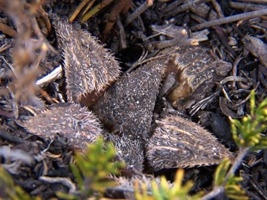
7248 H. mirabilis, Ballyfar

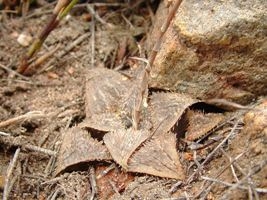
7248 H. mirabilis, Ballyfar


7513 H. mirabilis, Klipfontein, N Bromberg
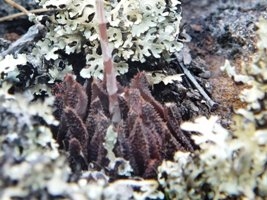
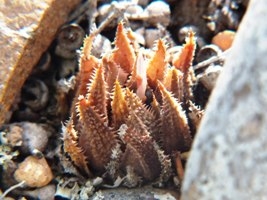
7513 H. mirabilis, Klipfontein, N Bromberg
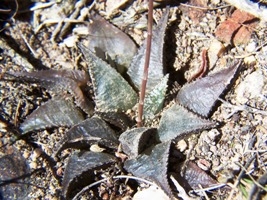
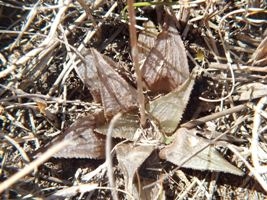
7612 H. mirabilis, Diamant
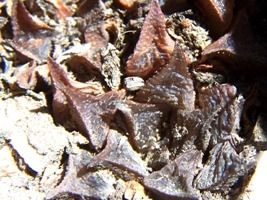
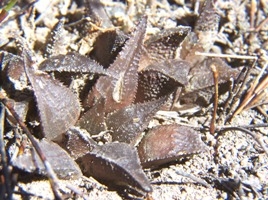
7612 H. mirabilis, Diamant


7720 H. retusa ‘nigra’. Van Reenens Crest

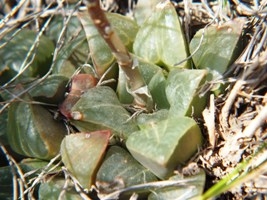
7720 H. retusa ‘nigra’. Van Reenens Crest

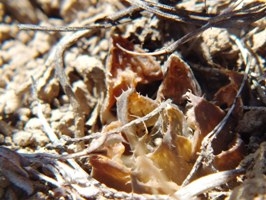
7982 H. mirabilis, Goukou

JDV87132 H. parksiana, Mossel Bay
Haworthia flowers – some comments as a character source, part 1
Haworthia flowers – some comments as a character source, part 2
Haworthia flowers – some comments as a character source, part 3
♦
Haworthia flowers – some comments as a character source, part 2
2. THE RACEME. Figures Set 2 show the bases of the peduncles in several collections to again show how variable they are and not only because of plant vigor and current growth conditions. Diameter can vary by a factor of three. Color is variable and the bract spacing and size of bracts as variables must be noted. Fig 6 is simply a robust spike in a population where the flowers were sparsely spaced on the stem with approximately 15-20 flowers per stem, whereas this raceme had nearly 30 flowers. The number can drop to as low as three. In 7917 we noted a single plant with an inflorescence of over 600mm where the average was below 300. Similarly at 7818 there was one colossal inflorescence of 800mm where again the average was between 300 and 400mm. There is a real problem in that the typological attitude is often adopted when making comparisons like this. An extreme example would be to take H. retusa south of Riversdale as typical of the species. These are massive plants (source of ‘Jolly Green Giant’) and the inflorescences are huge with many flowers. This is not typical for the species and especially so if one takes the mountain cliff populations (H. turgida) to be the same species (as I do) where the plants are proliferous and the inflorescences many and reduced. Plants in poor niches and even poor habitats, flower weakly and the inflorescences are reduced. Figs 7 shows varying capsule positions on the stem. Figs 8 and 9 show a distichous and a secund inflorescence and figs 10 to 15 demonstrate the varied spacing of the flowers that is observable even in any one population although the images are for two different accessions. In Fig. 8 the middle flowers are in a single plane and I regret not having observed the leaf arrangement in that specific plant, because this is a distichous arrangement as the low Fibonacci number of a spiral arrangement of the flowers. This may have been reflected in the leaf arrangement too. The spacing and arrangement of the flowers is also a variable and the number of flowers may also vary. Figs 16 to 18 show bud arrangement and the way in which the fish-tail buds have upturned tips. Although the peduncle does continue to lengthen, most of the lengthening takes place in the flower producing area and towards the upper end of the raceme. The peduncle does not always stay straight and may bend slightly at each floret. The number and distance of the flowers along the peduncle may affect bud packing just as peduncle formation in the rosette results in the appearance of a groove on the leaf face. This is a secondary physical phenomenon and is not an inherent “character”. The leaf keel for example may also be influenced just by physical leaf-packing. A peduncle of a flower from the centre of a plant will have a many angled base, but one arising from a leaf axel only 2-angled. Generally the raceme is indeterminate, meaning that it does not end in a pedicel and flower. But I have seen an individual raceme of H. floribunda with a terminal flower. This exemplifies our problem where characters one might think could be used to determine even genera, are variables at species level.



2.1 7075 H. mutica, Grootvlakte
2.2 7262 H. mirabilis, S Greyton
2.3 7955 H. mirabilis, Van Reenens Crest


2.4 7778 H. mirabilis, Komserant
2.5 7809 H. mirabilis, Koeisekop




2.6 7913 H. mirabilis, Rietkuil
2.7 7919 H. mirabilis, Van Reenens Crest
2.8 7918 H. mirabilis, Van Reenens Crest
2.9 6509 H. mirabilis, W Bonnievale



2.10 7809 H. mirabilis, Koeisekop
2.11 ADH2729 H. mutica, De Hoop
2.12 7959 H. mirabilis, W Van Reenens Crest



2.13 7075 H. mutica, Grootvlakte
2.14 7741 H. mutica, Dankbaar
2.15 7920 H. retusa ‘nigra’, Van Reenens Crest




2.16 7781 H. retusa ‘fouchei’, Komserante
2.17 7778 H. mirabilis, Komserante
2.18 7818 H. mirabilis, Windsor
3. THE BRACTS. Figures Set 3. Bracts occur from the very base of the peduncle and subtend each flower. The bracts vary in density and size and one should recall J.R. Brown’s complaint that the plant he illustrated as H. schuldtiana var. major could not be that variety because the bracts were not the same length specified by G.G. Smith in the description. Although the bracts are attached to the stem, sometimes the stem is slightly swollen as though to form a base for the pedicel and occasionally the bract seems to be attached to that as though recaulescent (Fig.3.1). Usually there is a short pedicel but these do differ in length and width (figs 6 & 7, 8 & 9) within populations so that the florets may sit against the stem and in others away from it on a pedicel 3-4mm long (figs 2&3, figs 3,4 & 5). This is again an example of what might have been a primary character i.e. stipitate vs pedicellate, separating species, as a variable within a species. The bract may be quite narrow but may also be broad and almost encircle the stem (figs 12 & 13). The margins of the bracts may be entire or serrated in the same population and other oddities do occur (figs 8 & 9).



3.1 7262 H. mirabilis, S Greyton
3.2 7818 H. mirabilis, Windsor
3.3 7818 H. mirabilis, Windsor
Bract recaulescence? Note bract positions.



3.4 7918 H. mirabilis, Windsor
3.5 7918 H. mirabilis, Windsor
3.6 7919 H. mirabilis, Van Reenens Crest
Note presence or absence of pedicel.



3.7 7919 H. mirabilis, Van Reenens Crest
3.8 7919 H. mirabilis, Van Reenens Crest
3.9 7963 H. floribunda, Niekerkshek
Double bract



3.10 7818 H. mirabilis, Windsor
3.11 7818 H. mirabilis, Windsor
3.12 7778 H. mirabilis, Komserante
Variation in bract size. Bract almost wrapping peduncle.

3.13 7960 H. mirabilis, Kruiskloof Bract tucked under flower
4. THE BUDS. Figures Set 4. These figures illustrate the bud-tip as it occurs in most of the south-western Cape species. This flattened split tip is most evident in H. herbacea and H. reticulata but also present in H. maculata, H. retusa, H. mirabilis, H. mutica and H. pygmaea, but not in H. floribunda, H. rossouwii and H. variegata. The bud also is often slightly double-arched, bending first downward and the upward again especially evident in the bud of H. mirabilis 7248 Ballyfar. However, this is not quite an absolute and in some buds the character is not clearly flattened or may even be a bit rounded. I am not confident that my observations are entirely correct as I dismissed any floral characters quite early in my exploration when it was apparent to me that using a geographical approach might first tell me something about species from which I could then infer importance of characters of any kind. The effect of the flattened tip is to compress the tips of the upper petals, but in H. herbacea and H. reticulata the petal tips are quite spreading, whereas in H. mirabilis they tend to align vertically even folding behind the upper inner.
SET 4–BUDS
Subset 1. Haworthia mirabilis – eastern zone, Riversdale area (cf. H. magnifica).



7818 H. mirabilis, Windsor, SE Riversdale. (3)



7809 H. mirabilis, Koeisekop, Heidelberg. (3)
Subset 2. H. mirabilis – central zone, Swellendam area.




7916 H. mirabilis, Van Reenens Crest
7917 H. mirabilis, NE Dam VR Crest
7918 H. mirabilis,Van Reenens Crest, SE Dam
7959 H. mirabilis, W Van Reenens Crest
Subset 3. H. mirabilis – western zone, Greyton area
(cf. vars. beukmannii, rubrodentata).

7978 H. mirabilis, Schuitsberg
Subset 4. H. mutica – north-eastern zone, Buffeljags
(Swellendam area, cf. H. groenewaldii).




7801 H. mutica, Buffeljags. (3) 7889 H. mutica, Rotterdam 2.
Subset 5. H. floribunda – central zone, Swellendam area.


7774 H. floribunda, S Swellendam. 7963 H. floribunda, Niekerkshek.
Subset 6. H. mirabilis – outliers and ‘outgroups’.




7248 H. mirabilis, Ballyfar, Infanta. (2) 7612 H. mirabilis, Diamant W. (2)



7780 H. retusa ‘geraldii’, Komserante
7781 H. retusa ‘foucheii’, Komserante
7974 H. mirabilis, Klipfontein, Potberg


7982 H. mirabilis. , Melkhoutkraal, Goukou
JDV87-132 H. parksiana, Mossel Bay
5. THE FLOWERS. Figures Set 5a and 5b
5a. Flower progression. Figures set 5a illustrate the ageing progression in two florets from two populations. One of the biggest hurdles in describing or illustrating the flower is the change that takes place that occurs in the life of the flower from bud opening to flower wilting over a period of 4-6 days. As can be seen in these successive images, the petal spread wider with age. But clearly there is a difference in basic structure of the individual flower that also determines attitude of the petals through the various stages. Colour and texture of the flower may also vary as the flower loses turgidity with aging and wilting.














5a.1 7913 H. mirabilis, Rietkuil















5a.2 7963 H. floribunda, Van Niekerkshek
Flower length in mm
| 5910 | 7918 | 7513 | 7262 |
| 14.3 | 13.5 | 11.8 | 14.5 |
| 13 | 13.5 | 12.1 | 13.7 |
| 12 | 13 | 12 | 14.6 |
| 12.5 | 13.4 | 12.5 | 14.6 |
| 14 | 13.1 | 13.4 | |
| 13 | 13.4 | 15 | |
| 13 | 13.2 | 15.3 | |
| 14 | 13.2 | 16.8 | |
| 12.5 | 13 | 16.7 | |
| 14.2 | 12 | 15.3 | |
| 12.5 | 12.8 | ||
| 13.5 | 12.5 | ||
| 12 | 12.4 | ||
| 14 | 12.6 | ||
| 13.5 | 12.5 | ||
| 12.3 | |||
| 12.5 | |||
| 12 |
Fig. 5a.3 Table – headed by collecting nos. Flower length in mm.
5b. Flowers. Figures Set 5. Flowers were photographed as available using fixed lens settings so that images were reasonable comparable. Some were taken and seized against a similarly photographed millimeter rule and these measurements are given in Figure 5a.3 above as a general guide to size and variation. This was only done for 4 sets of flowers because it is very evident that my original observation of variability of a high order is true. The measurement is simply of the maximum length of the flower from attachment to pedicel to furthest upper tip in four collections. Obviously this is not ideal as how the upper petals reflex (and with age too) will distort the result. But I used it, and submit it to provide a scale for any other measurement of those given flower that one would like to make. Smaller dimensions using a millimeter ruler are not remotely accurate enough over the error already present arising from method. The sizes given in species descriptions in the archaic way still practiced, are fairly useless as there is no indication of precision and any statistical measure of inherent deviation. The photographing method, despite changes also inherent in the picture editing process, allows reasonable size comparisons. The fact is that across the three subgenera, tube length is consistently in the area 8-10mm probably corresponding to a common pollinator. An important consideration is also that of the requirements of a sampling process in statistics where randomness is essential. The tendency in the field is to be selective and this generates the problem of bias that is almost unavoidable even when this is considered.
A point that must be stressed is the question of plant condition on whatever structures are used for study. Generally if a plant flowers at all, it can be assumed that the condition of the plant was good enough and the flower appearance would be true. This is an assumption carried into most studies of herbarium material and generally accepted as valid. But when decisions are based on the nature of whole inflorescences, it becomes quite evident that plants in different niches and habitats, and even different seasons, will produce inflorescences according to plant vigour. Over and above this is the variability that derives from habitat adaptation. Proliferating ecotypes on well-drained cliff-faces will produce quite a different inflorescence to that of solitary ecotypes in deeper moisture-holding soils. Flowers on an inflorescence lasting 3-4 days from initial petal spread to wilting also change with time. The position on the flower is also significant as the terminal flowers are invariably smaller. Another problem is the assumption that characters are independent. The fact is that, say, the bud-tip is flattened. Petals contained in that bud-tip are constrained to fold accordingly and if the petals vary in width or length they will display differently simply because of the containment within the bud-tip.
The populations listed in Table 1 were visited during February when they were in flower, and a series of flowers photographed in each population as available. Each flower was photographed in profile and from face view with the camera lens at a fixed focus setting. It is just a fact that all Haworthia flowers are closely the same in respect of size as stated above. I am aware of smaller flowers in H. wittebergensis, as one example, and also very large flowers to nearly 30mm long (against an average of approximately 15-20mm) in H. herbacea from Villiersdorp. The numerical measurements are variable and while there is no doubt that these could be found if sought, the intention here is to show that they are unlikely to help resolve the issues of species differences at the level that they are needed. This is certainly not without very large samples and precise measurement to accuracy of at least 0.1mm. Some observations were recorded as described above of peduncles, capsules and seeds. But only to indicate that they have been considered and also regarded and seen as variables that are unlikely to make any contribution by virtue of the degree of similarity they show even over the few species involved in the observations. What differences are discernible are highly unlikely to have any significance when one thinks that these have to be shown to exist consistently in very similar structures over many populations and many species.
The largest differences one would expect to see should be in the individual flowers (florets). Pictures were thus taken of the flowers in profile and also of the facial aspect. Size is a variable and Fig. 5b.1 shows three flowers from different clones in 7910. Fig. 5b.2 shows two flowers from the base and tip of a single inflorescence in 7980 – the upper floret half the size of the lowest. Fig. 5b.3 is a diagram to show profile and face of a flower (6651) to suggest axes along which a flower could be orientated to obtain proper points of reference for measurements of angles or size. The face and profile are of 6651, but the three part flower bases are all from the same collection. These virtually sum up the entire argument as the diagrams show a floret without a petiole, and various shapes to the base of the tube that I refer to as the perigon – the section before the petals separate. The taper from the pedicel onward (the stipa?) is very variable and may be abrupt or extended. The tube may be uniformly deep or constricted at the middle. A pronounced swelling (gaster) of the tube may occur below near the base. Other variables are the angle at which the flower stands to the peduncle. This one rather complicates the imaging of the face as I tried to photograph holding the camera at right angles to the peduncle and that does not properly capture a flower that is very vertical.
The sequence of illustrations onwards from 5b.4 is first the faces and then the profiles of the flowers according to the listing of the sets of populations in Table 1.
SET 5B.4 – FACES
Subset 1. H. mirabilis – Eastern Zone, Riversdale area.

6651 H. mirabilis, SW Riversdale
















7778 H. mirabilis, Komserante



































7818 H. mirabilis, Windsor































7809 H. mirabilis, Koeisekop
Subset 2. H. mirabilis – Central Zone, Swellendam area.



7887 H. mirabilis, Rotterdam










7912 H. mirabilis, Rietkuil











7913 H. mirabilis, Rietkuil











7916 H. mirabilis, Van Reenens Crest. 7917 H. mirabilis, Van Reenens Crest.

















7918 H. mirabilis, Van Reenens Crest
















7919 H. mirabilis, Van Reenens Crest







7955 H. mirabilis, Van Reenens Crest















7959 H. mirabilis, Van Reenens Crest





7960 H. mirabilis, Kruiskloof.
Subset 3. H. mirabilis – Western Zone, Greyton area.















7262 H. mirabilis, S Greyton


























7978 H. mirabilis, Schuitsberg






7979 H. mirabilis, Nethercourt












7980 H. mirabilis, E Ouplaas












7981 H. mirabilis, Schuitsberg N
Subset 4. H. mutica – Northeastern Zone, Buffeljags area.
















7801 H. mutica, Buffeljags









7888 H. mutica, Rotterdam 1









7889 H. mutica, Rotterdam 2
Subset 5 H. floribunda – Central Zone, Swellendam area.







7774 H. floribunda, S Swellendam















7910 H. floribunda, Rietkuil












7963 H. floribunda, Niekerkshek








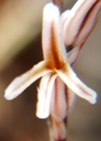





7975 H. floribunda, Rotterdam 1, 7976 H. floribunda, Rotterdam
Subset 6. Outliers and ‘outgroups’.








7248 H. mirabilis, Ballyfar





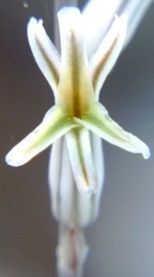
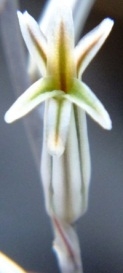
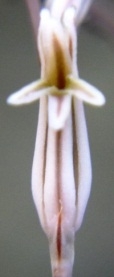
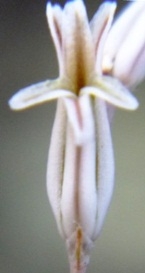
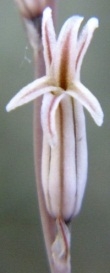

7513 H. mirabilis, Klipfontein, Bromberg












7612 H. mirabilis, Diamant W





7780 H. retusa, Komserante. 7781 H. retusa, Komserante. 7915 H. mirabilis,Van Reenens Crest





7920 H. retusa ‘nigra’, Van Reenens Crest
7974 H. mirabilis (‘floribunda’), Klipfontein, Potberg
7982 H. mirabilis, Goukou



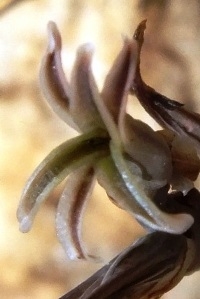
87-132 H. parksiana, Mossel Bay
7937 H. mutica, Spitzkop, Bredasdorp
SET 5B.4- PROFILES
Subset 1. H. mirabilis – Eastern Zone, Riversdale area.

6651 H. mirabilis, SW Riversdale
















7778 H. mirabilis, Komserante









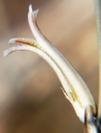

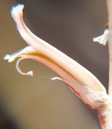

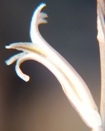













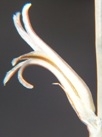









7818 H. mirabilis, Windsor

















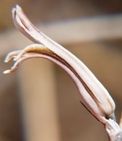




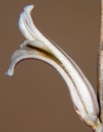








7809 H. mirabilis, Koeisekop.
Subset 2. H. mirabilis – Central Zone, Swellendam area.



7887 H. mirabilis, Rotterdam












7912 H. mirabilis, Rietkuil

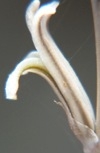
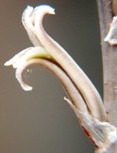







7913 H. mirabilis, Rietkuil

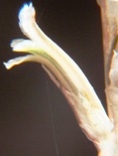









7916 H. mirabilis, Van Reenens Crest. 7917 H. mirabilis, Van Reenens Crest.







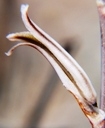









7918 H. mirabilis, Van Reenens Crest


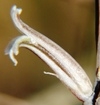













7919 H. mirabilis, Van Reenens Crest







7955 H. mirabilis, Van Reenens Crest














7959 H. mirabilis, Van Reenens Crest





7960 H. mirabilis, Kruiskloof
Subset 3. H. mirabilis – Western Zone, Greyton area.


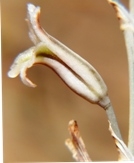
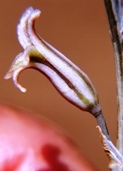
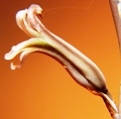
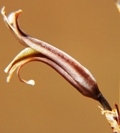
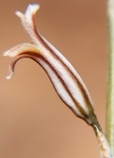

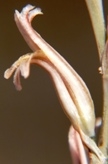


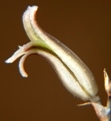



7262 H. mirabilis, S Greyton







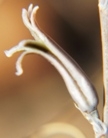

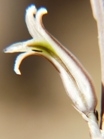

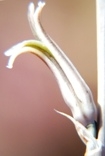







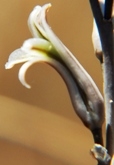





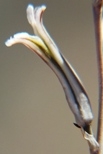

7978 H. mirabilis, Schuitsberg

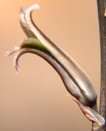


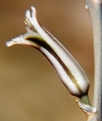

7979 H. mirabilis, Nethercourt







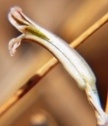


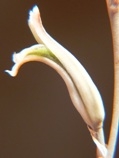

7980 H. mirabilis, E Ouplaas


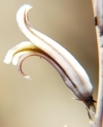
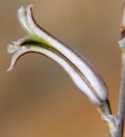








7981 H. mirabilis, Schuitsberg N
Subset 4. H. mutica – Northeastern Zone, Buffeljags area.

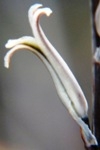

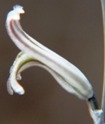












7801 H. mutica, Buffeljags









7888 H. mutica, Rotterdam 1










7888 H. mutica, Rotterdam 2
Subset 5 H. floribunda – Central Zone, Swellendam area
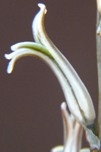





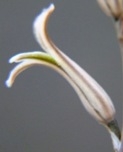
7774 H. floribunda, S Swellendam
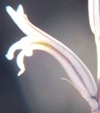















7910 H. floribunda, Rietkuil












7963 H. floribunda, Niekerkshek








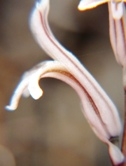


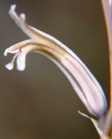


7975 H. floribunda, Rotterdam 1. 7976 H. floribunda, Rotterdam.
Subset 6. Outliers and ‘outgroups’.




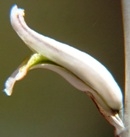

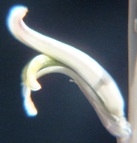

7248 H. mirabilis, Ballyfar






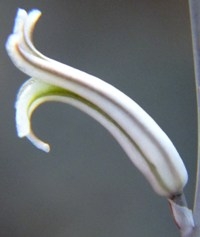
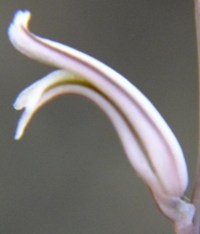
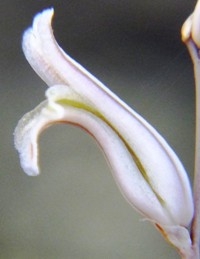
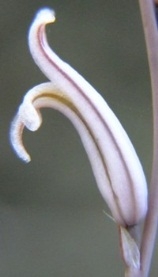
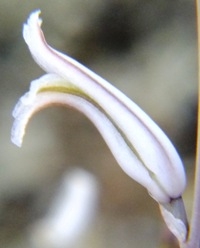
7513 H. mirabilis, Klipfontein, Bromberg

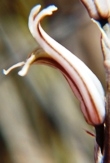
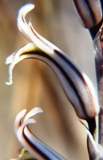


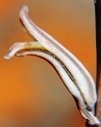



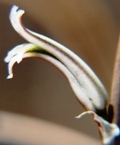
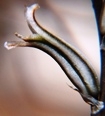
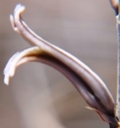
7612 H. mirabilis, Diamant W





7780 H. retusa ‘geraldii’, Komserante
7781 H. retusa ‘foucheii’, Komserante
7915 H. mirabilis, Van Reenens Crest

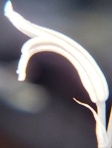



7920 H. retusa ‘nigra’, Van Reenens Crest
7974 H. mirabilis (‘floribunda’), S Klipfontein, Potberg
7982 H. mirabilis, Goukou



JDV87-132 H. parksiana, Mossel Bay
Haworthia flowers – some comments as a character source, part 1
Haworthia flowers – some comments as a character source, part 2
Haworthia flowers – some comments as a character source, part 3
Haworthia flowers – some comments as a character source, part 3
6. THE CAPSULES. Figs 6.1 first size differences that can be found within individual inflorescences. The remaining images show 8 capsules per population for a few populations to show variation in size and shape. The way the capsule ripens and splits is very variable. In some cases the capsule is pinched near the end but the locule tips flare outwards. This has the effect of seeds being retained in the capsule. In others the locules flare regularly and symmetrically from the base and the seed is all easily released. In the Van Reenen Crest populations the capsules were inclined to be a reddish hue. But colour can vary depending on the ripening process and they also bleach with time. Fig.6.4 7978 shows this in capsules drying after the peduncle was taken, and retaining their greenish colour. In H. floribunda the capsules are smaller and it appears that they may flare at the tips more in splitting and be coarsely crispate. This is not always the case but it is a tendency in the smaller capsules to do this. Fig. 6.7 is of capsules in 7910 H. floribunda, Rietkuil; compared against 7913 H. mirabilis also Rietkuil east of Swellendam. It is quite evident that even a capsule structure as apparently characteristic as in H. floribunda, is replicated in a different species. Fig. 6.8 is of 7955 Van Reenens Crest, and 7262 south of Greyton. I thought the capsules of 7955 were smaller, reddish coloured and slightly rougher than those of 7262. But the capsule structure in the entire genus is very similar to those shown on this figure and it is just not conceivable that some feature will stand out and resolve issues that exist in respect of the entire group.


7163 H. mirabilis, S Riversdale. 7809 H. mirabilis, Koeisekop.
Fig. 6.1 Size variation – range 5-12mm.



6651 H. mirabilis, SW Riversdale
7163 H. mirabilis, S Riversdale
7778 H. mirabilis, Komserante
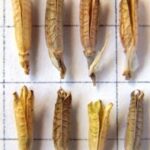

7818 H. mirabilis, Windsor
7809 H. mirabilis, Koeisekop
Fig. 6.2 H. mirabilis – Eastern Zone, Riversdale area.



7913 H. mirabilis, Rietkuil
7919 H. mirabilis, Van Reenens Crest
7959 H. mirabilis, Van Reenens Crest
Fig. 6.3 H. mirabilis – Central Zone, Swellendam area.


7262 H. mirabilis, S Greyton. 7978 H. mirabilis, Schuitsberg
Fig. 6.4 H. mirabilis – Eastern Zone, Greyton area.


L(1) 7888 H. mutica, Rotterdam.7910 H. floribunda, Rietkuil
R(2) 7889 H. mutica, Rotterdam
Fig. 6.5 H. mutica – Buffeljags.Fig. 6.6 H. floribunda – Swellendam.


Above 7910 H. floribunda, Rietkuil. Above 7955 H. mirabilis, Van Reenens Crest
Below 7913 H. mirabilis, Rietkuil. Below 7262 H. mirabilis, S Greyton
Fig. 6.7 Some capsule comparisons.
7. THE SEEDS. Some seeds are illustrated in figures Set 7. Any differences there might be in the seeds will be extremely difficult to quantify or describe. There is clearly some difference in size but to establish this statistically will be difficult. In the set of pictures provided there is clearly no difference in appearance or size coupled with the fact that the shape beyond “angular” and colour “grayish black” is difficult to articulate. What size difference appears here is due to picture magnification. Again I am quite aware that in some populations seeds are indeed larger than in others, but vegetative characters are already enough to distinguish those. Species recognition would only be facilitated if one based the definition of the species on some formula specifying seed size and shape. In the figure, 7983 is the seed of H. minima to show the quite different flattish shape and marginal wings in that subgenus. My impression was that the seed in H. floribunda may be a little chunkier than in the other samples but it just does so happen that in some capsules there are fewer and larger seed than in others.
SET 7 – SEEDS



1 – 6651 H. mirabilis, 1 – 7163 H. mirabilis, 1 – 7778 H. mirabilis



1 – 7809 H. mirabilis, 1 – 7818 H. mirabilis, 2 – 7912 H. mirabilis



2 – 7913 H. mirabilis, 2 – 7919 H. mirabilis, 2 – 7959 H. mirabilis



3 – 7262 H. mirabilis 3 – 7978 H. mirabilis 3 – 7980 H. mirabilis



4 – 7888 H. mutica, 4 – 7889 H. mutica, 5 – 7910 H. floribunda



5 – 7963 H. floribunda, 6 – 7982 H. mirabilis, L.7262 H. mirabilis, R.7955 H. mirabilis


6 – L.7910 H. floribunda, R.7913 H. mirabilis, 7283 H. minima
DISCUSSION AND CONCLUSIONS
While assembling and sorting the data sets I was made painfully aware of how necessary it was to keep tabs on each item. This because the similarities of between structures in very different populations was so close that without label identification, it was not possible to re-sort images into original order. Starting with flowering time that I have not yet mentioned here, as I have been dealing essentially with populations flowering in February. The southwestern Cape species of the subgenus Haworthia flower either in spring or late summer. This is the essential difference between what I regard as H. retusa (sensu lato – in the broad sense to include H. turgida) and H. mirabilis (also sensu lato to include H. magnifica, H. maraisii and H. heidelbergensis). The former set of populations flowers in the spring and the latter in late summer. But the actual time is a bit variable too as I have seen populations of the spring flowerers doing so as early as June and as late as October, while the summer group can flower from November to April. In addition there are odd plants that just flower ‘out of season’ and field hybrids present within populations of the two sets is evidence of this. It is evident from distribution, vegetative appearance and even flowering time that the two species H. retusa and H. mirabilis are parental in the origins of H. pygmaea in the east (Mossel Bay) and H. mutica in the west (Caledon). So the data here really only addresses the issue of H. mirabilis and its internal relationships, and its relationship to H. mutica in the northeastern populations. This is where one population (viz. 7801) is claimed to be a distinct species viz. H. groenewaldii. The one population 7778 H. mirabilis at Komserante obviously judging from the vegetative appearances, is infused with H. retusa. It is instructive then to look at the only two flowers I have of two nearby populations of H. retusa viz. 7780 and 7781 (see subset 6 of set 5a and 5b)
To what extent this data will influence this last mentioned claim is unknown. I simply have not and cannot discuss the floral structures in detail. This is primarily because they are so incredibly variable. I find virtually the same detail in any of the sets of figures I care to consider. What I would say that my data reflects is the interaction and continuities that I maintain are mirrored in the overall physical appearance of the plants. I have never considered 7801 H. mutica, Buffeljags as anything less than new or as anything more than the expected connection between the original H. mutica var. nigra (now H. retusa var. nigra, south of Heidelberg) and true H. mutica from the wider Bredasdorp and Caledon areas. What I did speculate was the possible involvement of H. floribunda given the distribution of that species and its interaction with both H. retusa and H. mirabilis throughout its distribution range.
I am sure this limited data set, illustrates the possible truth of my rationalization of the relationships of the plants considered. I am simply unable to extract any single point by which I can circumscribe even one population. A possible exception may be 7248 H. mirabilis, Ballyfar in which the colour yellow seems to dominate. But I recall my early involvement in Haworthia when I thought I could possibly separate H. mirabilis and H. maraisii on the basis of their flowers; with the latter having smaller and greener flowers. However, I could not do this an observations on more populations suggested to me this was just geographic variation – NOTE – differences may simply be characeristics of a species and not necessariiy denote different species. This may even apply to flowering time.
My conclusion confirms what originally impressed me. Generally flower characters will not resolve the difficulties of species circumscription based on the method, way of thinking, motives and rationale that has prevailed since Haworthia were first observed and described. Flower morphology is supposed to be central to the Linnaean method in view of their significance in the breeding process. At Buffeljags, the geographic centre of my ‘study’ area, there are close populations of H. mutica, H. mirabilis and H. floribunda across a distance of less than 600m. The plants flower synchronously and the same pollinator is present and was observed at virtually all the populations included in the entire study. H. minima and H. marginata also both occur and hybridize there too. I have up to now concluded that H. floribunda is in any case deeply infused to the point of merging into H. mirabilis both south of Heidelberg and around Swellendam. This new information, including a population pictured and reported by J. Duncan of Kirtsenbosch (nearby but within the Bontebok Park), confirms that H. floribunda is definitely interactive with H. mirabilis. My original perception of 7801 H. mutica, Buffeljags, was that it originates in the interbreeding of the three species H. retusa, H. mirabilis and H. floribunda. BUT this is not in the sense of a post speciation event where the three elements have arrived progressively at individuation as species. It is the result of the large-scale and all-encompassing process by which one gene pool has hived off H. retusa and H. mirabilis and these in turn have hived off H. pygmaea and H. mutica. The argument that 7801 H. mutica, Buffeljags is nearer to H. mirabilis than it is to H. retusa has no merit. I have in the Update Volumes explained that H. mutica is very closely allied to H. mirabilis as evident from variants seen in the field. In any case the argument rests on a typological approach where very narrow limits are attached to species names. My concept of species has developed from the plants as I have experienced them in the field, and I have not imposed any predetermined species concept on them. This study gives strength to my argument that species are complex chaotic fractal systems and that this is the model on which classification and nomenclature must be based.
(Note – a method to get more accurate mensuration would be to photograph at fixed focal length, and photographing also a millimeter rule at the same setting as I have done. However, the pictures must then be used unedited and at higher magnification more precise measurements will be attainable).
ACKNOWLEDGEMENT
I would like to thank Lawrence Loucka for his interest in the subject and his comments and advice on the manuscript. Jannie Groenewald also accompanied and assisted me in the field, as did both Lawrence and Kobus Venter. Landowners were generous with permission and I particularly acknowledge Hesphia and Trevennan Barry of Van Reenens Crest, Nelis Swart of Postdal (Kruiskloof), Leanne and Pieter Urschel of Klipfontein, Johannes and Wilmien van Eeden of Windsor, Mathewis Odendaal of Diamant, Mark and Ryno Stander of Komserante, Wimpie and Nelie Jacobs of Koeisekop, S. Smuts of Nethercourt and P.G. Viljoen of Schuitsberg.
References
Bayer, M.B., & Manning, J.C. Rationalization of species names in Haworthia. 2011. Haworthia Update Vol 7, part 4. Alsterworthia.
Daru, B. H., Manning, J.C., Boatwright, J.S., Maurin, O., Maclean, N., Kuzmina, M., & van der Bank, M. 2011. Phylogeny of the subfamily Alooideae (Asphodelaceae): Paraphylly of Aloe and Haworthia and consequences for classification. In ms.
Treutlein, J., Smith, G.F., van Wyk, B.E. & Wink, M. 2003a. Evidence for the polyphyly of Haworthia (Asphodelaceae subfamily Alooideae: Asparagales) inferred from nucleotide sequences of rbcL, atkK, ITS1 and genome fingerprinting with ISSR PCR. Pl.Biol. 5:513-521.
Treutlein, J., Smith, G.F., van Wyk, B.E. & Wink, M. 2003a. Phylogenetic relationships in Asphodelaceae (ubfamily Alooideae) inferred from chloroplast DNA sequences (rbcL, matK) and from genomic finger-printing (ISSR), Taxon 52:193-207.
Rhamdani, S., Barker, N.P. & Cowling, R.M. 2011. Revisiting monophyly in Haworthia Duval (Asphodelaceae): incongruence, hybridization and contemporary speciation. Taxon 60: 1001-1014.
♦
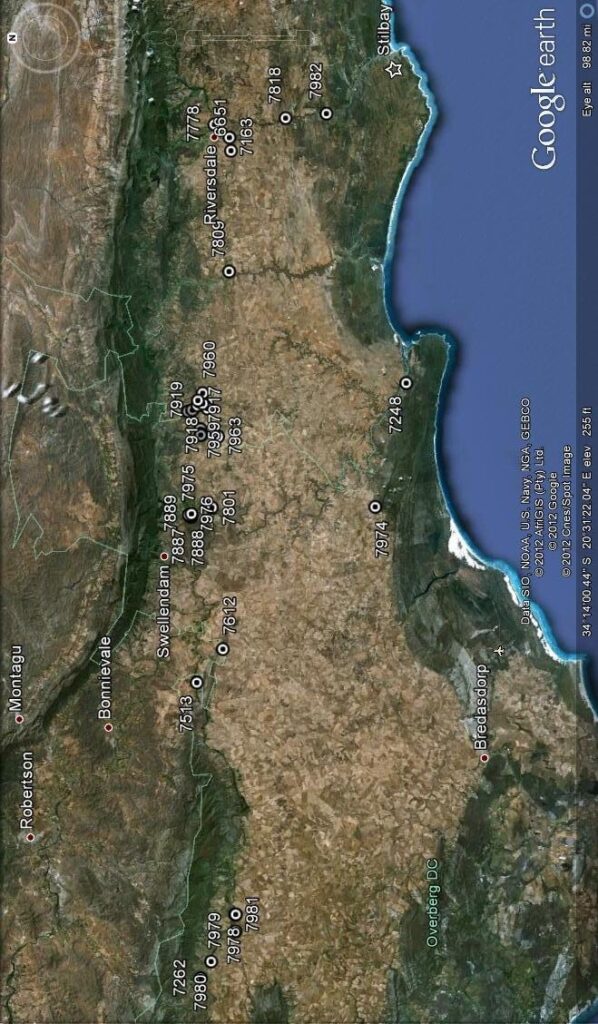
Haworthia flowers – some comments as a character source, Appendices 1, 2, 3
Appendix 1.
Haworthia flowers – some comments as a character source.
I am adding images of flowers from 3 populations of H. mirabilis from the Worcester/Robertson Karoo. These are:
6509 H. mirabilis meiringii, W of Bonnievale
7176 H. mirabilis maraisii, Agter Vink
7279 H. mirabilis meiringii, Edendale, E Bonnievale
(The second epithet should not be taken seriously while the omission of a rank viz. var. is abandoned as is often done in zoology – I take the second epithet loosely to refer to a range of variants with some approximate but vague order).
These are to be seen as outgroups to the main body of the report/essay as show the differences of both size and colour that I once thought separated H. maraisii from H. mirabilis. Further exploration and experience have made me change my mind and I cannot see any way in which H. heidelbergensis, H. magnifica and H. maraisii can be visualized or rationalized as distinct from H. mirabilis. The flowering time for these three populations seems to be later than for the eastern and southern populations, but indeed there are populations in the MacGregor area that flower as early as November. Populations towards Montagu may flower in April. While the flowers in the populations of the main set were in seed at end March, capsules were only forming in these added three populations. A population 1708 north of Ashton was just producing buds when these were flowering as fully as could be expected in a very dry season. The flowers are indeed generally smaller than those observed in the main body but I am not sure if this is statistically certain. The same bee pollinator was observed but not the Bombylid flies. The flowers particularly in 7279 appeared to have been punctured or damaged along the sides of the flower tube as though by an insect (pollinator?) of some kind. Damage to the buds and petal ends was also noted.
I would like to explain and emphasize that I never ignored flowers as a character source and am not presenting them now as a solution to anything. What they do provide is another source of information and digital photography offers a means to capture that. It would be very silly to underestimate the volume of data required and ignore the rigours of statistics if sense and information is to be extracted from such a source. There are already problems in similarity of the flowers in what must surely be very divergent (geographically and vegetatively) species and to expect to then find differences between elements that are otherwise similar is very optimistic if not plain fantasizing. The similarity of the flower of what I named H. pulchella globifera to that of H. cymbiformis(cooperi?) var incurvula never ceases to amaze me. Similarly I could not find differences in the flowers of H. angustifolia, H. monticola, H. chloracantha and H. variegate. Another similarity was an exact copy of a flower of H. mutica and that of H. pygmaea. One aspiring taxonomist has claimed that studying the flowers of the Kaboega population set (all H. cooperi to my mind) will resolve that species issue. I think this is also a fantasy.
1. THE PLANTS.





















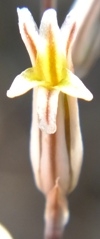









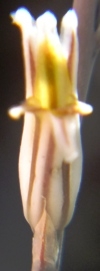







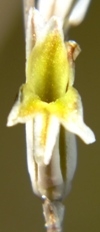



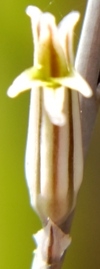




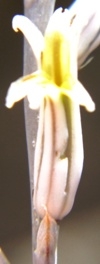


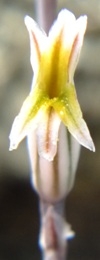


6509 H. mirabilis meiringii, W Bonnievale







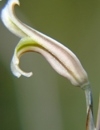

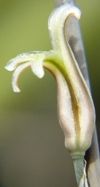


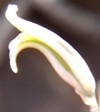
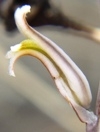



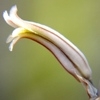

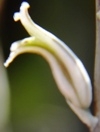
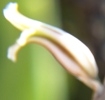







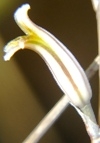
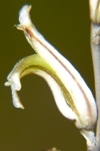

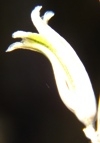

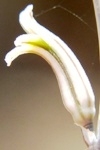
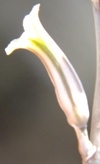

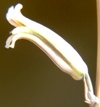
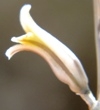
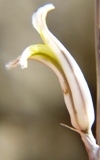

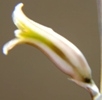
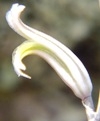
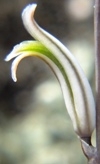
6509 H. mirabilis meiringii, W Bonnievale


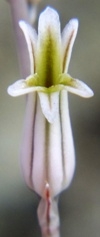
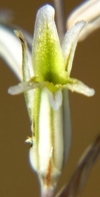
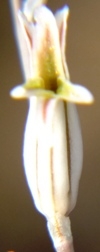
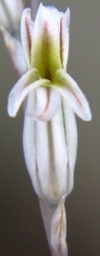
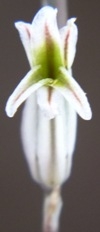

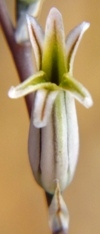
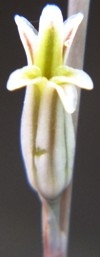

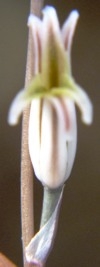
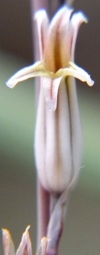
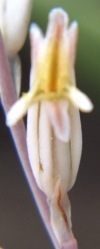
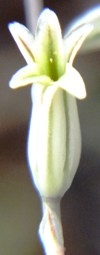
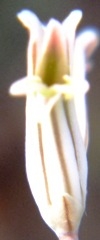

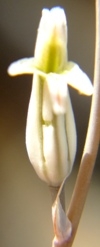


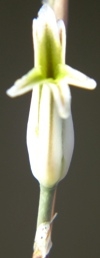


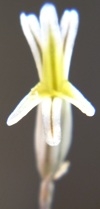
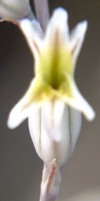

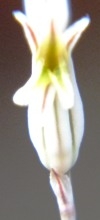

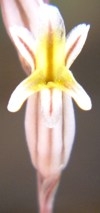
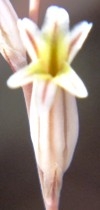
7176 H. mirabilis, Agtervink



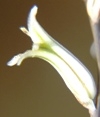

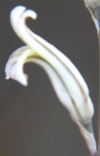
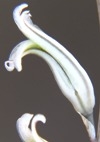
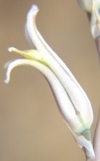
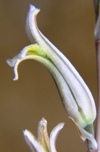
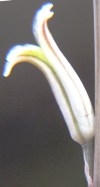


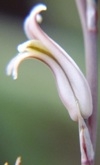

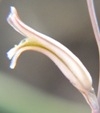
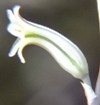
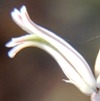
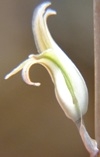
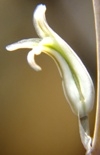
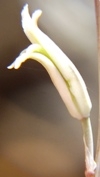
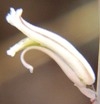

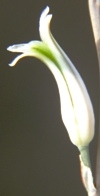
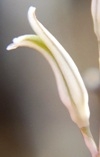



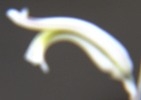
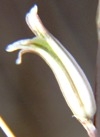

7176 H. mirabilis, Agtervink

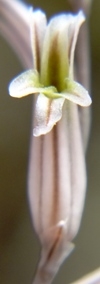
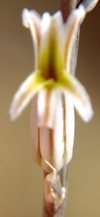
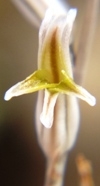
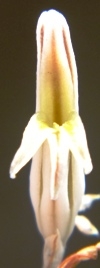
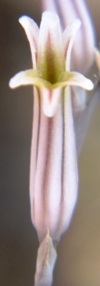
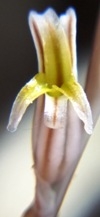
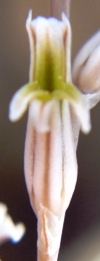
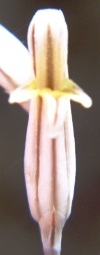

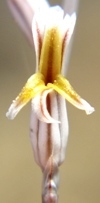



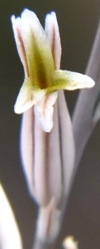
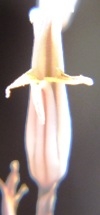
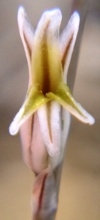
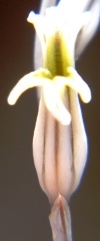

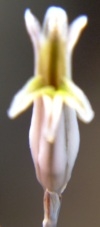
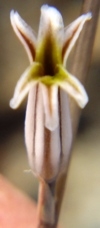




7269 H.mirabilis meiringii, Edendale, Bonnievale
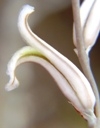


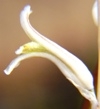

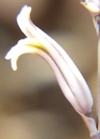
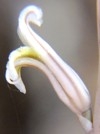
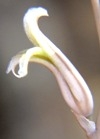
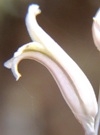
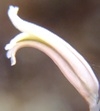
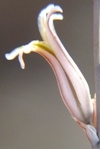
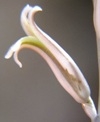


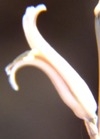
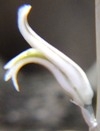
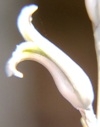
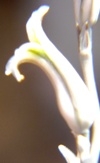
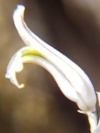
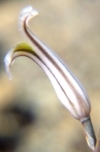
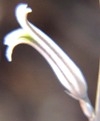
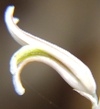
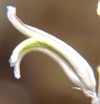
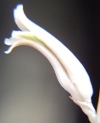
7269 H.mirabilis meiringii, Edendale, Bonnievale
Appendix 2.
This appendix illustrates plants and flowers and buds for the following populations:-
7985 H. mirabilis, Sandberg, S Worcester 6668 H. mirabilis, N Ashton
6672 H. mirabilis, Koningsrivier, Robertson 6875 H. mirabilis, Cogmanskloof
7986 H. mirabilis, E Montagu
Both the Sandberg and Montagu populations flowered very poorly. The Ashton and Cogmanskloof populations are known to be late flowering and I have observed this previously for a Montagu population. The Koningsriver plant is a single clone that I have had for many years.
BUDS:
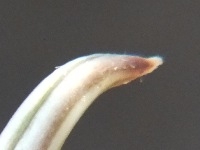
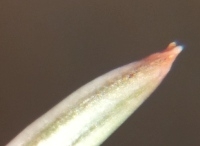

7985 H. mirabilis Sandberg, 6672 H. mirabilis S Worcester Koningsrivier, 7986 H. mirabilis Robertson E Montagu


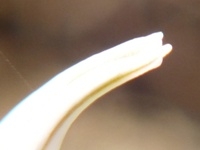
6668 H. mirabilis, N Ashton 6875 H. mirabilis, Cogmanskloof
PLANTS:

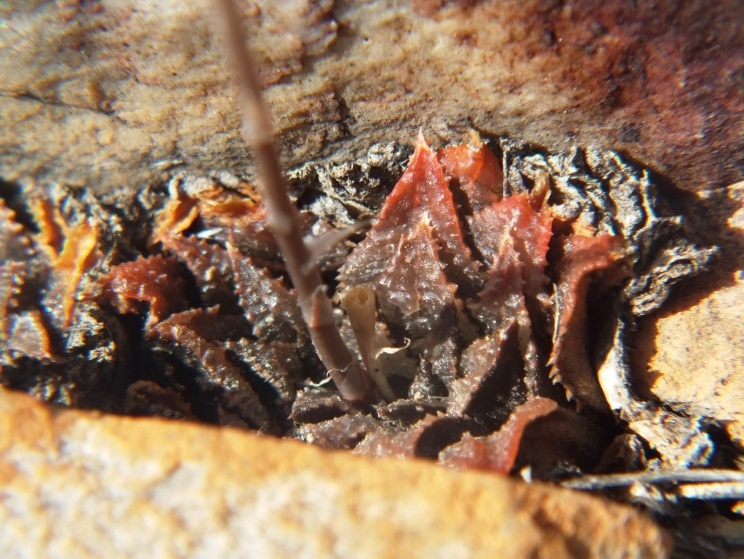
7985 H. mirabilis, Sandberg, S Worcester
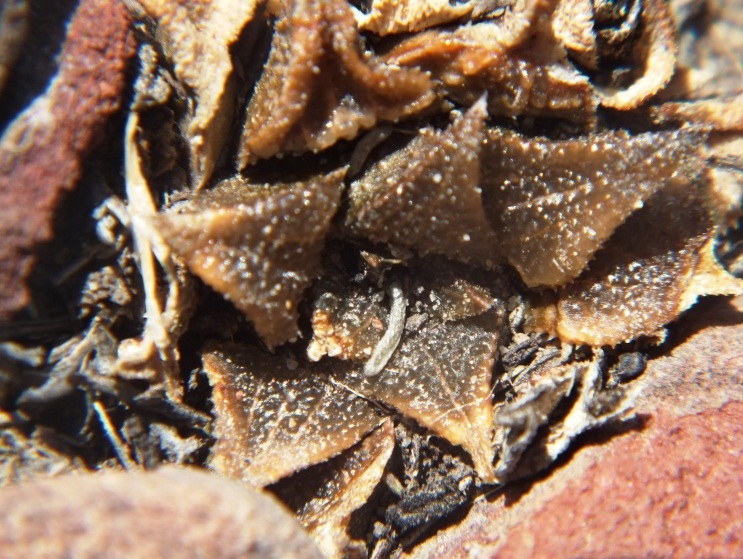
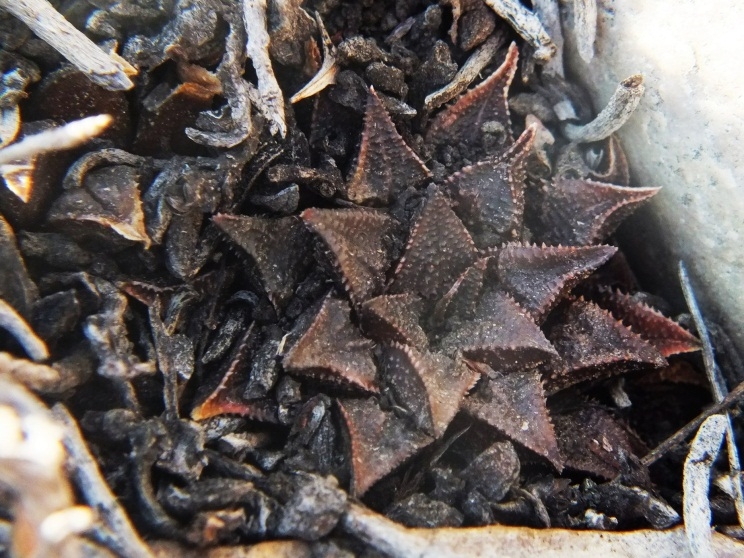
7985 H. mirabilis, Sandberg, S Worcester

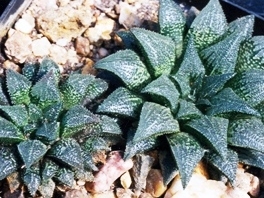
6672 H. mirabilis, Koningsrivier, Robertson
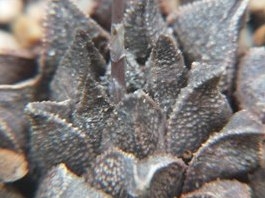
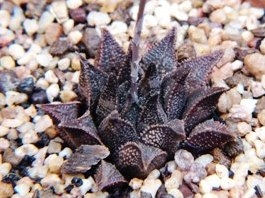
6672 H. mirabilis, Koningsrivier, Robertson


7986 H. mirabilis, E Montagu
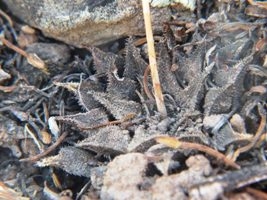

7986 H. mirabilis, E Montagu

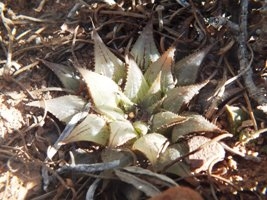
6668 H. mirabilis, N Ashton
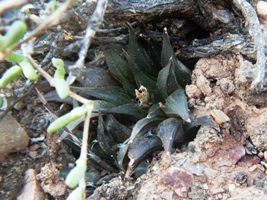
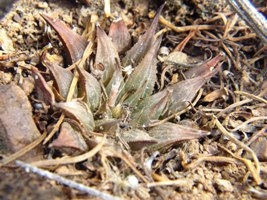
6668 H. mirabilis, N Ashton


6875 H. mirabilis, Cogmanskloof
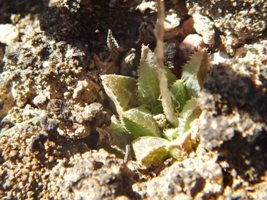
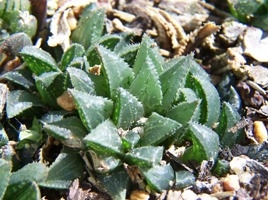
6875 H. mirabilis, Cogmanskloof
Appendix 3.
5b.1 7910a, 5b.1 7910b – H. floribunda, Niekerkshek – size comparisons
5b.2 7980a, 5b.2 7980a – H. mirabilis, S. Greyton – size comparisons
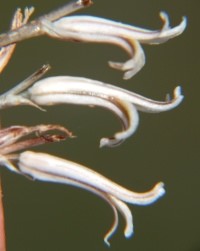

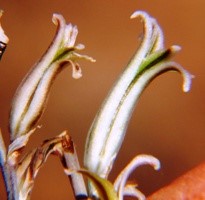
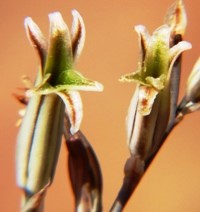
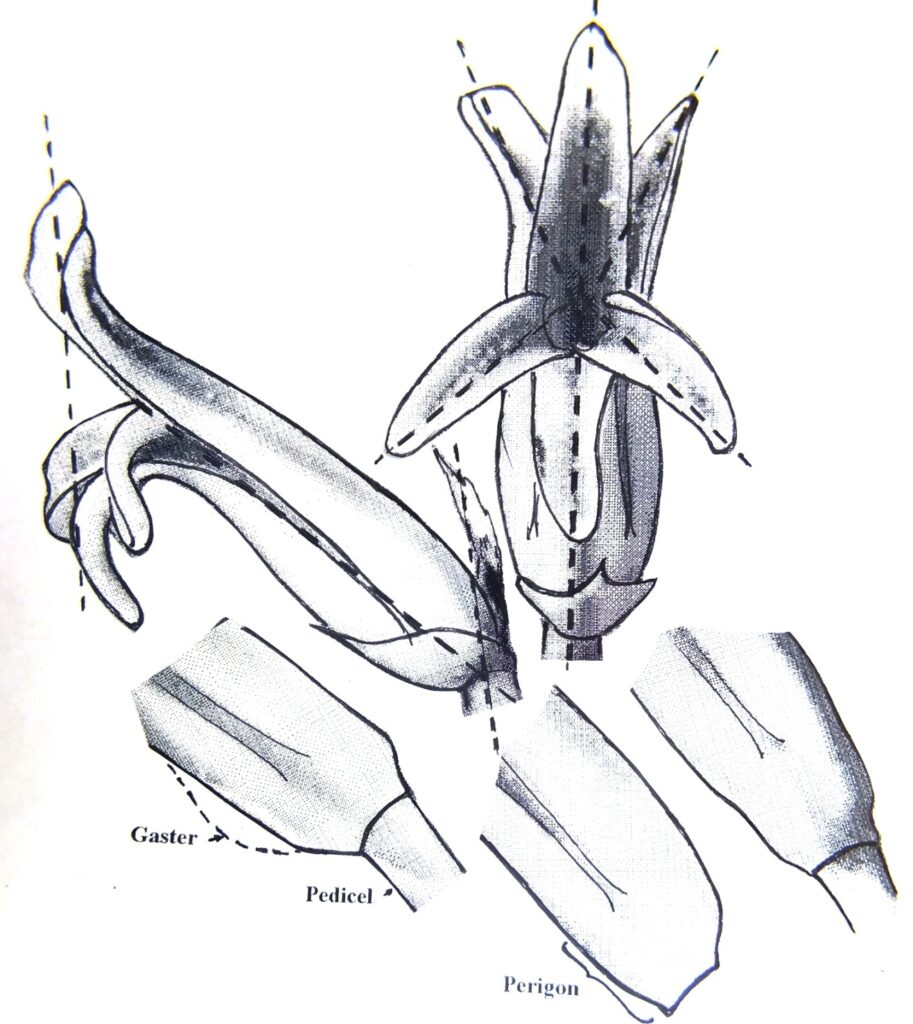
Diagram of flower to show face and profile. The base of the tube is how they can vary in one population. The perigon may narrow gradually stipe-like to the pedicel, or abruptly. The tube may have a pronounced gaster as in Gasteria or the profile may be smoothly curved with no broadening beyond the perigon. The outer leaf margins may meet or be separated to expose the inner midribs. The basal separation of the petals may be quite deeply indented or relatively even.
The dotted lines are suggested as base lines for possible mensuration and computer modeling. ♦
Haworthia flowers – some comments as a character source, part 1
Haworthia flowers – some comments as a character source, part 2
Haworthia flowers – some comments as a character source, part 3
Haworthia flowers – some comments as a character source, Appendix 4
No conclusion is written to this appendix. It is evident to me that there just is no way for me to generate a composite picture for each set of flowers by which one can adequately compare. In general the summer flowering cf. H. retusa set have flowers that are correspondingly lighter coloured than those of the darker flower of the correspondingly darker H. mirabilis set. While gathering the plant pictures from files it struck me how similar plants are from quite different sets across both groups and persuading me that H. retusa and H. mirabilis are in fact one integral system and H. mutica and H. pygamea are western and eastern offshoots.
Acknowledgement
I must again appreciate the kindness and helpfulness of landowners in allowing access. Neels and Suzanne Smit of Volmoed; Hector Odendaal of Dankbaar; Jon and Cindy Webber of Klipport; Tom,Trevennan and Hesphia Barry of Van Reenens Crest, and Coetzee and Surieta Uys of Morning Star. The present owner of the Bromberg site could not be established. The other plants photographed are not field plants and neither can they be seen as any more than flowers of one or few cultivated specimens with provenance already acknowledged.
The following additional populations and plants were observed:-
1. MBB7954 H. mutica, Volmoed.
2. MBB6512 H. mutica, Klipport.
3. MBB7741 H. mutica, Dankbaar.
4. & 5. MBB7920 and MBB7921 H. retusa (nigra), Van Reenens Crest.
6. MBB7803 H. rossouwii, Morning Star, S. Heidelberg.
In addition I include pictures from plants in cultivation:-
7. MBB7758 H. retusa, Skietbaan, S Riversdale.
8. MBB7780 H. retusa (geraldii), Komserante, E Riversdale.
9. MBB7781 H. retusa (foucheii), Komserante, E Riversdale.
10. MBB7776 H. retusa, Pienaarsrivier, W. Riversdale.
11. MBB6747 H. pygmaea, Vleesbaai.
12. MBB33 H. comptoniana, Georgida.
[ed.] MBB33 doesn’t exist in Bayer’s Accession, correct reference is most likely KG114/72
The population H. rossouwii (elizeae) at Bromberg, Stormsvlei was visited but the plants were only in very early bud.
The Heidelberg H. rossouwii is a small solitary plant and only known to me from two populations. H. rossouwii (elizeae) is also small, proliferous and very problematic. It is so far only known to me as one very restricted population. I doubt if the eastern end of the Riviersonderend Mountains have ever been adequately explored to exclude it from there. Even the Bromberg alone could yield more populations.
- MBB7954 H. mutica, Volmoed.

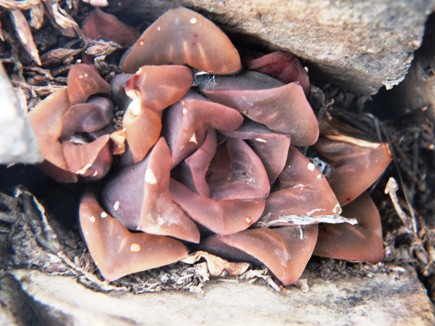
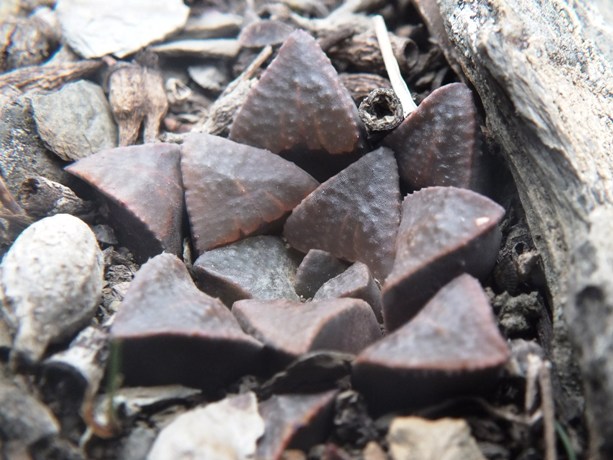


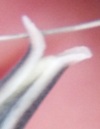
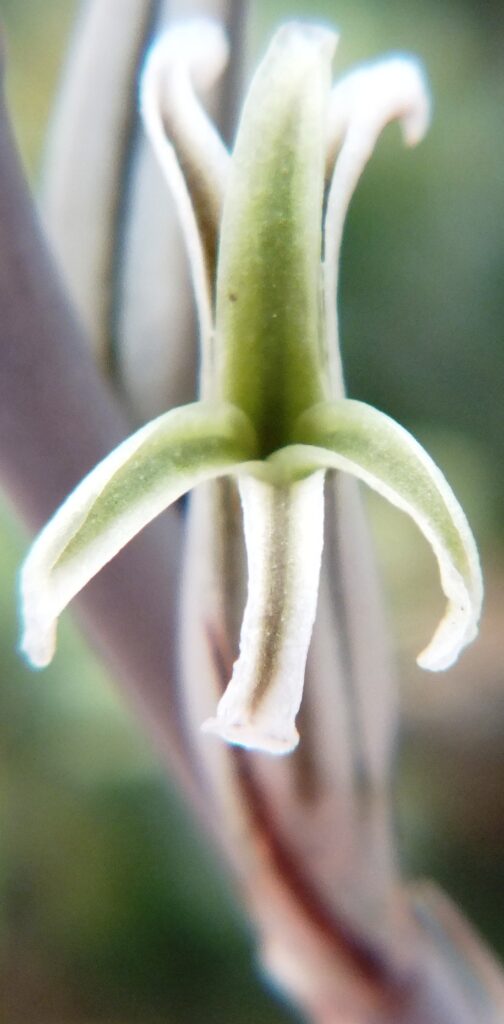

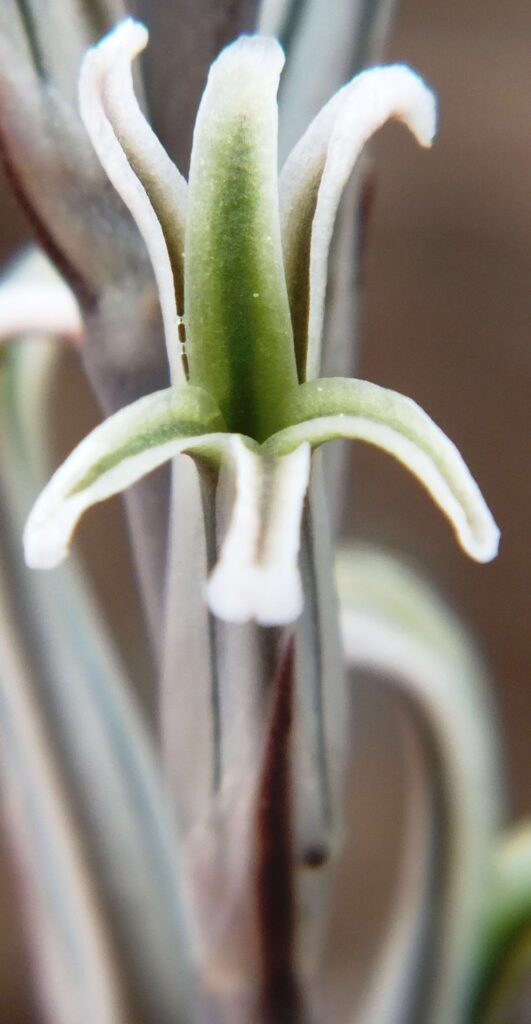
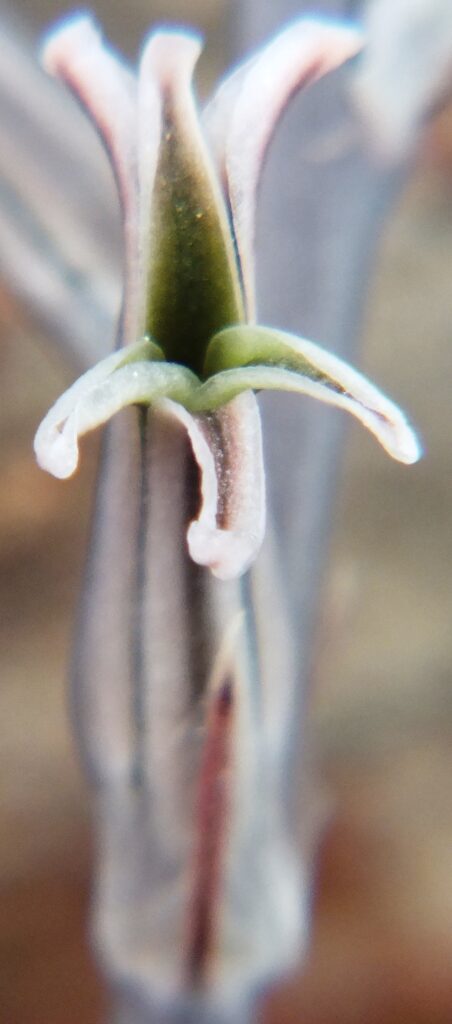

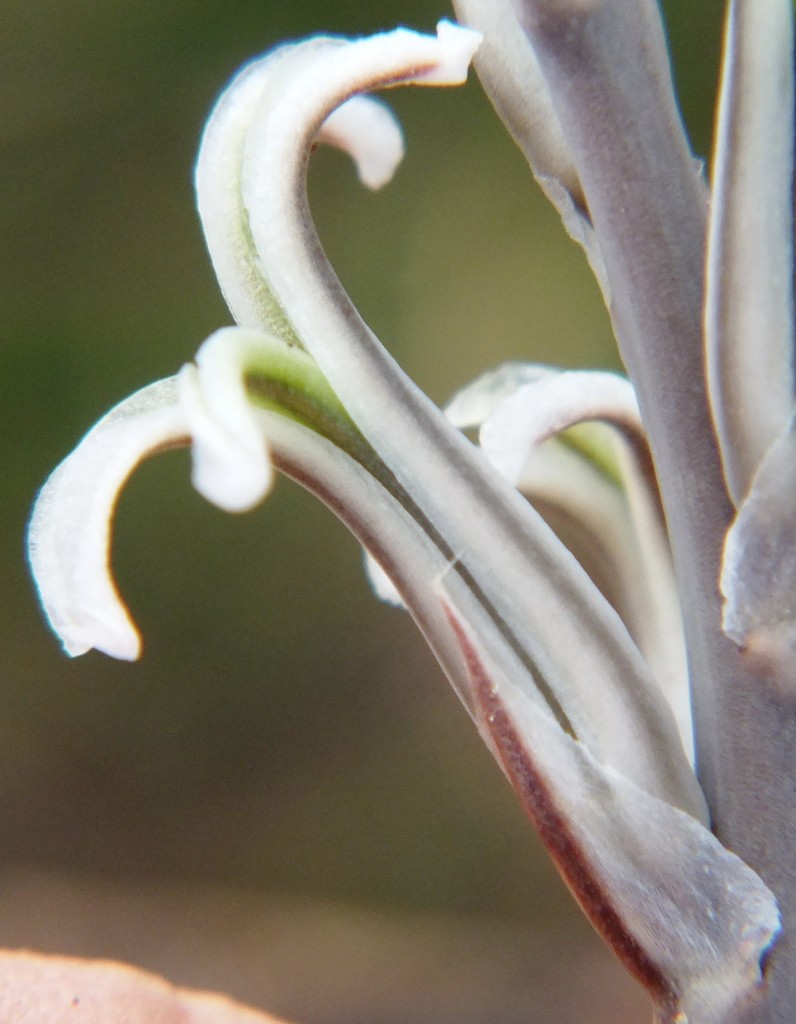


2. MBB6512 H. mutica, Klipport.
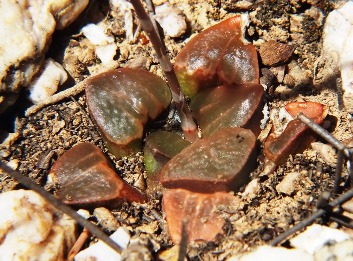
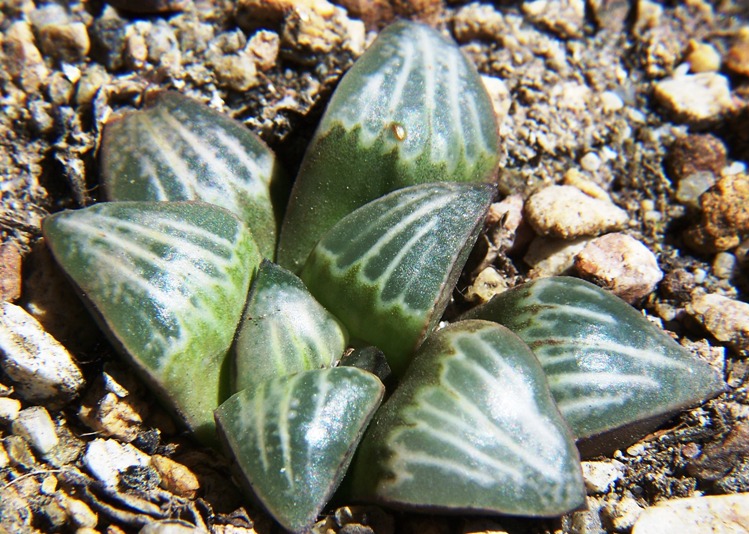

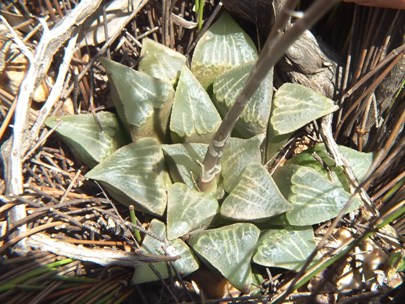
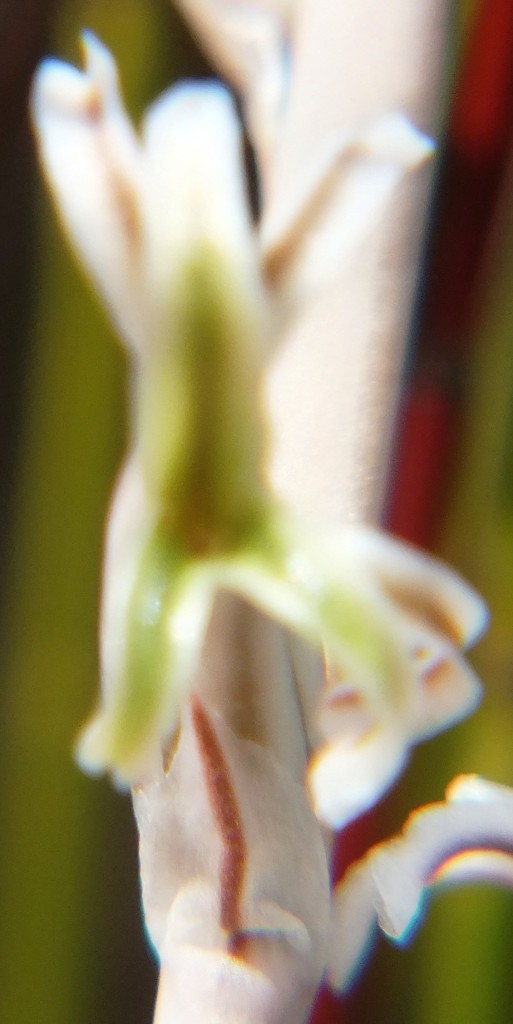

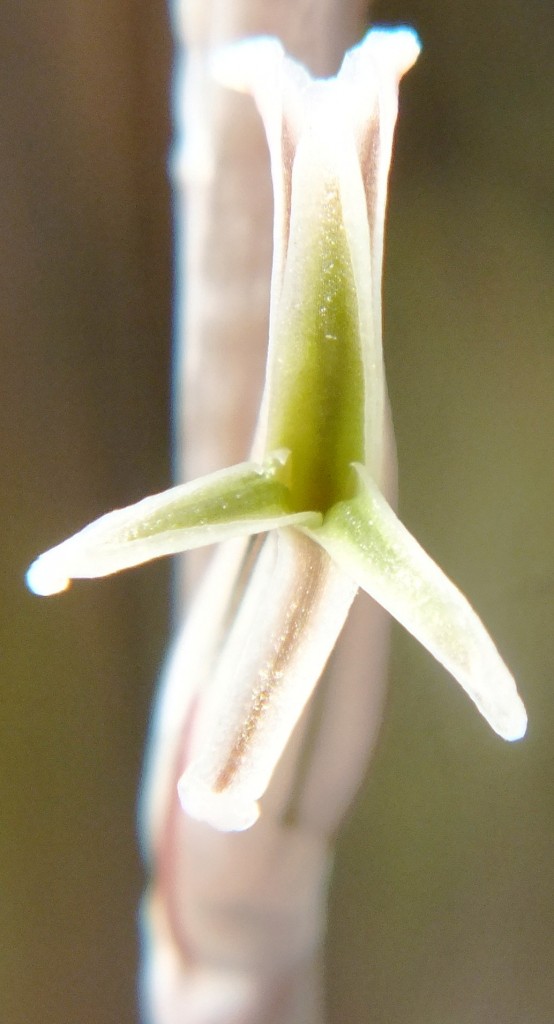
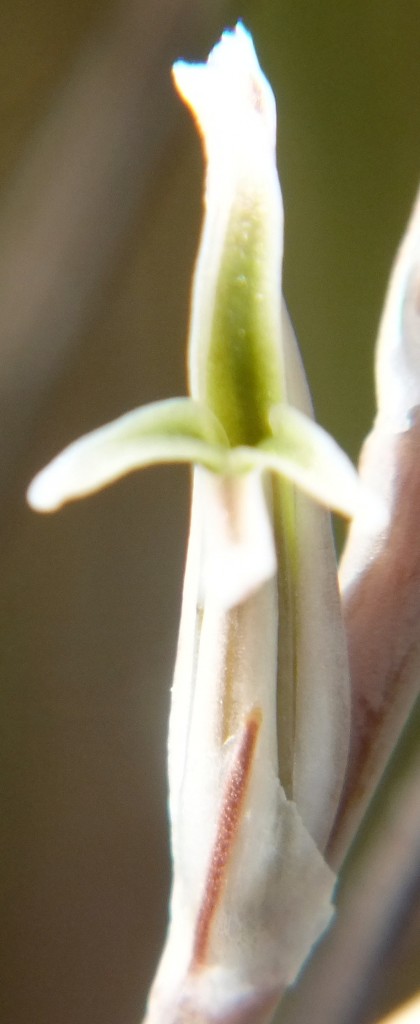
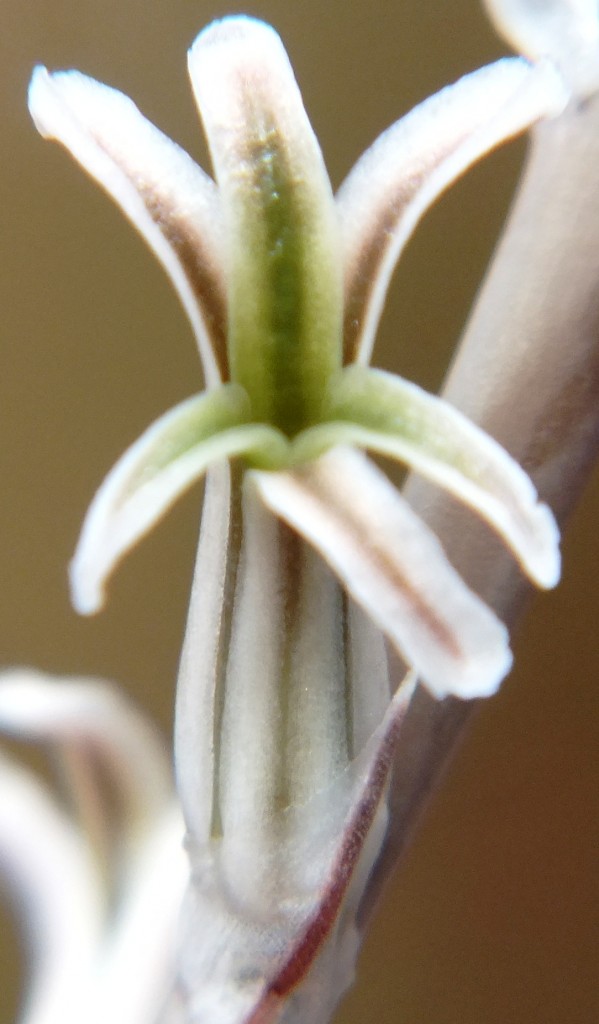

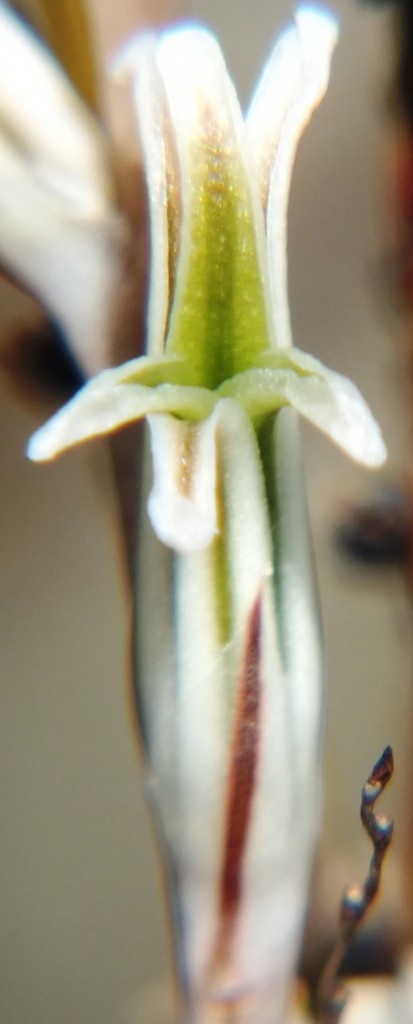
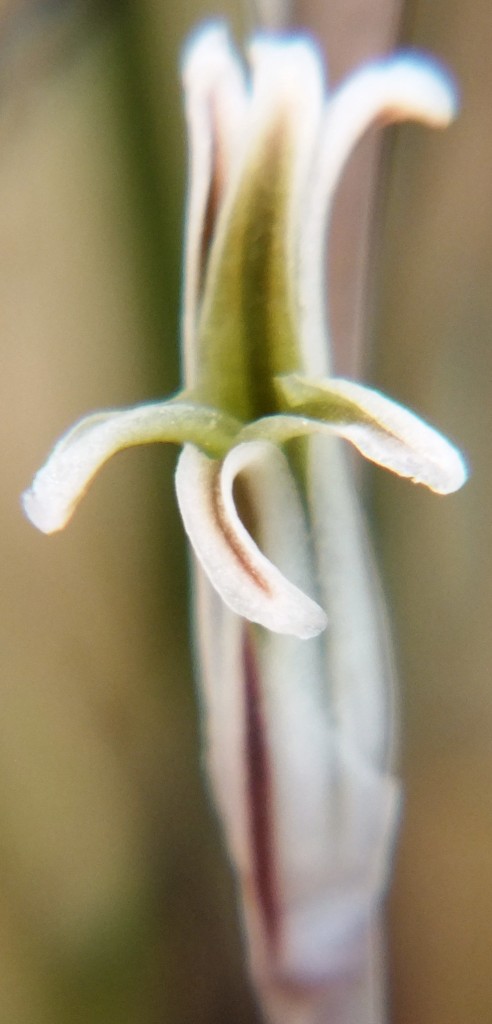
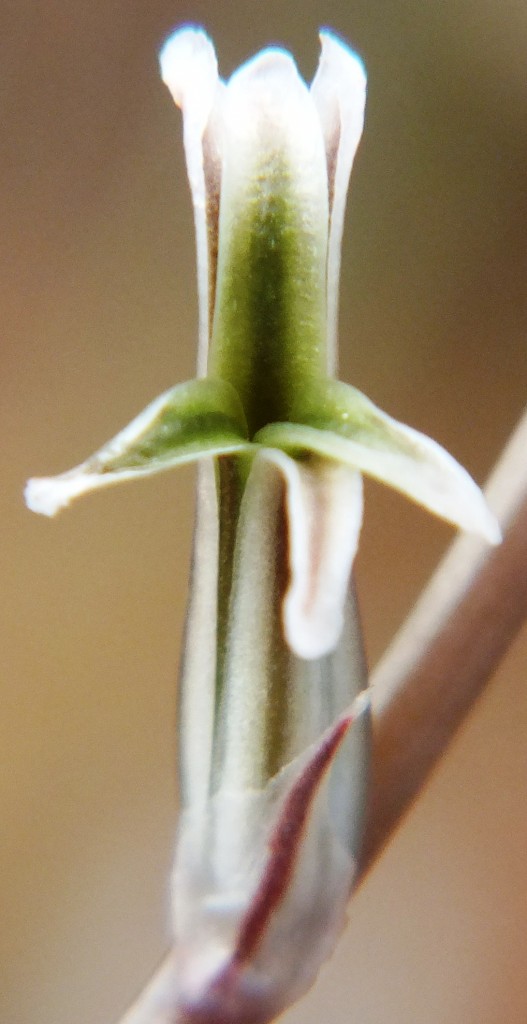
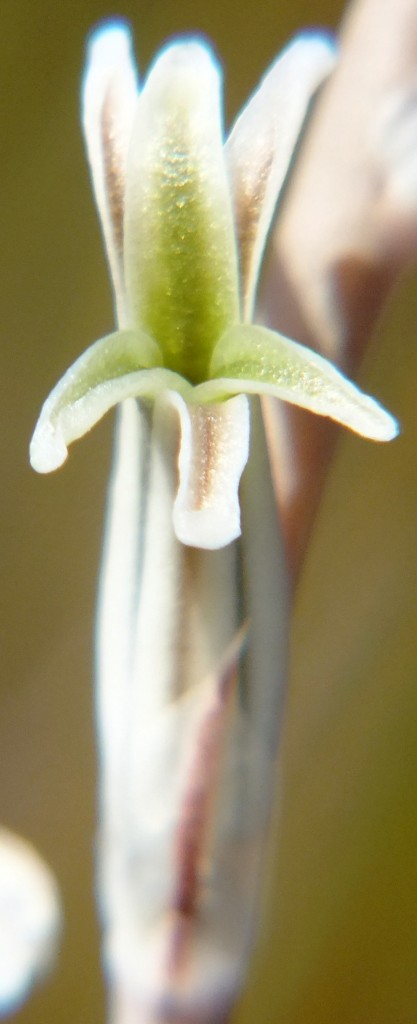
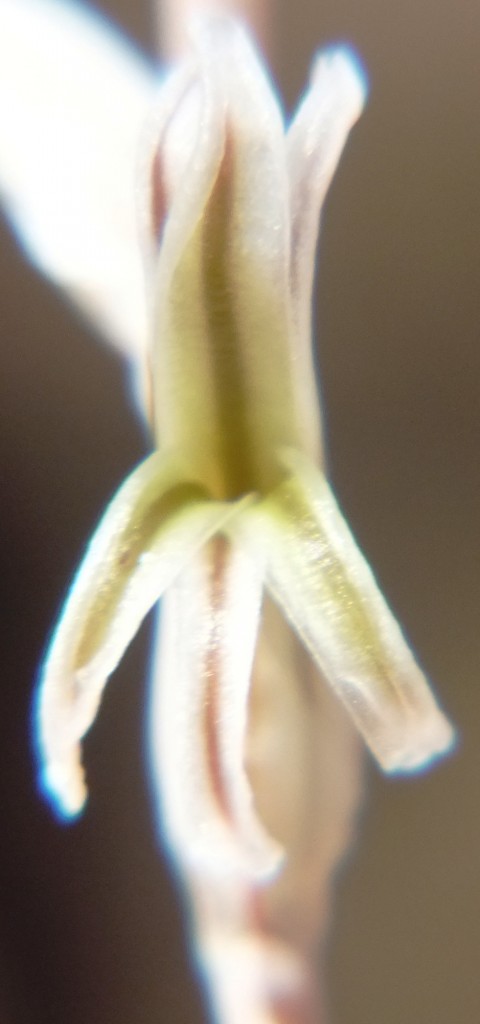
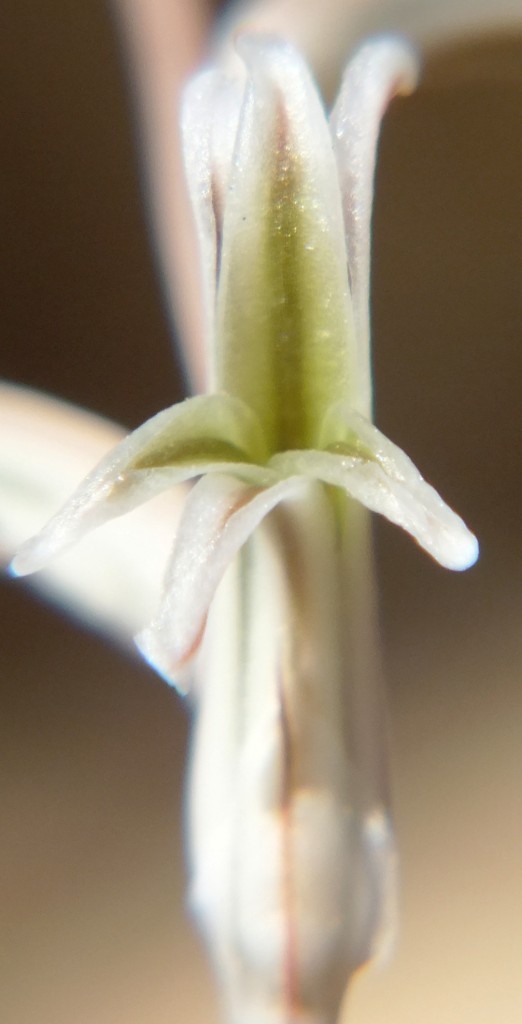
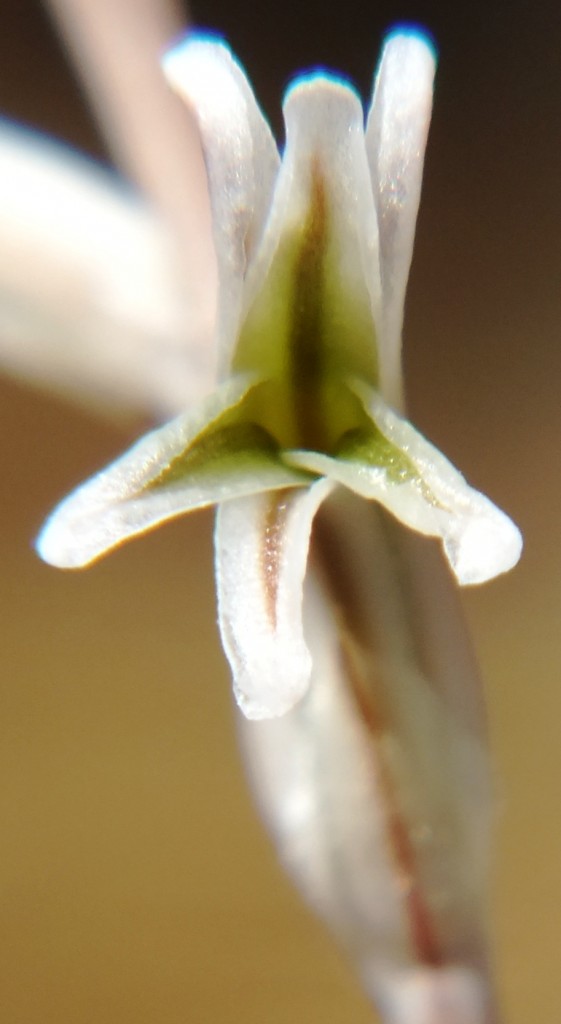

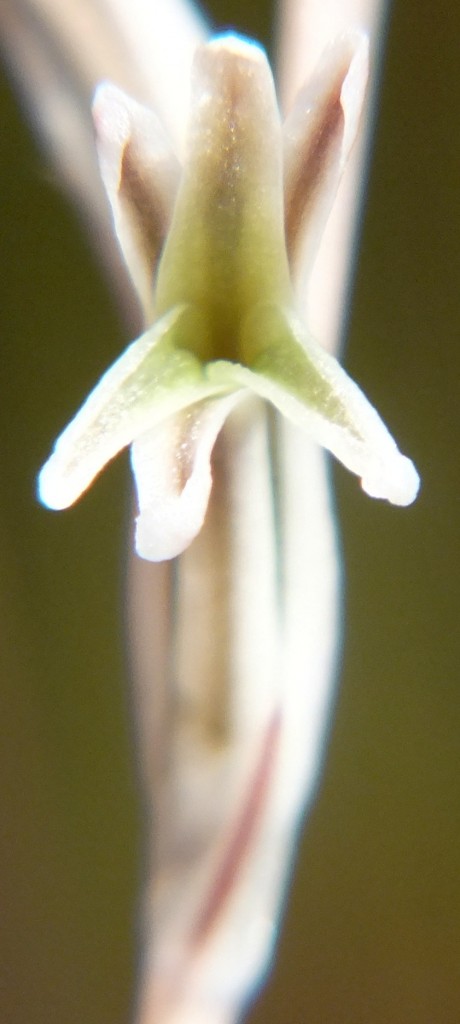


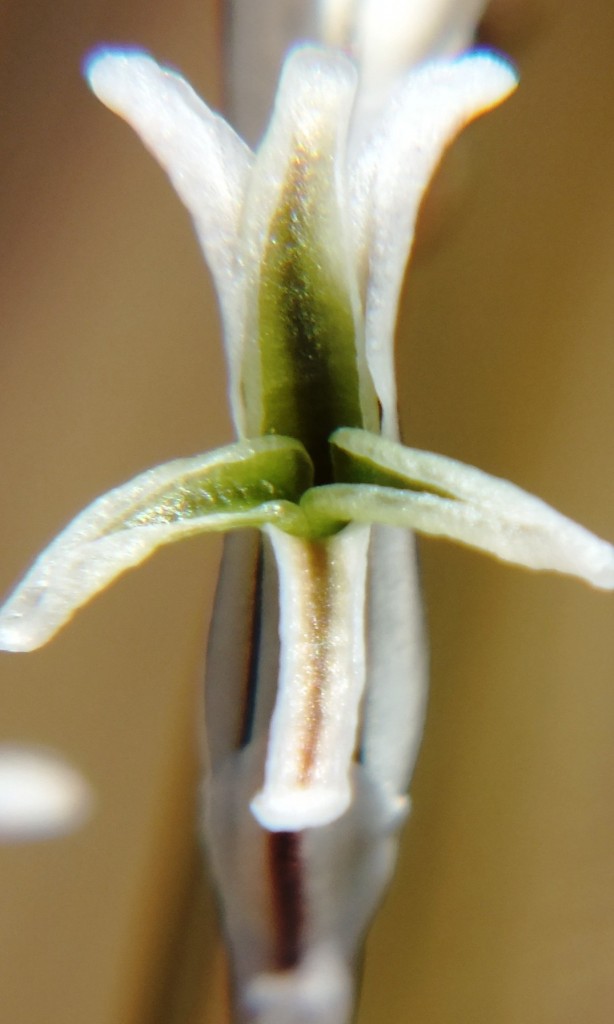

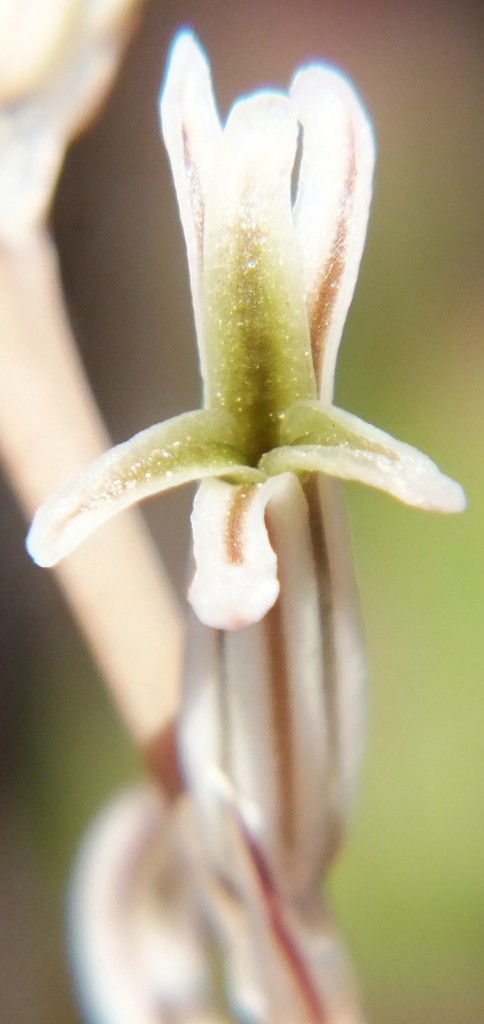
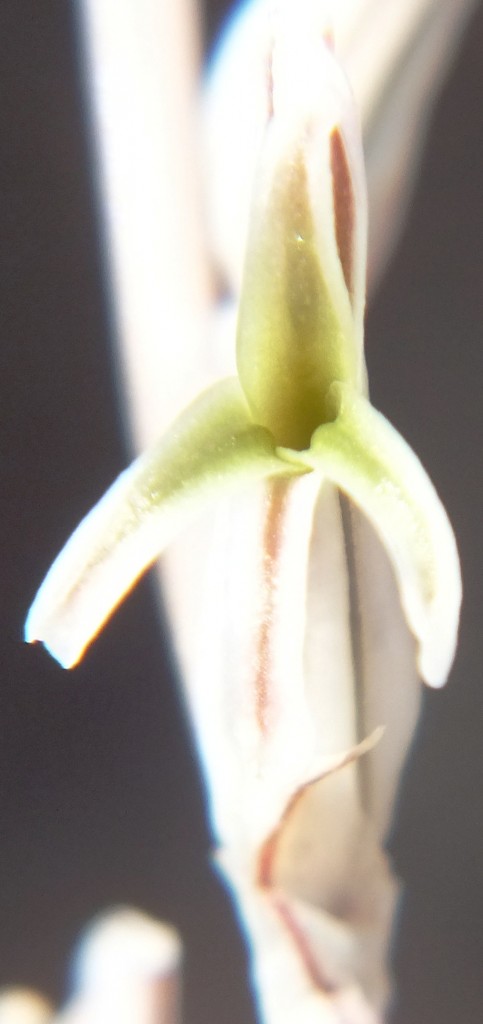
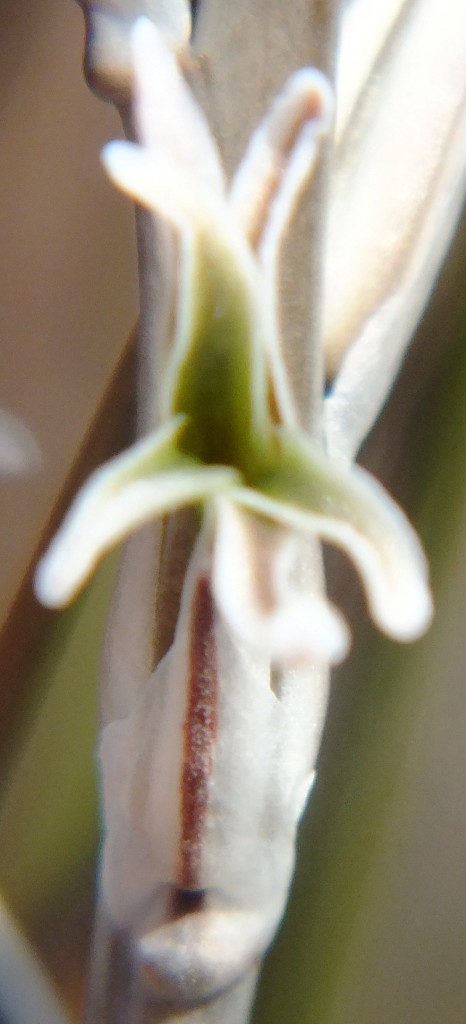

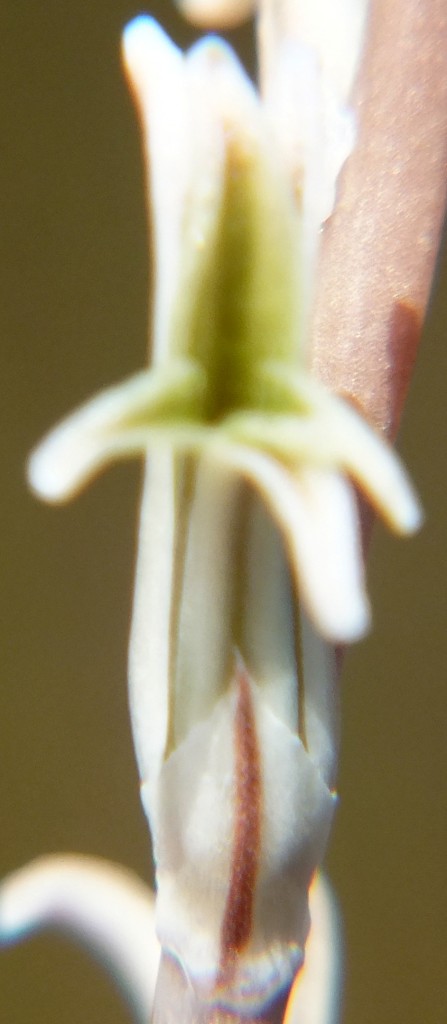

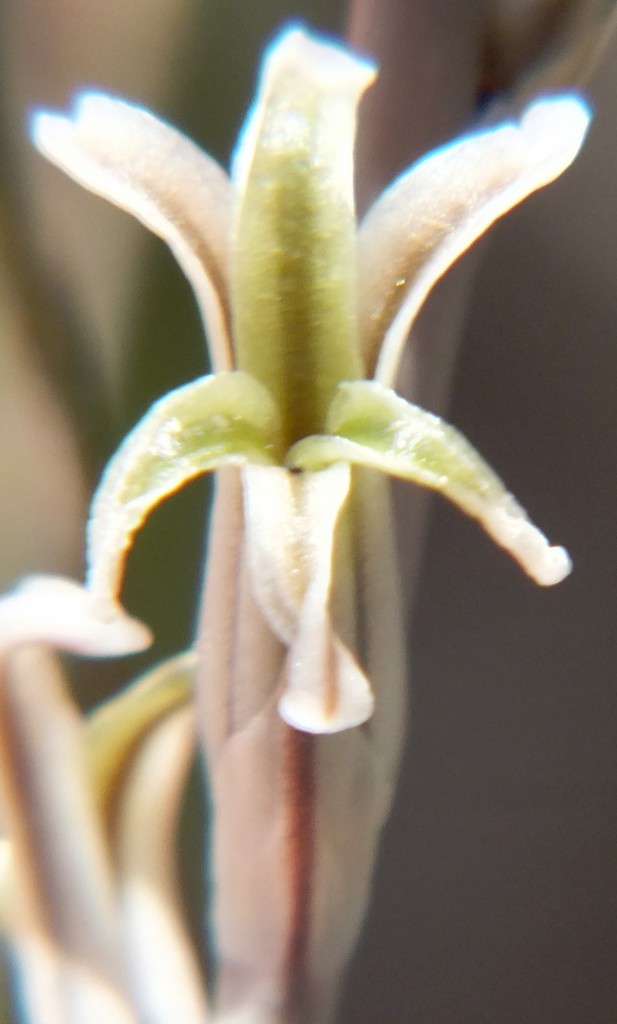

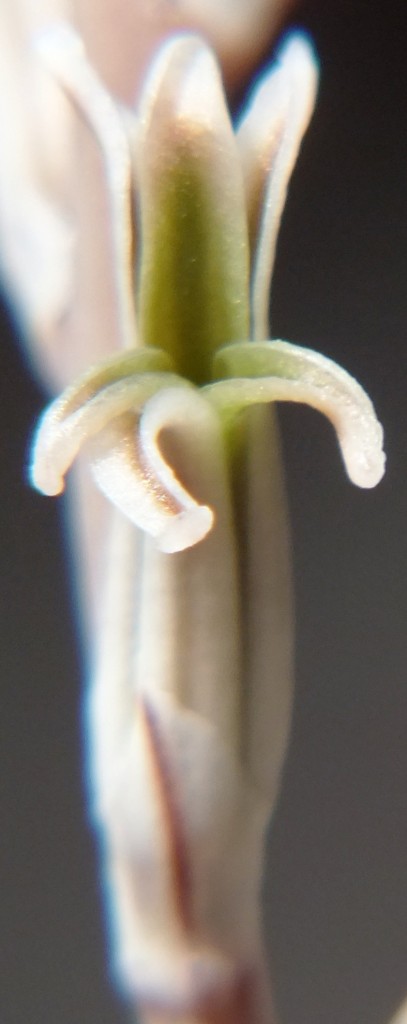

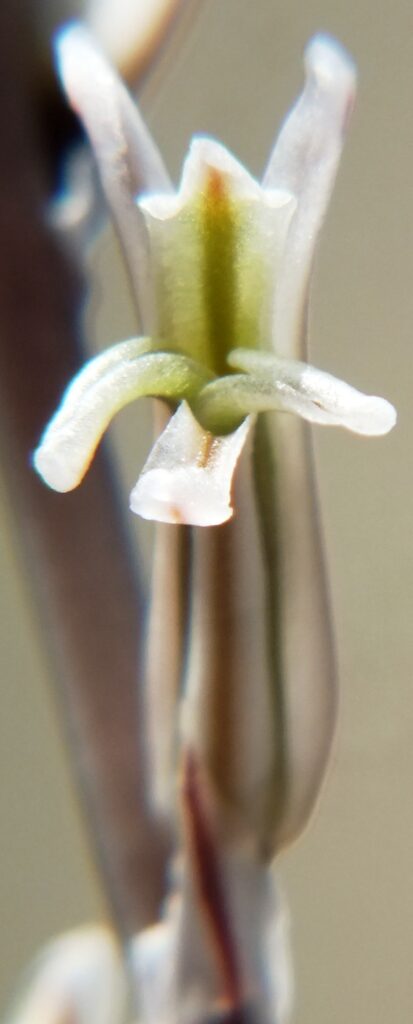
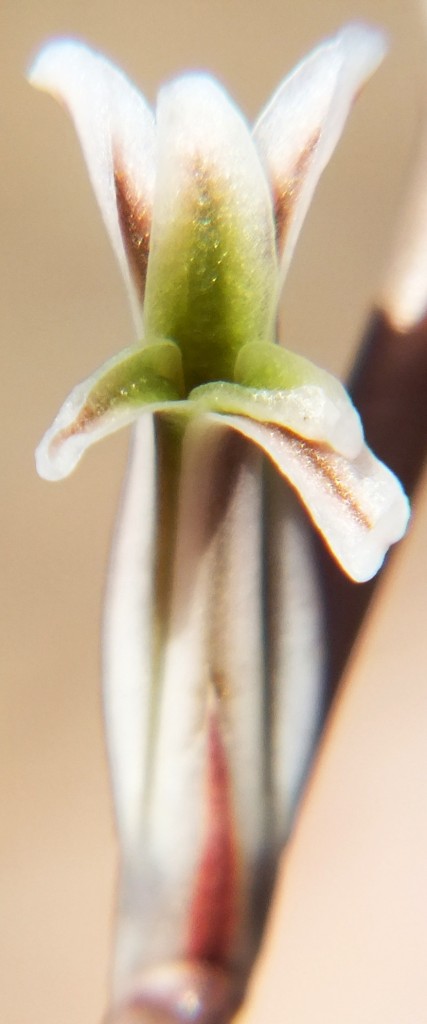
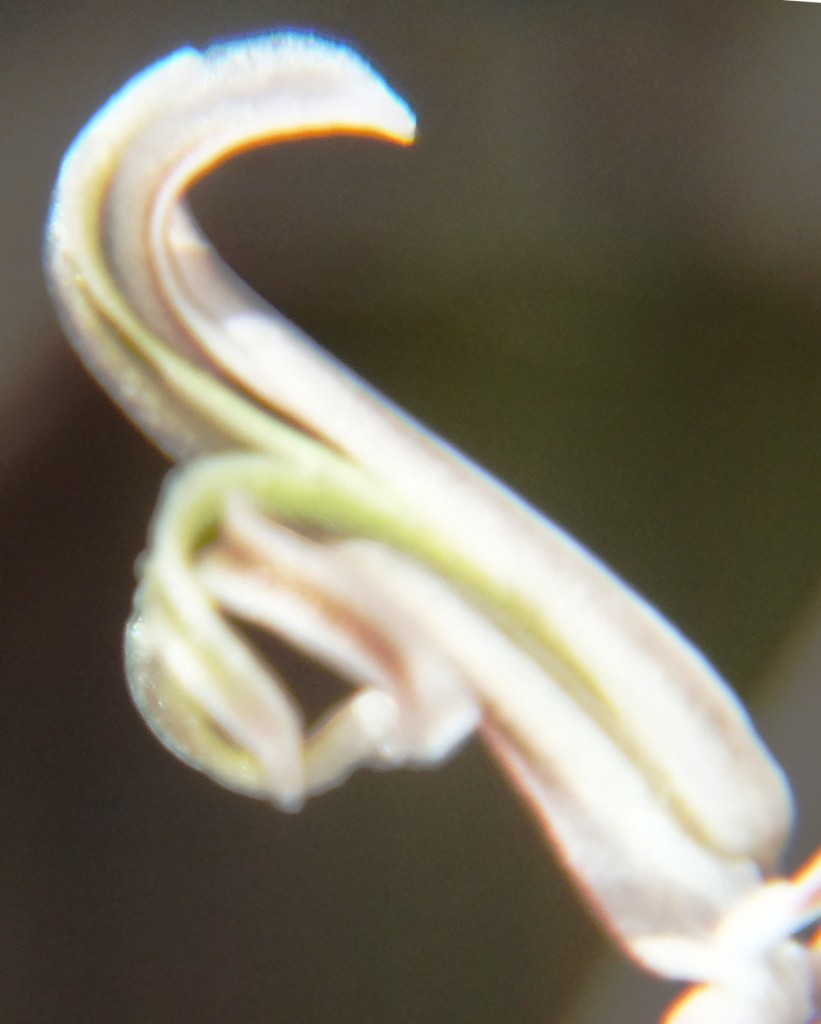
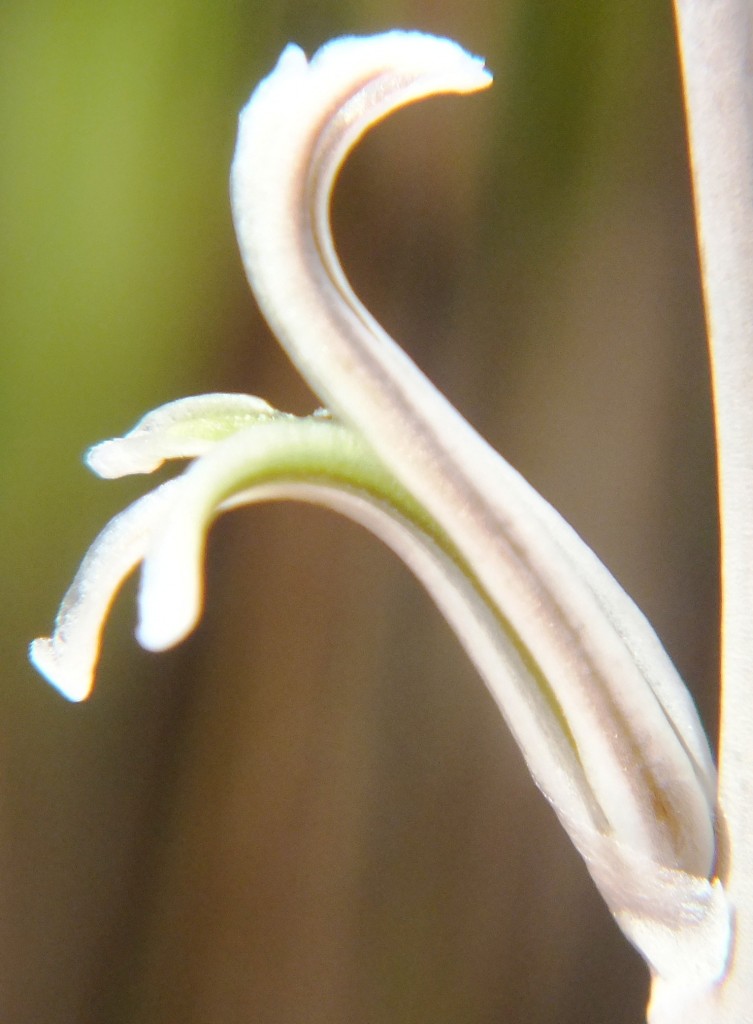
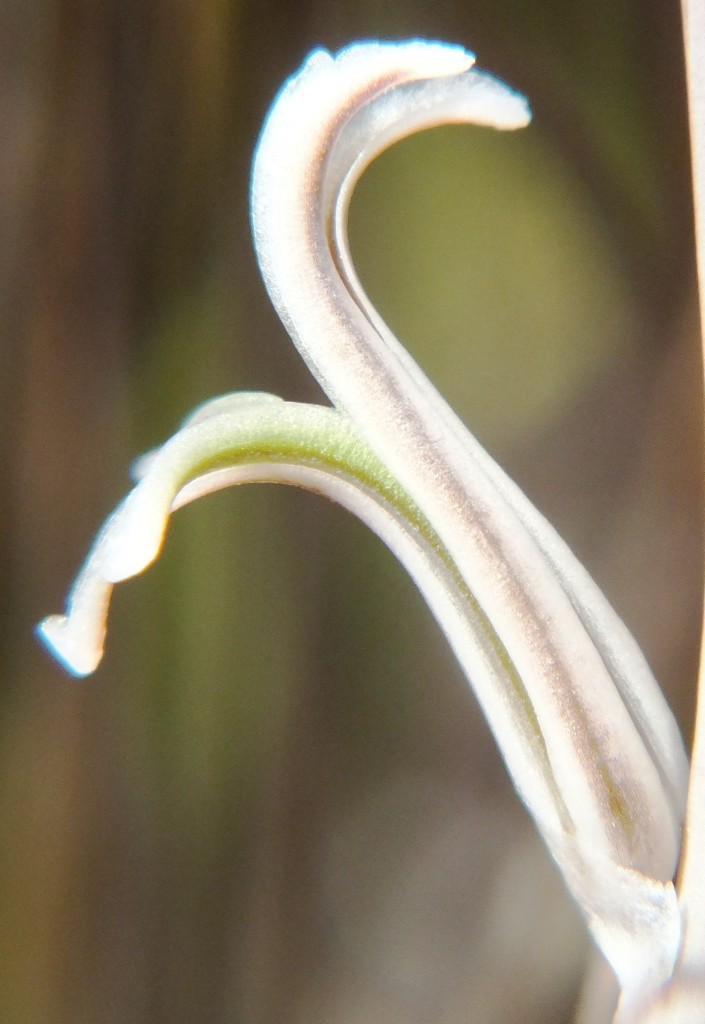
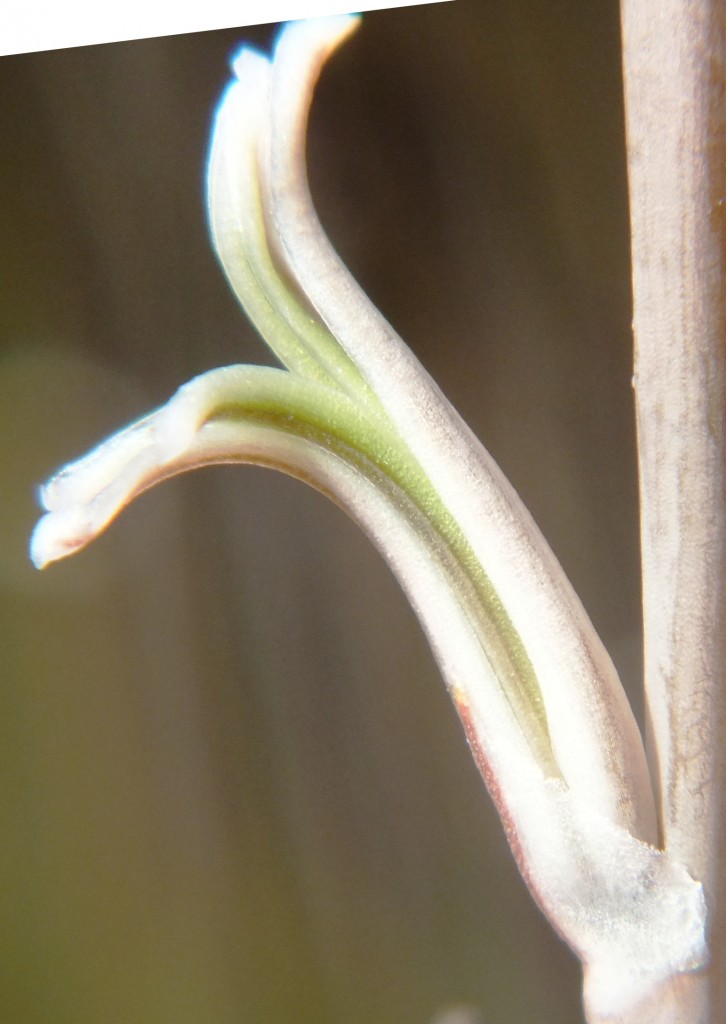
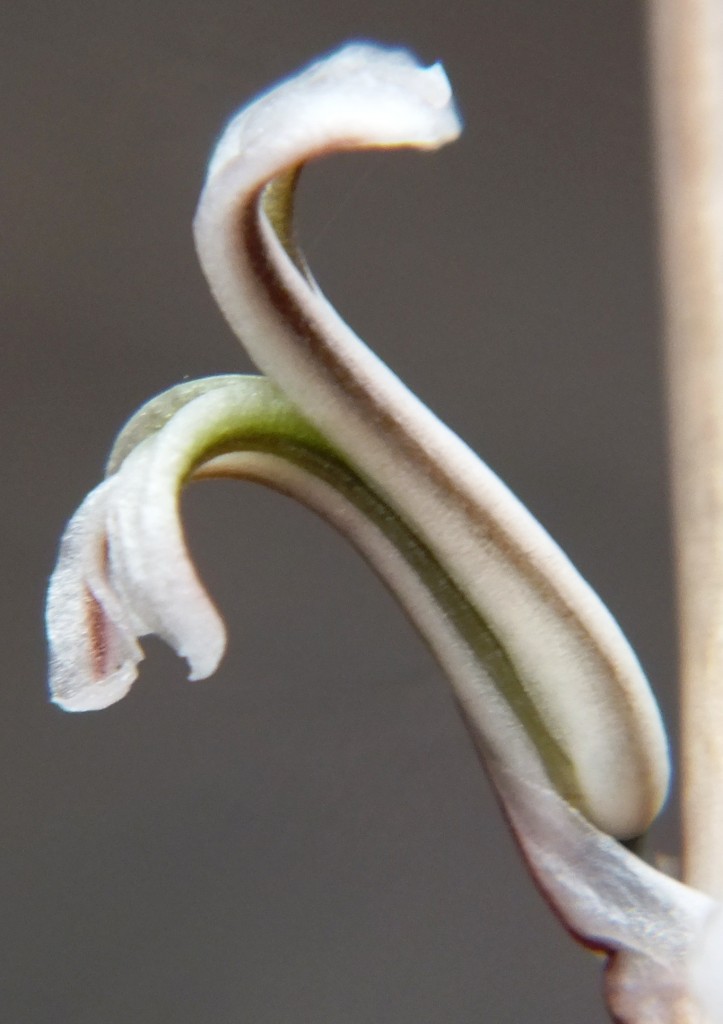
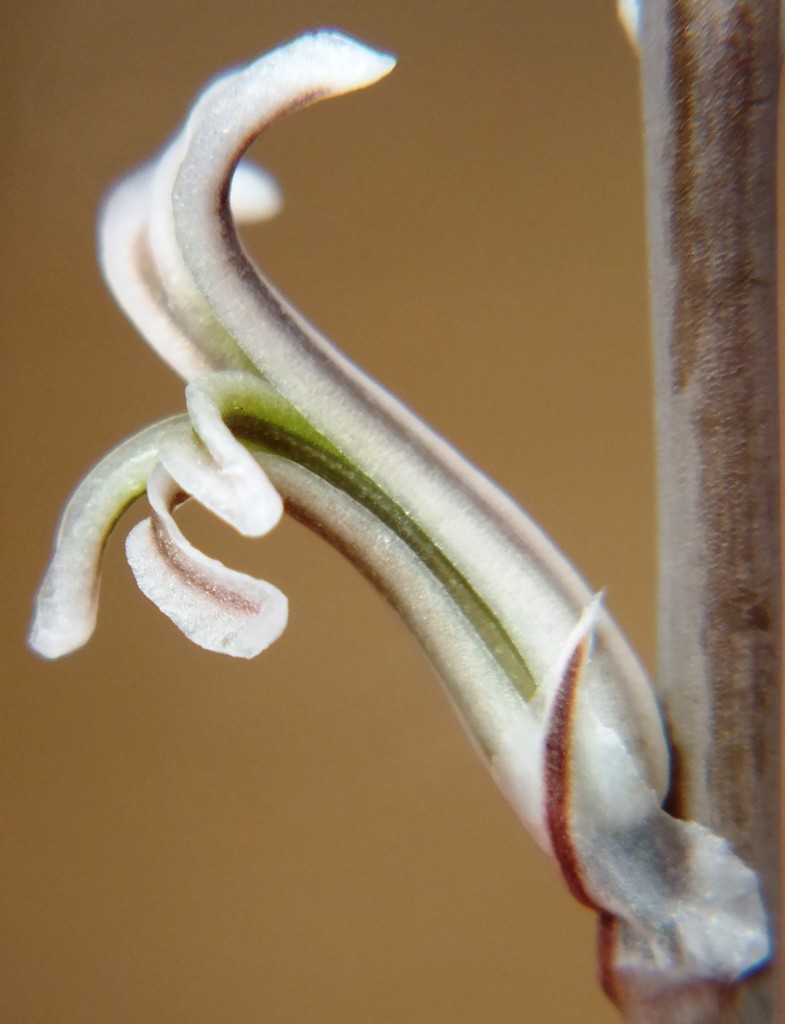
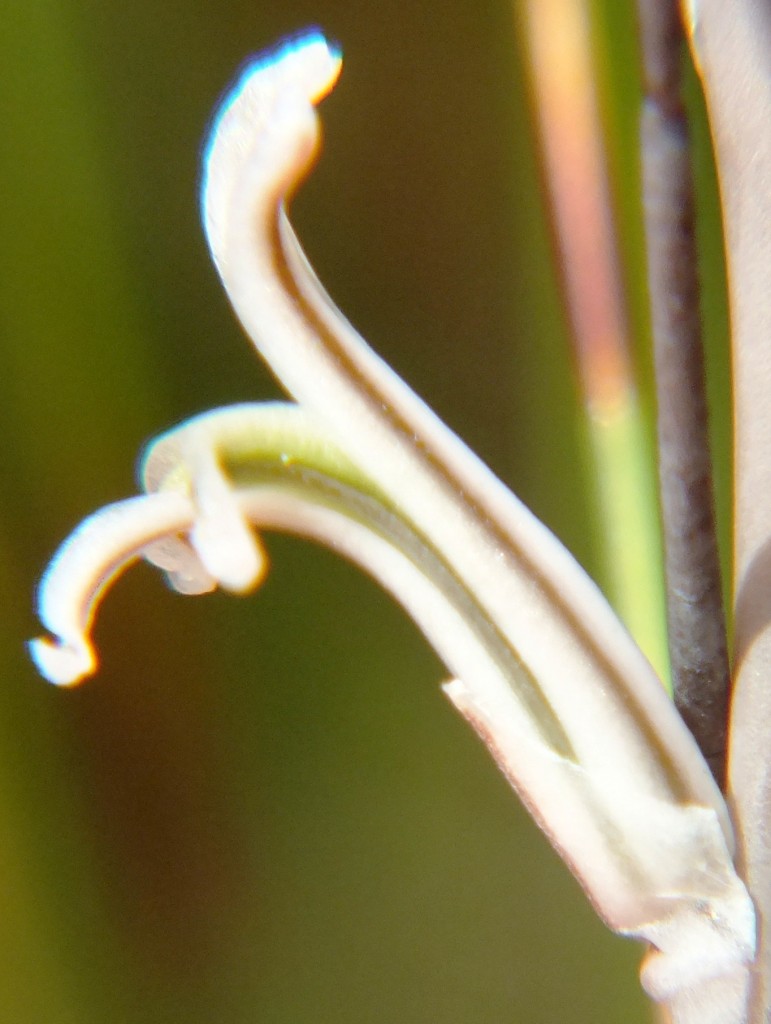

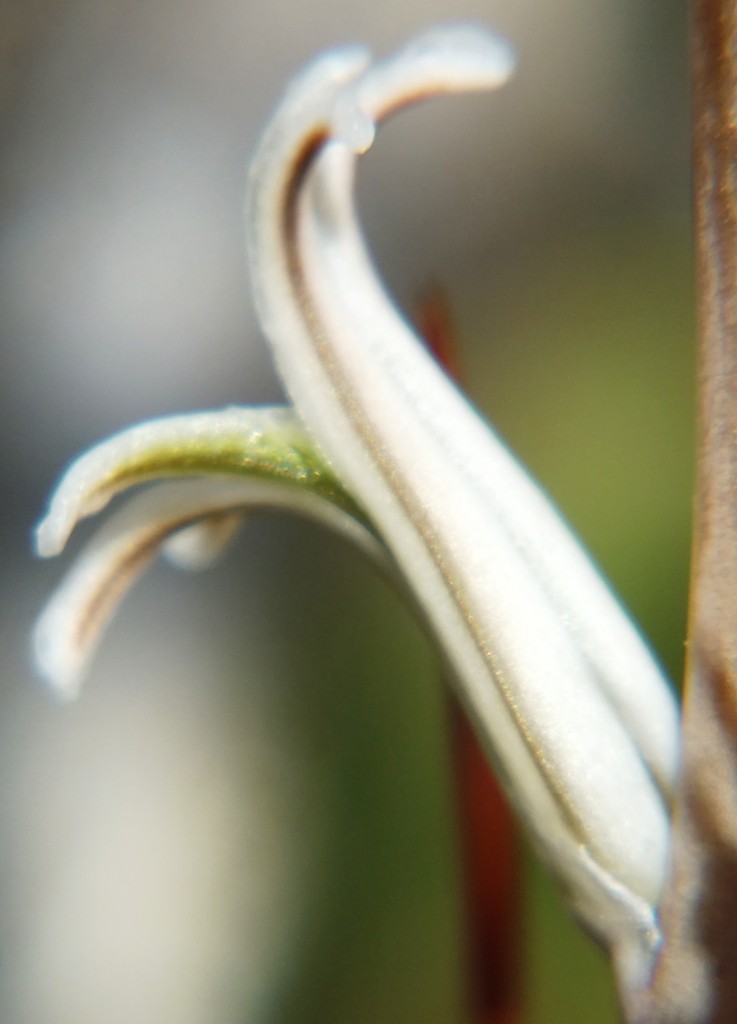
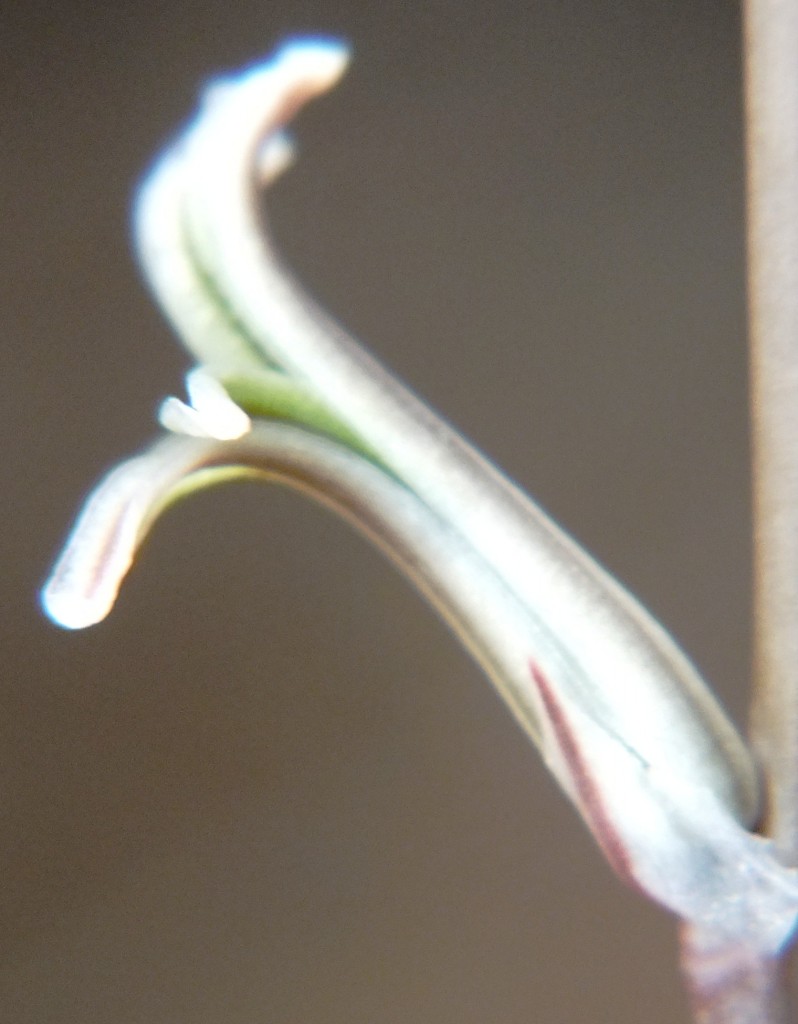
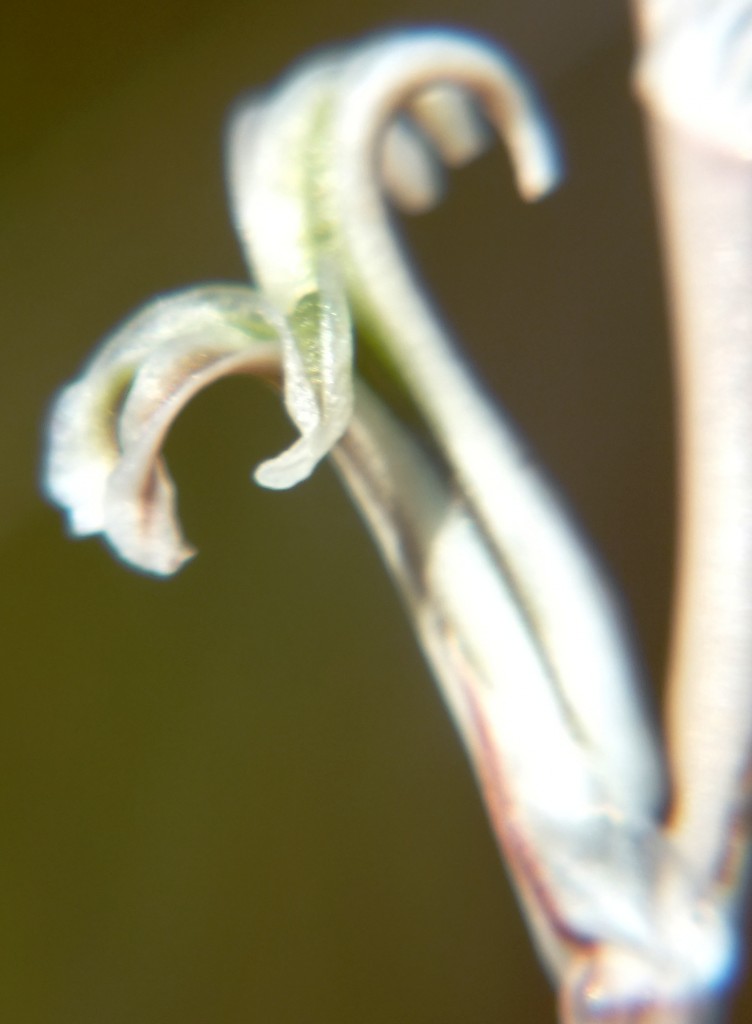
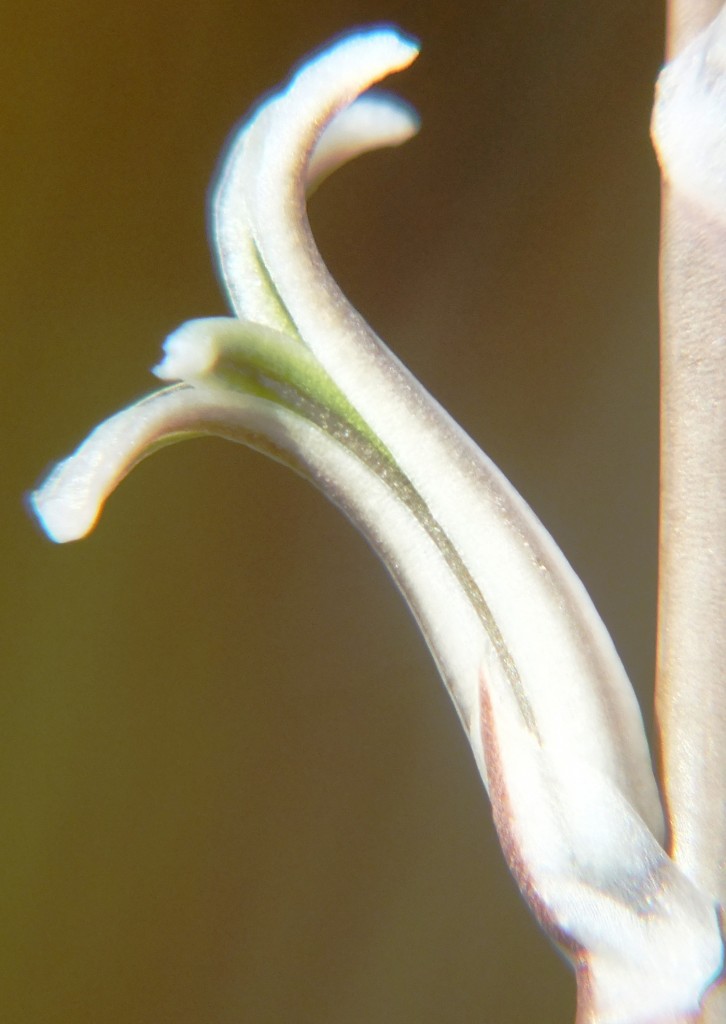
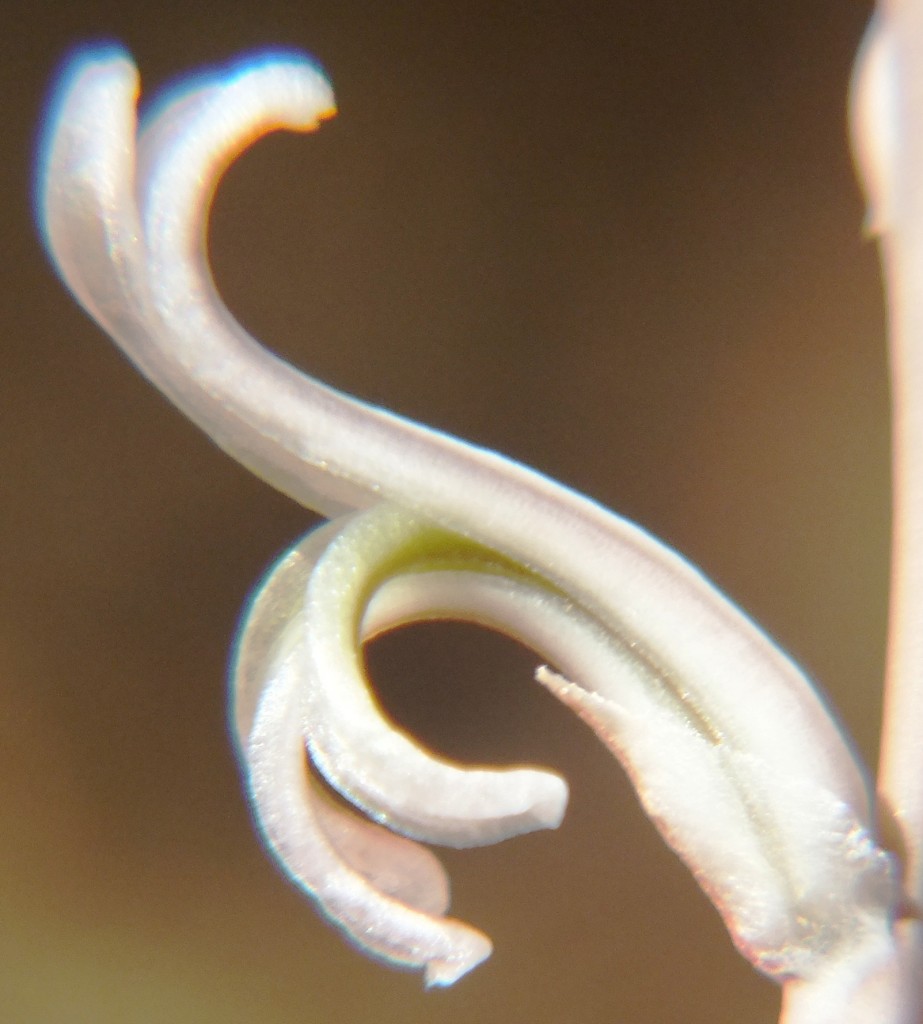
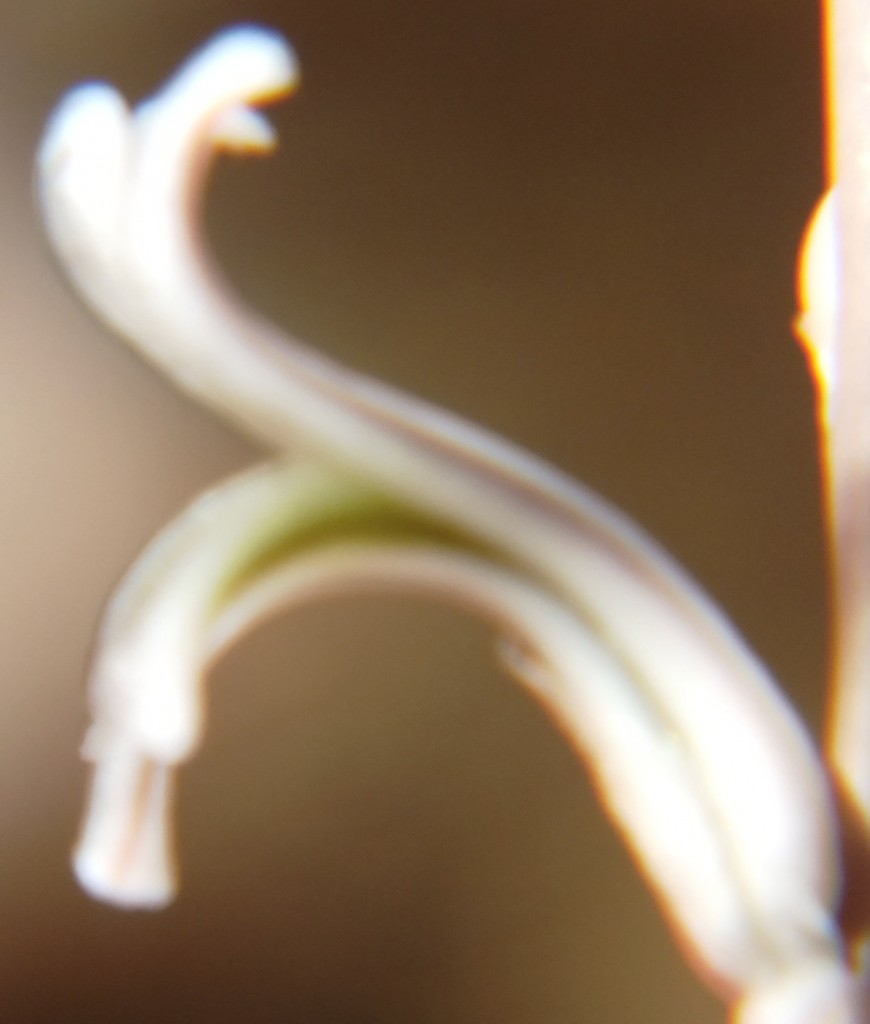
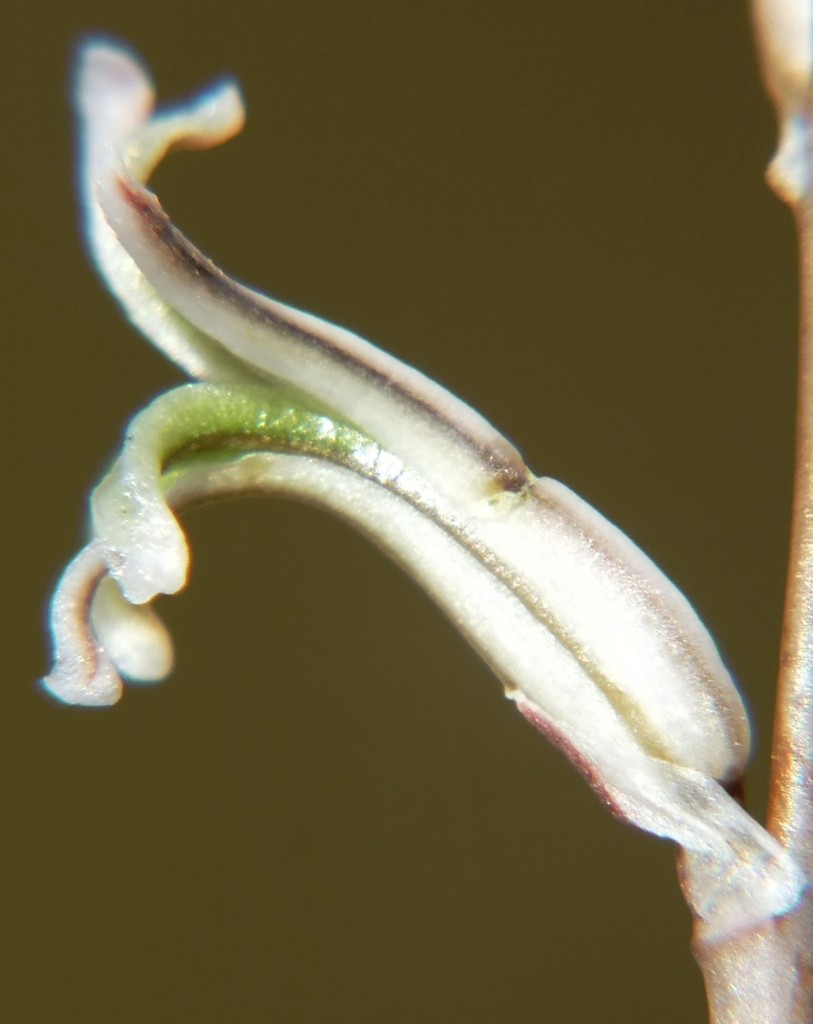
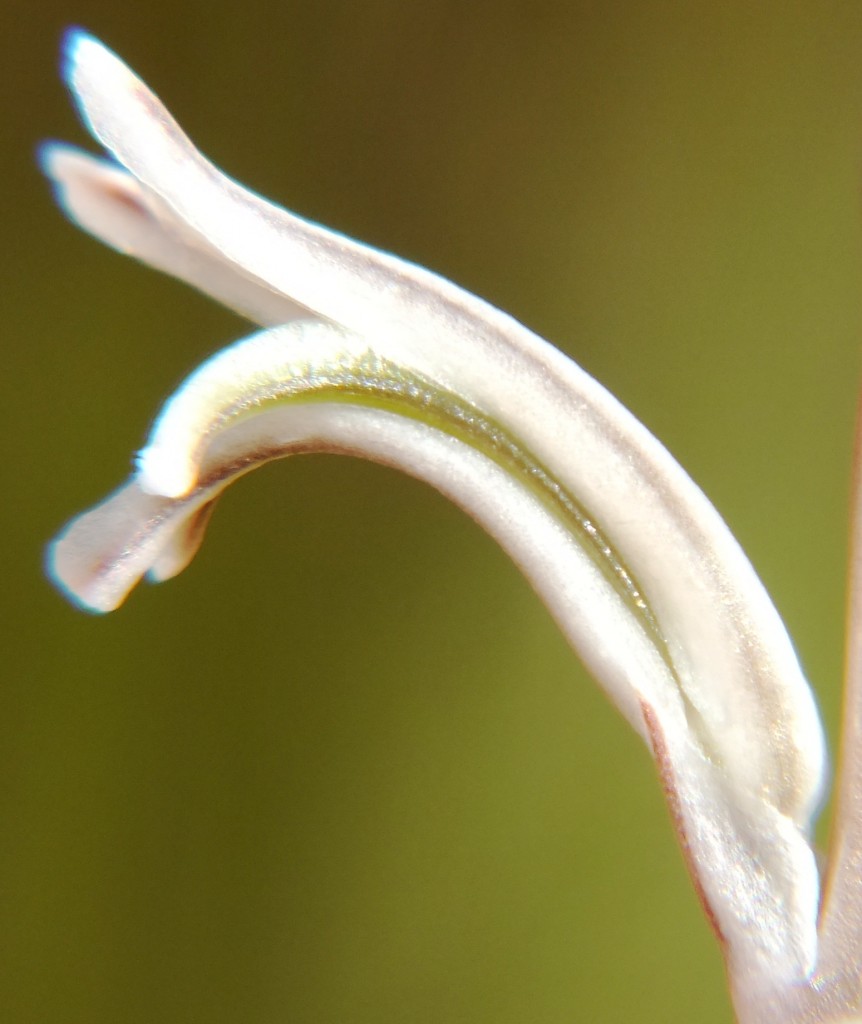
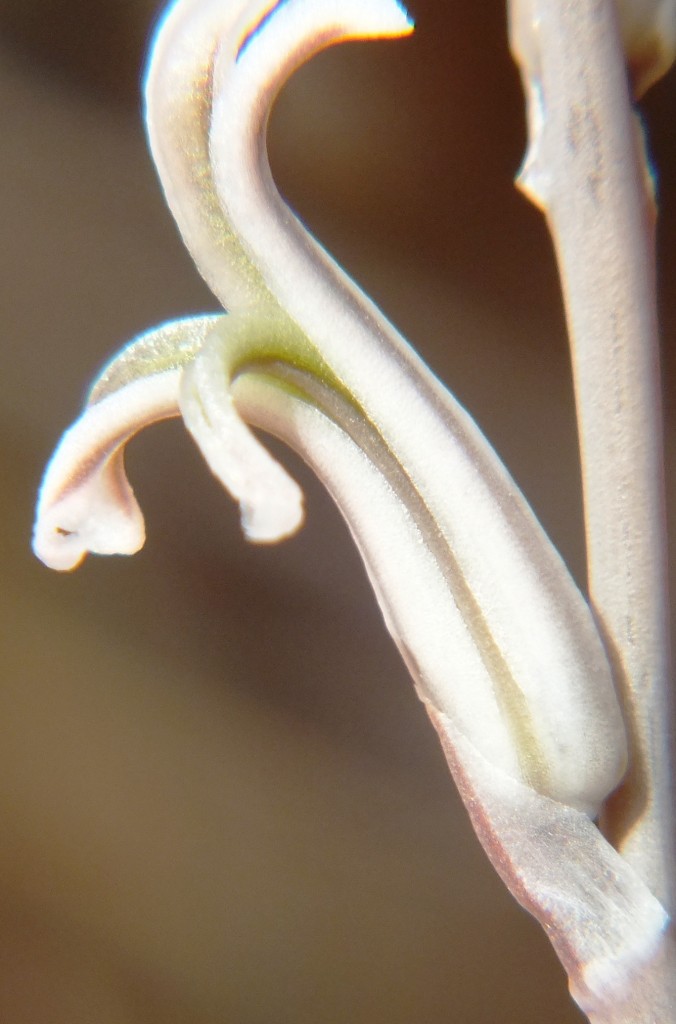

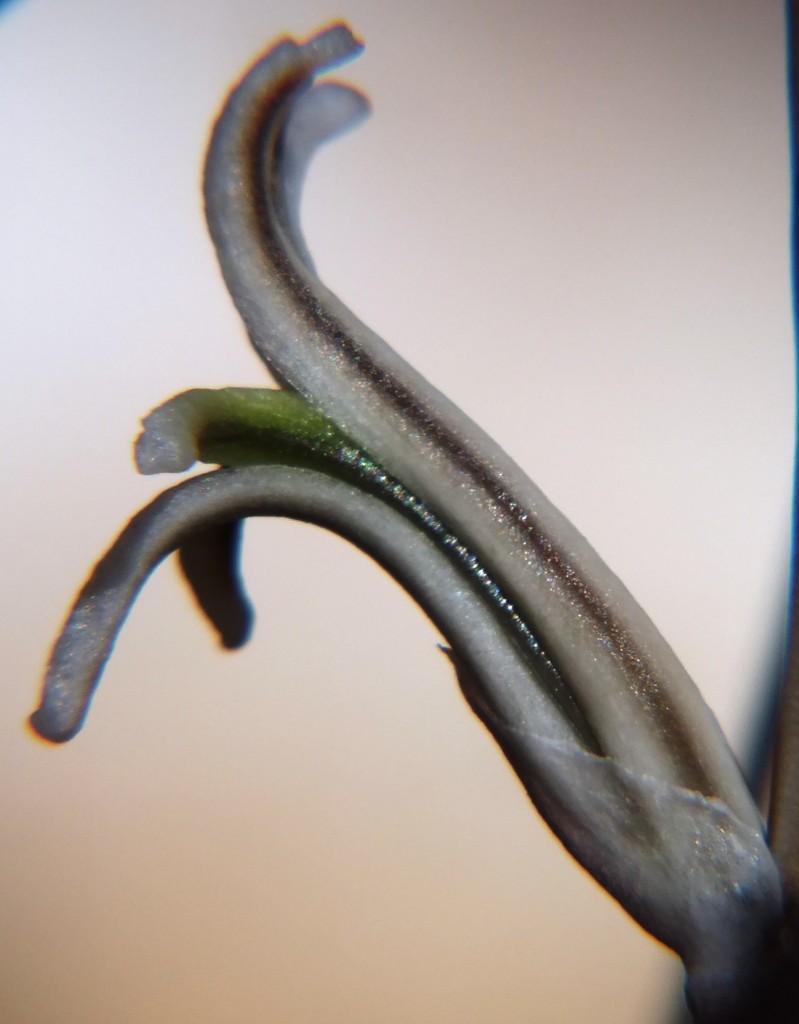
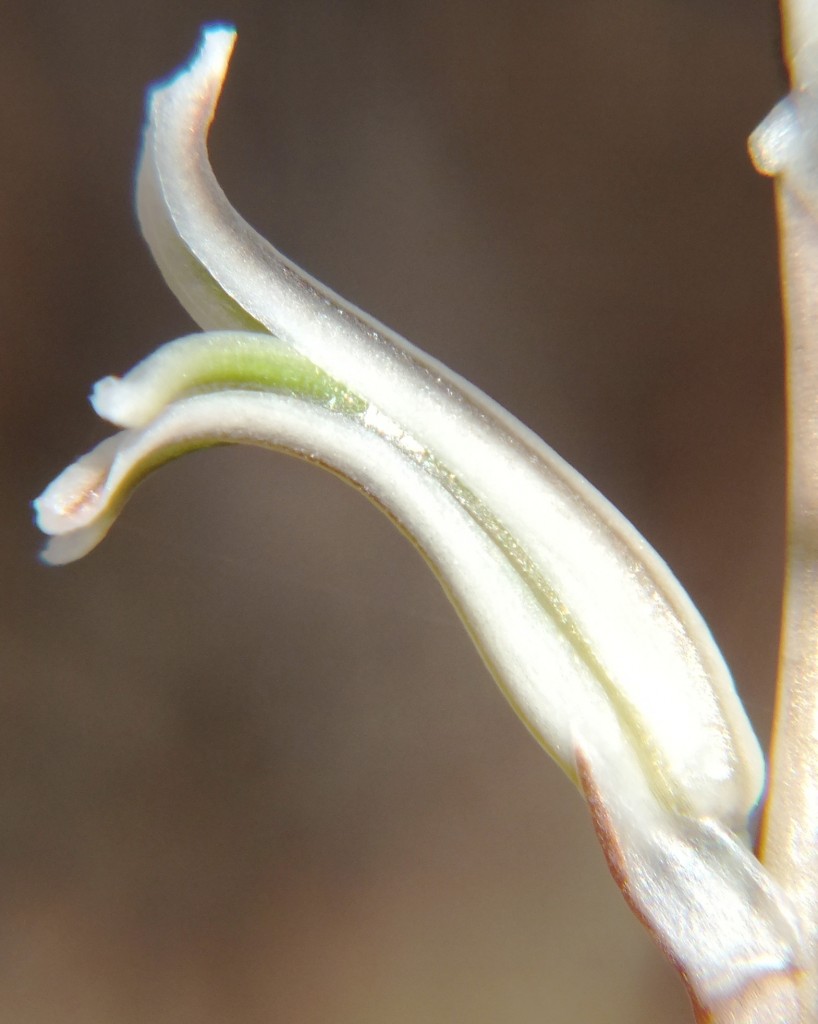
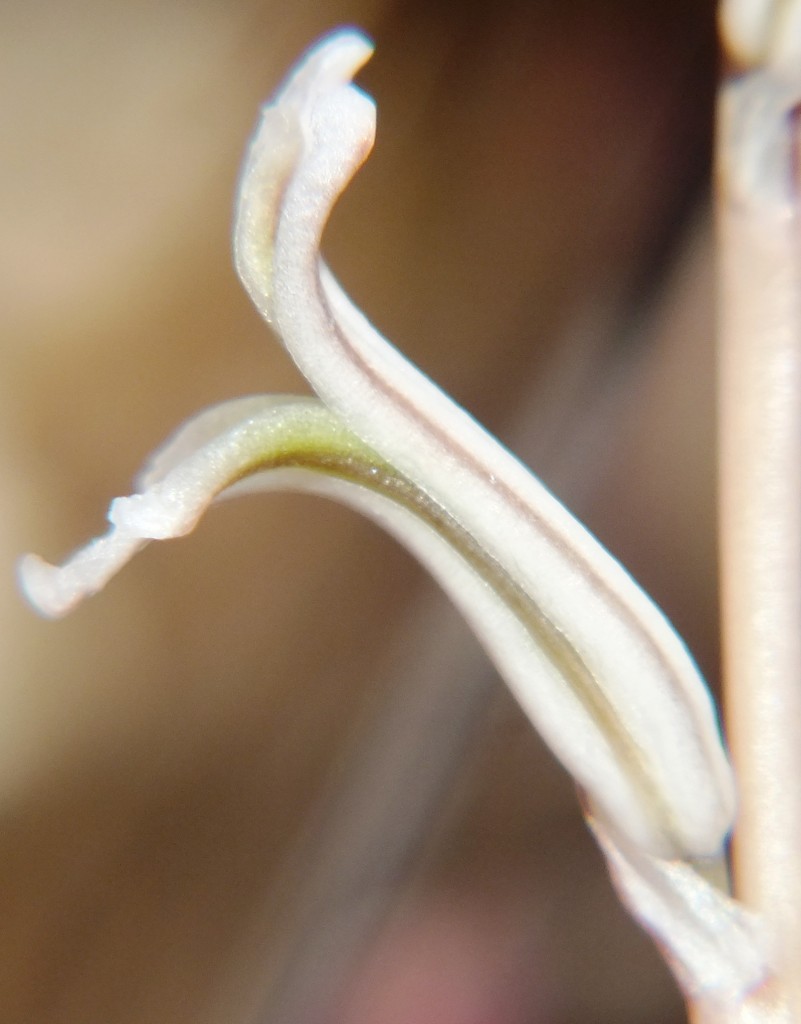

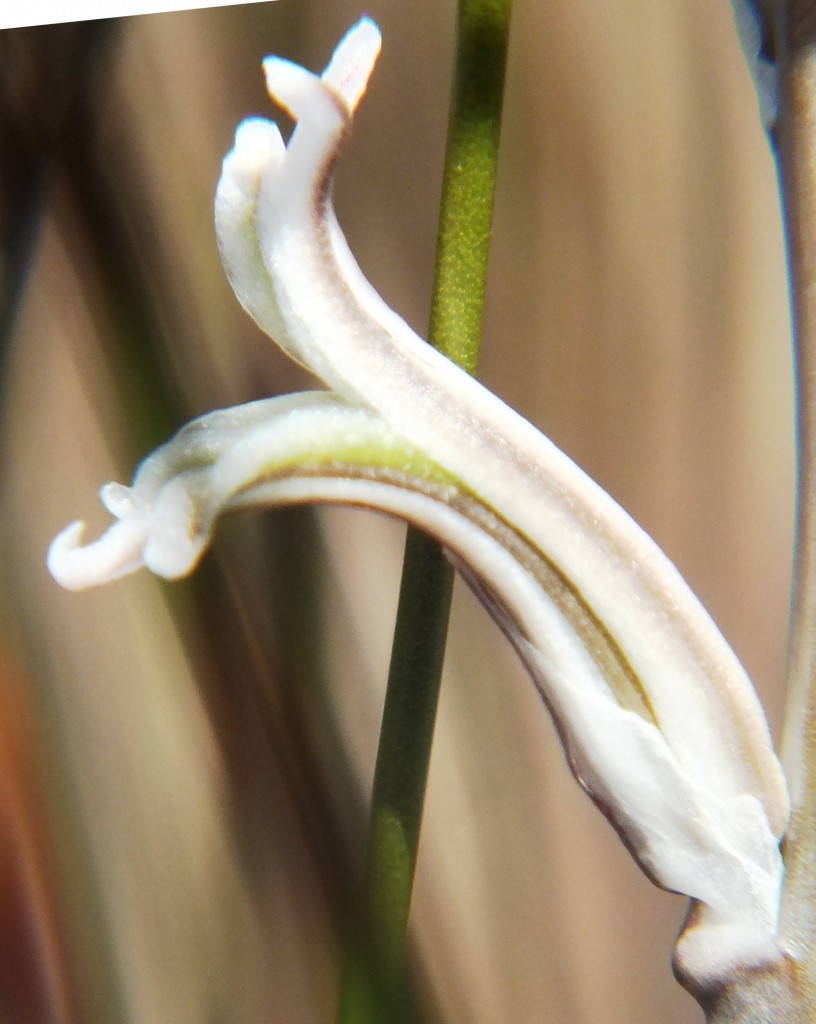
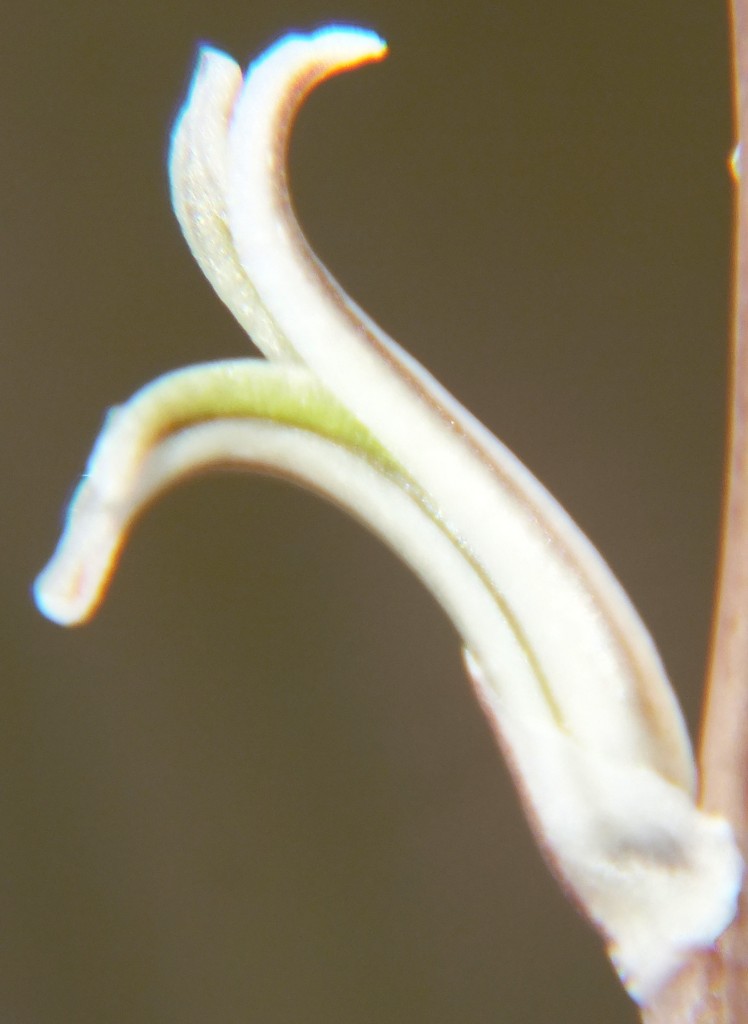
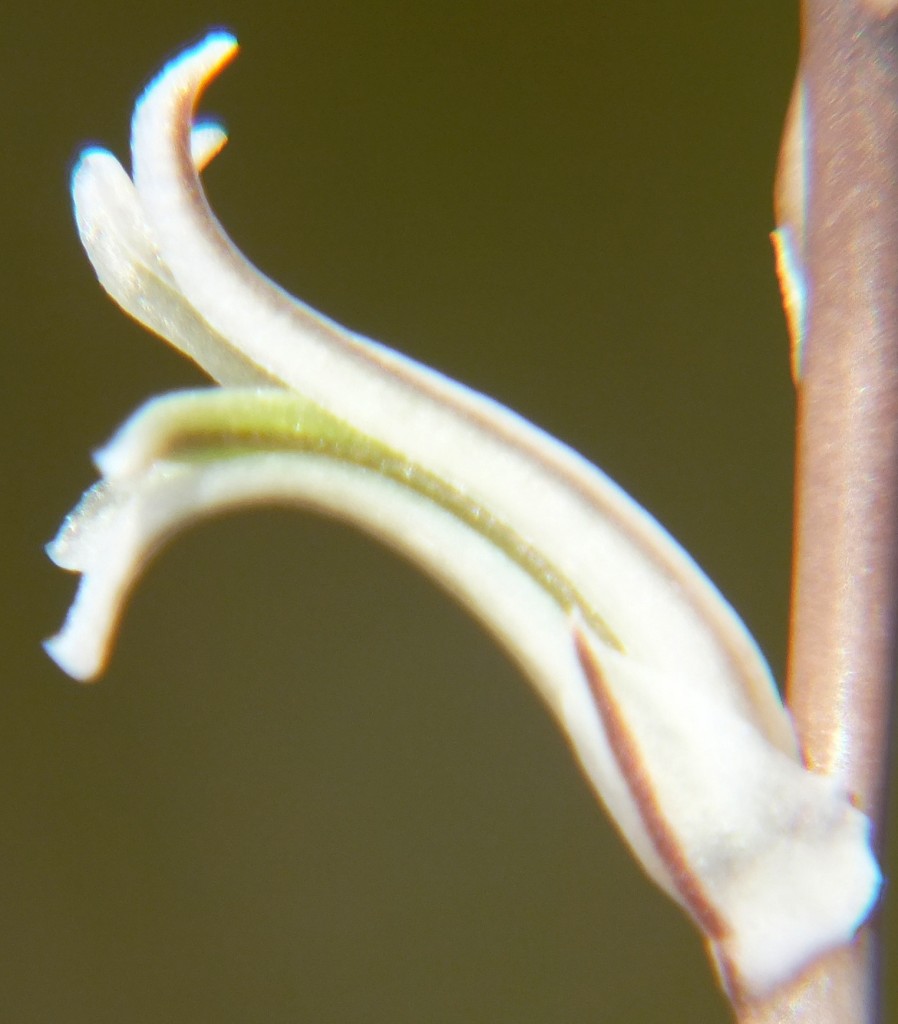
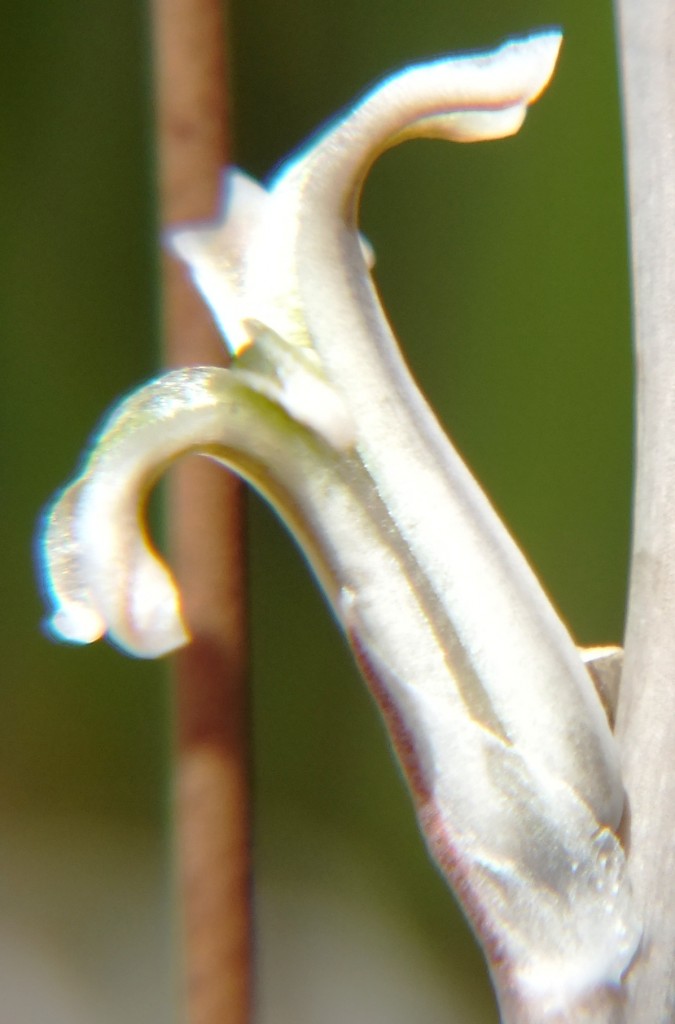
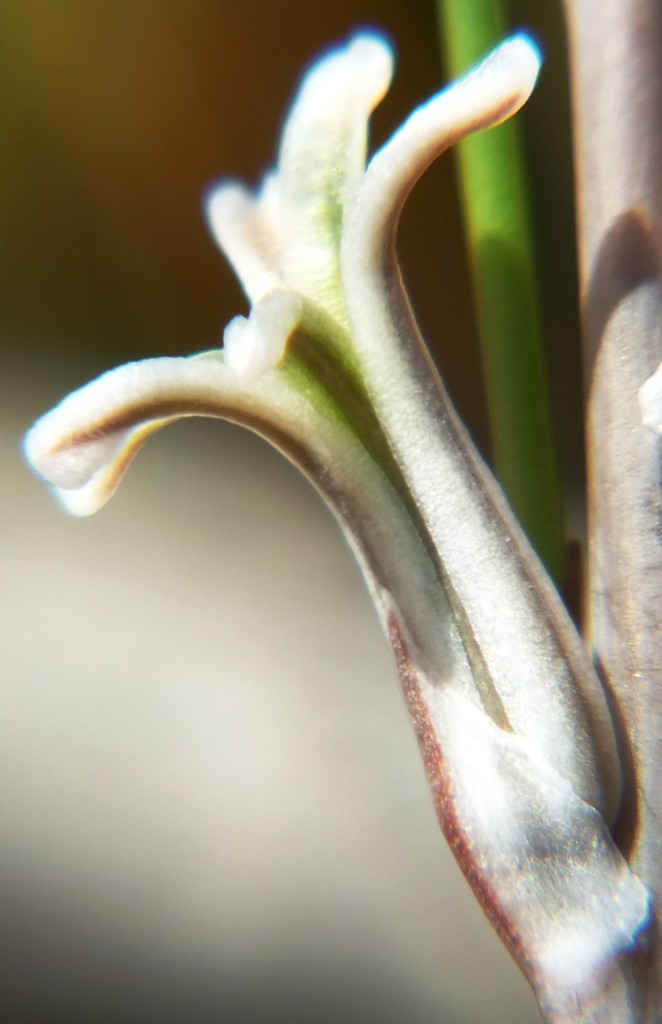
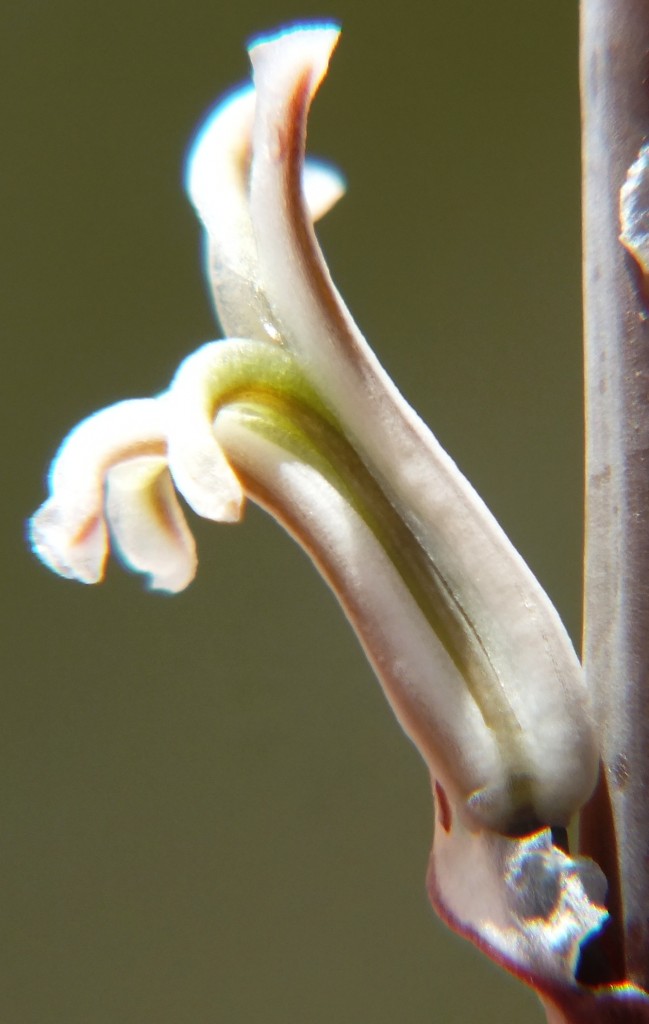
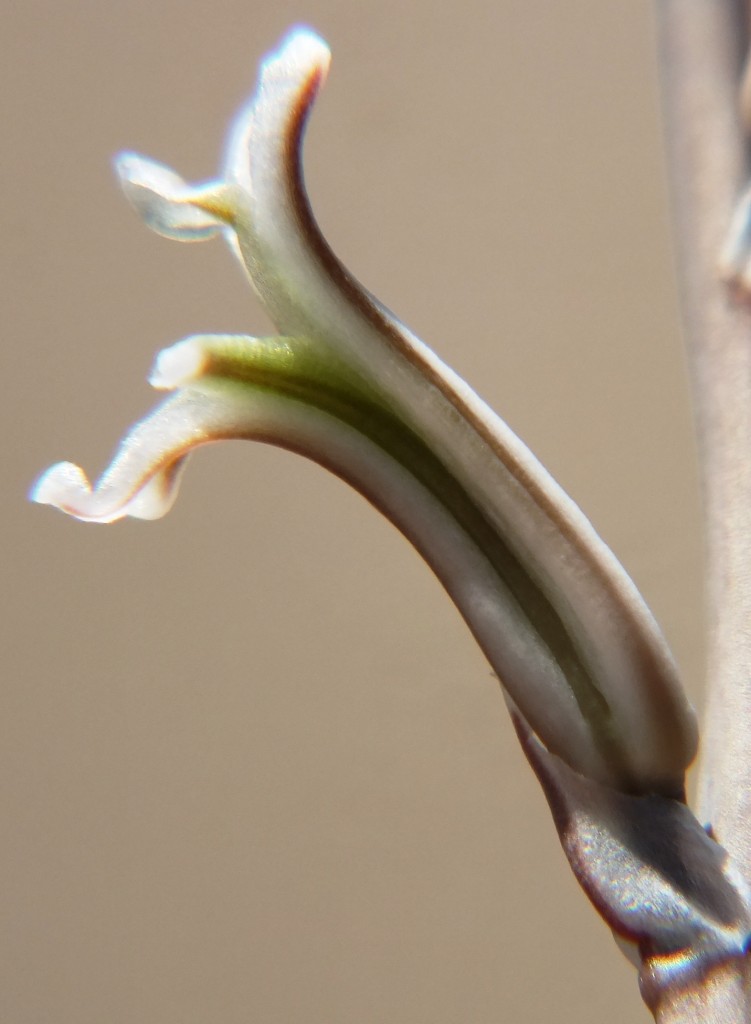
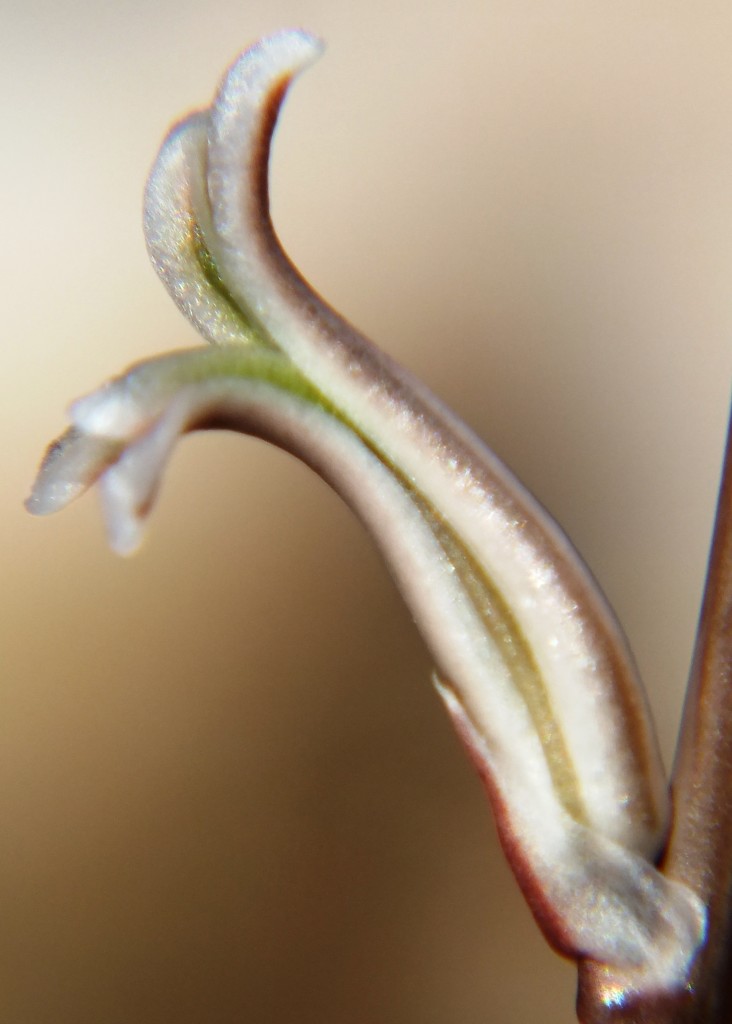
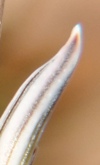

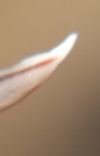
3. MBB7741 H. mutica, Dankbaar.

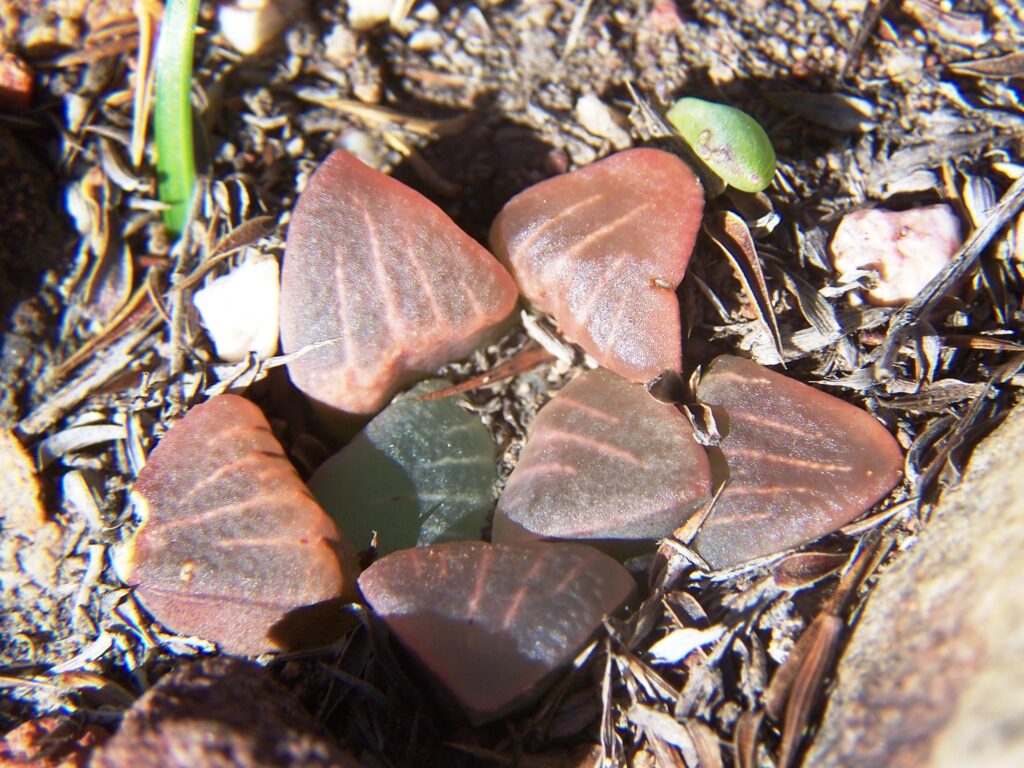
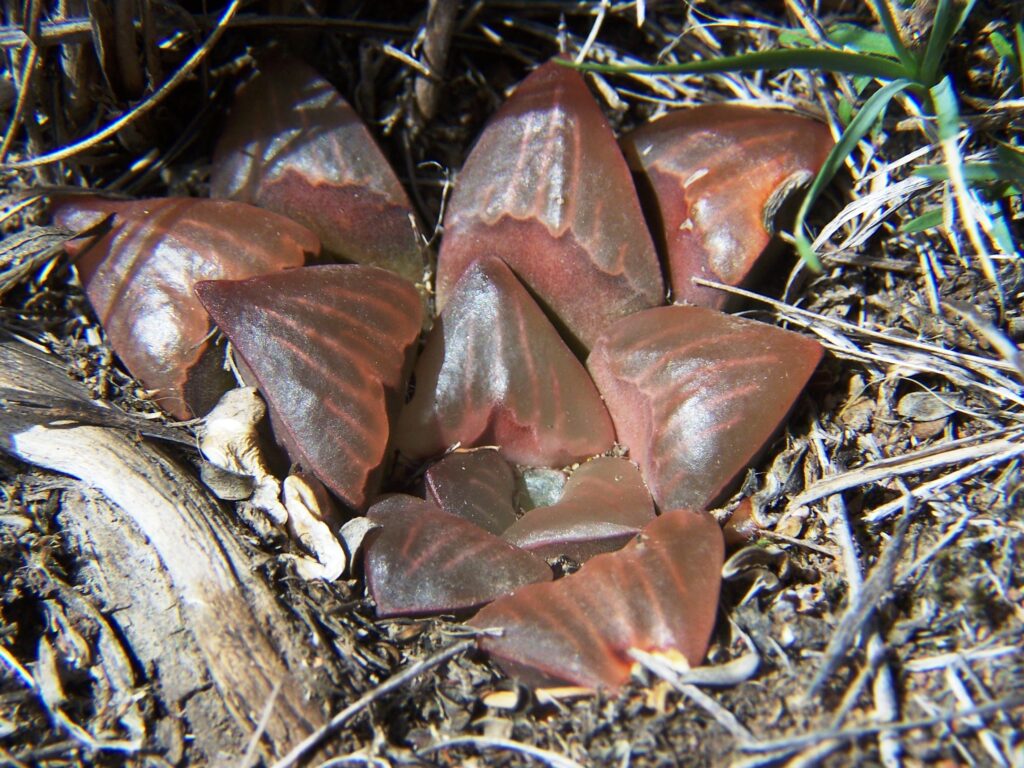
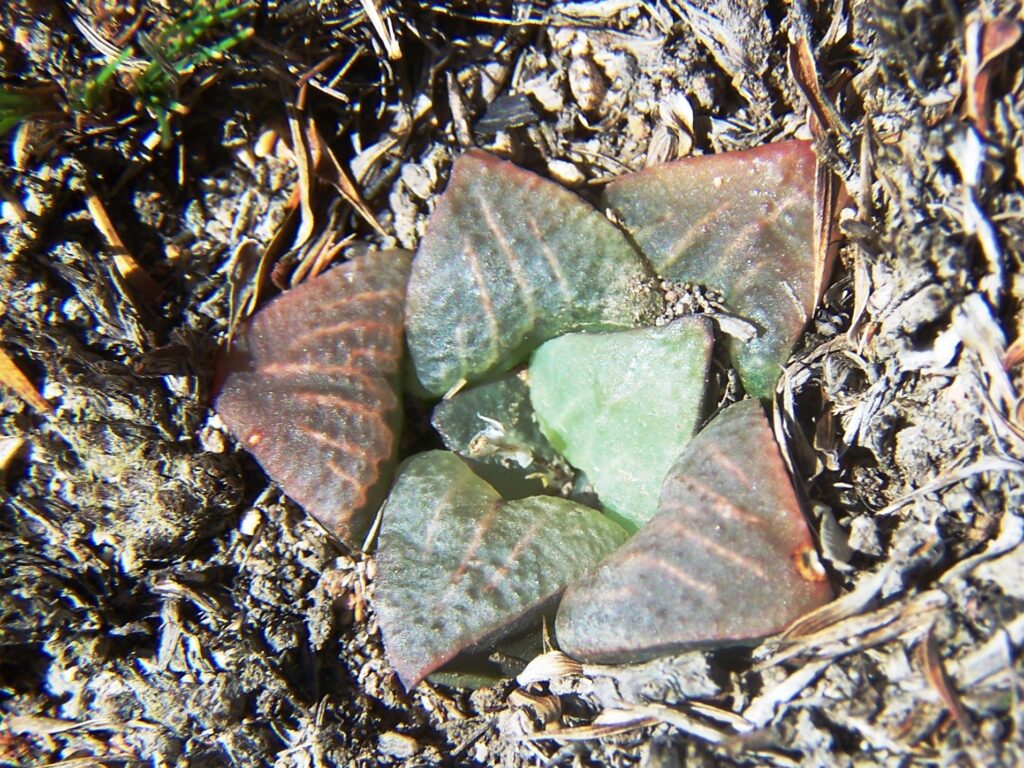
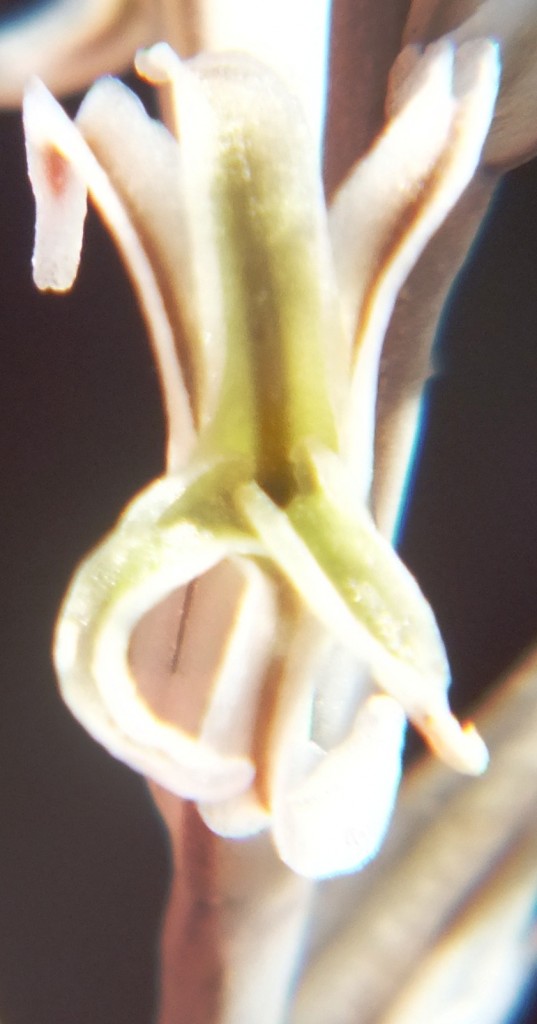
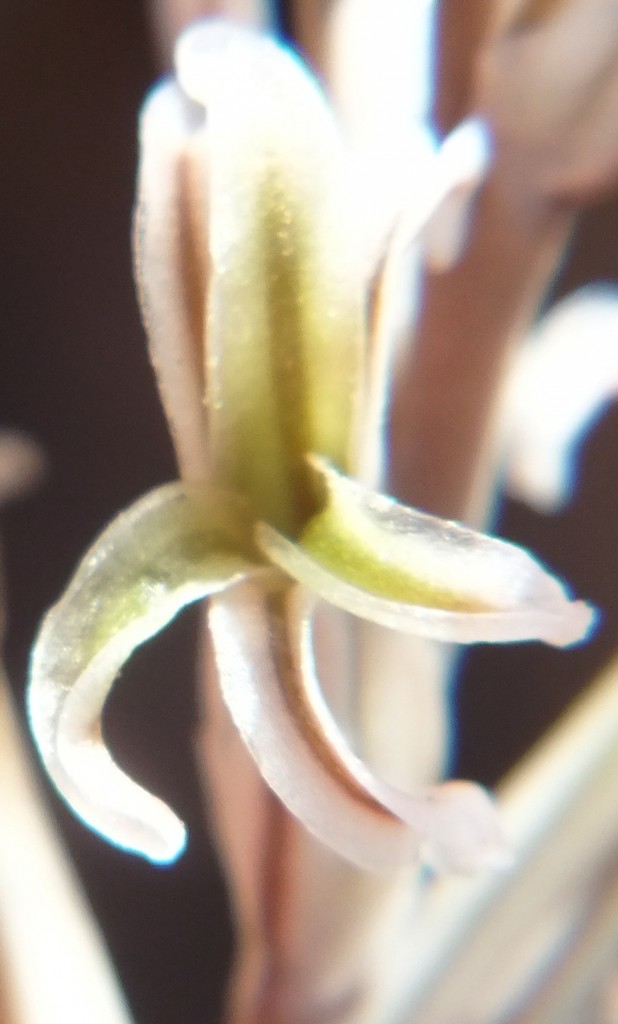
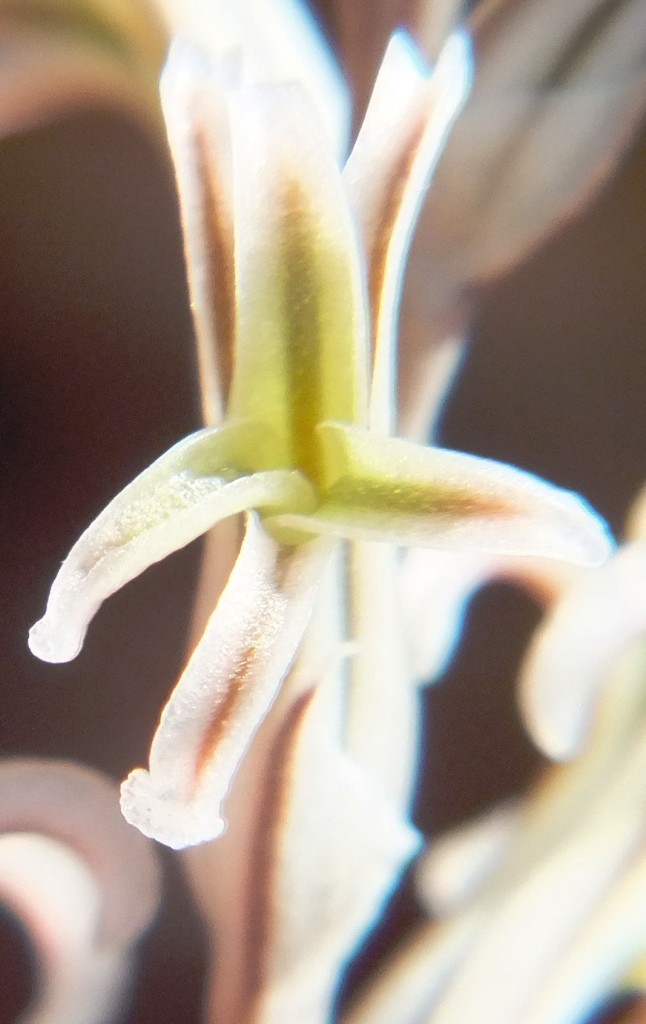
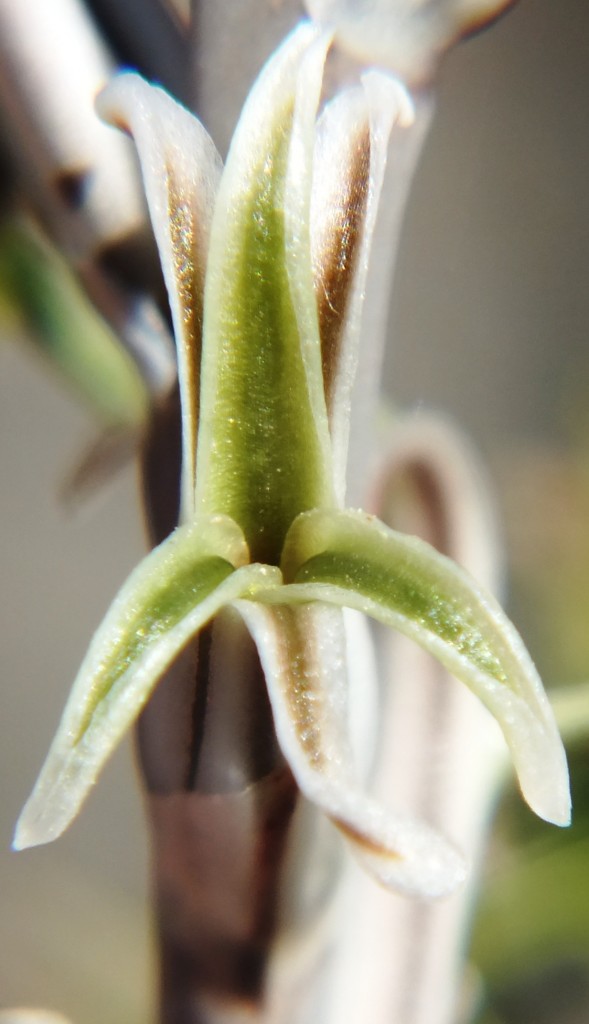
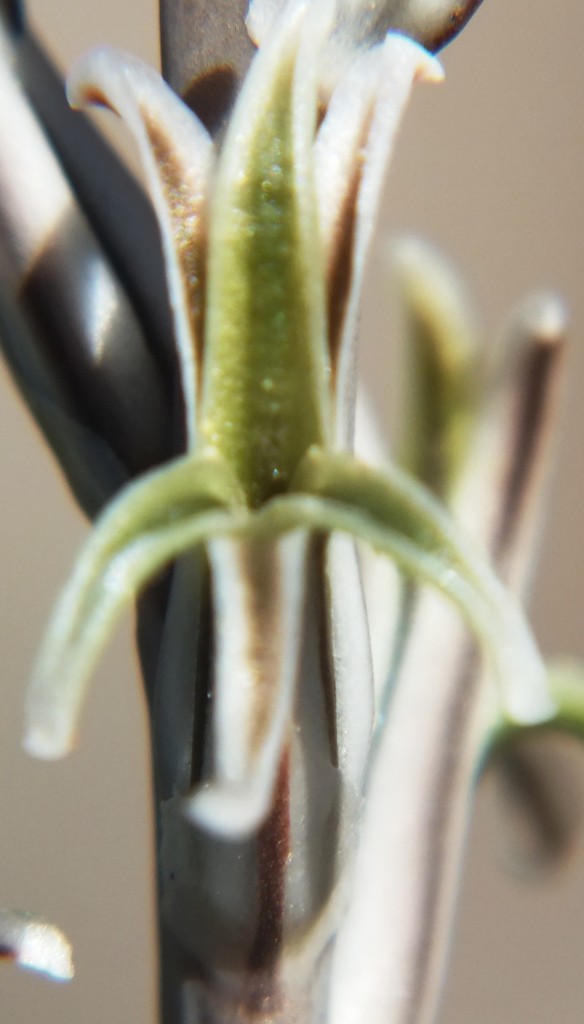
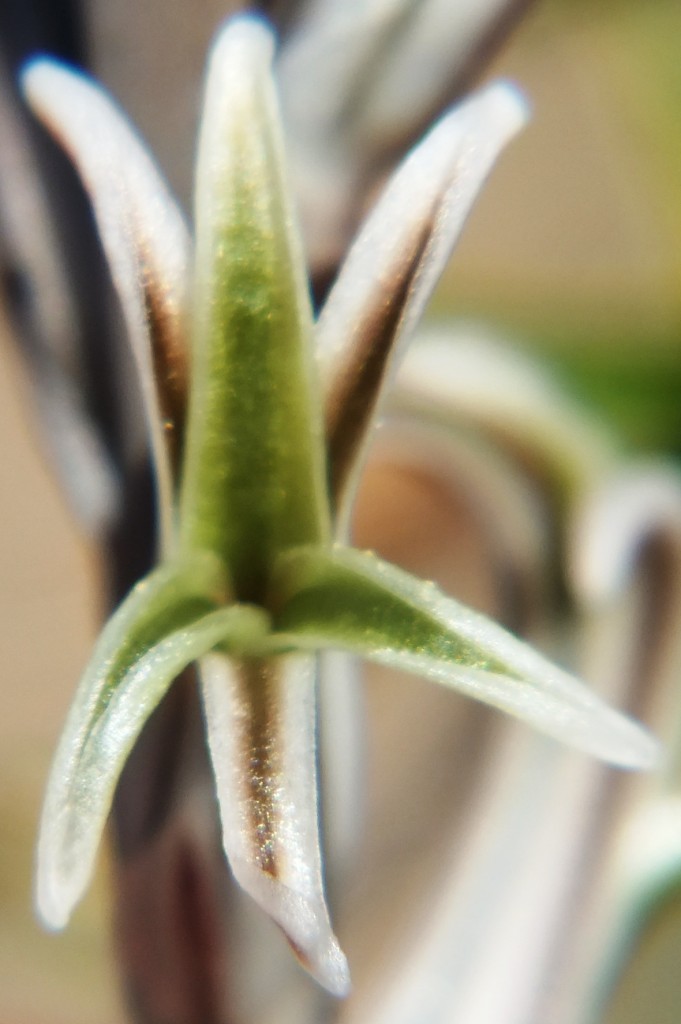
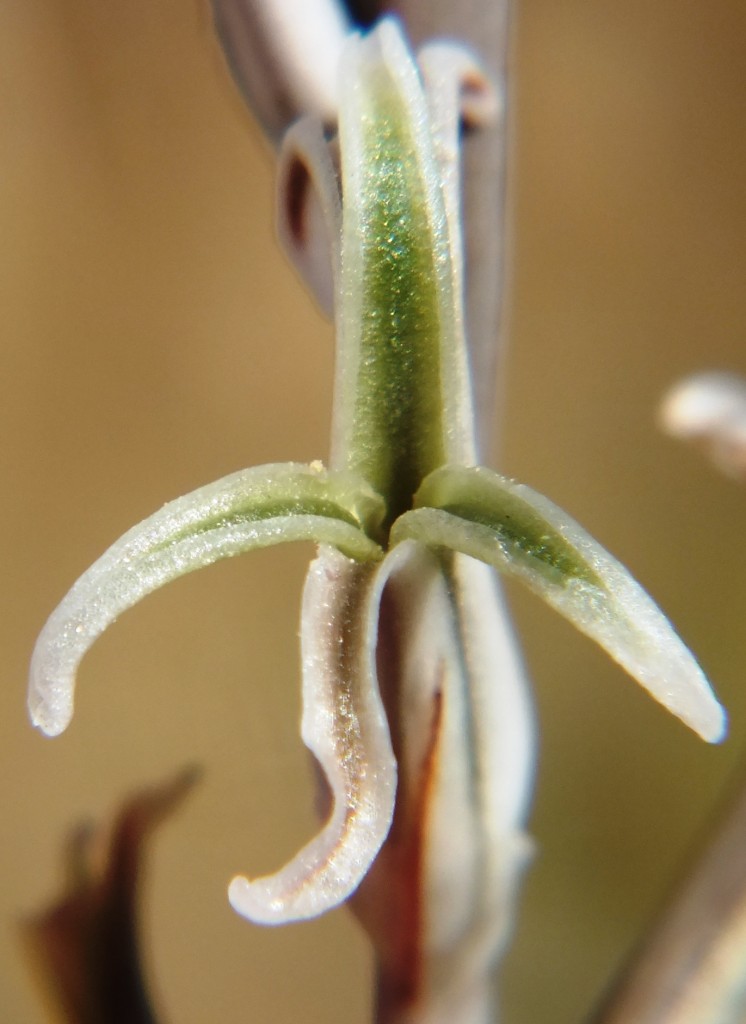
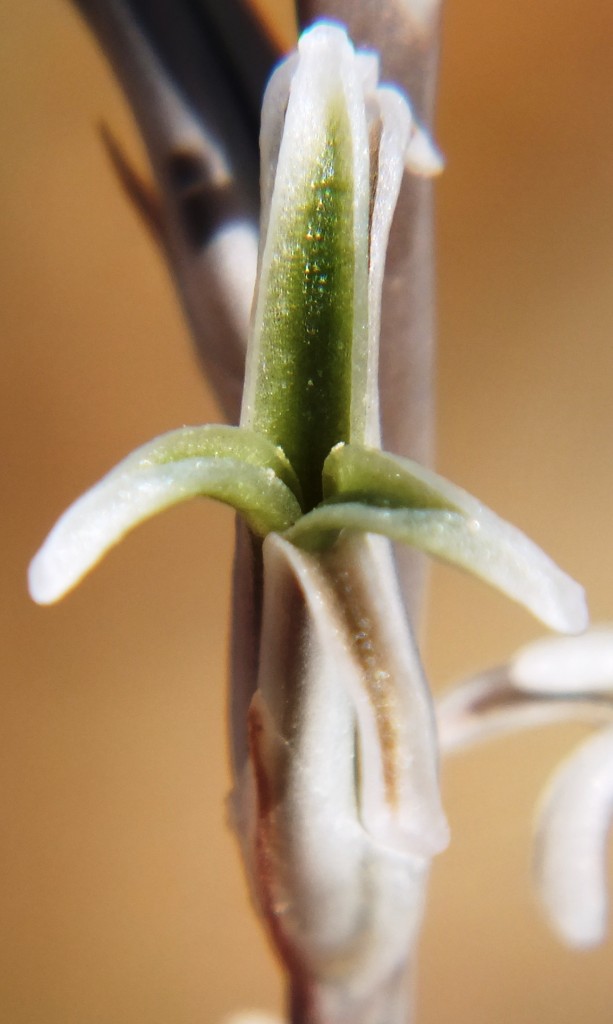
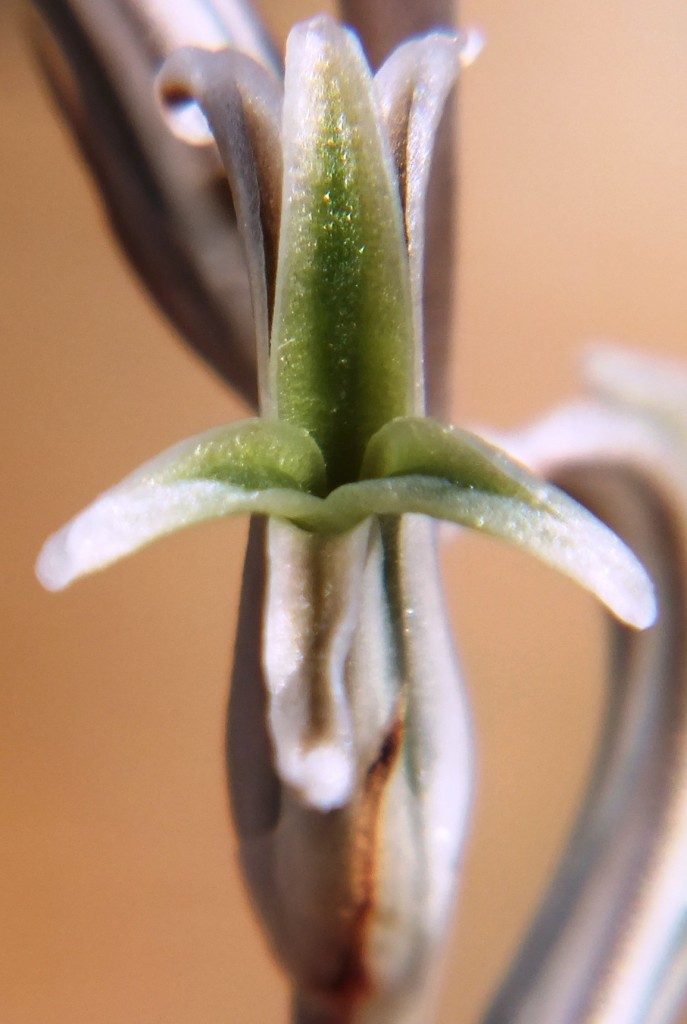
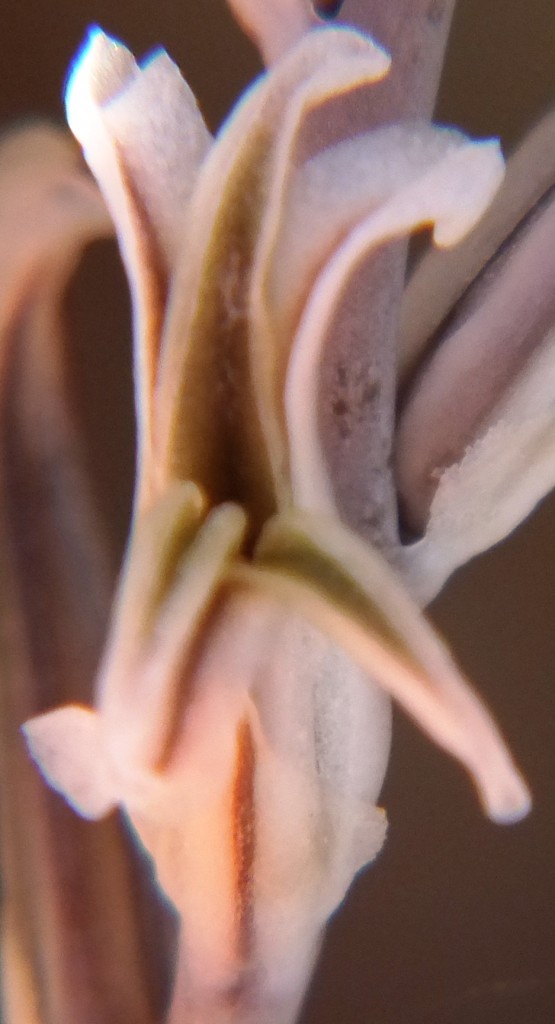
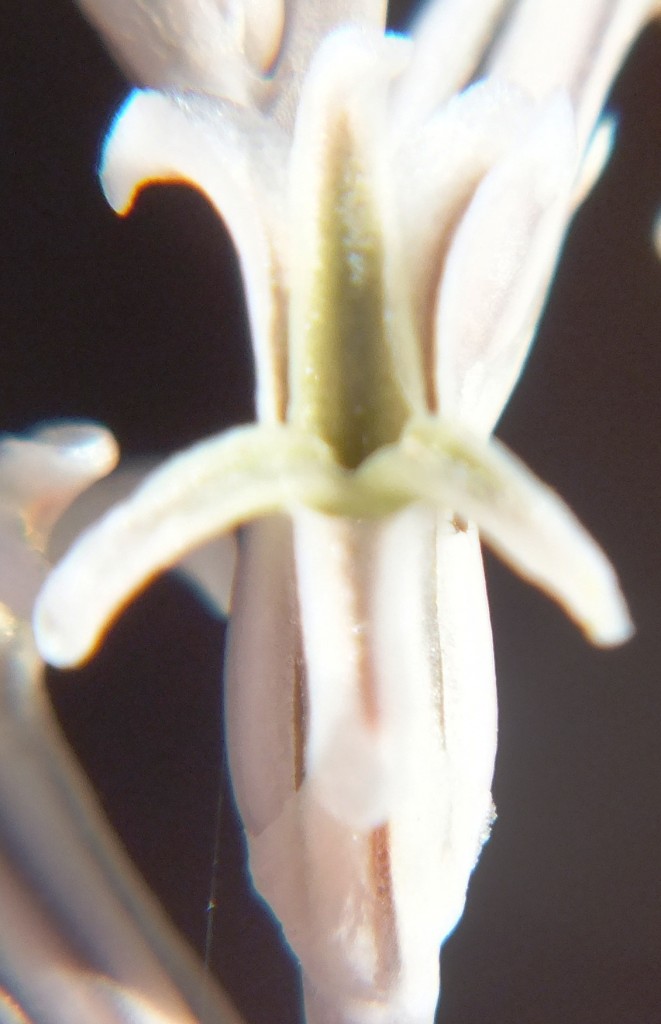
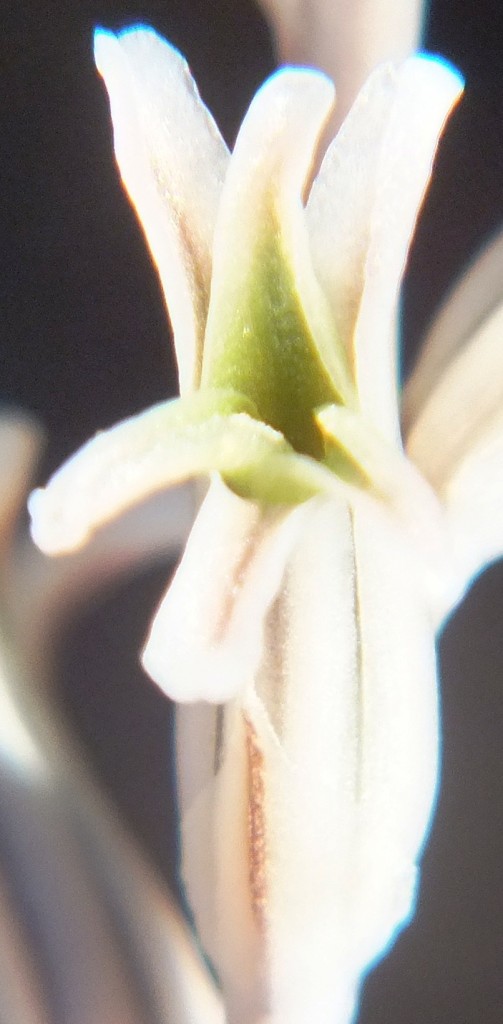
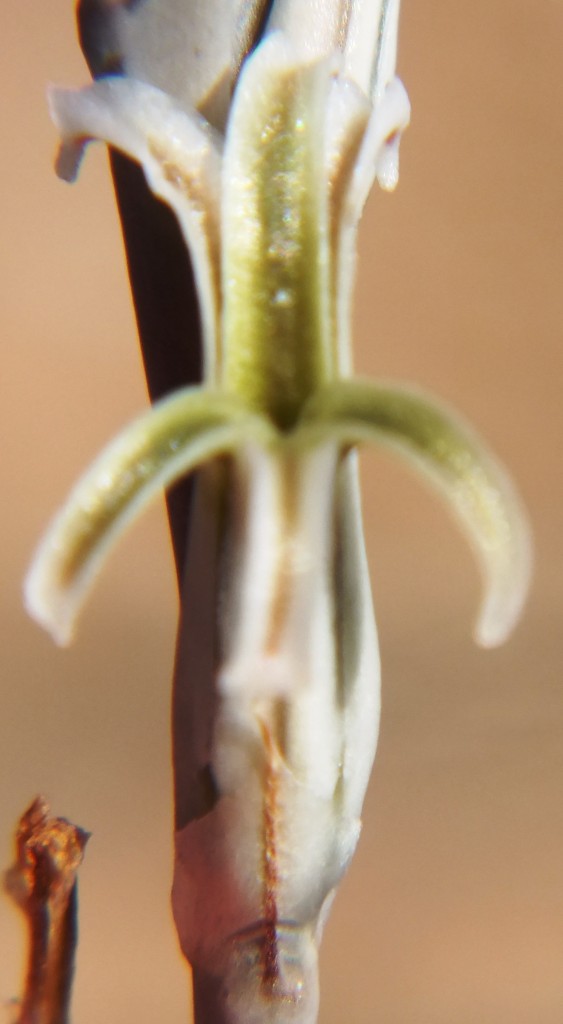
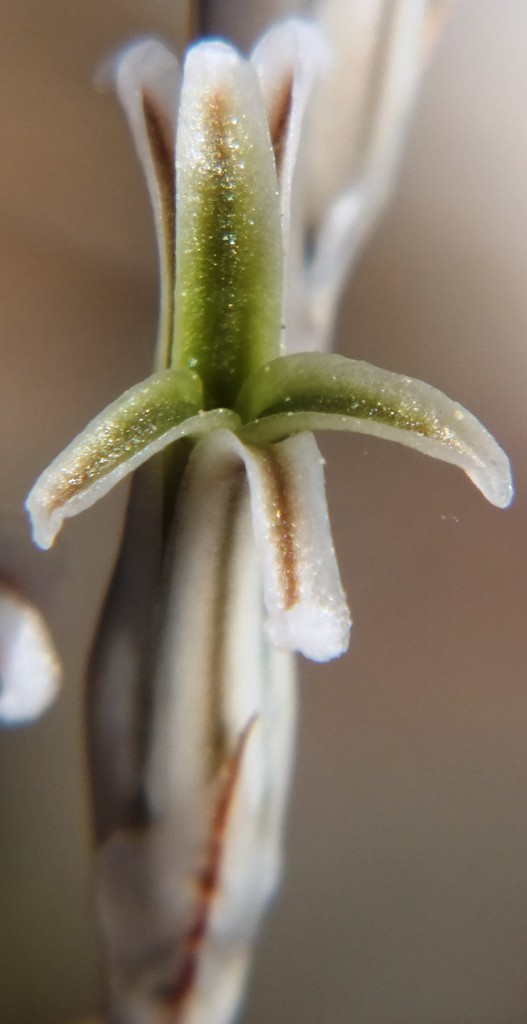
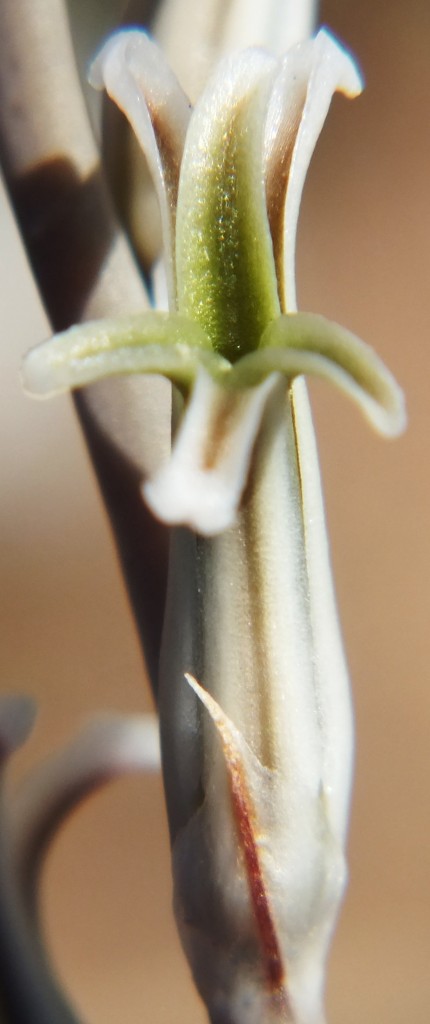
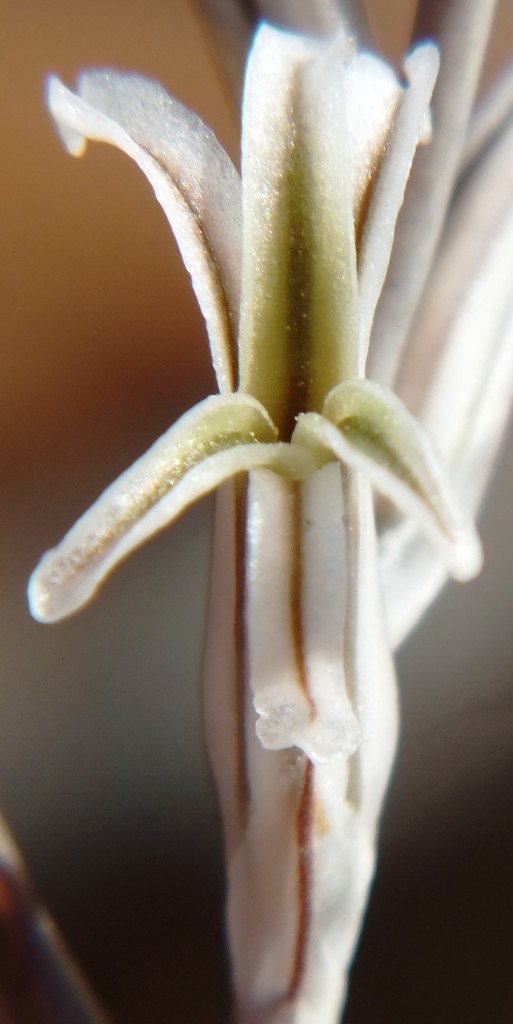
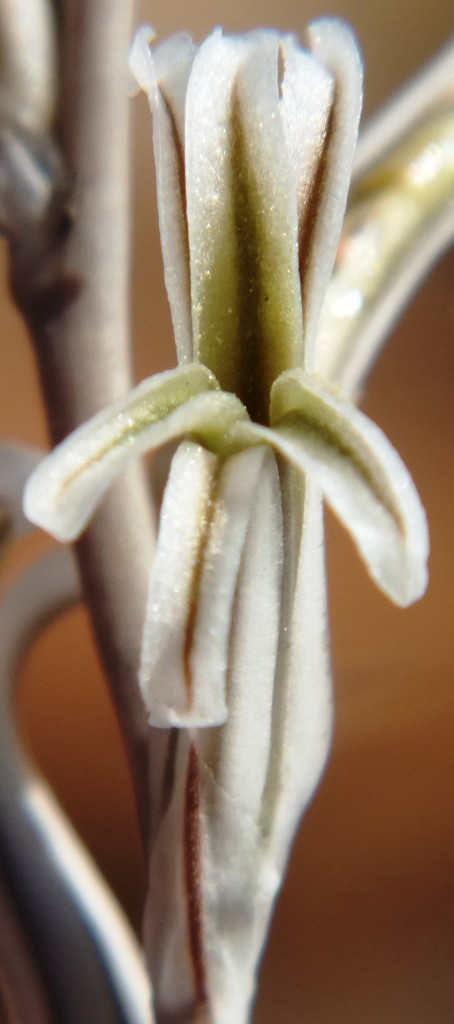
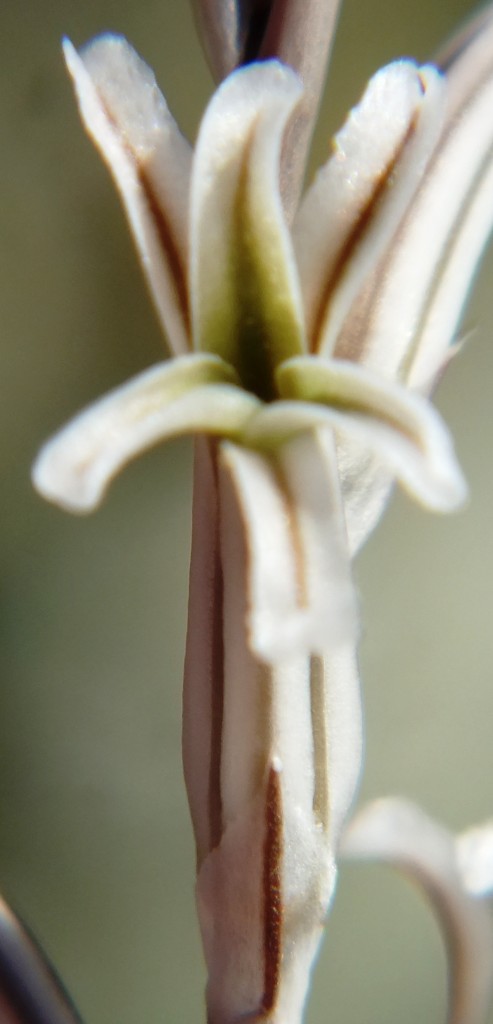
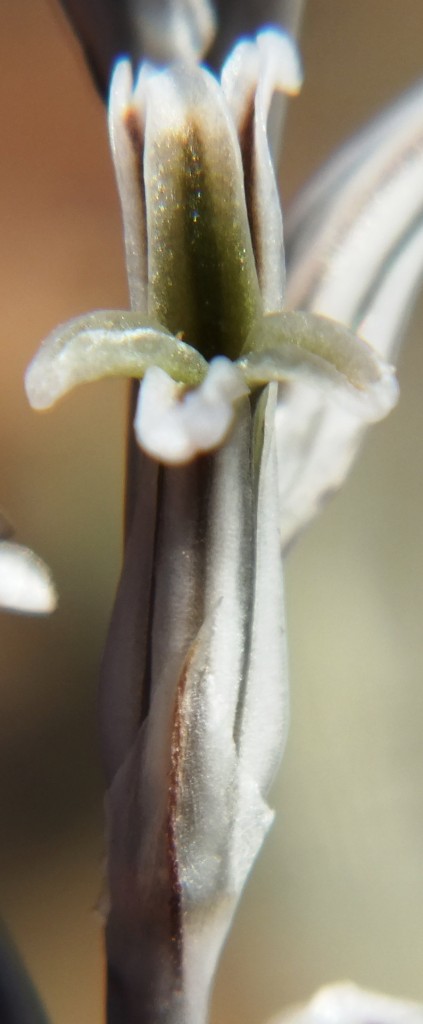
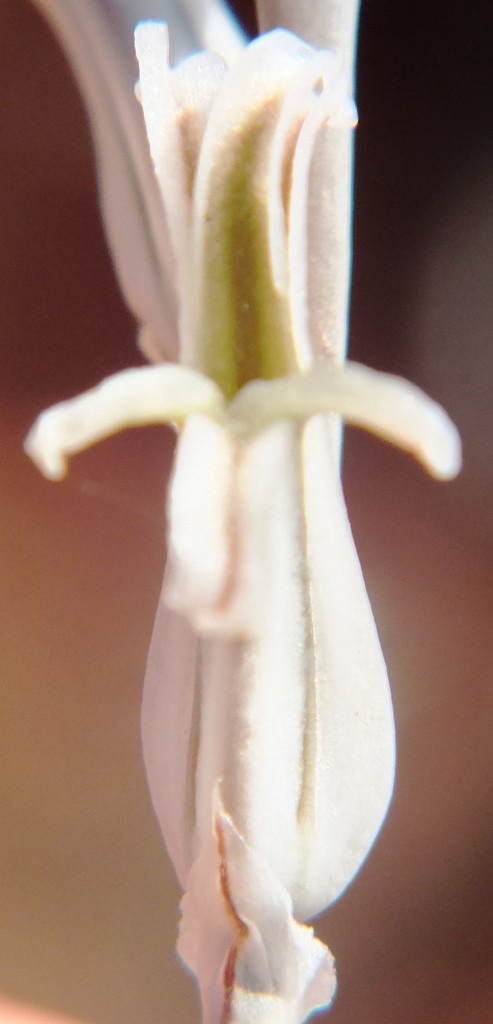
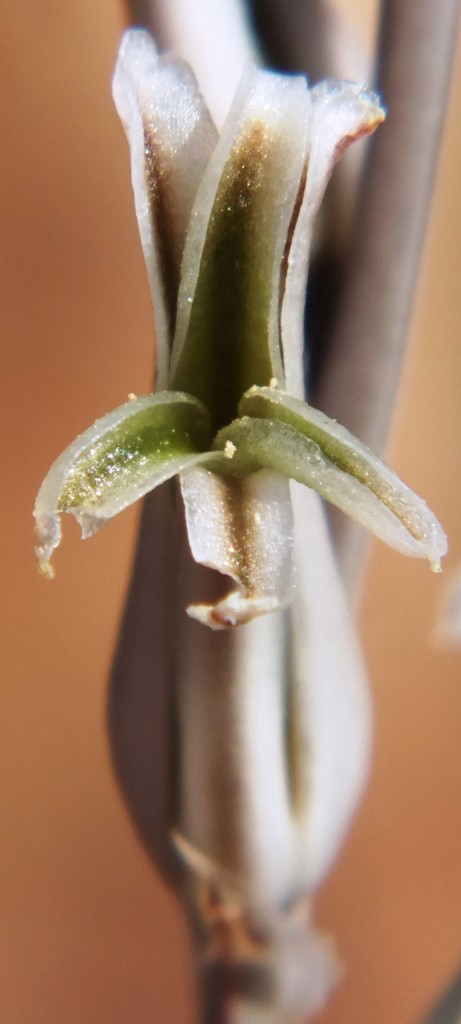
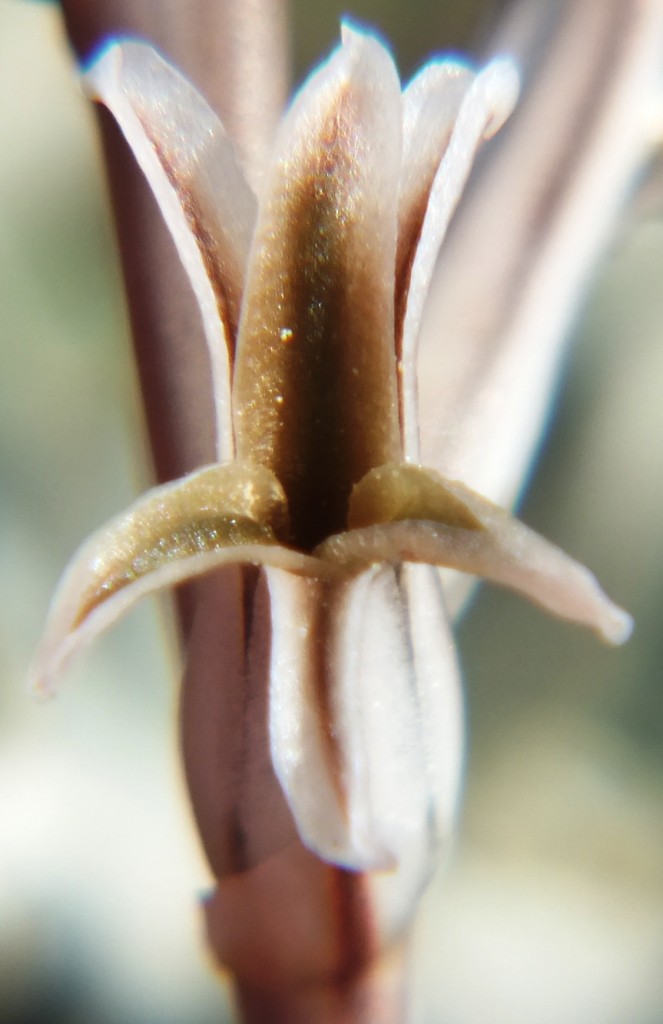

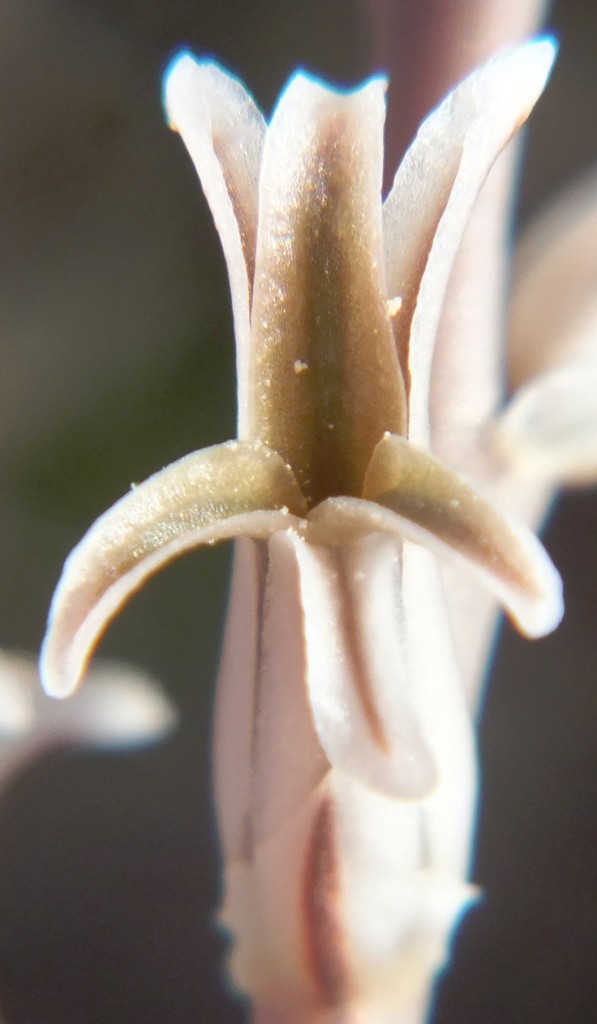
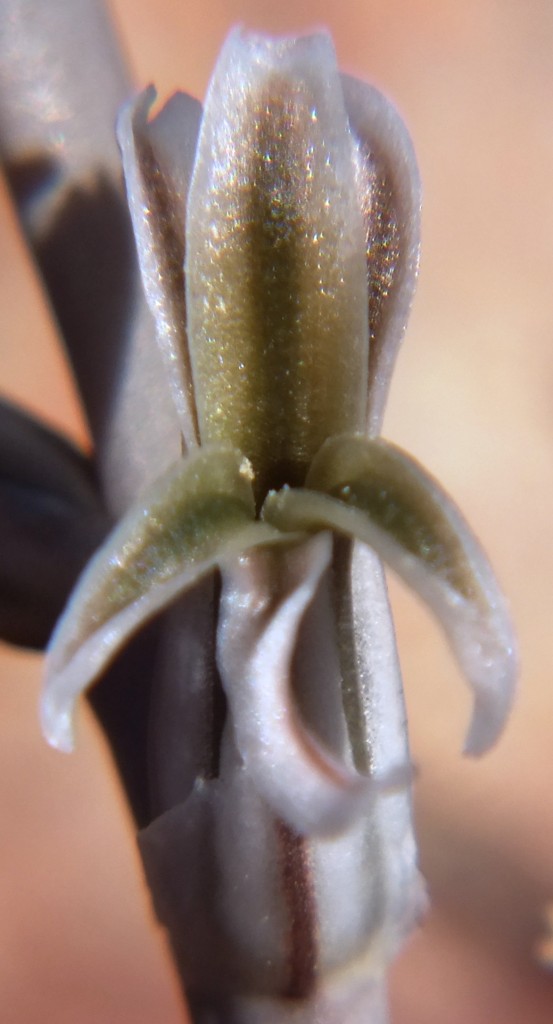
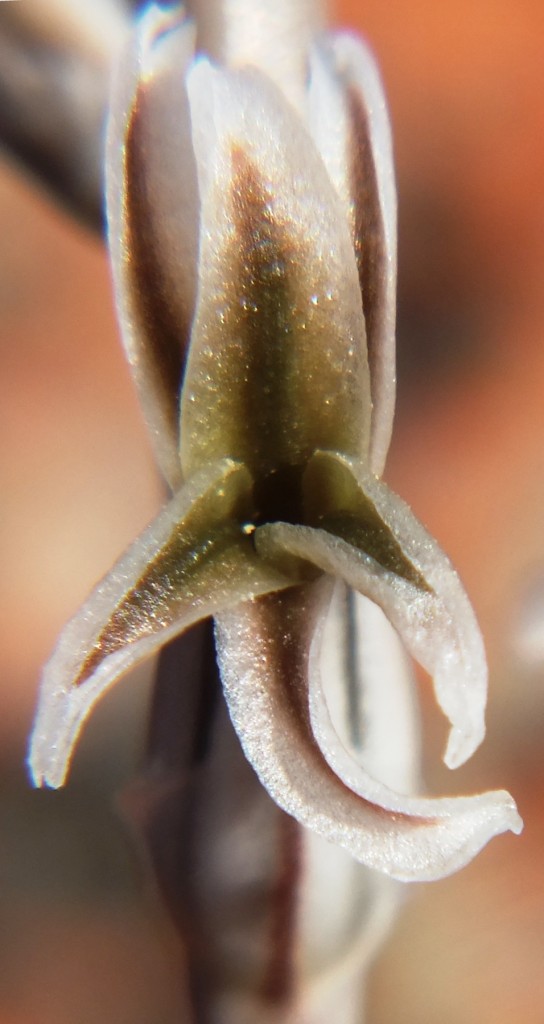
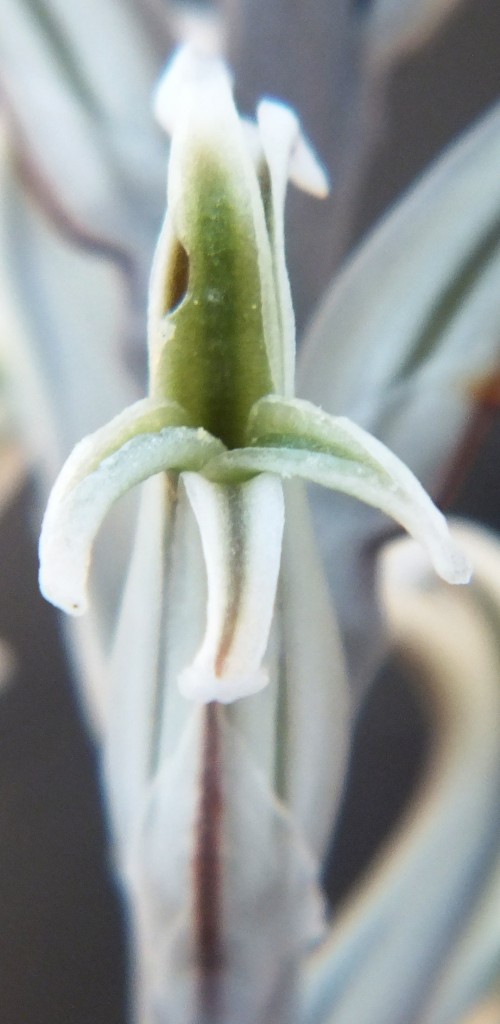
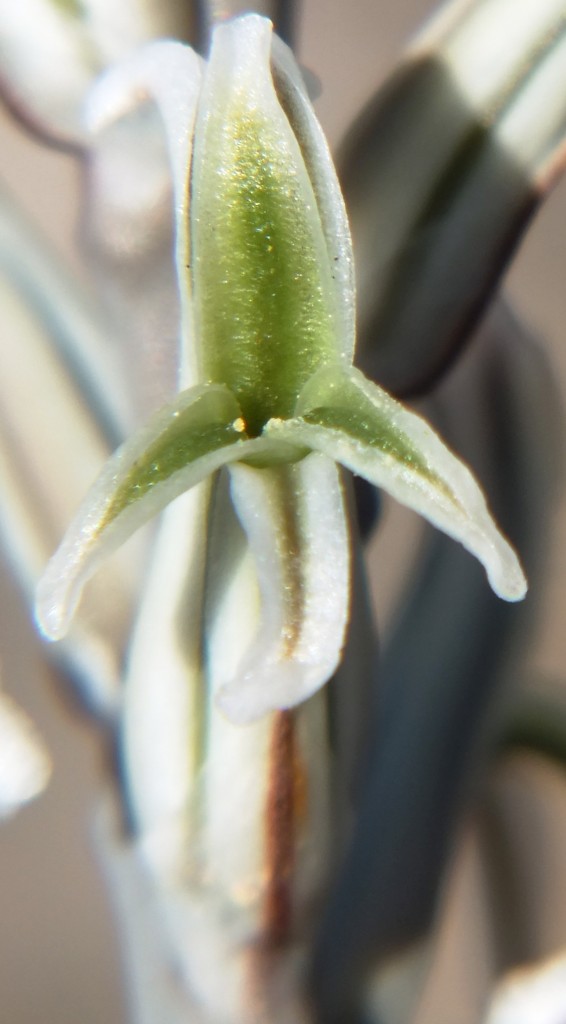
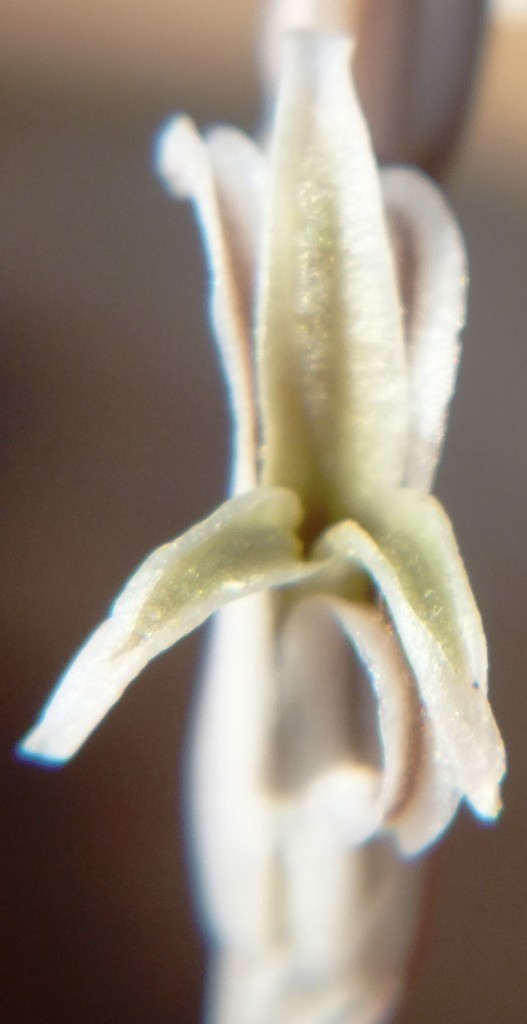
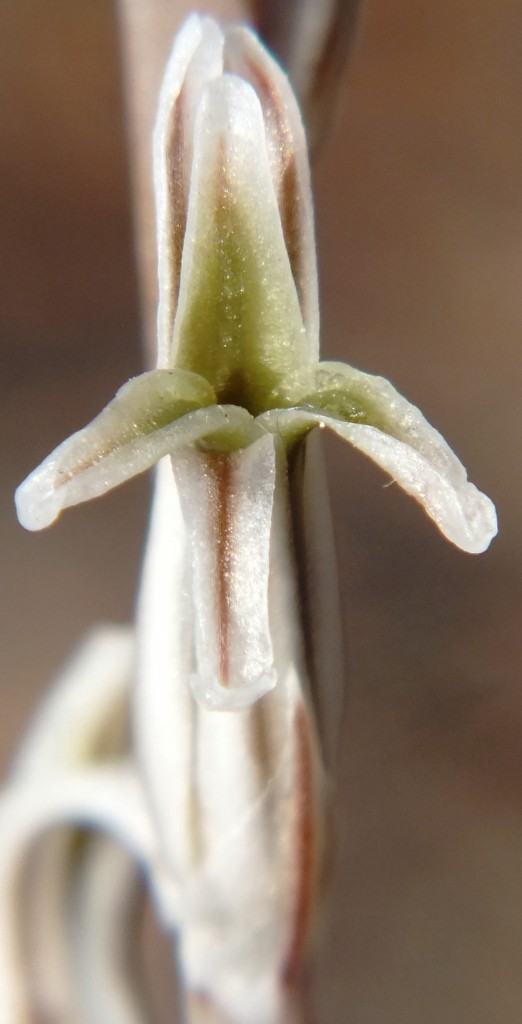
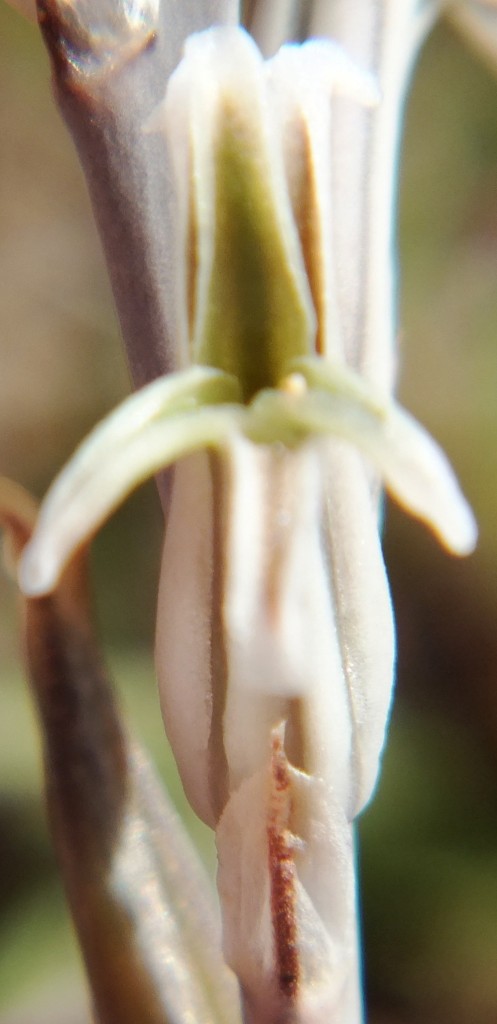
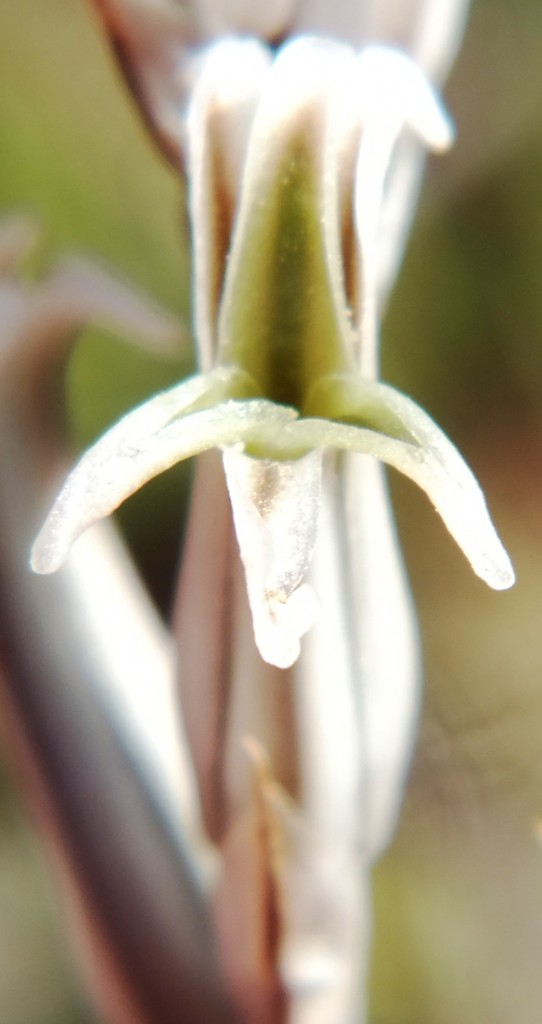
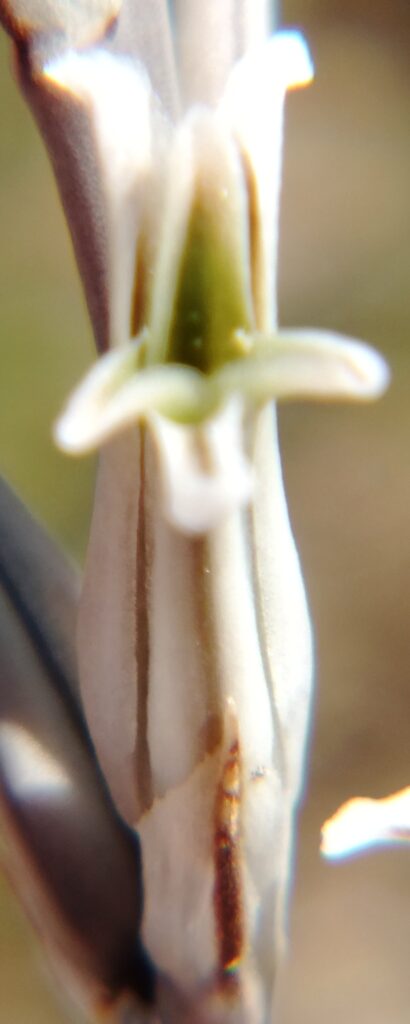
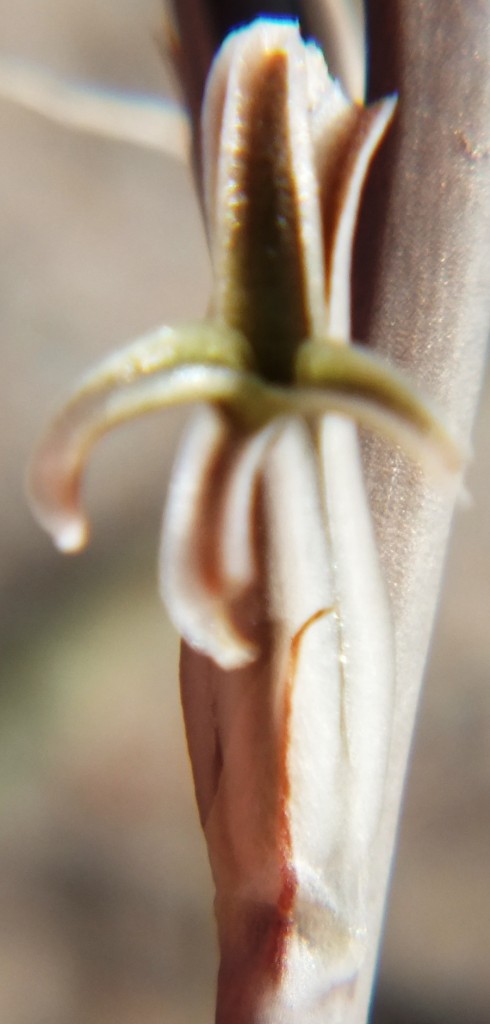
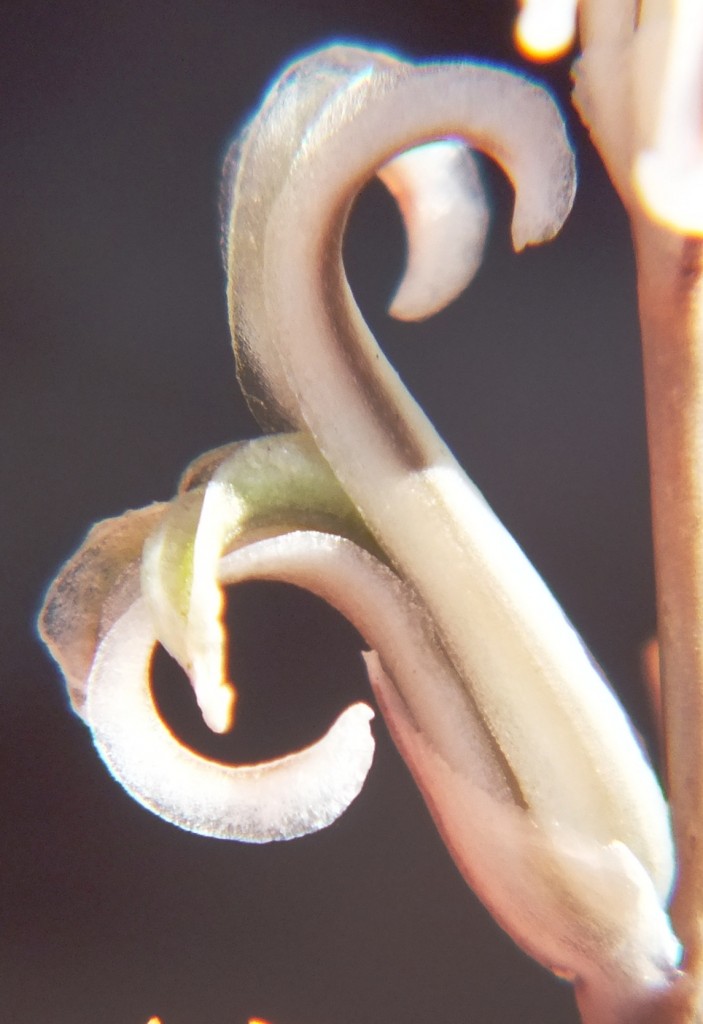
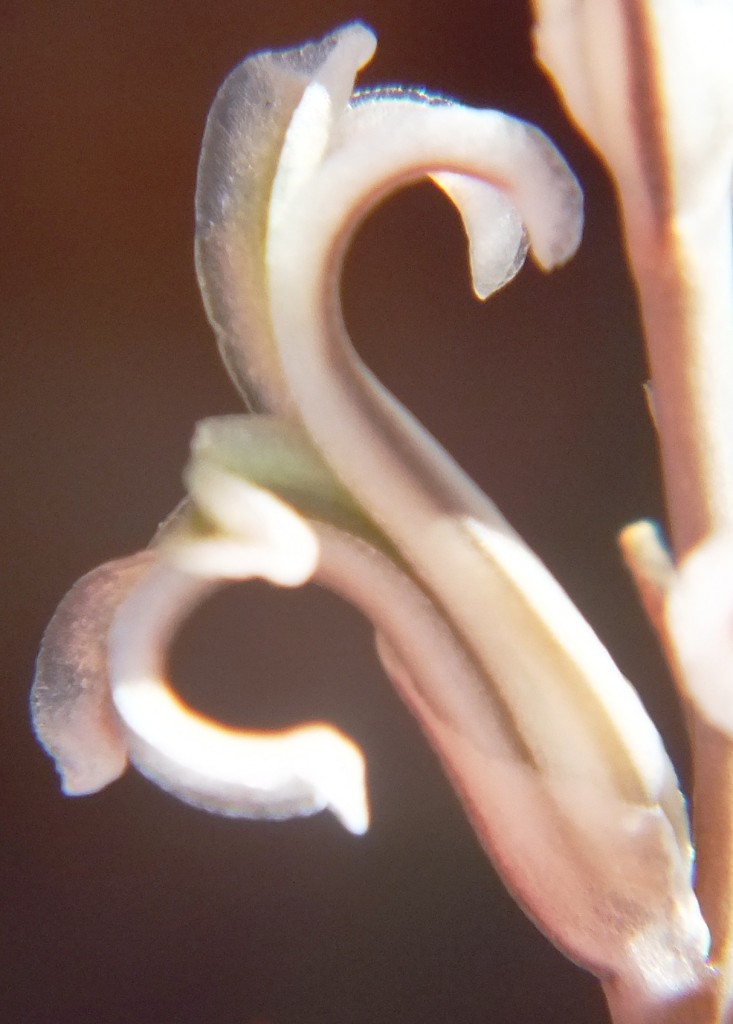
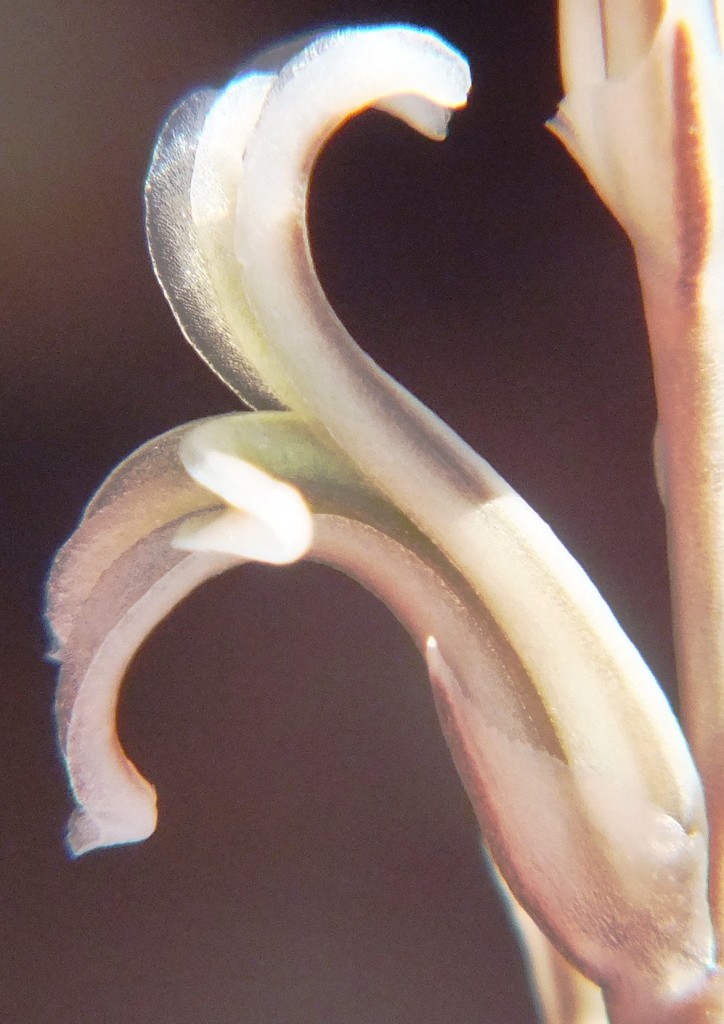
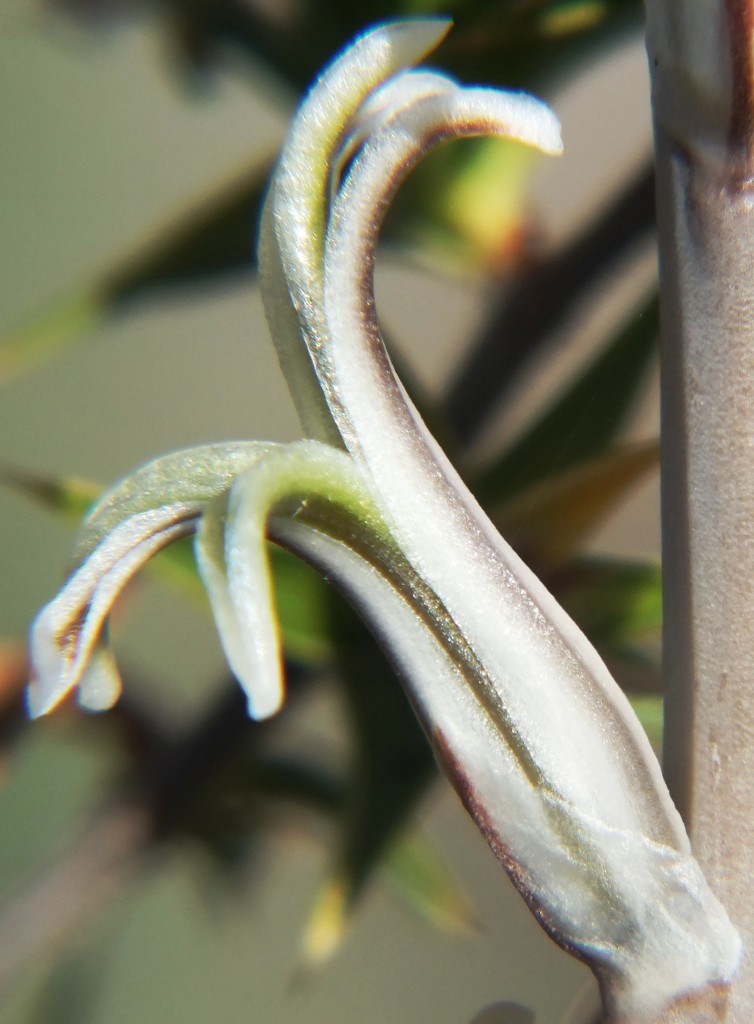
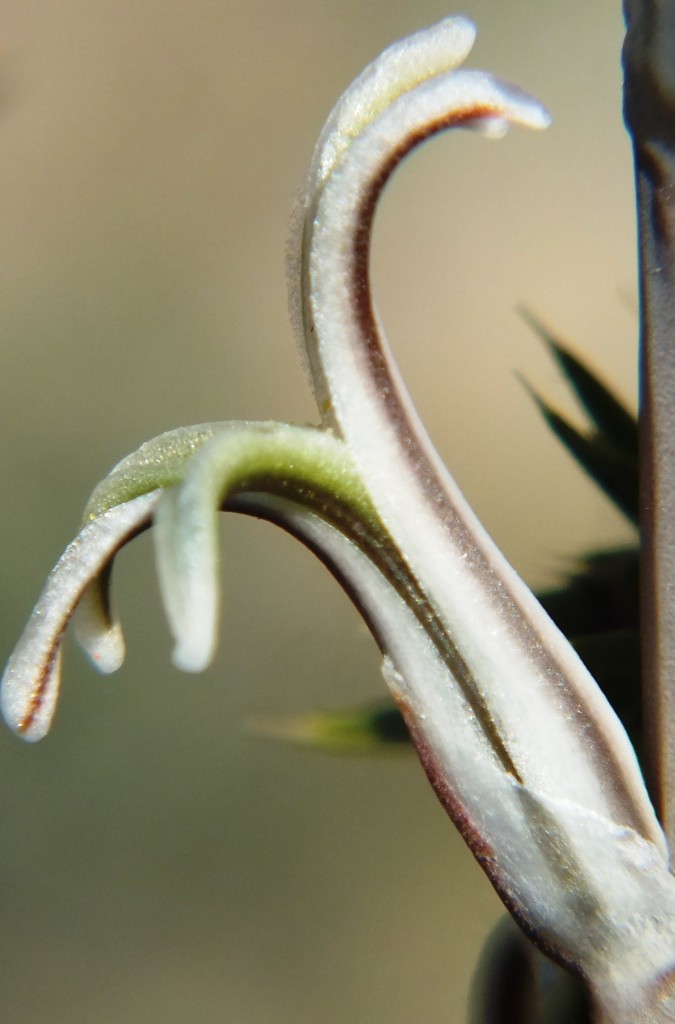
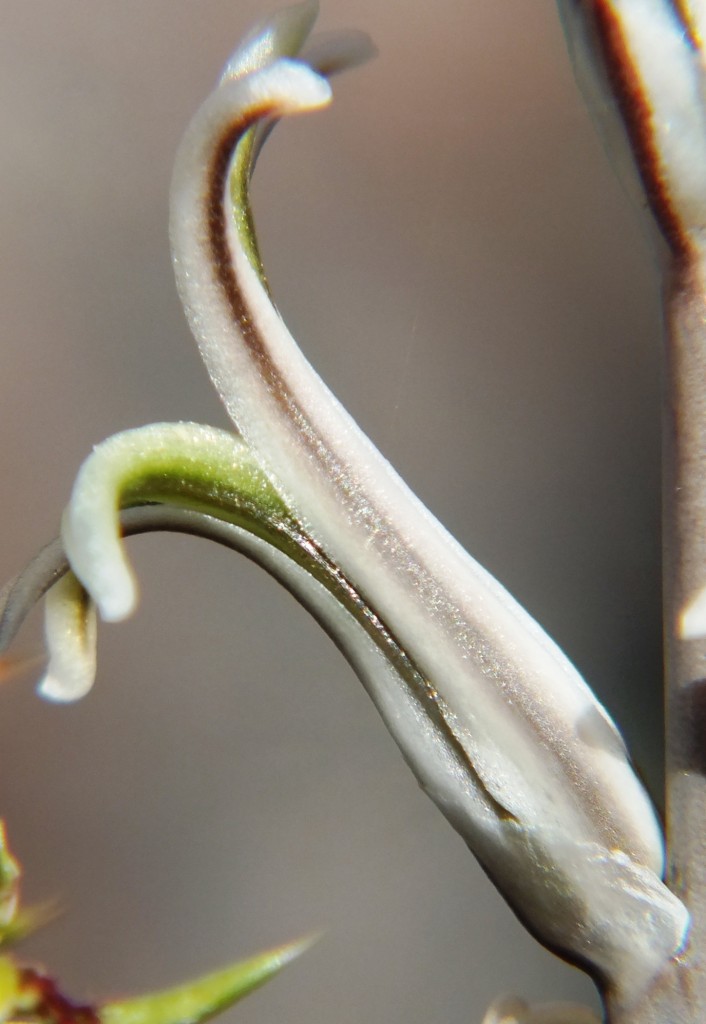
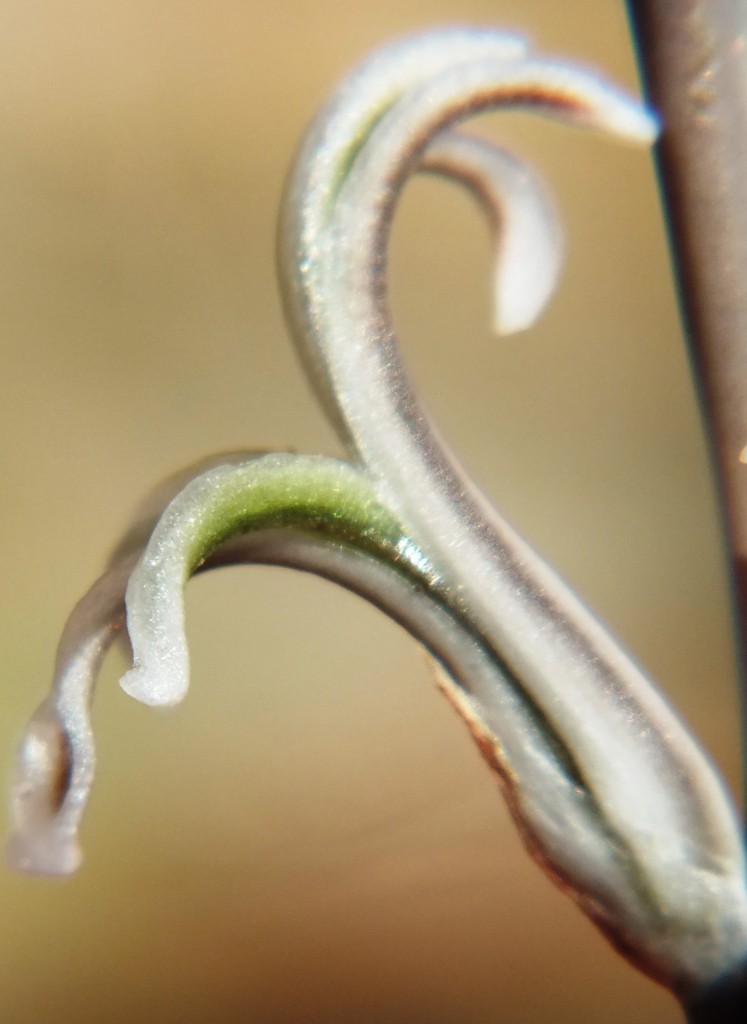
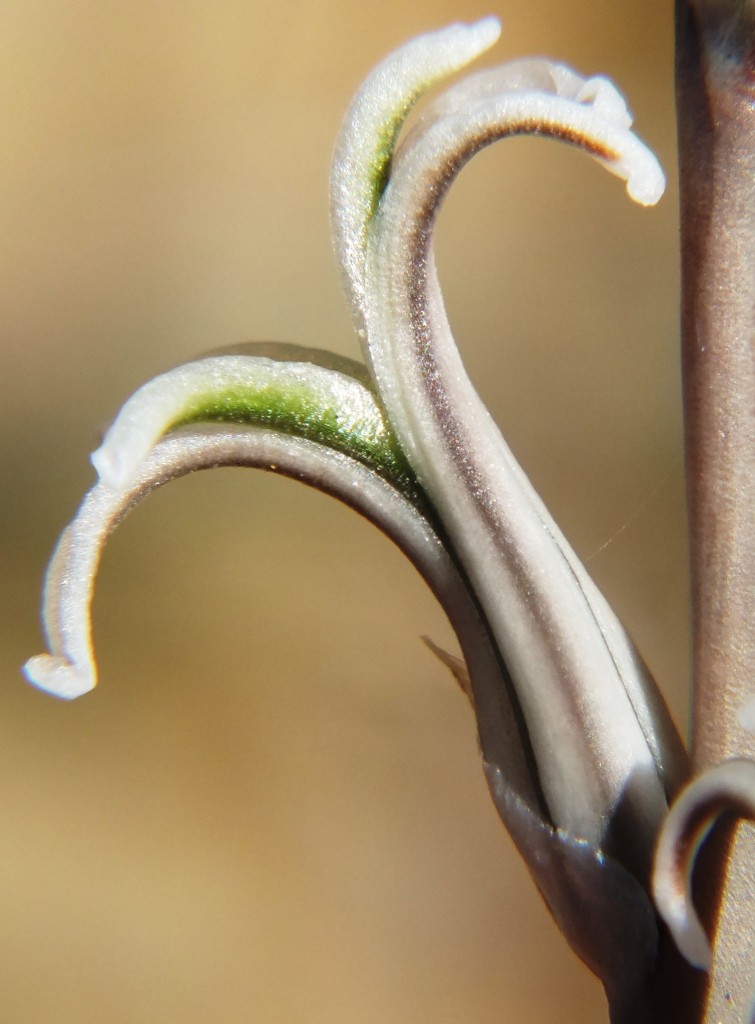
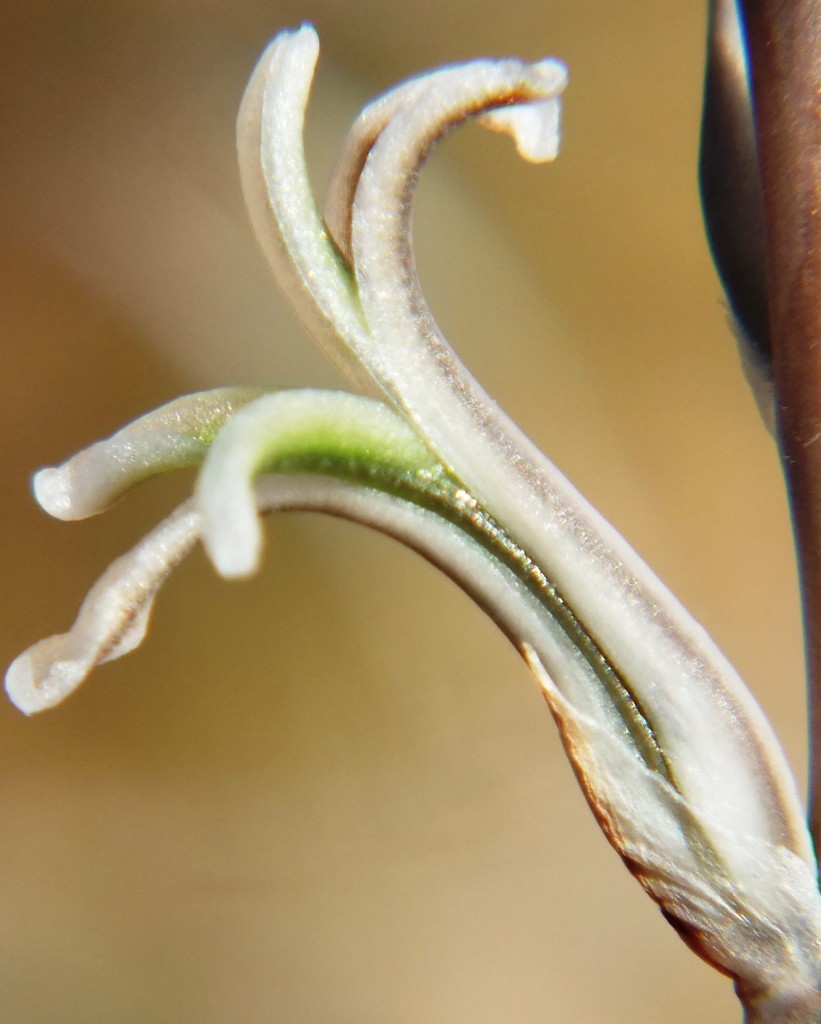
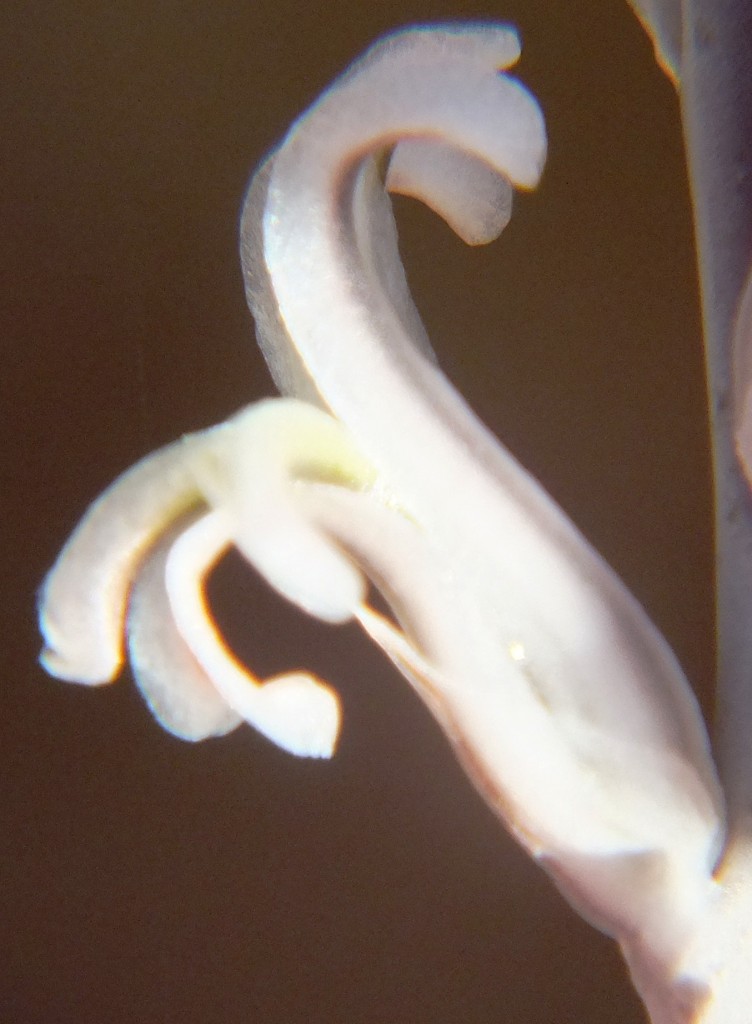


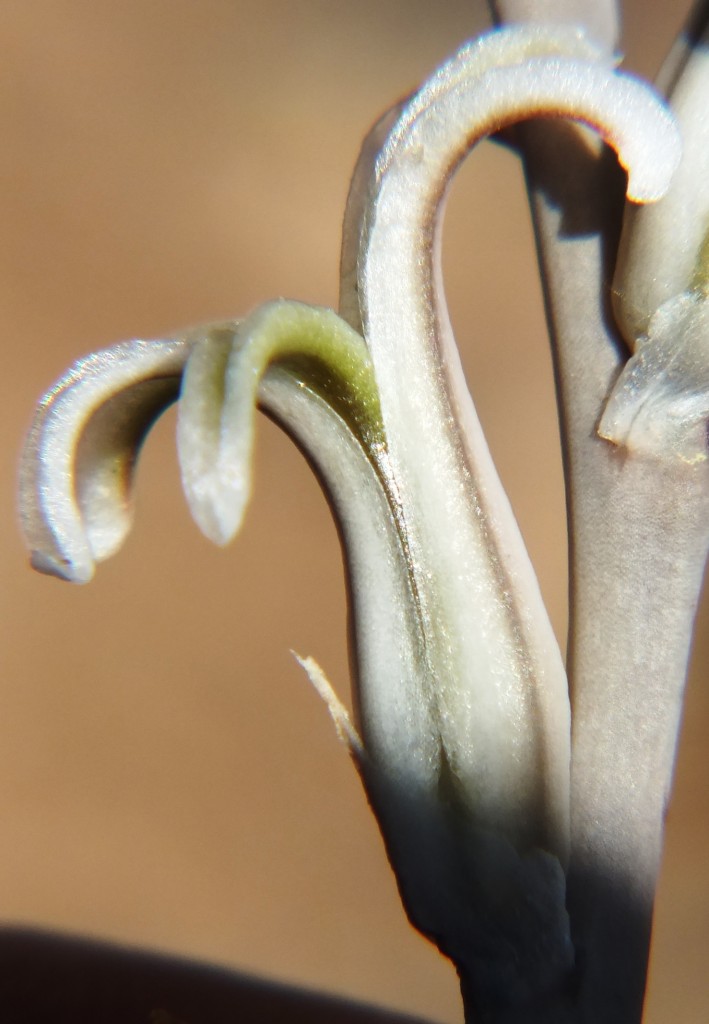
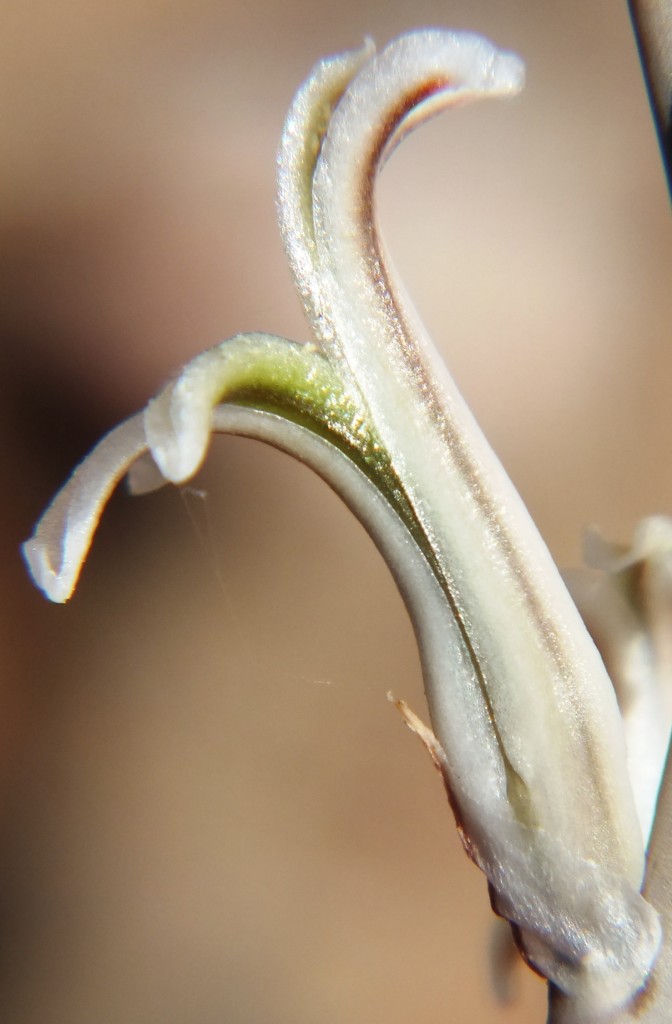
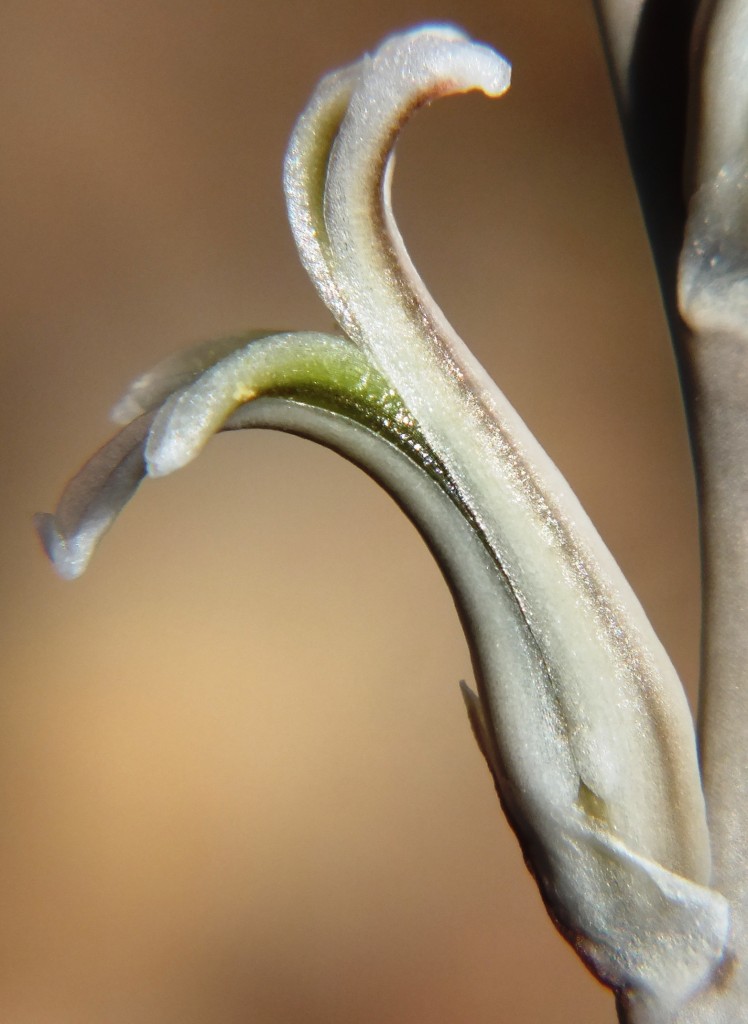
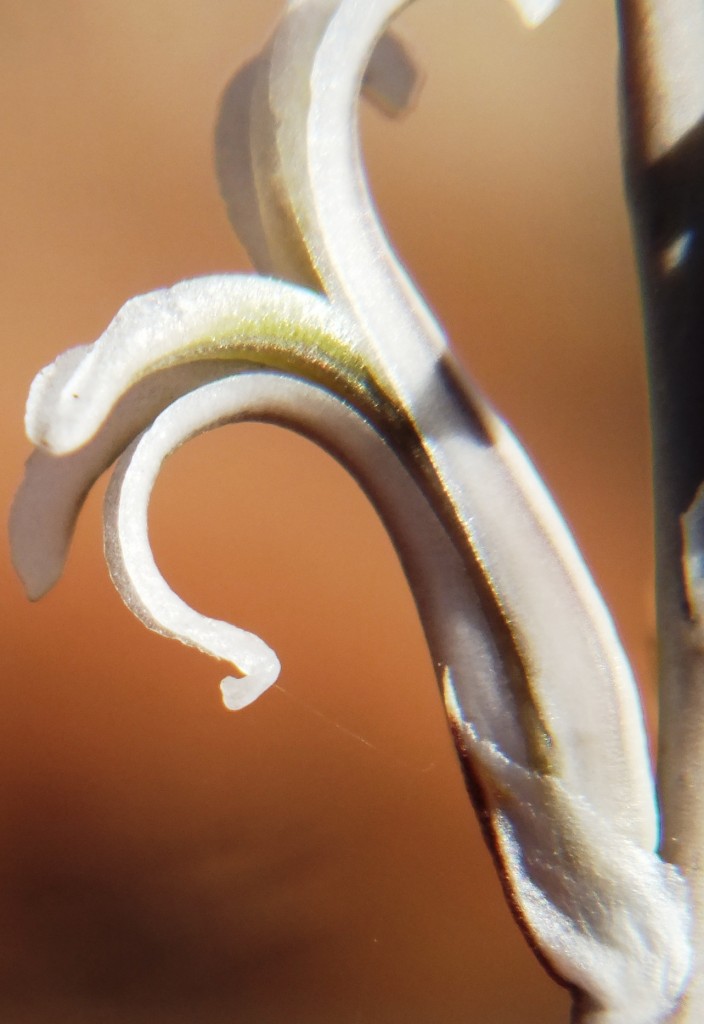
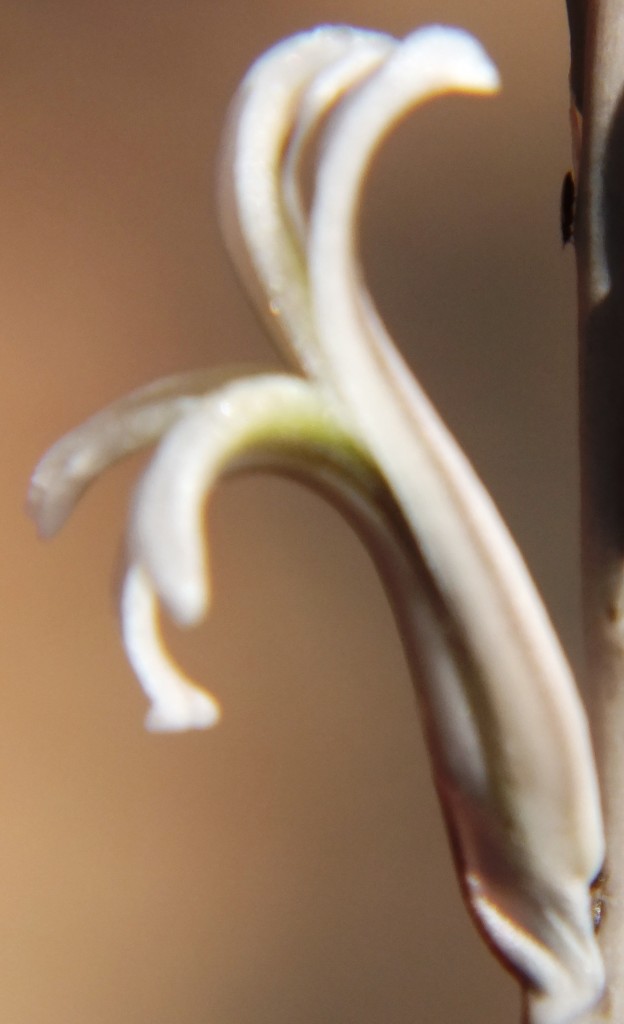
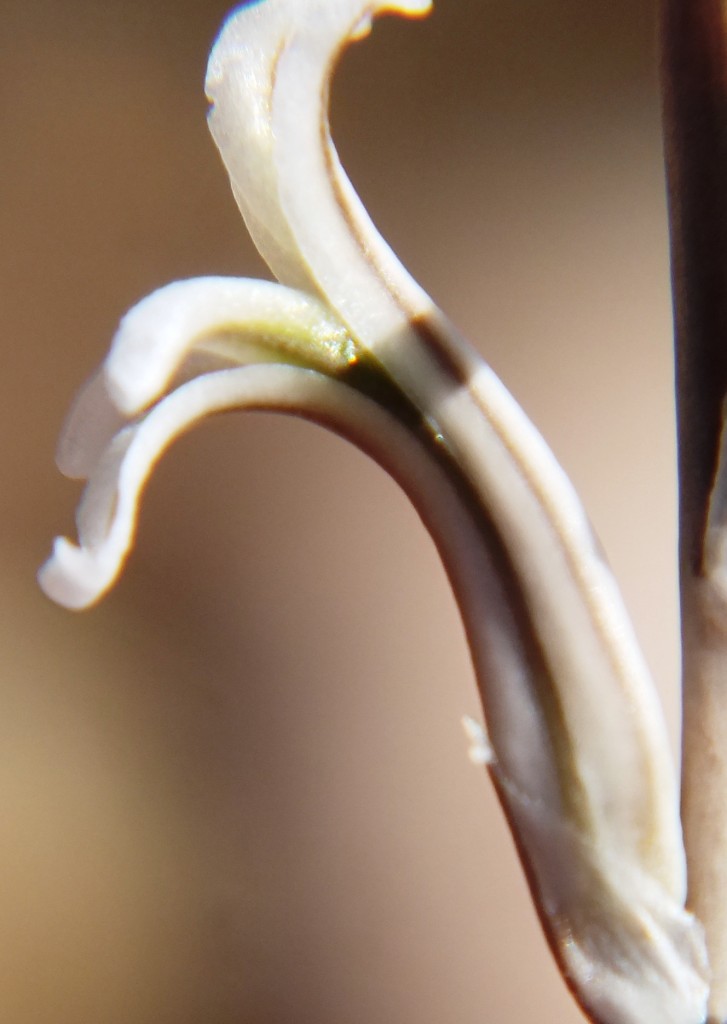

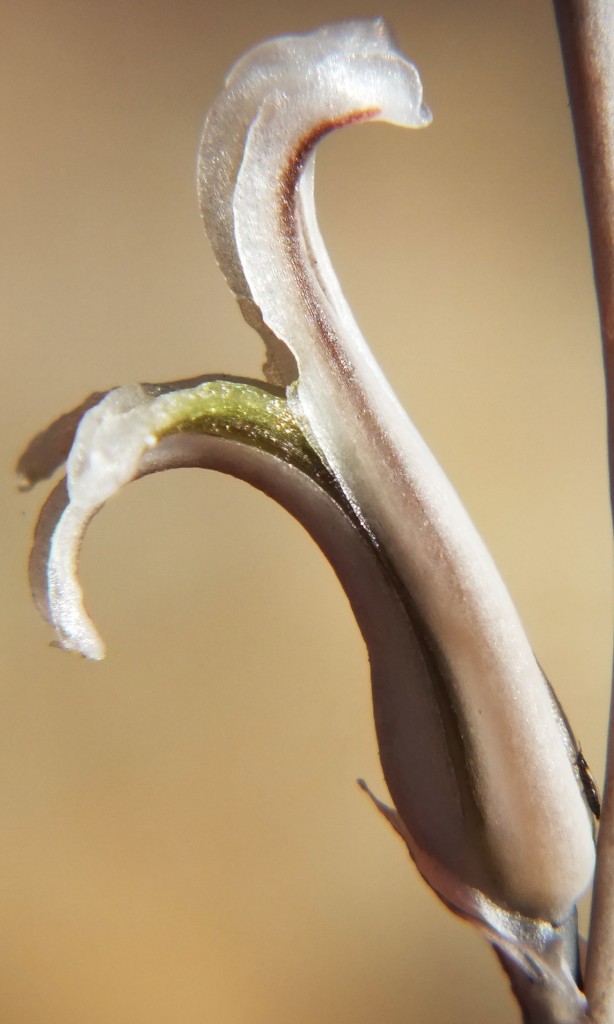
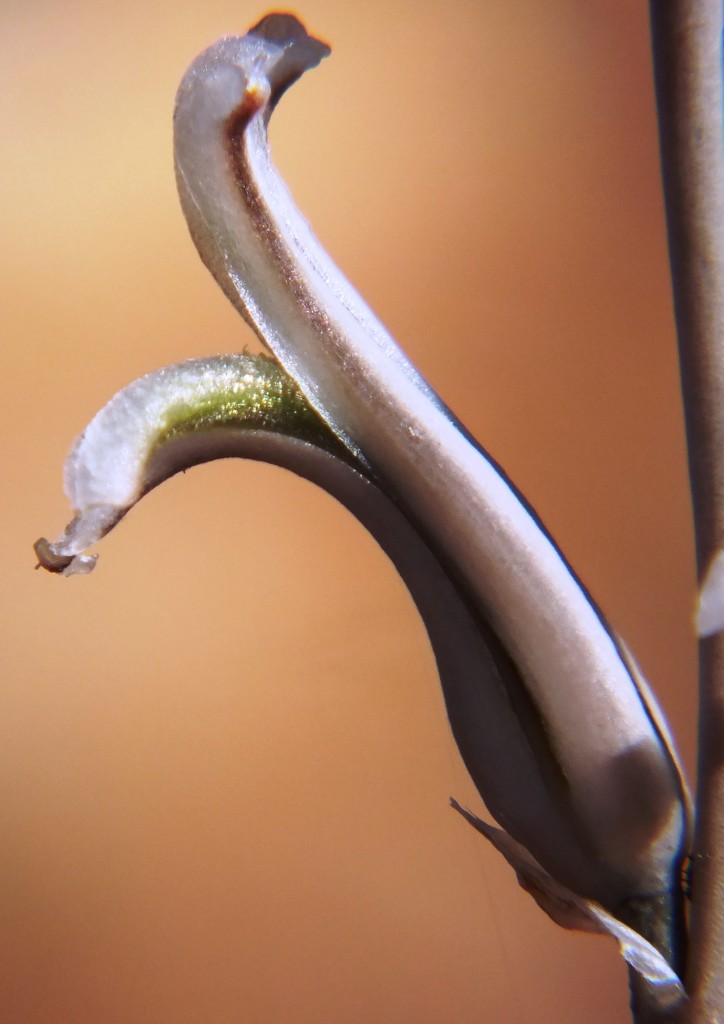
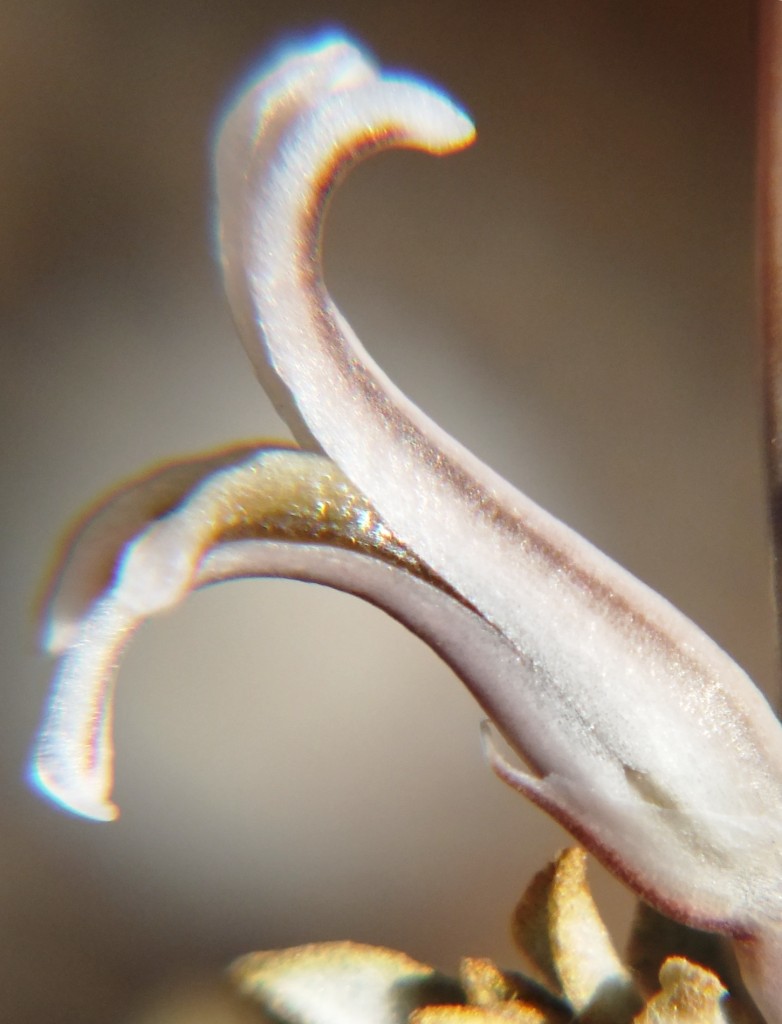

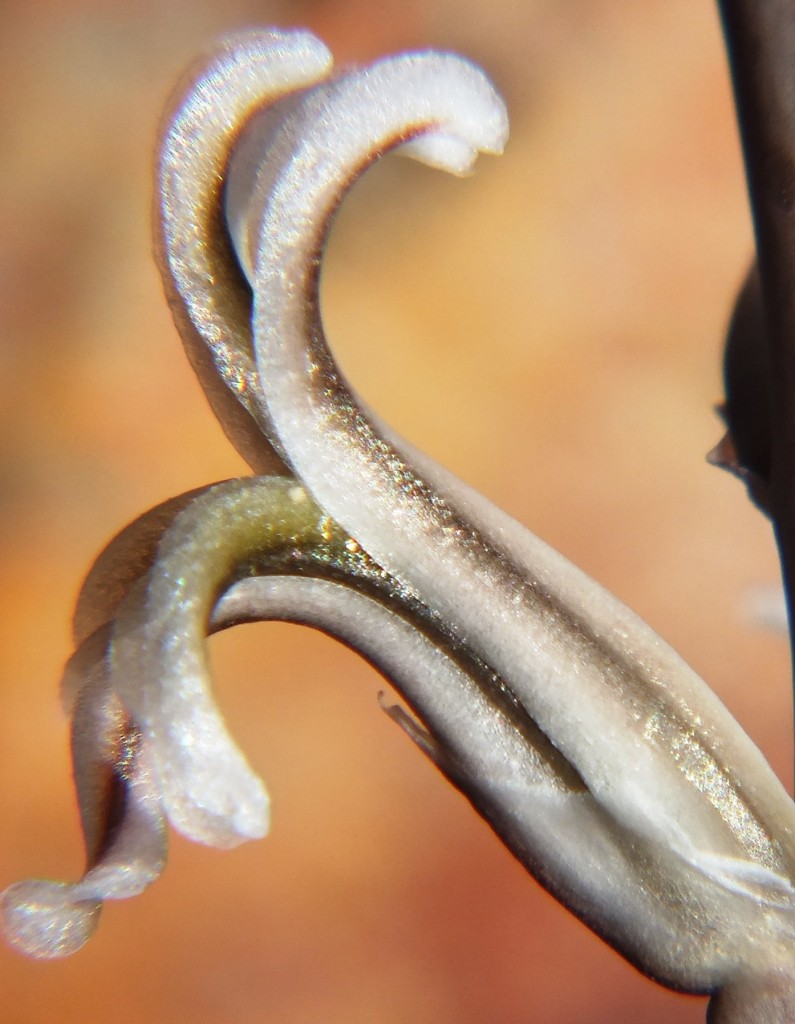
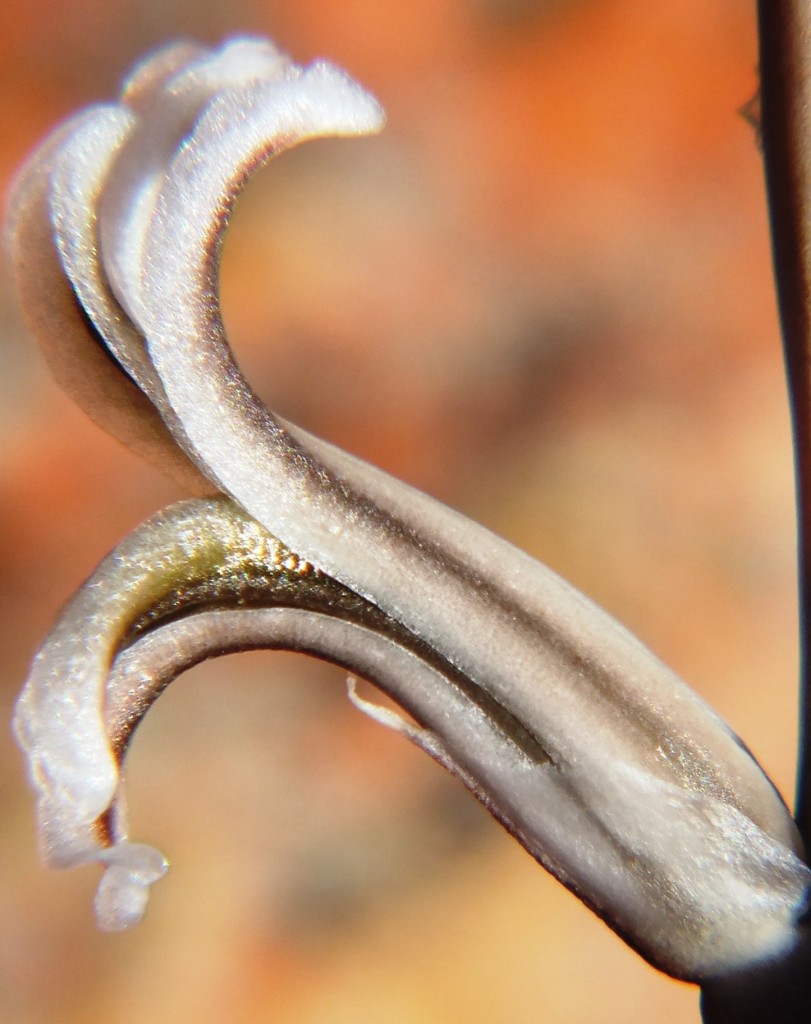
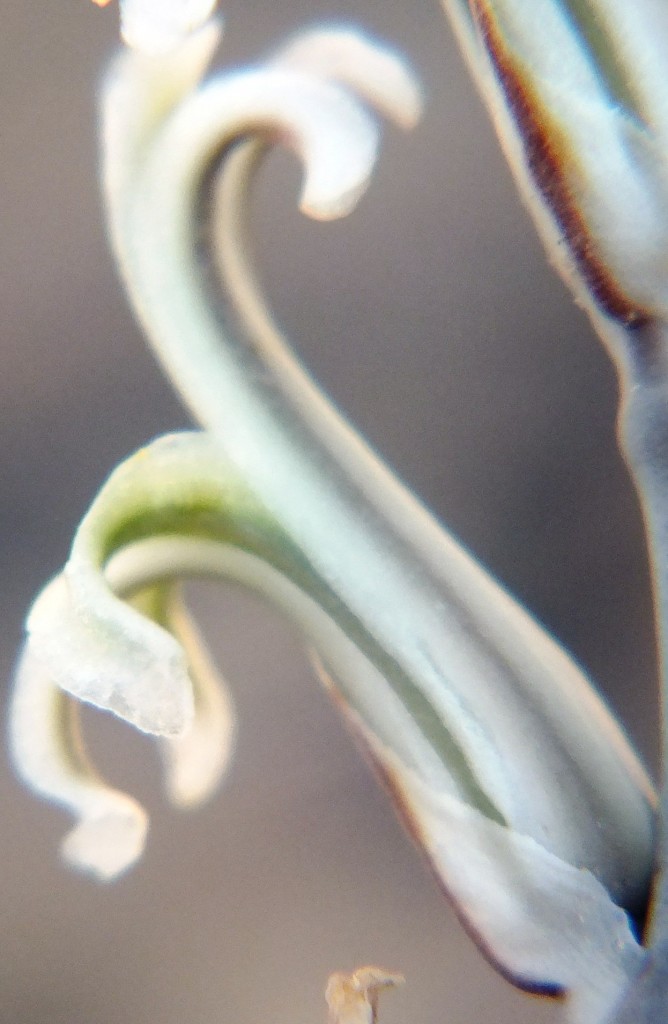

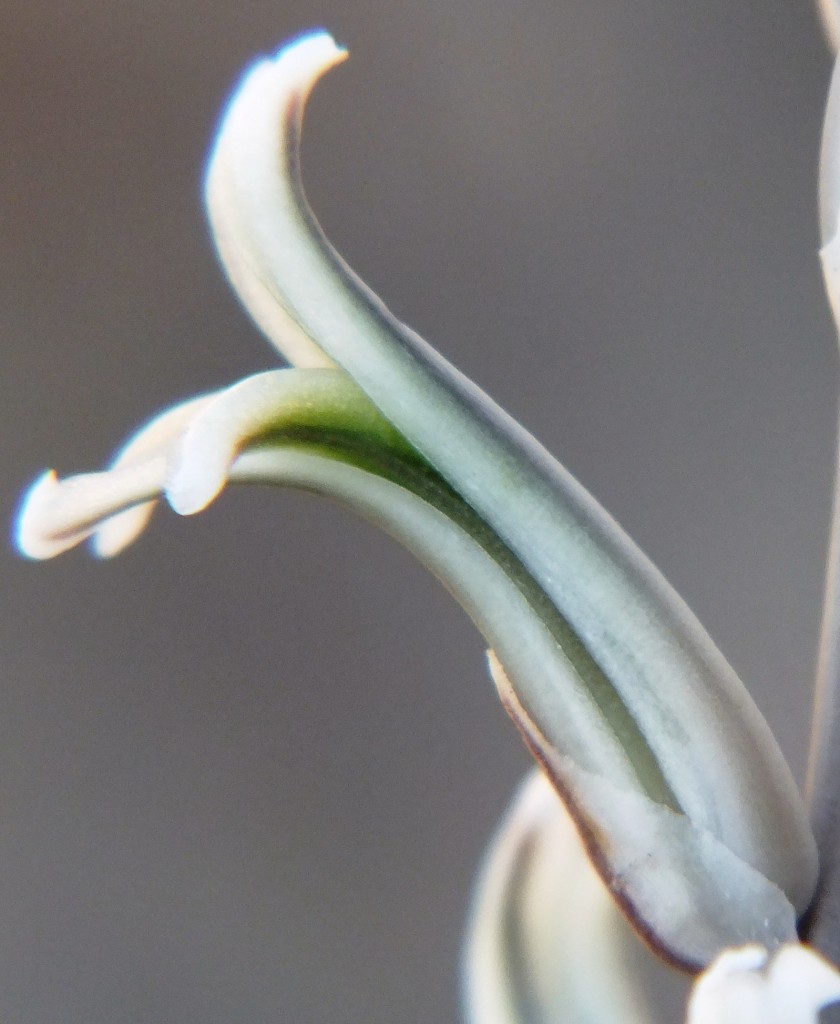
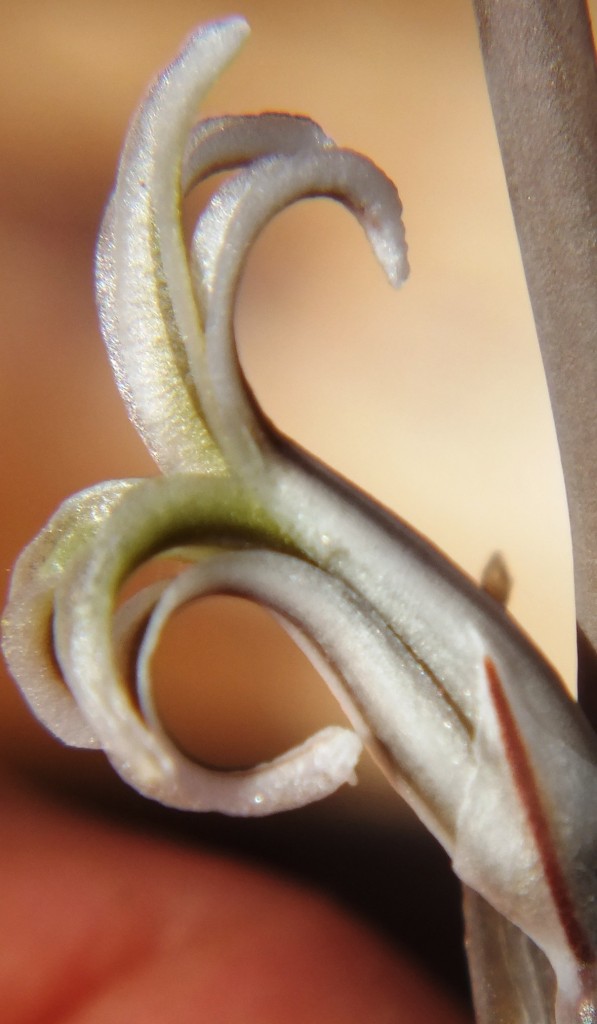

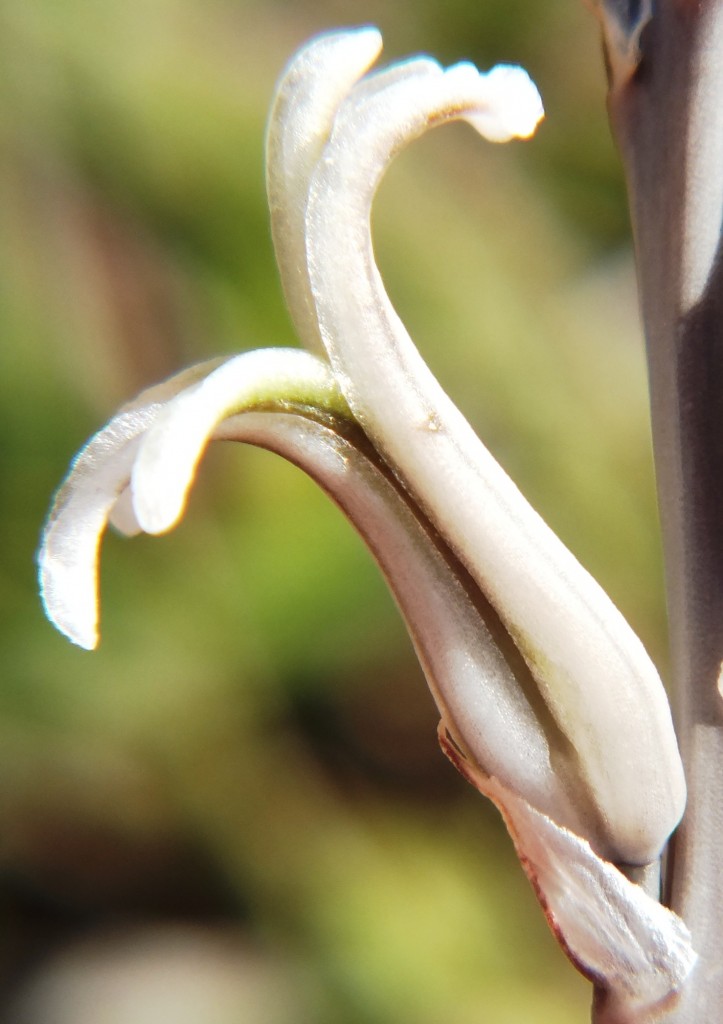
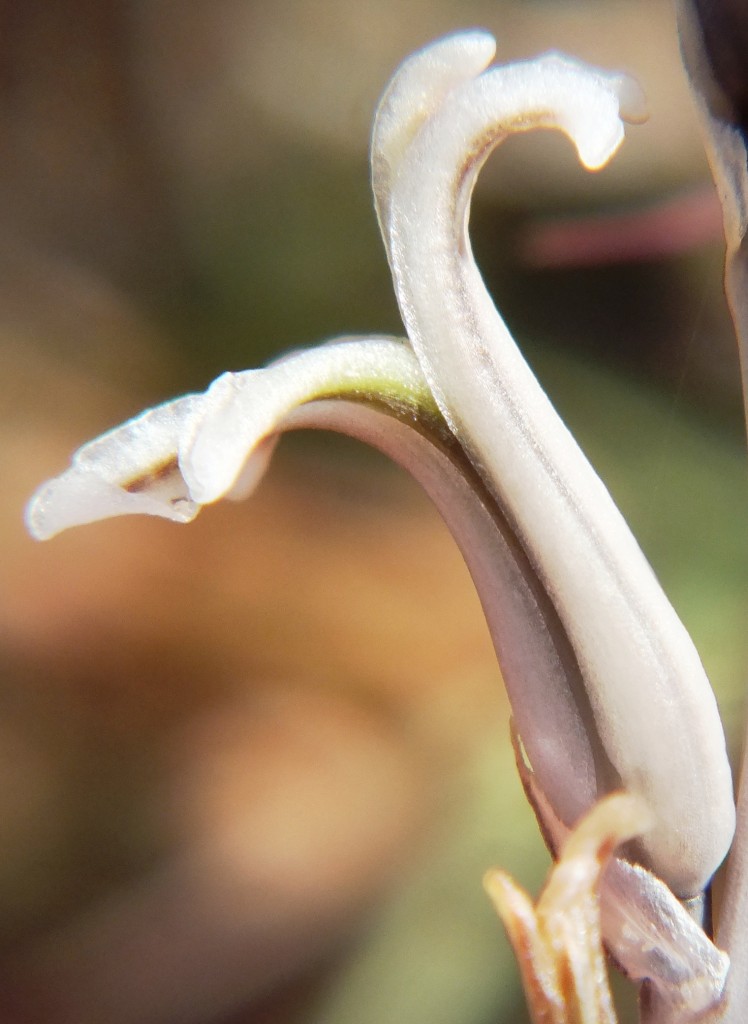
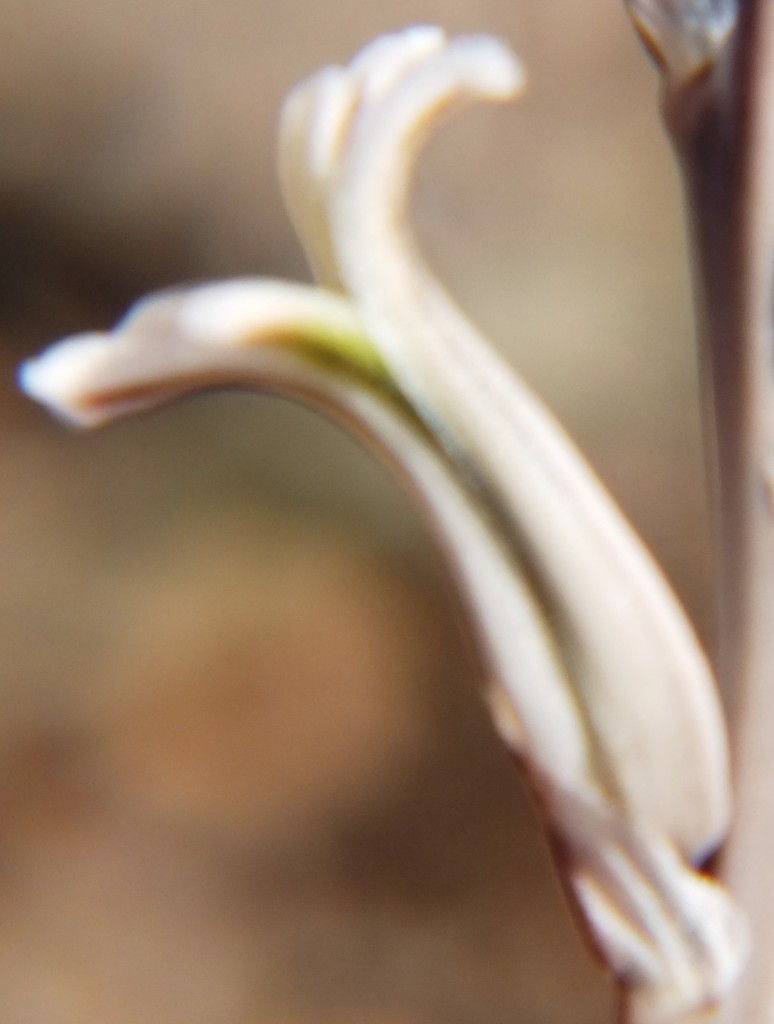

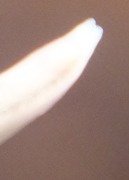
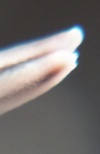
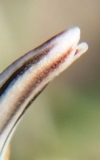
MBB7920 Van Reenens H. retusa (nigra), Crest.
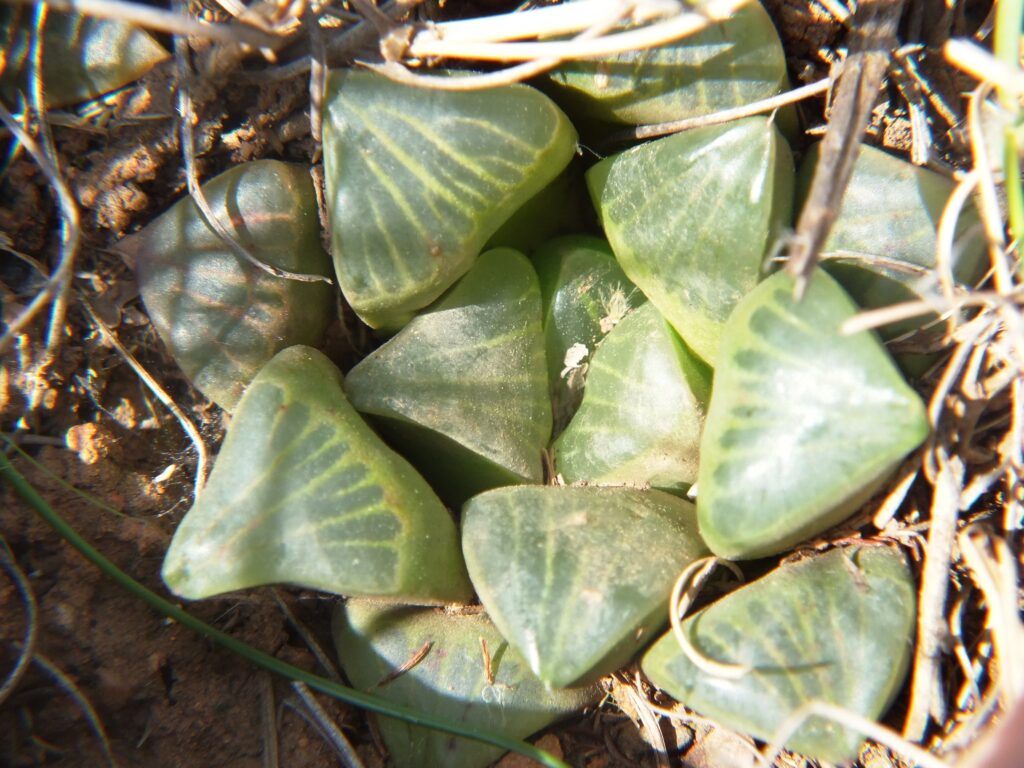
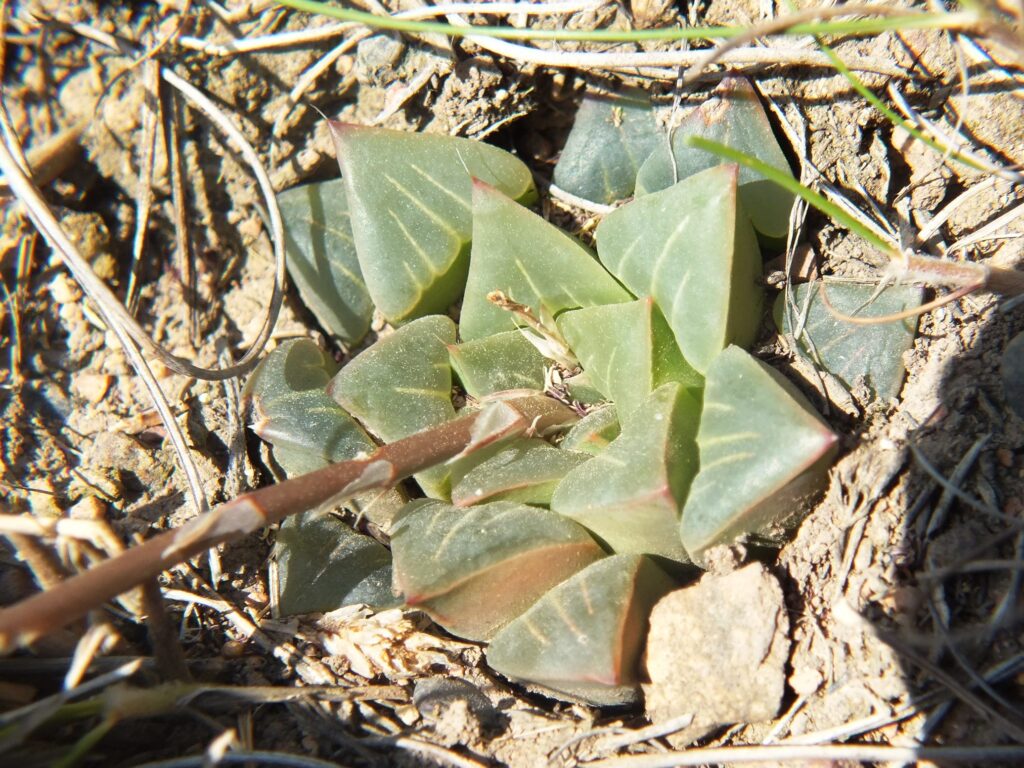
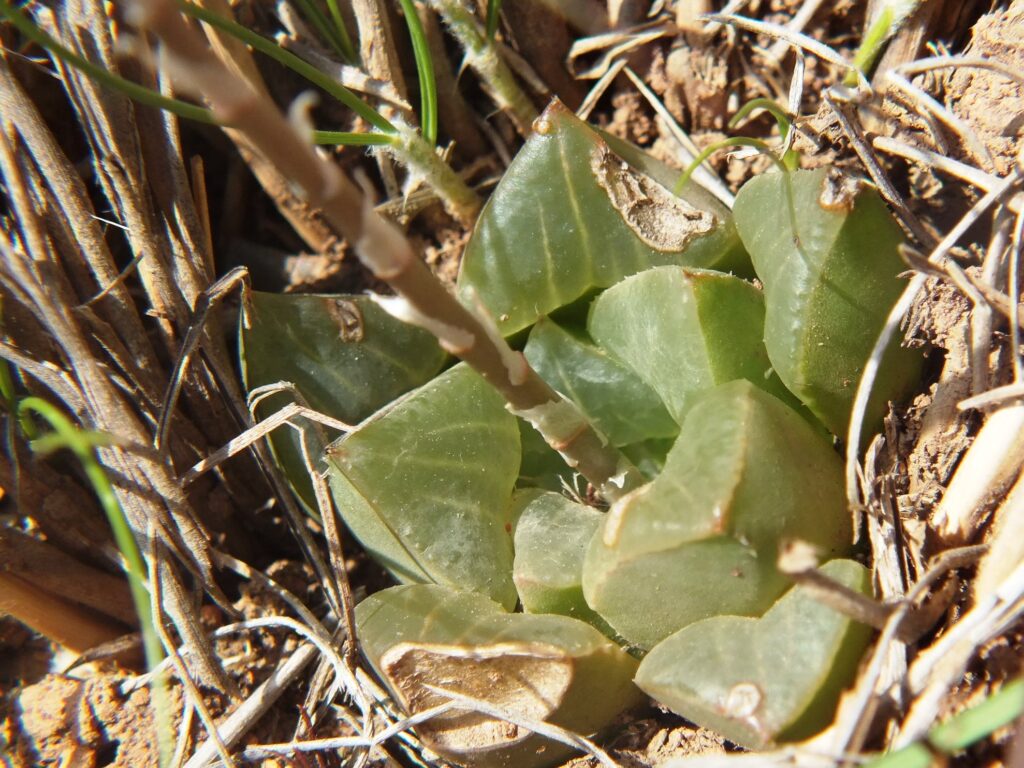
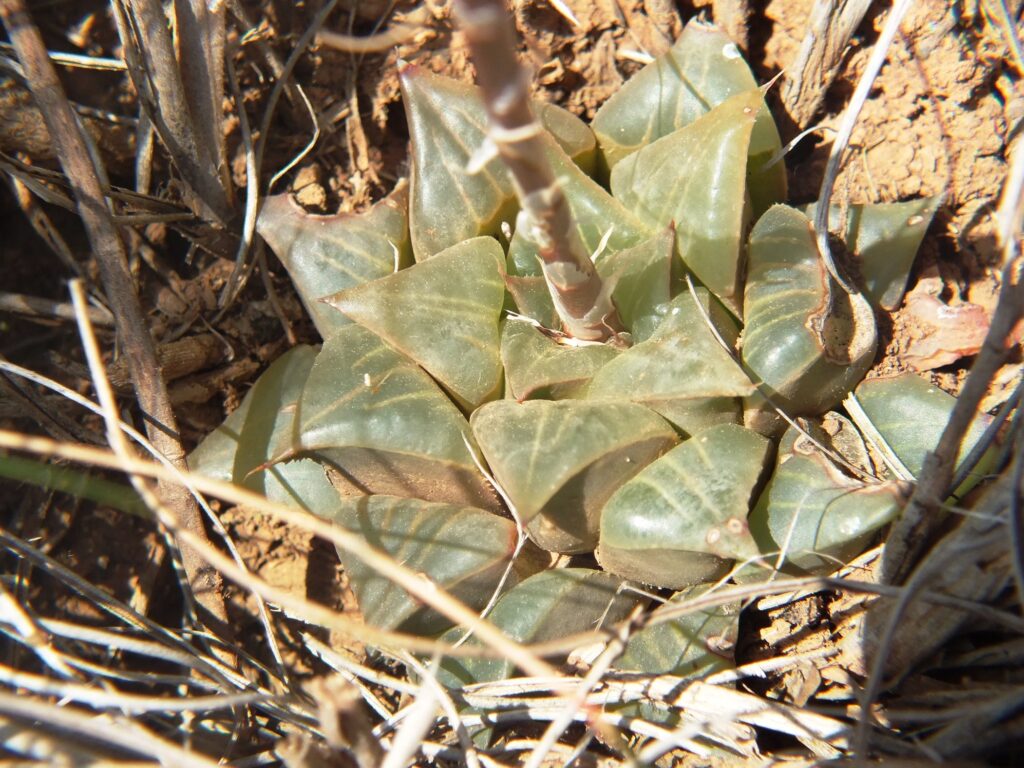
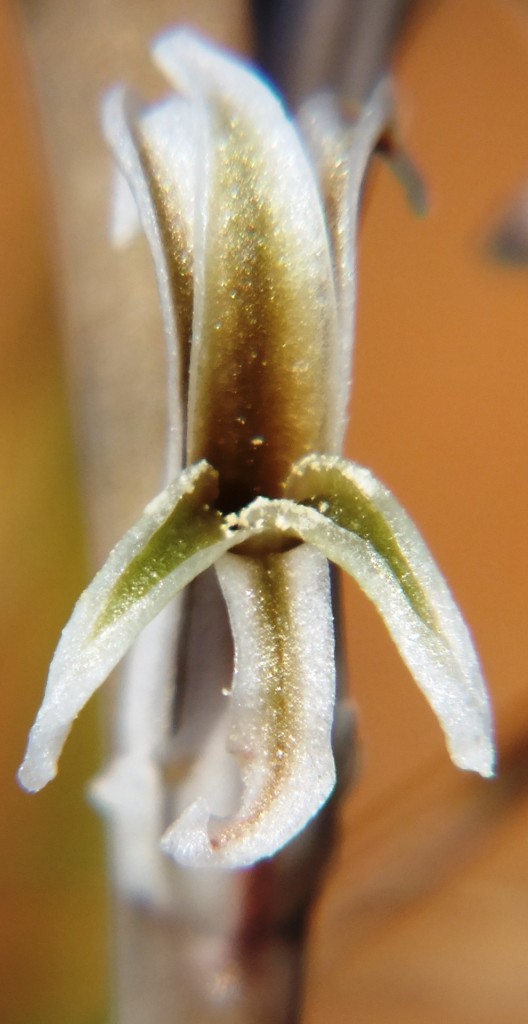


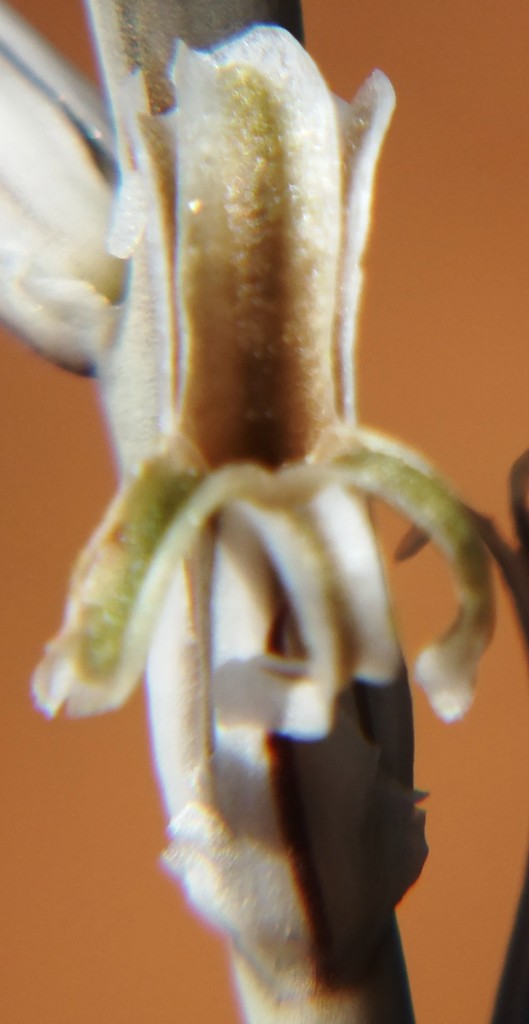
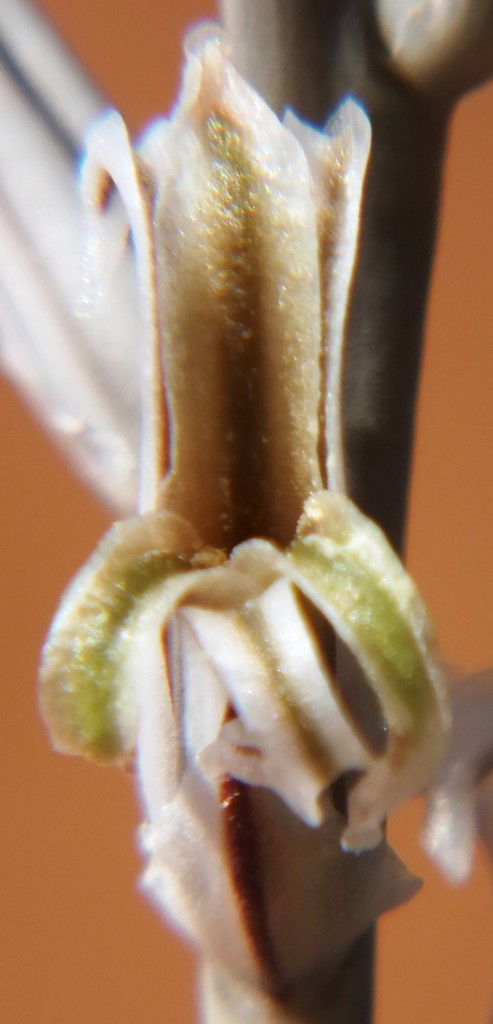

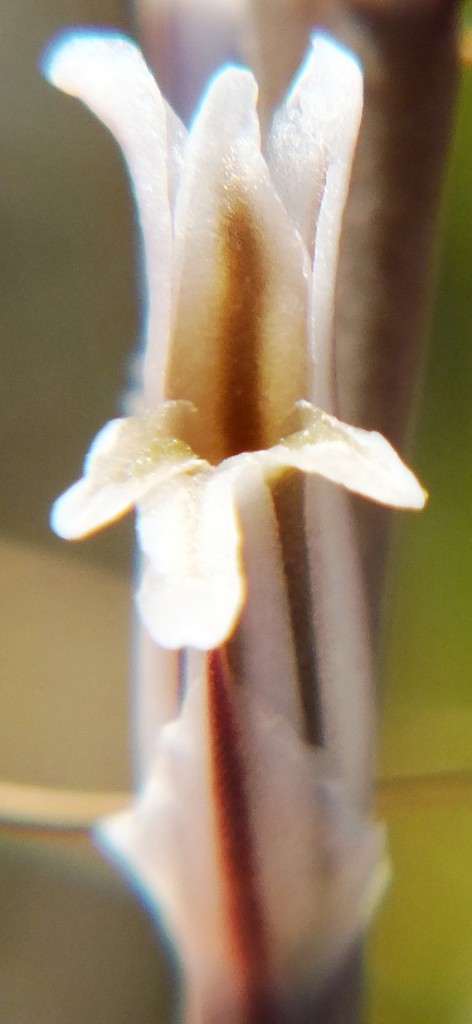

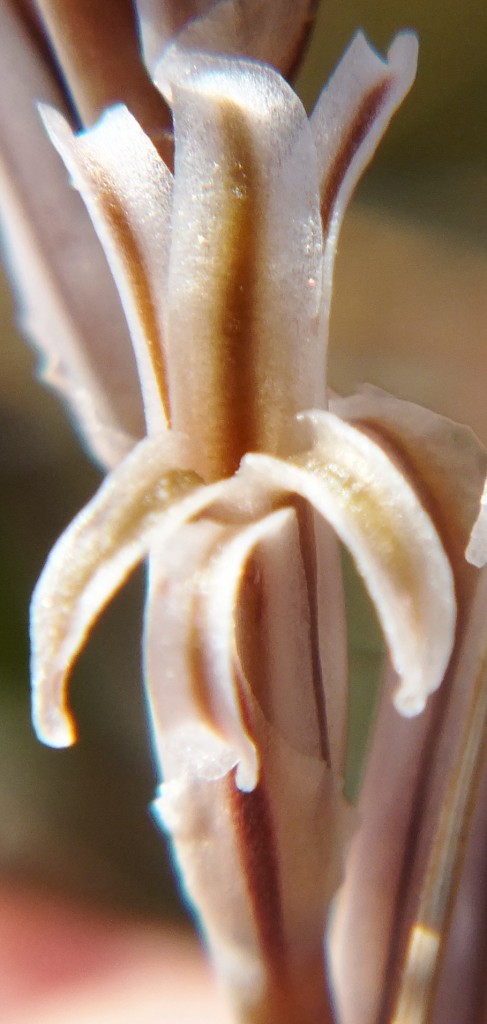
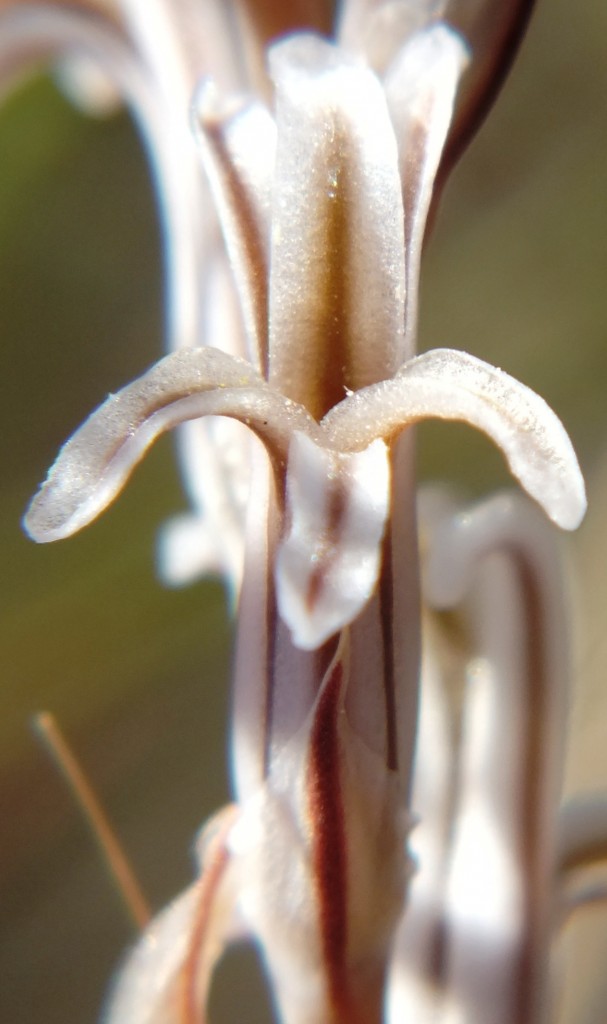
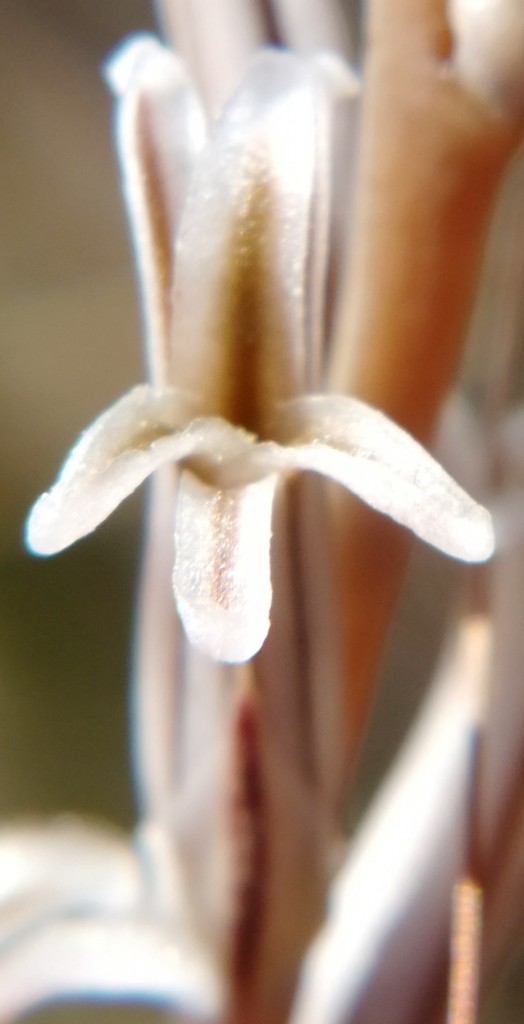
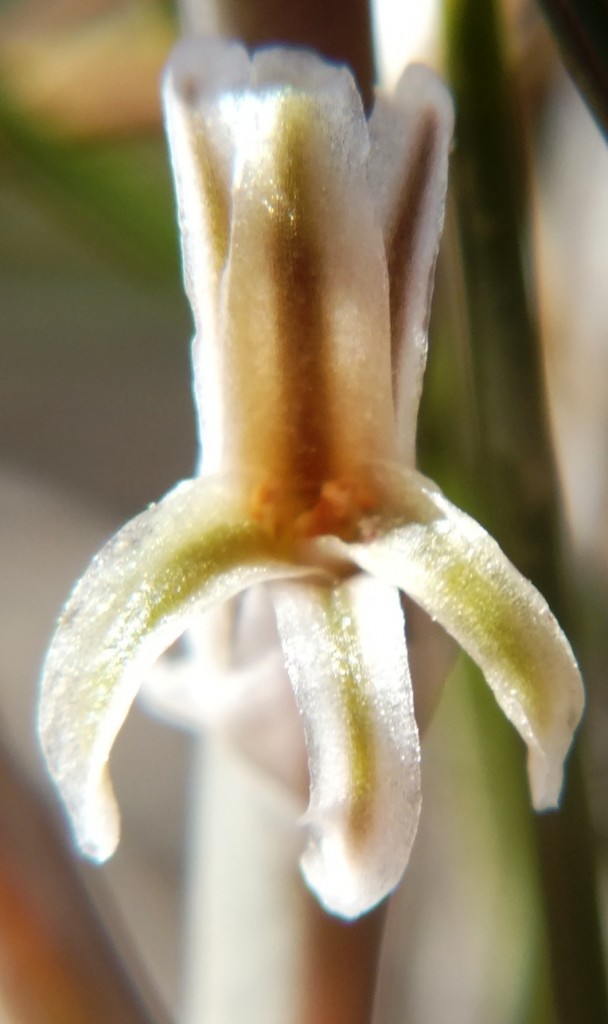
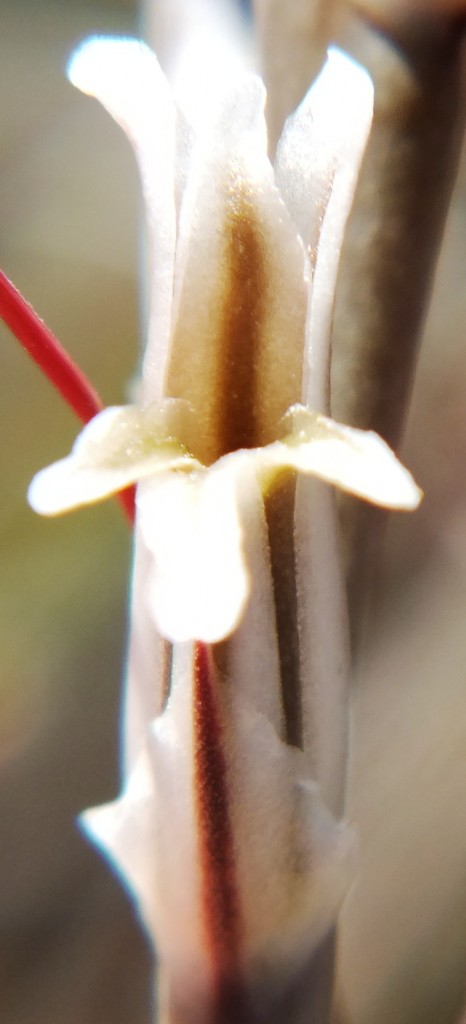
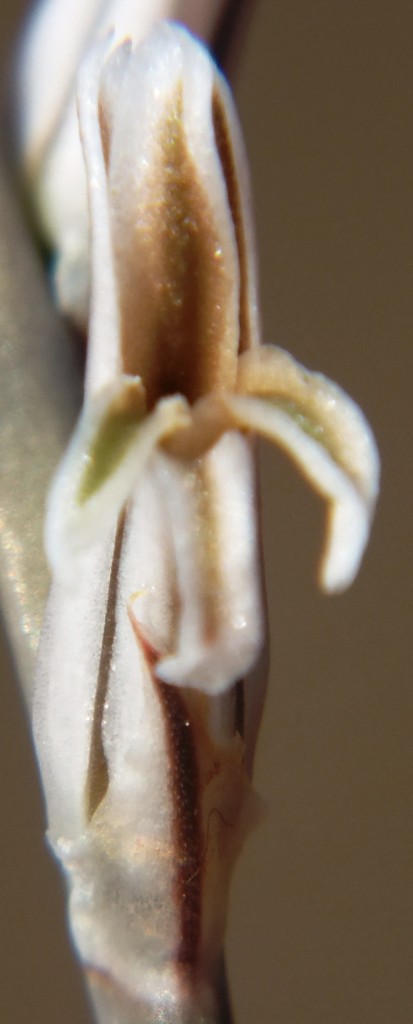
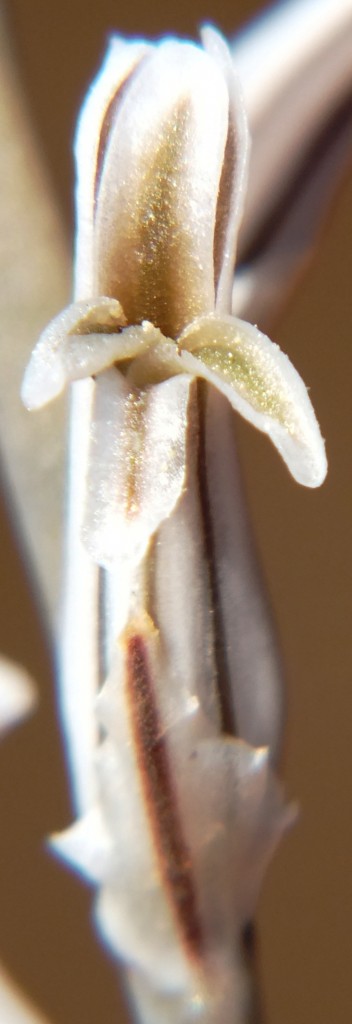
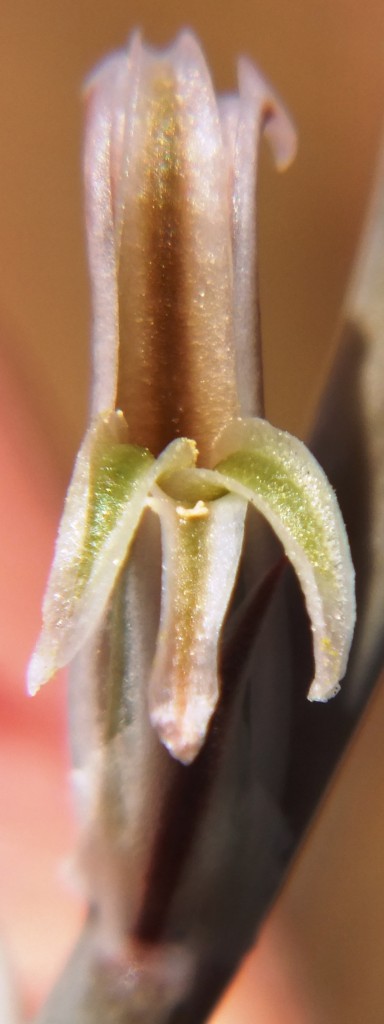

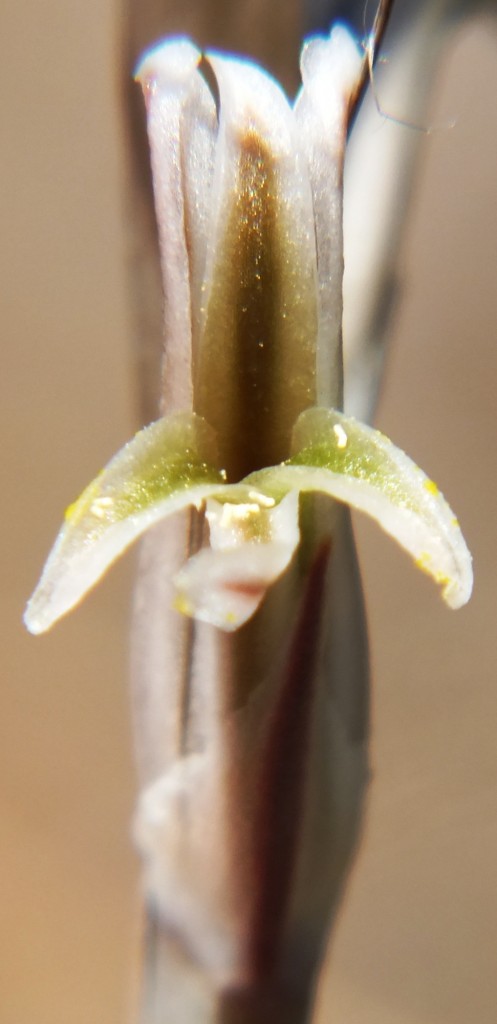
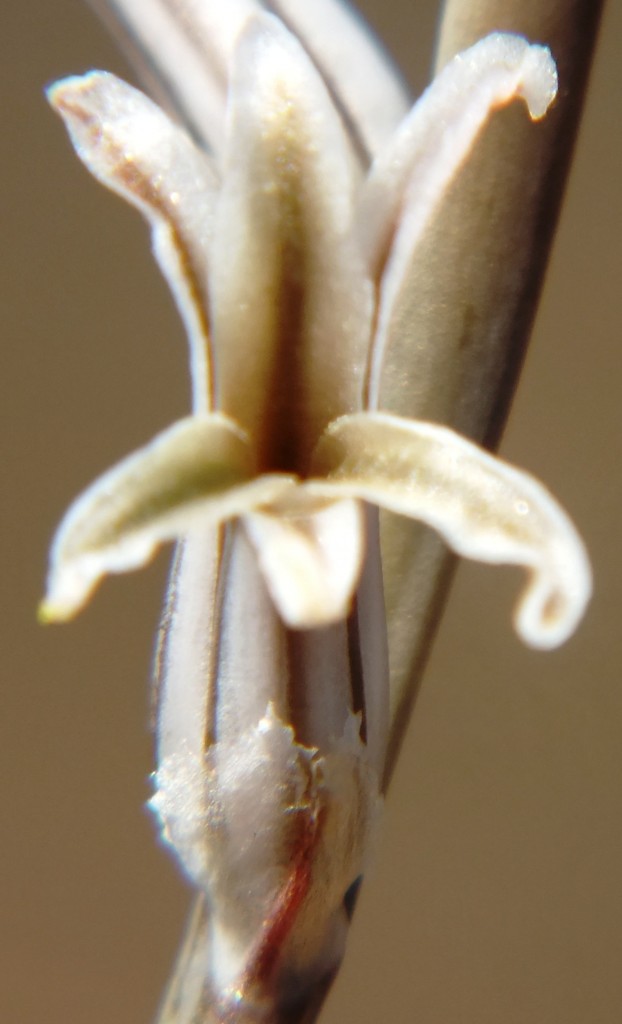
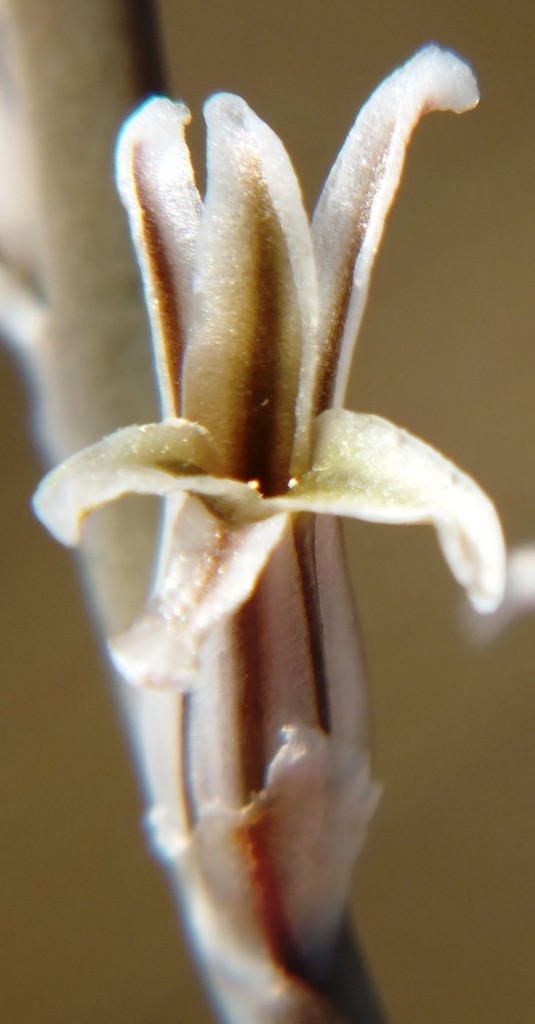
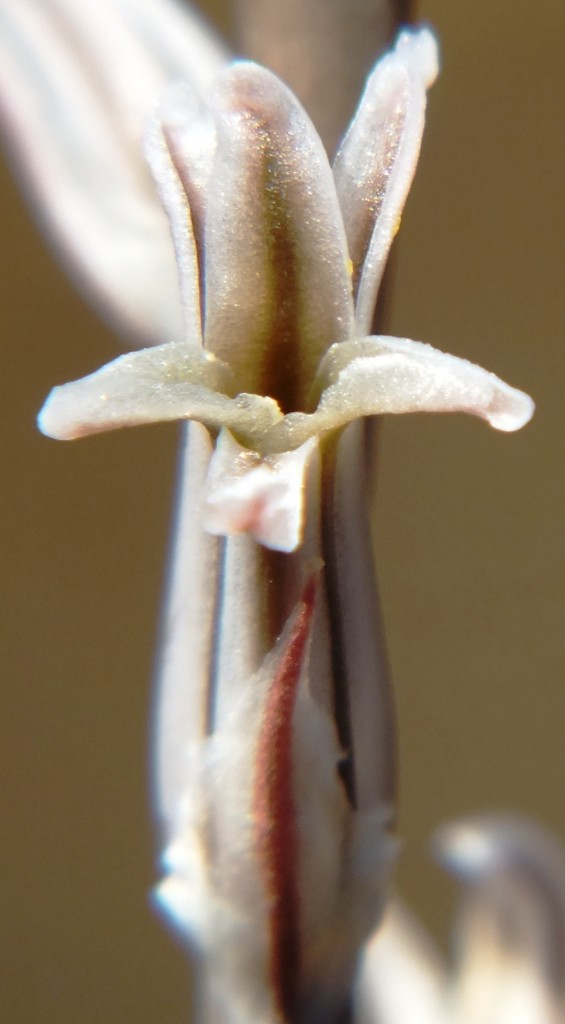
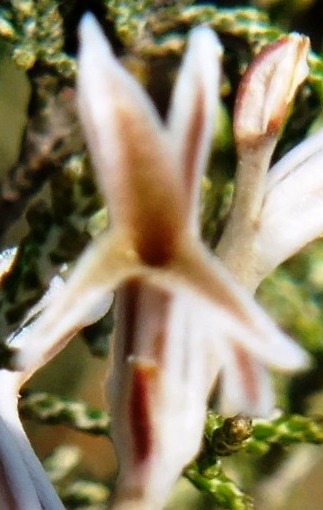
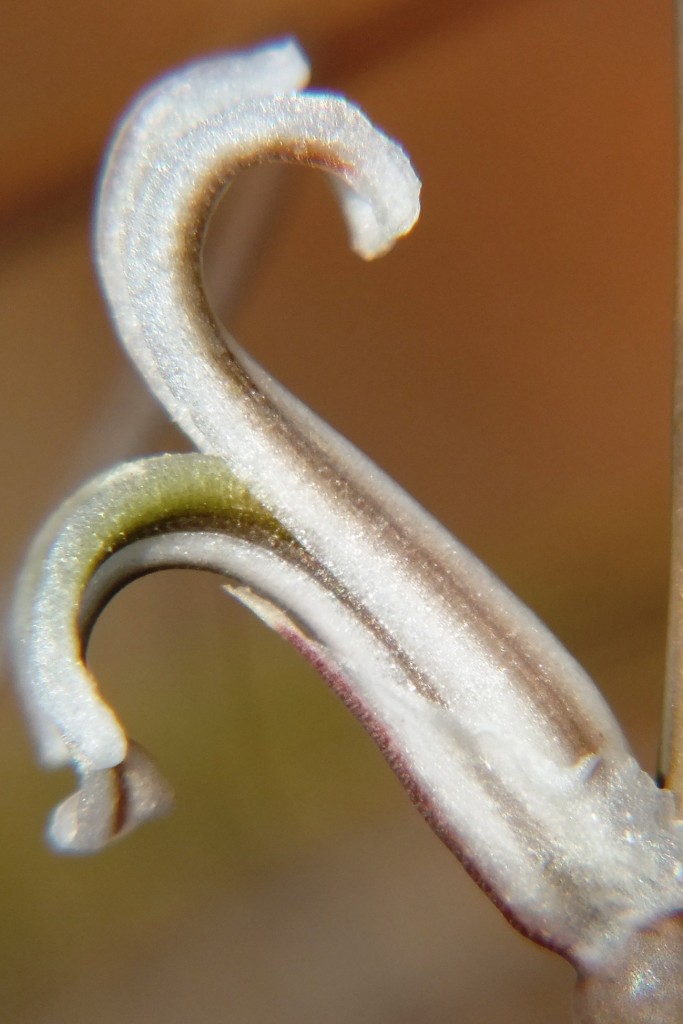
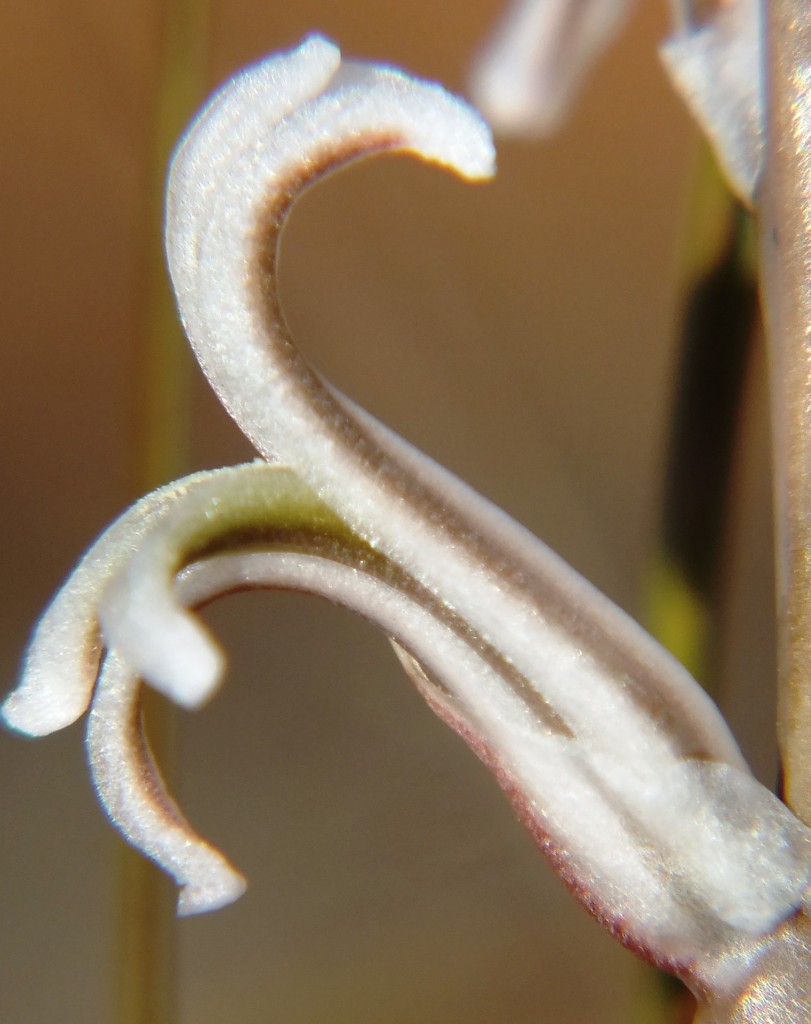
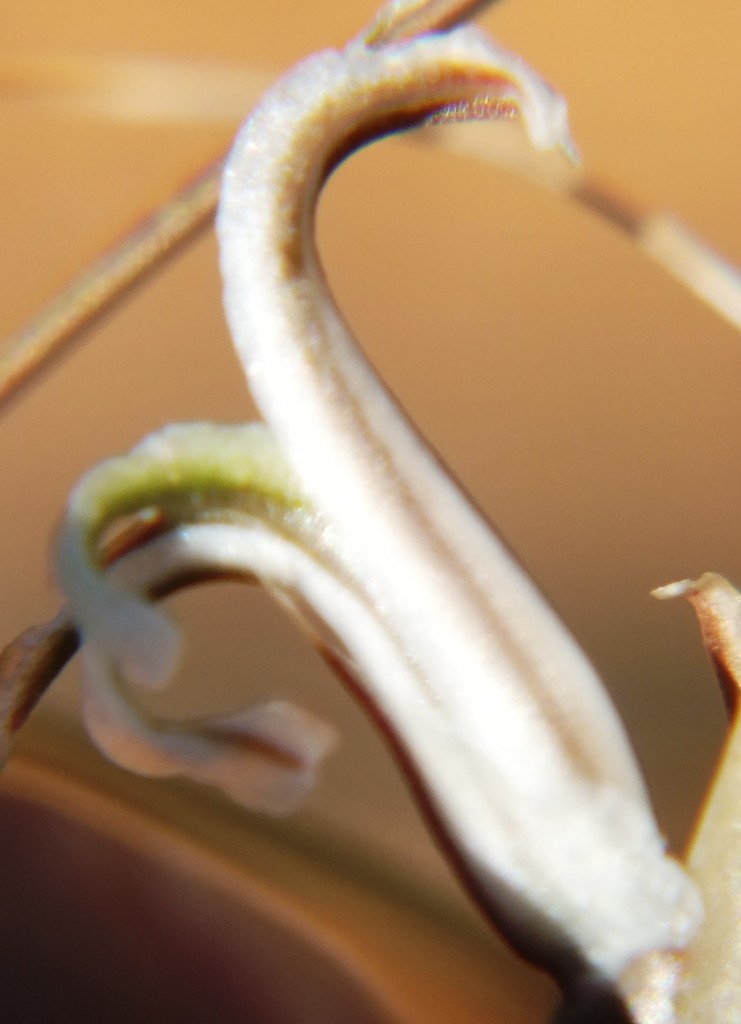
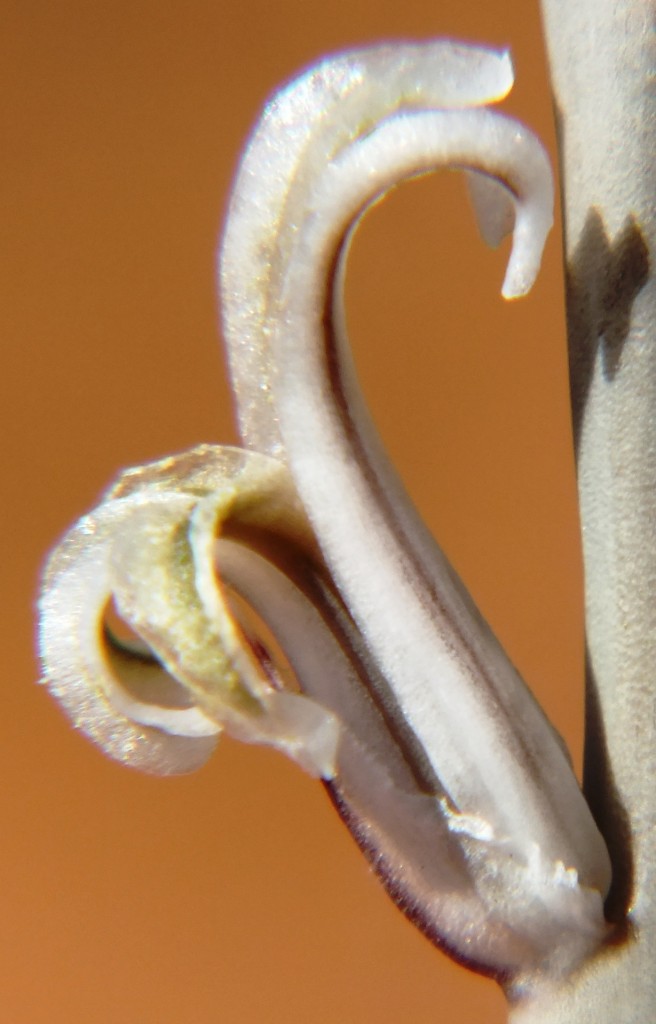
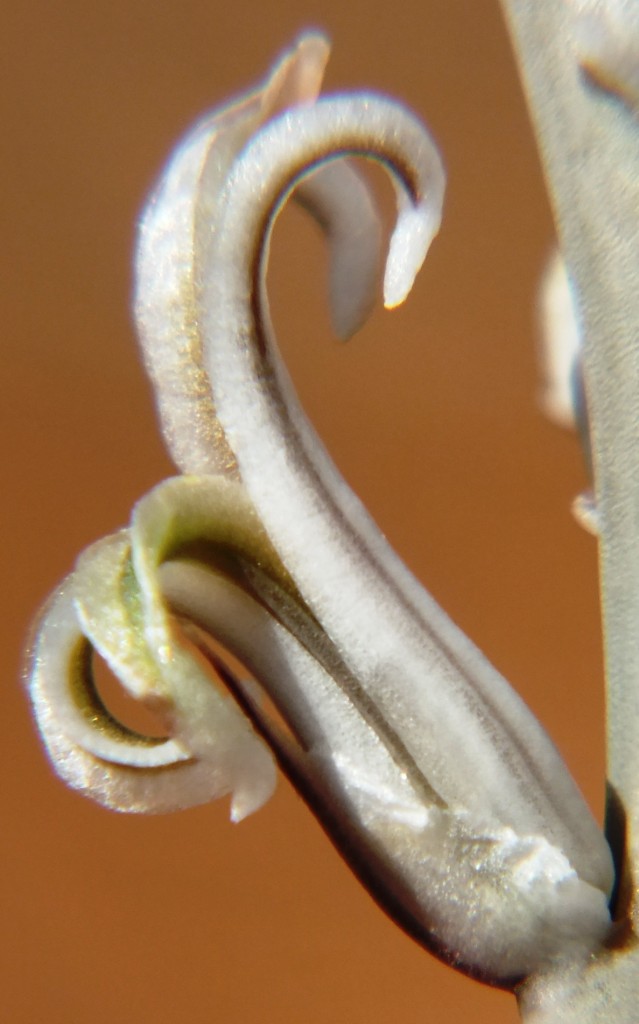
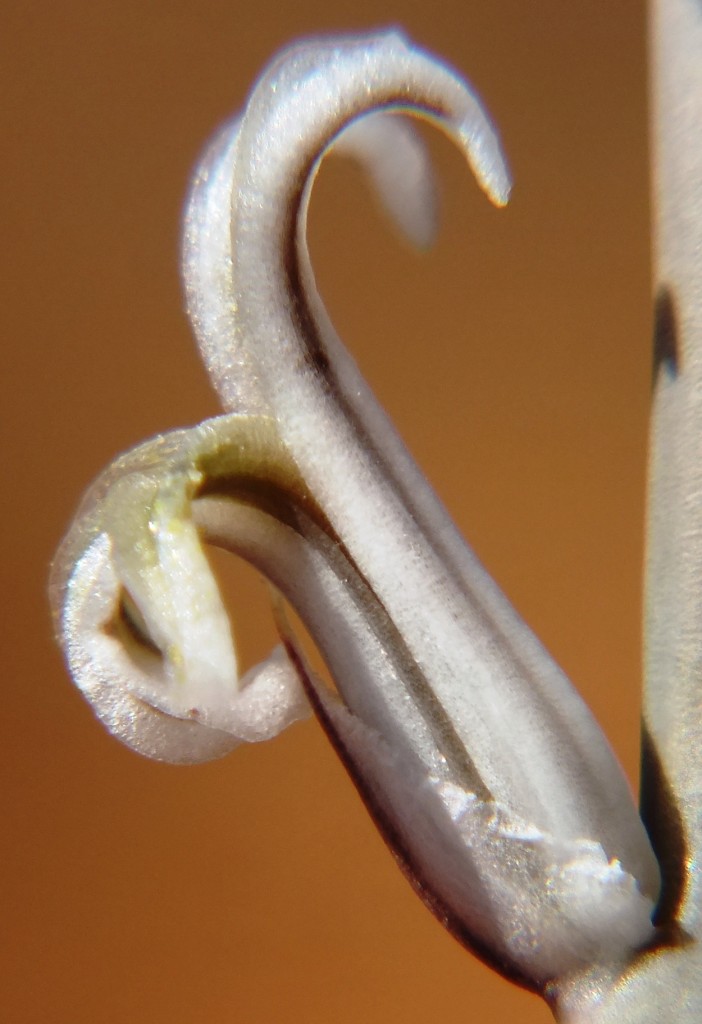
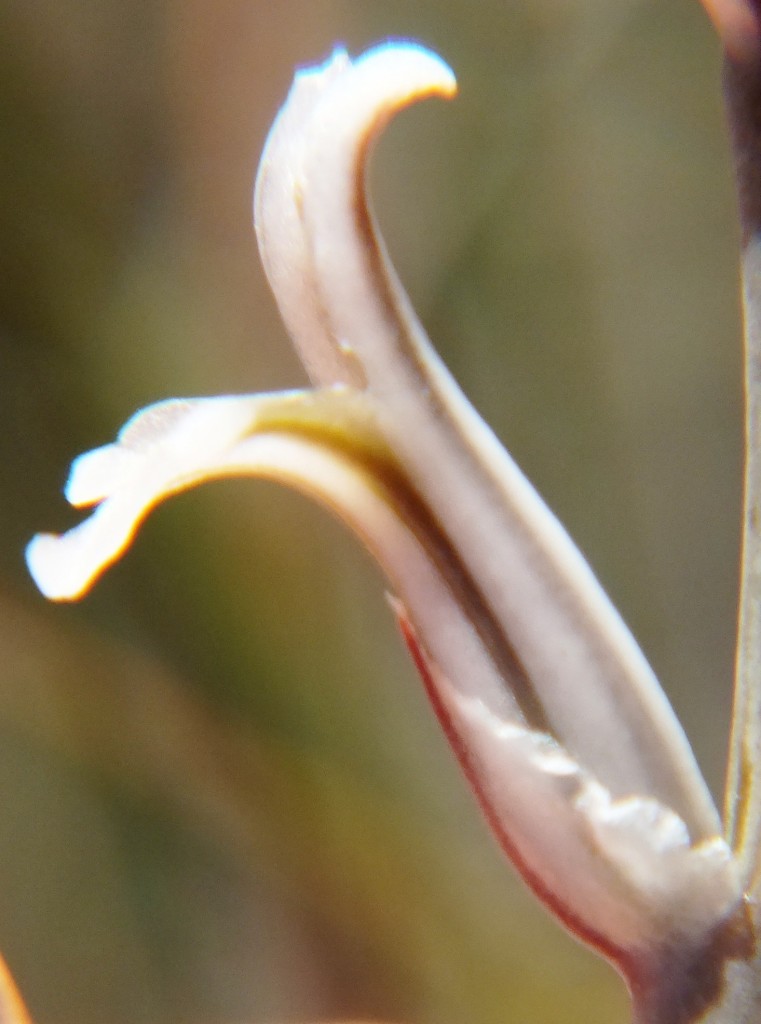
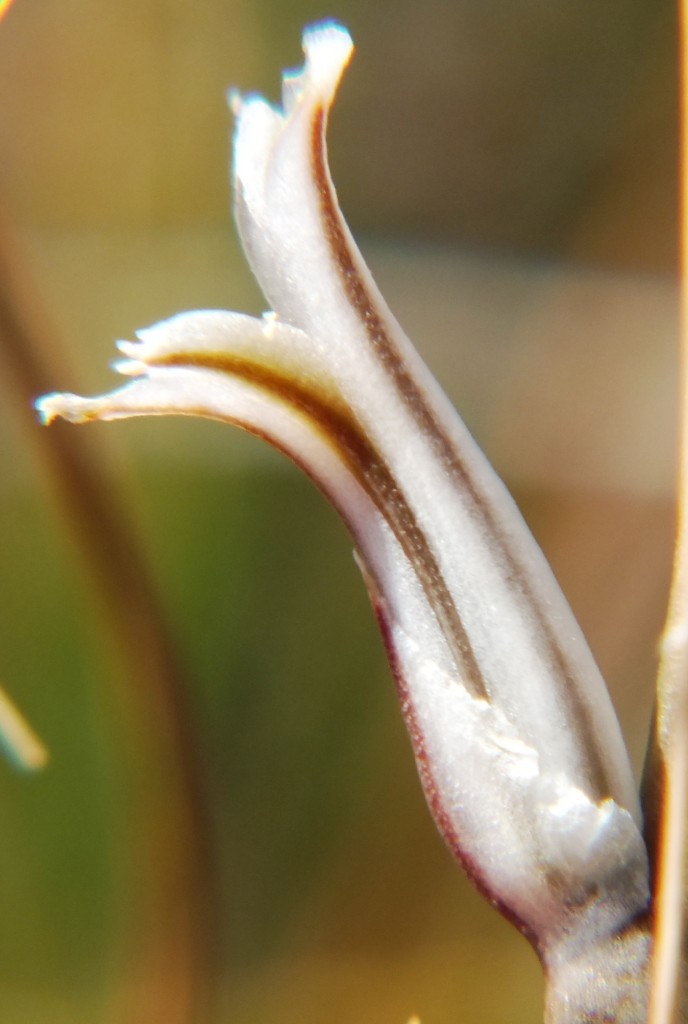
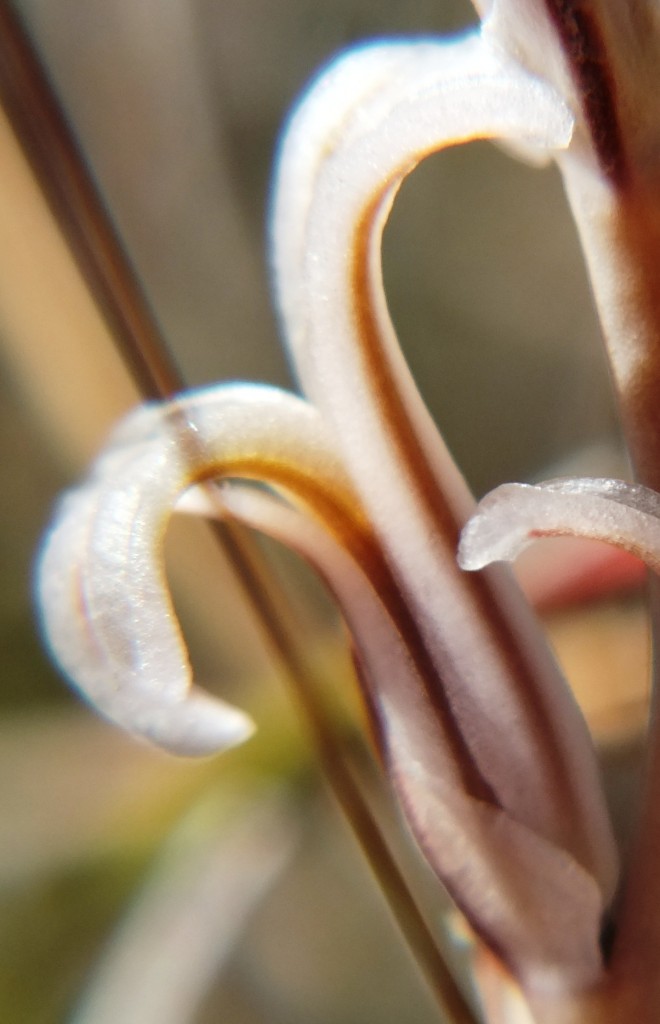
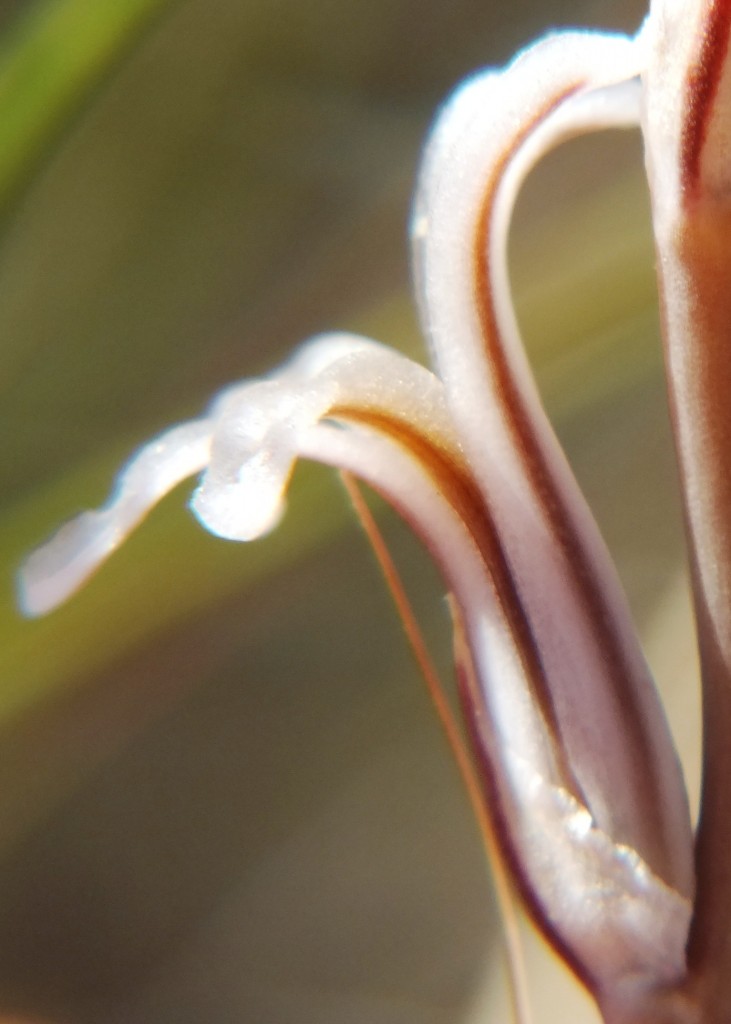

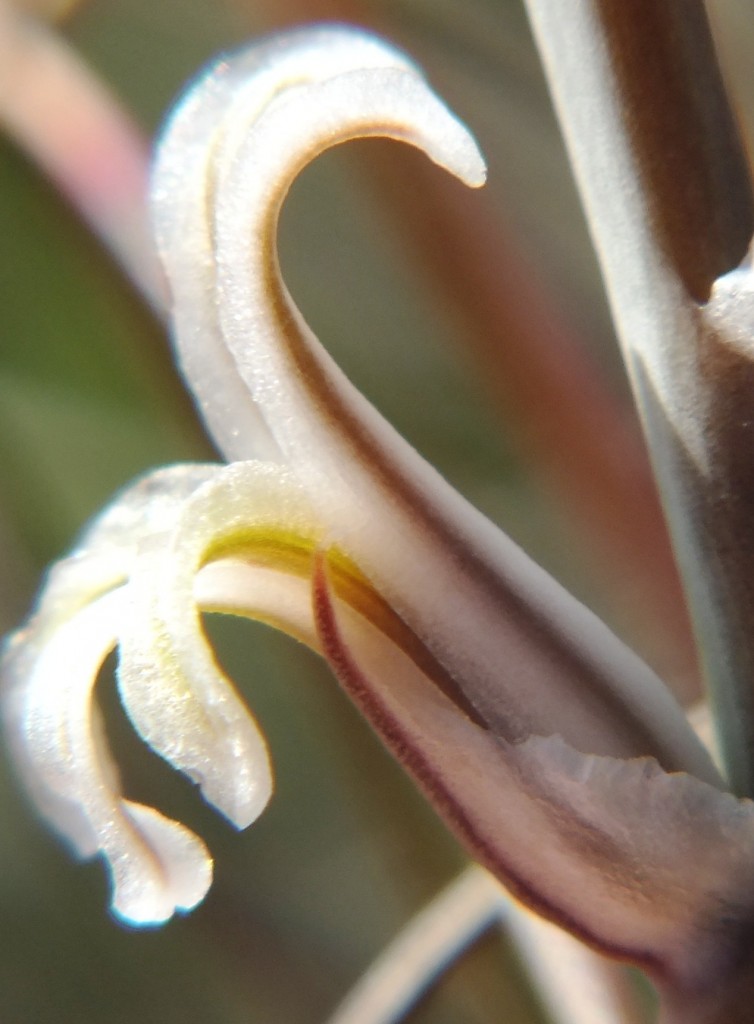
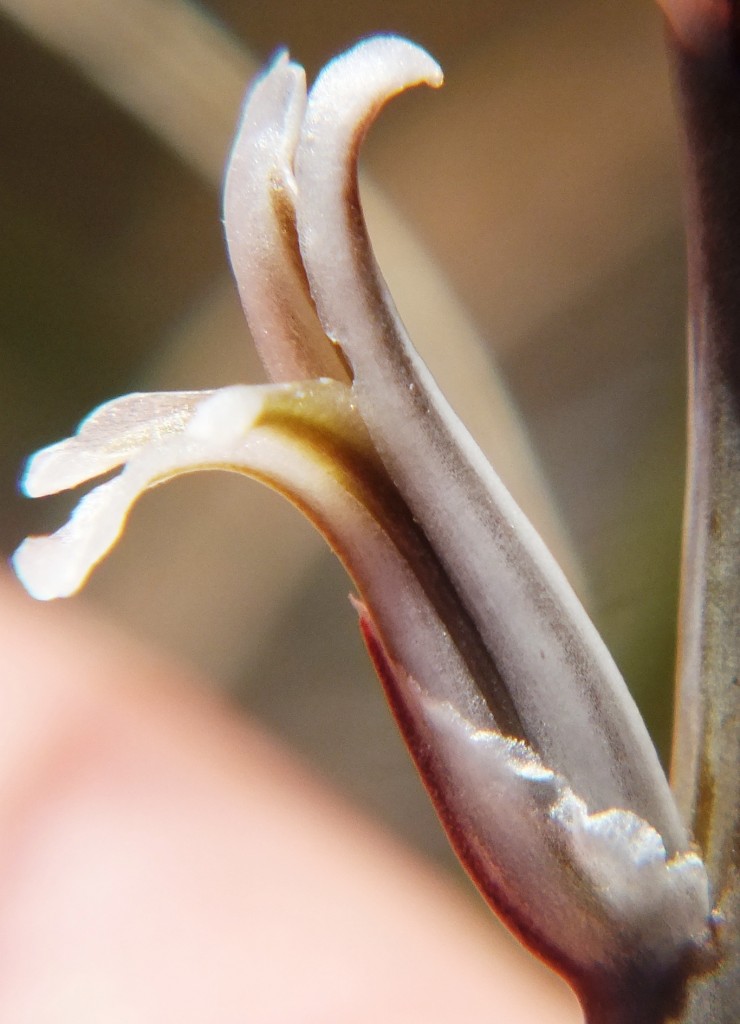
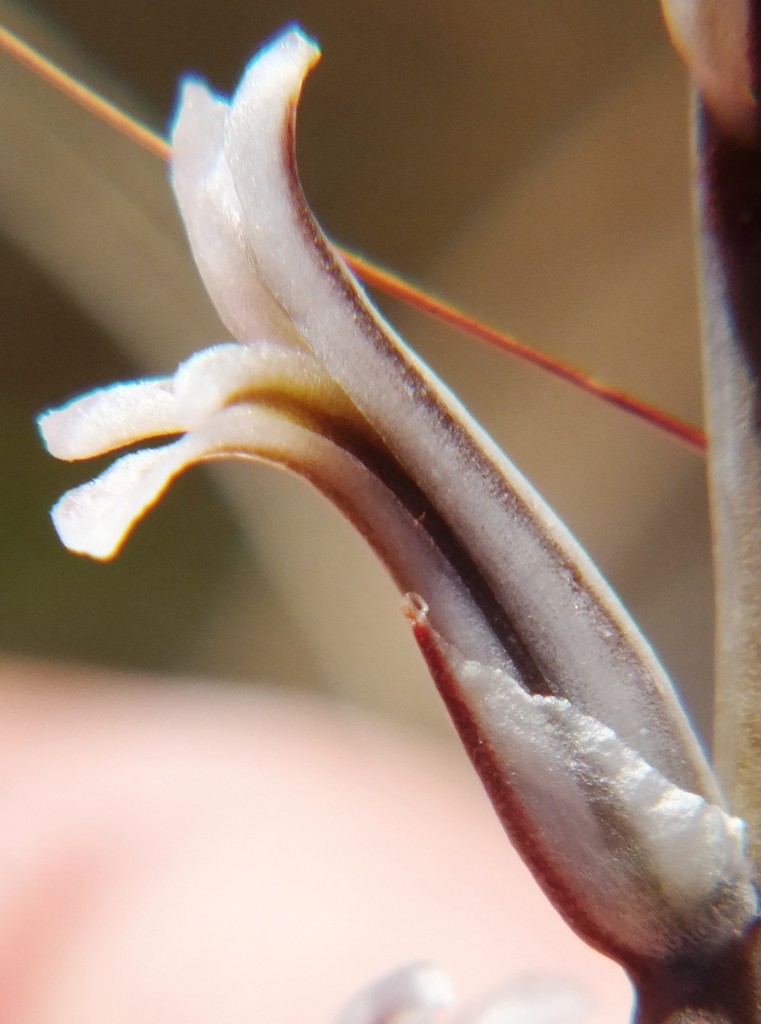
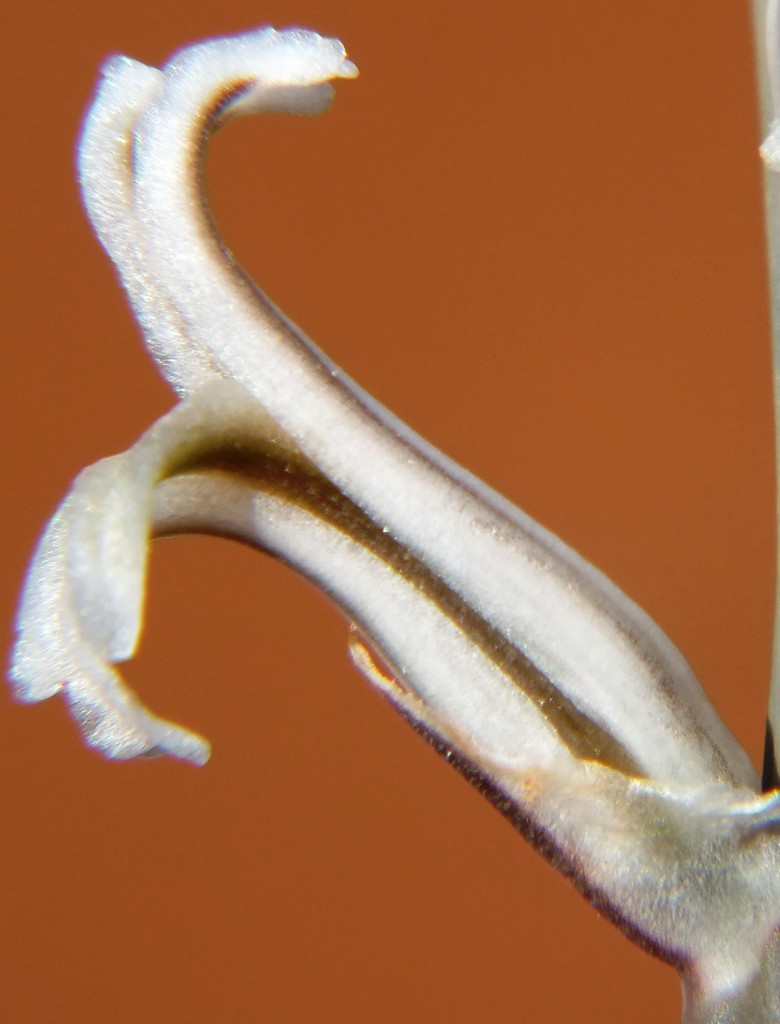
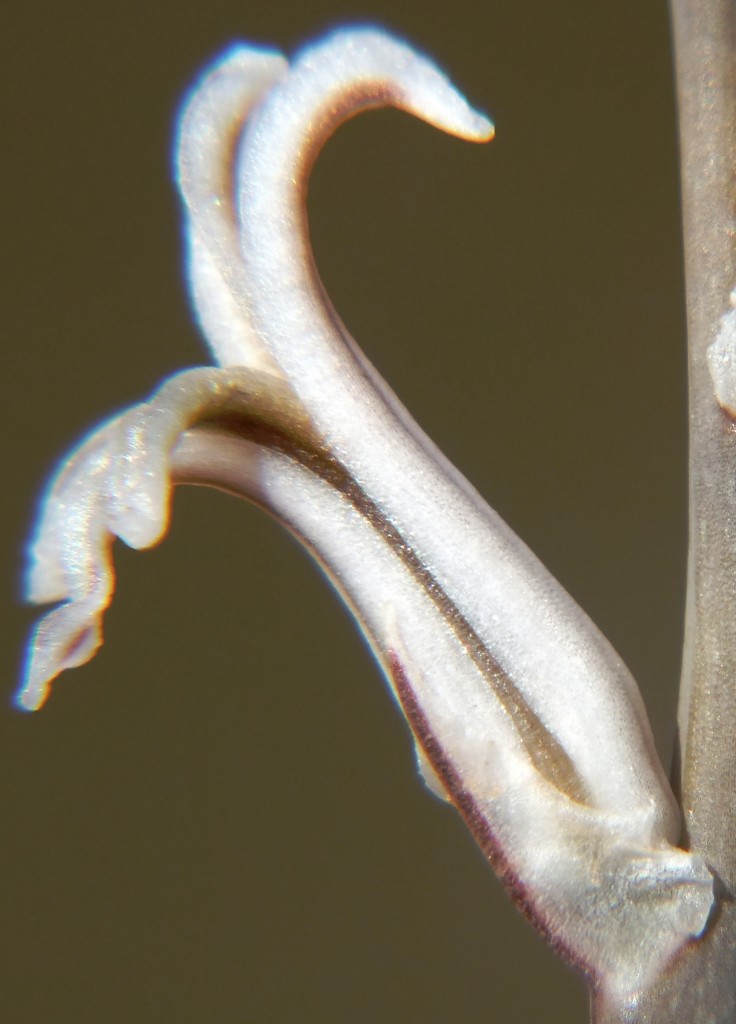
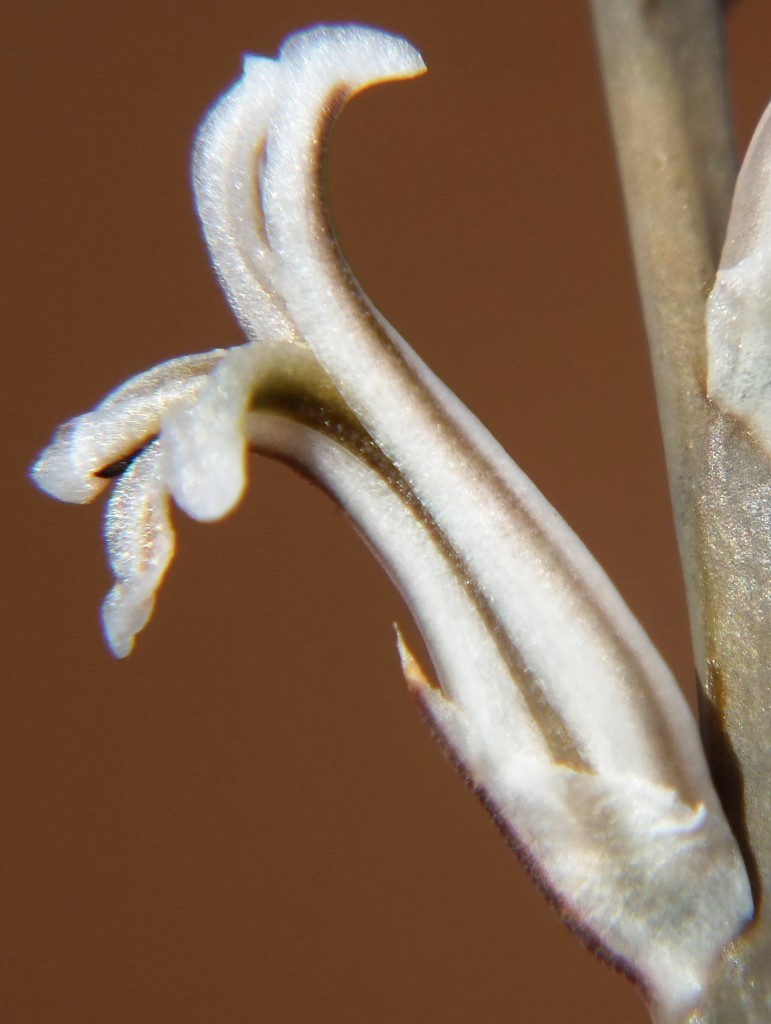
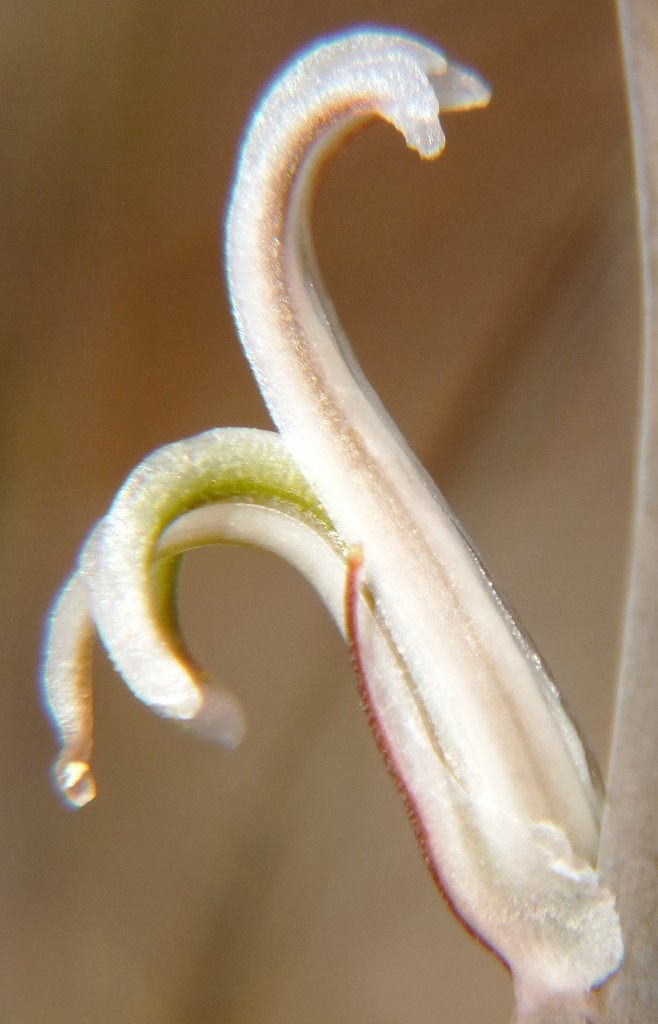
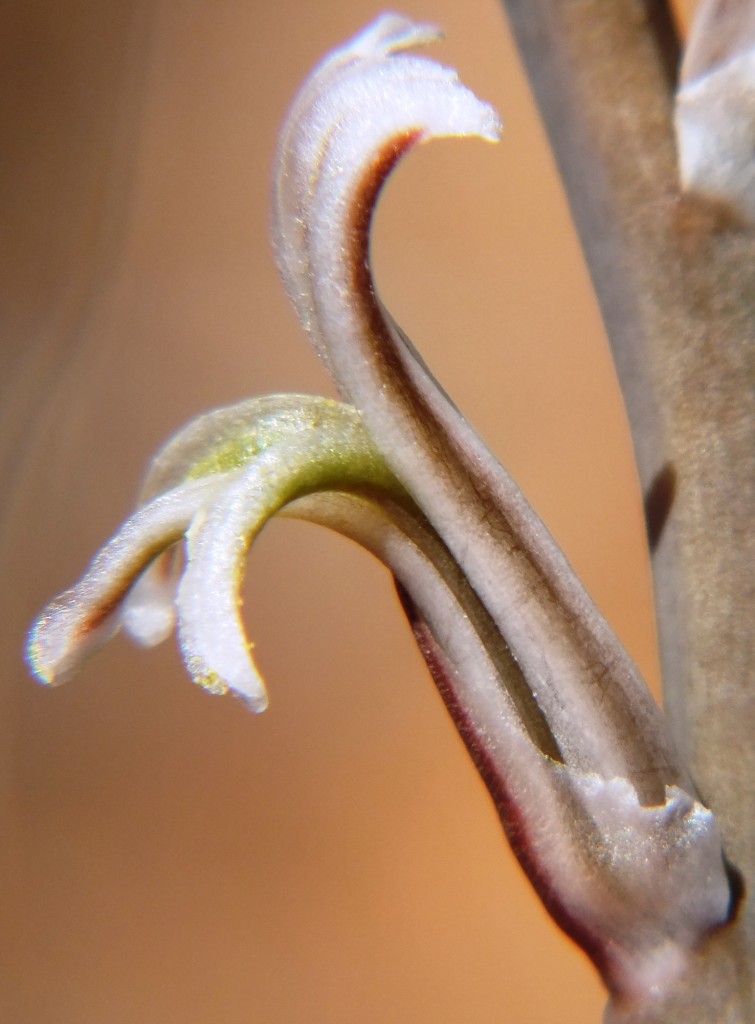
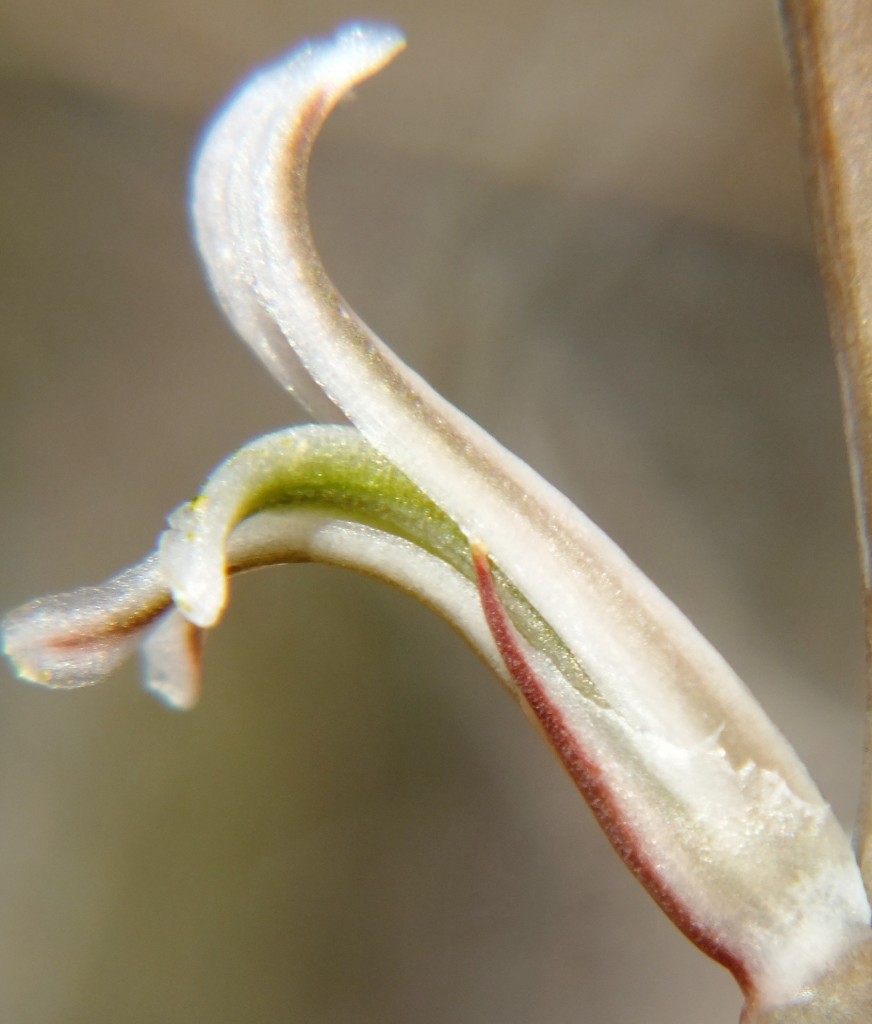
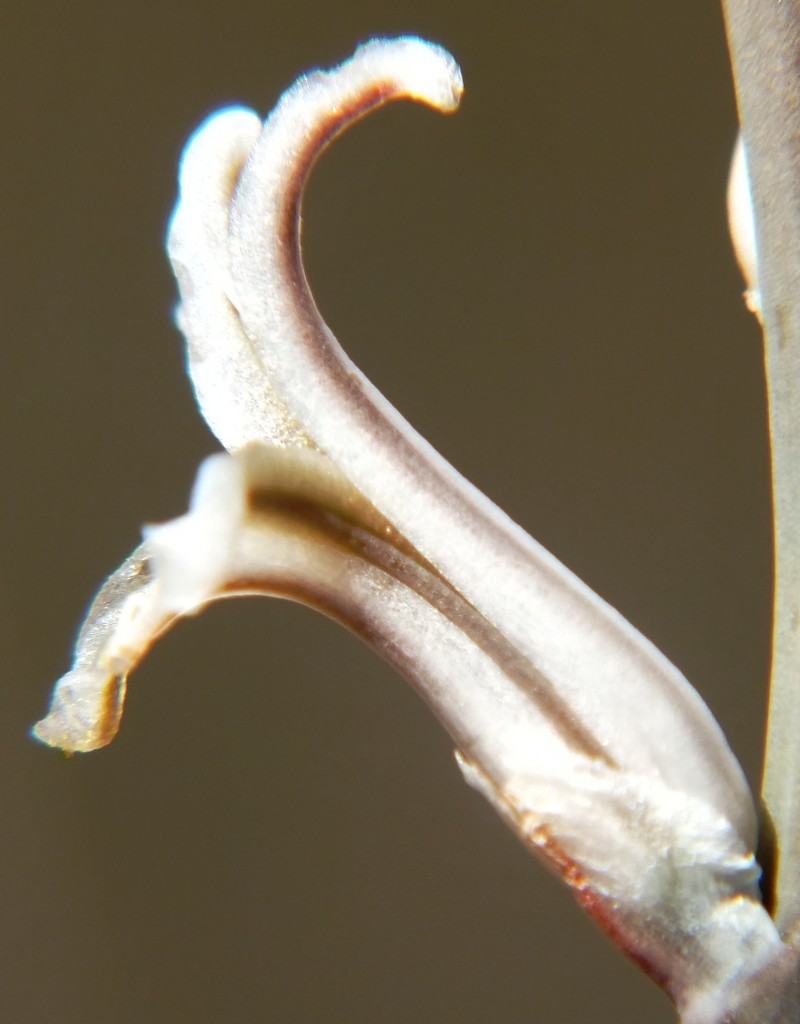
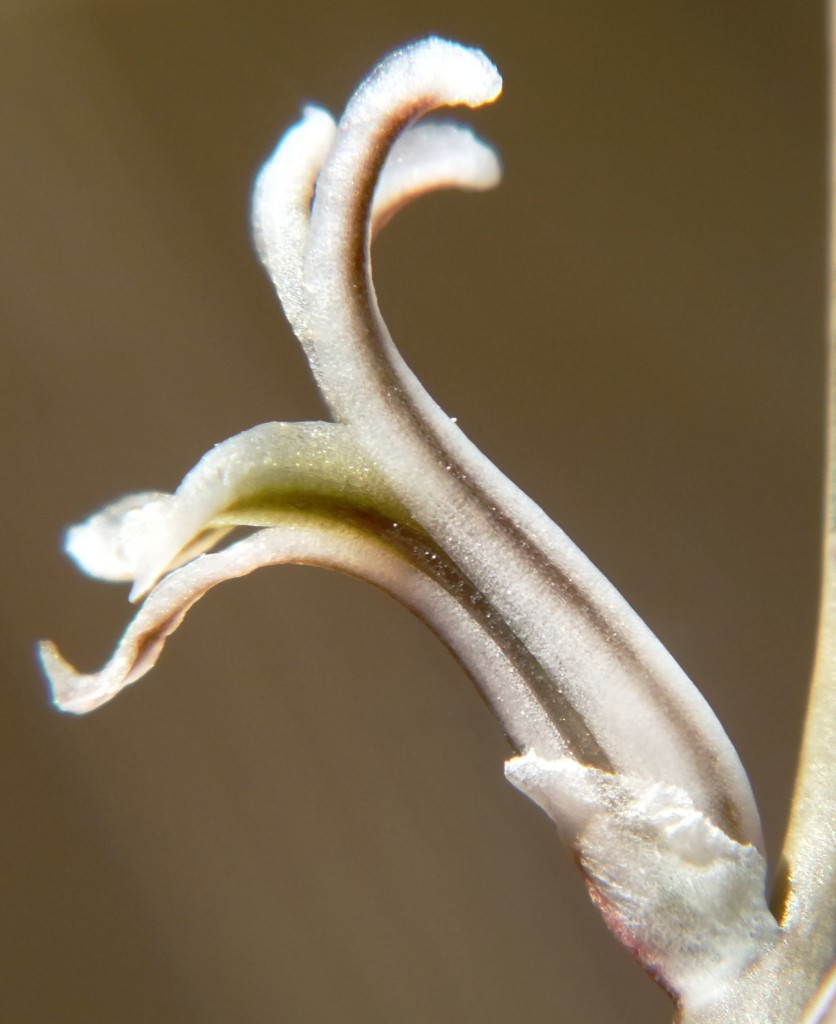
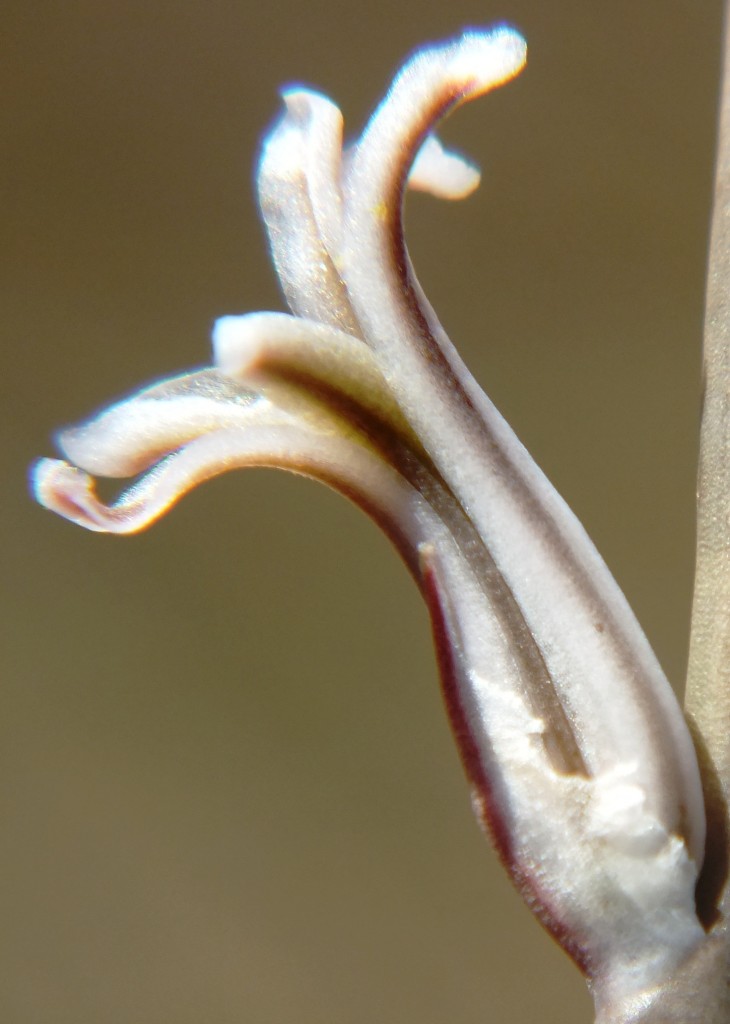
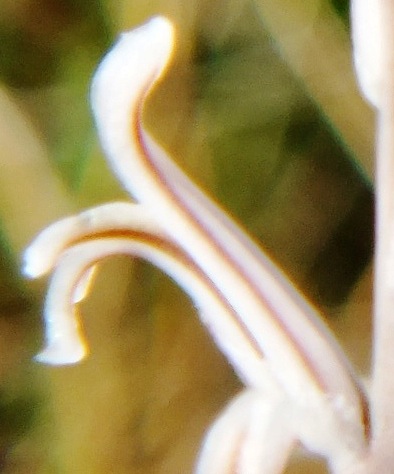

MBB7921 Van Reenens H. retusa (nigra), Crest.
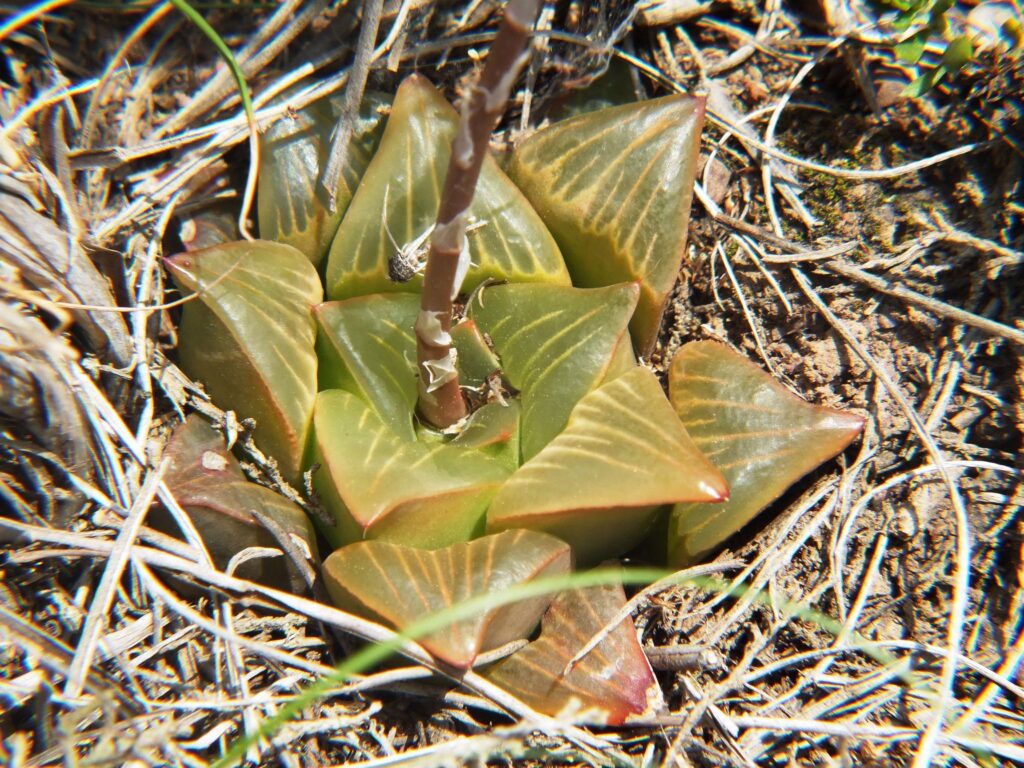
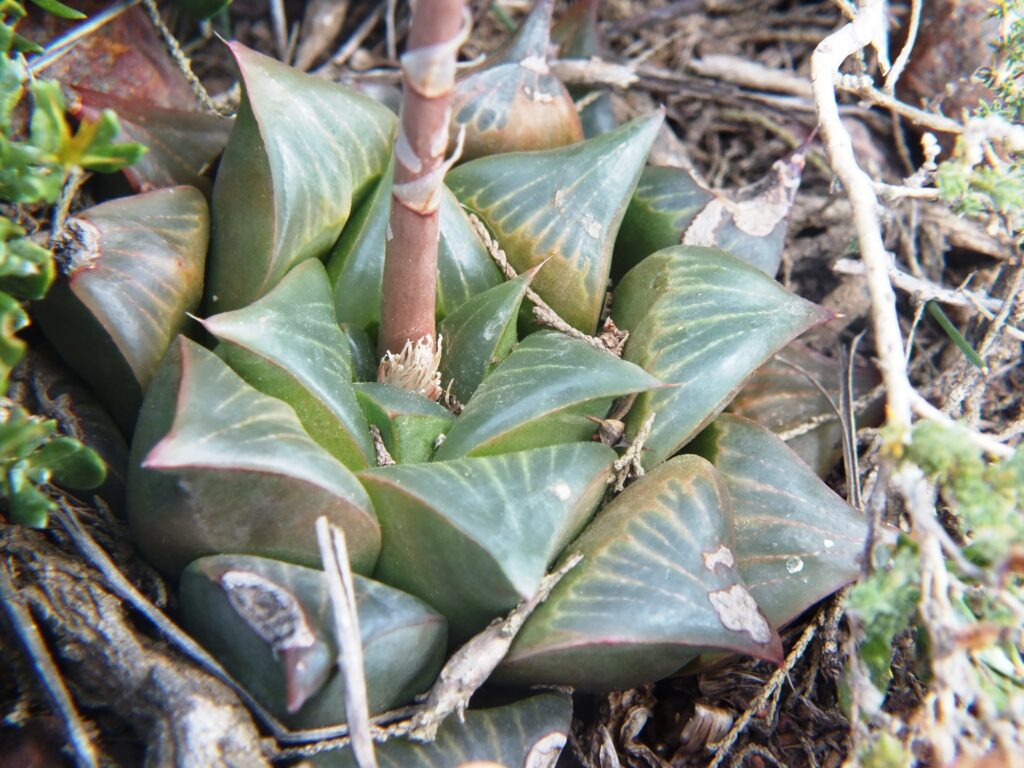
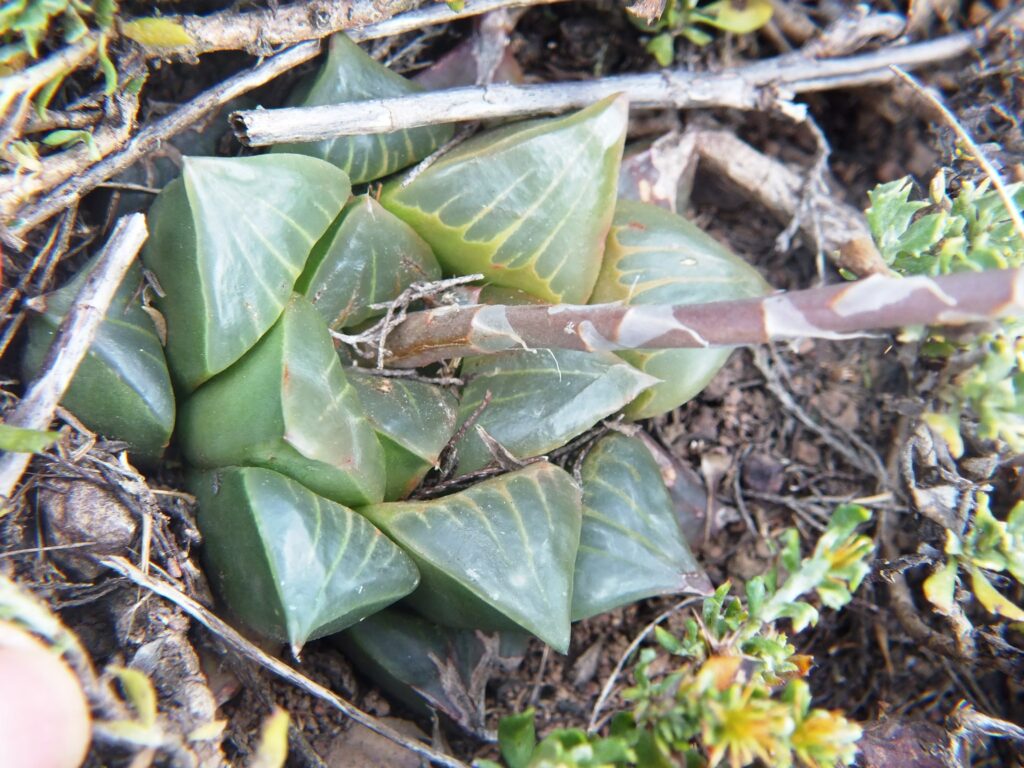
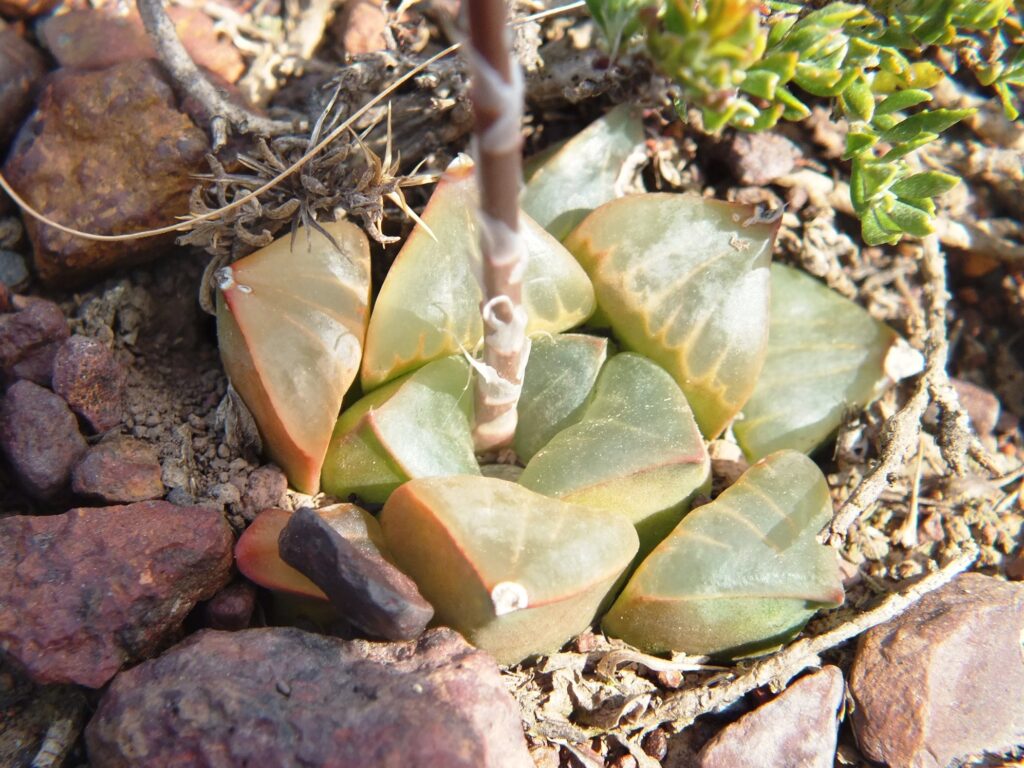
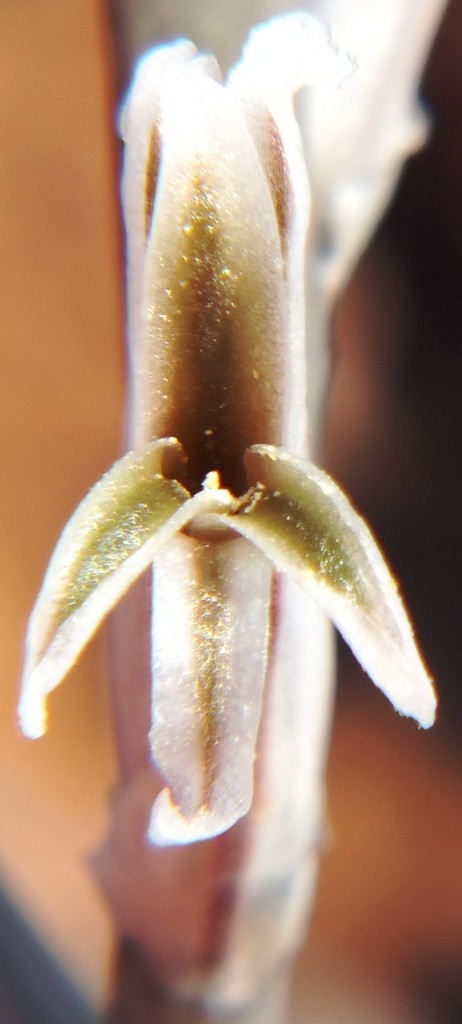
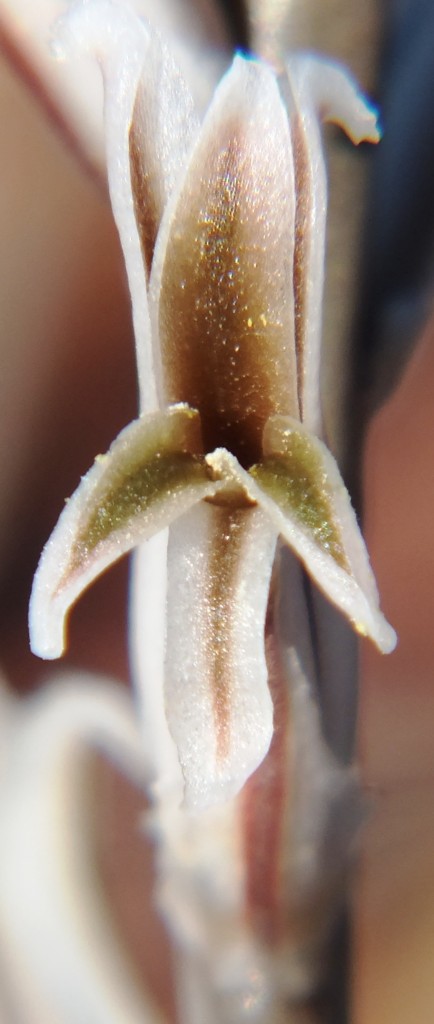
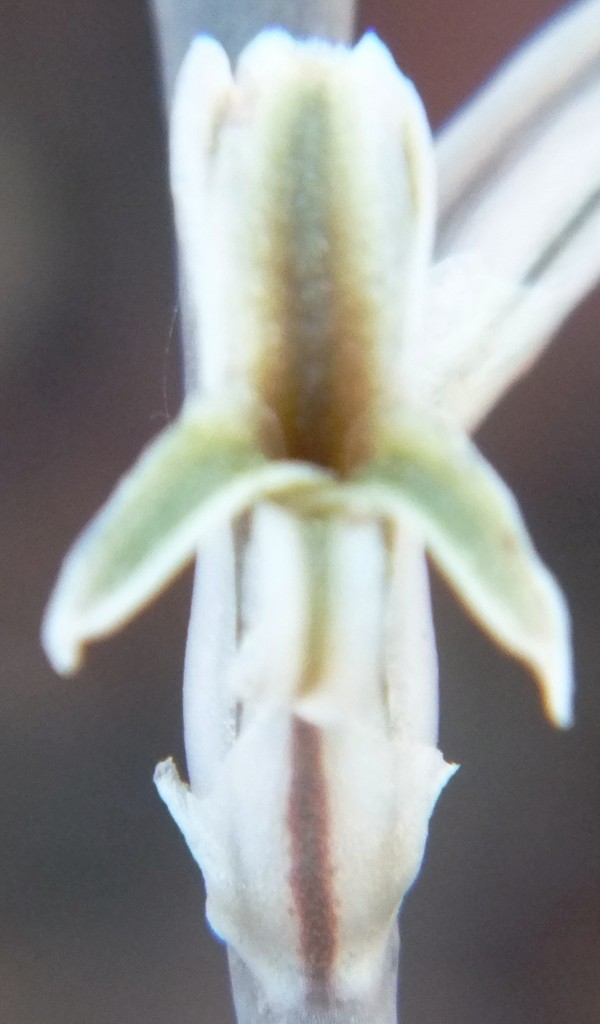
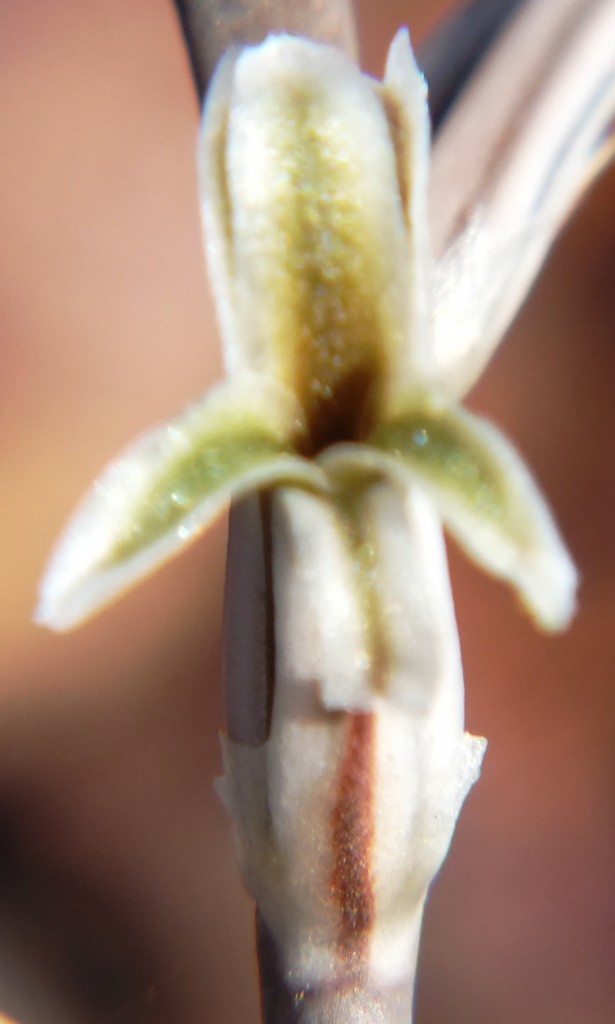
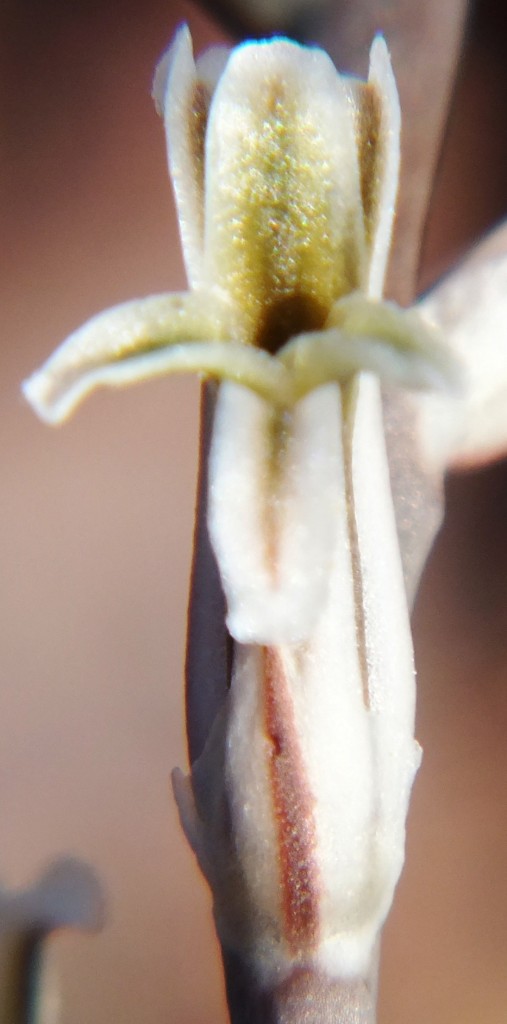
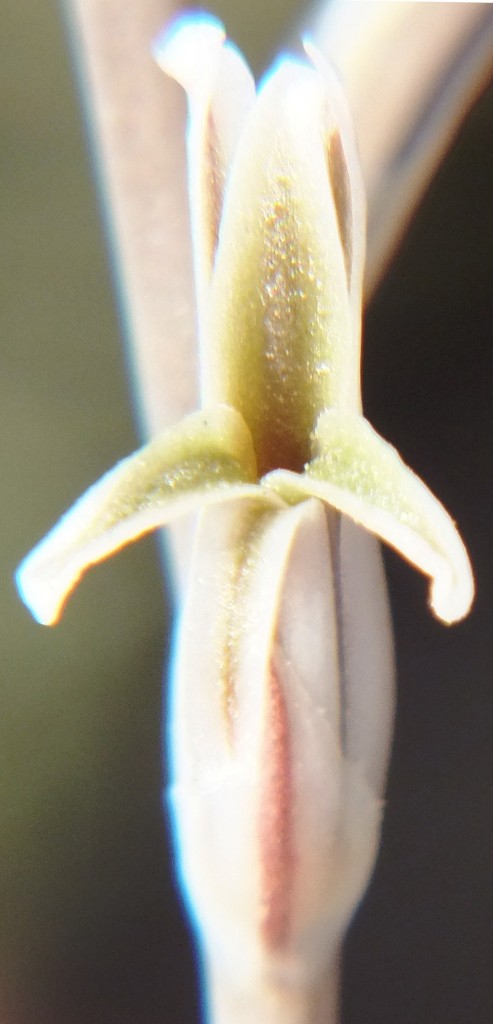

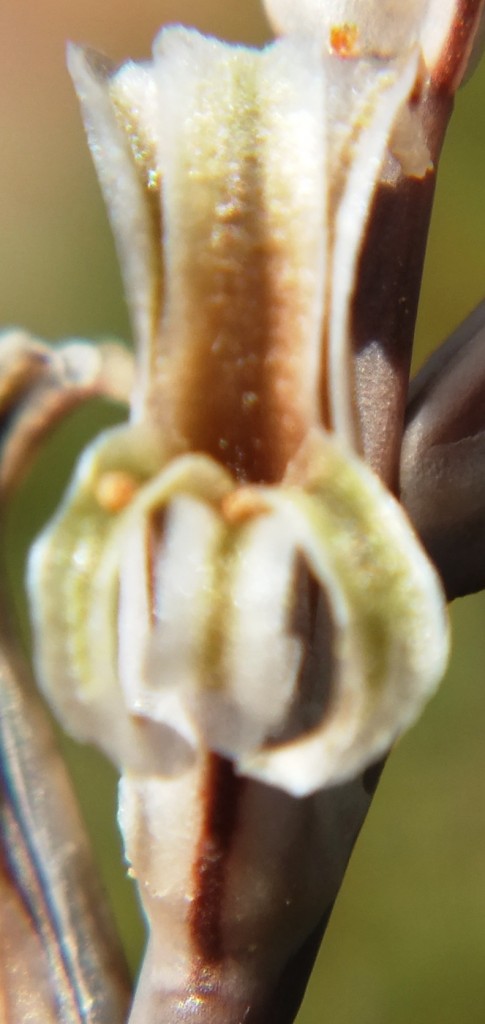


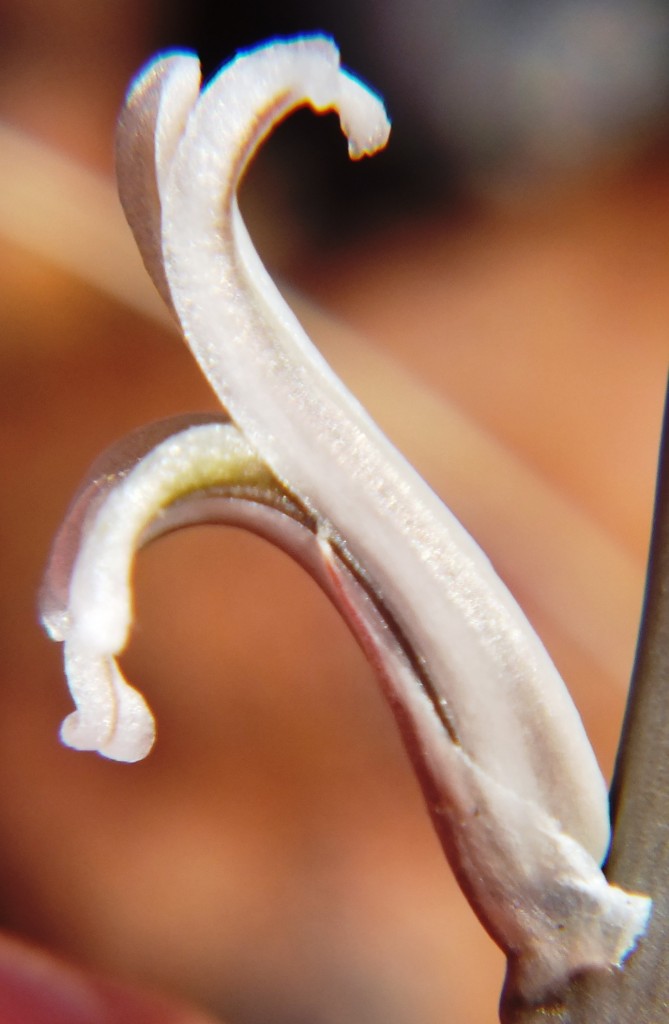
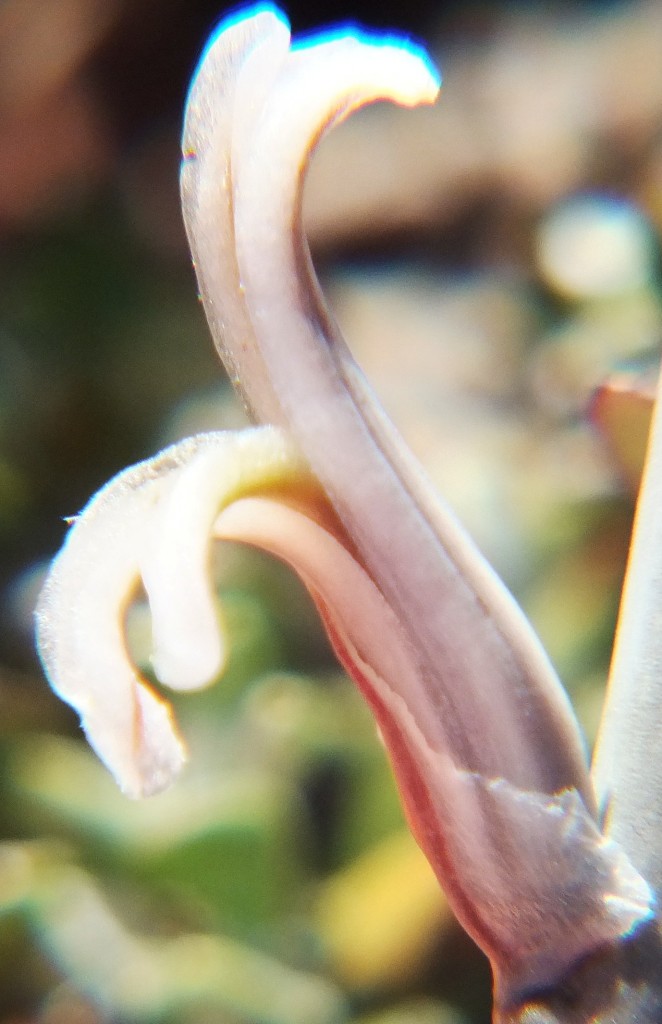
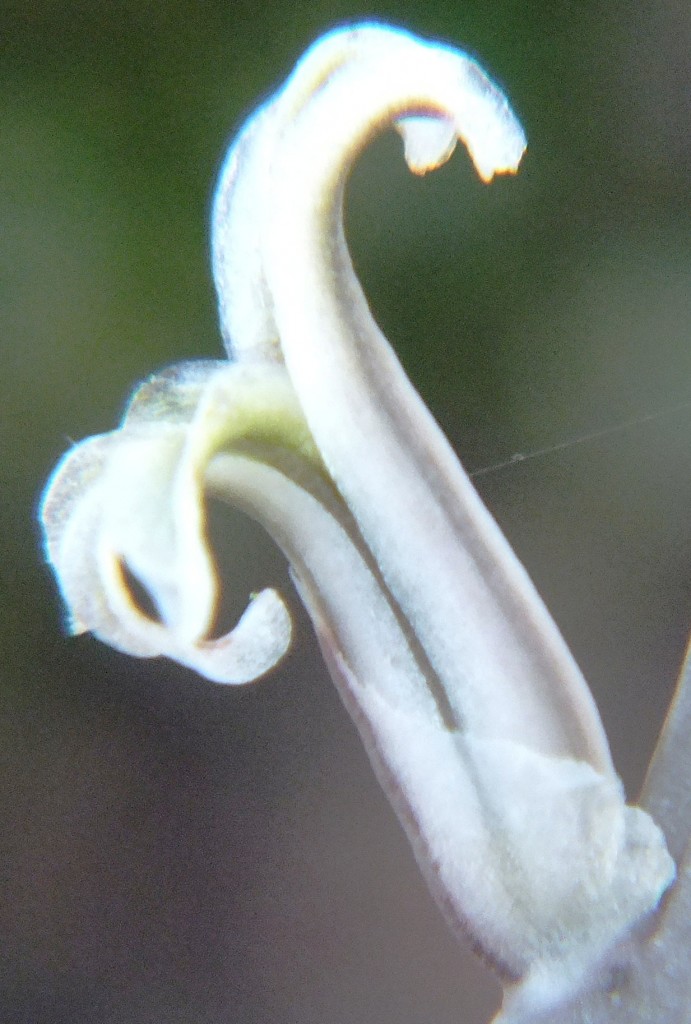
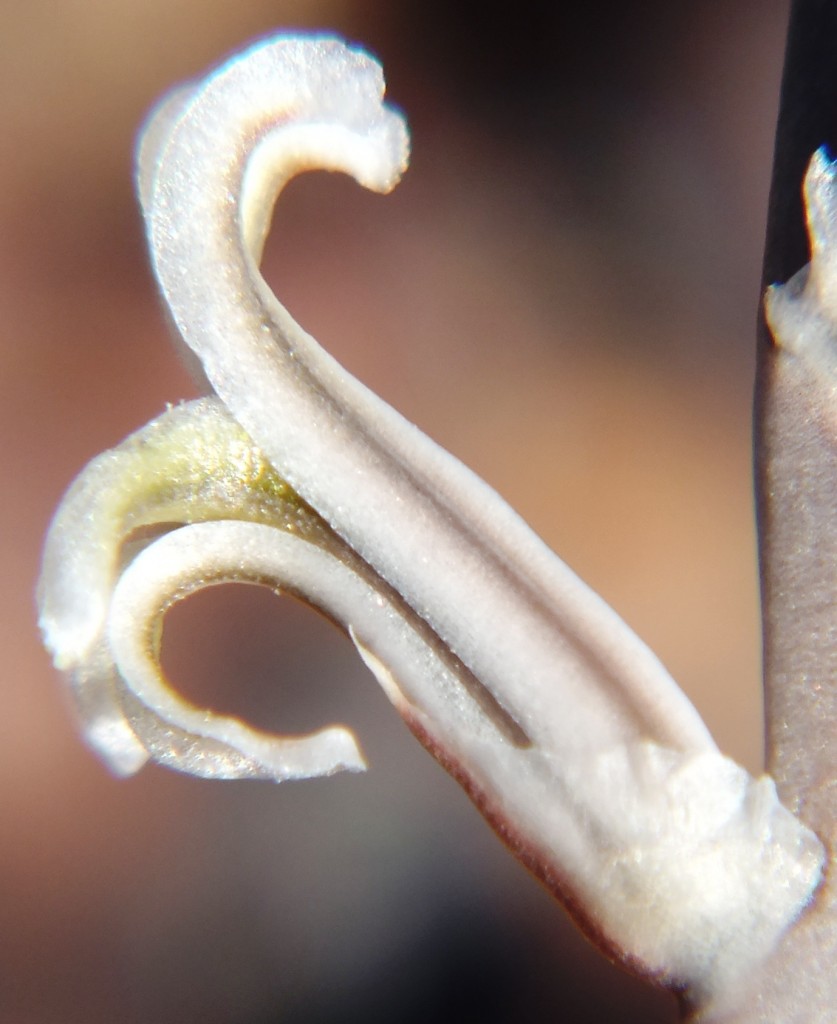
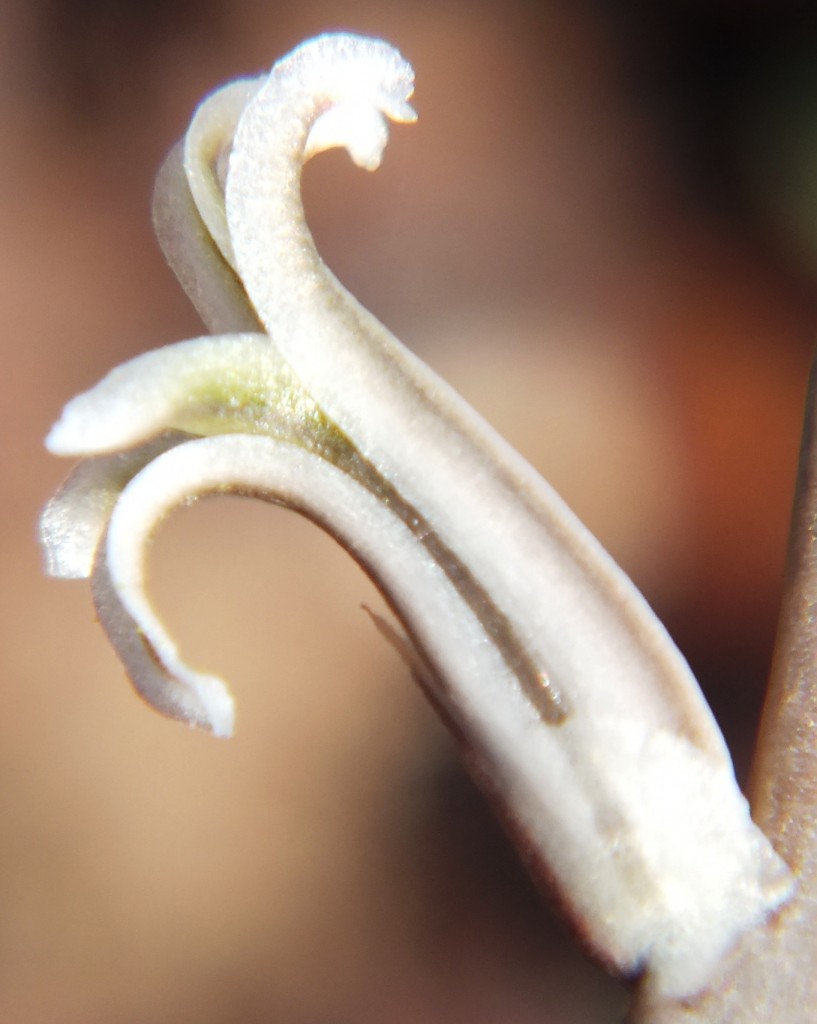
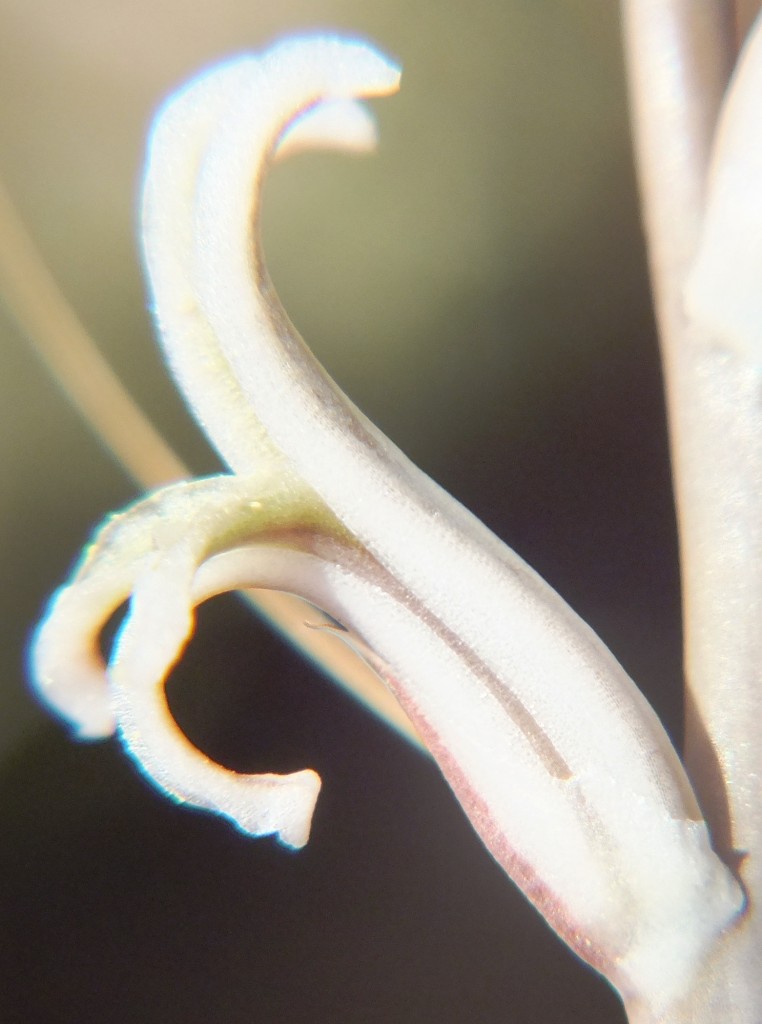
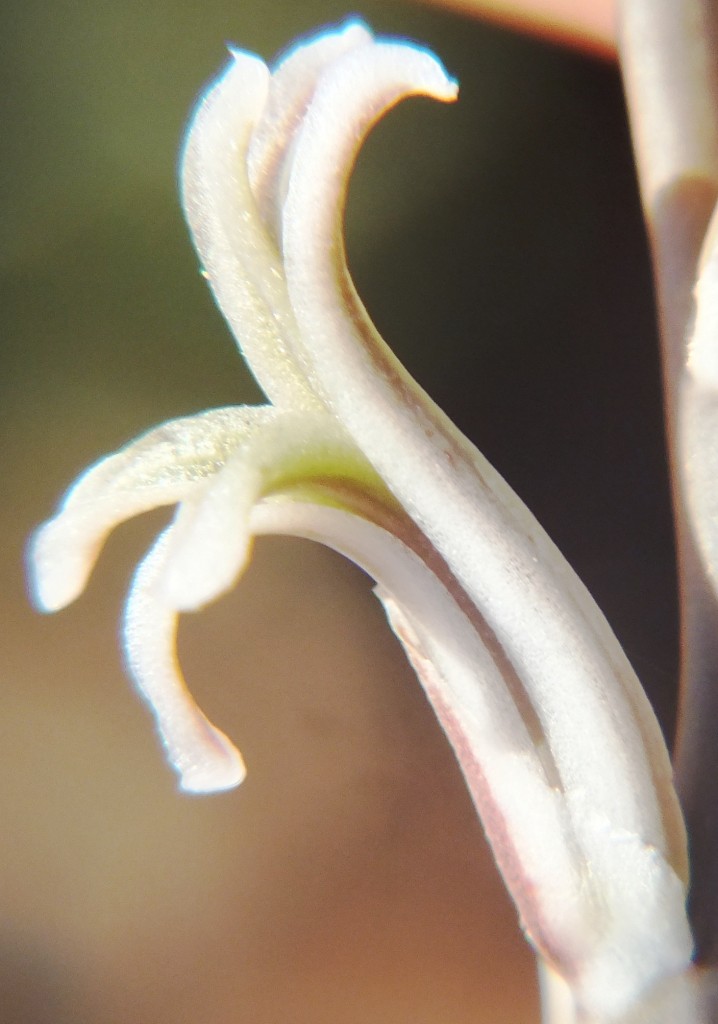
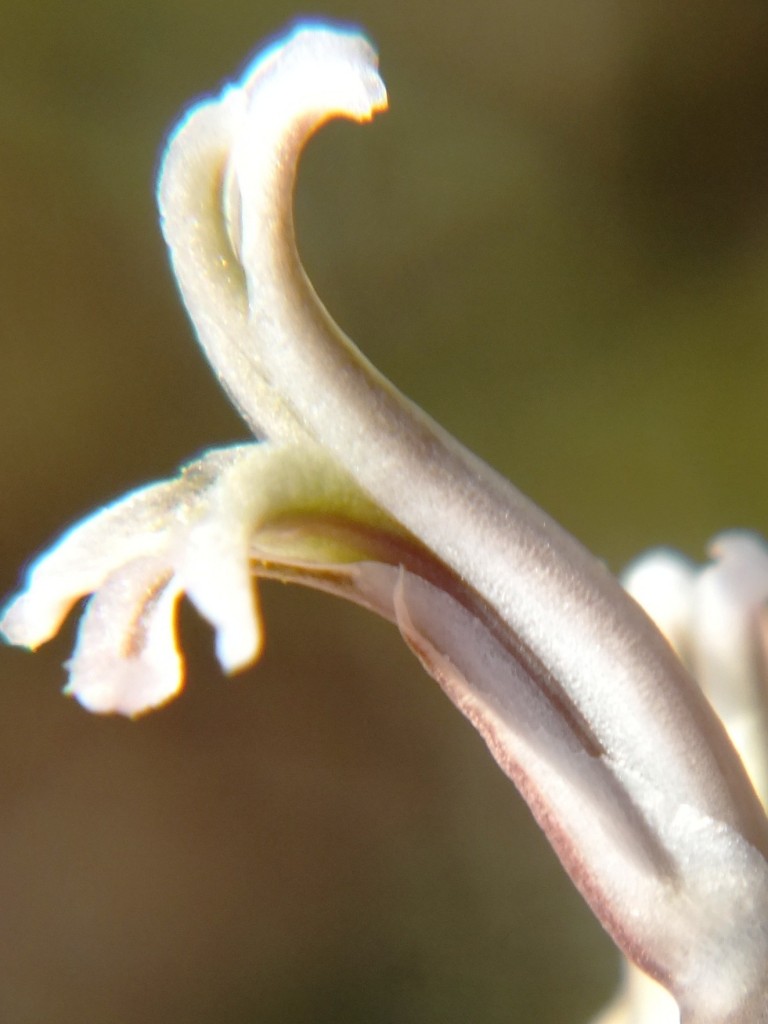
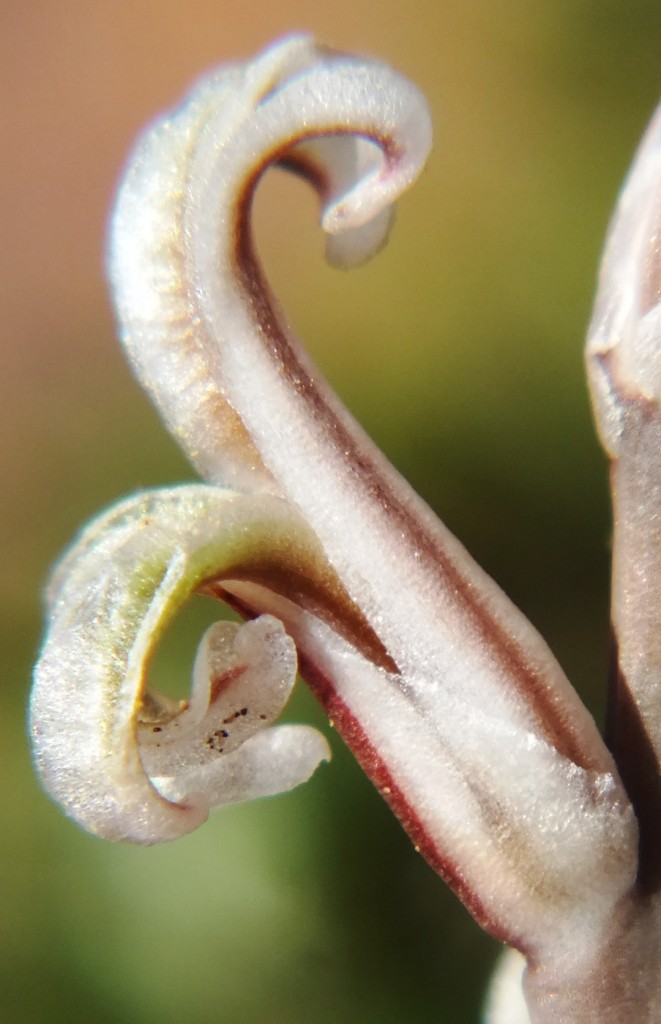
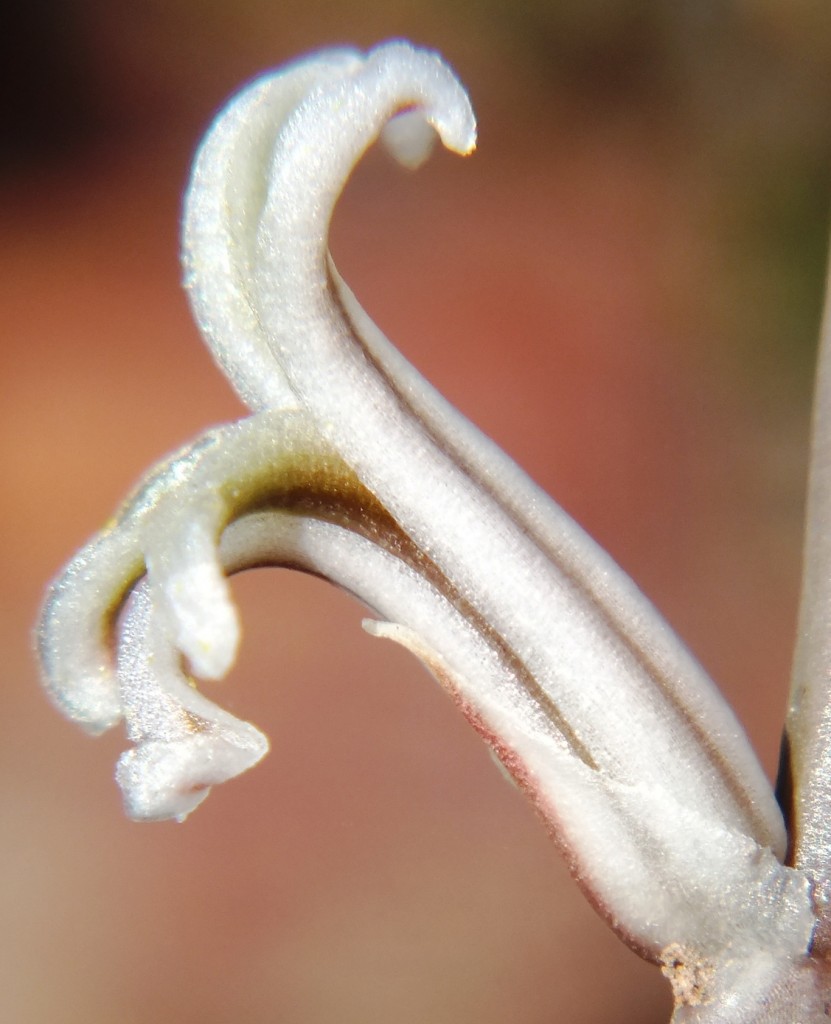
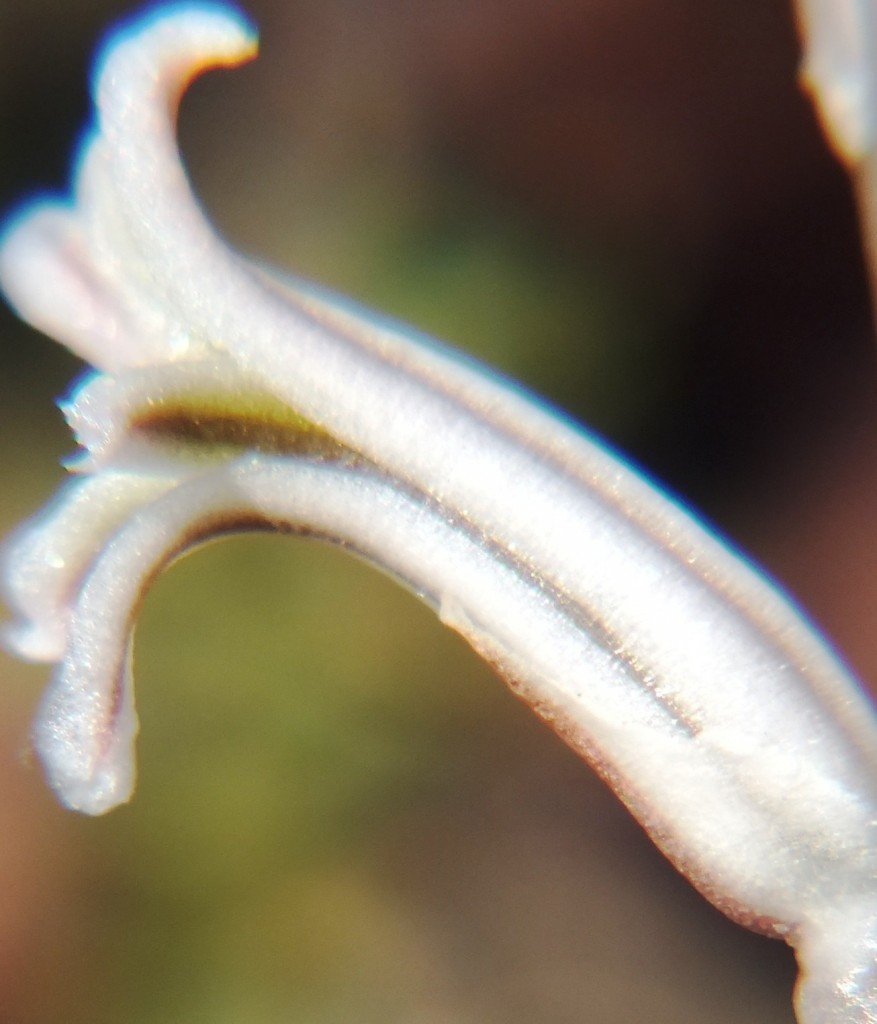

6. MBB7803 H. rossouwii, Morning Star.
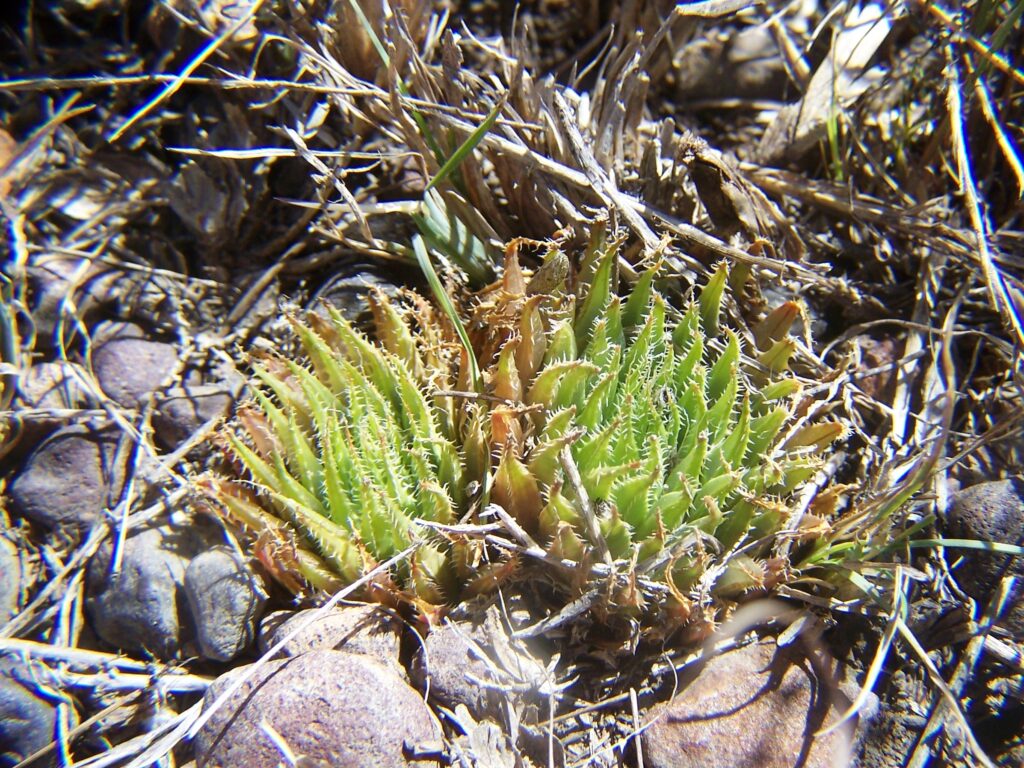
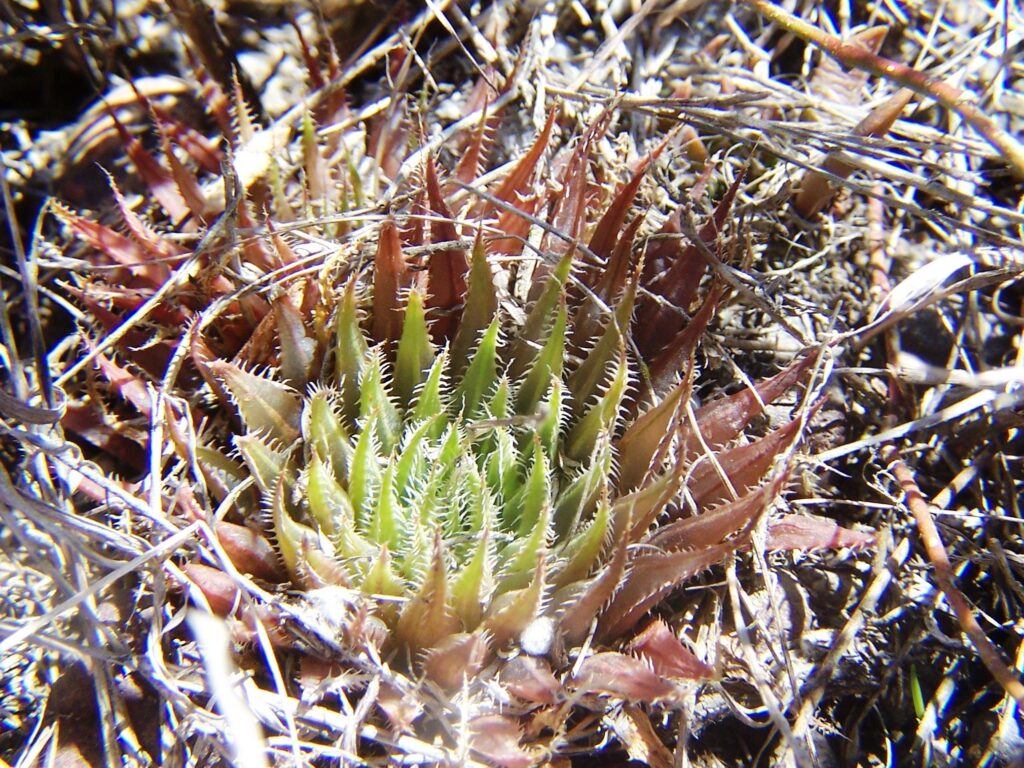
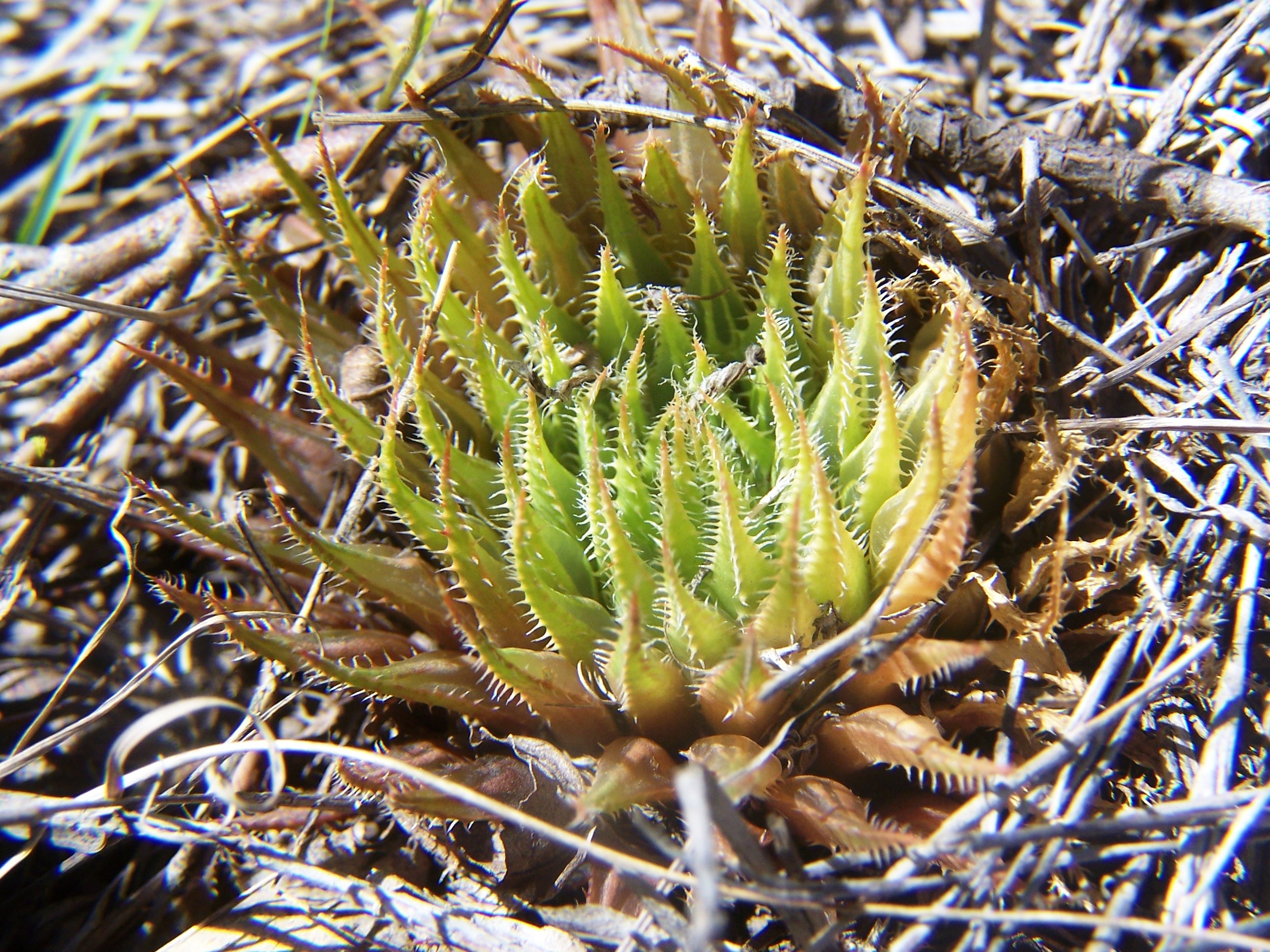
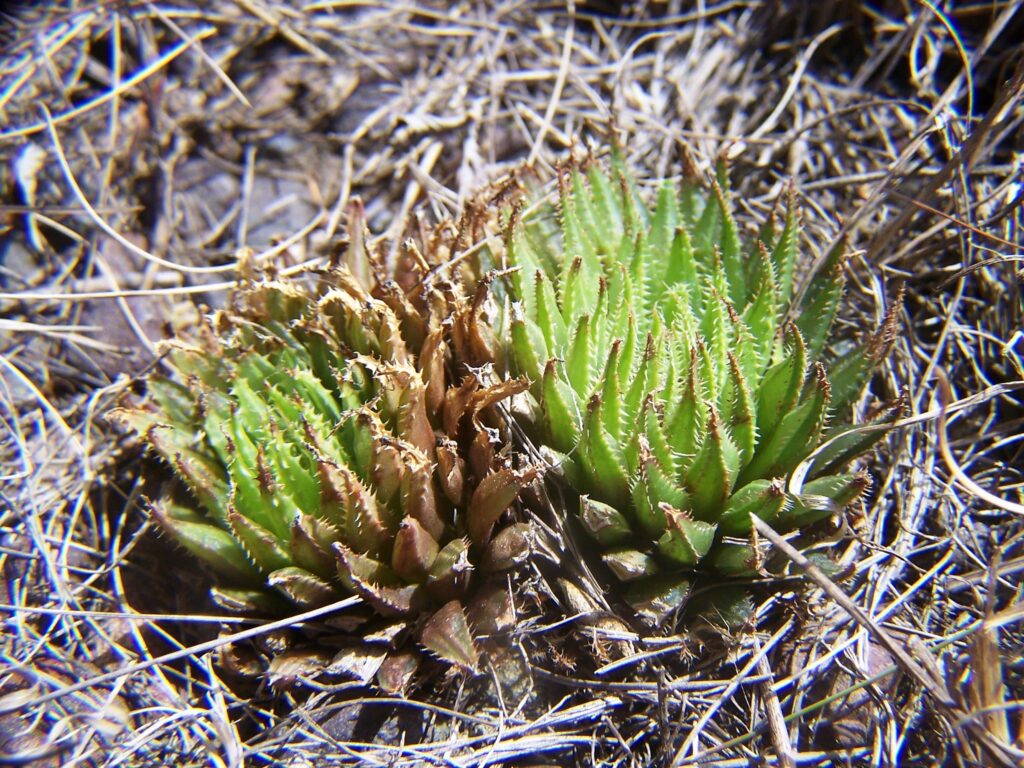

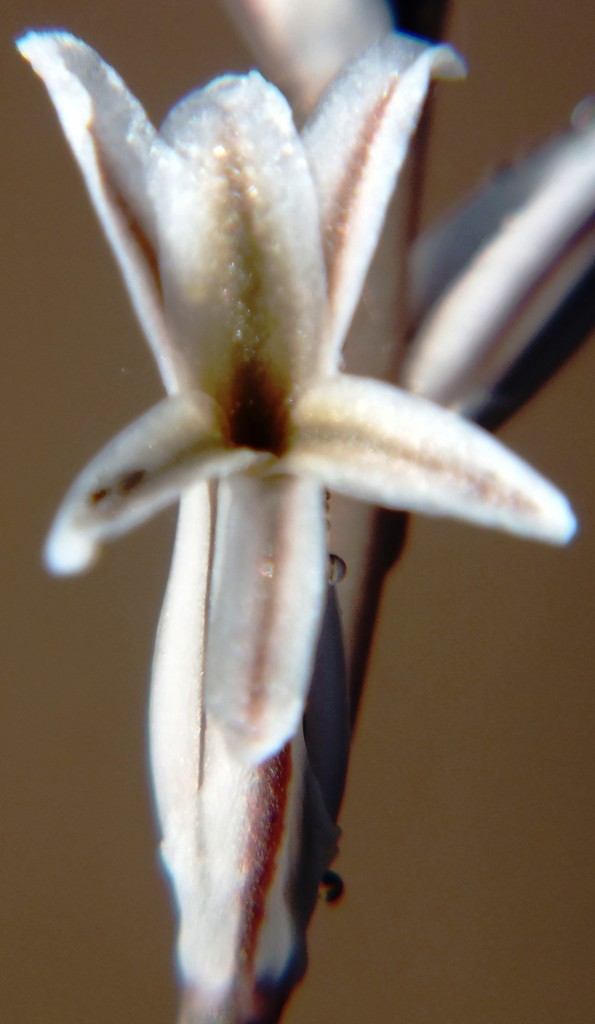
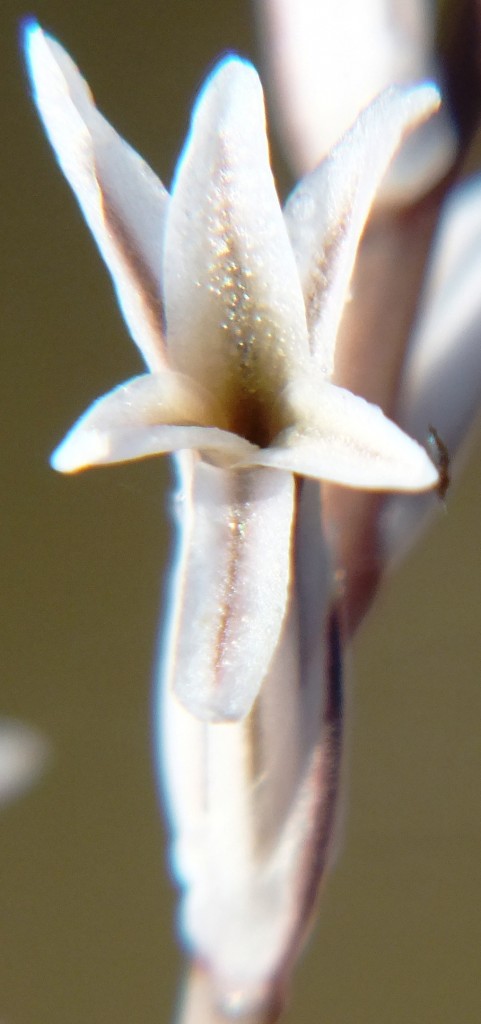
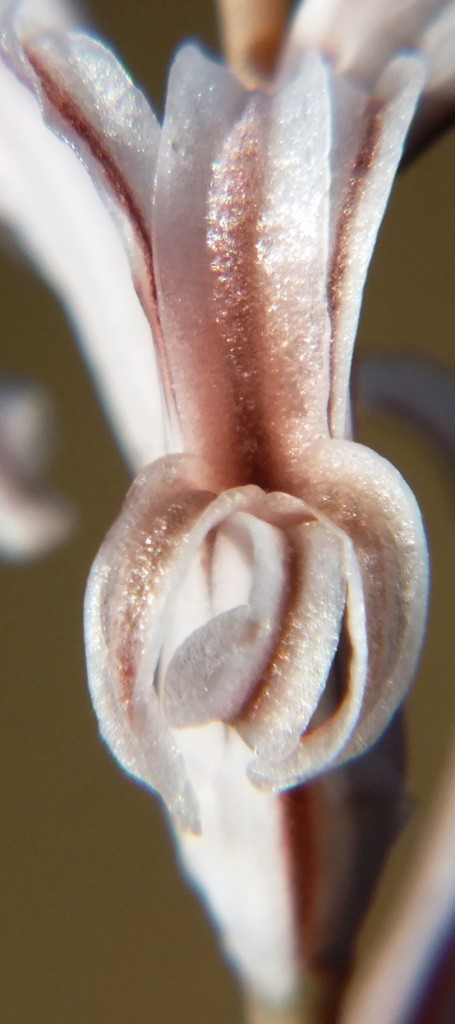
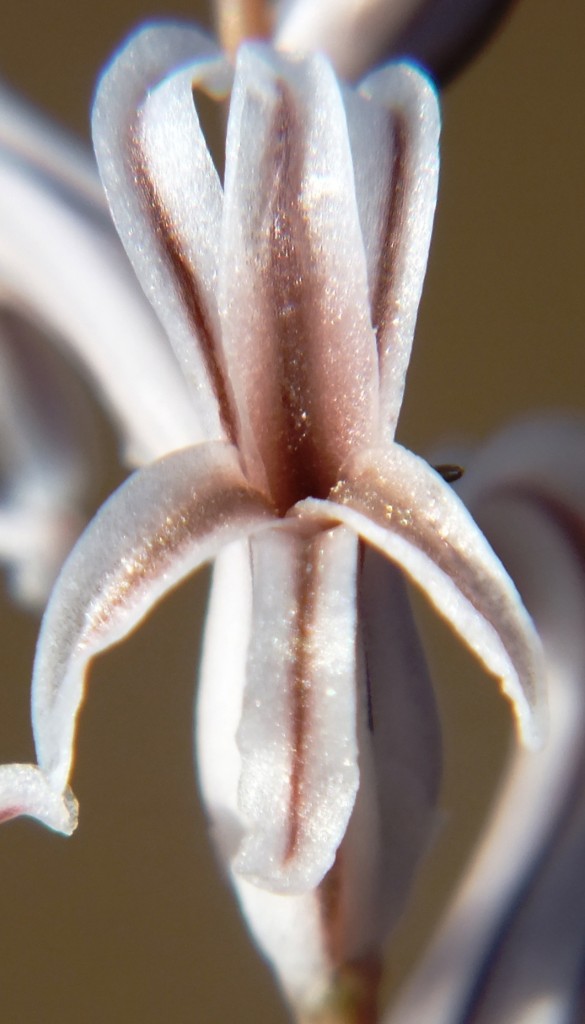
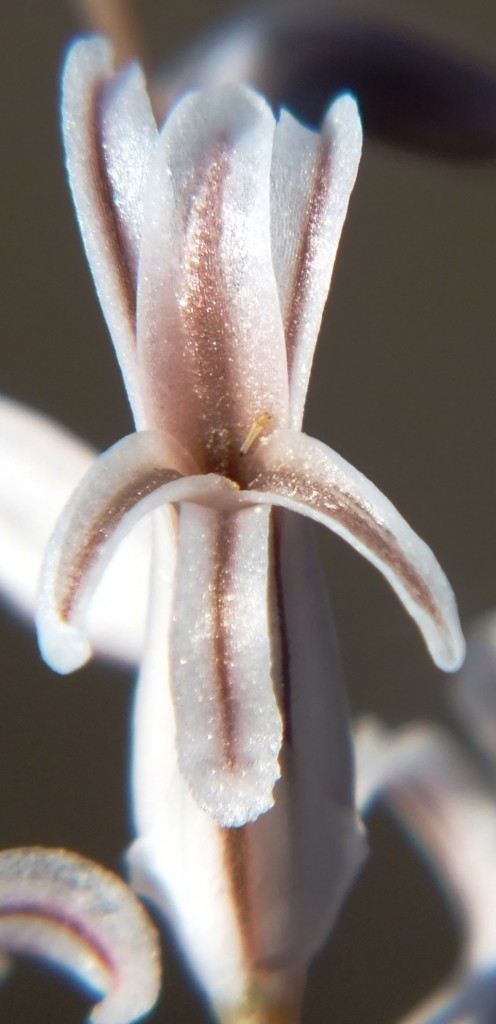



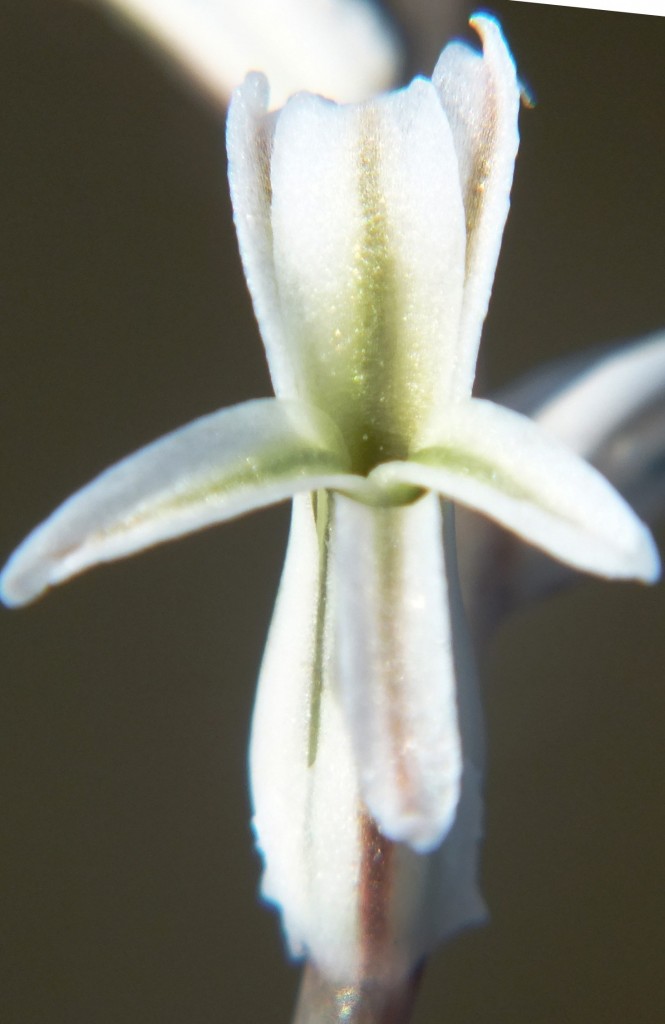
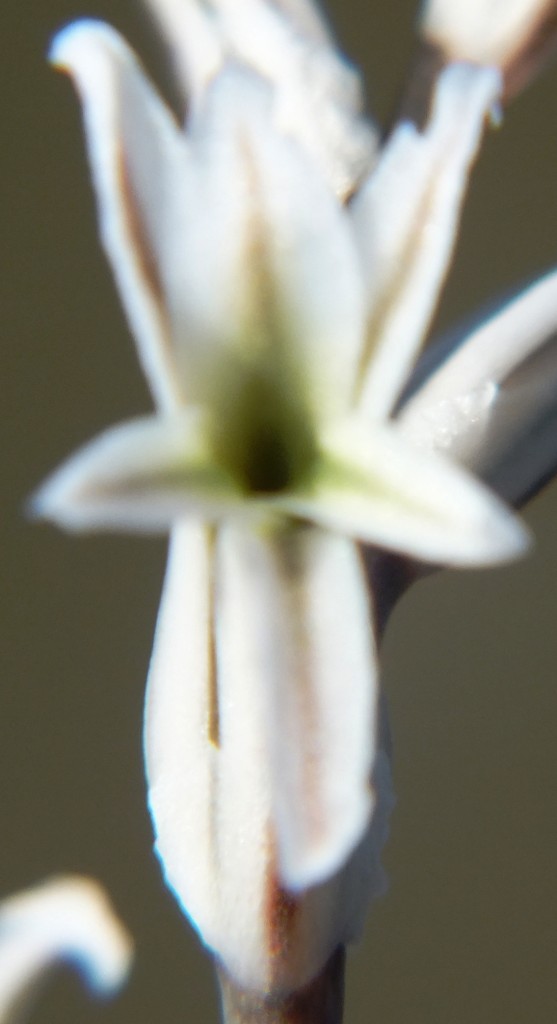


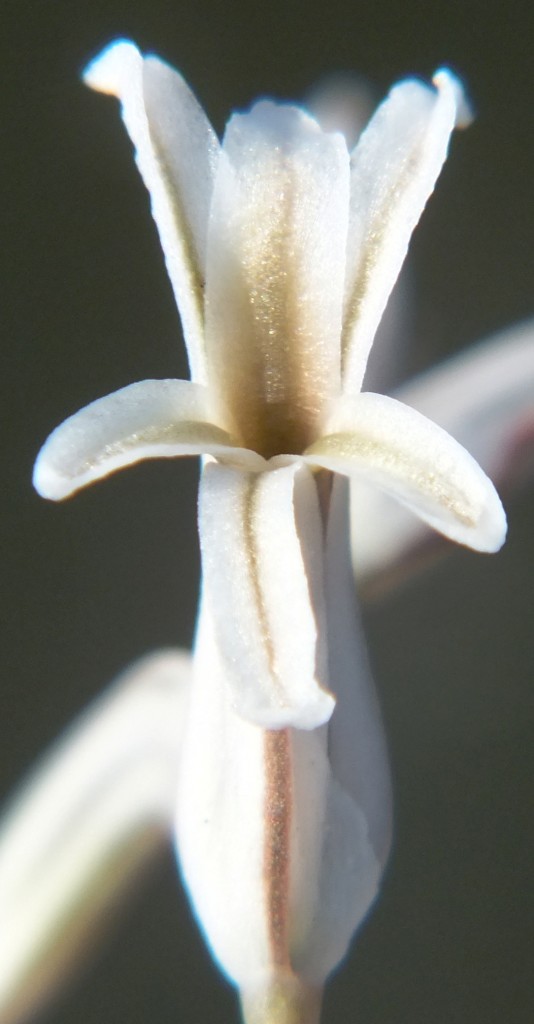

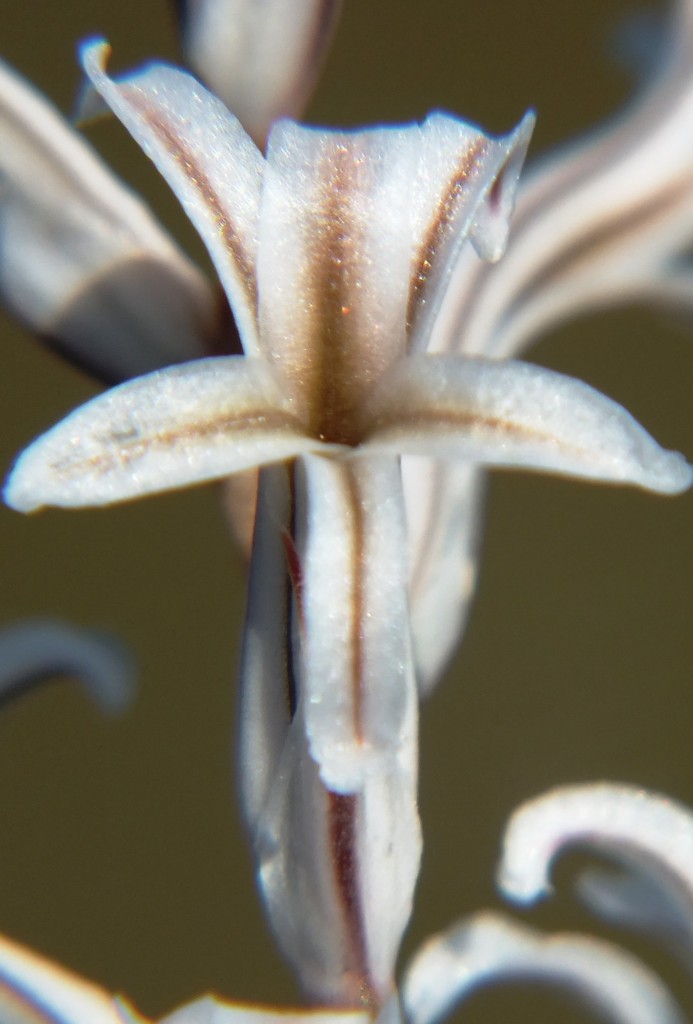

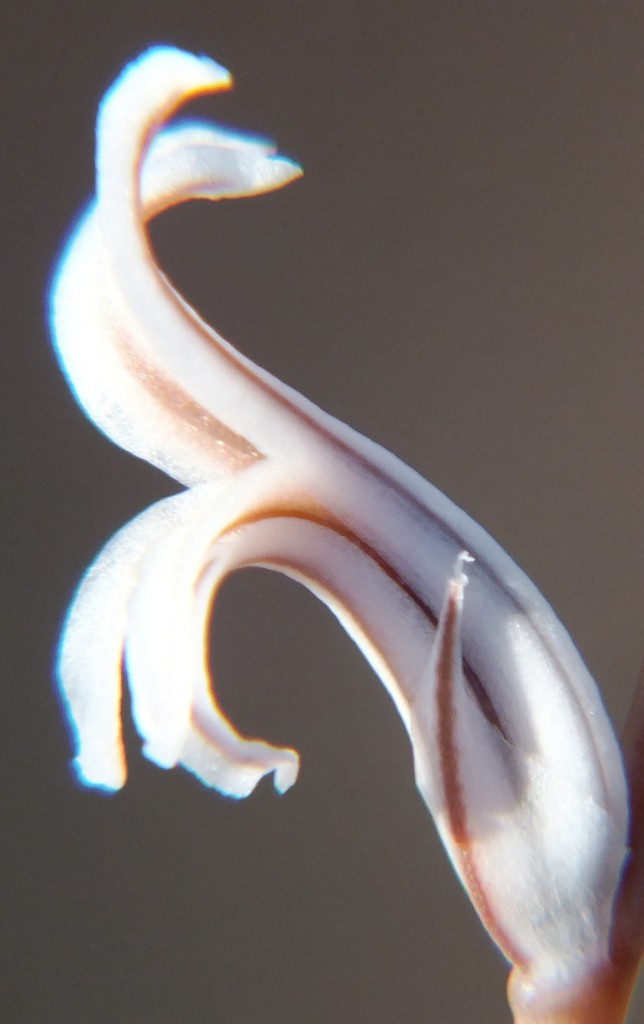


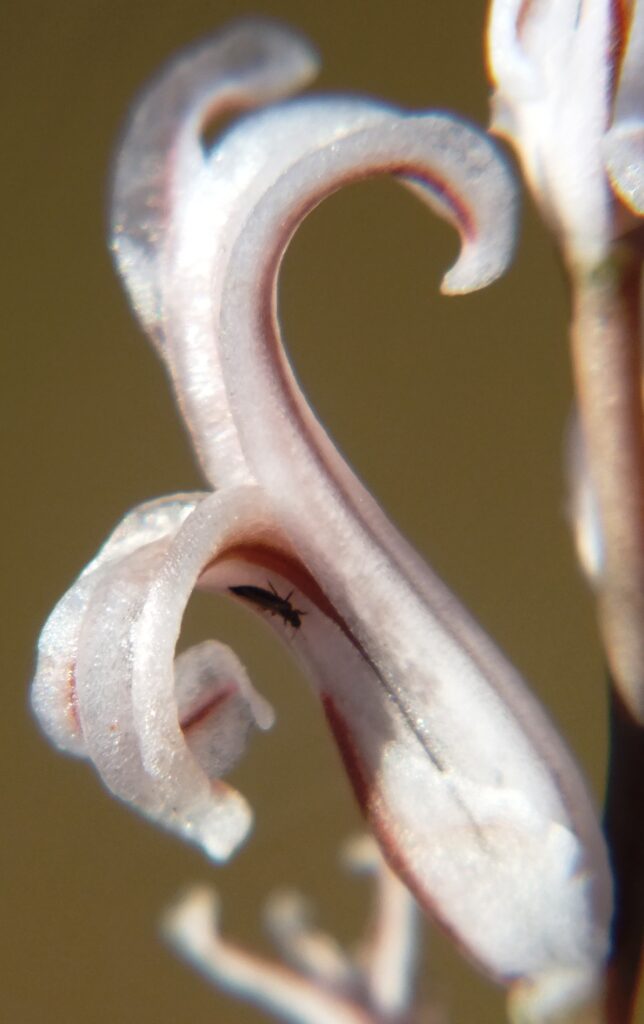

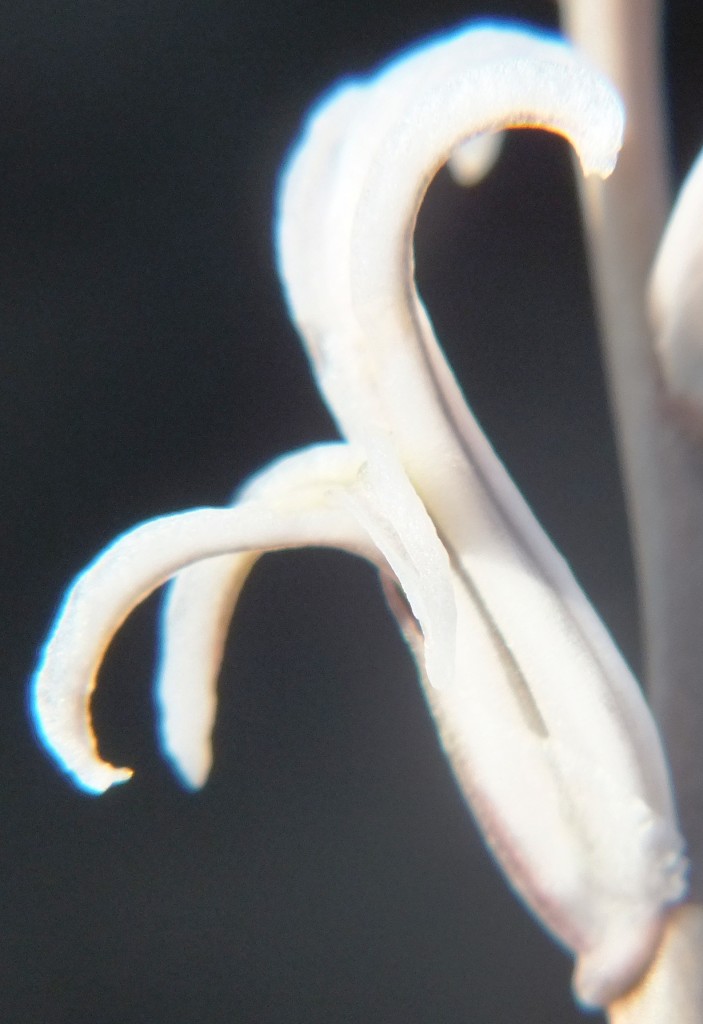
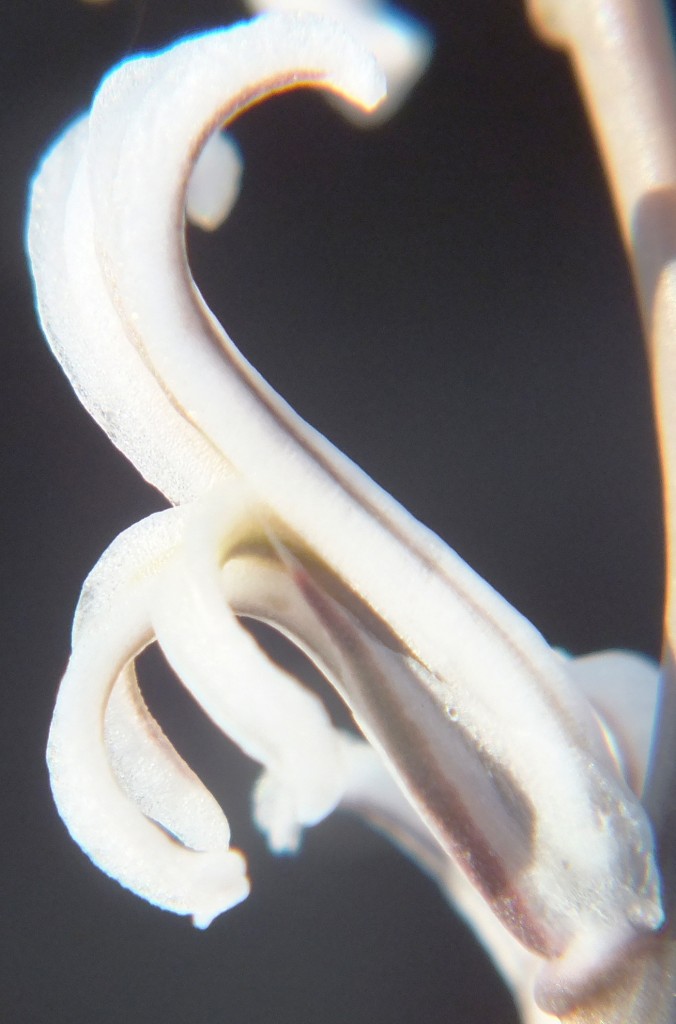

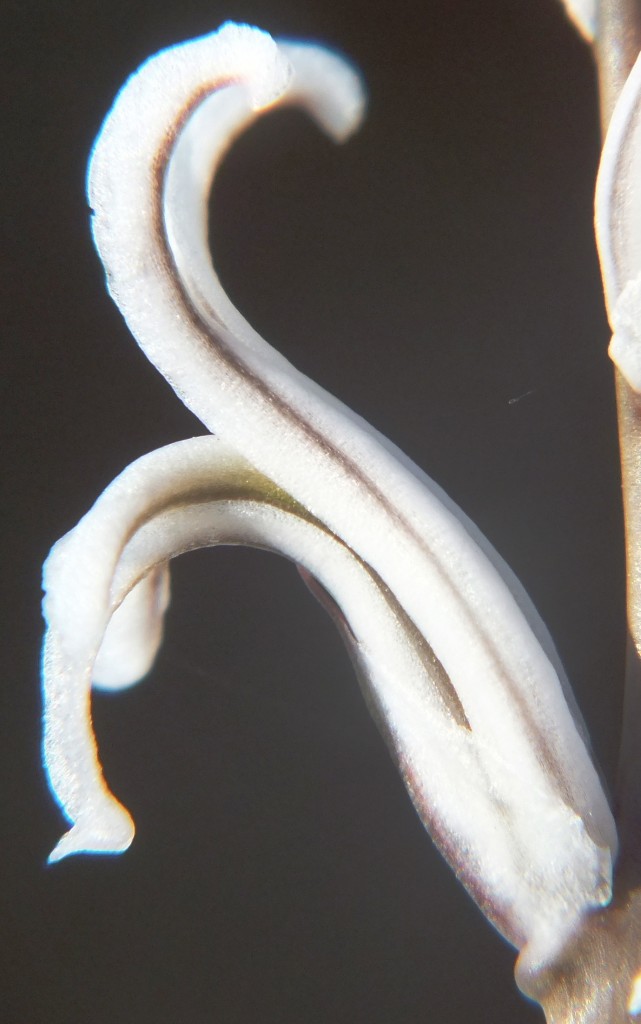
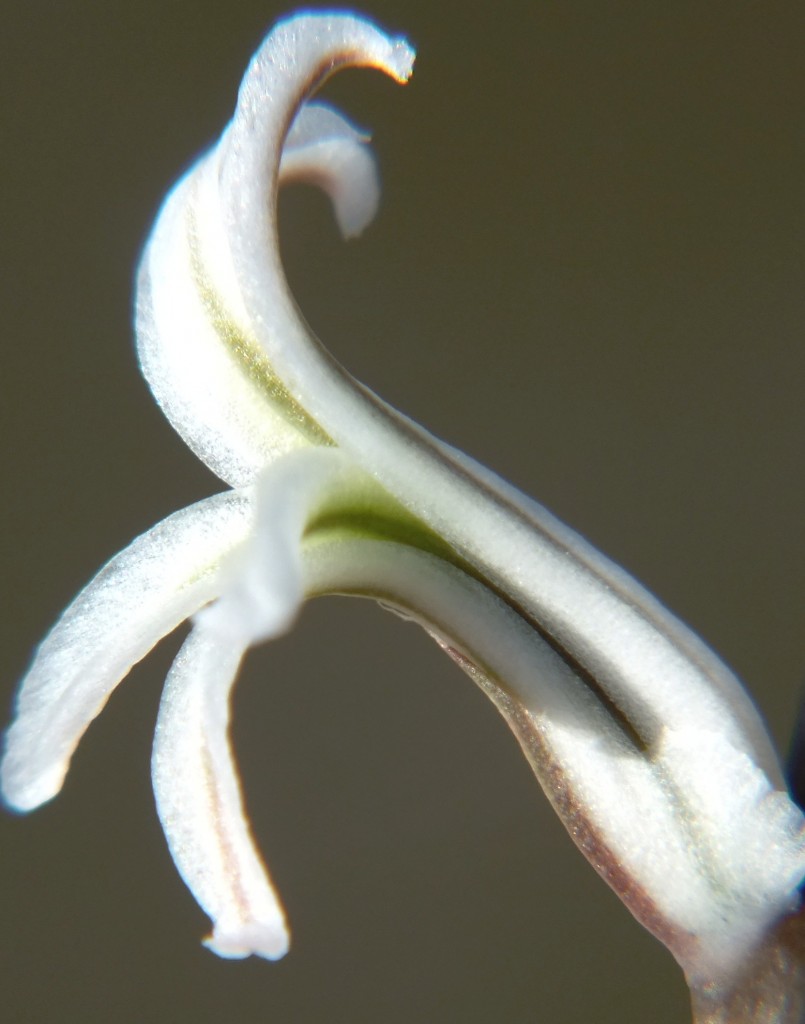
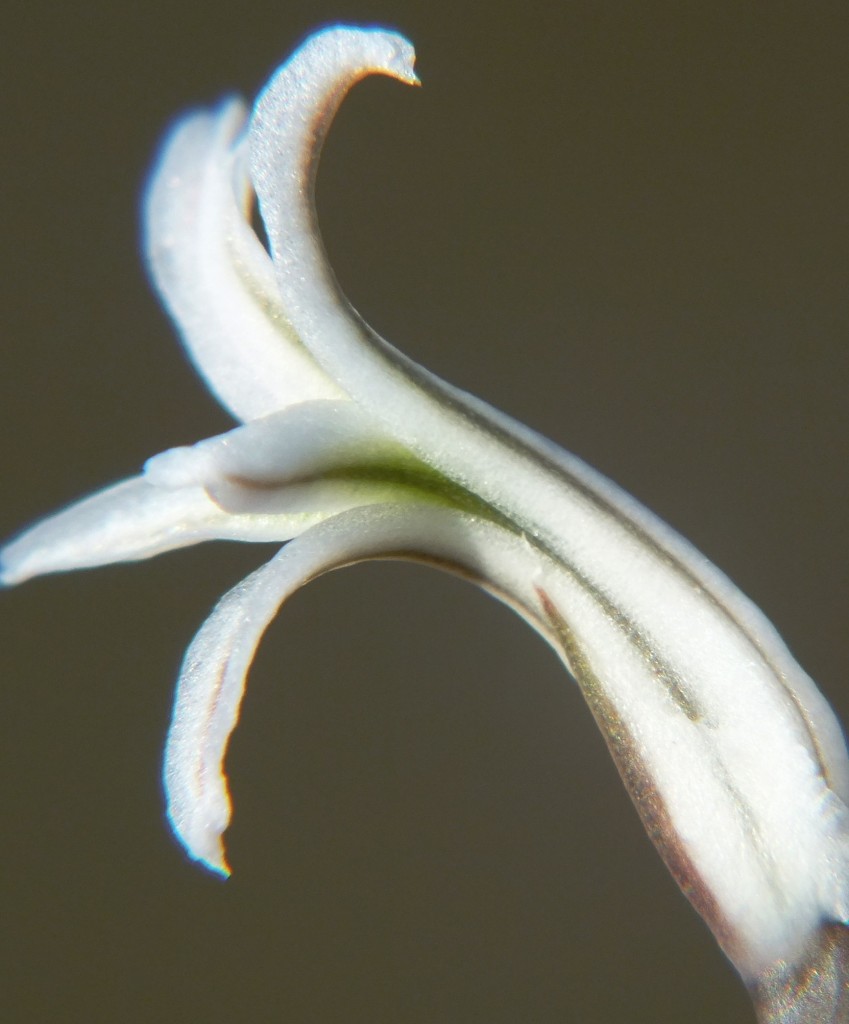
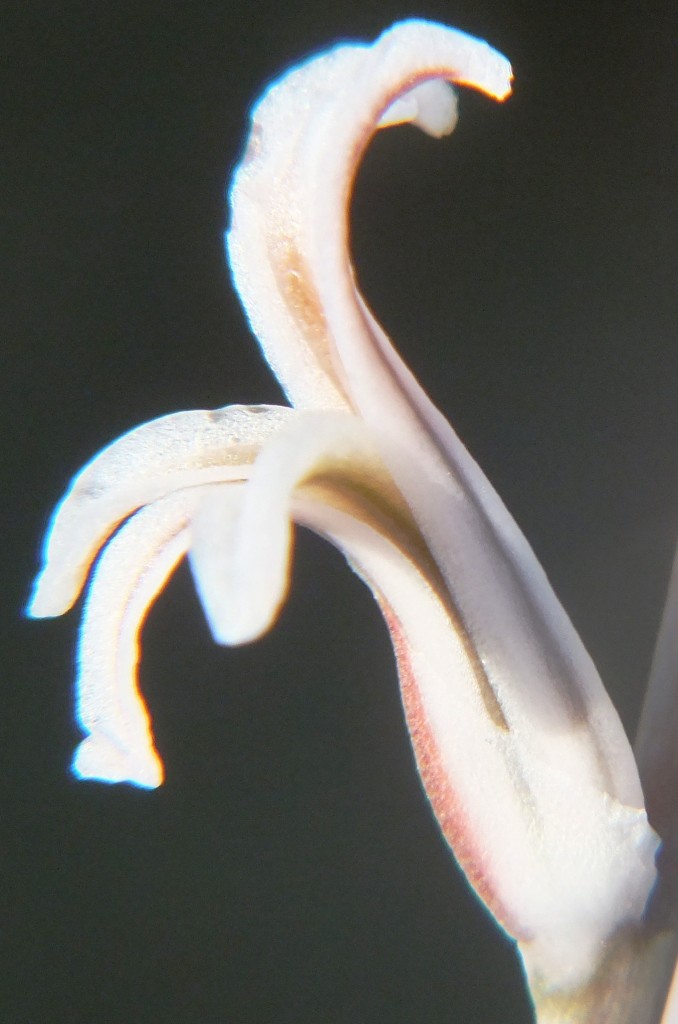
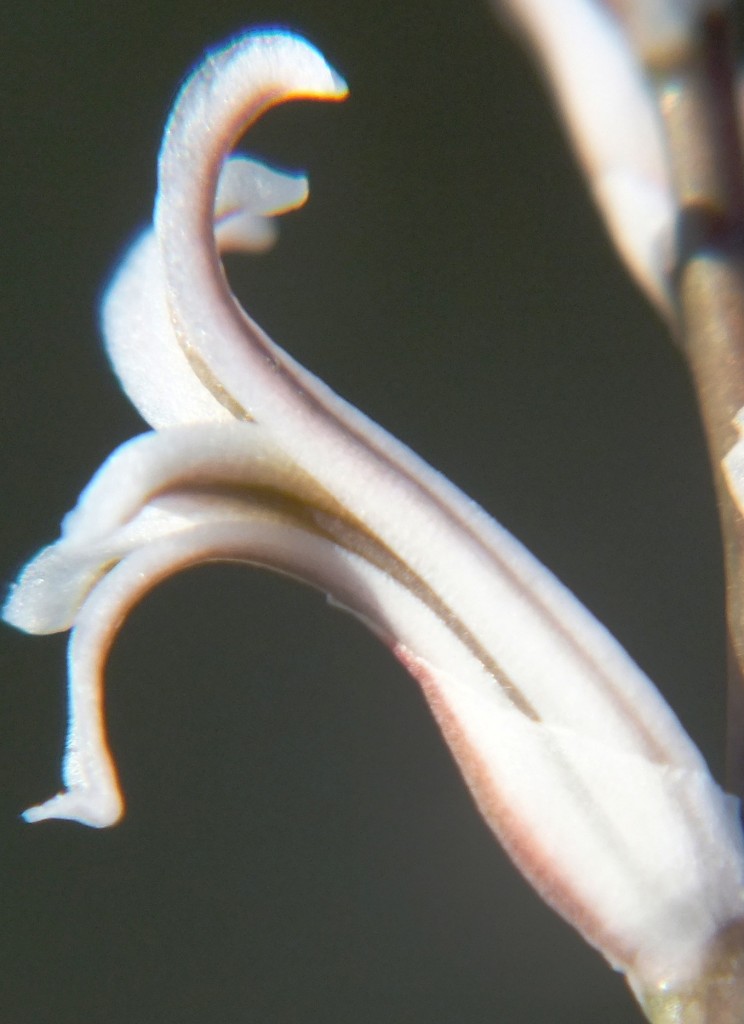
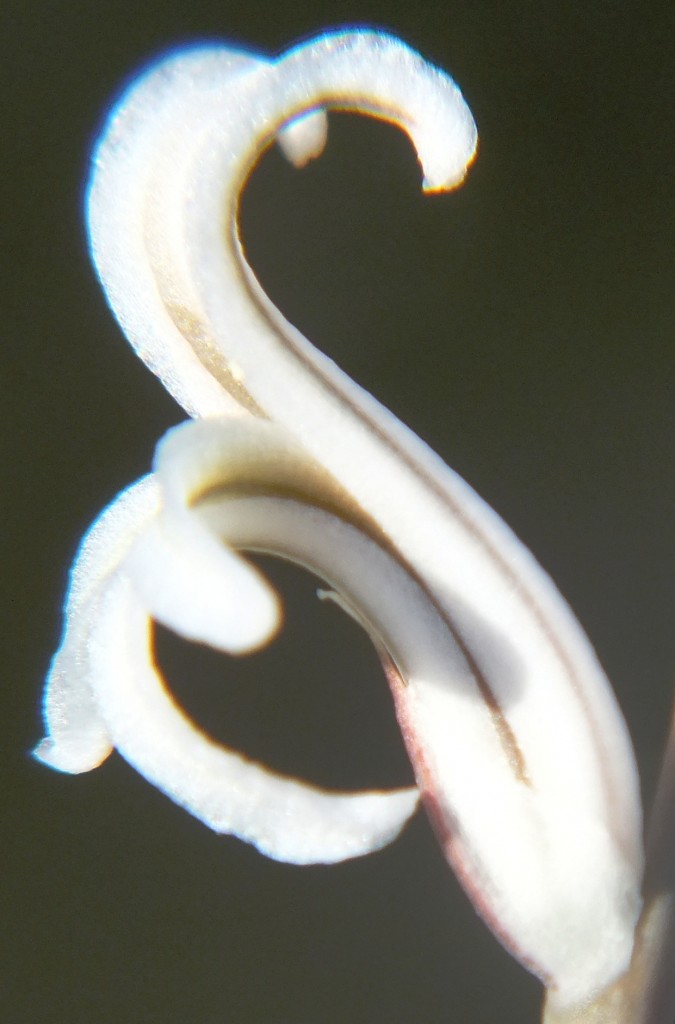
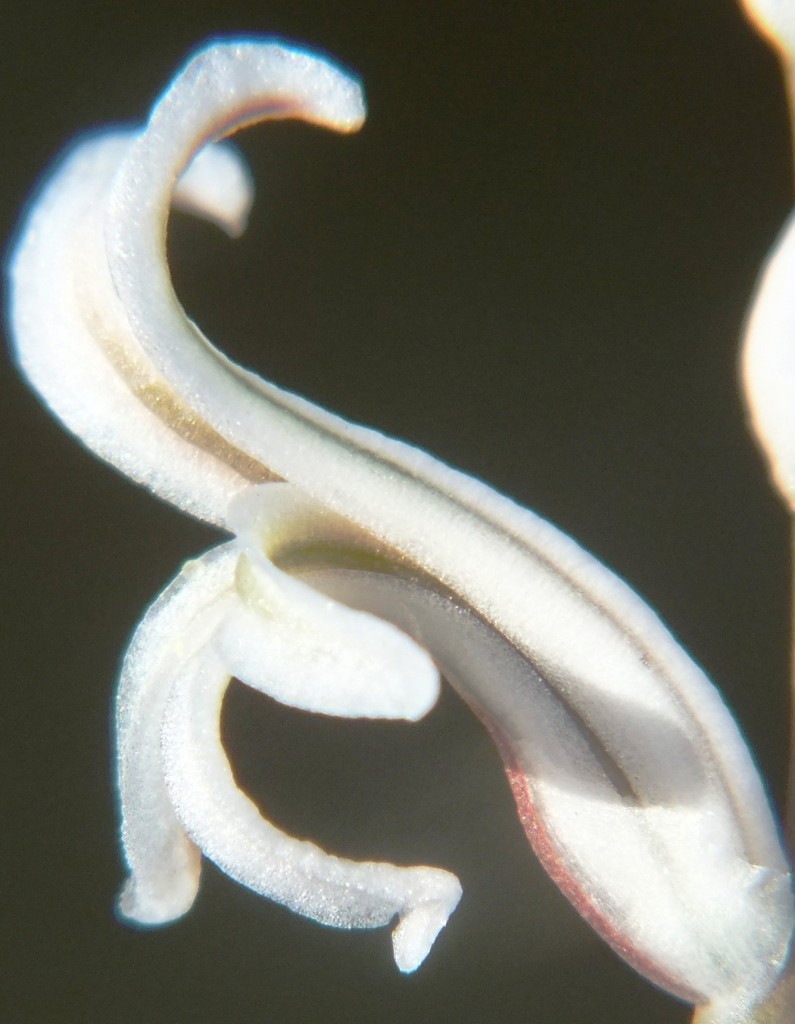
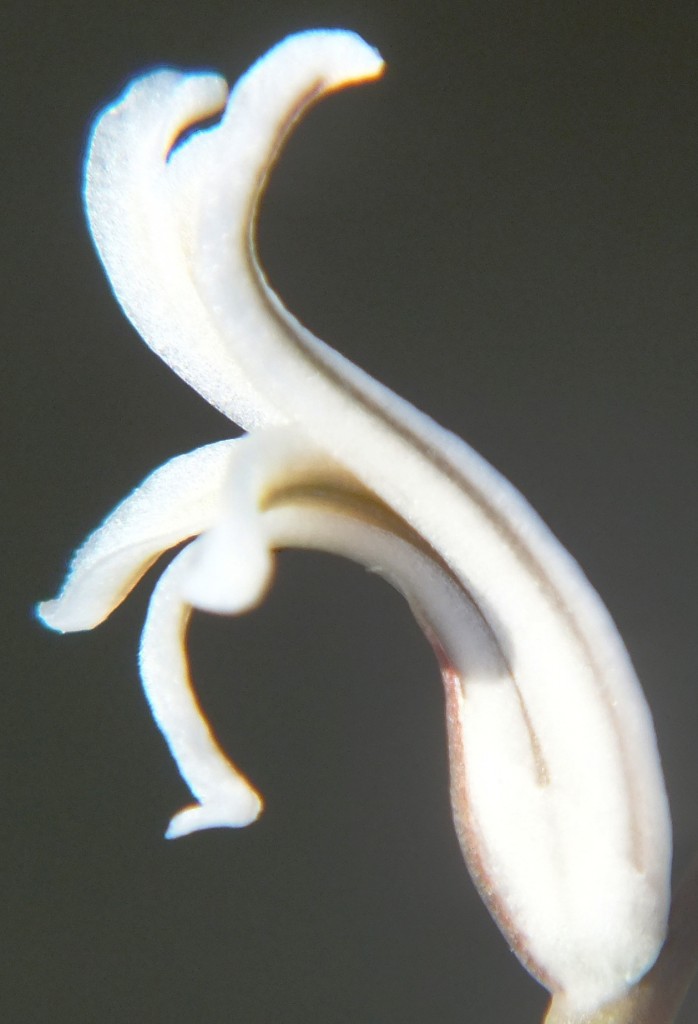
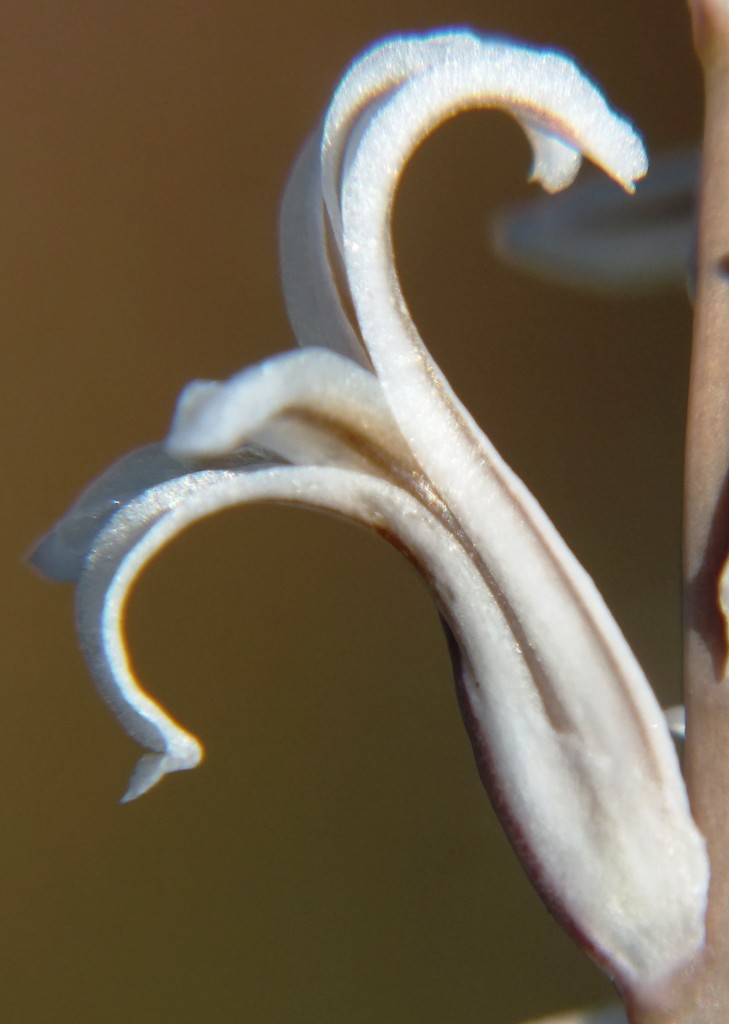
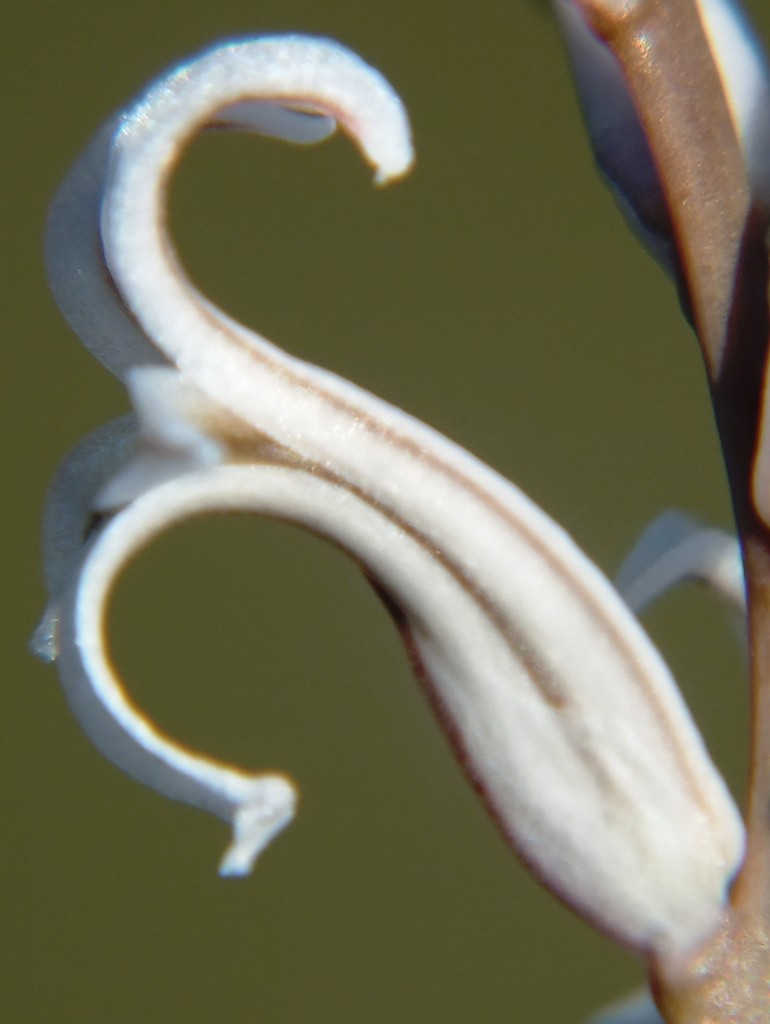
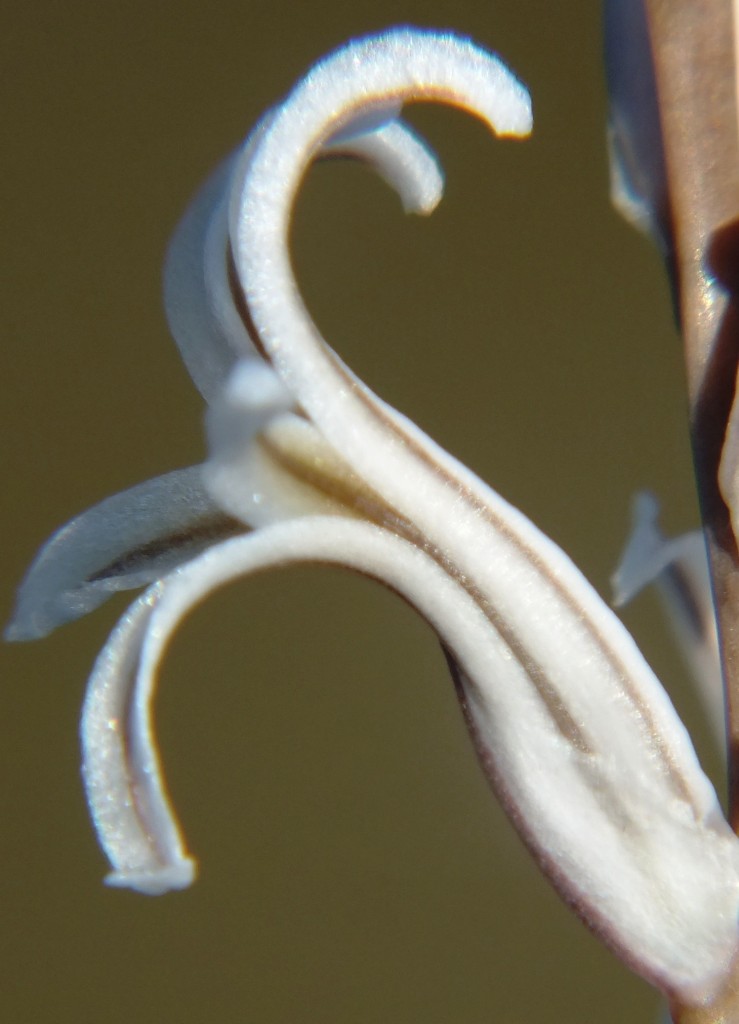


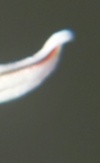
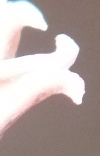
7. MBB7758 H. retusa, Skietbaan, S Riversdale.
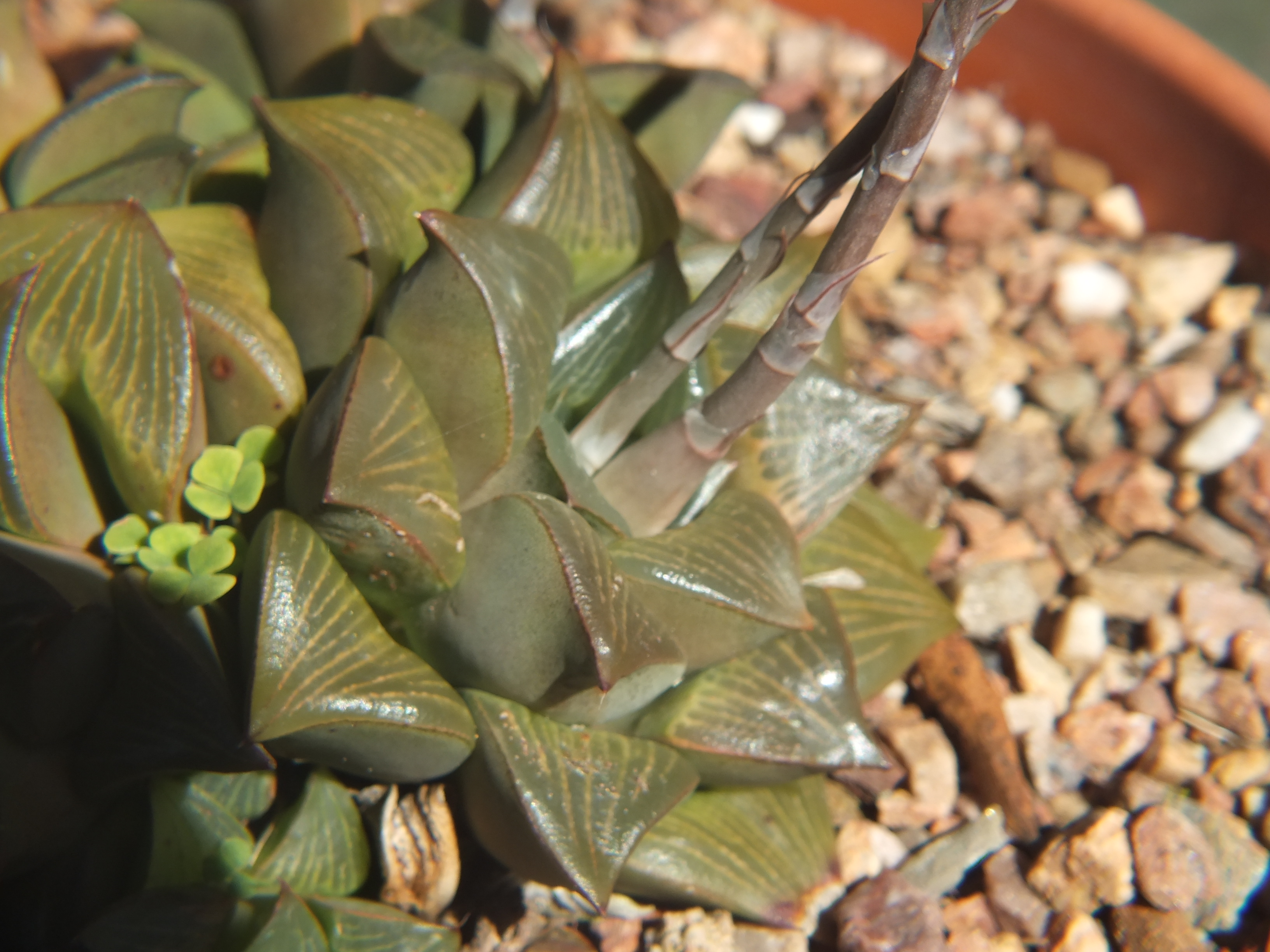
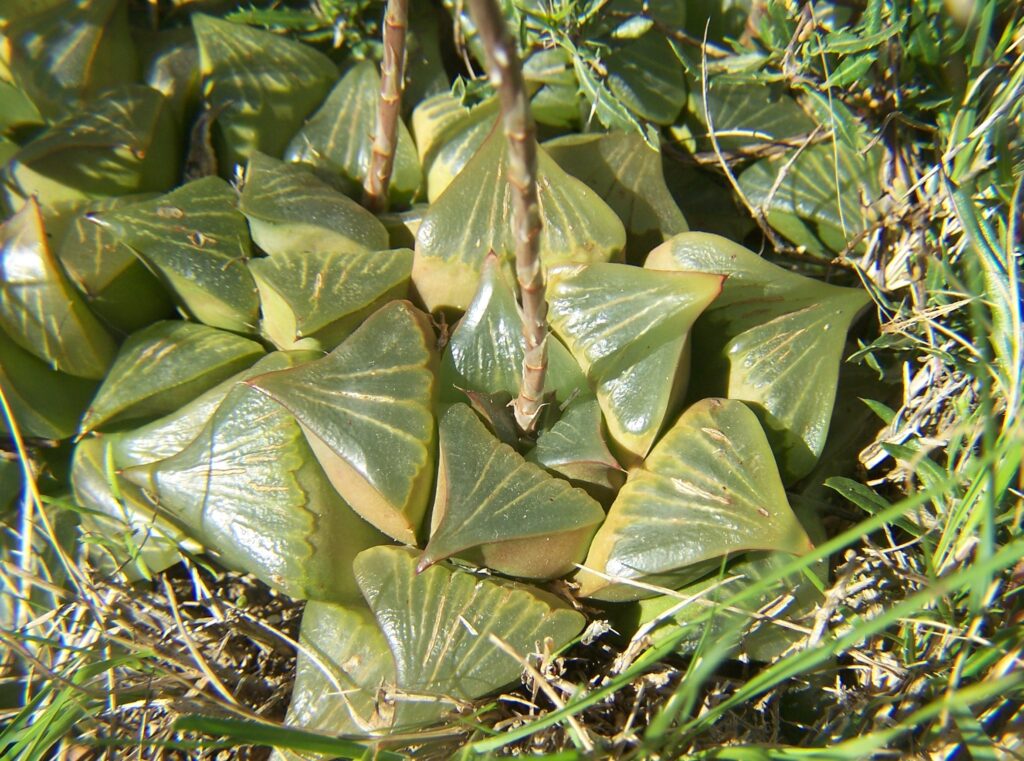
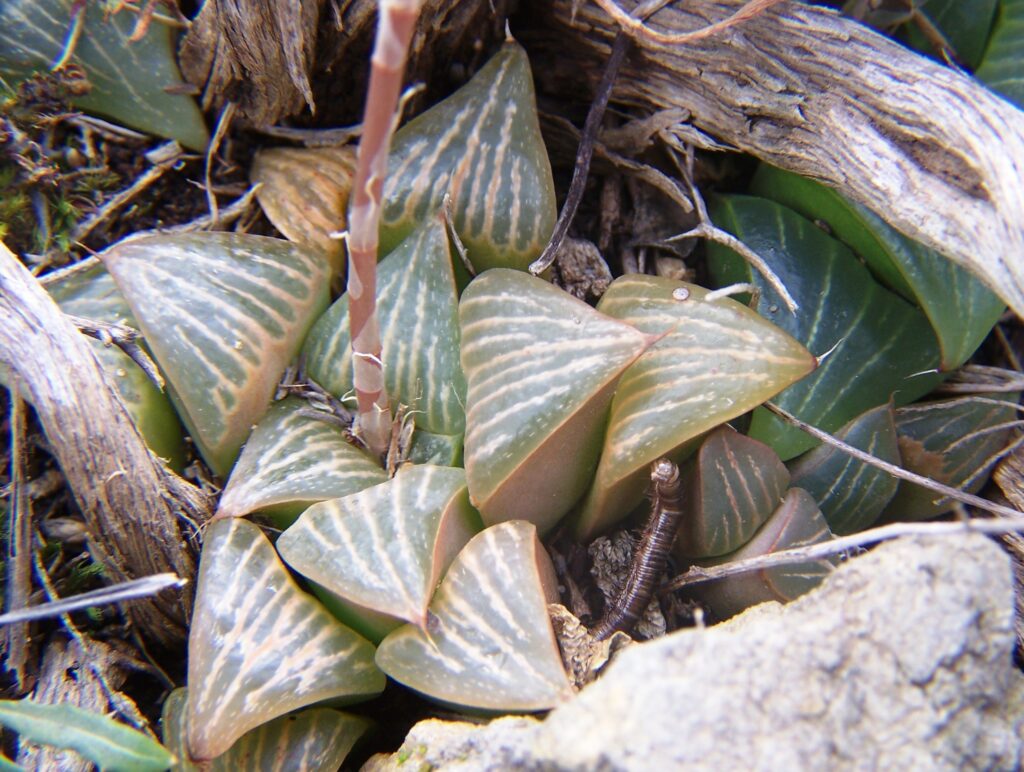
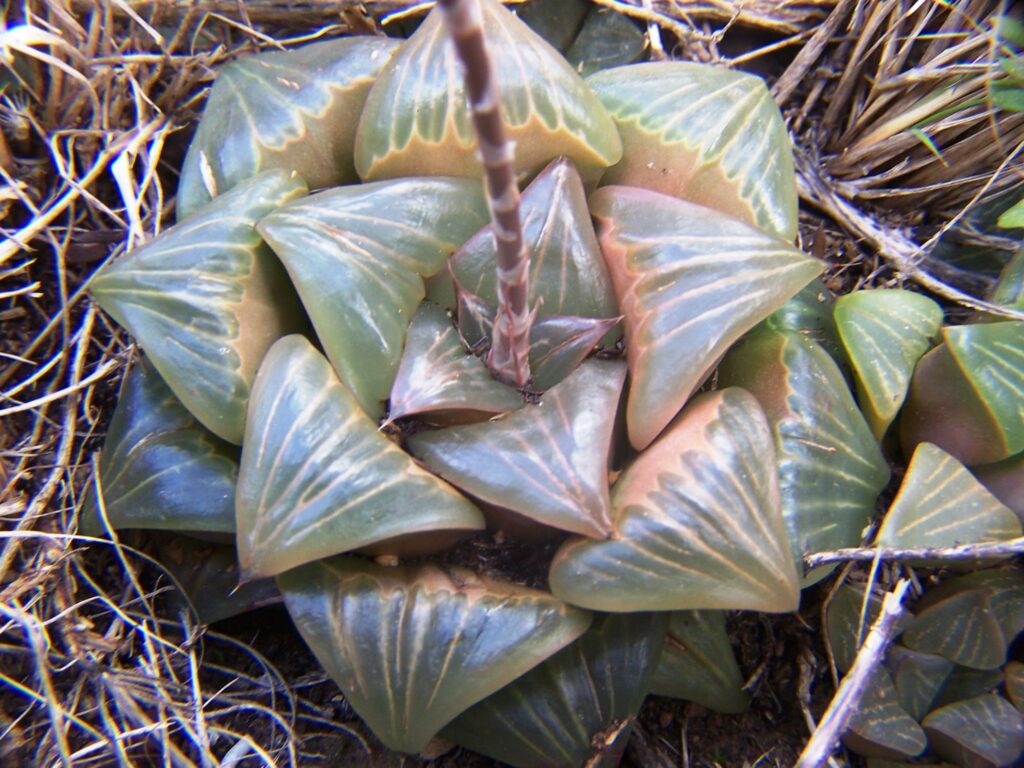
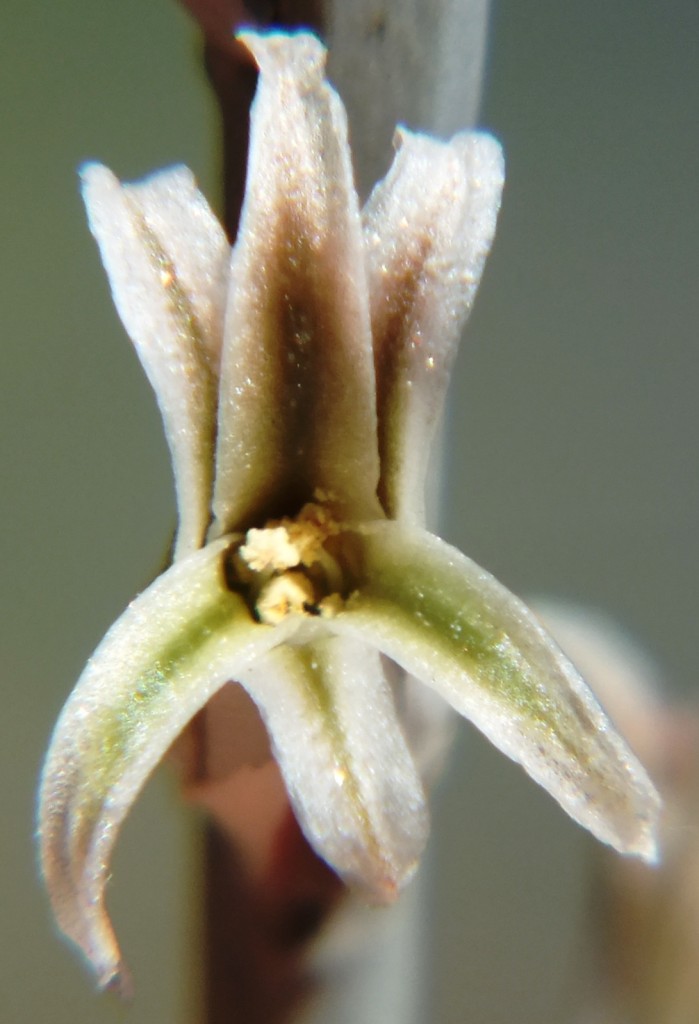
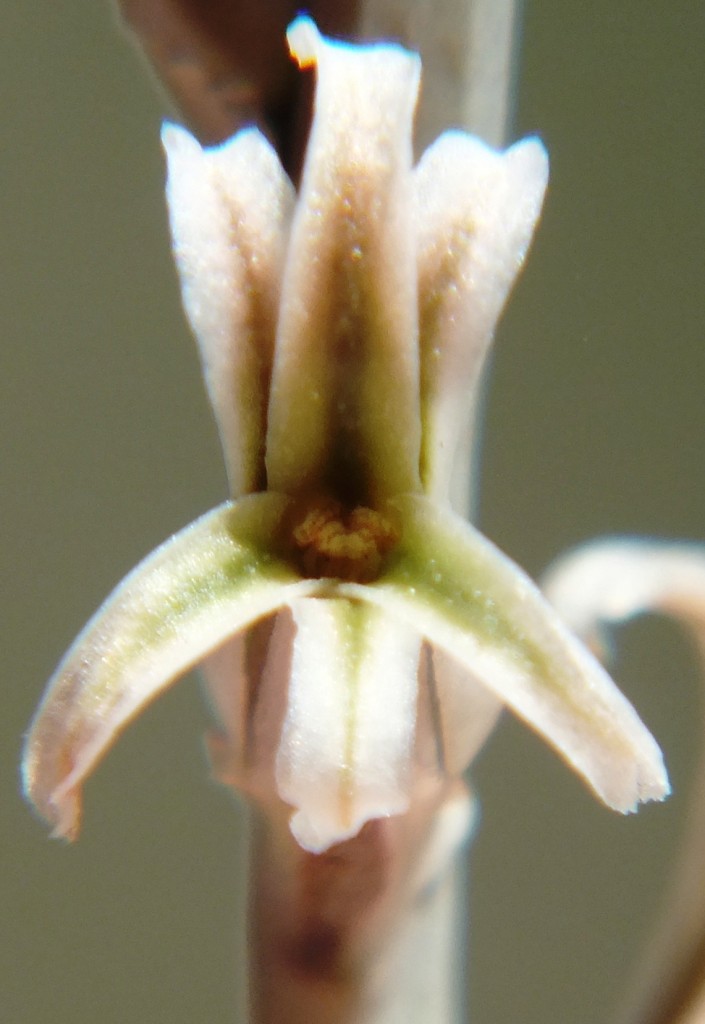
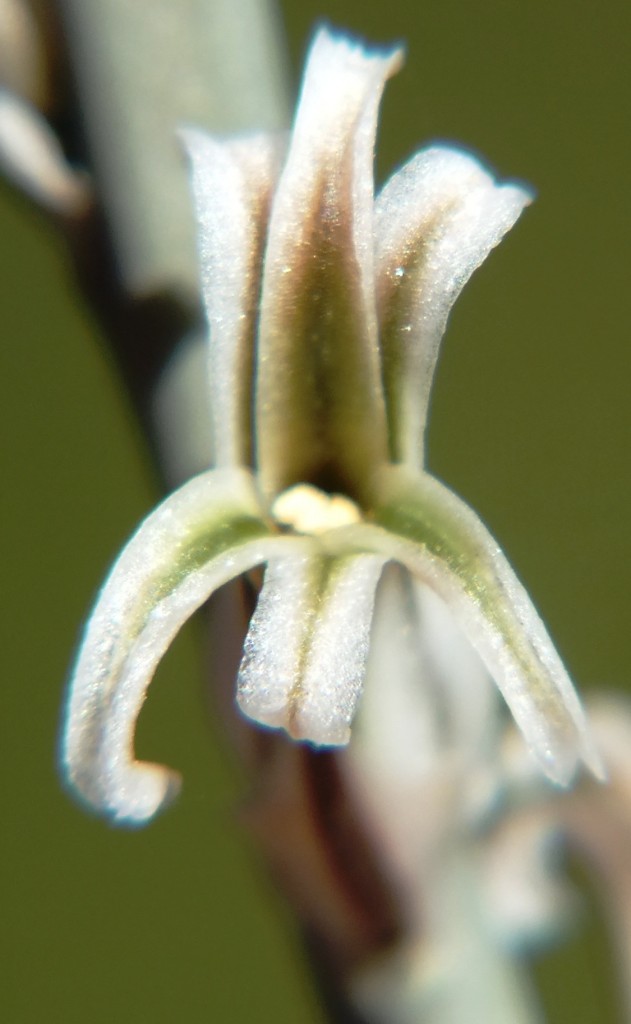
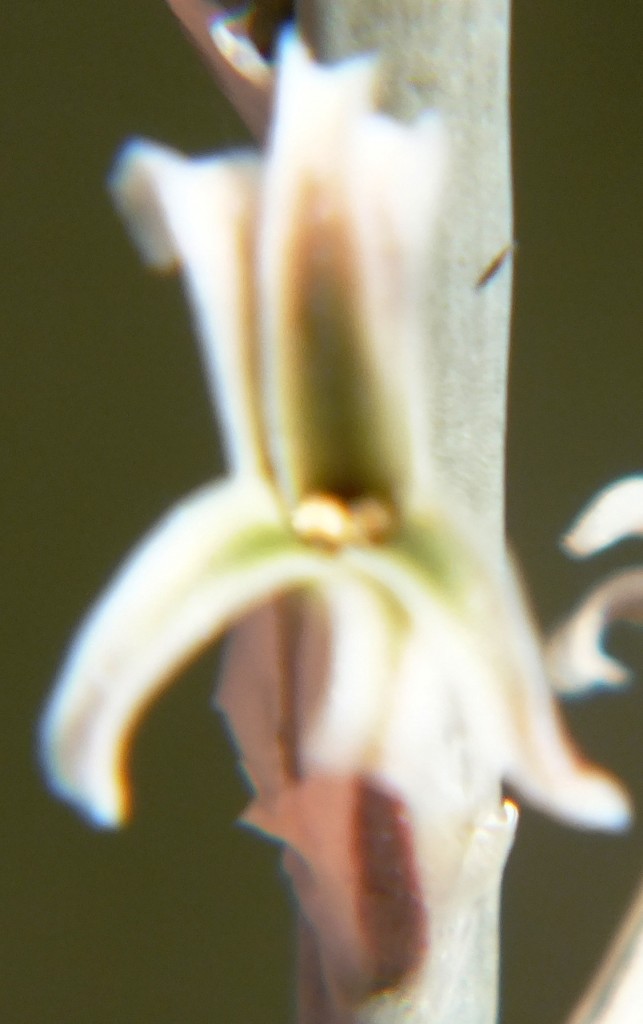
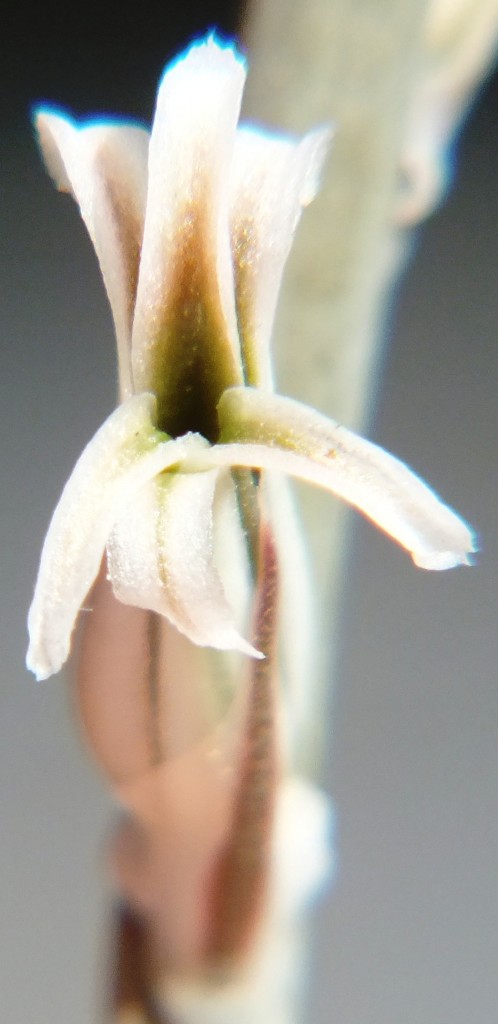
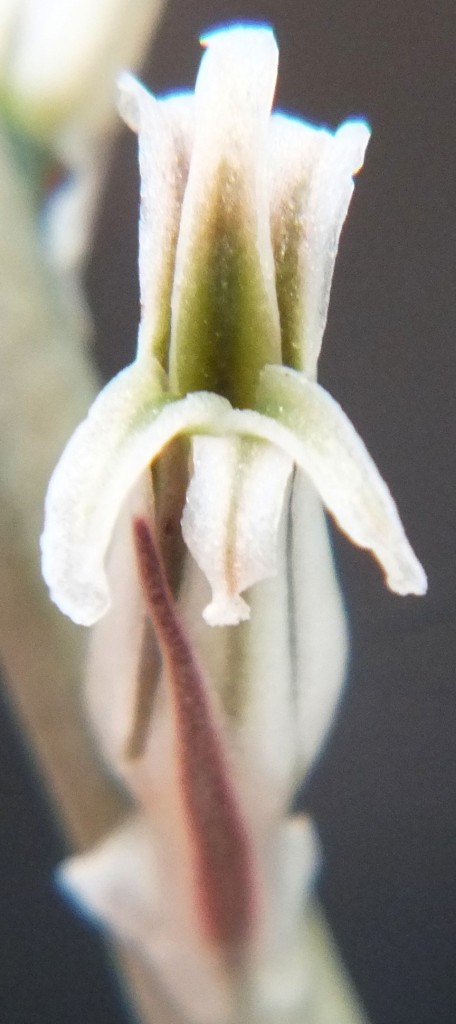
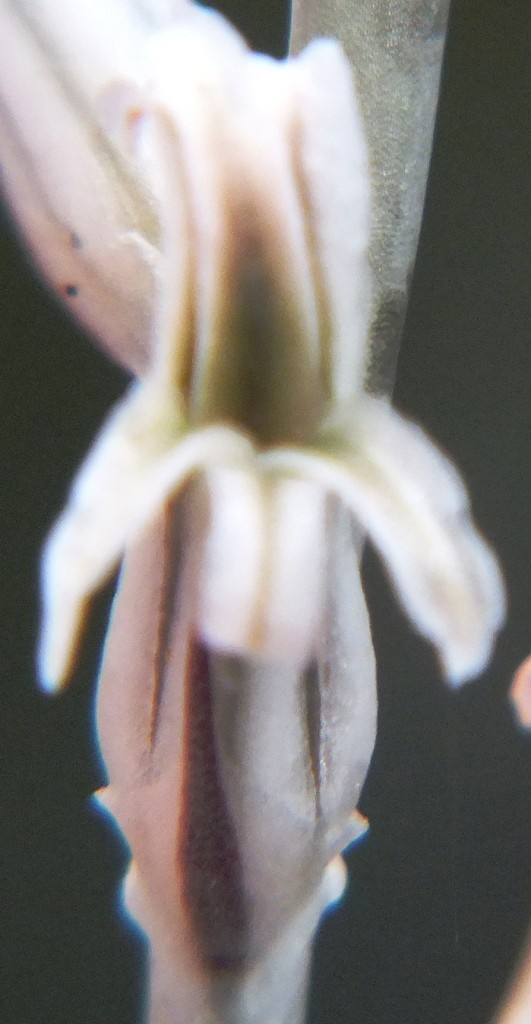
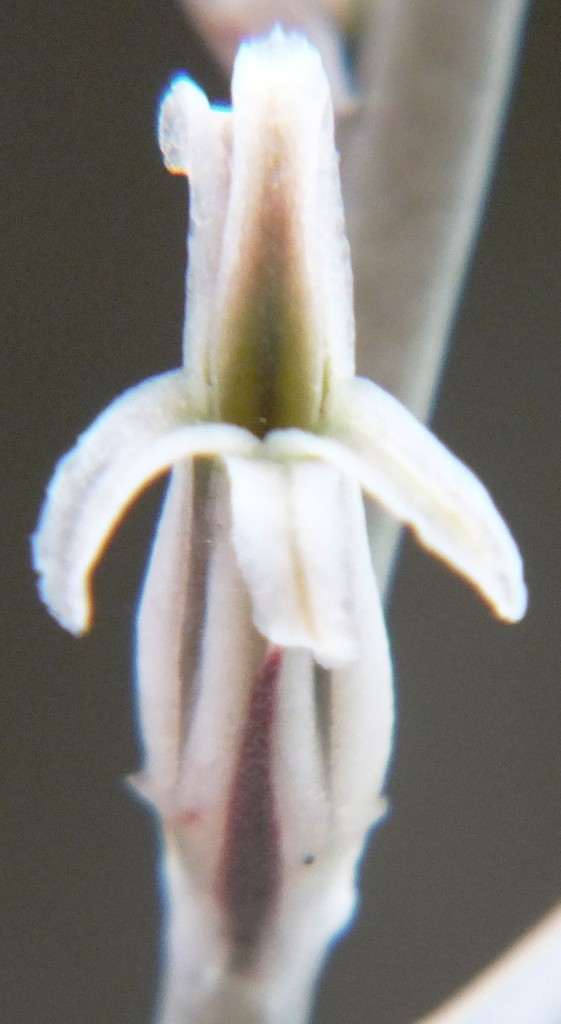
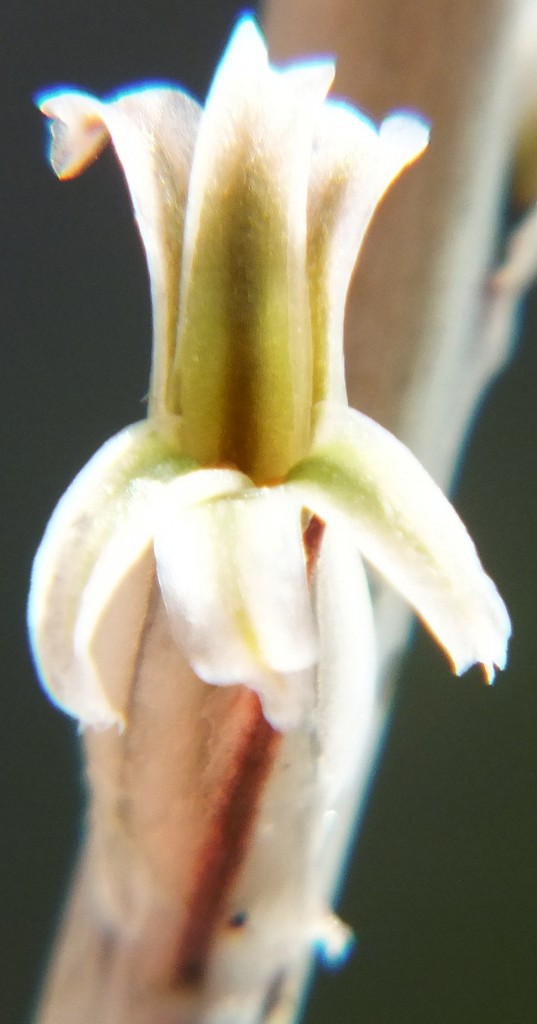
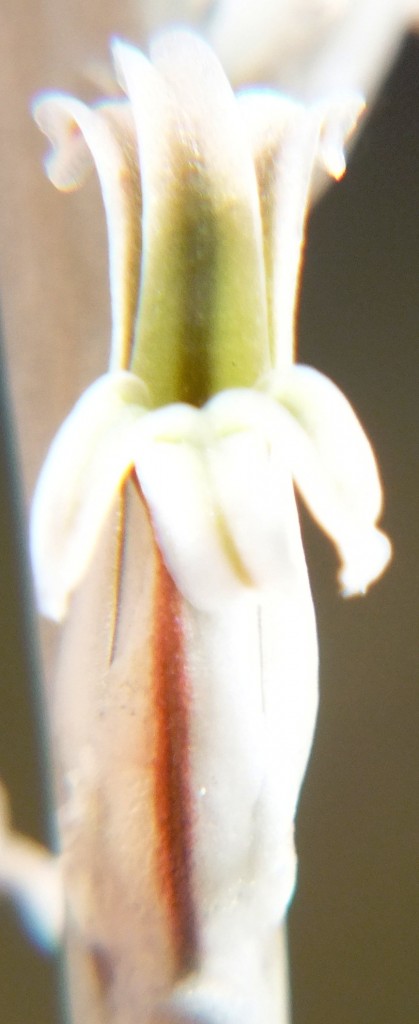
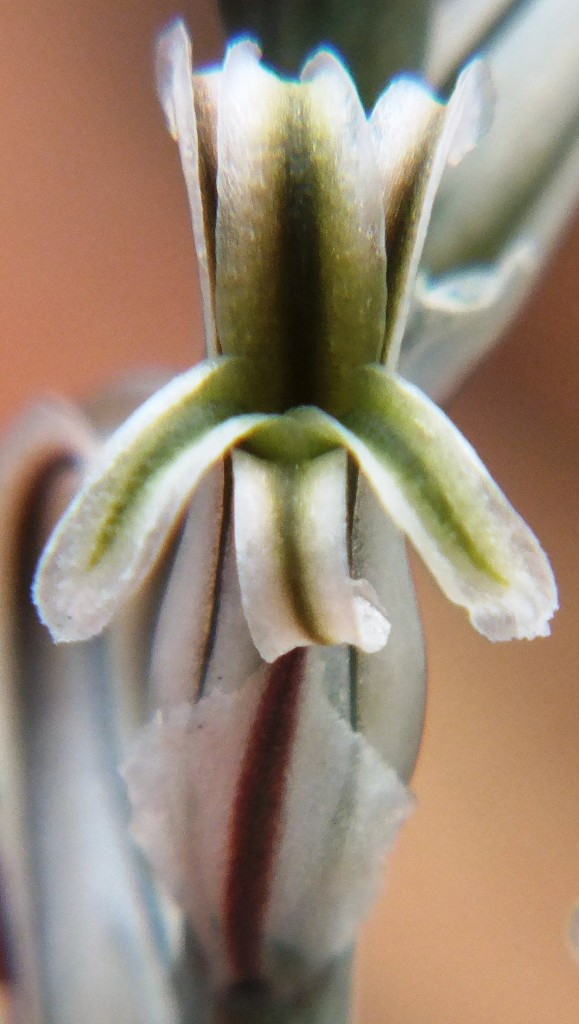
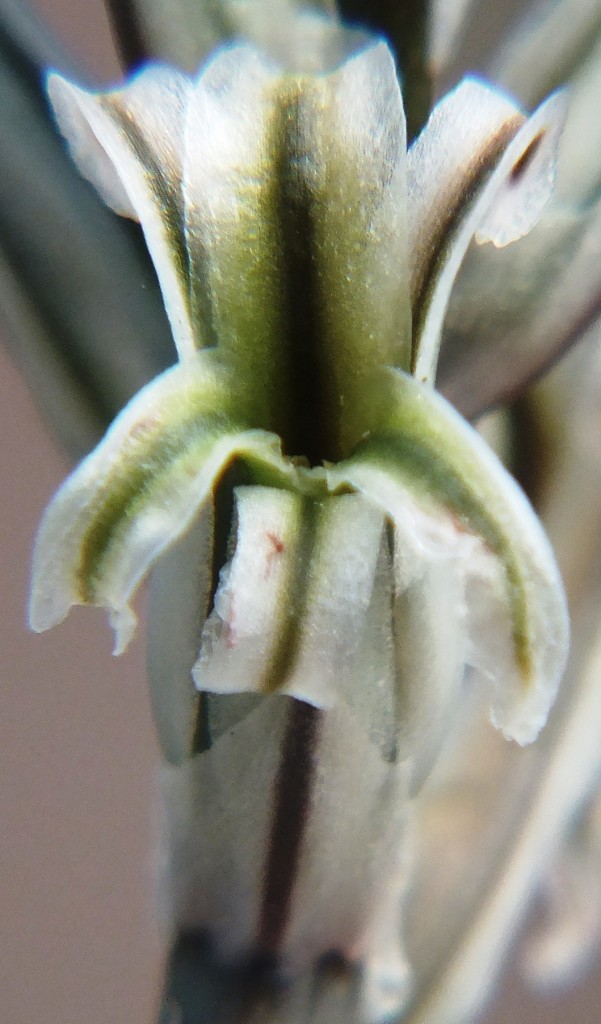
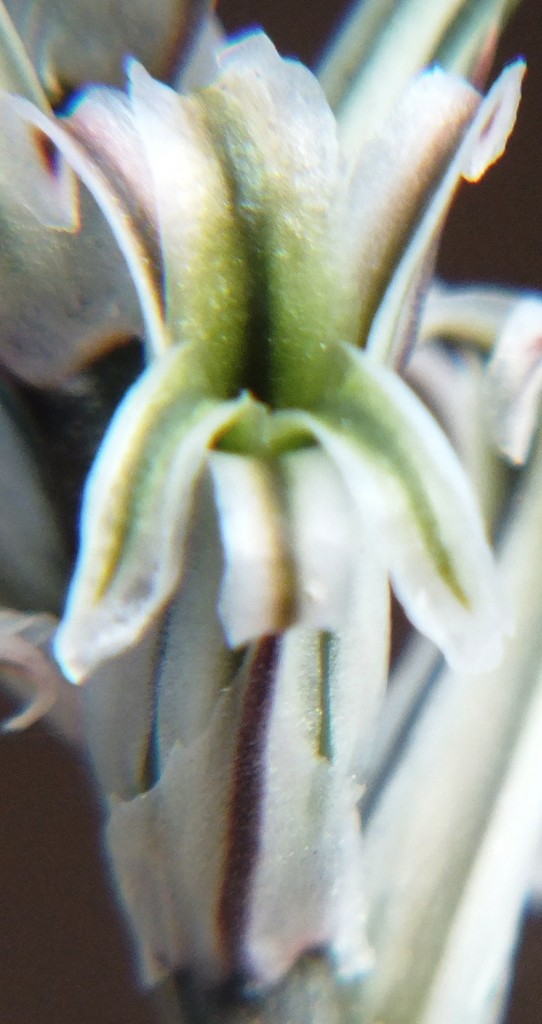
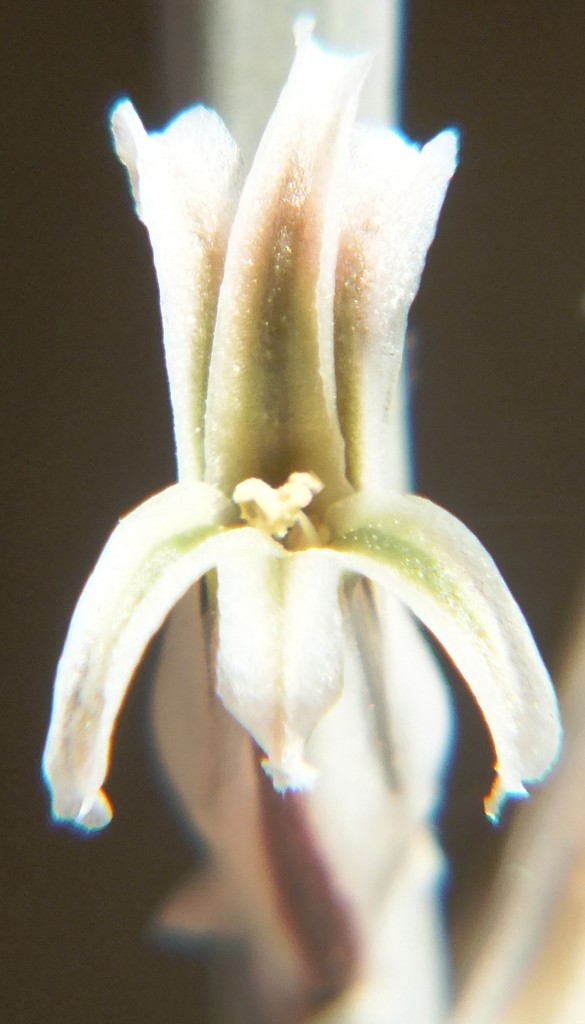
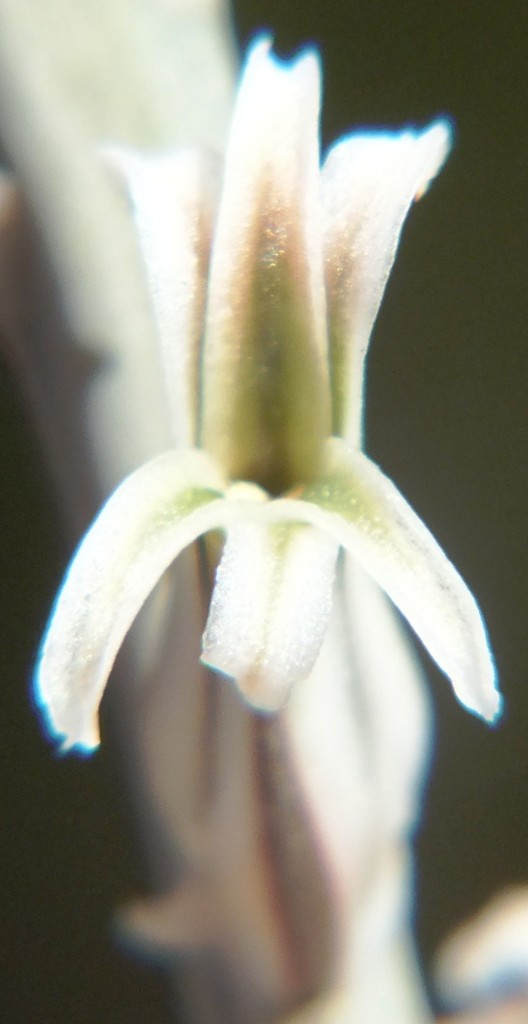
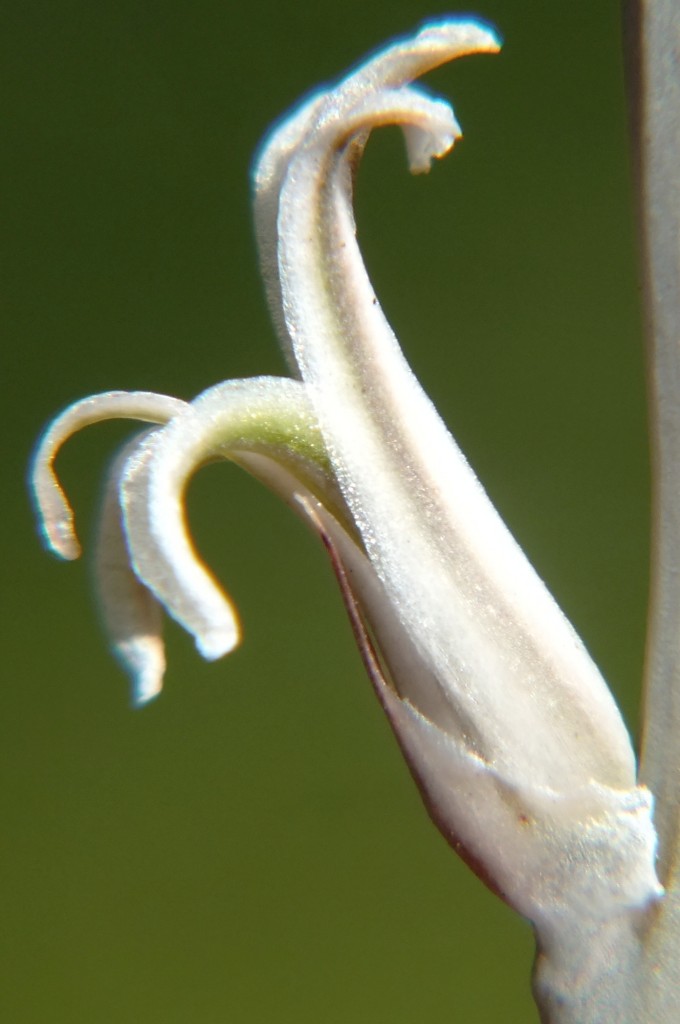
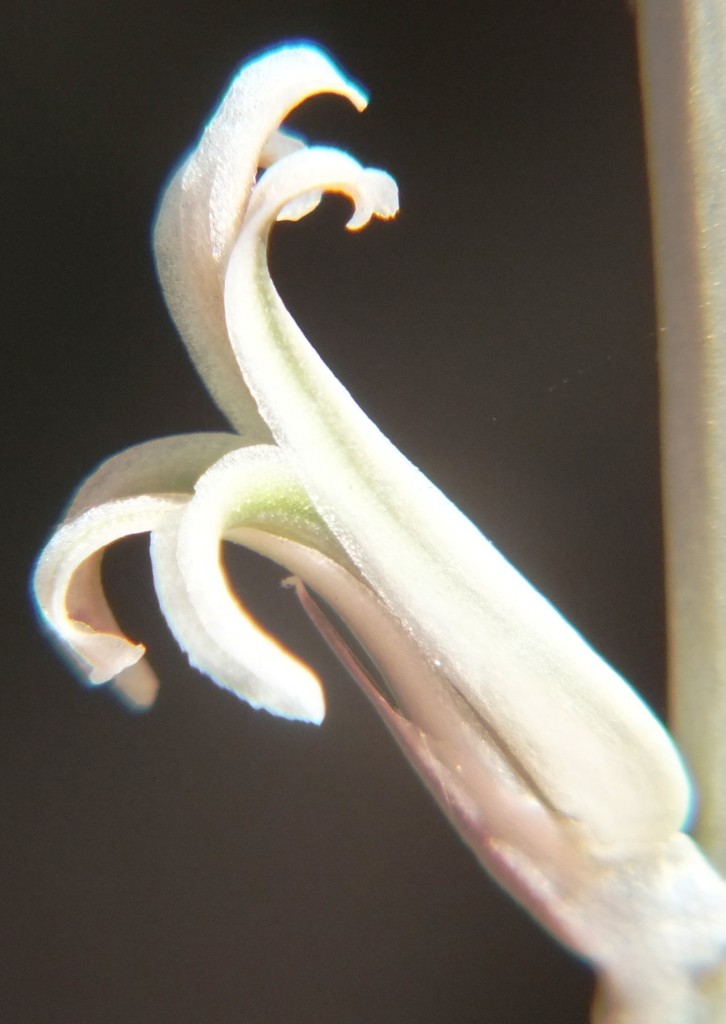
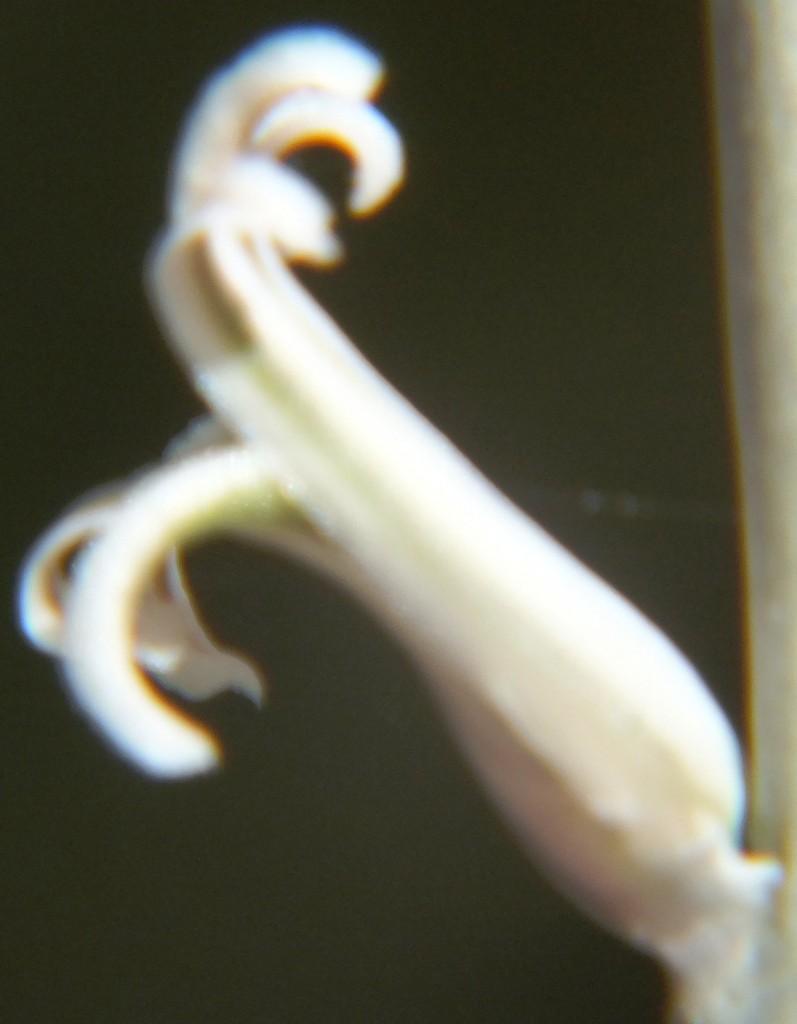
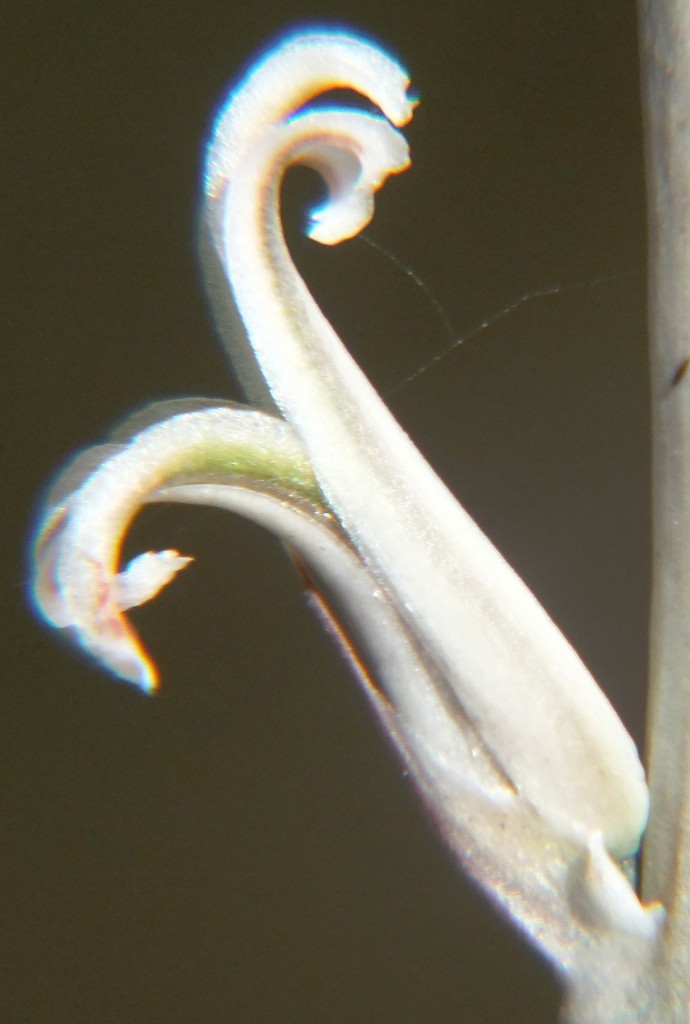


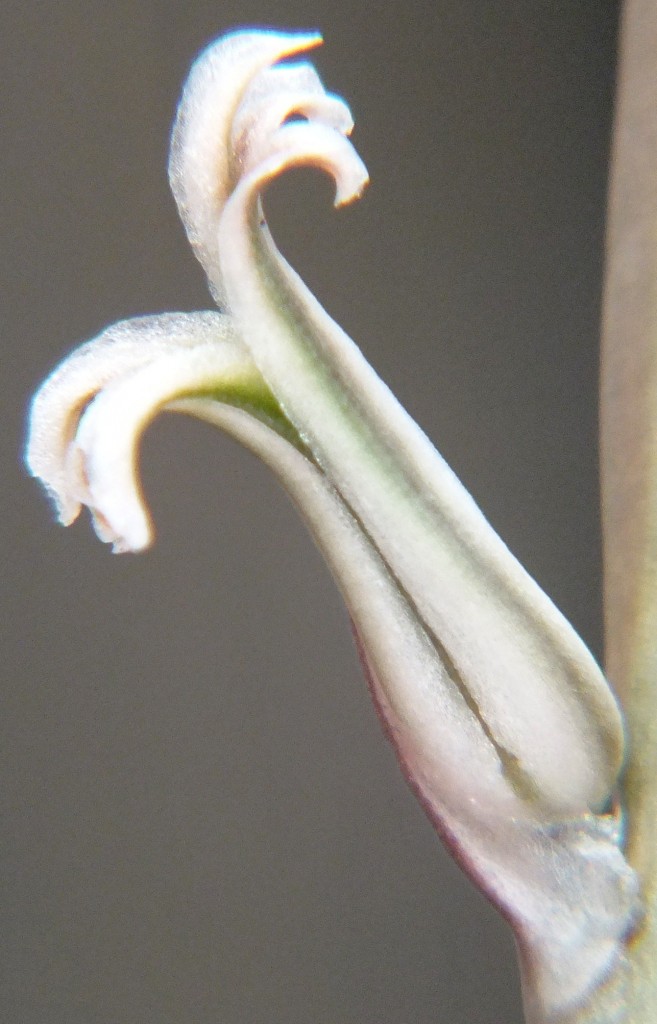
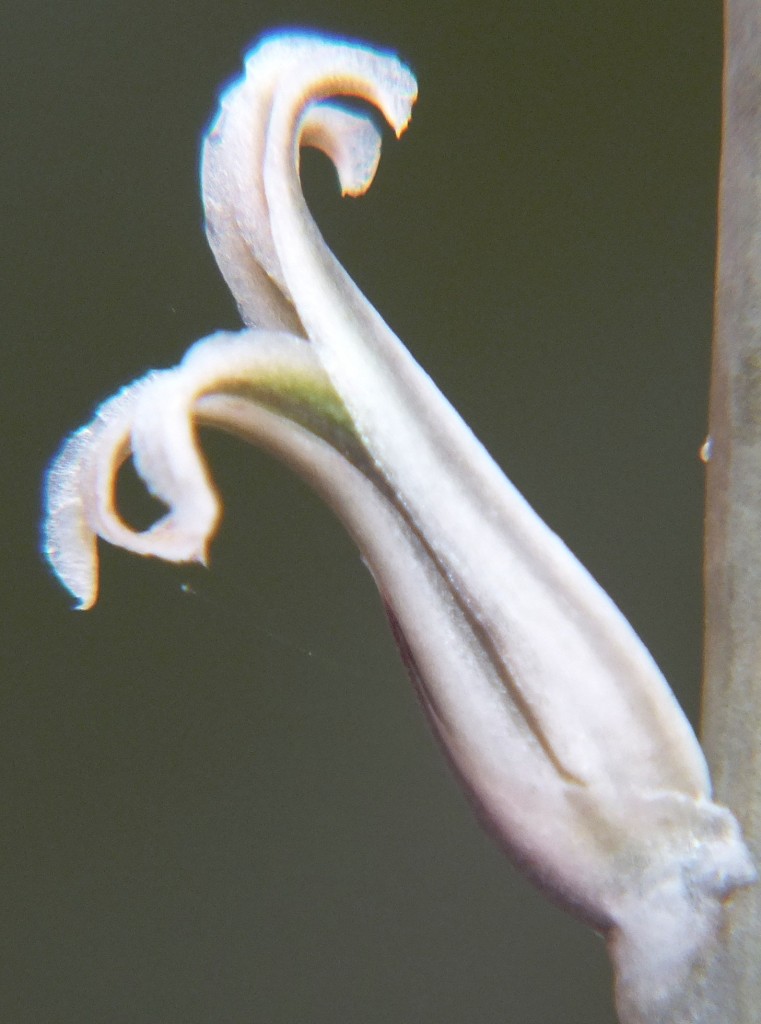
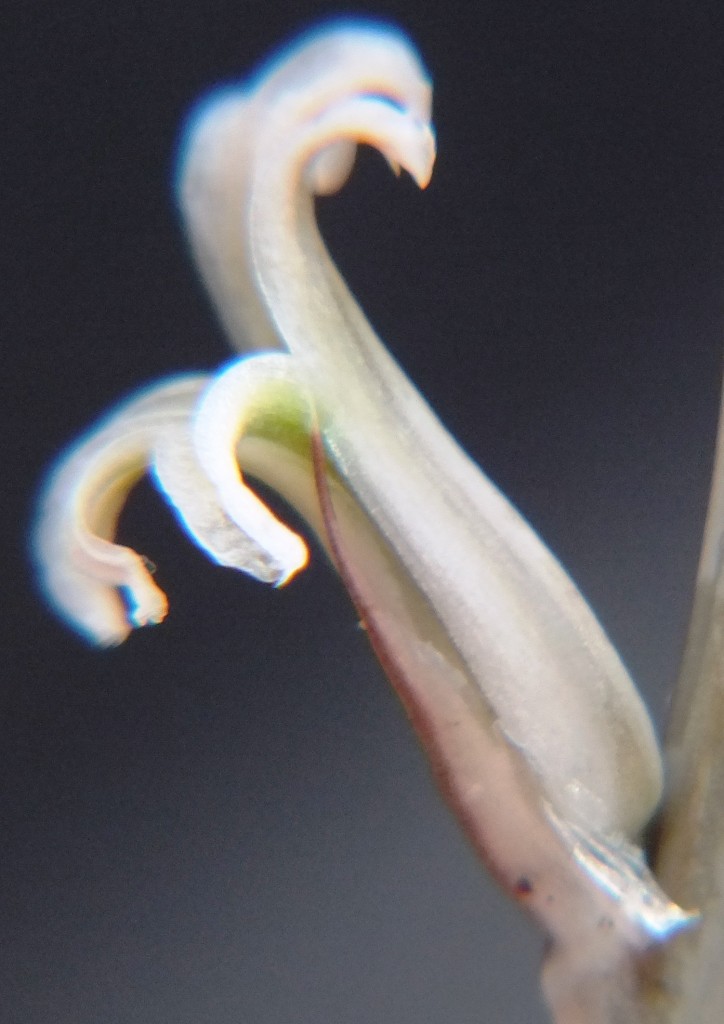
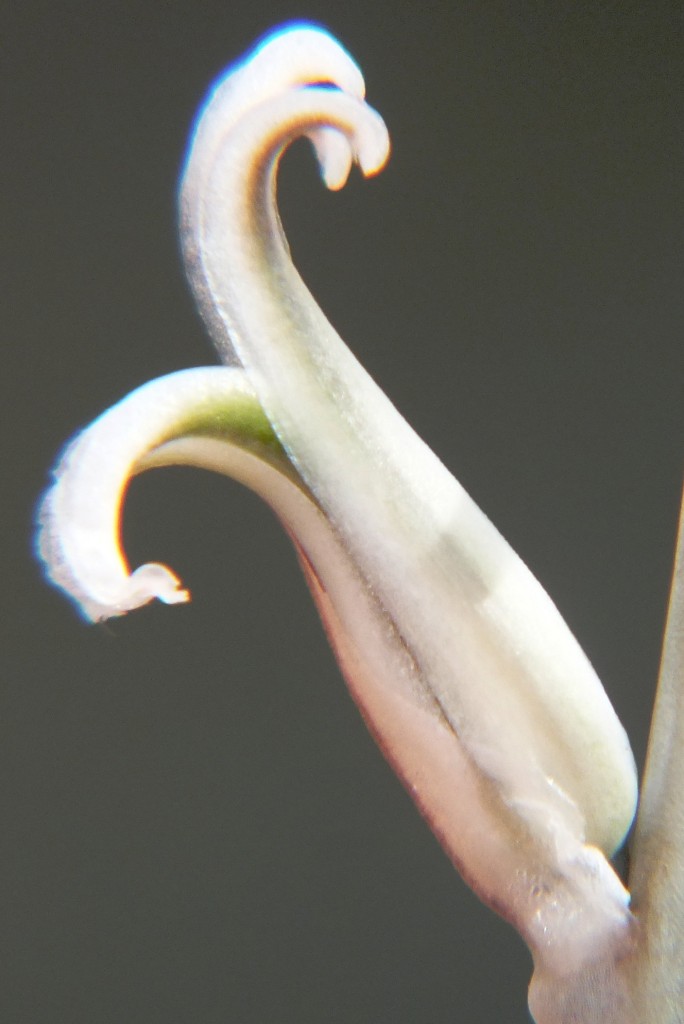

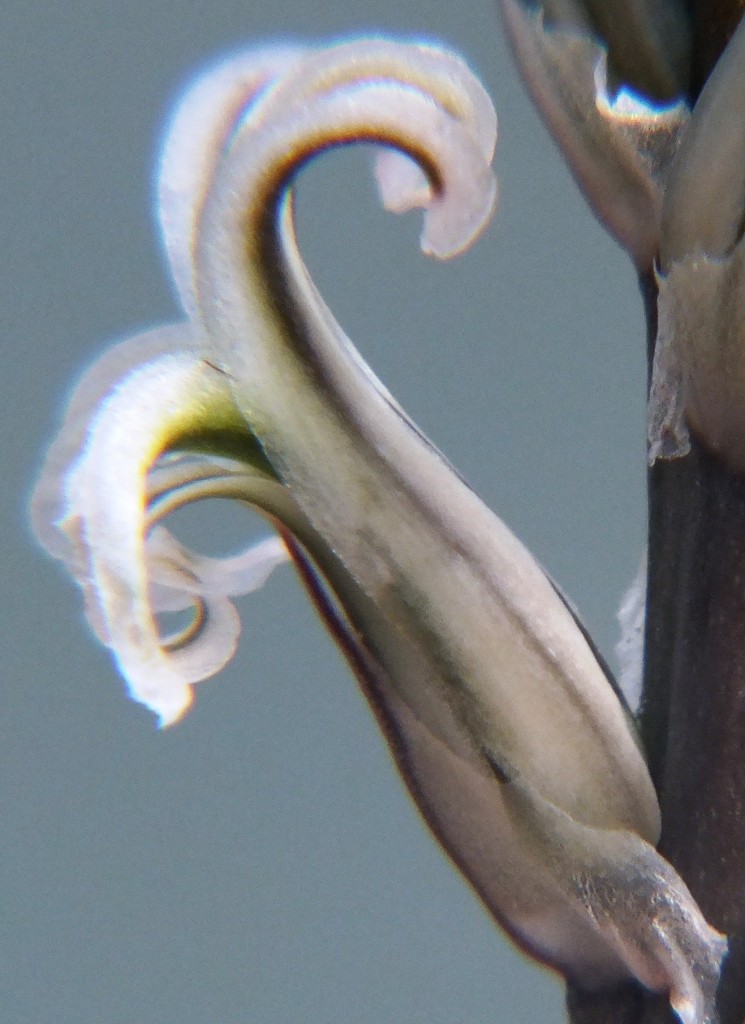


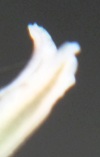
8. MBB7780 H. retusa (geraldii), Komserante, E Riversdale.
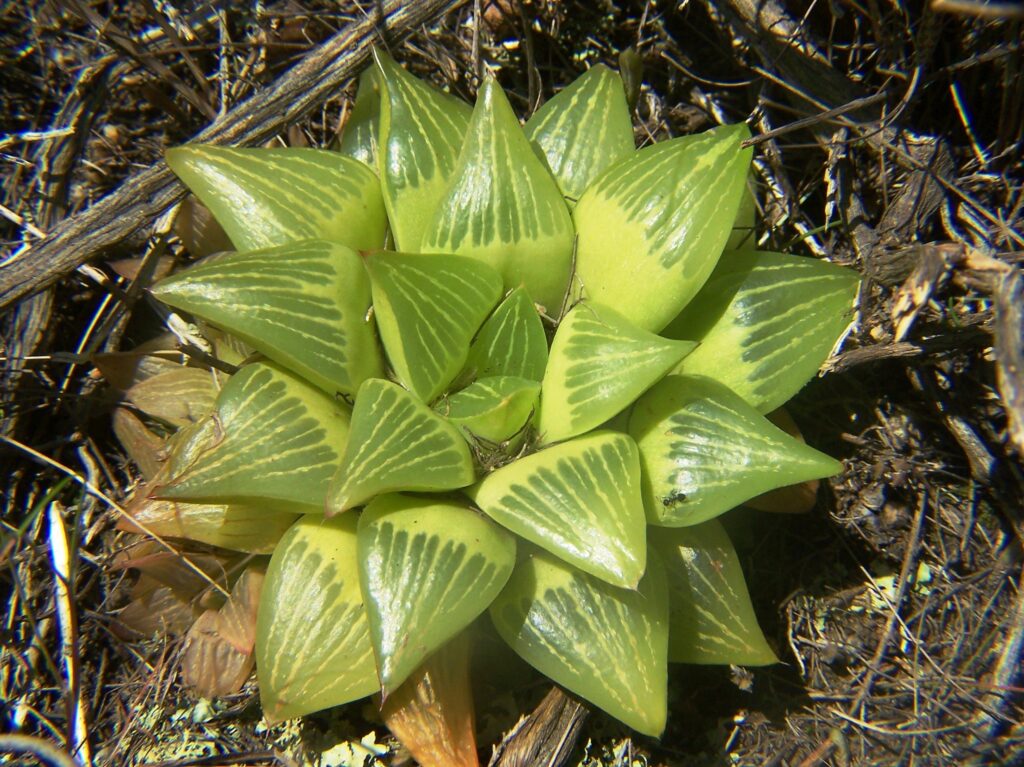
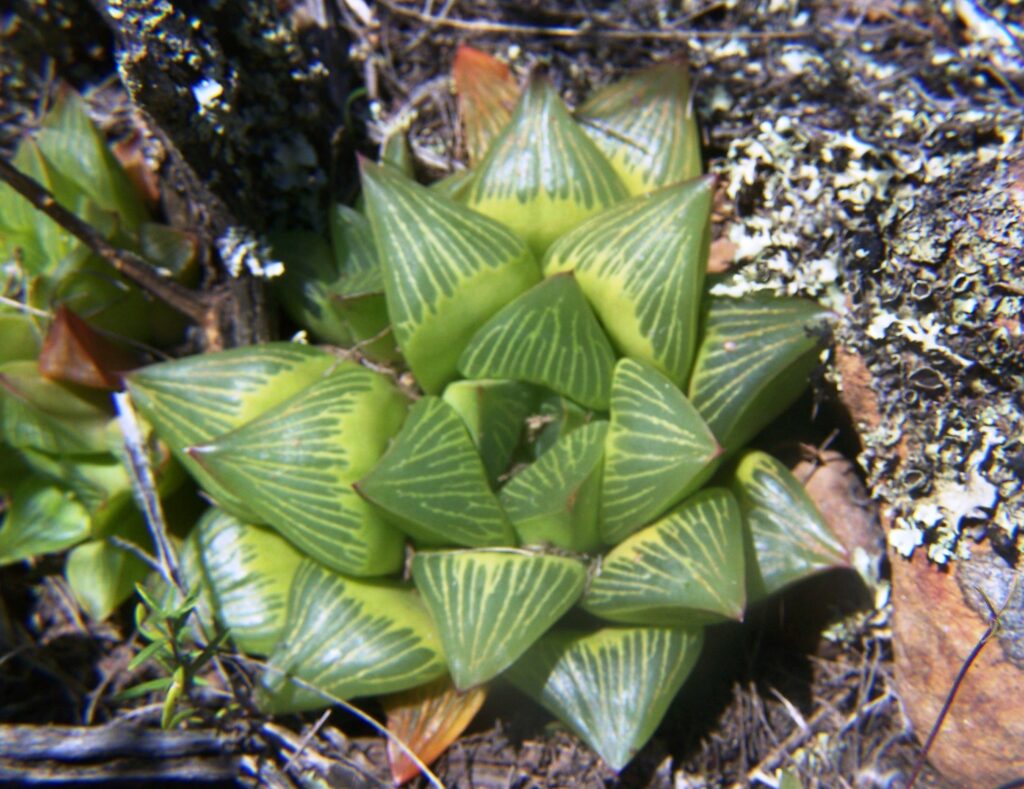
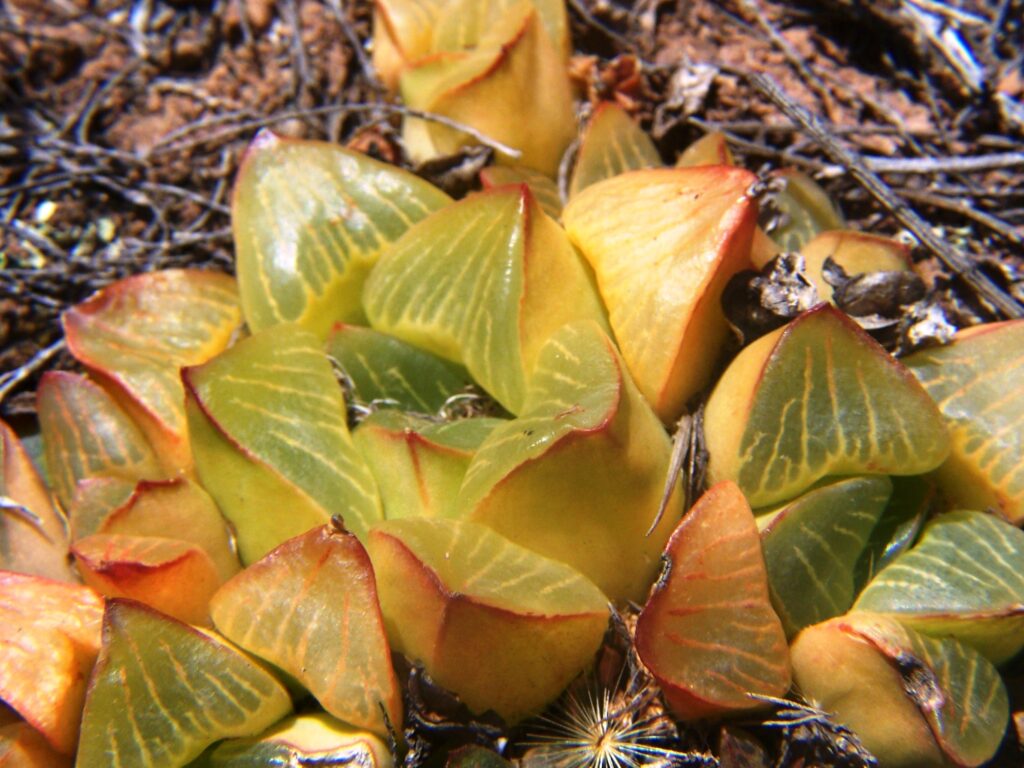
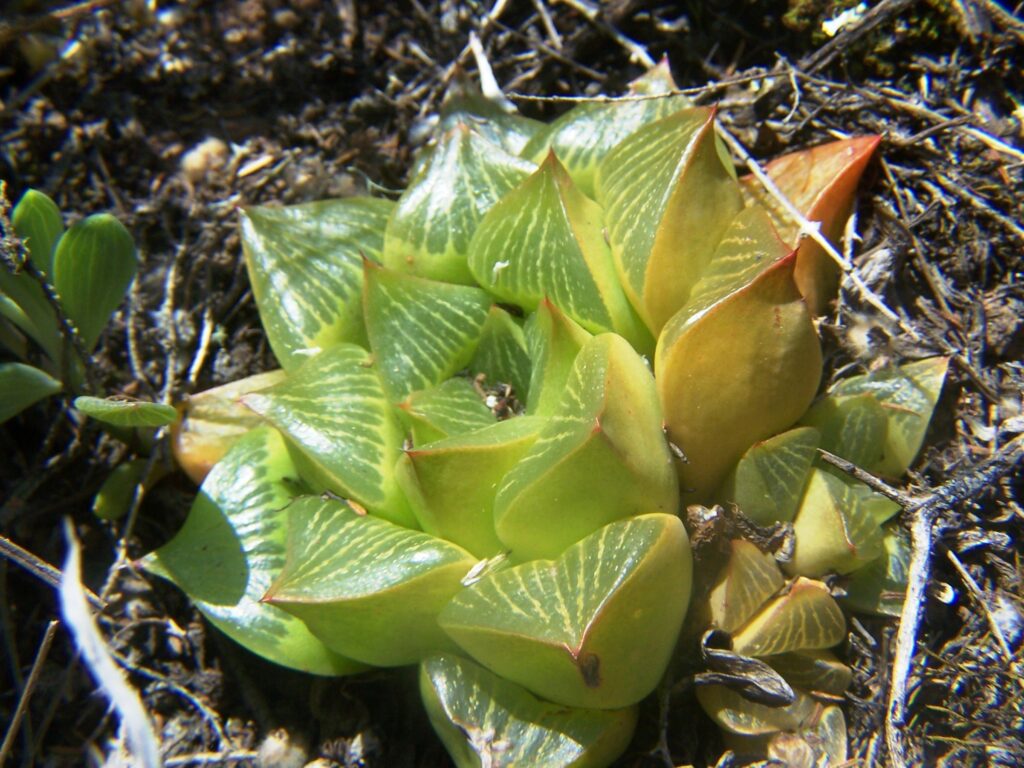
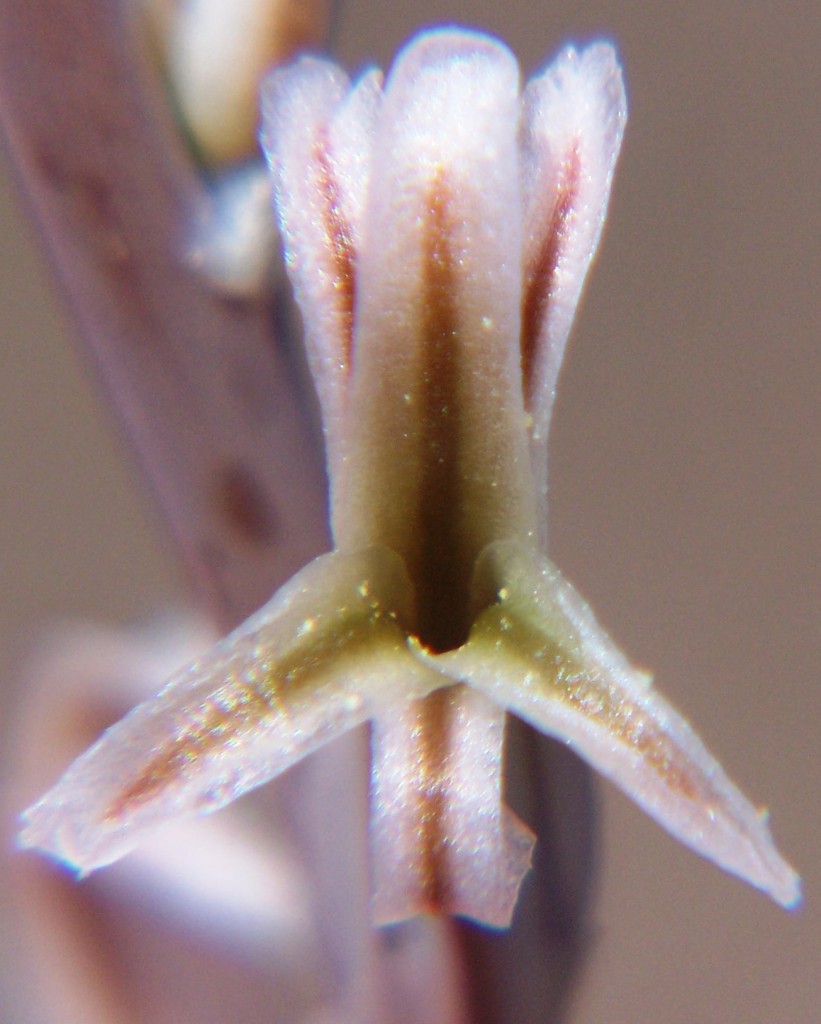

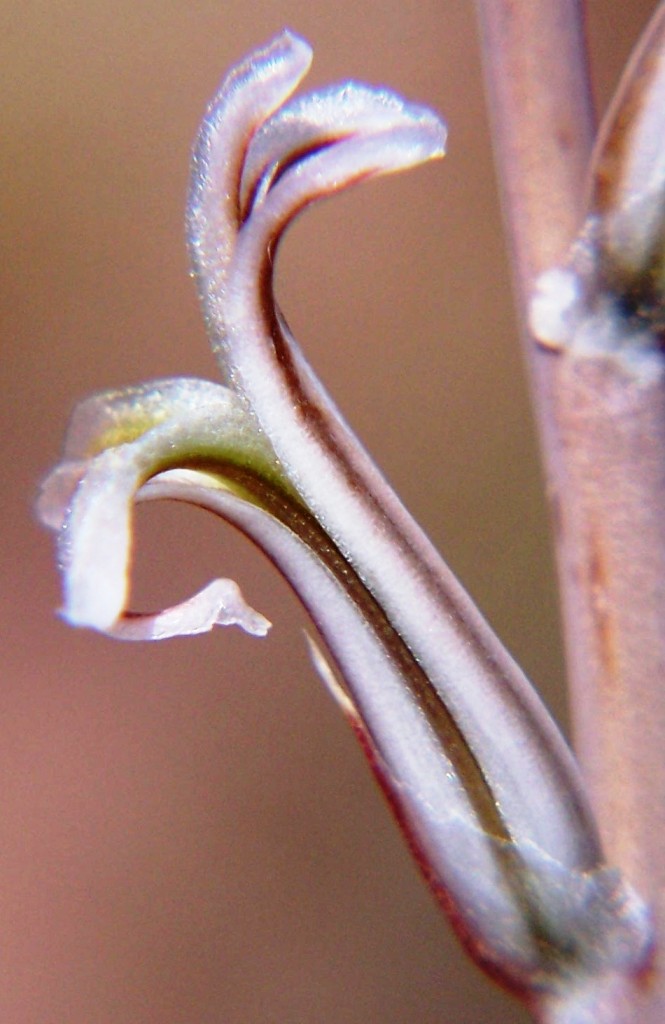
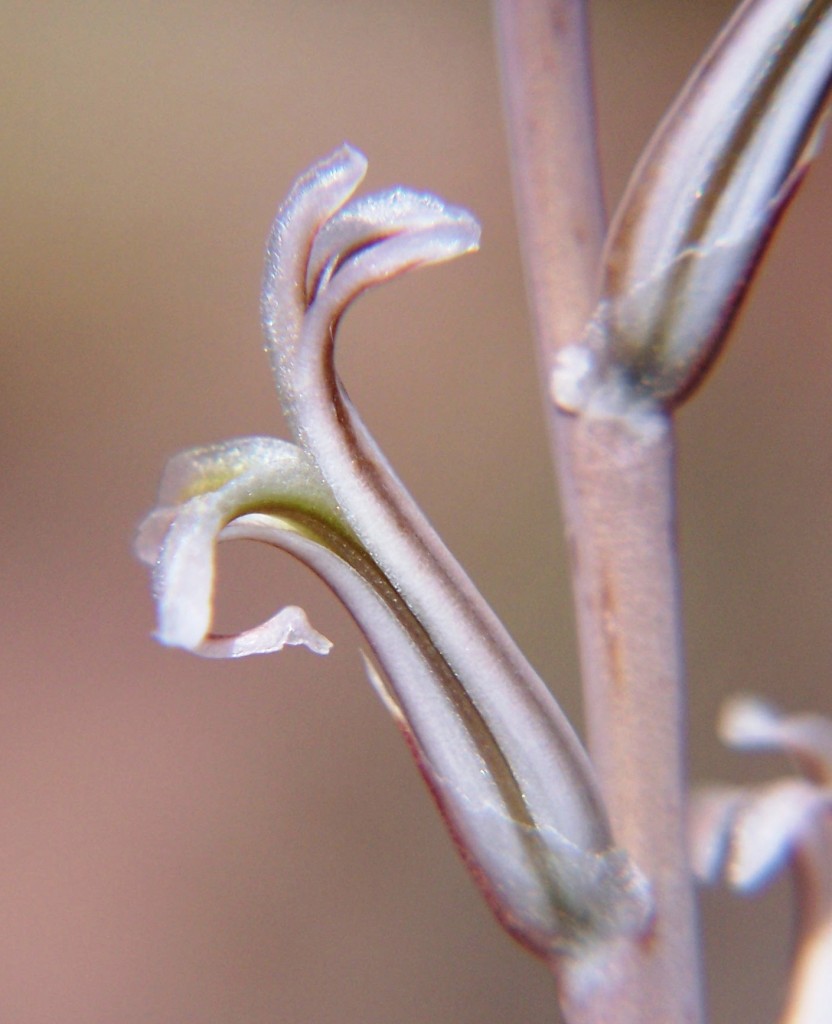
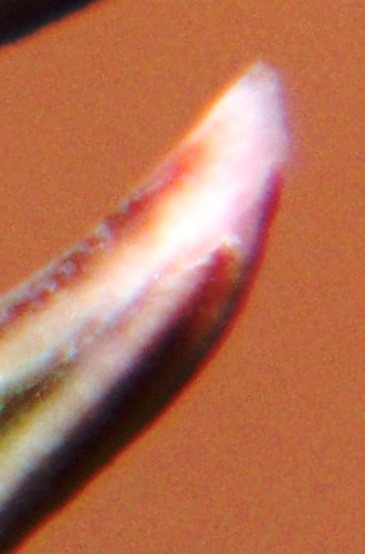
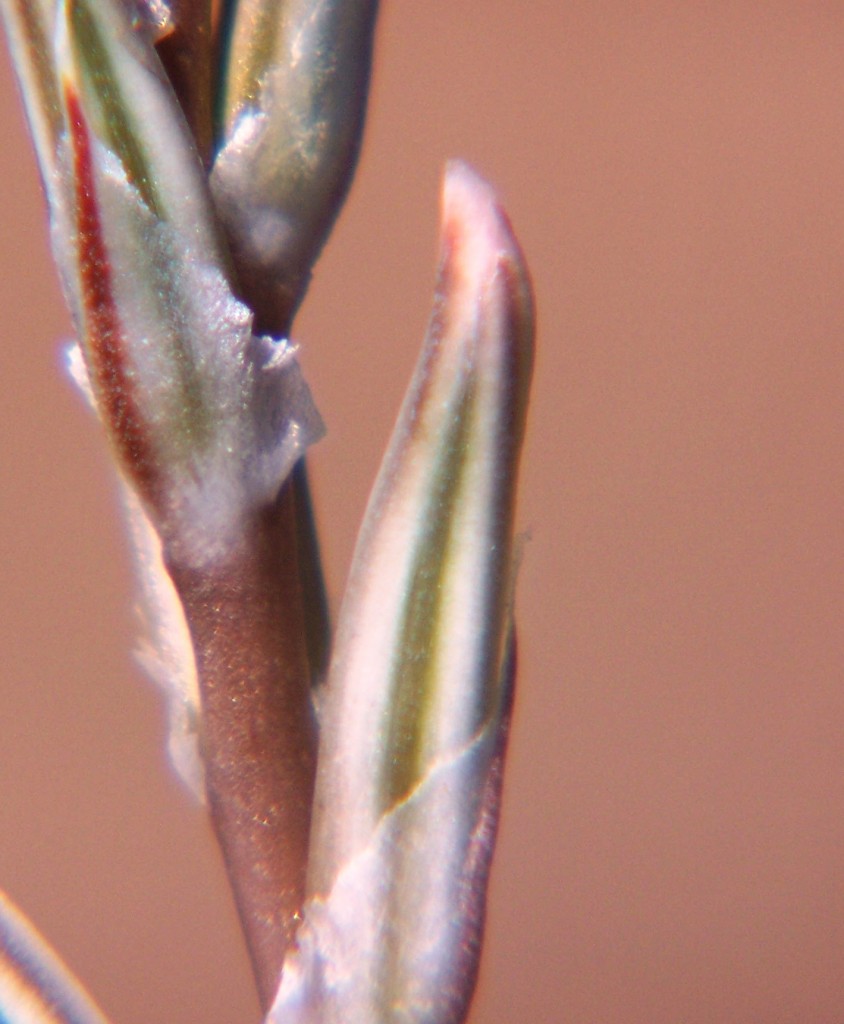
9. MBB7781 H. retusa (foucheii), Komserante, E Riversdale.
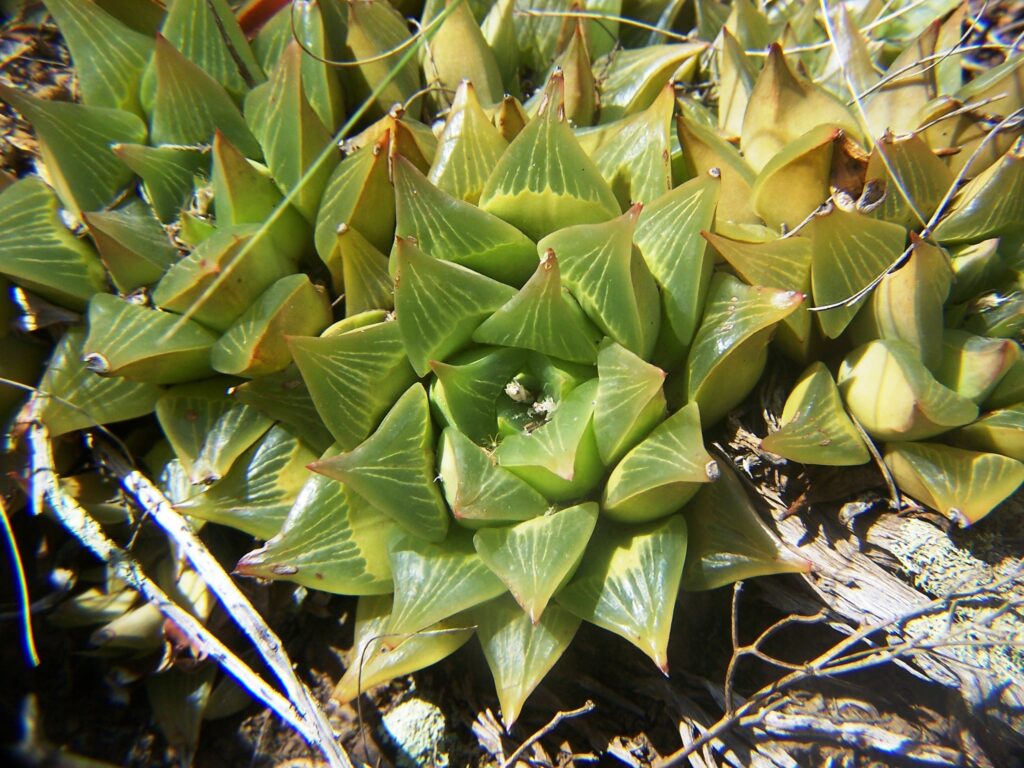
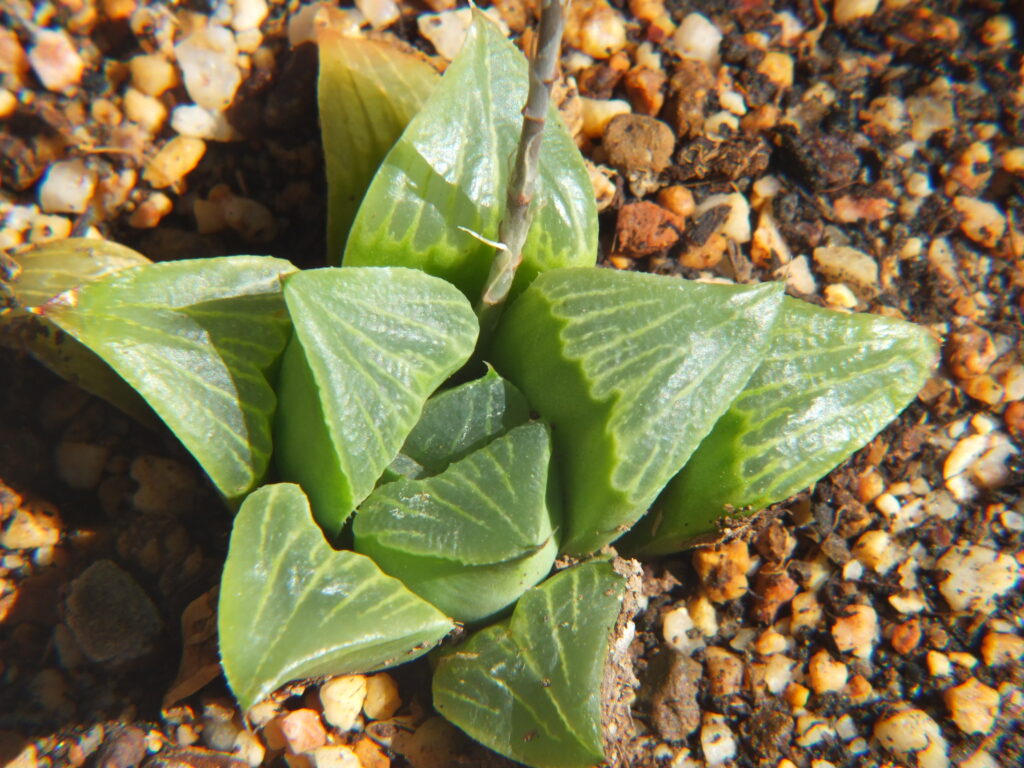
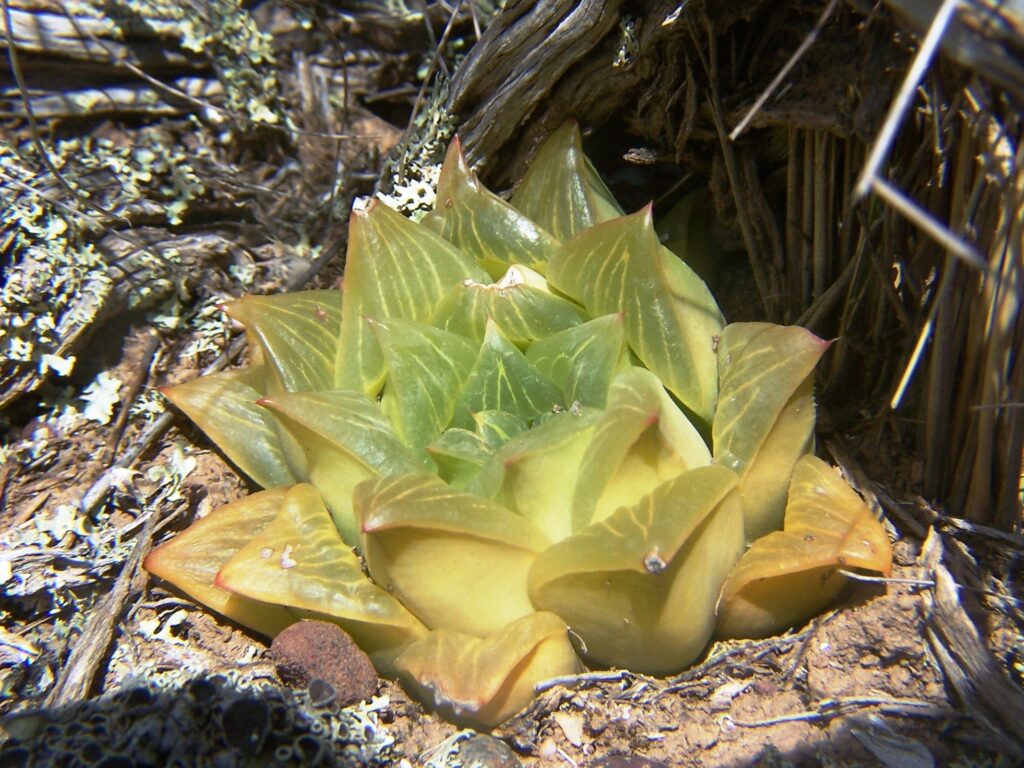
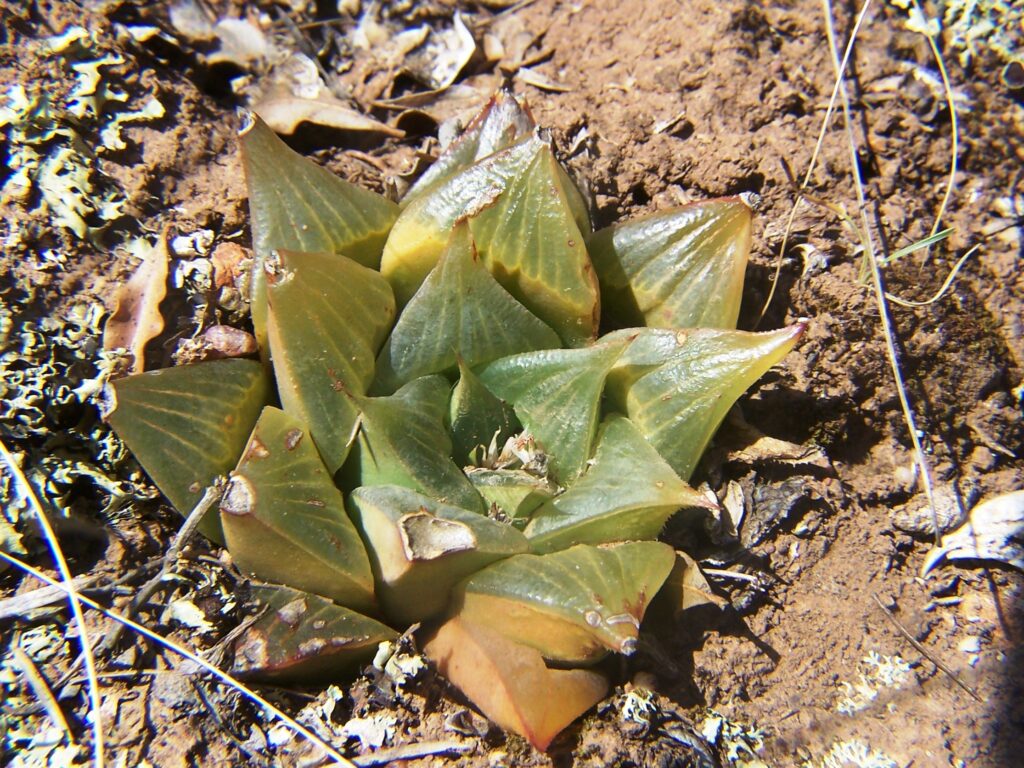
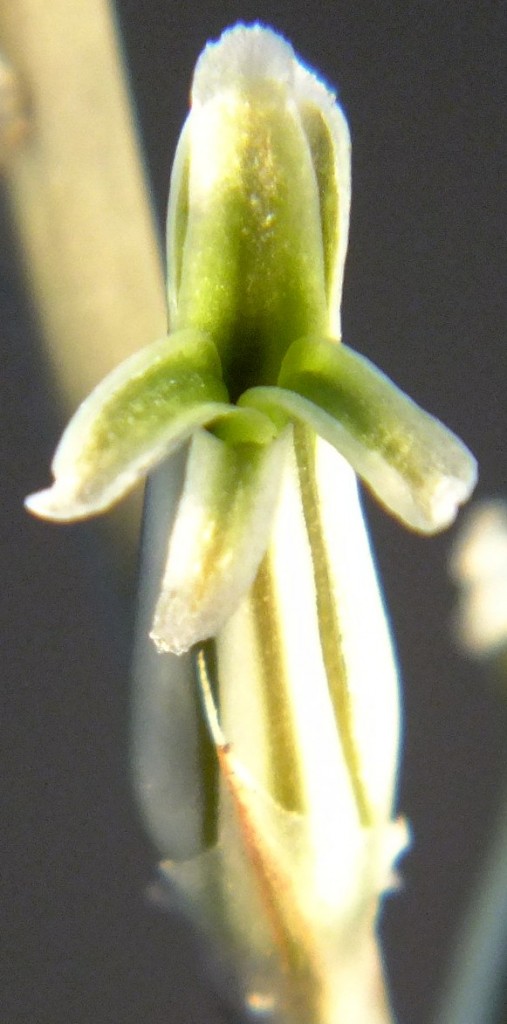
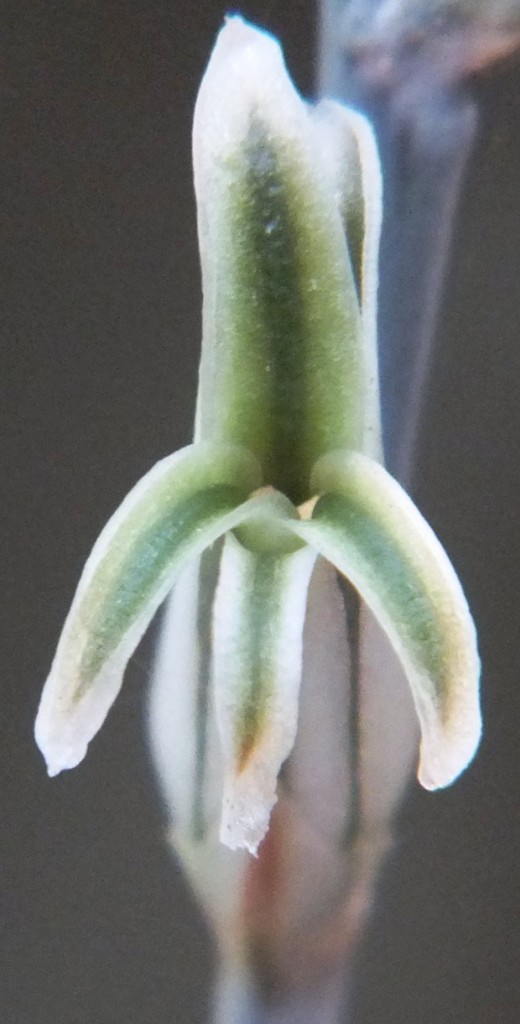

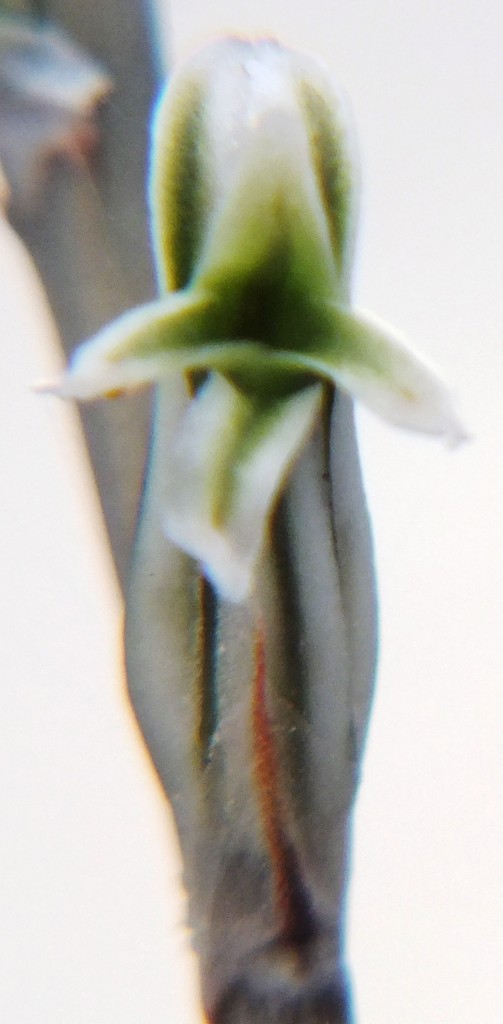
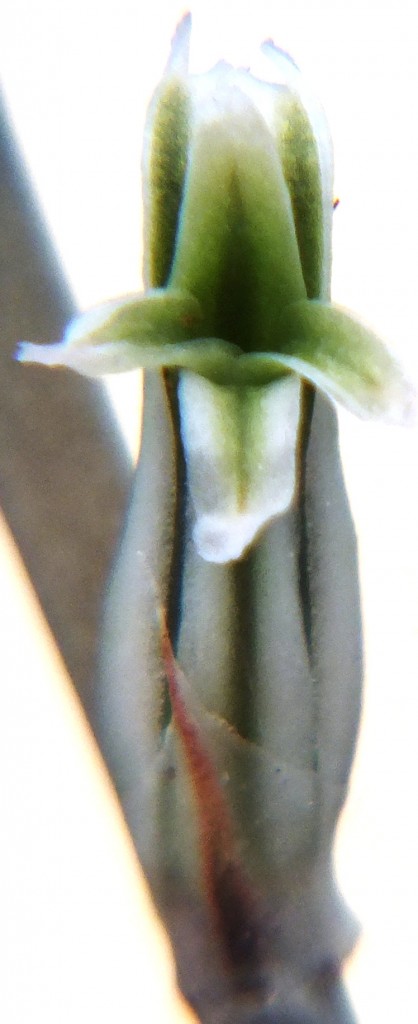
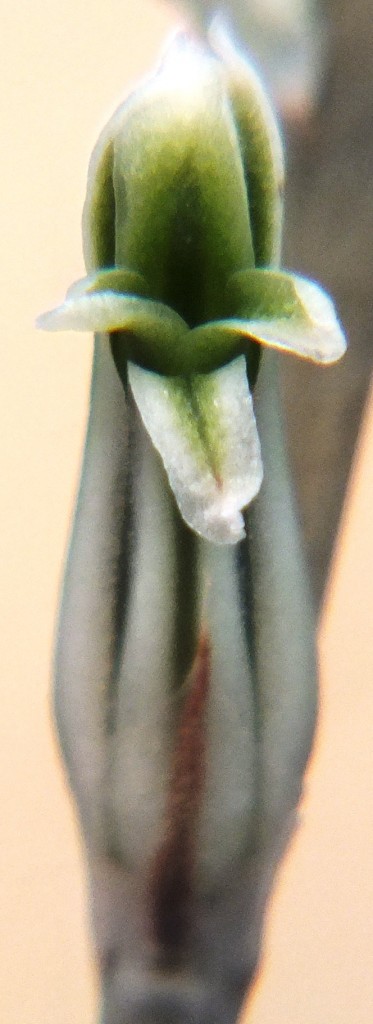

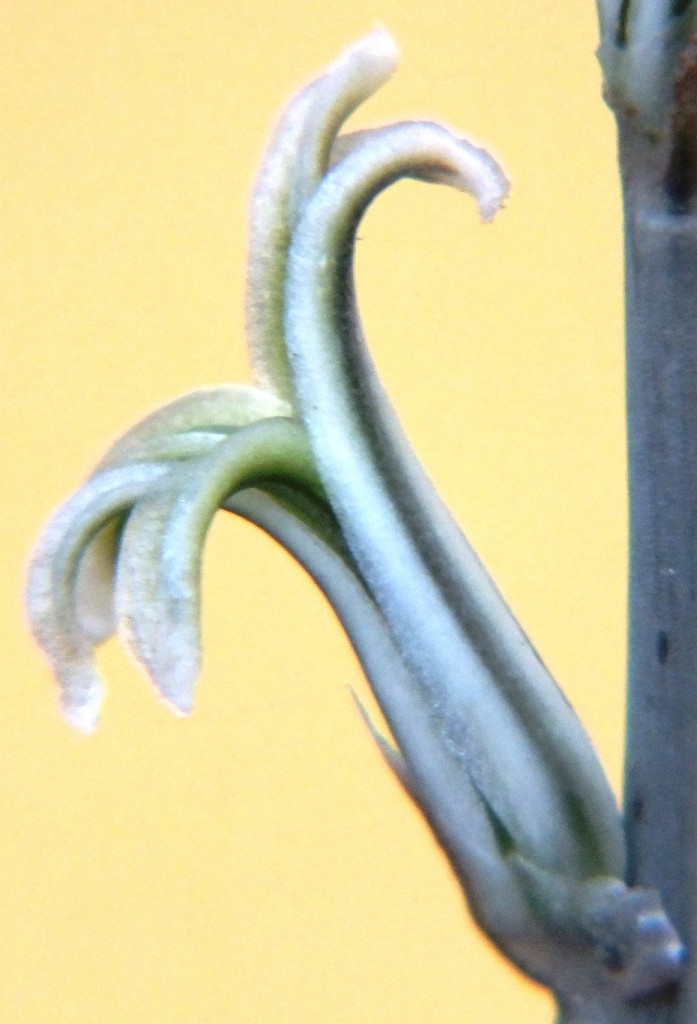
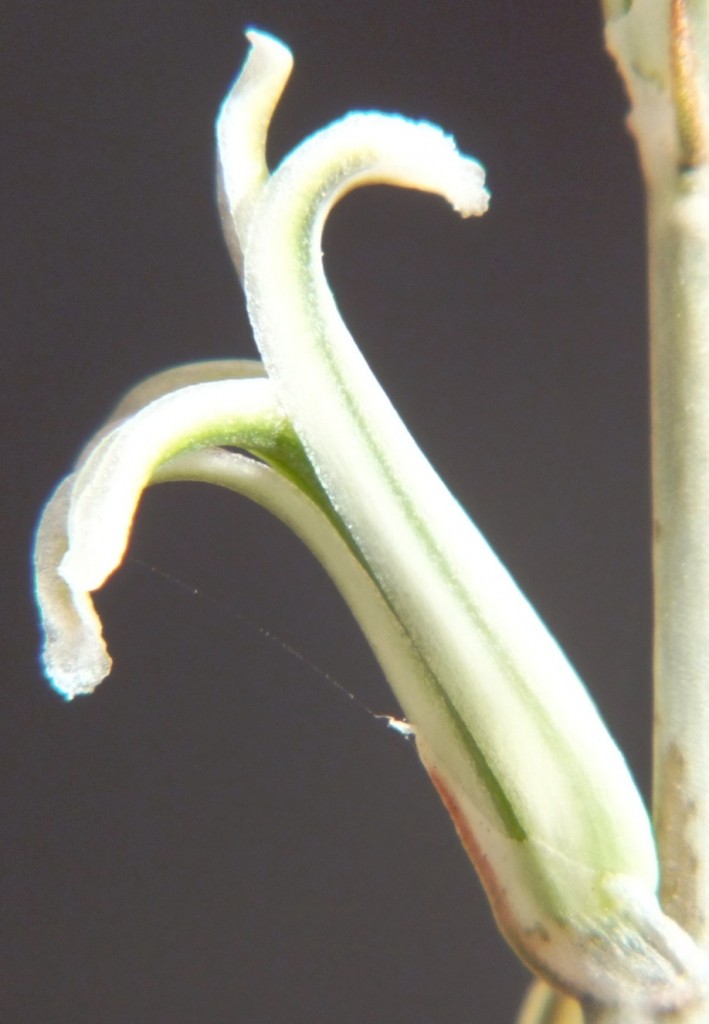
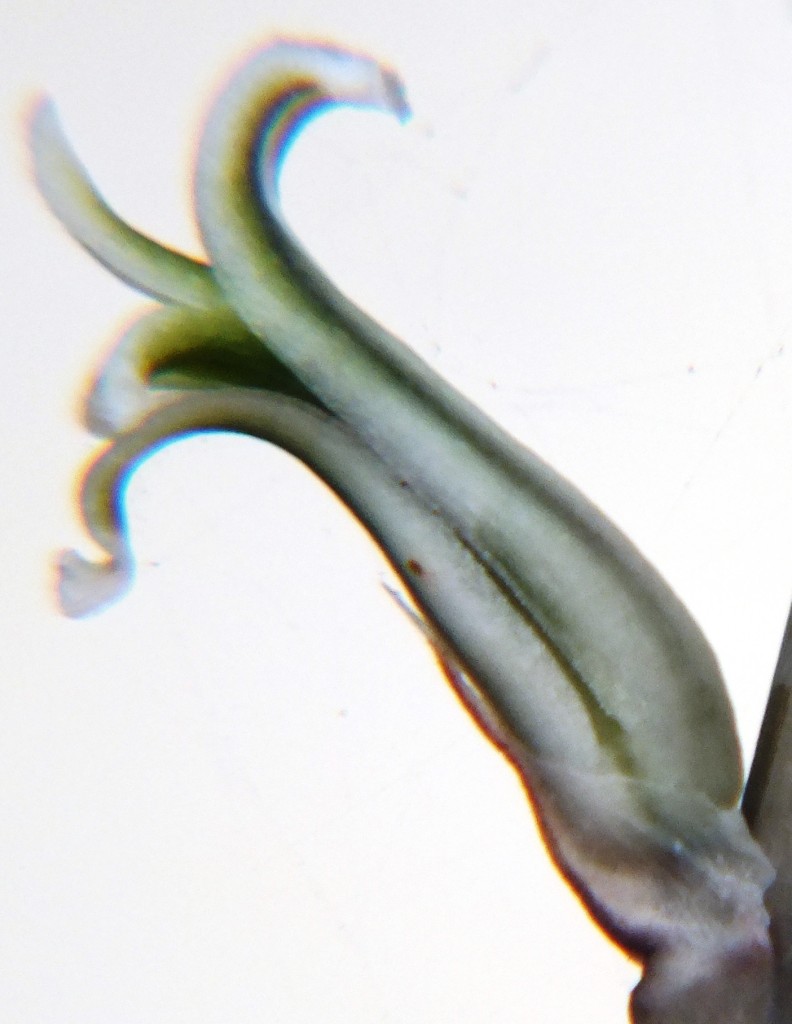
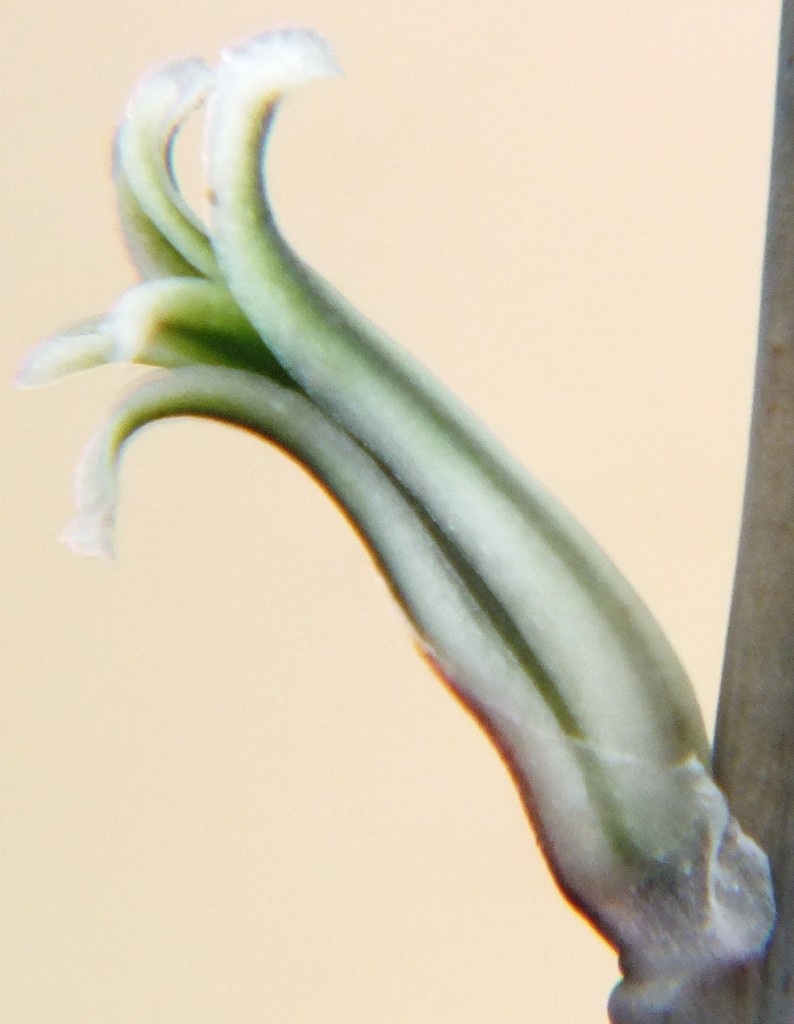
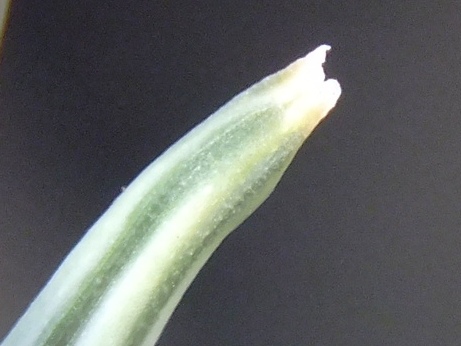
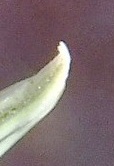
10. MBB7776 H. retusa, Pienaarsrivier, W. Riversdale.
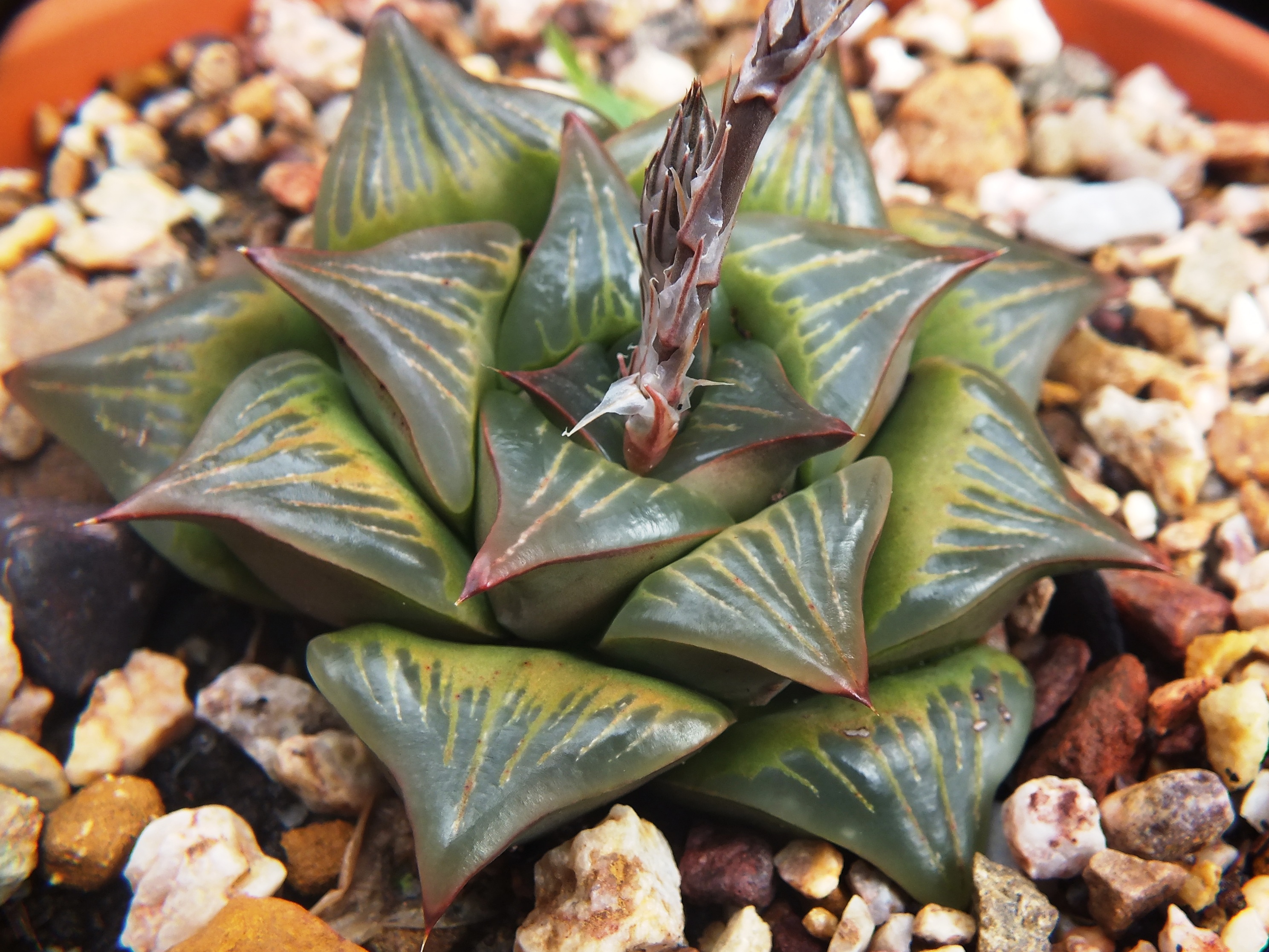
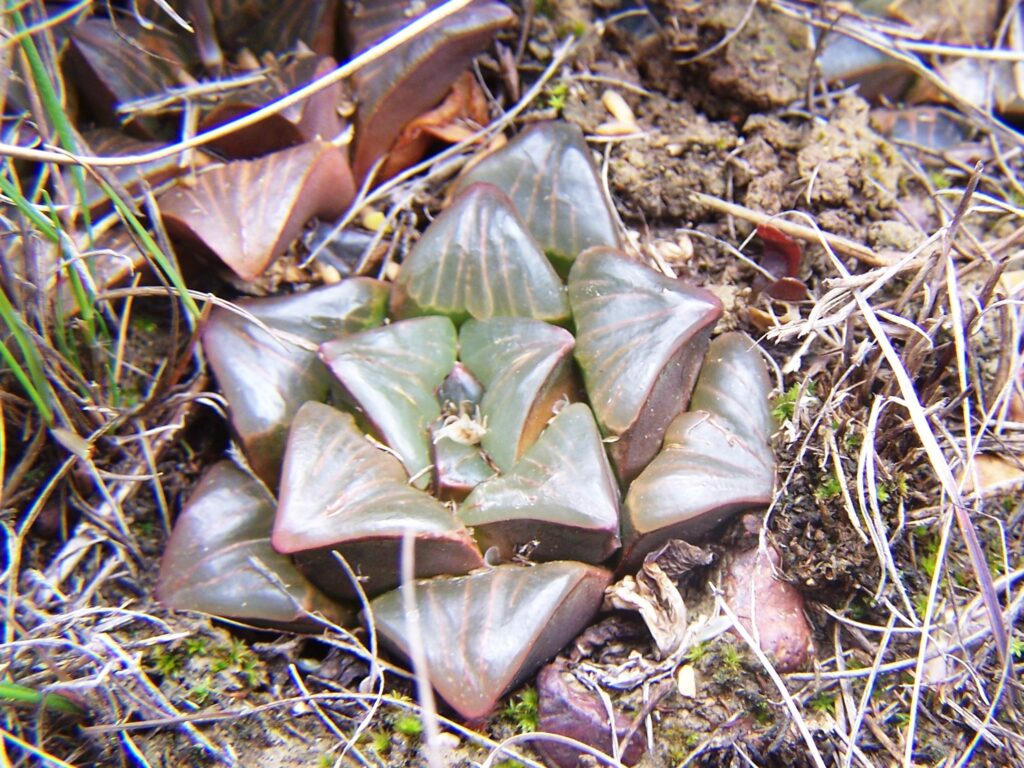

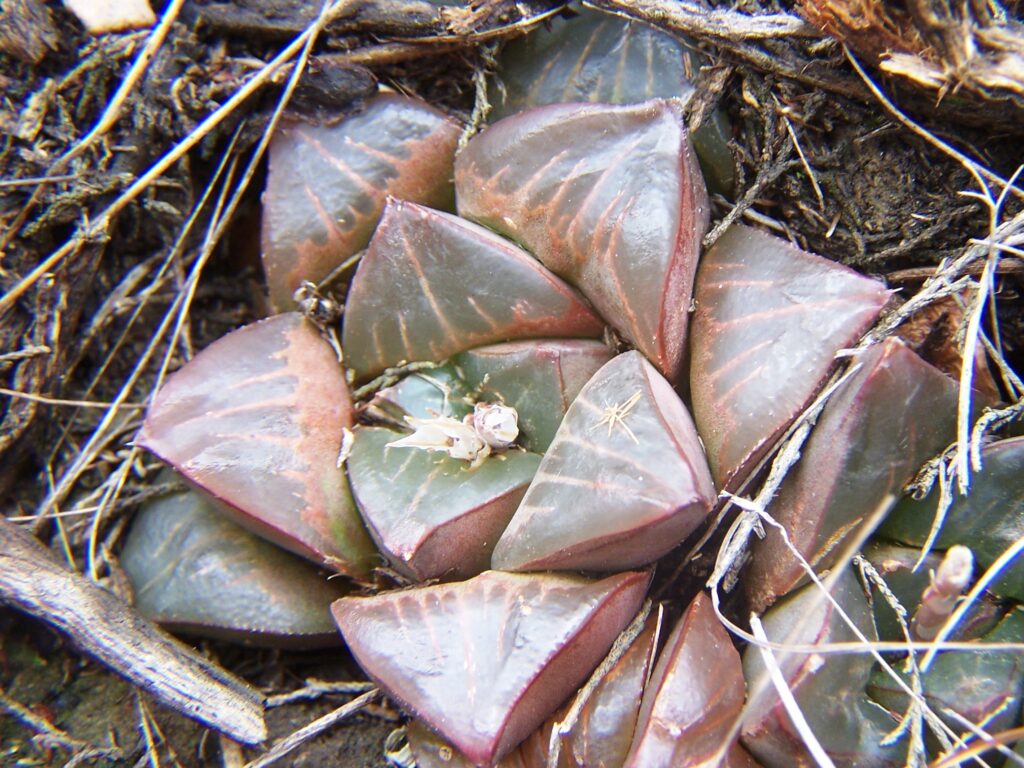

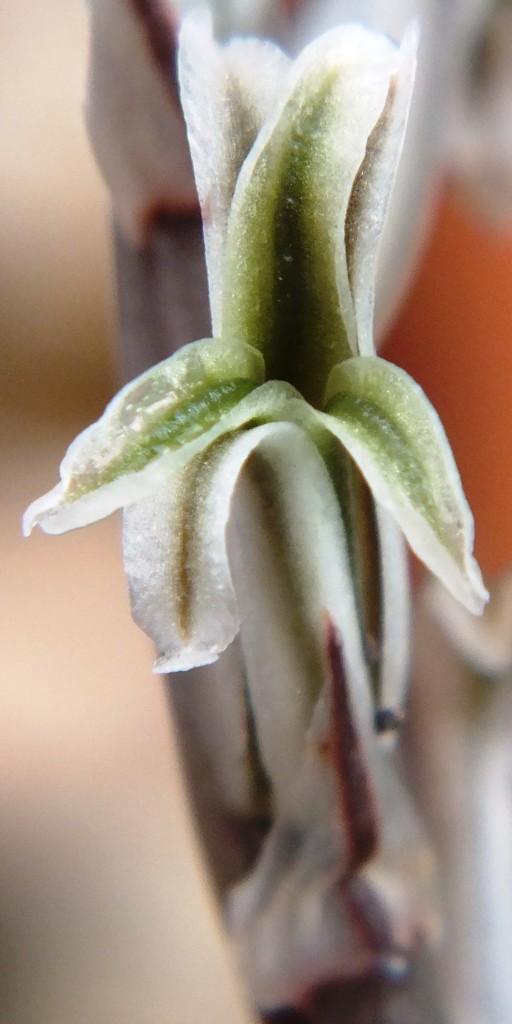

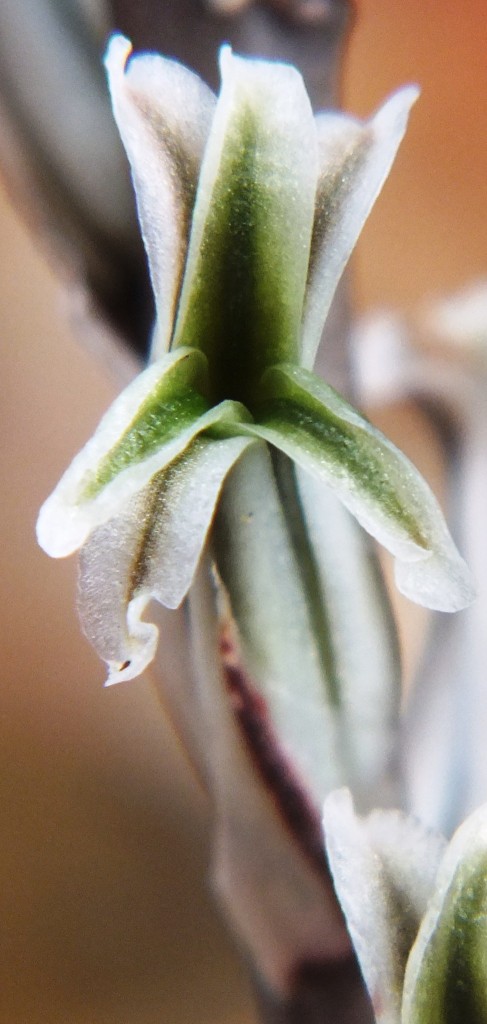
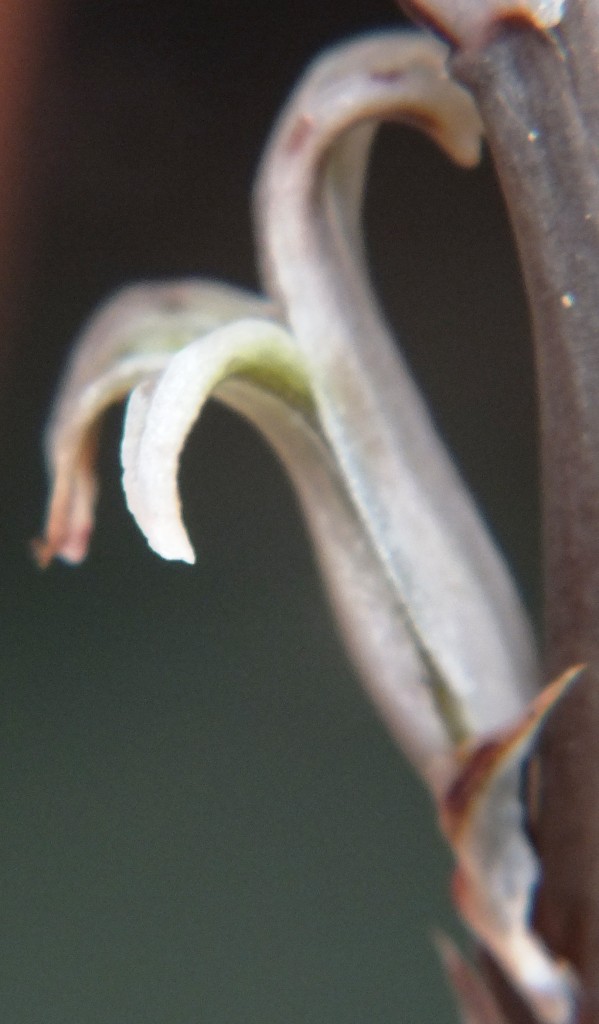
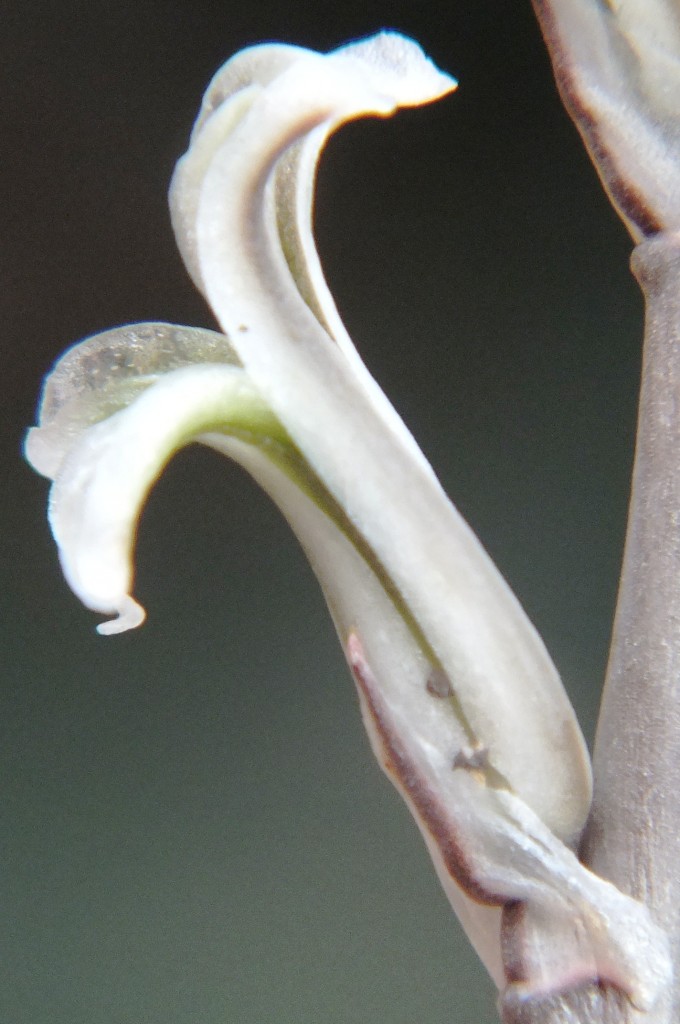
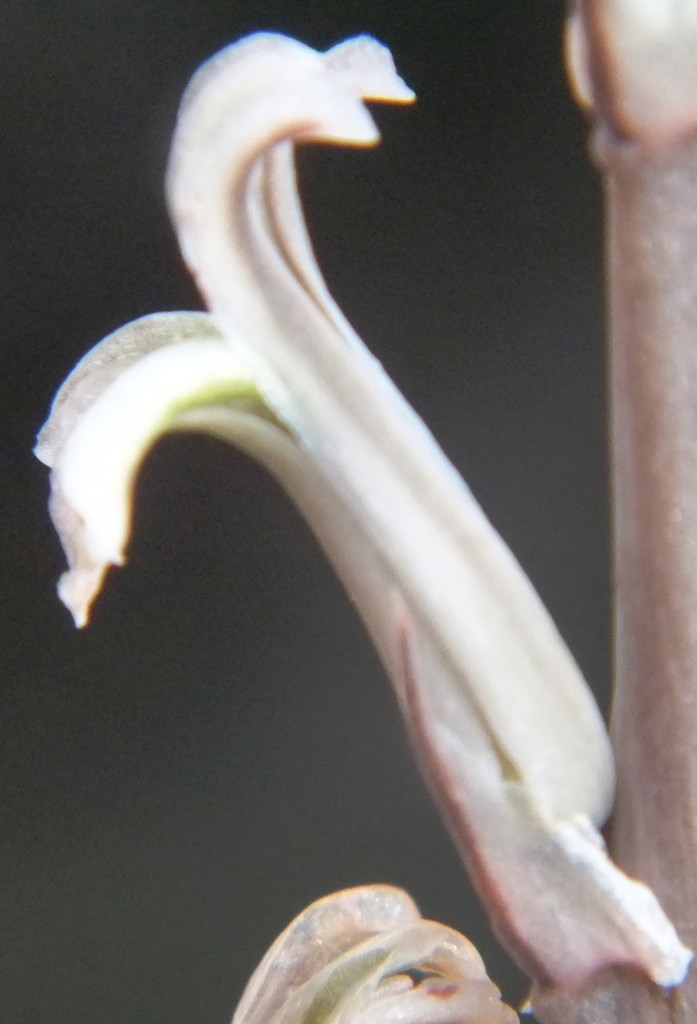
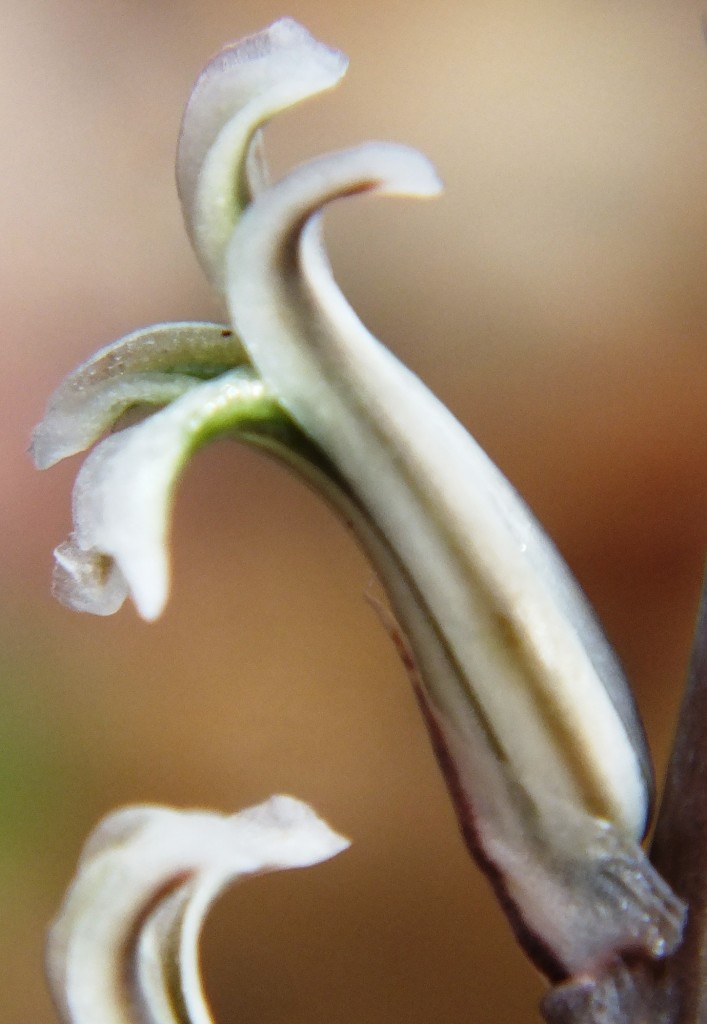
11. MBB6747 H. pygmaea, Vleesbaai.
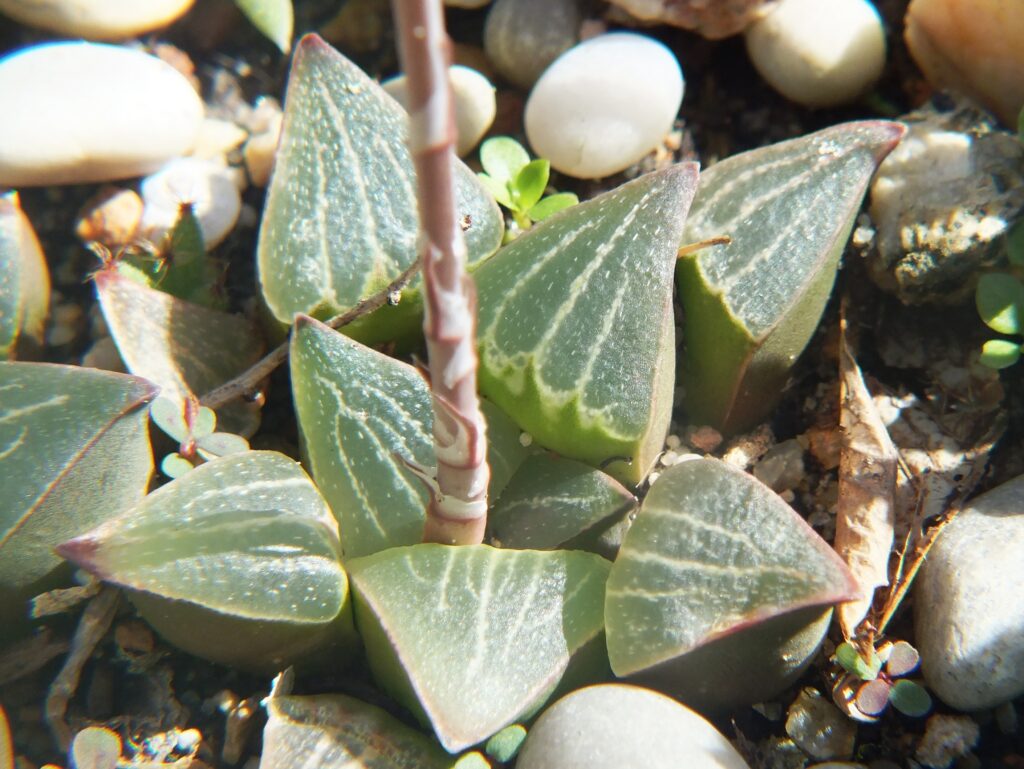
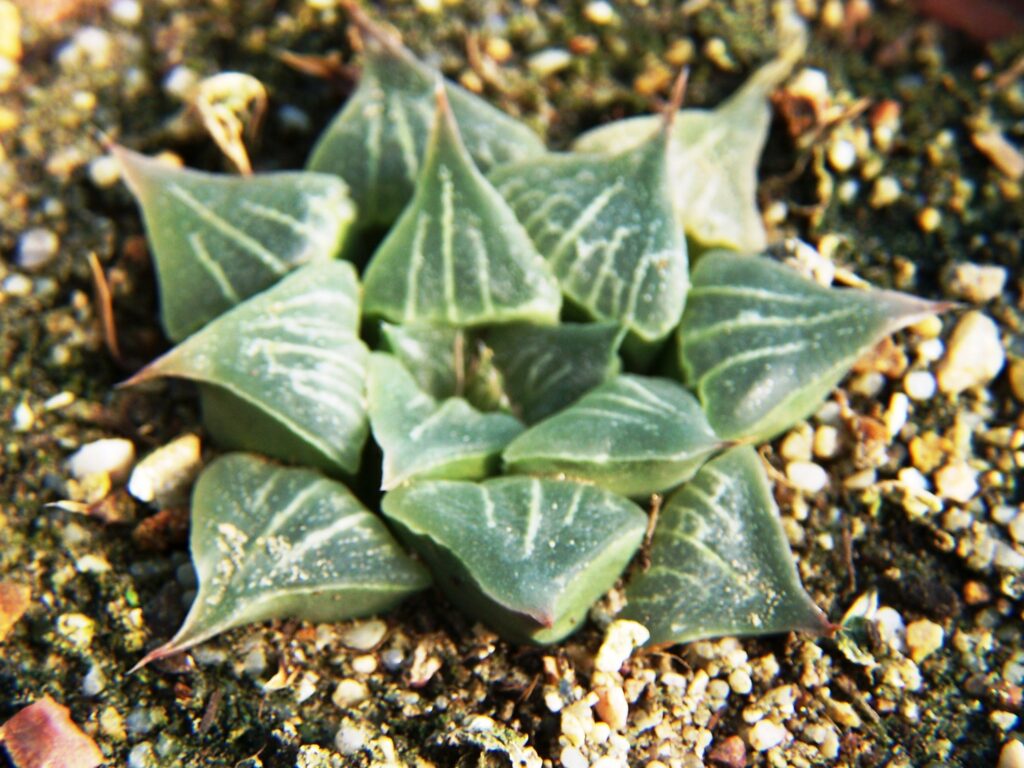
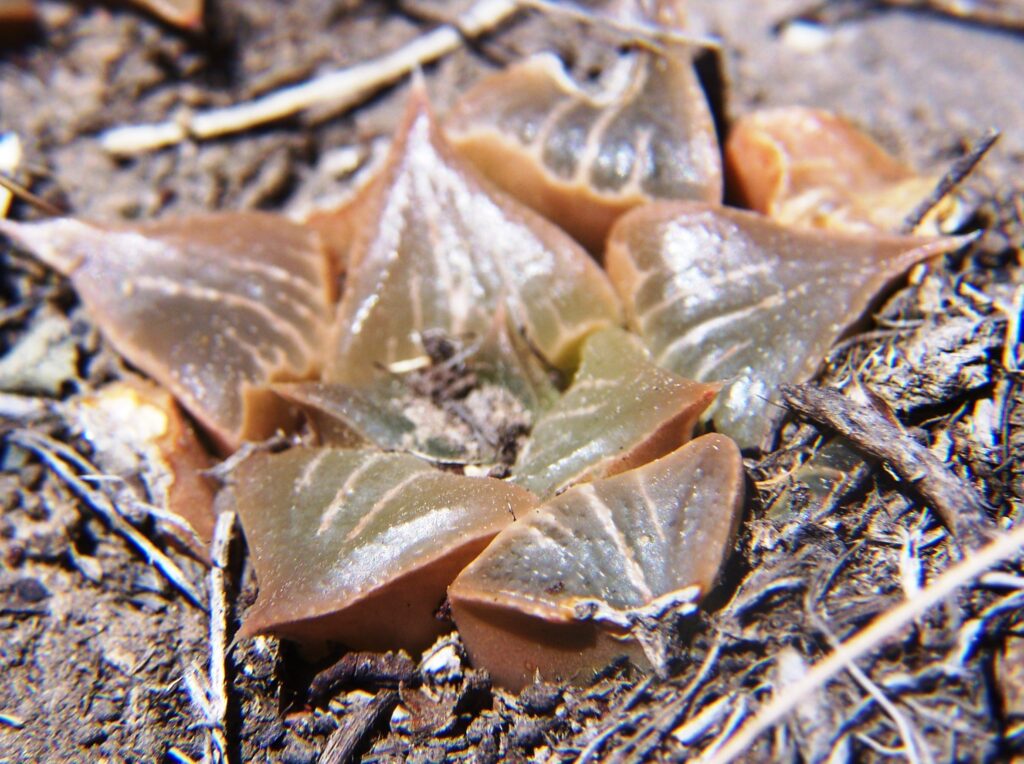
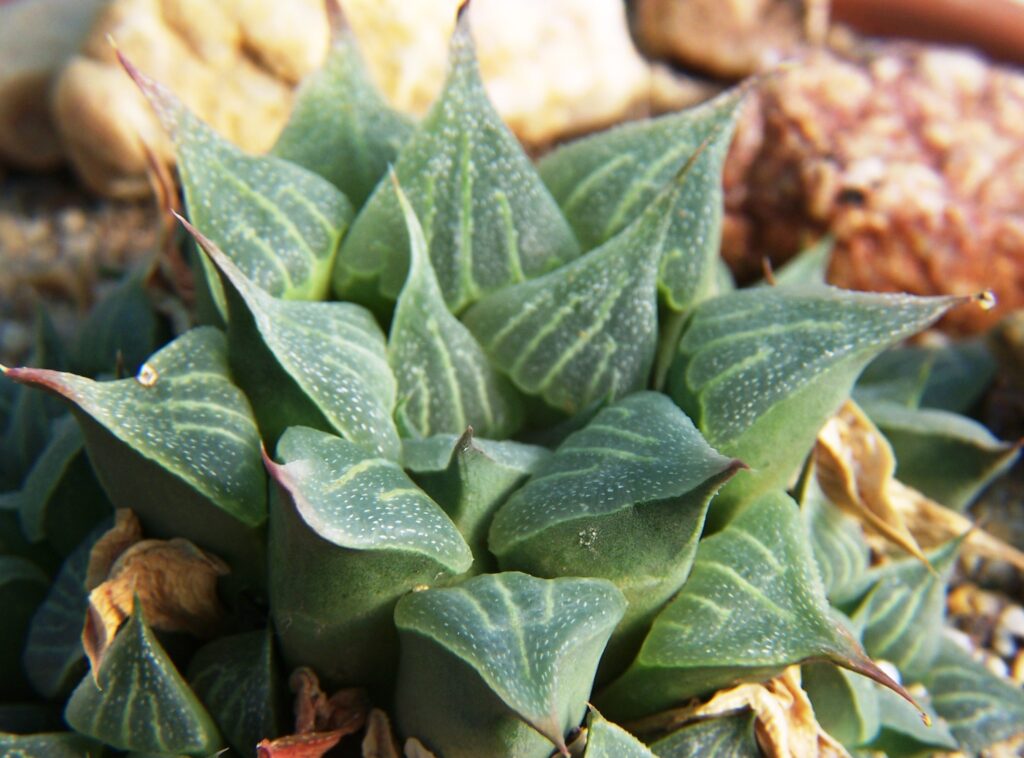
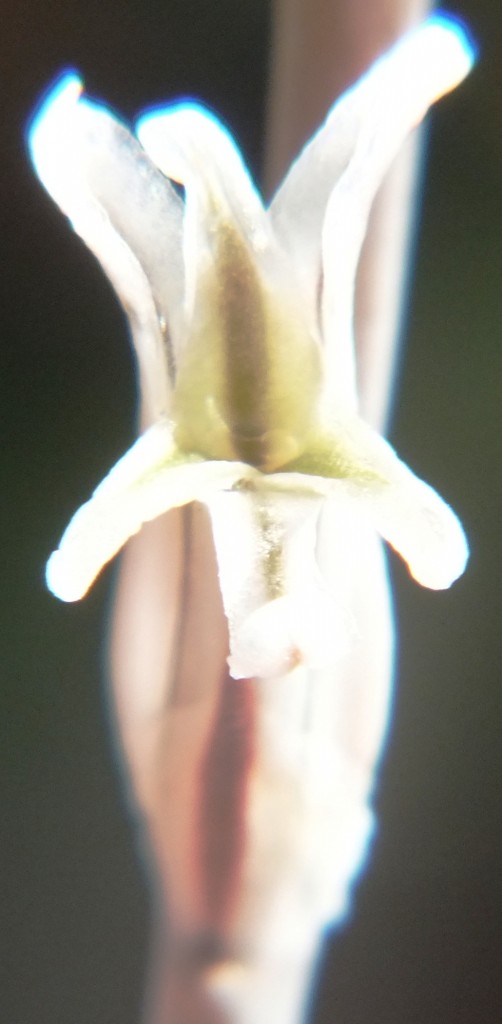
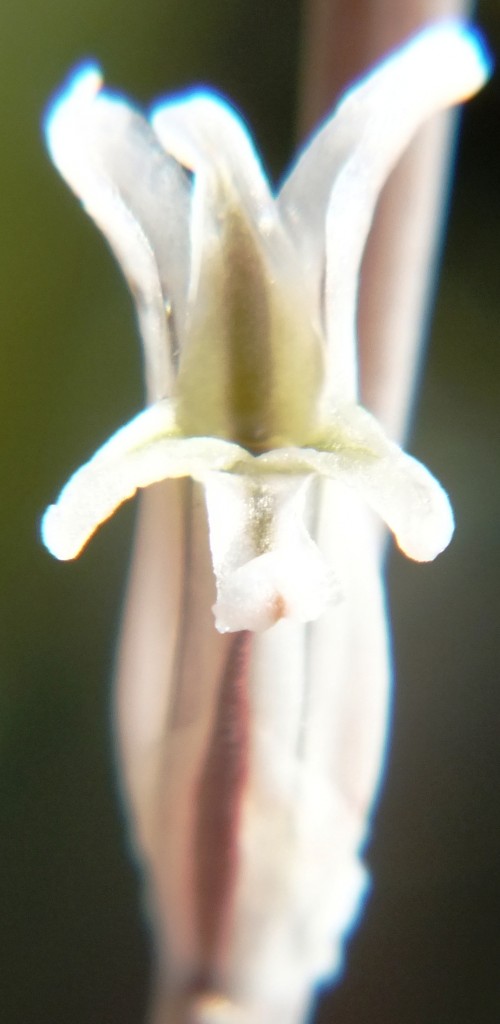
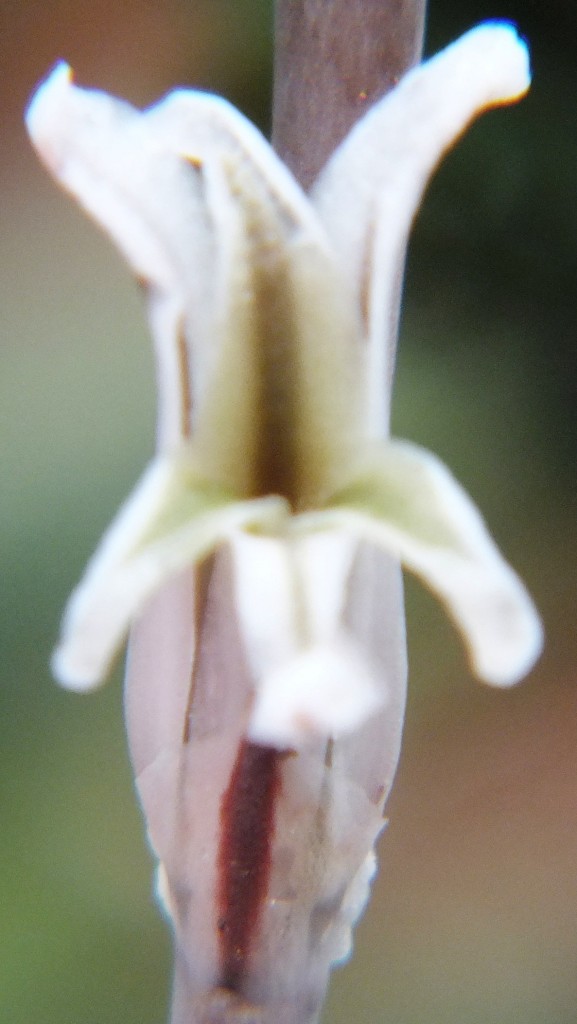
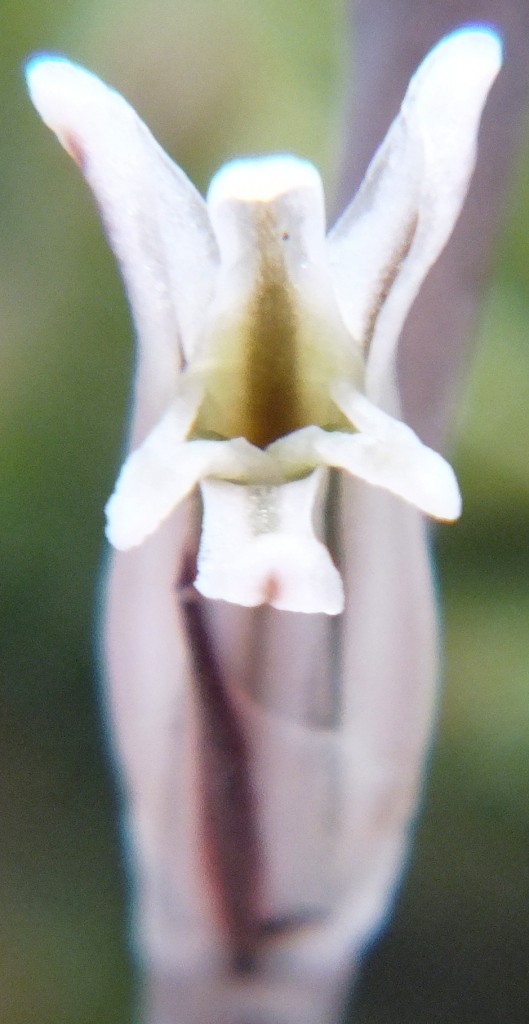
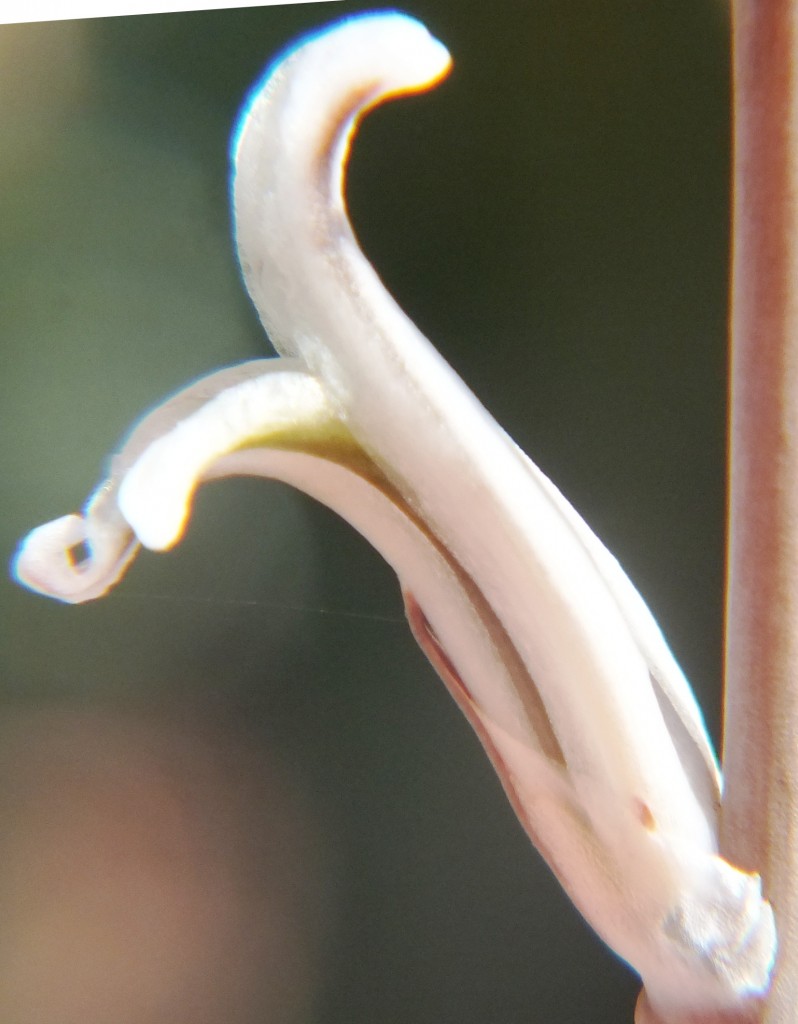
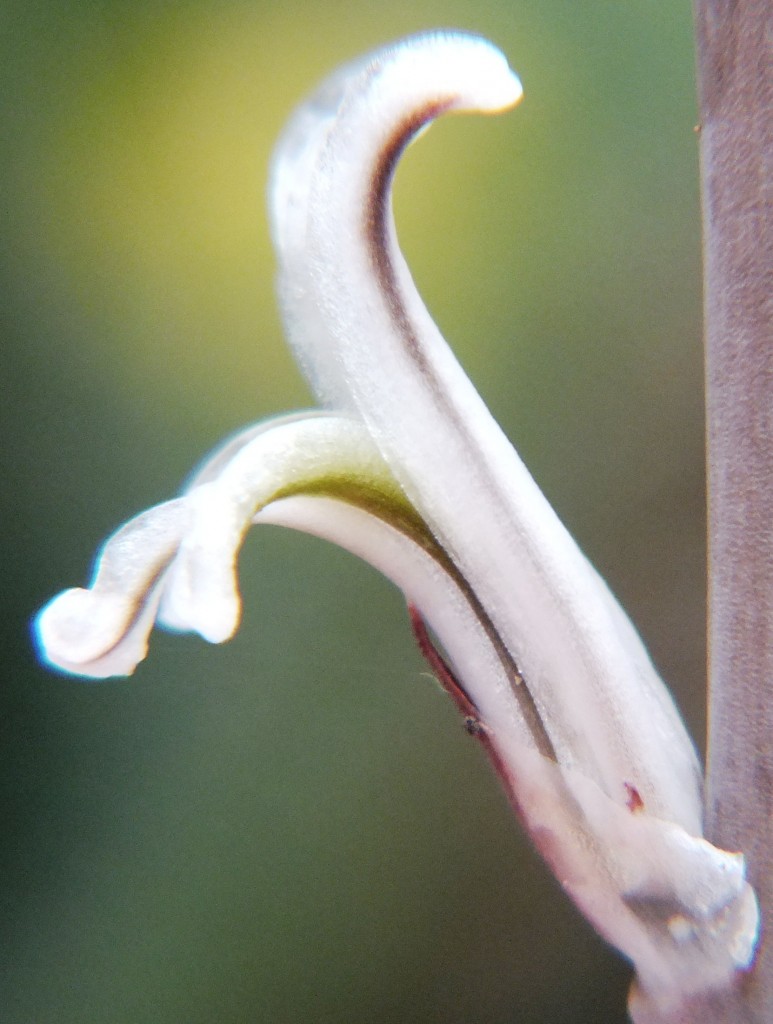
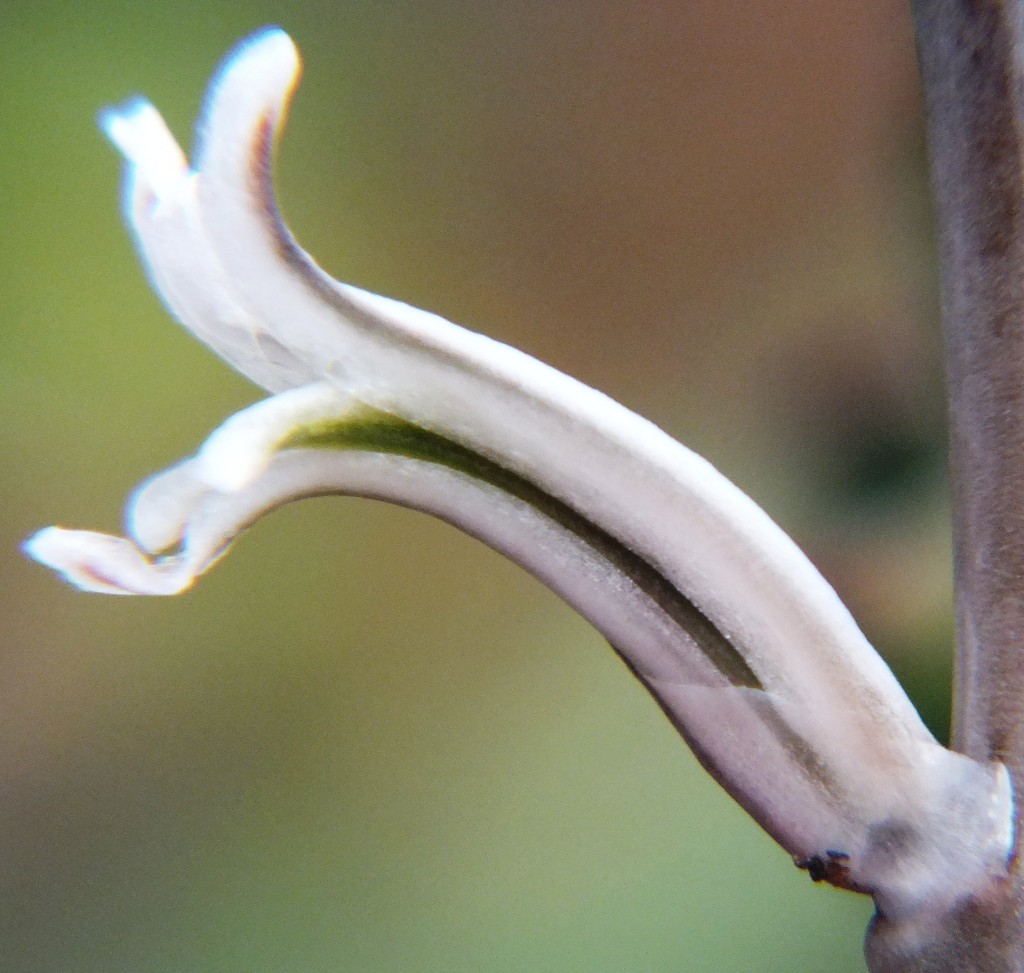
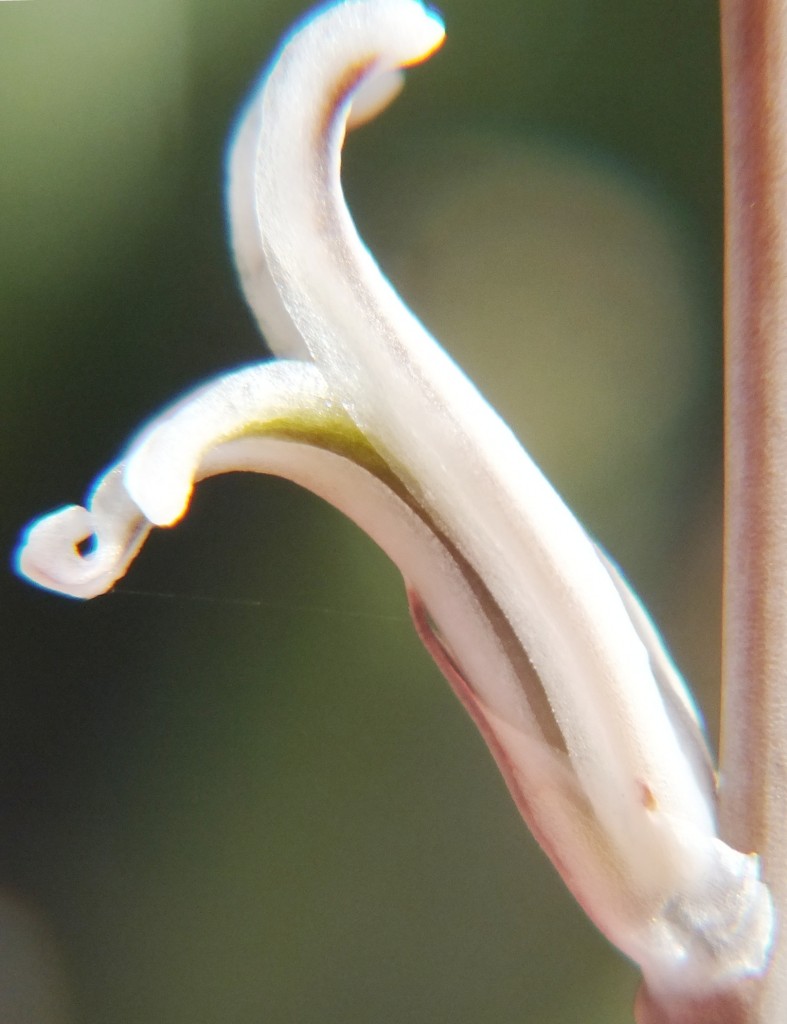
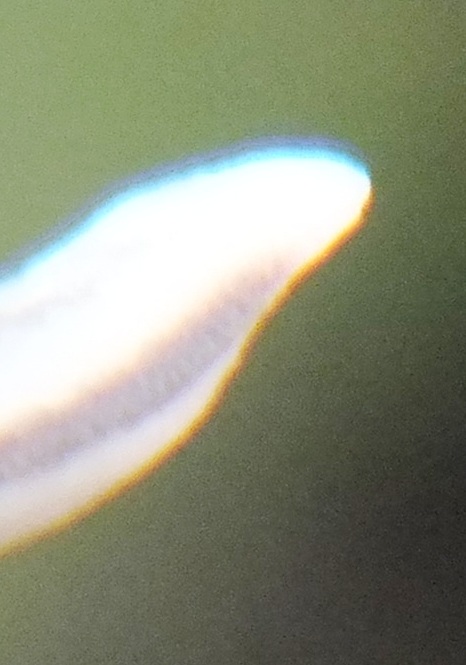
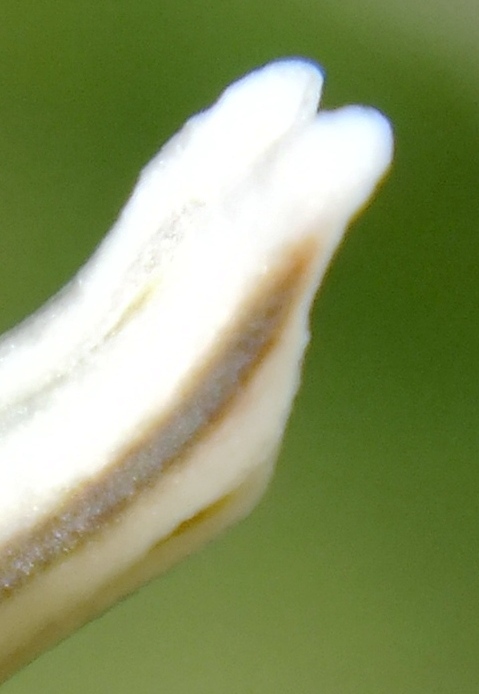
12. MBB33 H. comptoniana, Georgida.





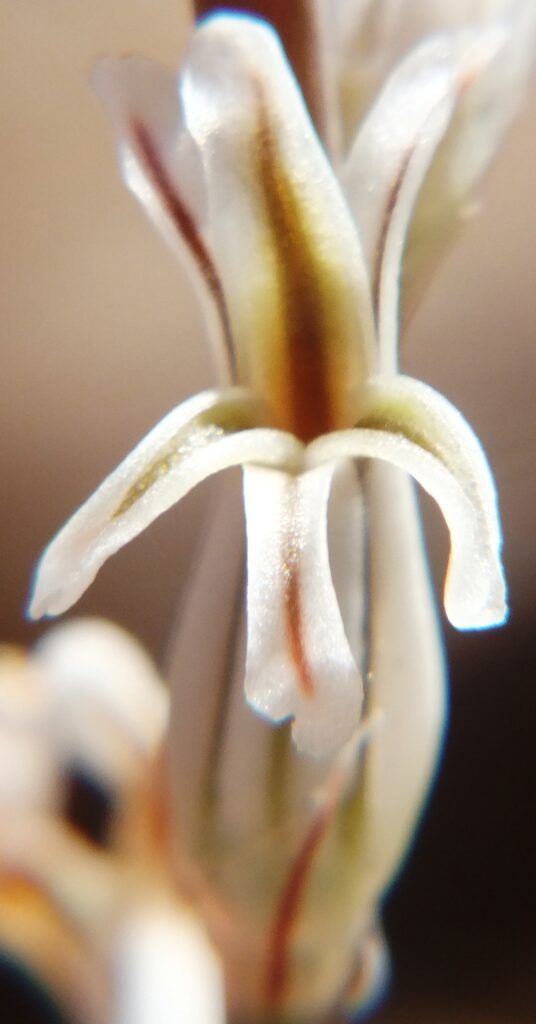
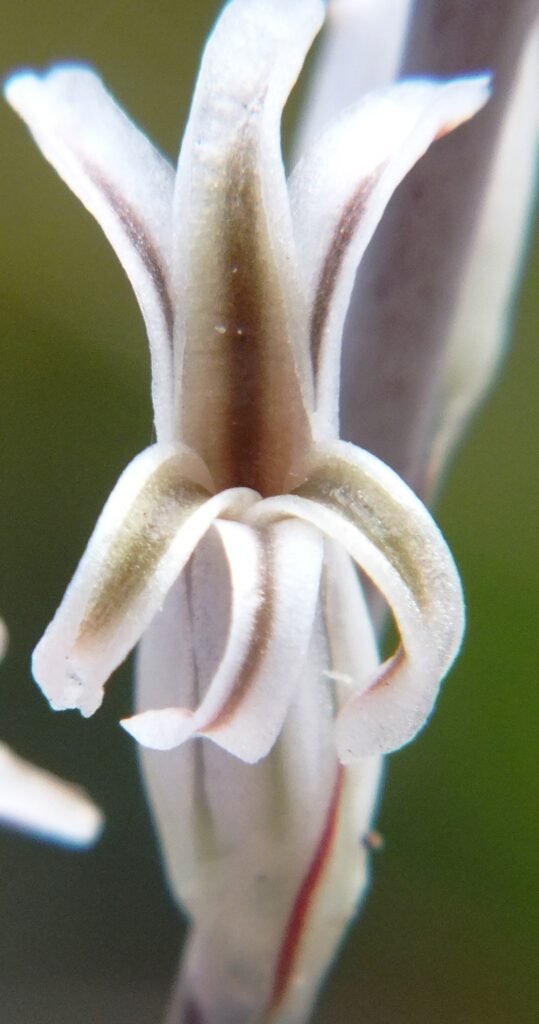
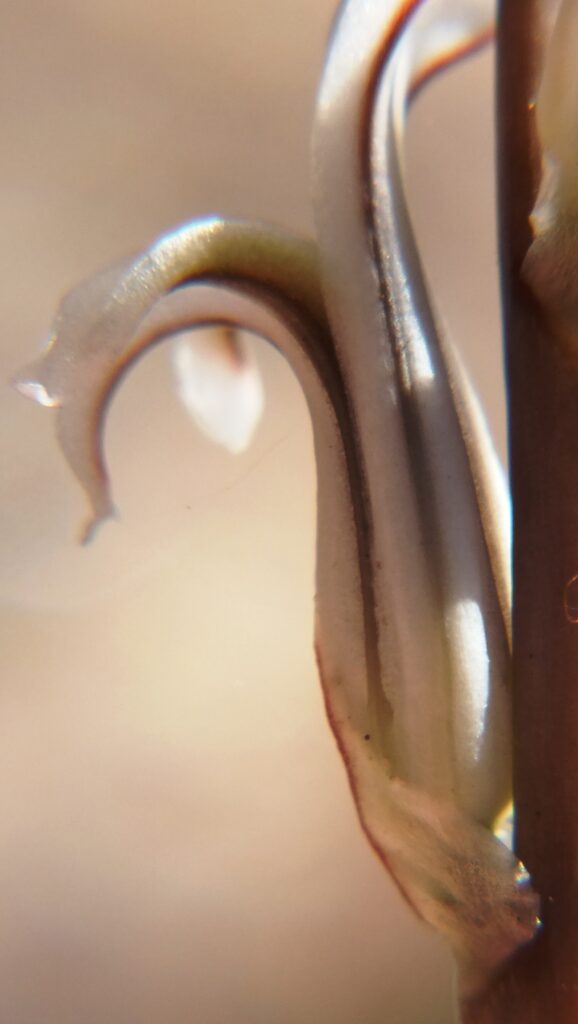
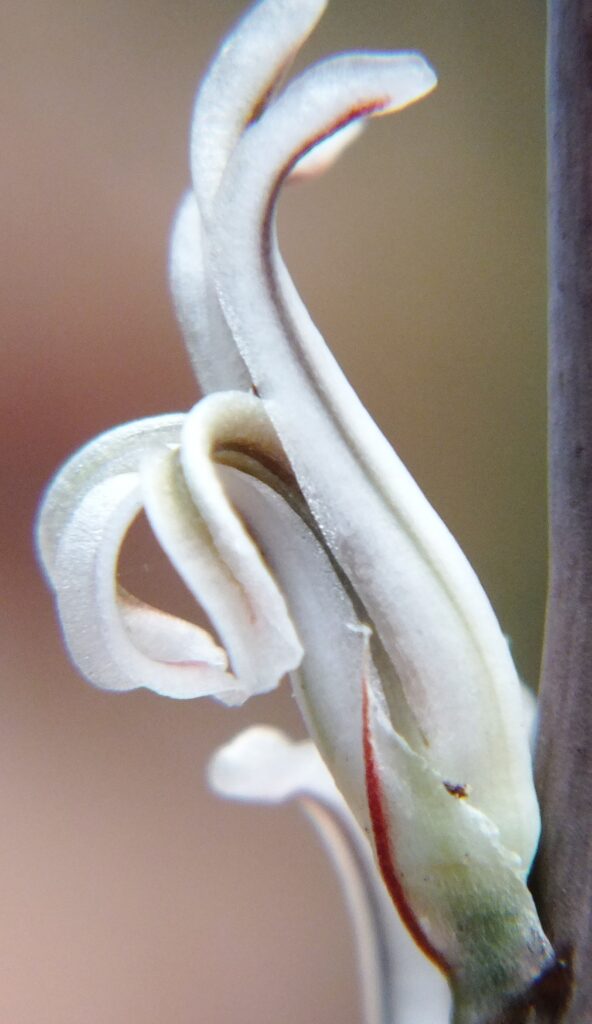
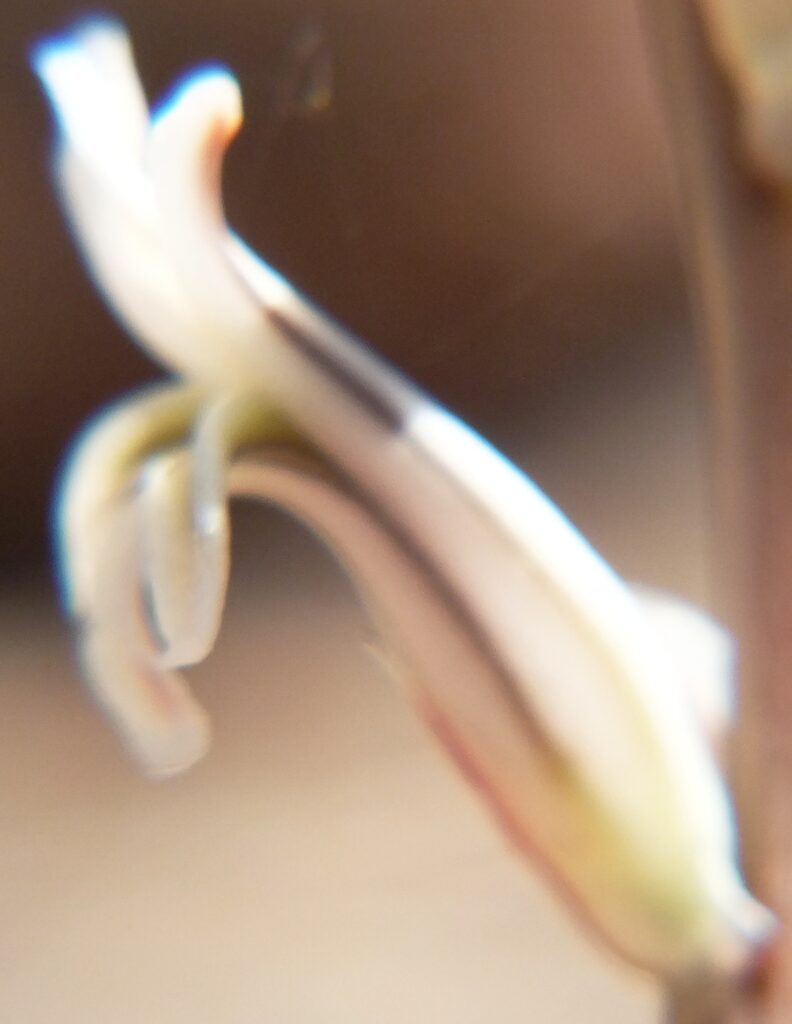
Haworthia flowers – some comments as a character source, Appendix 5
Haworthia mutica, Sandrift, Drew MBB8018 = KG226/70 = JDV92/64
This is an unusual population in that it is the most northwestern one known although only about 15km from Klipport nearer Stormsvlei. It is the source of the single plant that developed gross milkiness and for which I coined the name “Silver Widow”. The population was first recorded by a Mr. Meiring who worked as a nurseryman for the Bonnievale Nursery of Hurling and Neil in the years at least prior to World War 2. There is a letter in the Compton Herbarium archive which records a transaction between Meiring and Triebner of 100 plants as 1s ea. (i.e. = 10 cents in today’s currency.). I really struggled to find plants again in a very disturbed area and eventually did so after I had placed “Silver Widow” there in her pot to see if the flowers would be pollinated in situ. Indeed they were and then found about 20 plants in a very small area nearby. This visit owes to the report by Jakub Jilemicky of still more plants a very short distance again from these. Here there are about 80 plants in an area of about so many square meters.
Illustrations of the plants and flowers are given. The only comment I can make is to repeat that I never ignored the flowers out of ignorance. The fact is that we have a number of pretentious experts who have no concept of species other than an inherited vague notion that species have something to do with the capacity to interbreed. The fact that Haworthia plants do so freely does not handicap their enthusiasm for new species either. So this is a bit of irony. My contention was that if you did consider flowers there would be a lot less species than even in my conservative approach. In fact I am quite sure a competent professional taxonomist might well consider that I have been too generous with species and too kind to my critics.


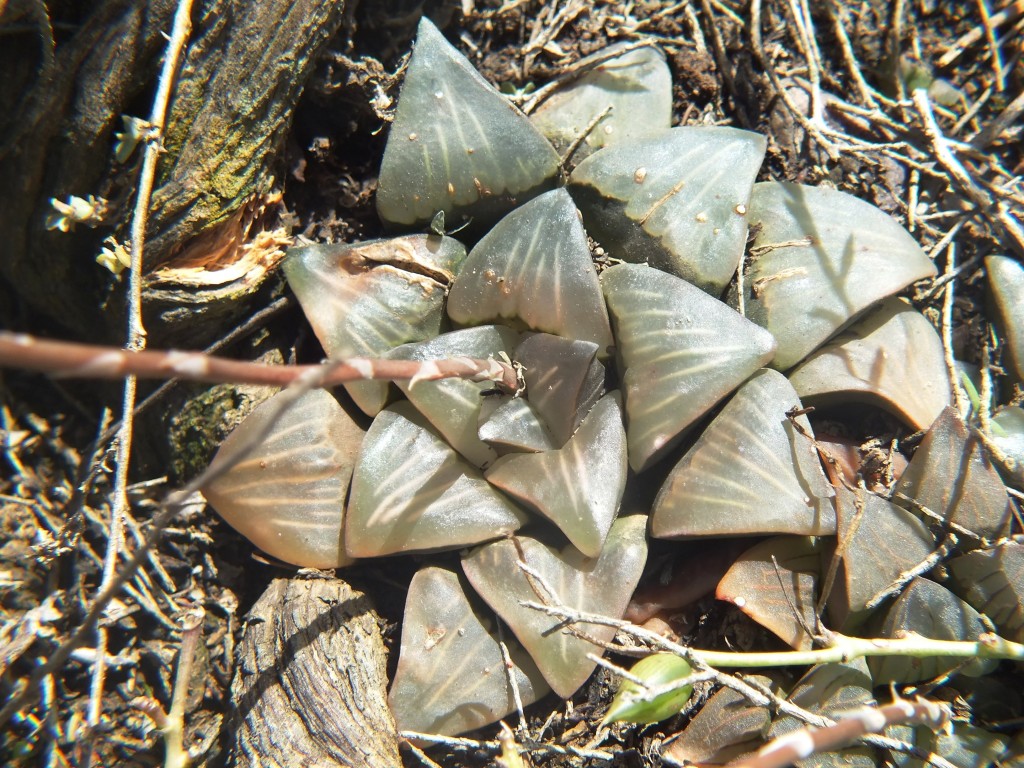
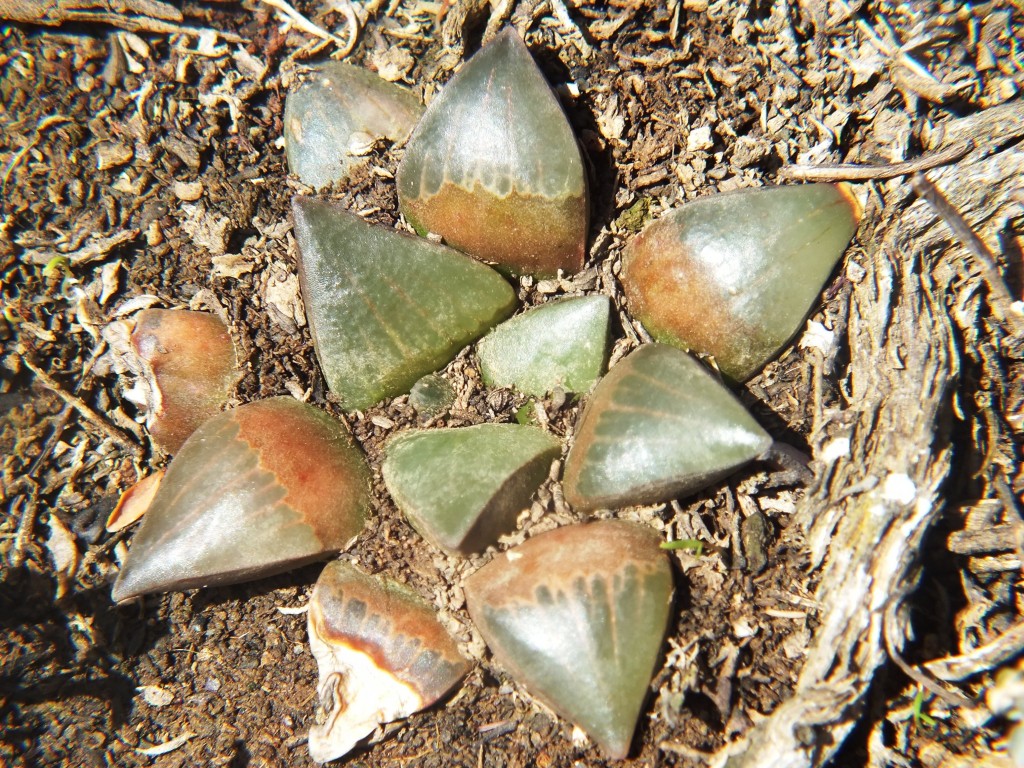
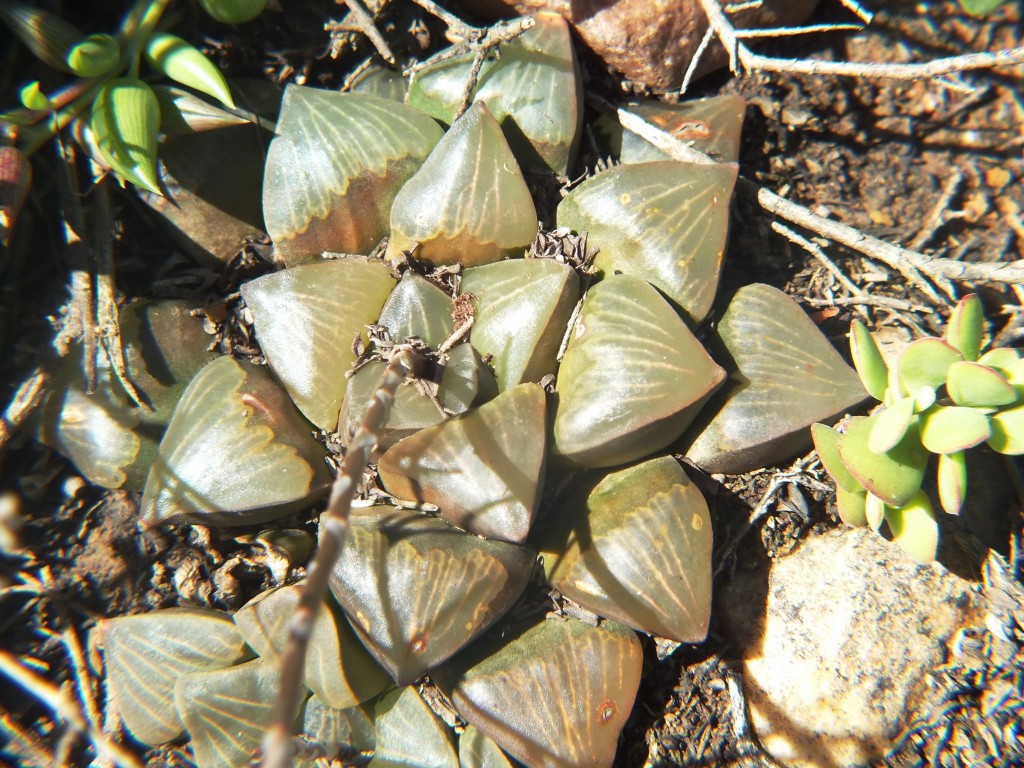

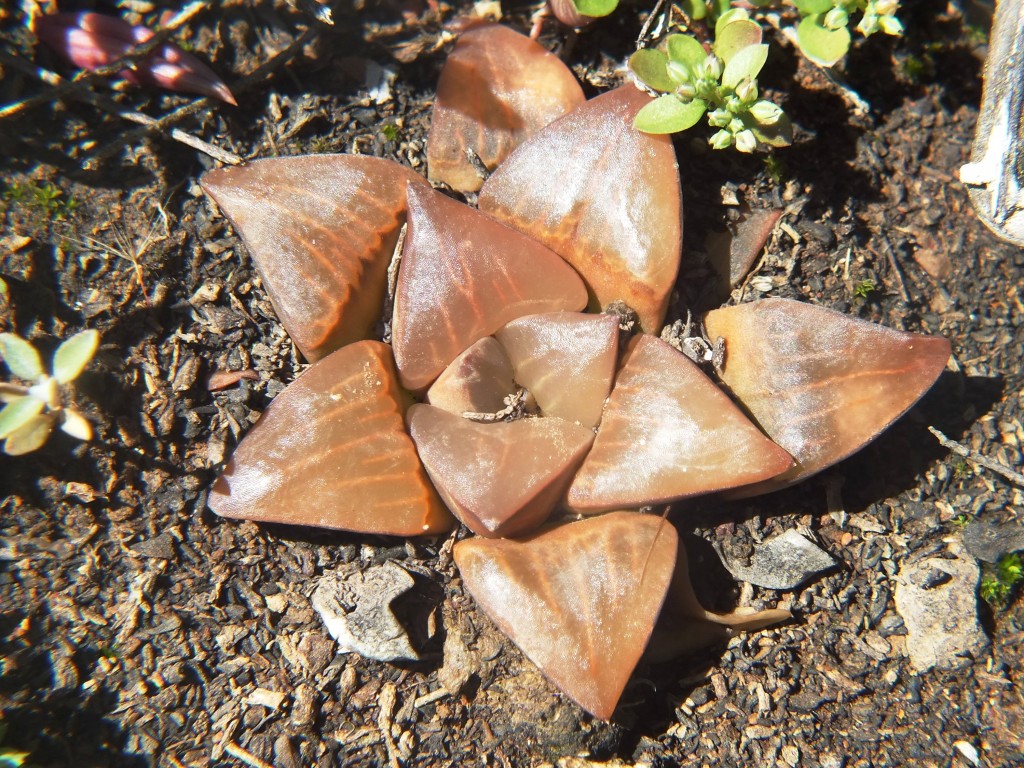
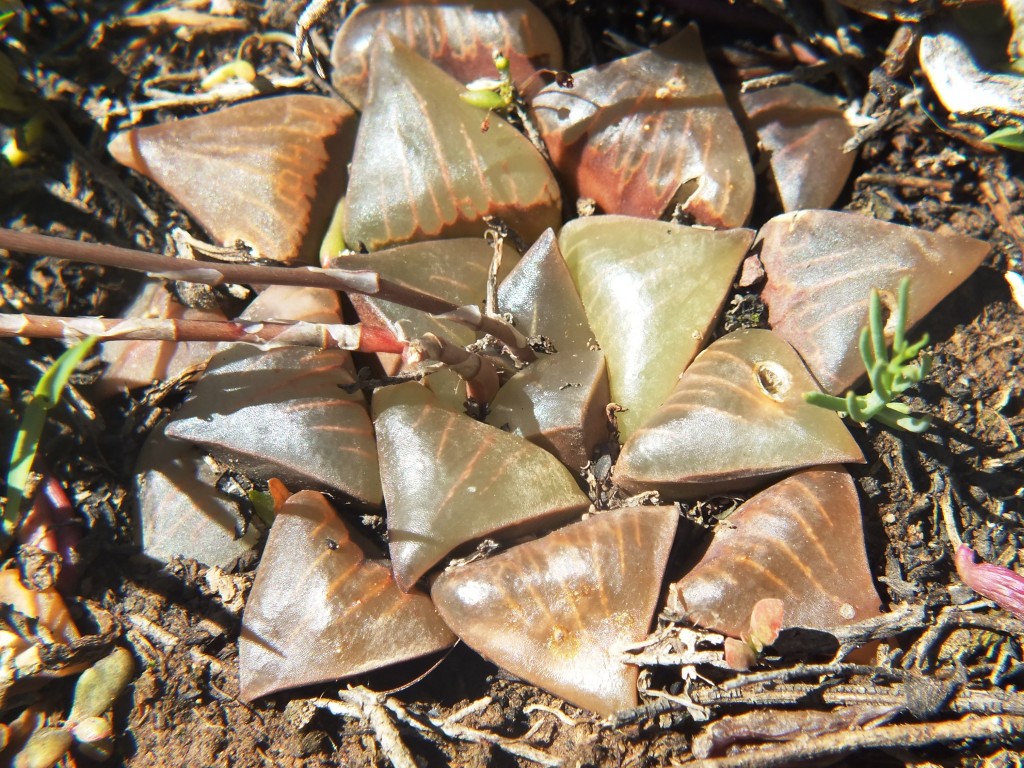
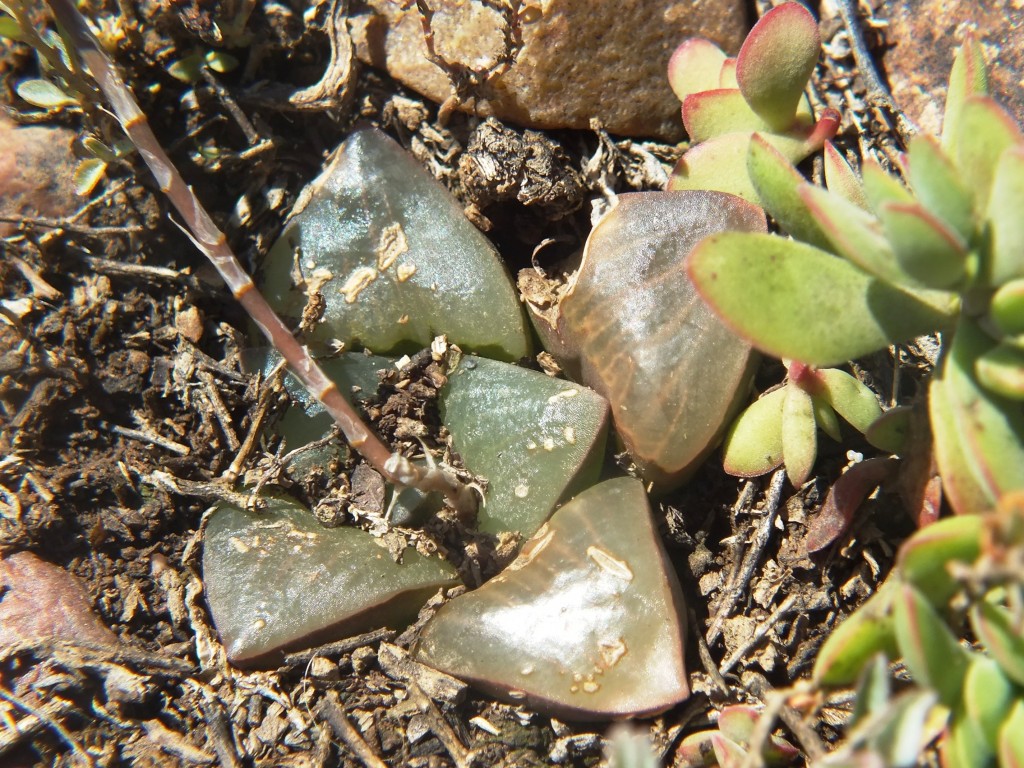
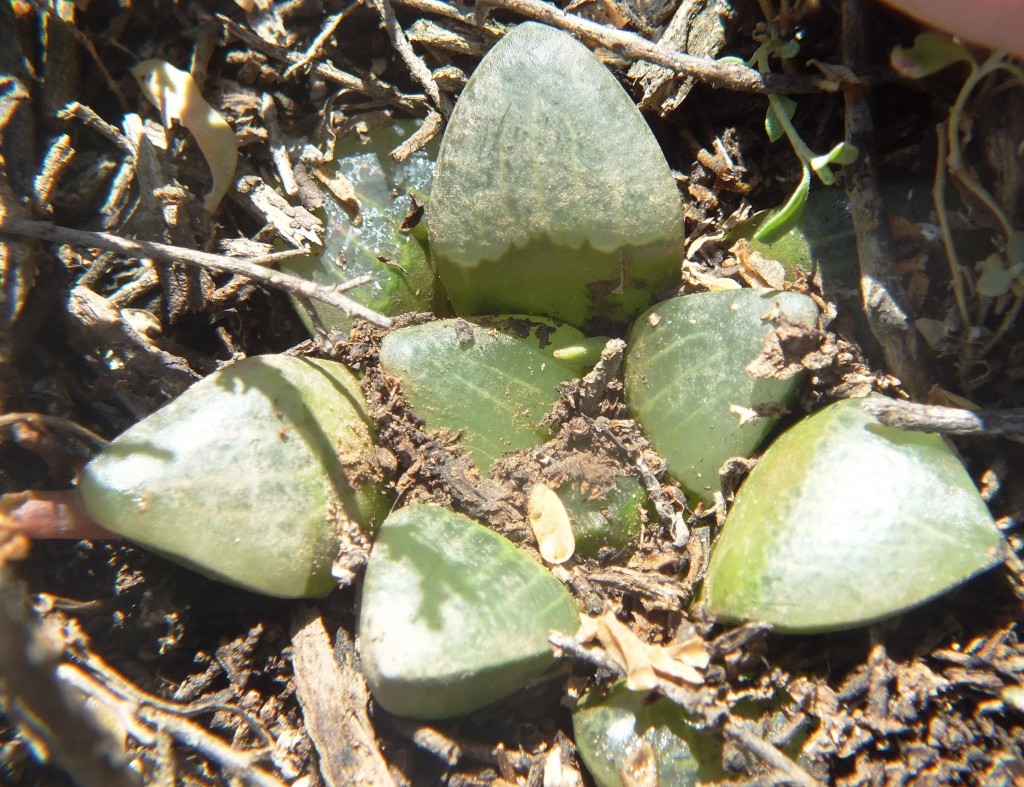
(image files mislabeled as 8012, but are 8018 – ed.)
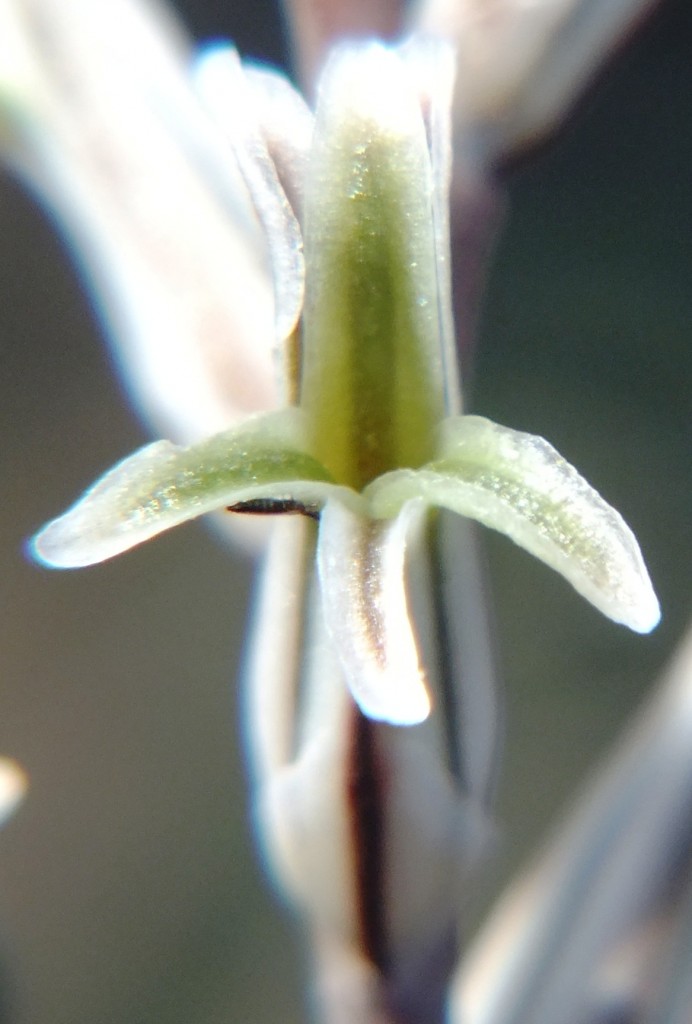
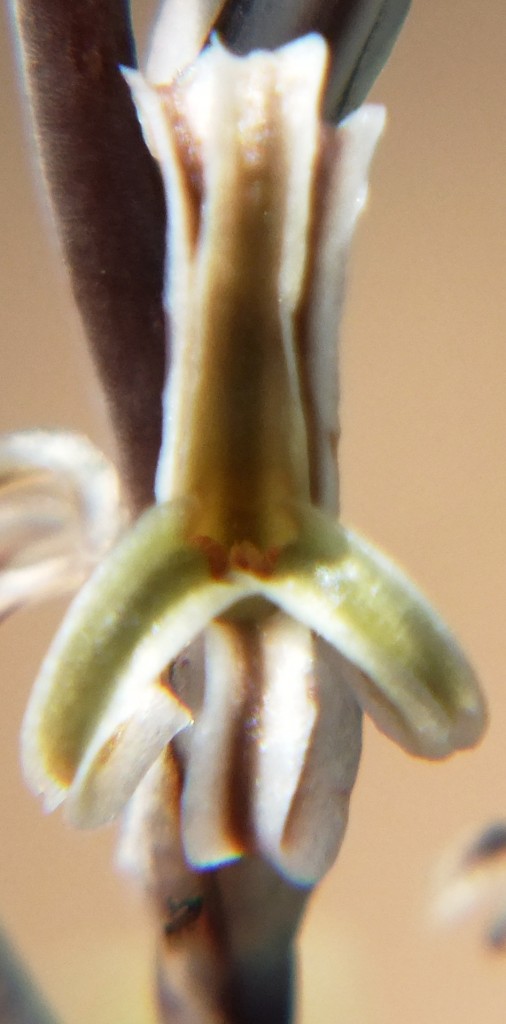

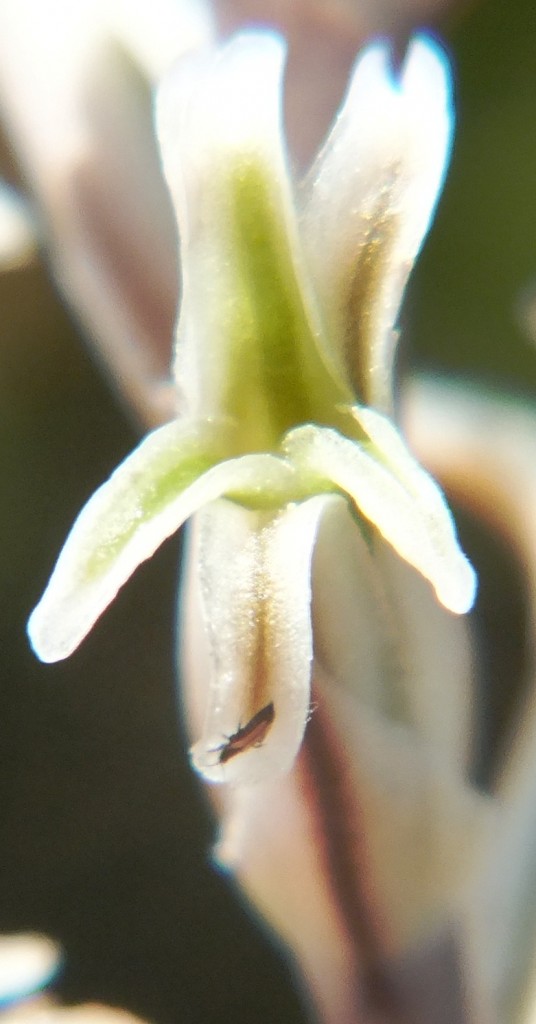

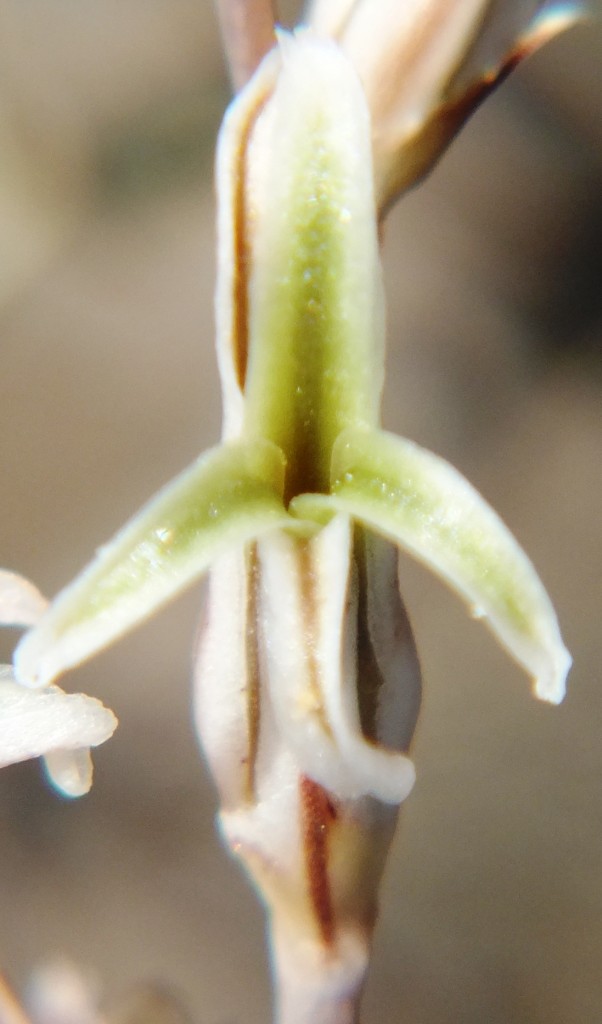
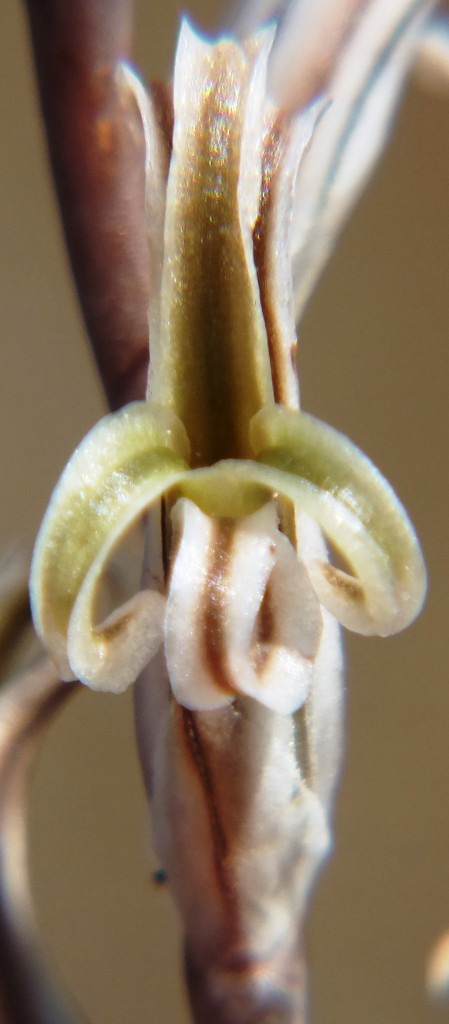
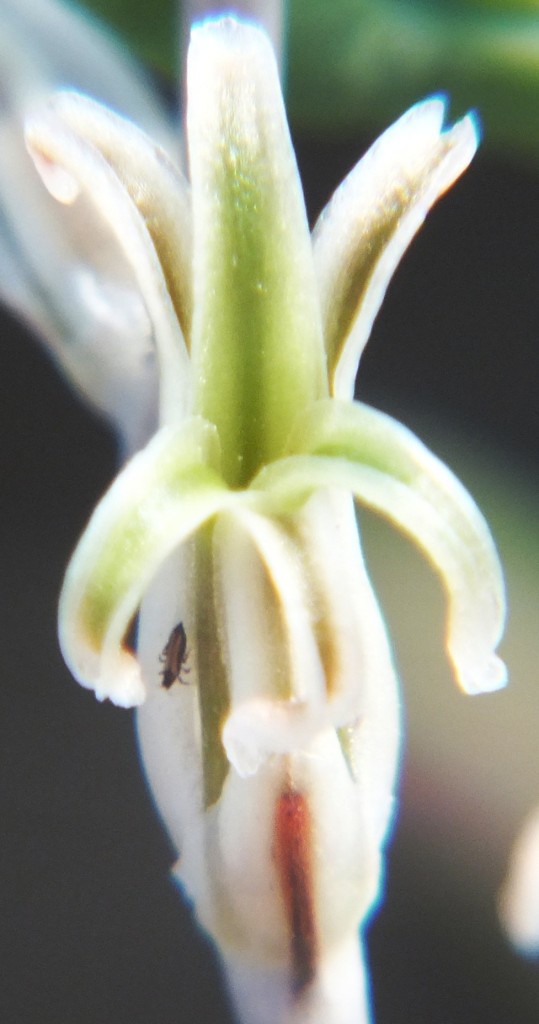
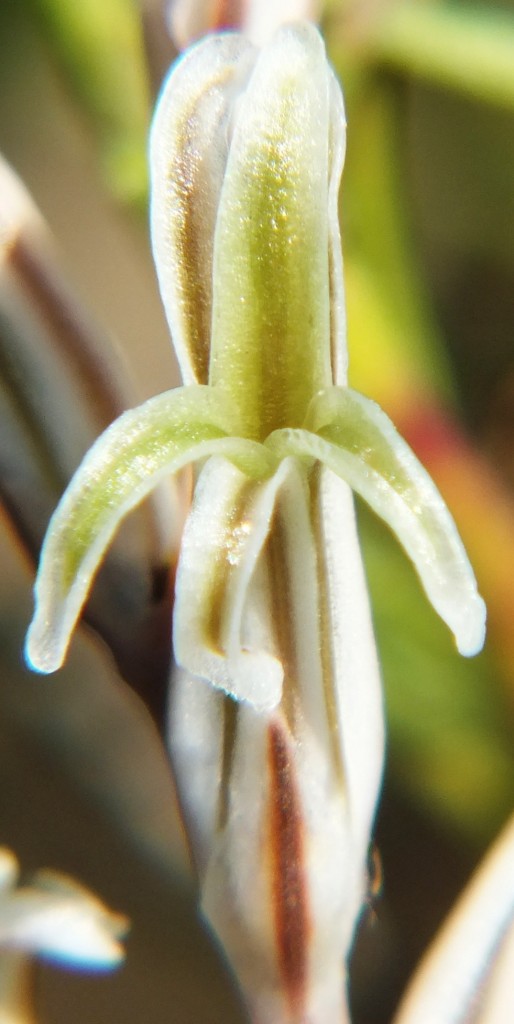

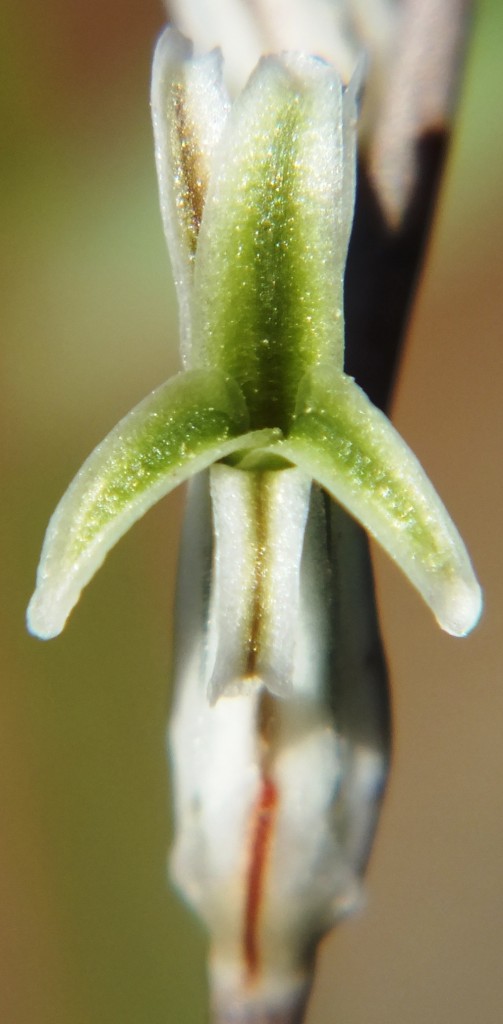
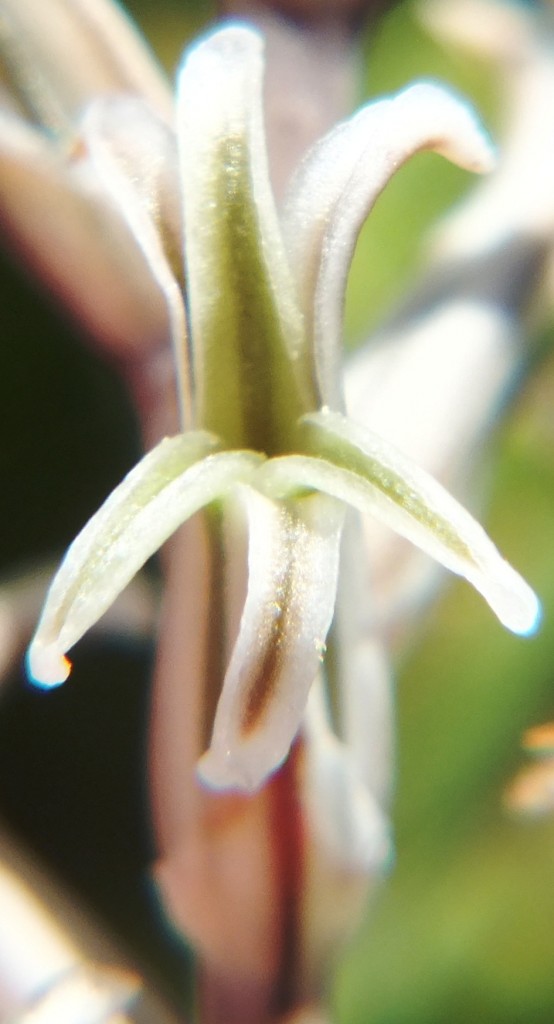
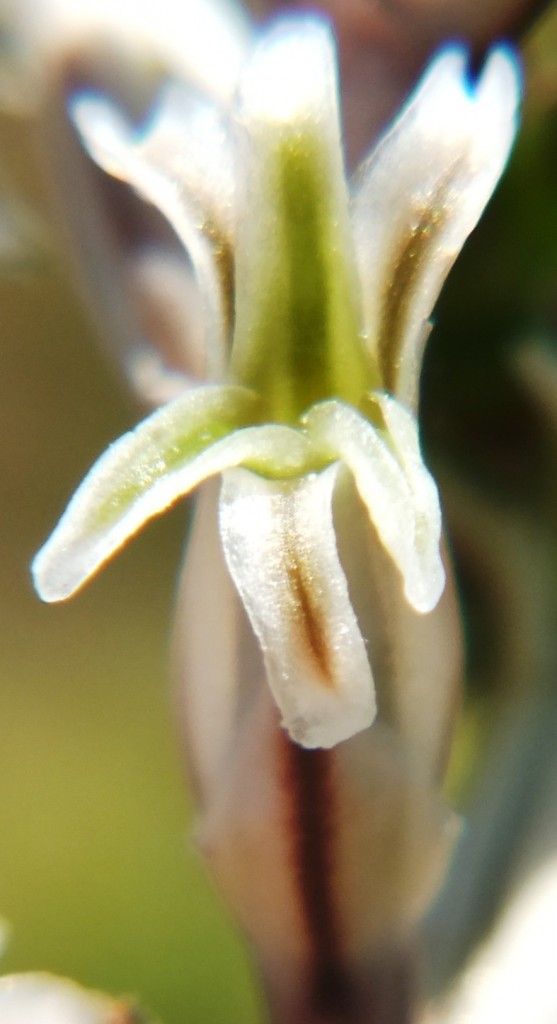
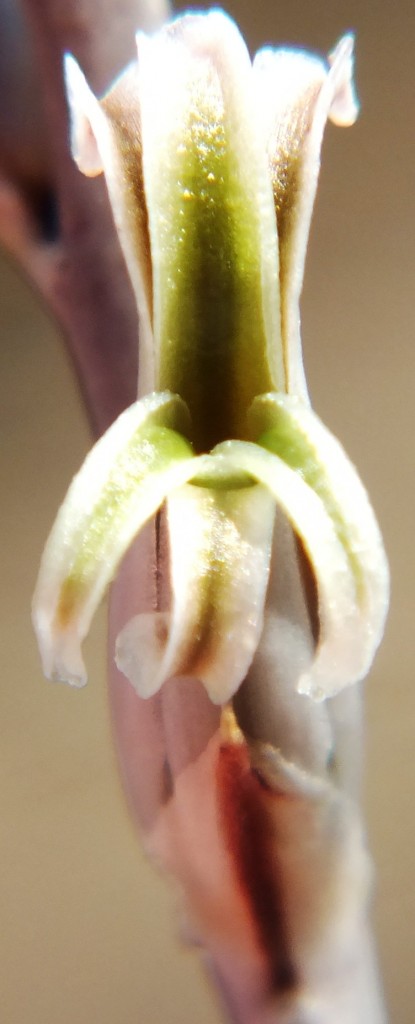
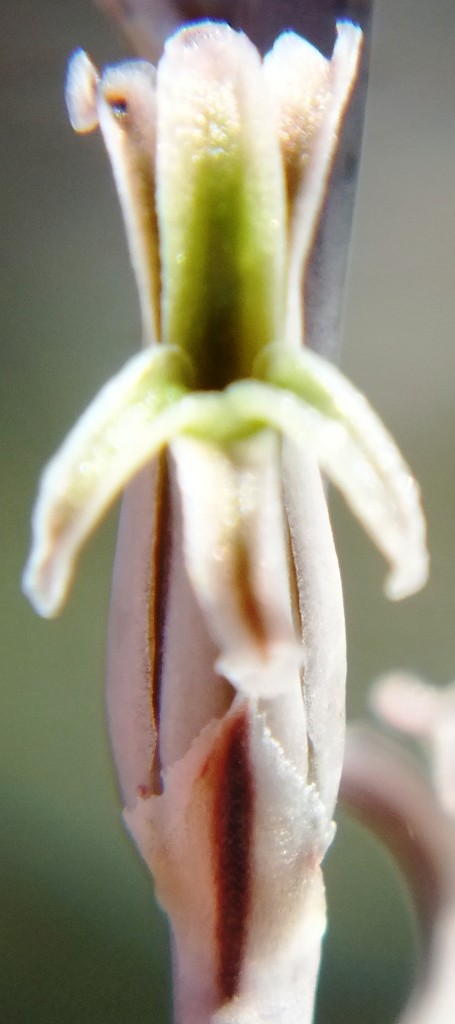
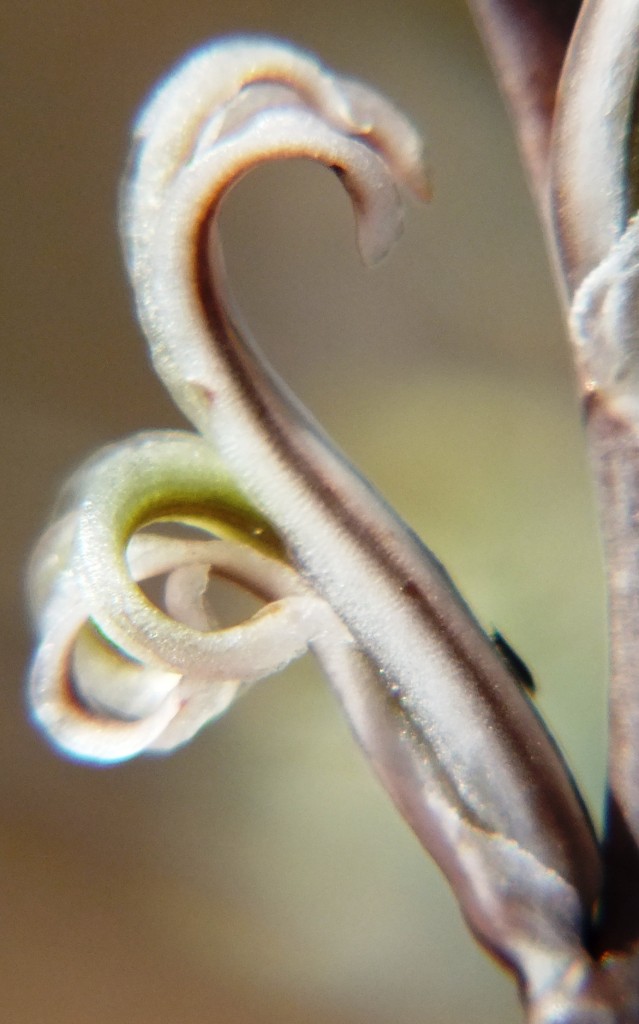
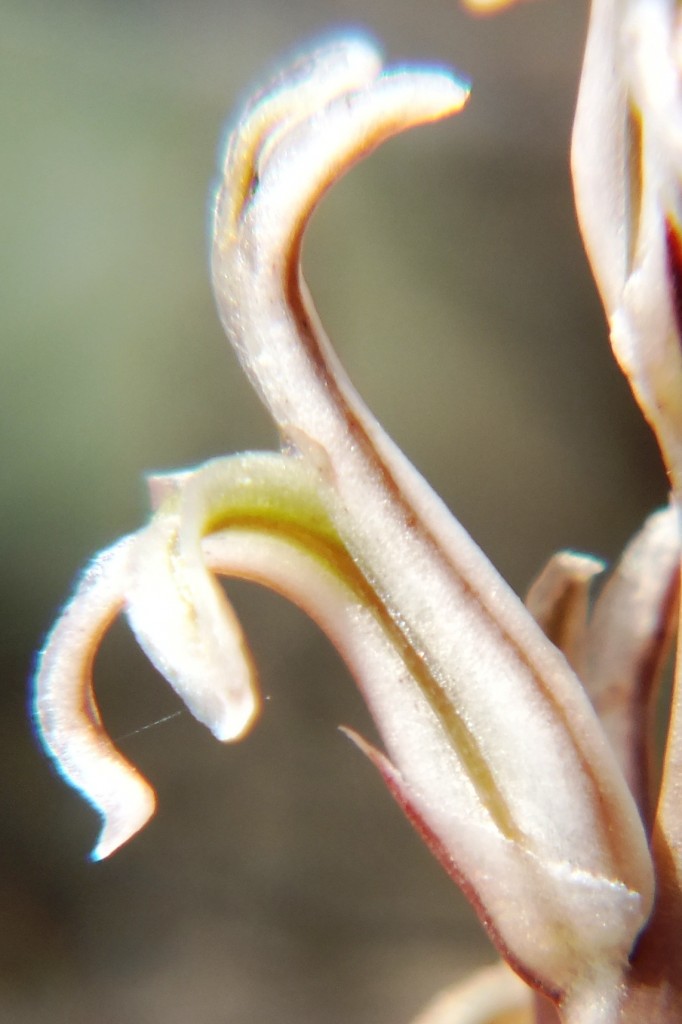


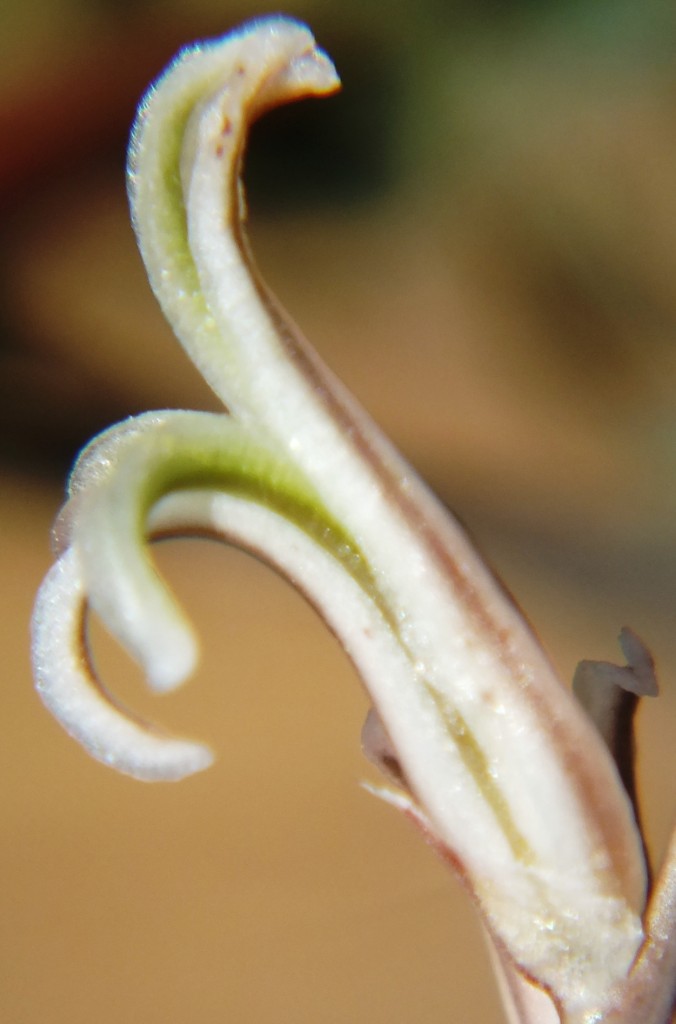
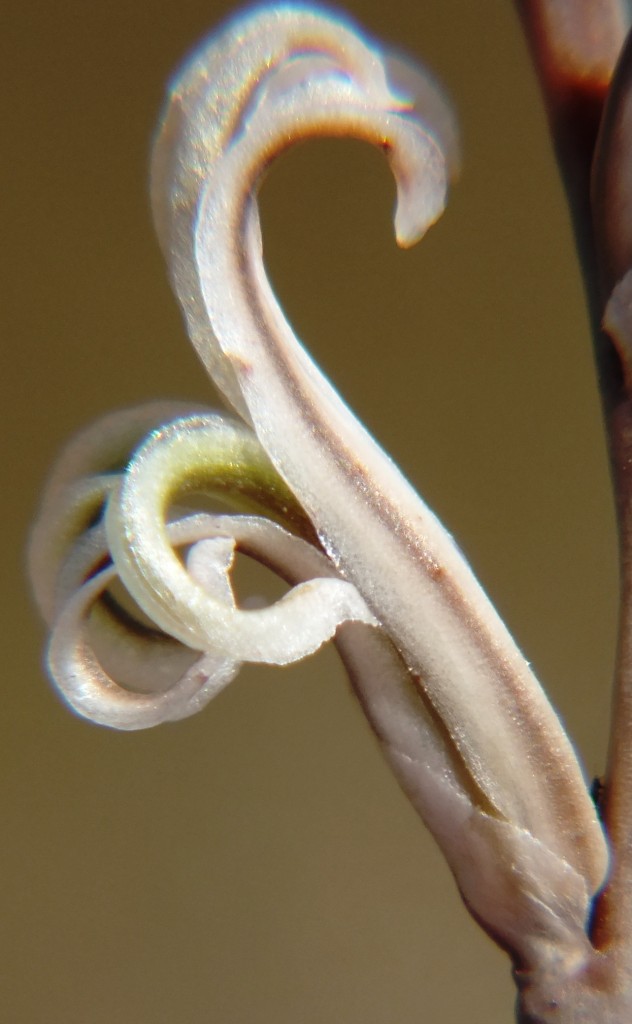
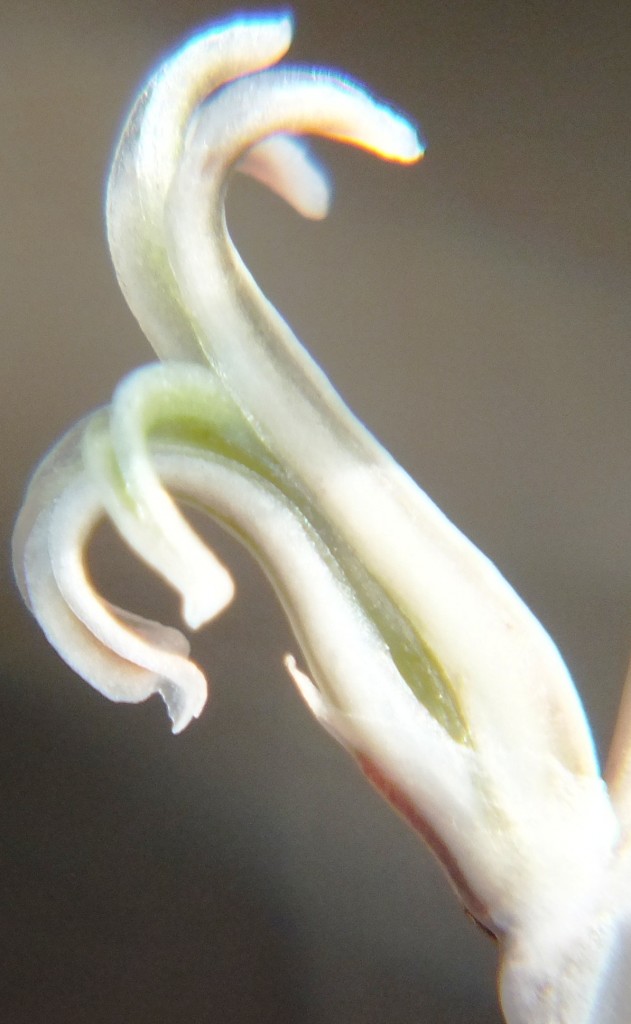
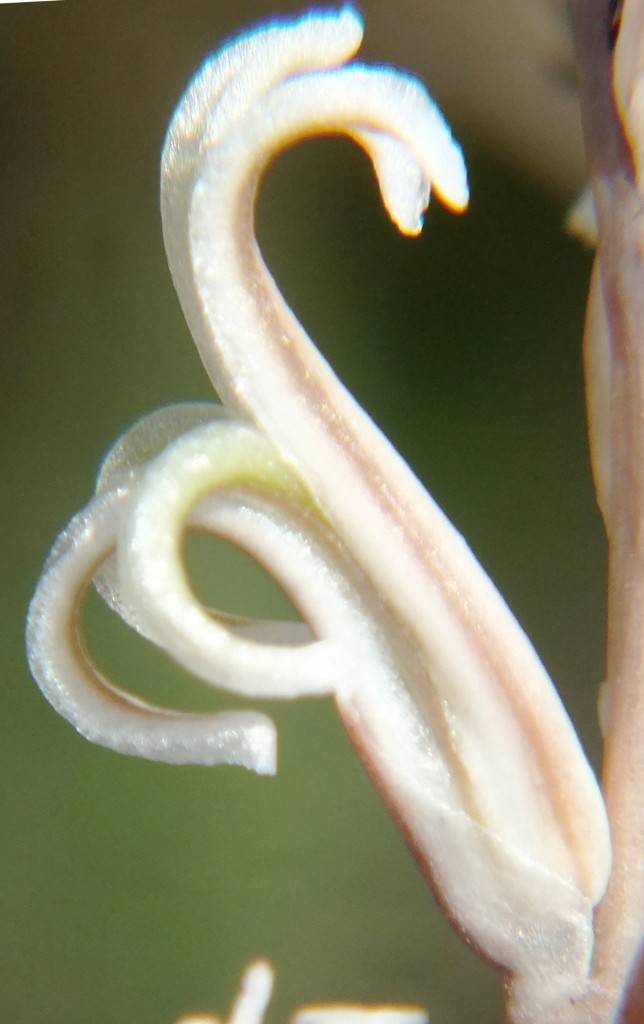
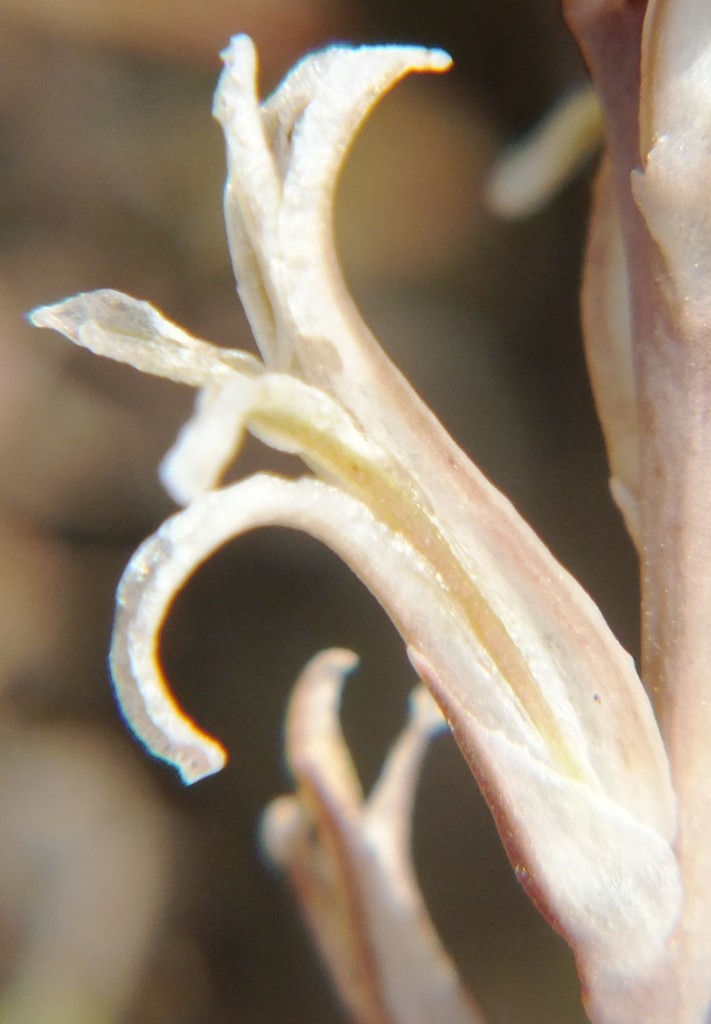
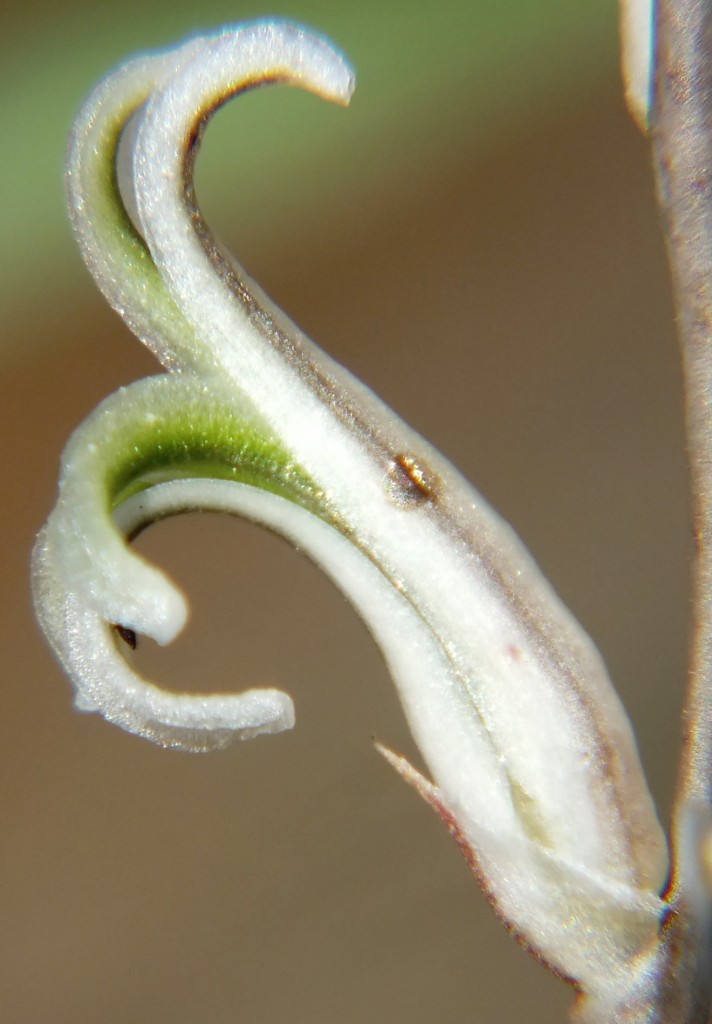
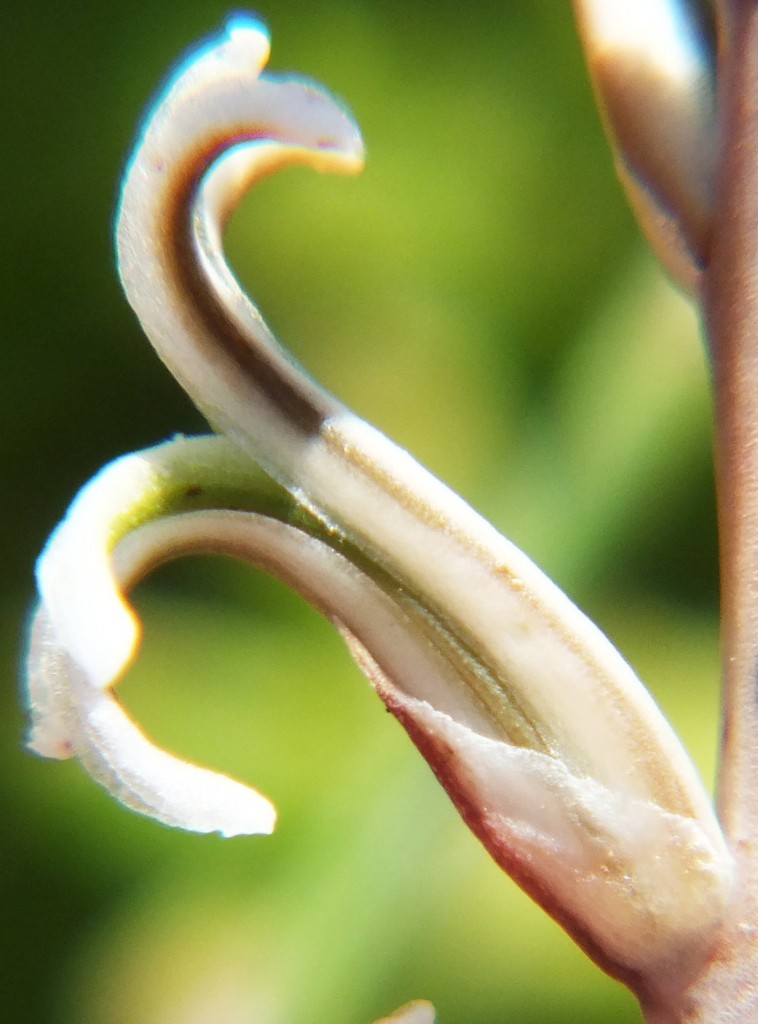

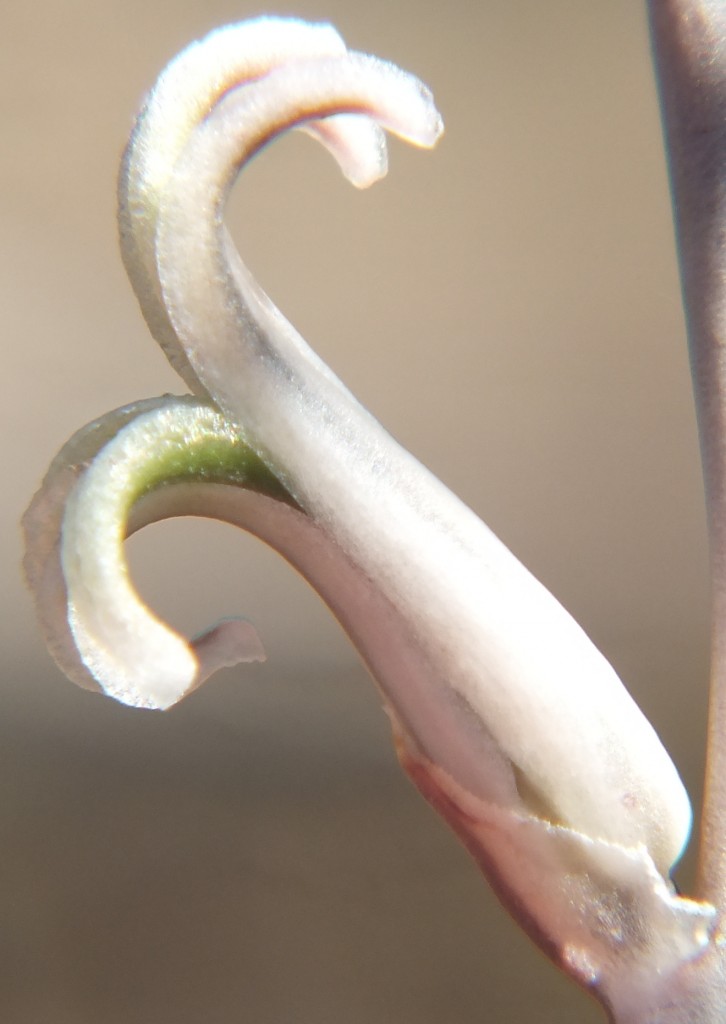
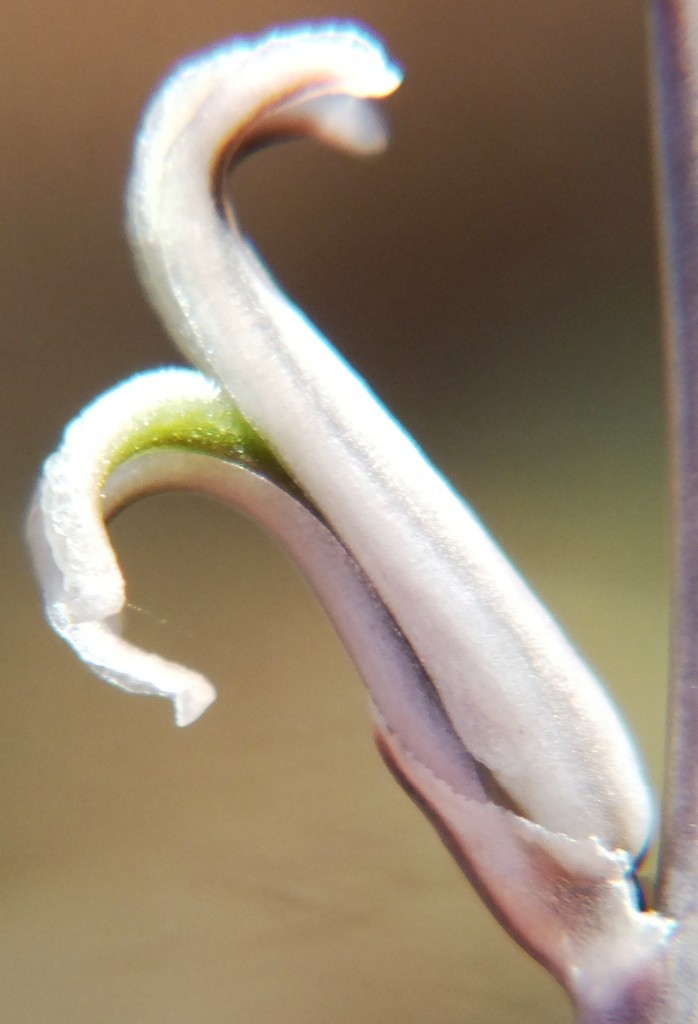
Acknowledgement
I thank Gerhardt Swart for access to the site and to Jakub Jilemicky for informing me of the new find. ♦
Haworthia flowers – some comments as a character source, Appendix 6
Two further records and data for Haworthia mirabilis.
Kobus Venter drew my attention to a second population of H. mirabilis on the eastern boundary of the farm Schuitsberg, which is the origin of the var. beukmannii of von Poellnitz. But the real motive for exploration in that area was a photograph sent to me by Messrs. Daryl and Priscilla Hackland of a plant on the Zigzag Path just east of the northern end of the town of Greyton. It was their son Andy Hackland who observed the plants and thought I might be interested – indeed. The bright green colour of the plant struck me as most unusual for that area where most of the populations known are south of the river in shale and they are of the brown and red hues. This is not strictly true because records of an expedition by Messrs. Beukman, Otzen and others mentions a small “black” species just before the entrance to Greyton. I have never found that.
However, it is well known that Haworthia mirabilis occurs along the course of the Boesmansrivier on the way to MacGregor. I once observed it there myself hiking part way from the northern end of the walking trail down the river to Greyton. Kobus Venter has also seen it while walking from the southern end. I included this variant under the varietal name ‘consanguinea’ that is actually based on populations on the north side of the mountain in the Dwarswaterkloof west of MacGregor. Ms. Dawn Schwegmann once showed me plants from that general area but I never did establish exact origin. What did strike me about the Boesmansrivier plants is the very close resemblance to Haworthia retusa ‘turgida’ when I still considered populations that occur in Table Mountain Sandstone in the Tradouw Pass and north of Riversdale as a discrete species. The only difference to me was the summer flowering time and the resemblance of the flowers to those of H. mirabilis from the Bredasdorp/Napier area. This observed similarity was largely based on a very small sample, colour, and the fact that the flowers were available simultaneously. I must have assumed that this similarity was unlikely to include ‘turgida’. Unfortunately photography was expensive and almost unmanageable for this sort of detail in that era and I had to observe and record from memory.
While I now have only the memory of the turgida-like element in the pass and a myriad of varying populations of H. mirabilis at the northern end and around MacGregor, I have had no evidence of transition to the red-brown plants (eg ‘rubrodentata’) south of the Riviersonderend River from east of Genadendal to at least Lindashof east of Riviersonderend town. This is as the species occurs in putatively Bokkeveld strata.
The Hacklands saw the plants at the top end of the Zig Zag path and the geology here will need a better description than I can give without a geology map. The vegetation is transitional to Fynbos and the stratum an argillaceous one (clayey) not obviously Sandstone nor shale. But the plants are so different. They are smaller than in populations in the area that I know south of the river, fairly bright green and becoming rather yellow in summer stress dress. A physical description of the plants defies description and I would be a loss to refer to the plants as anything but a variable lot. In the amazing context of Latin names in Haworthia I would like to refer to the plants as Haworthia mirabilis ‘hacklandii’ – if it can be forgotten and forgiven (it unfortunately cannot be) that I question the merit and motives for using personal names for taxa. In any case, the serious limitation is to know how to descriptively and sensible circumscribe such a population. The alternative reference is H. mirabilis MBB8040 or H. mirabilis NE Greyton, or H. mirabilis Zig Zag Path. Whatever name is used, this population is in my opinion quite an awesome demonstration of the morphological continuity that I have come to expect in Haworthia. A wide range of comparisons is possible if one takes single clone after clone. I thought ‘sublineata’, ‘mundula’, ‘ turgida’ (from a range of populations) as well as ‘notabilis’ and even ‘elizeae’ and ‘mutica’). The departure from the wider dark green colour of the mirabiloids is the most unexpected feature although this is just what occurs with ‘consanguinea’. This latter is the ground truth and I fully expect that further populations occur to complete a transition to the even more obviously ‘turgidoid’ variant known from deeper in to the Boesmansriver valley. Later driving eastwards and a little further south towards Schuitsberg, we observed very similar habitats 2-3km further north of the road in foothills of the Riviersonderend Mountains.
Among the pictures of the plants is a view from the top of the Zigzag Path looking north into the Boesmansriver valley (or gorge). The hill on the right front seems to be similar to that of the Path and similar low rocky hillsides occur at several places. Significantly there is one immediately north of Riviersonderend where the river passes by on the north side rather than on the south away from the higher hills away from the main range. Kobus has persistently observed that there must be plants there. The evidence of the Zigzag Path occurrence definitely suggests that this must be so and that many more populations exist unrecorded simply because of lack of exploration specifically for Haworthia. While Andy observed the plants at the top of the Path, they are widespread all the way down to the bottom. It is quite amazing that the presence of the plants has not come in to my ken sooner. It is just an observation of mine that Haworthia distribution may be far wider than we suspect simply because Haworthiophiles have not ventured into unlikely areas.
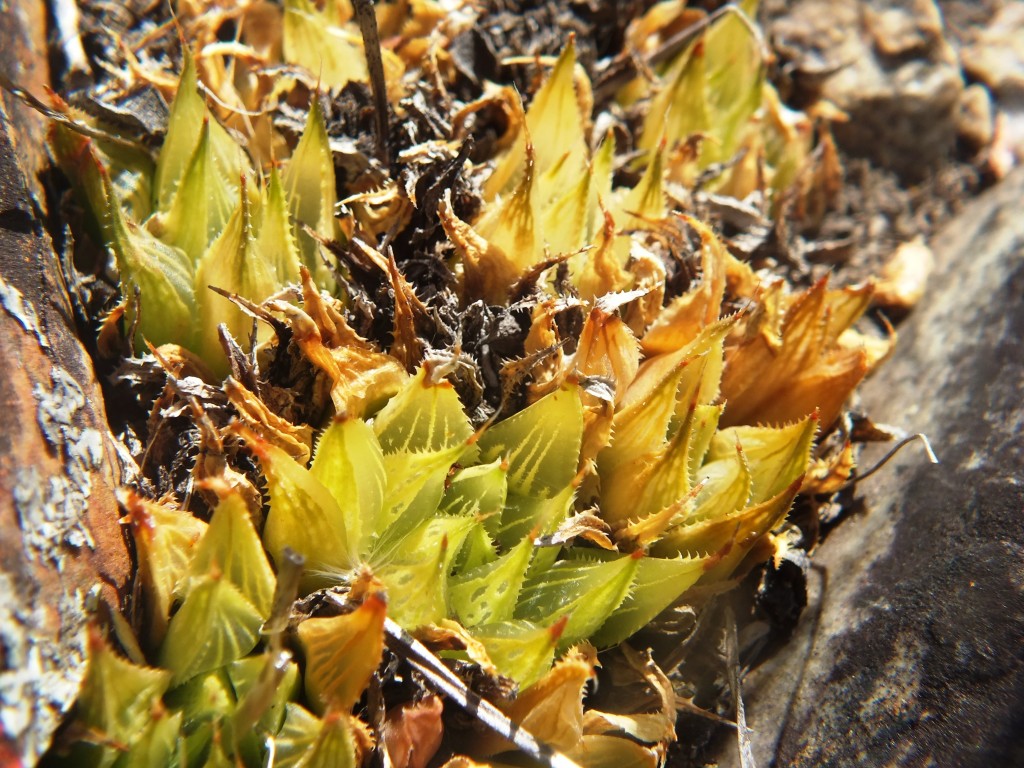
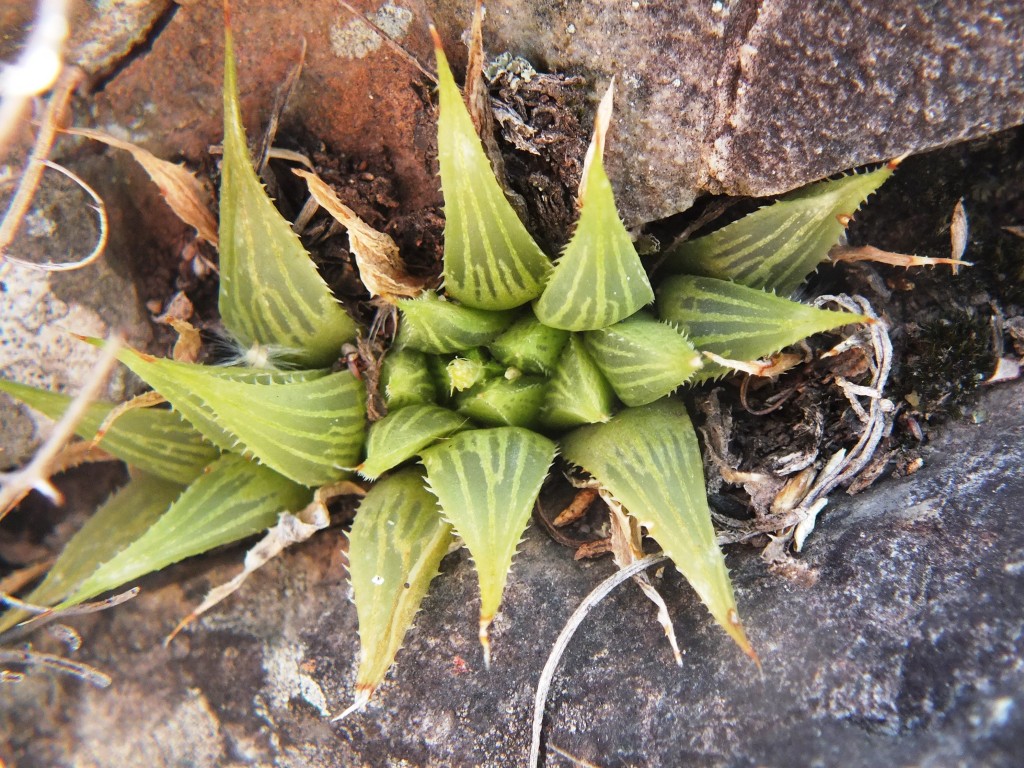
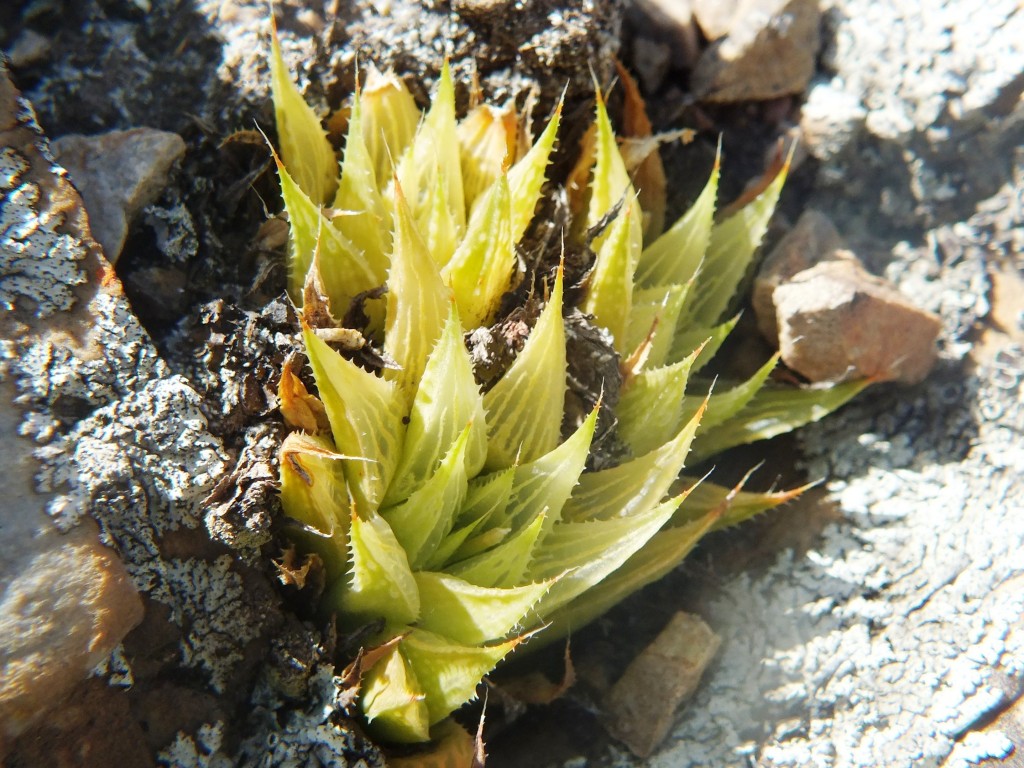

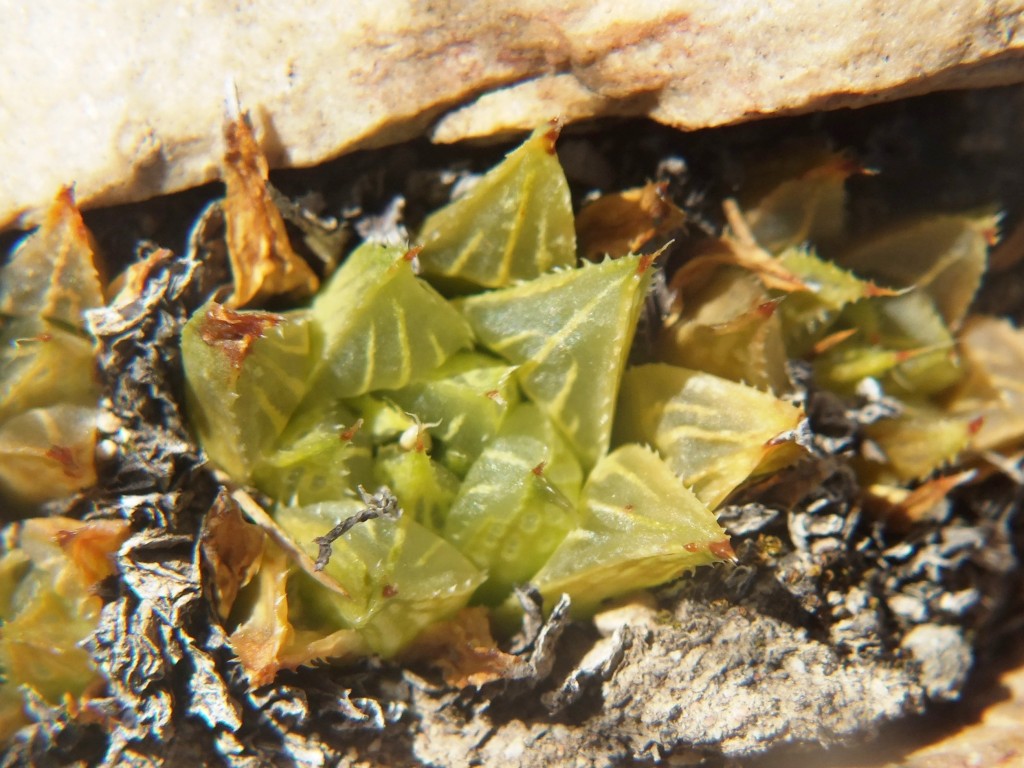
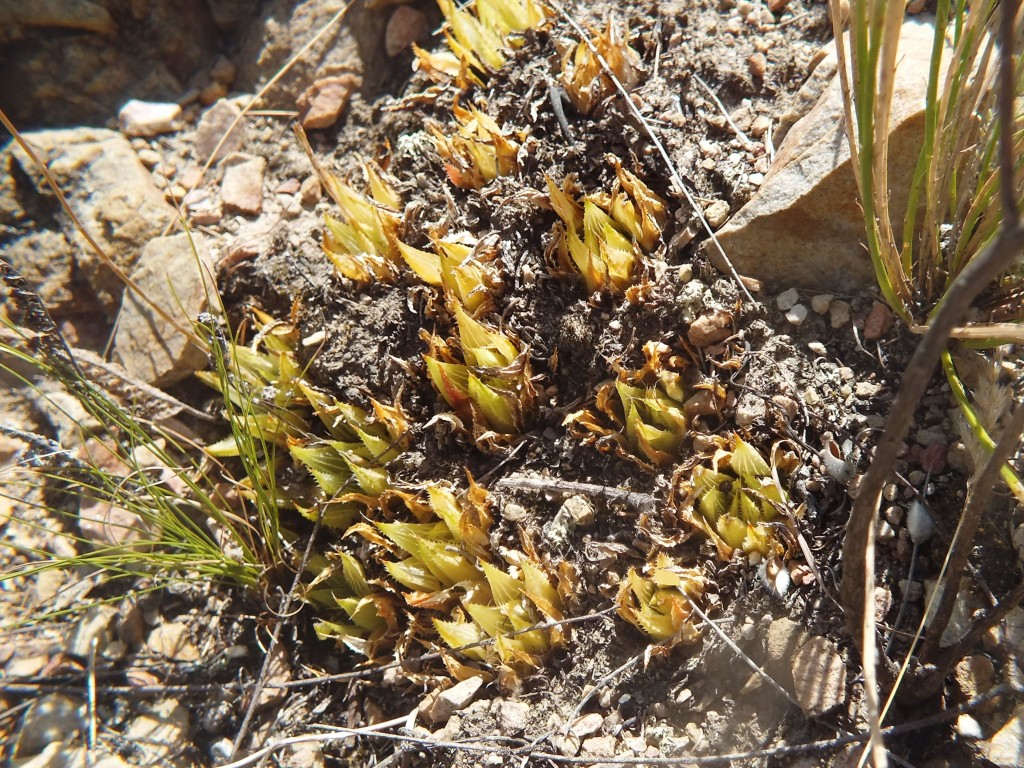
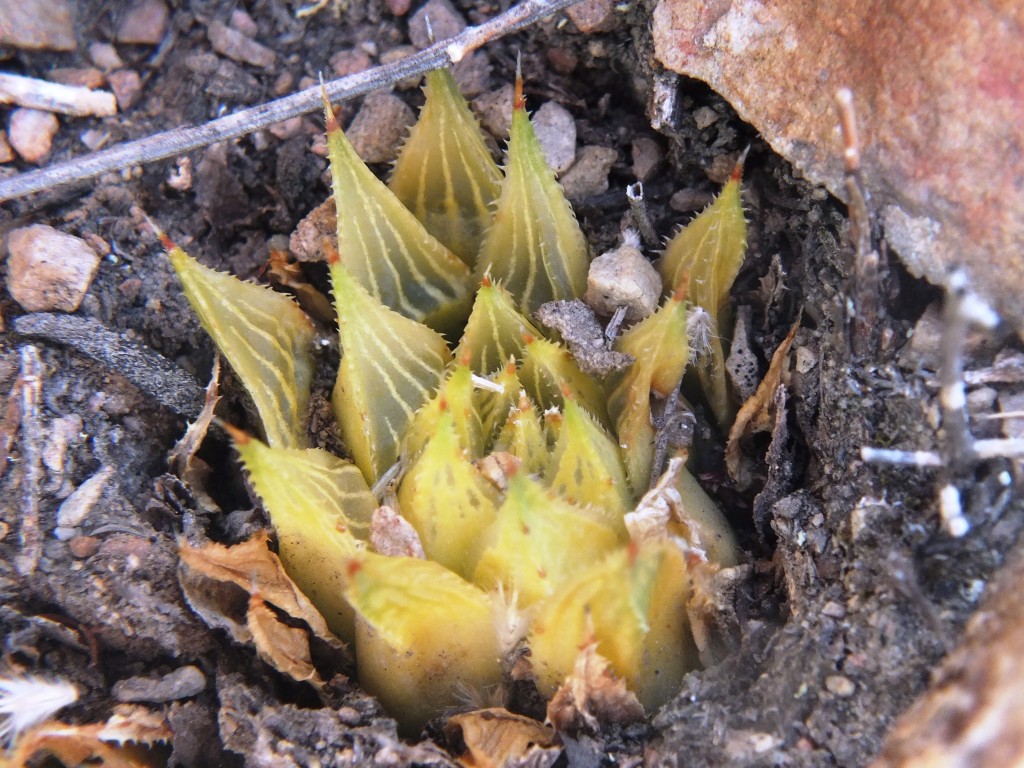
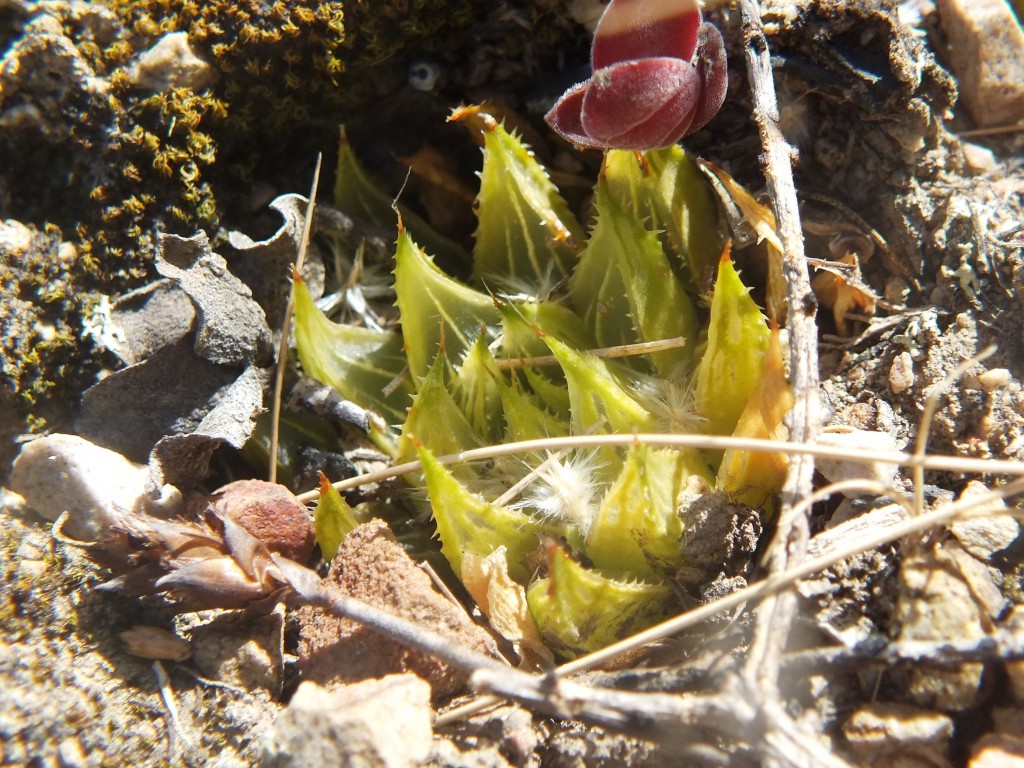
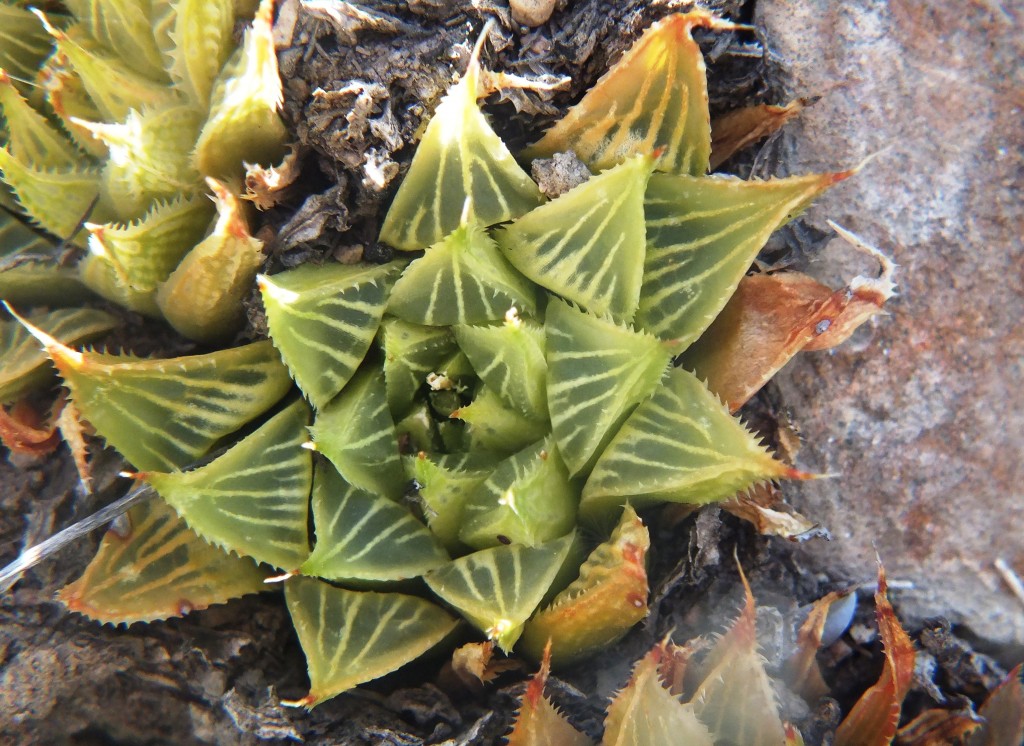
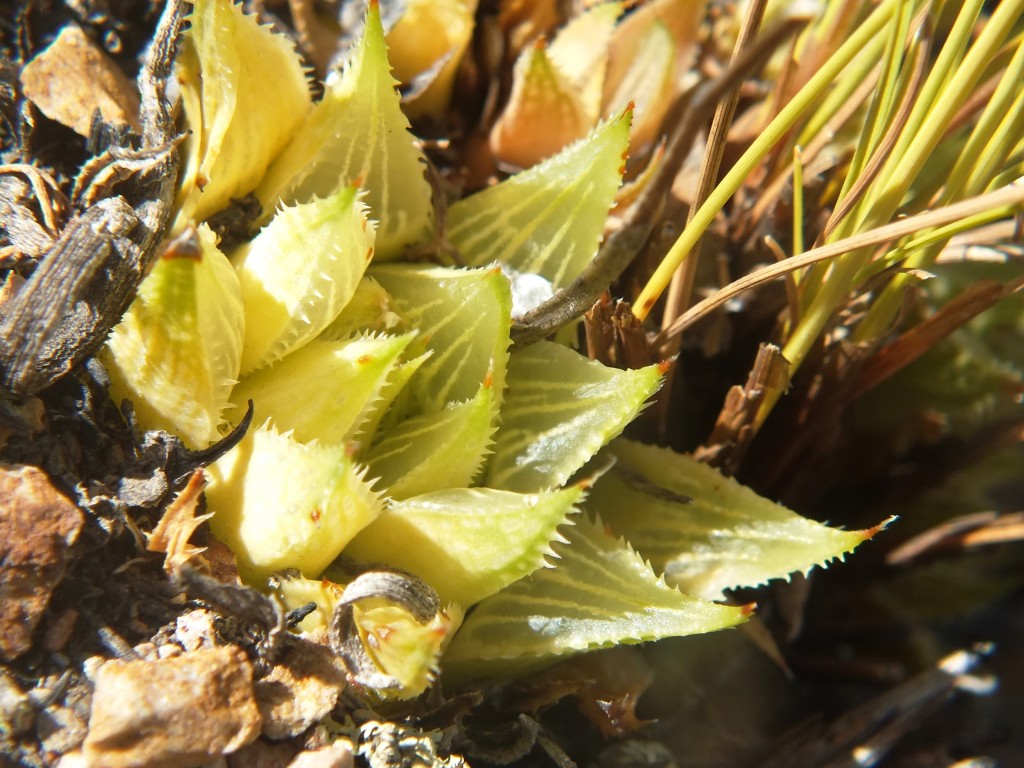
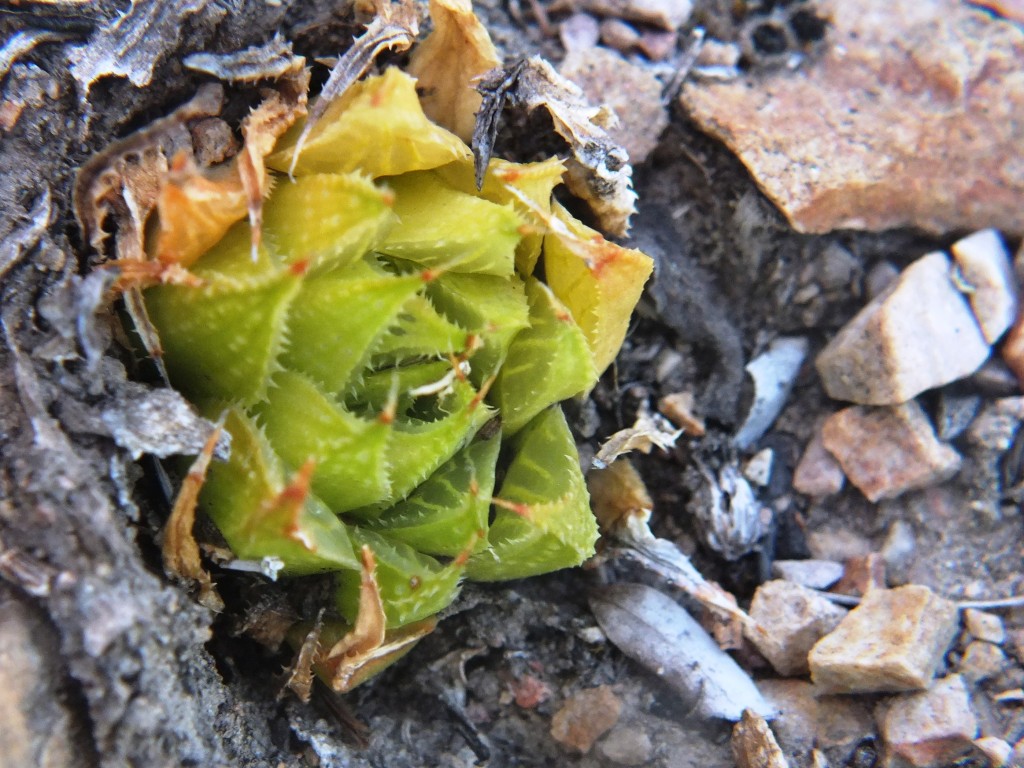
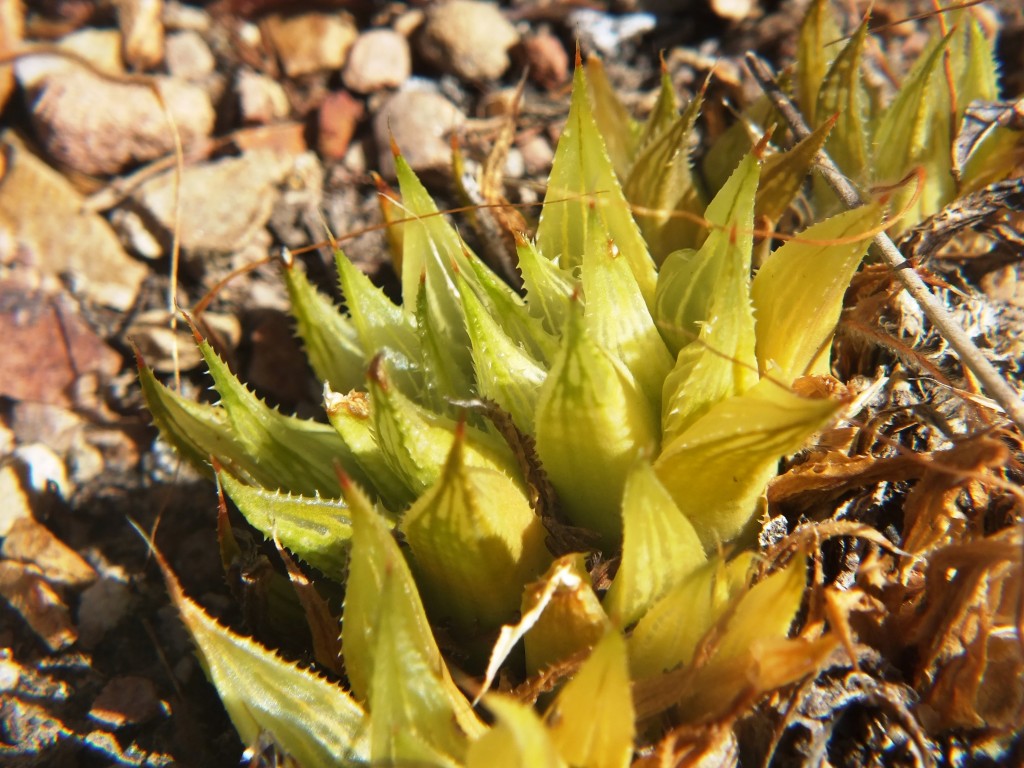
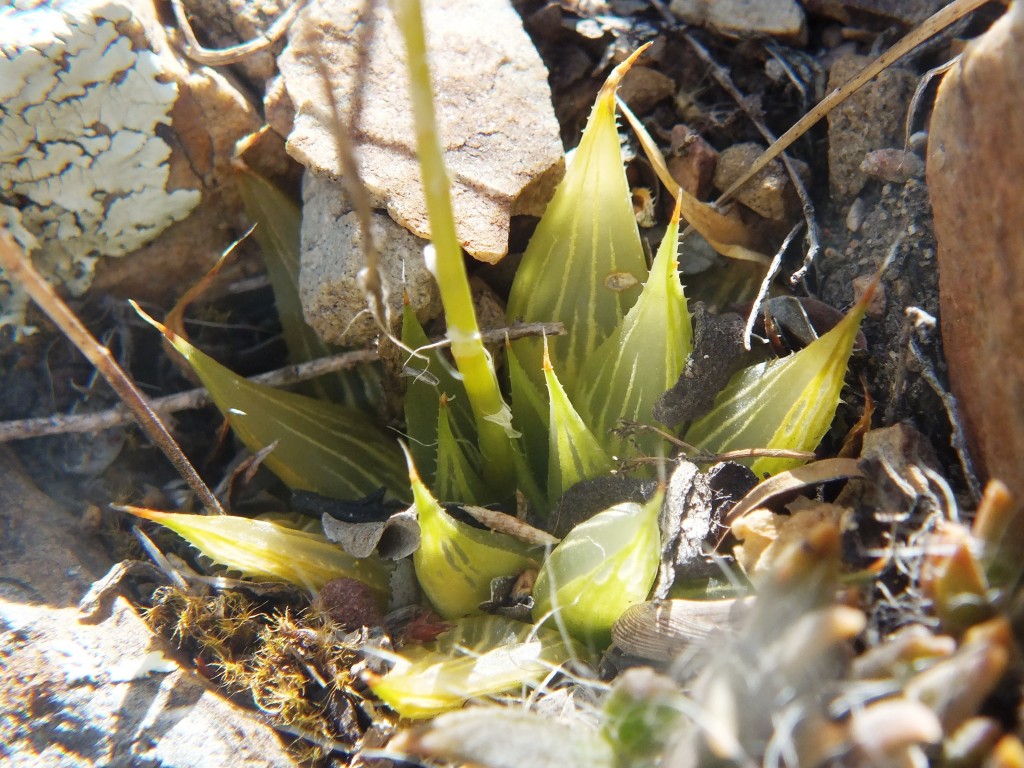
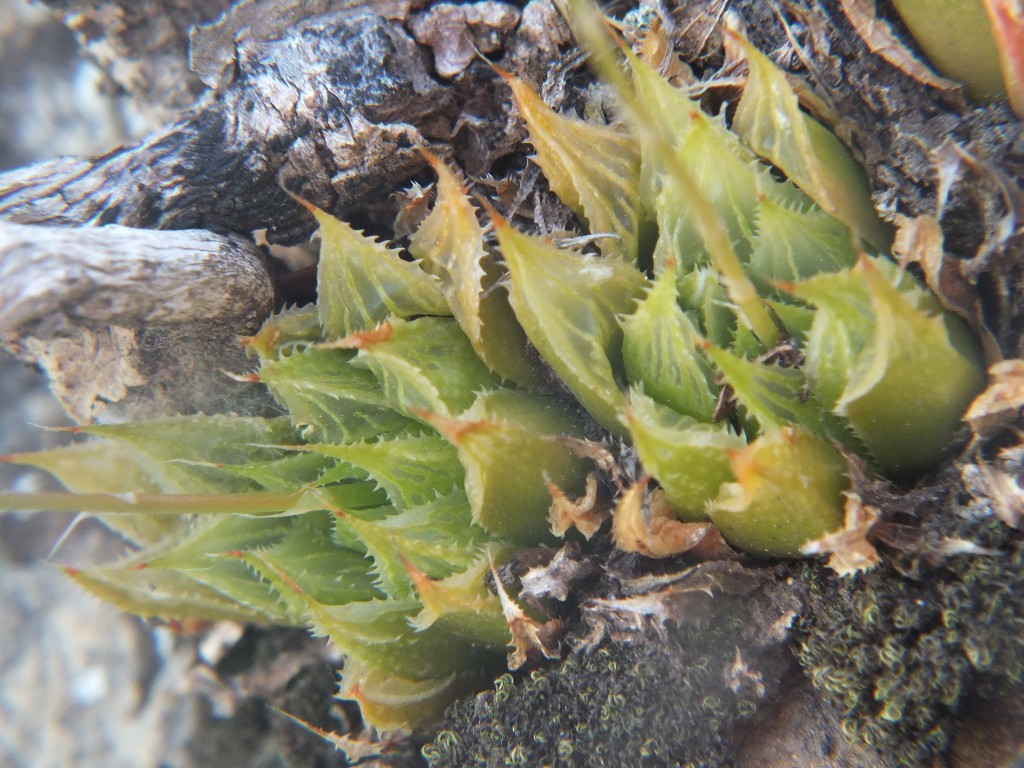
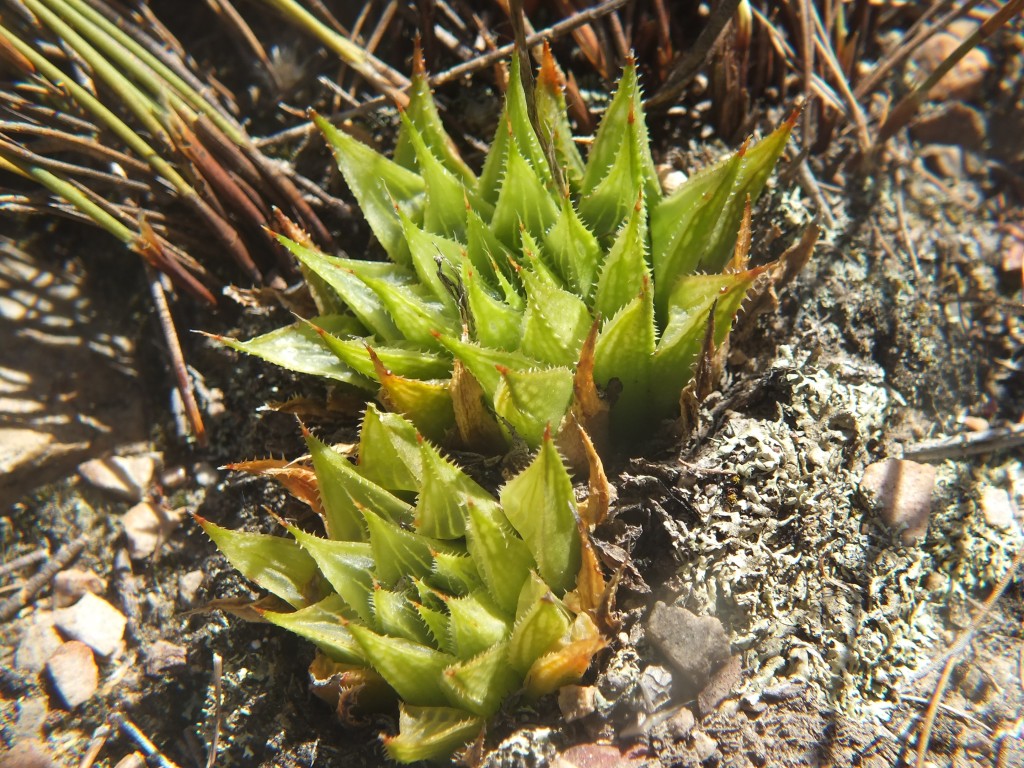
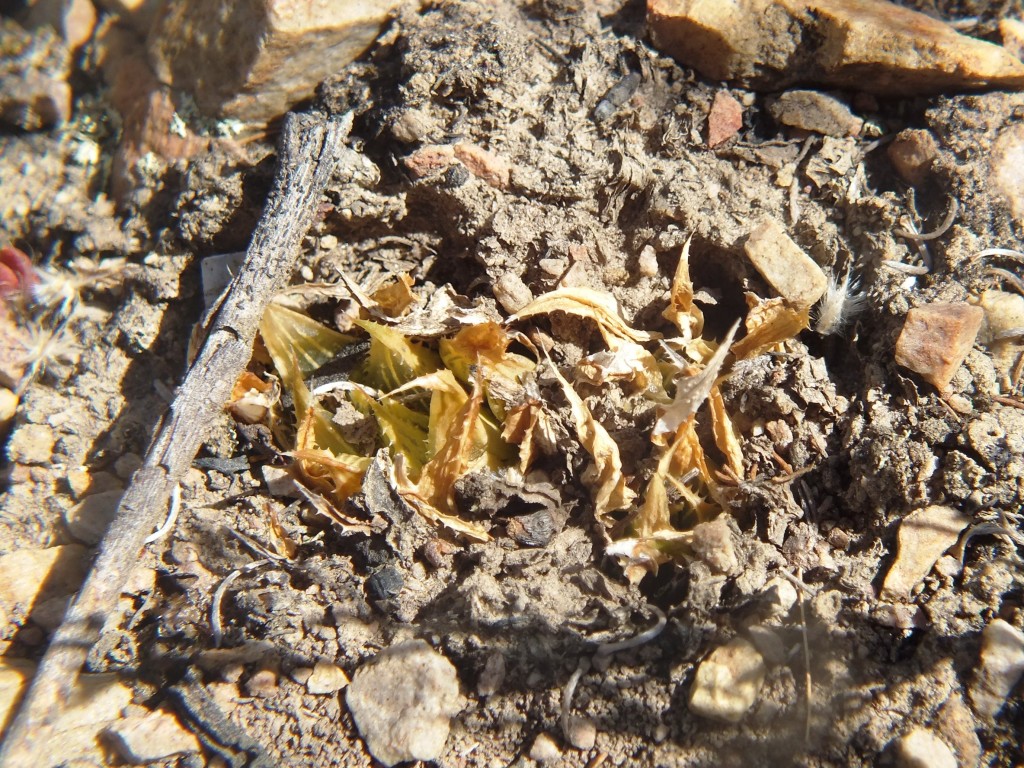
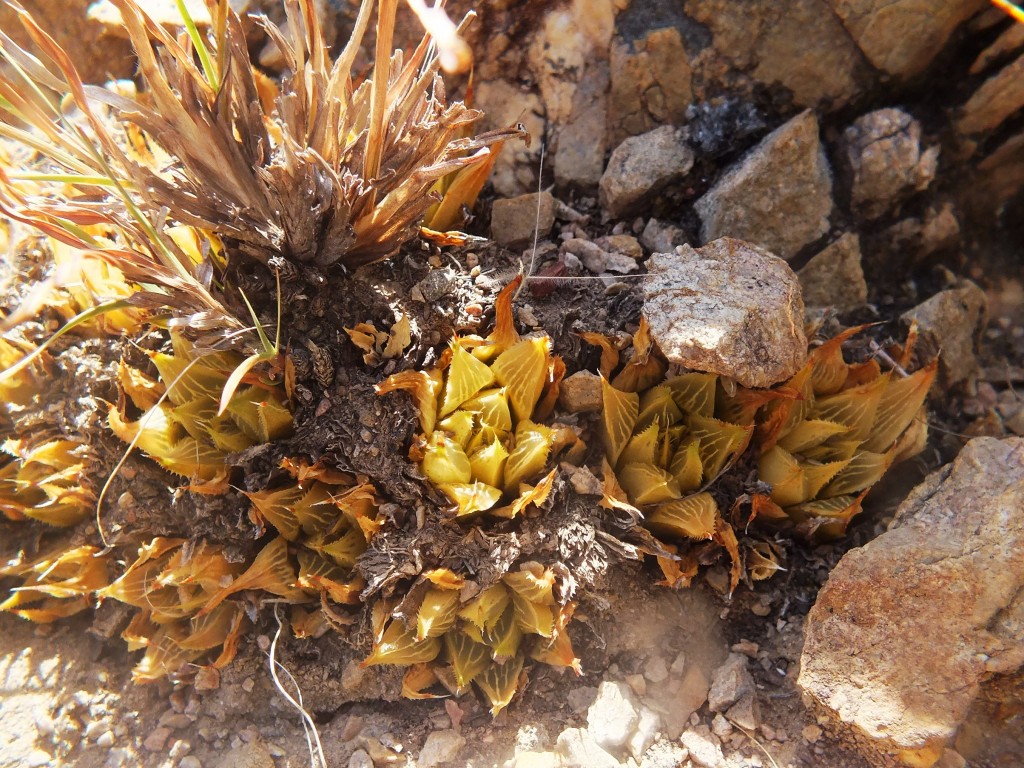
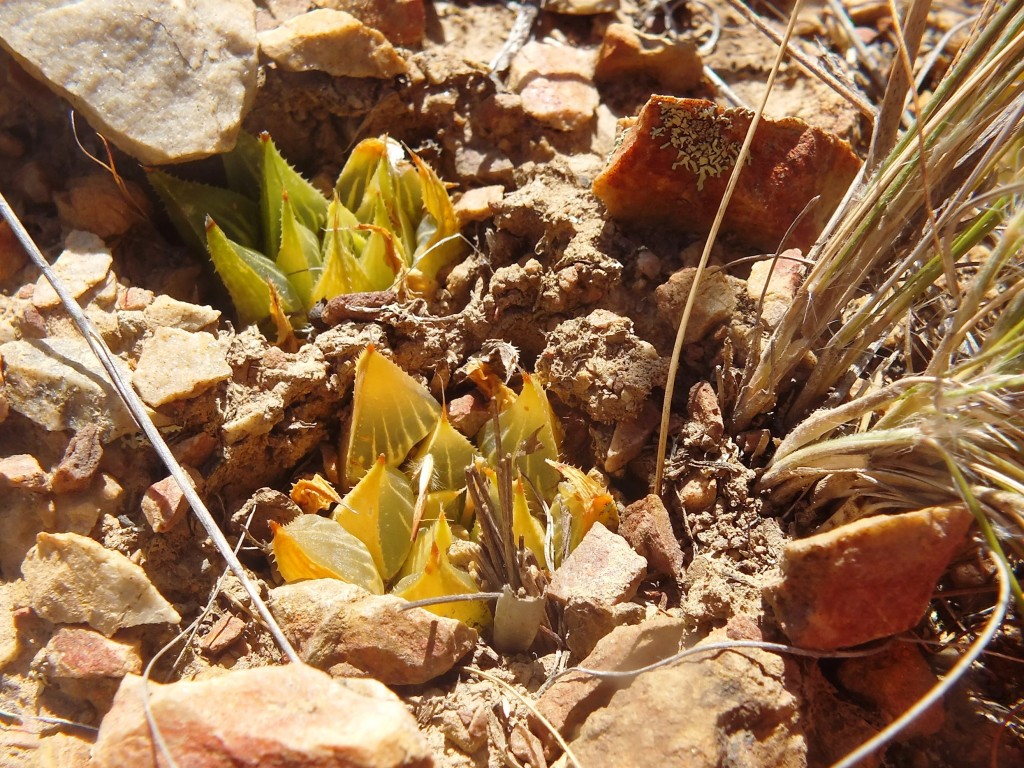
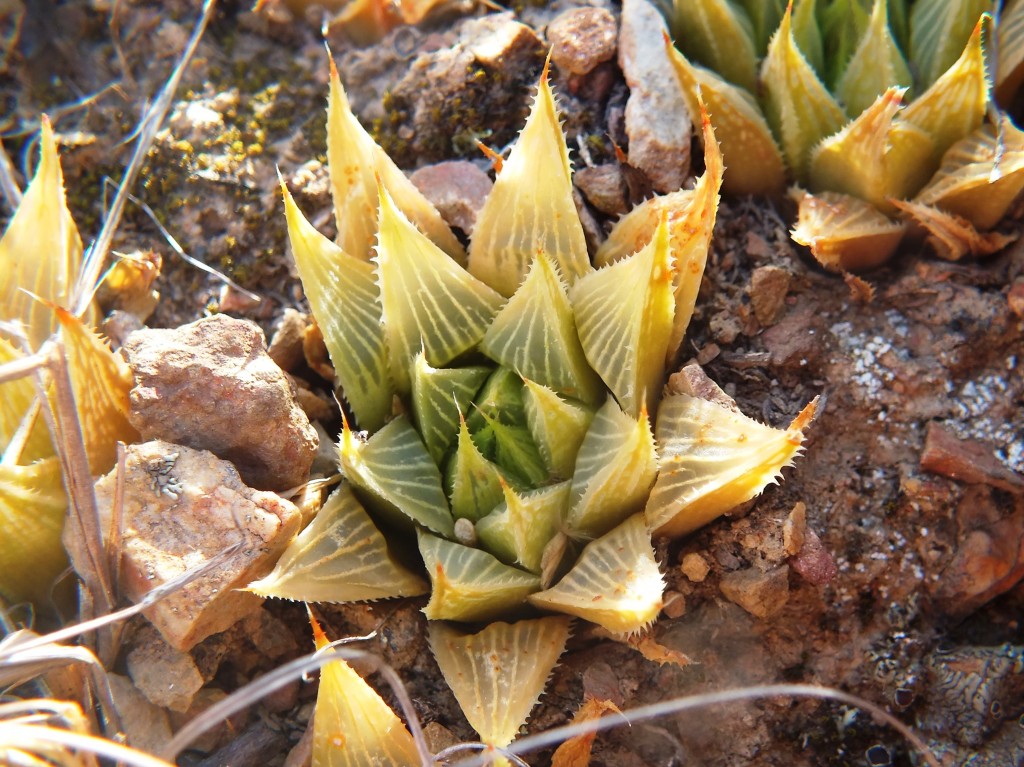
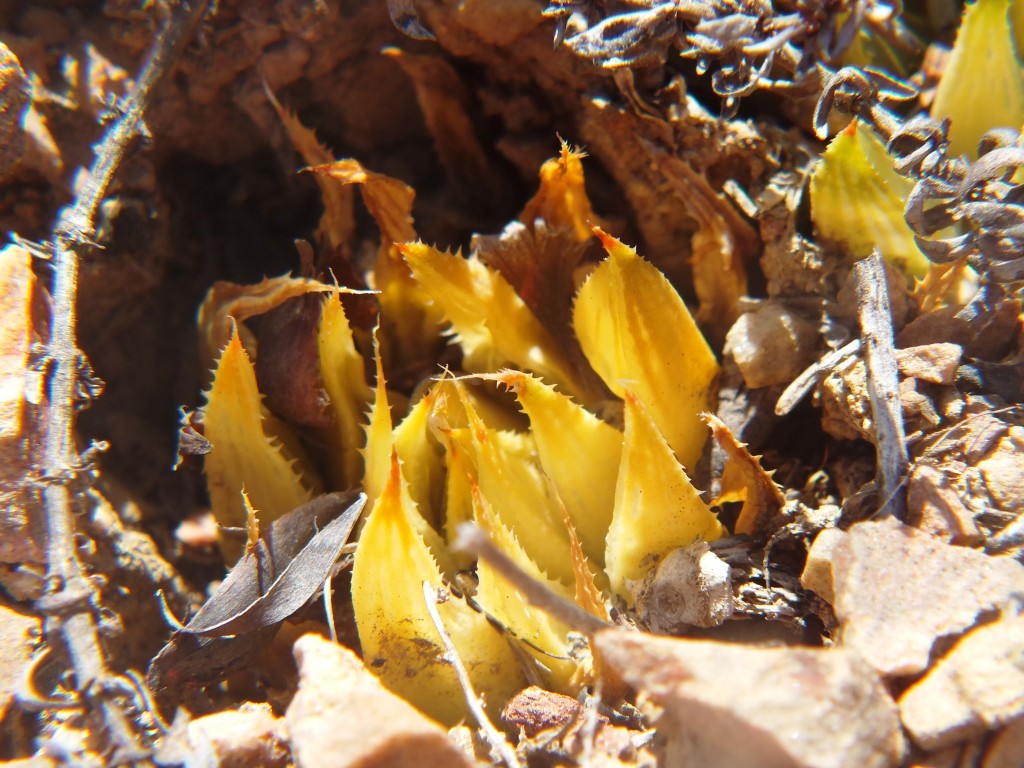

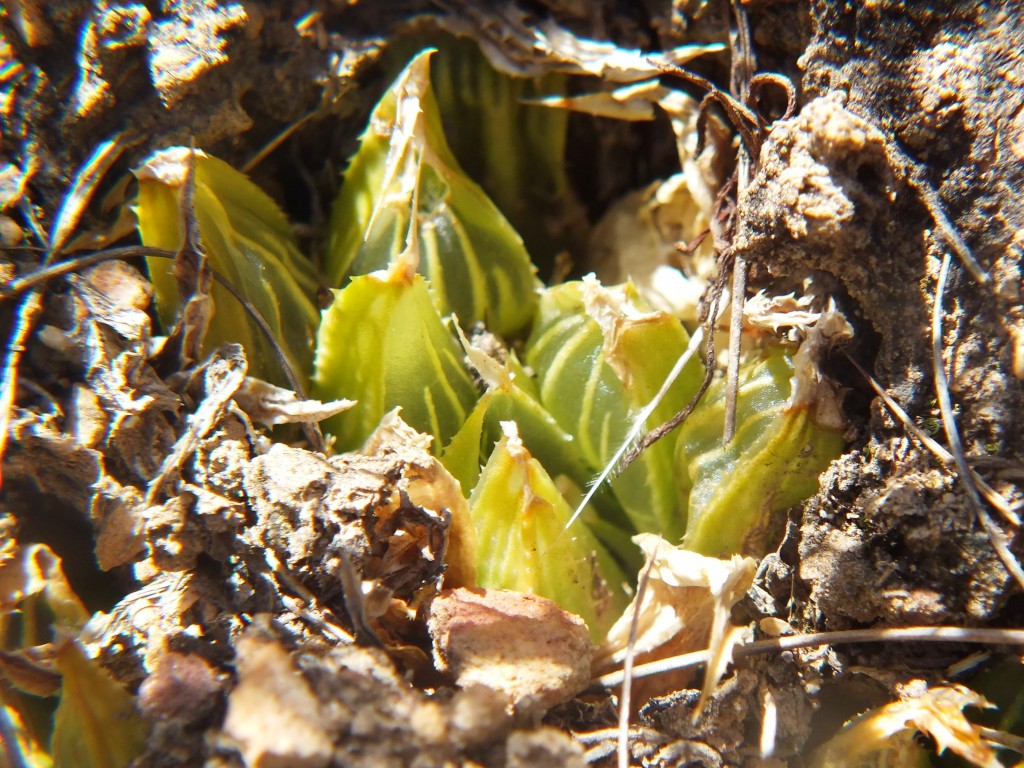
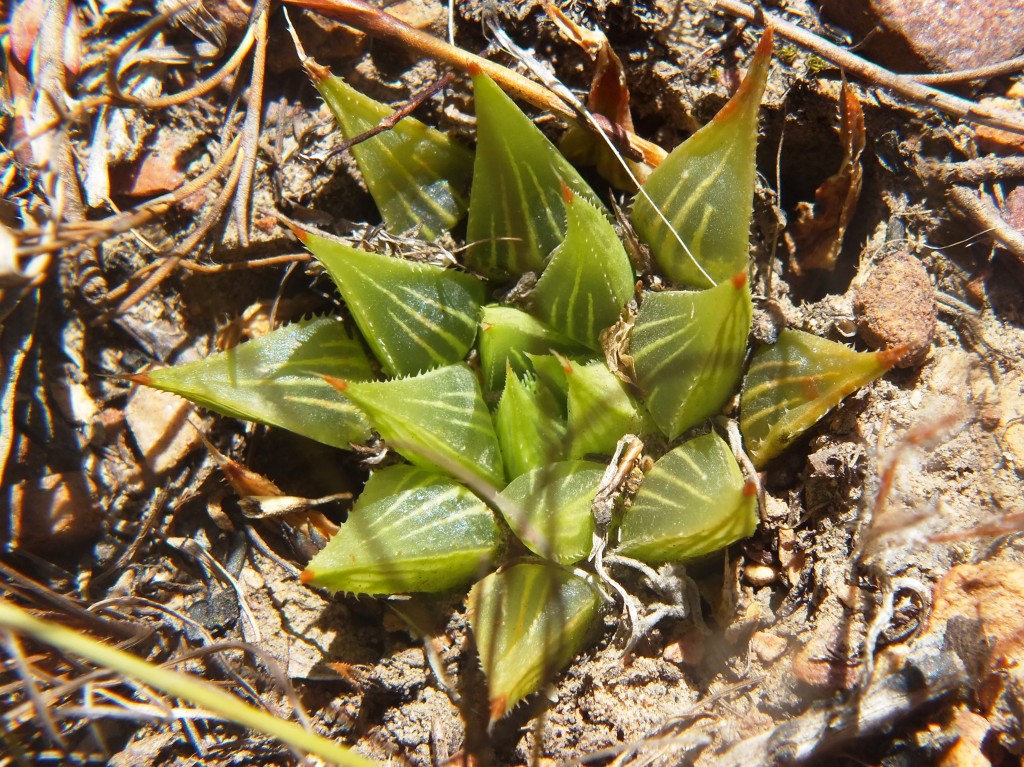
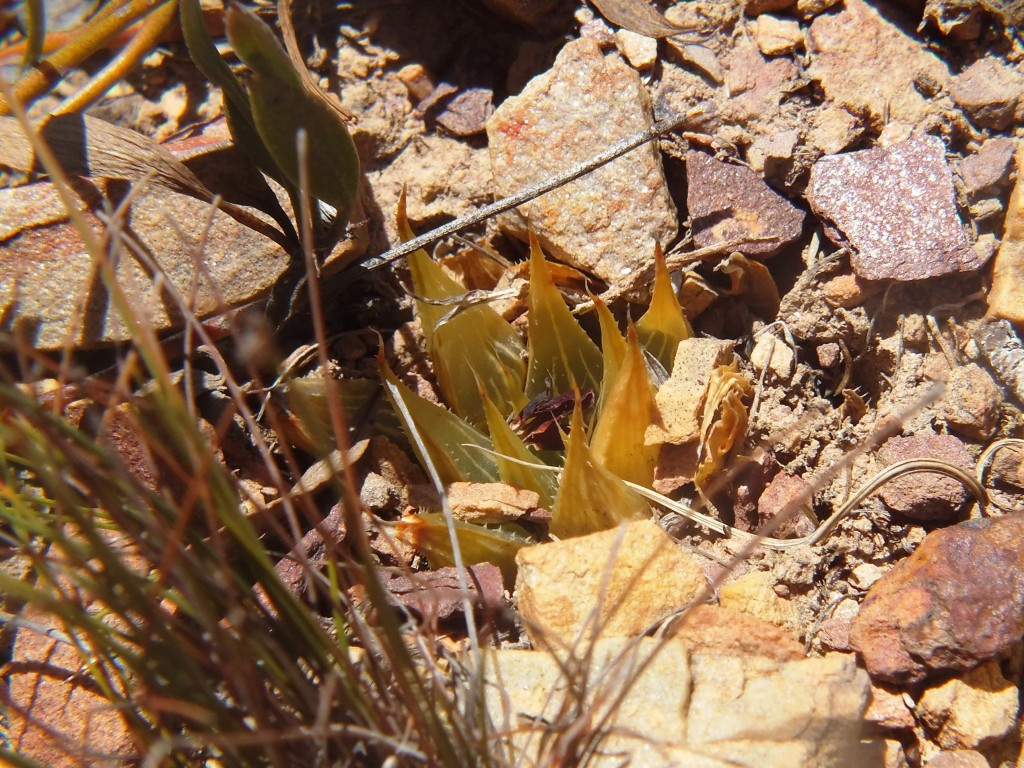
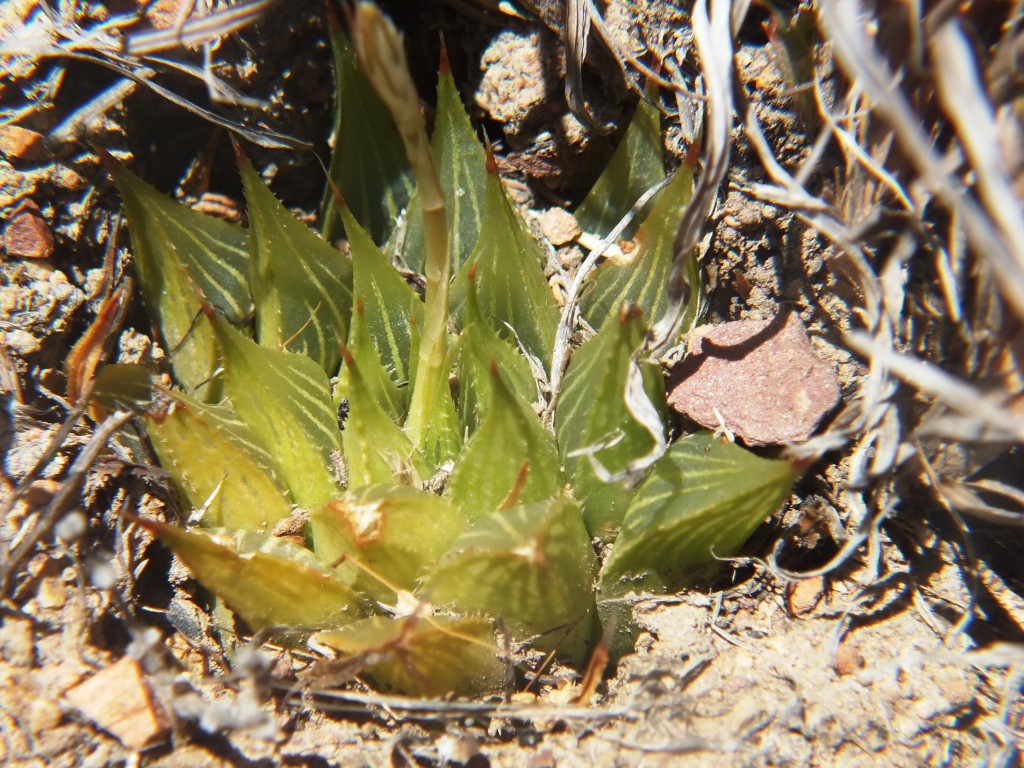
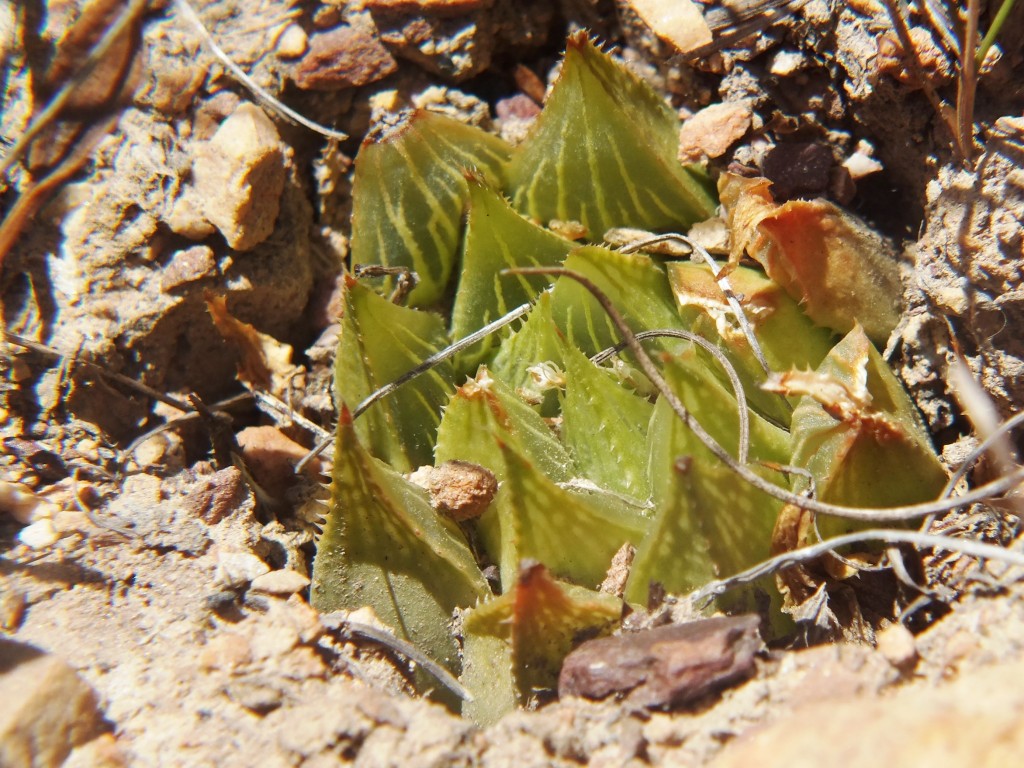
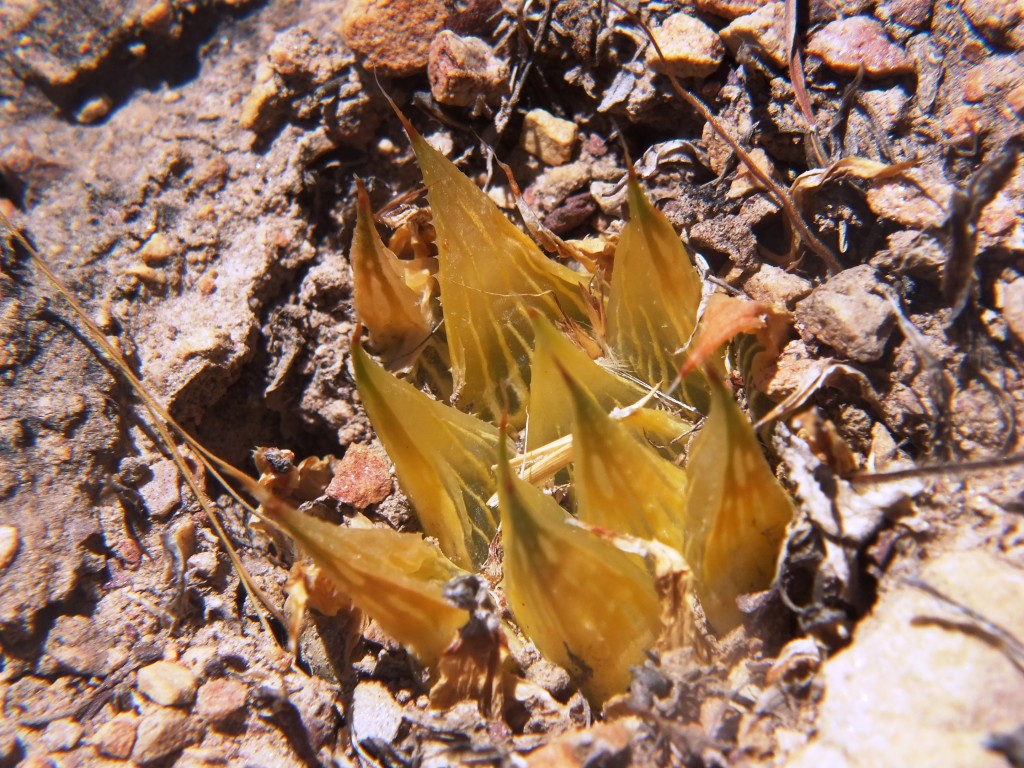
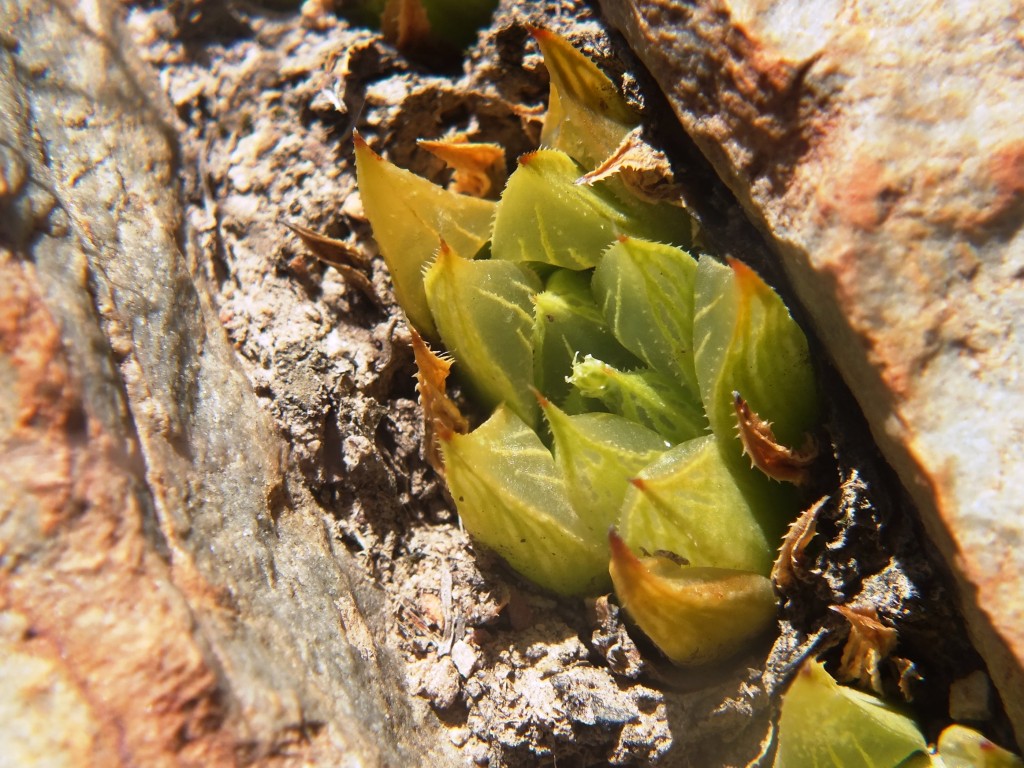
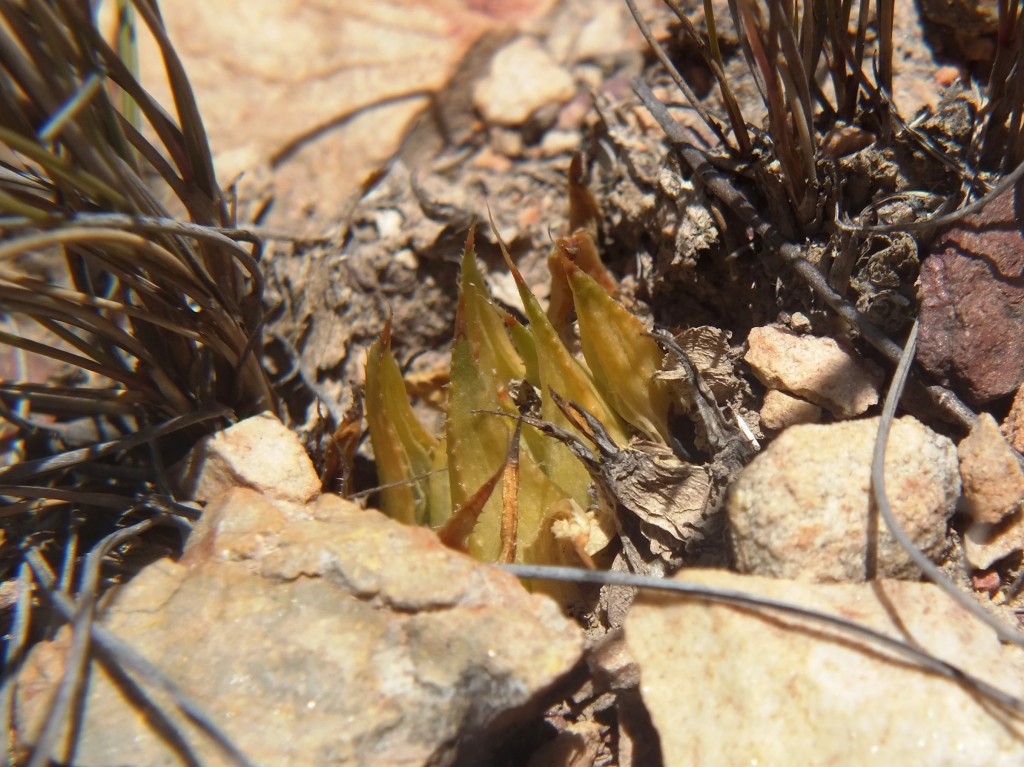
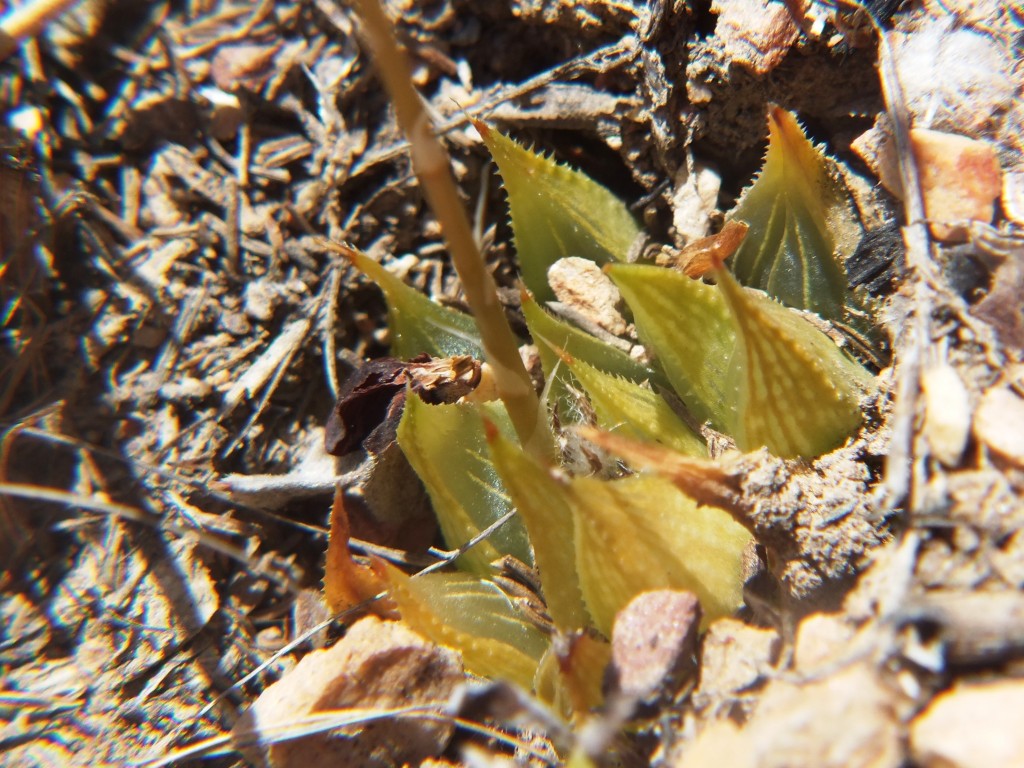
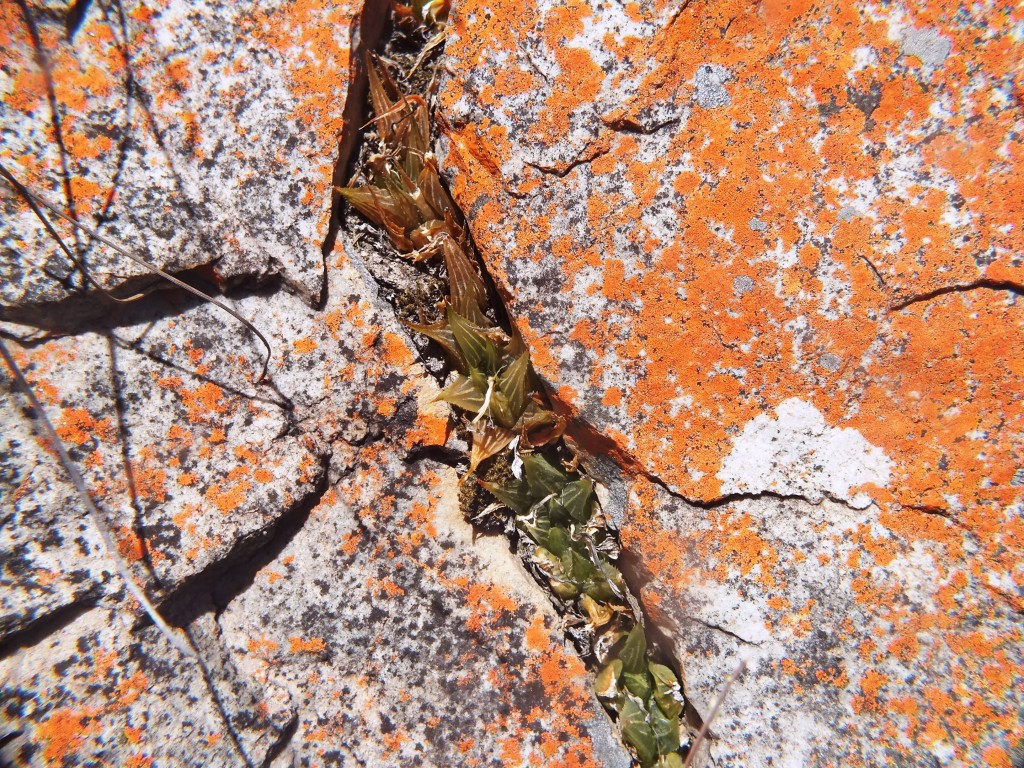
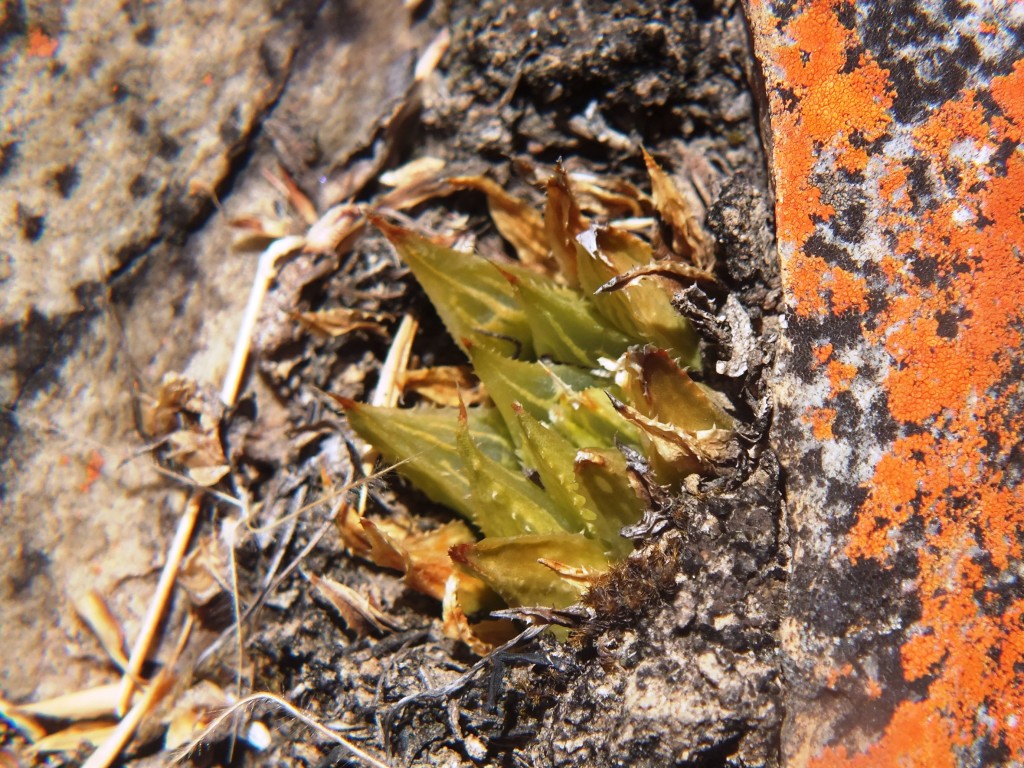
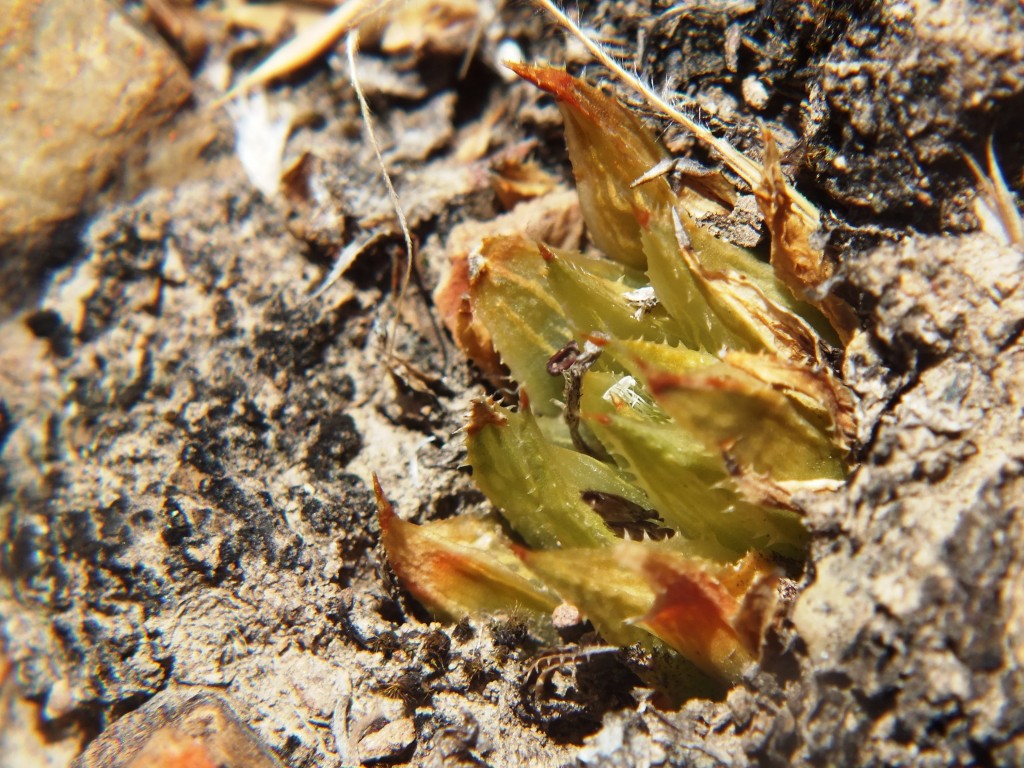


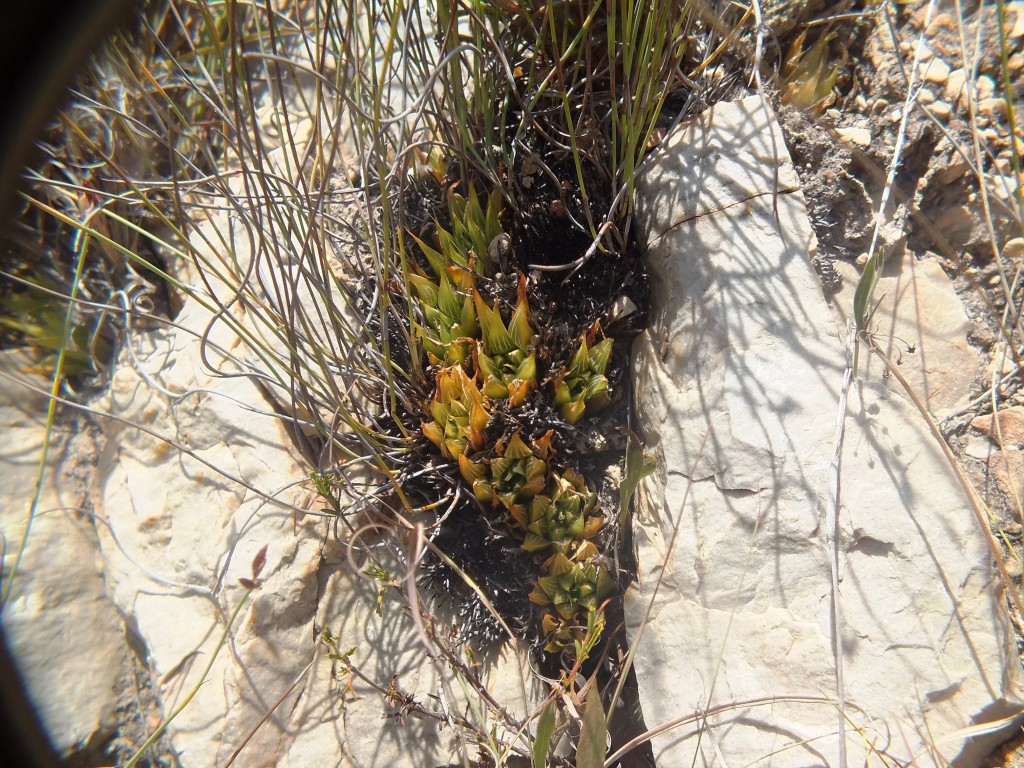
Flower profiles, faces, and buds
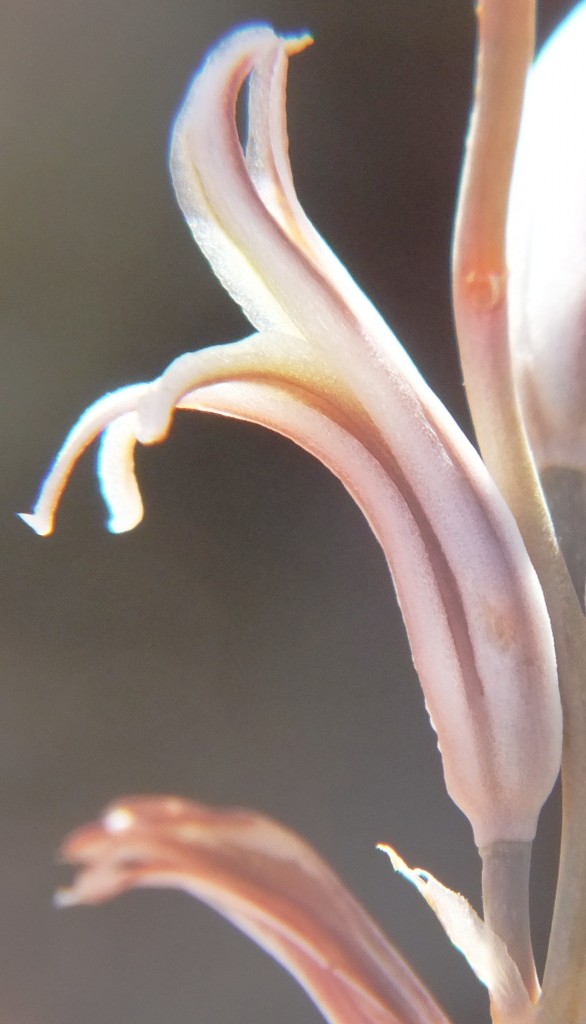

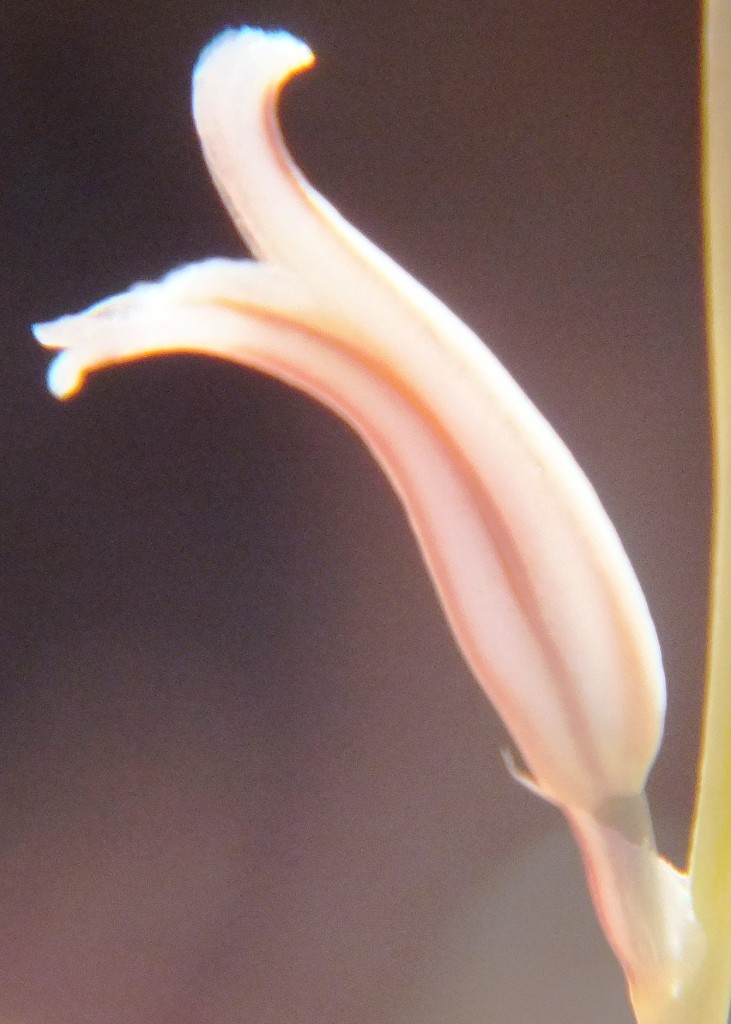

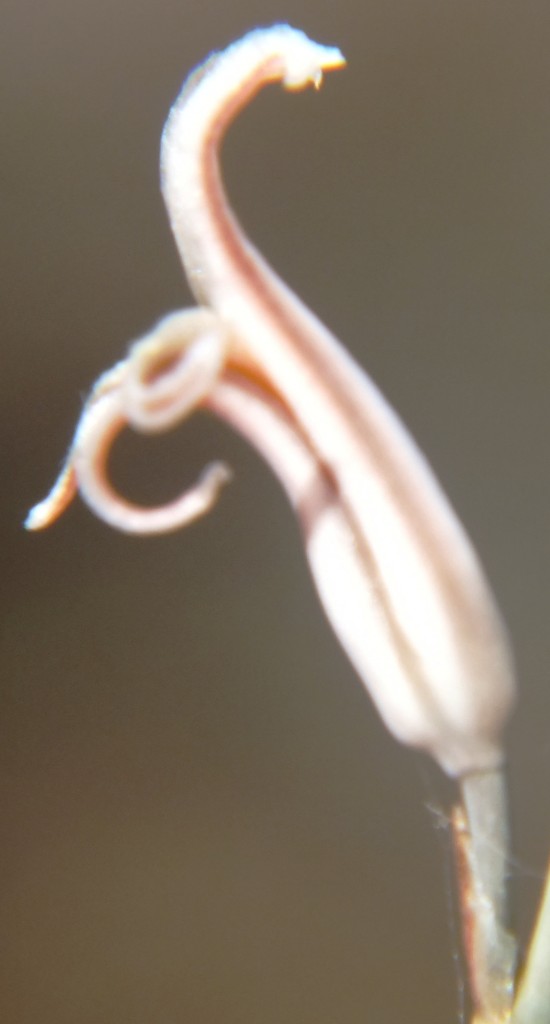
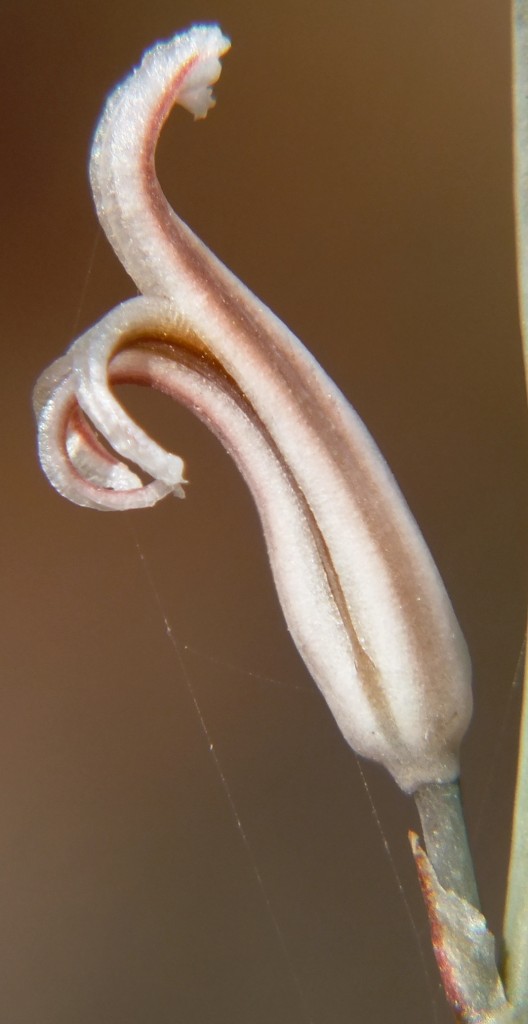
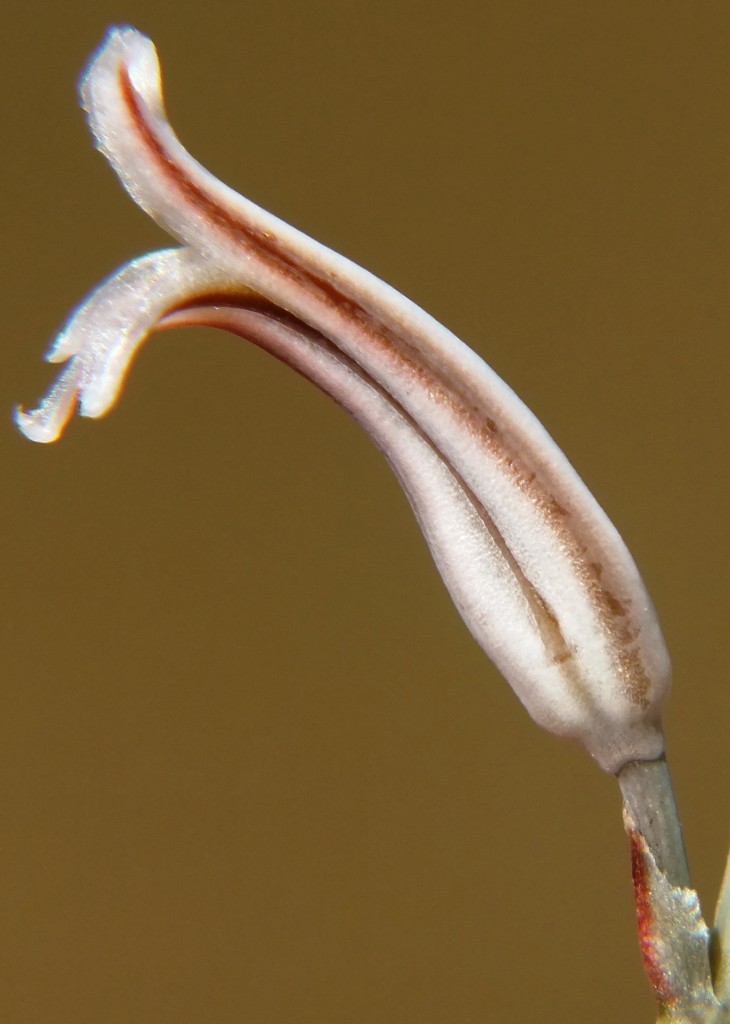
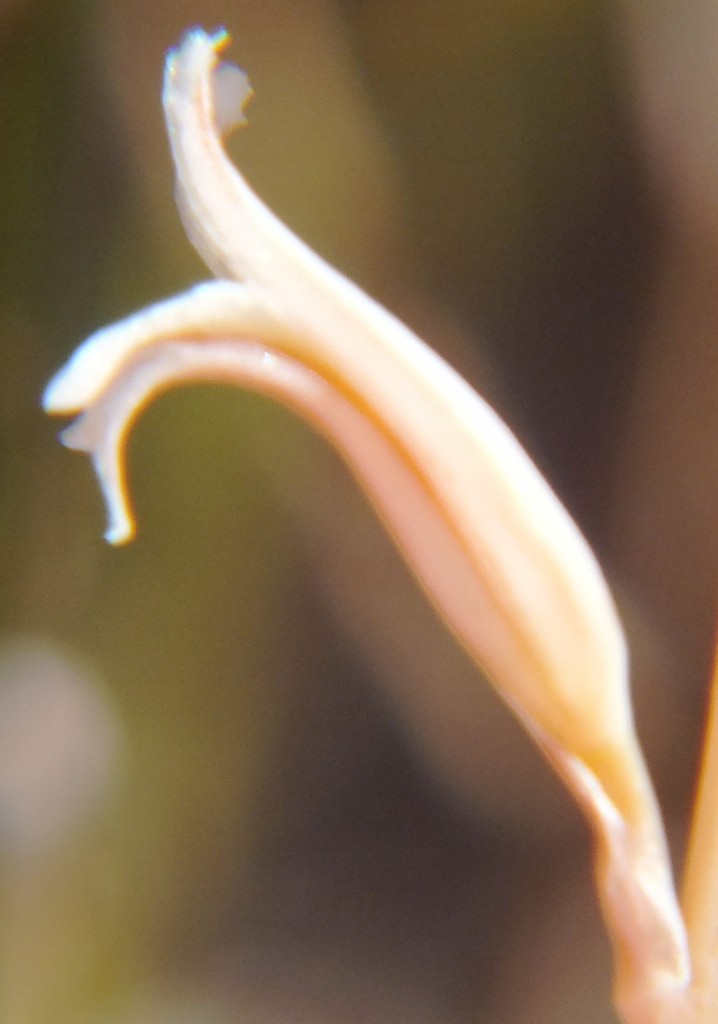
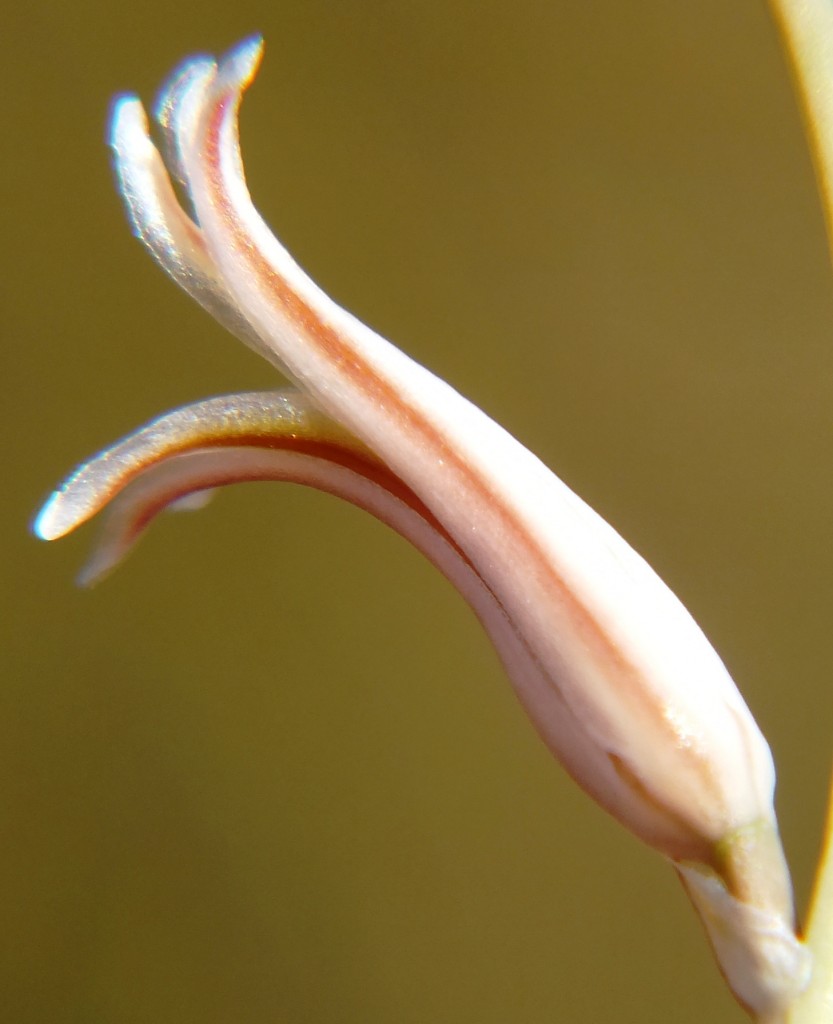
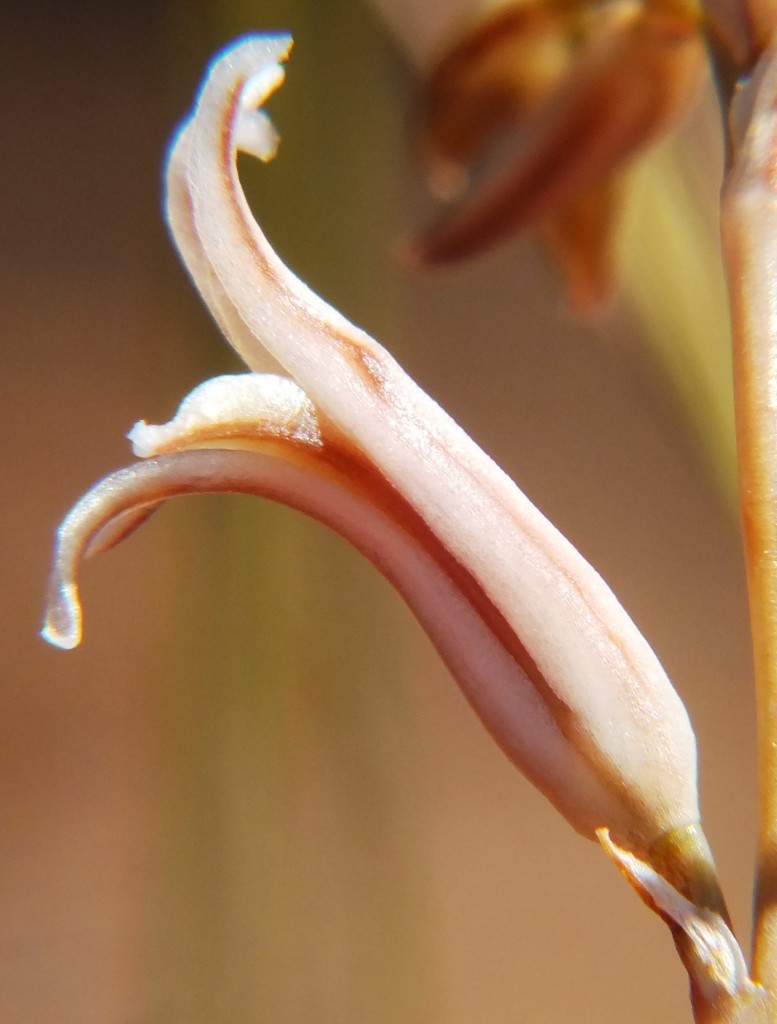
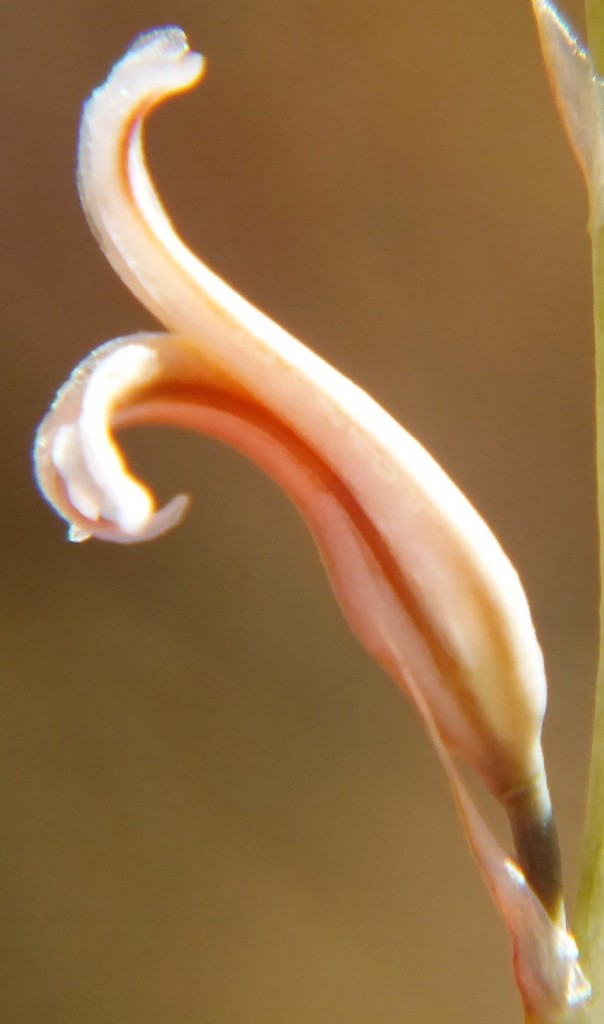
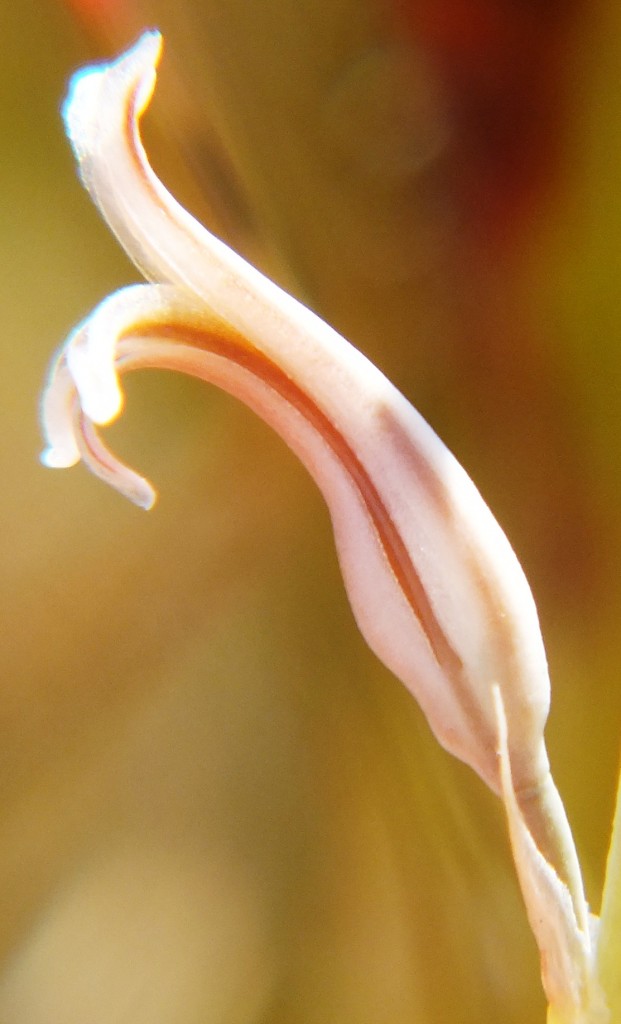

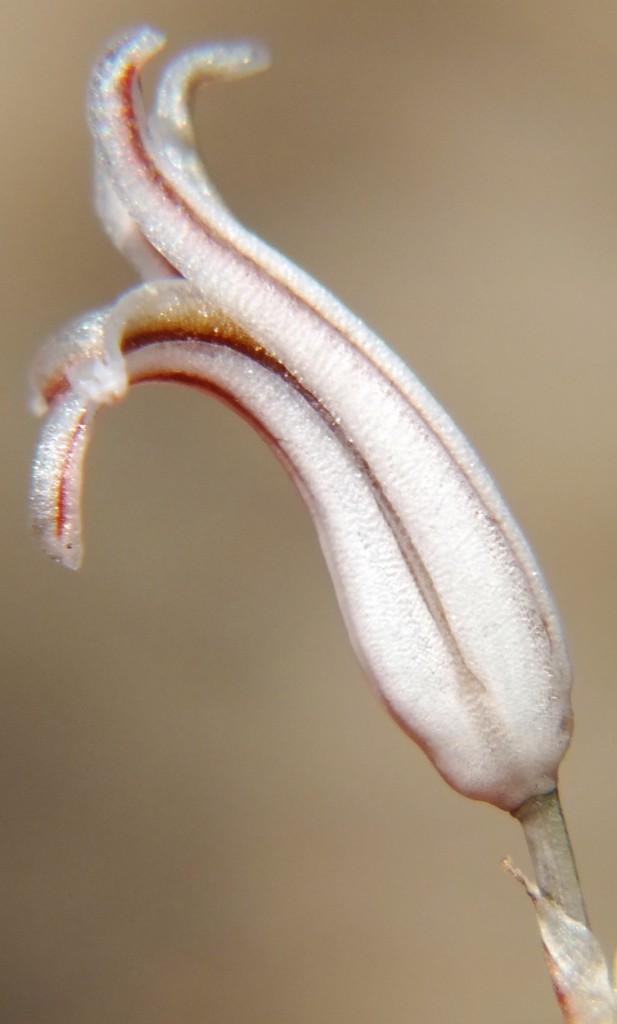
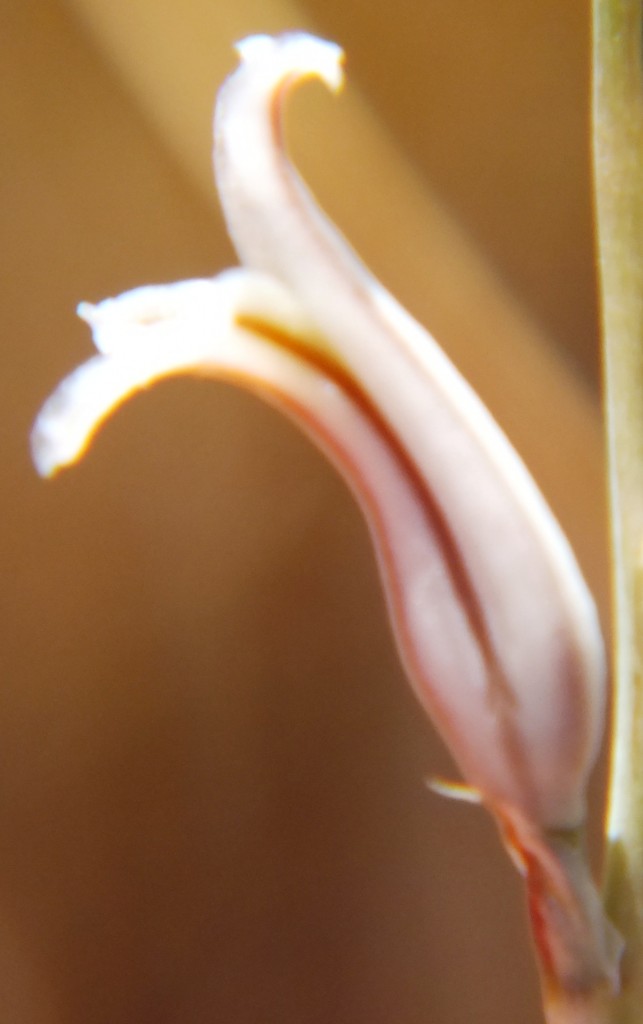
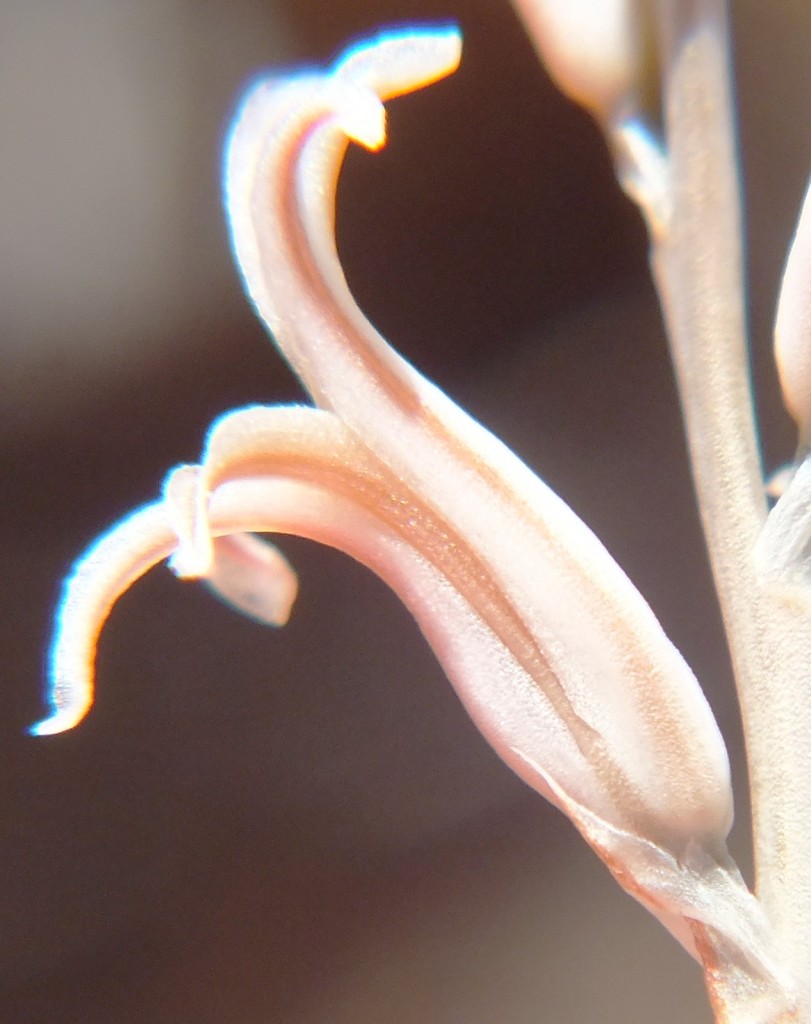
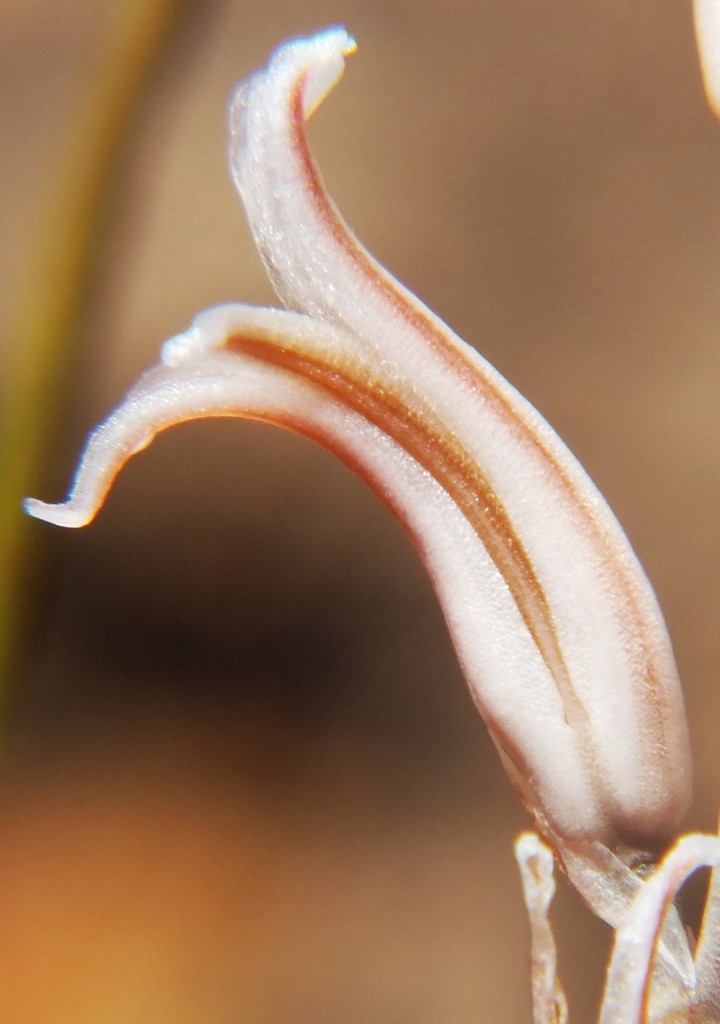
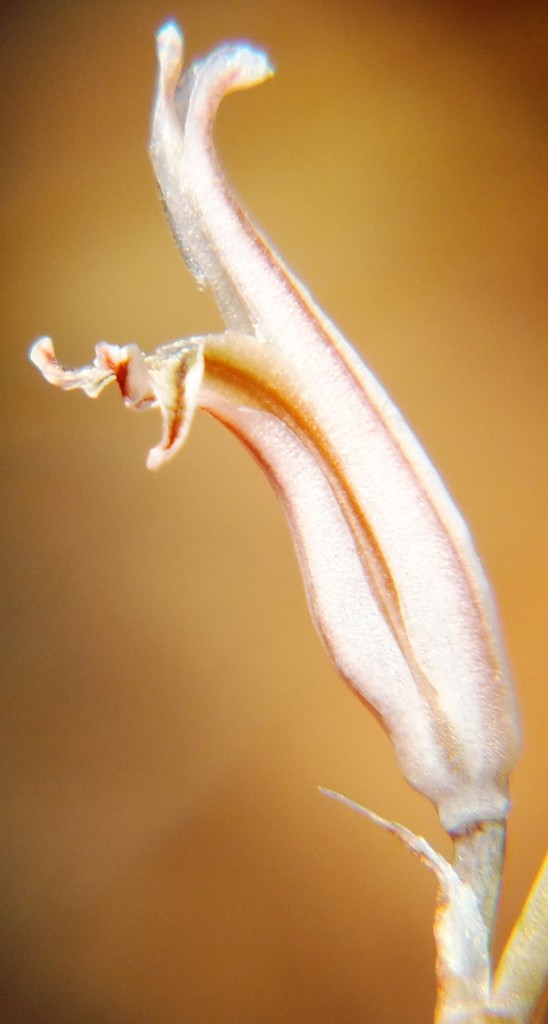
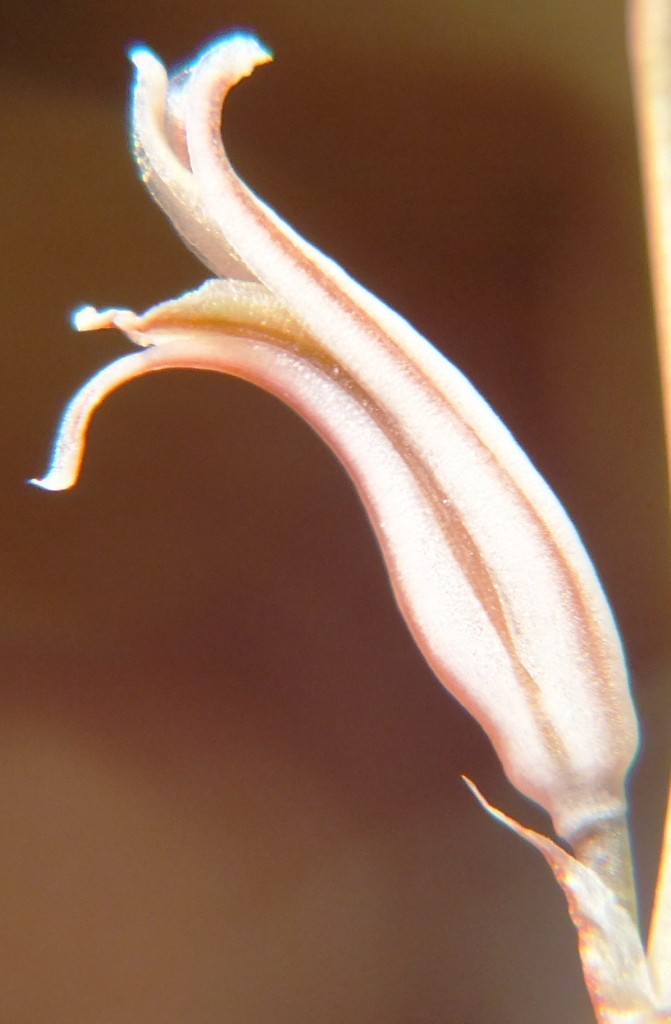
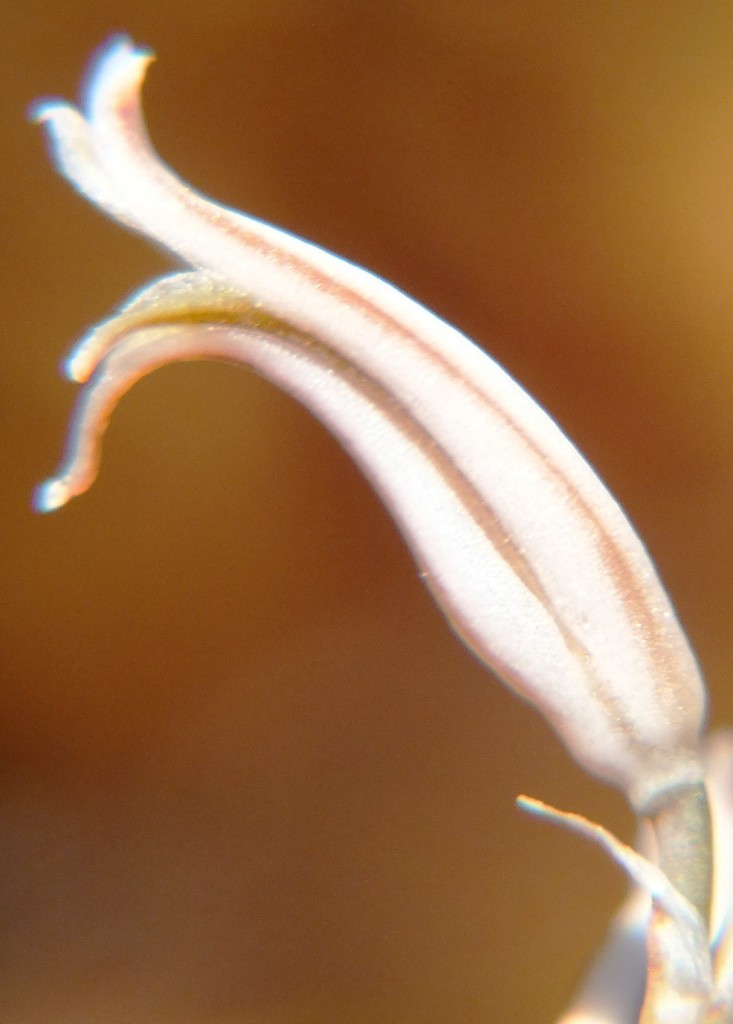
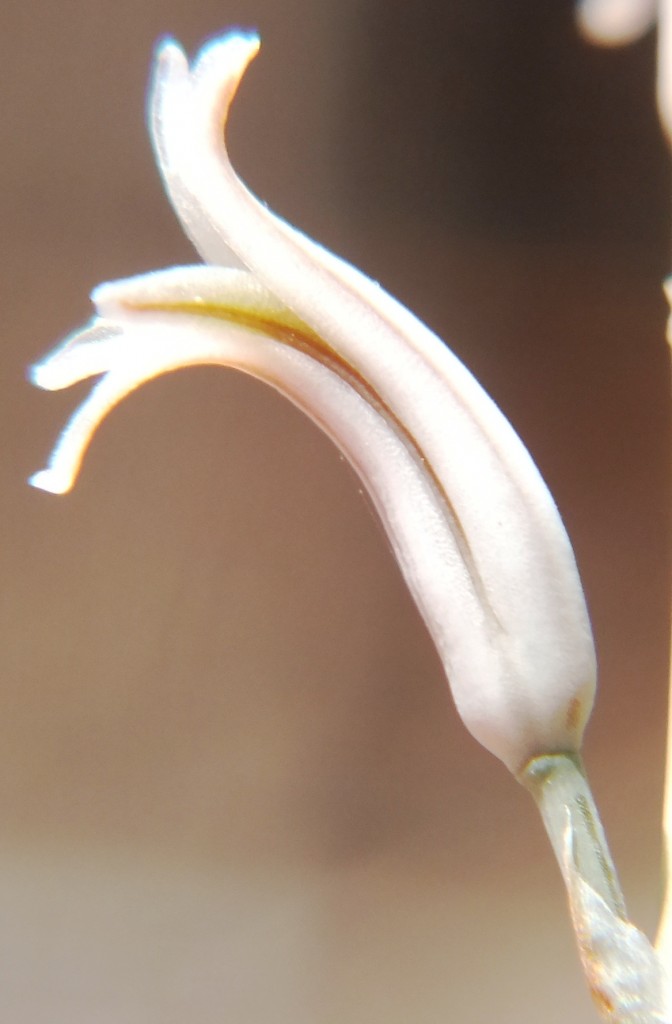
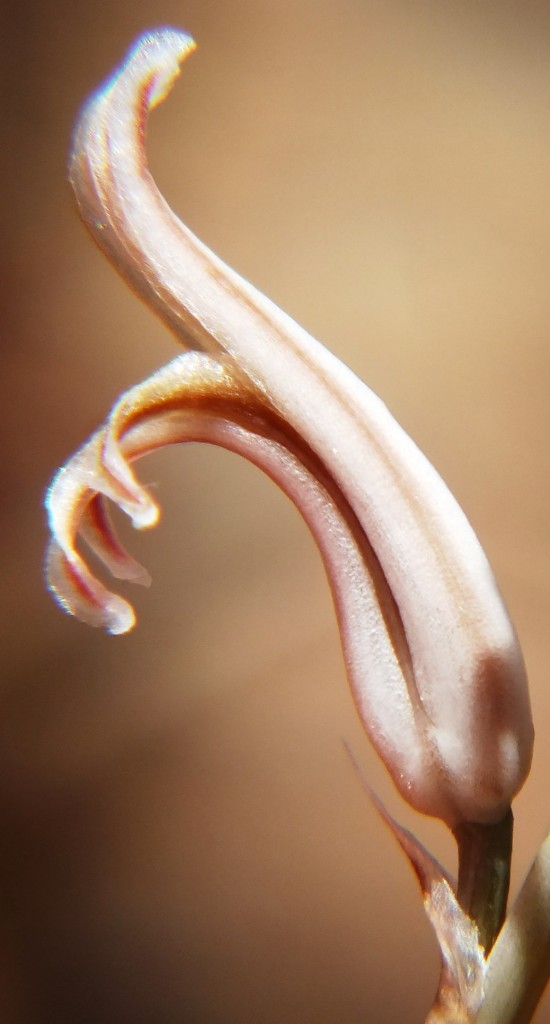
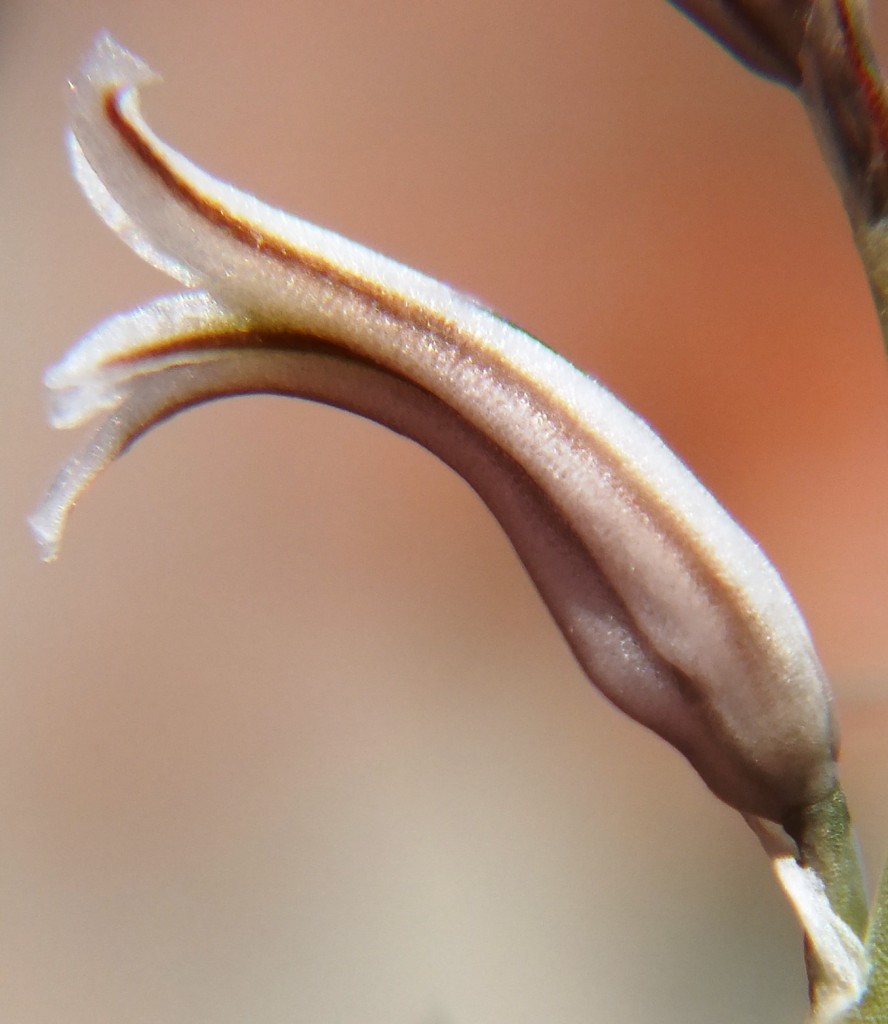
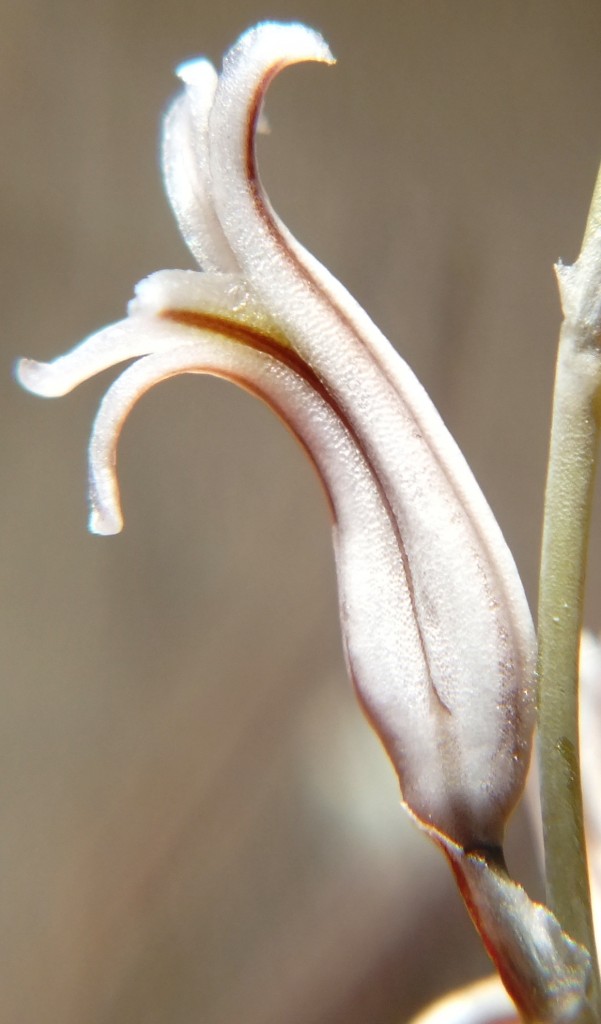
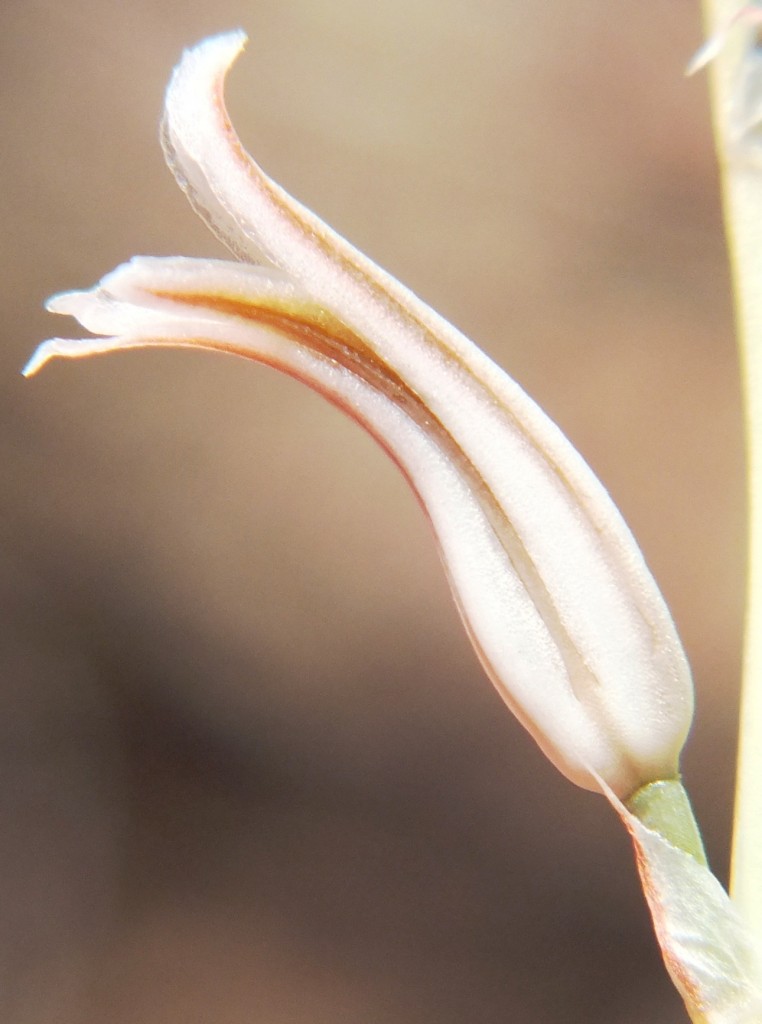
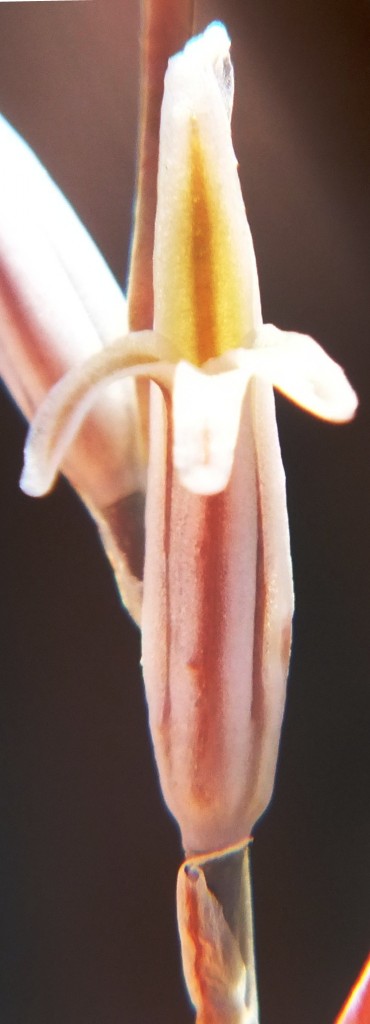



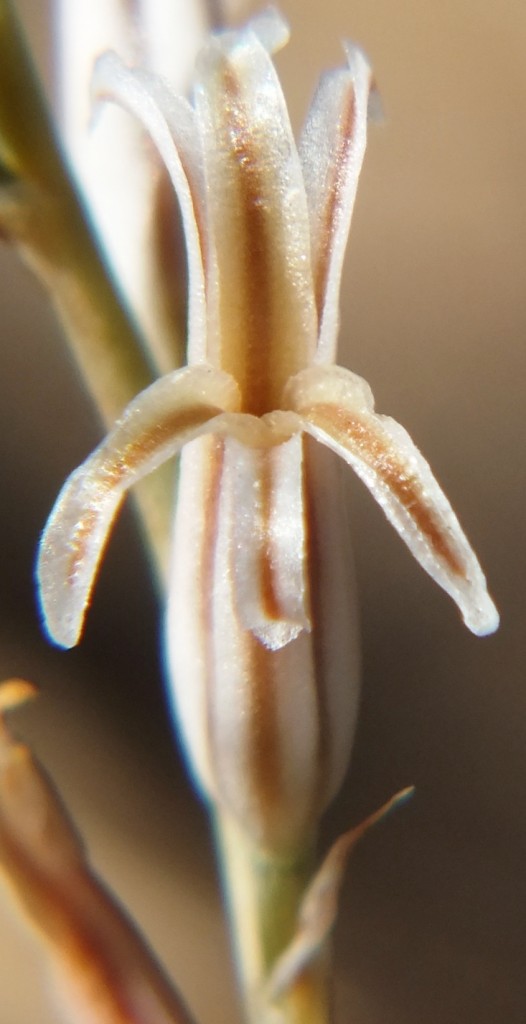
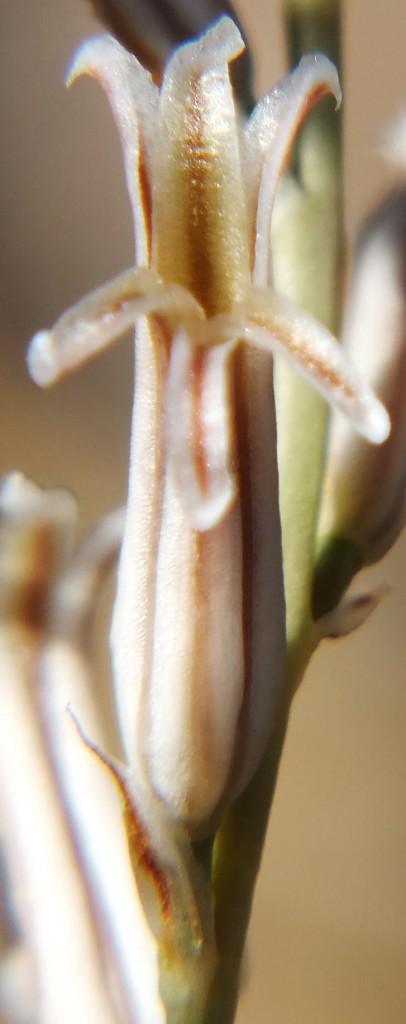
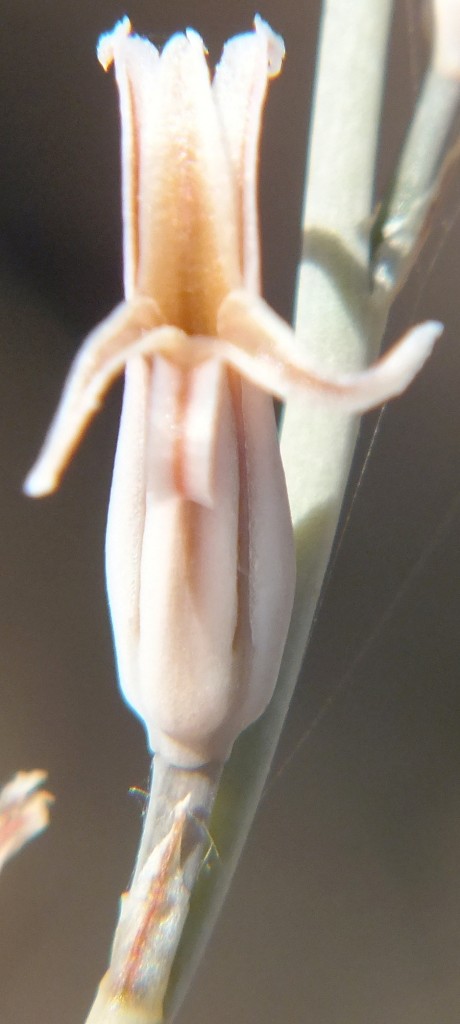




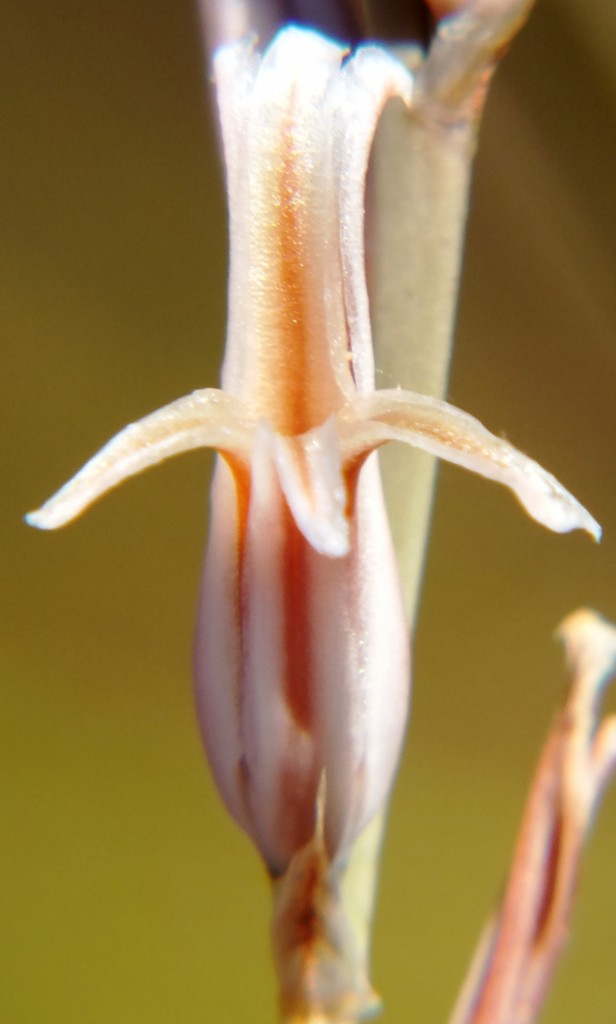
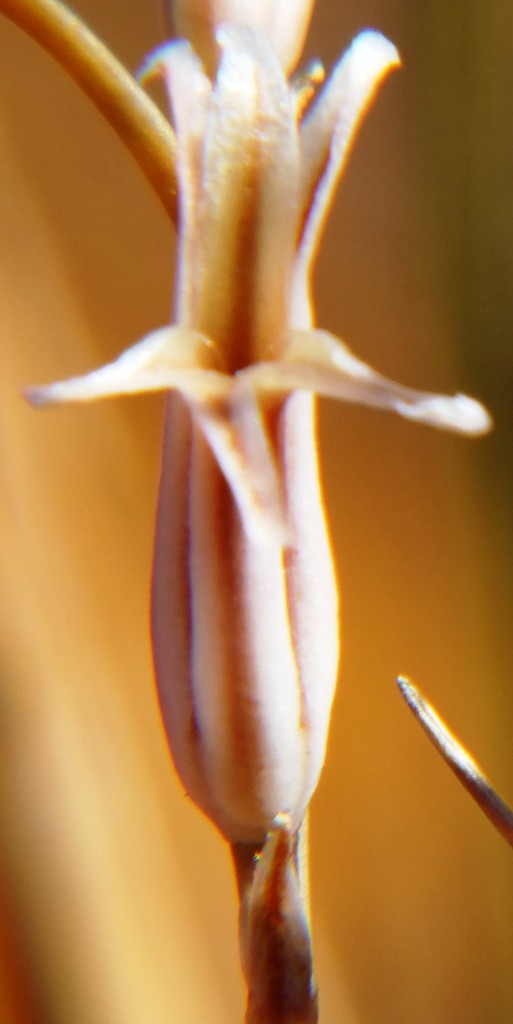
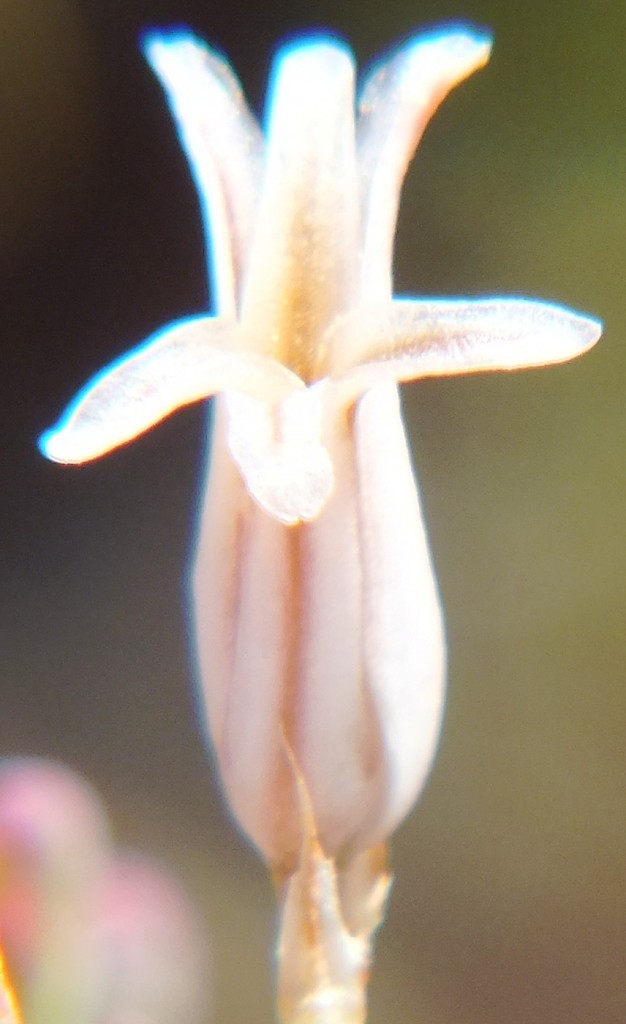
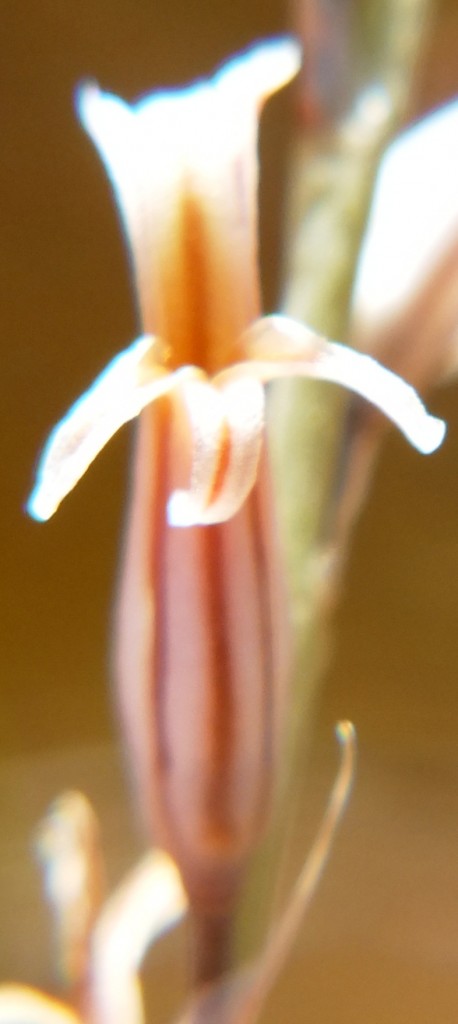
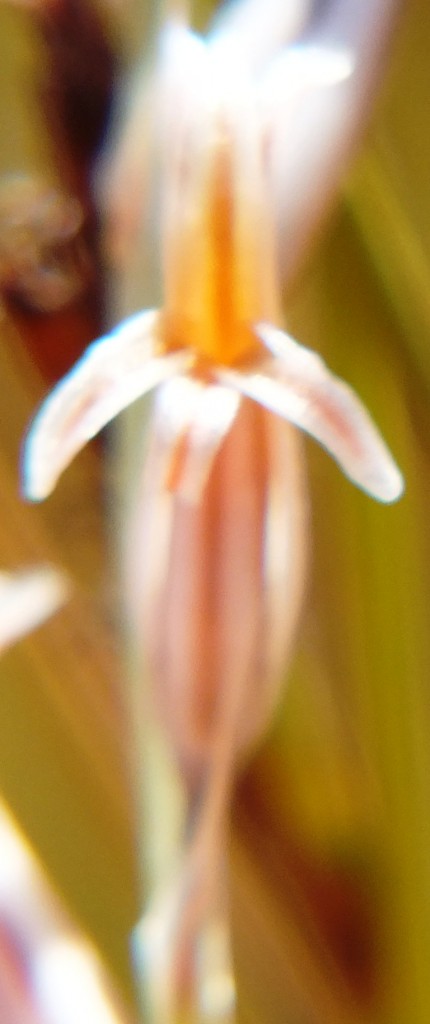
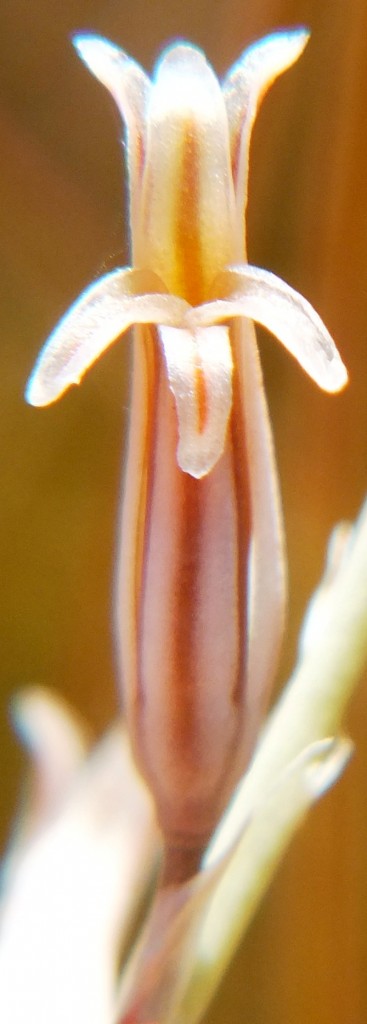
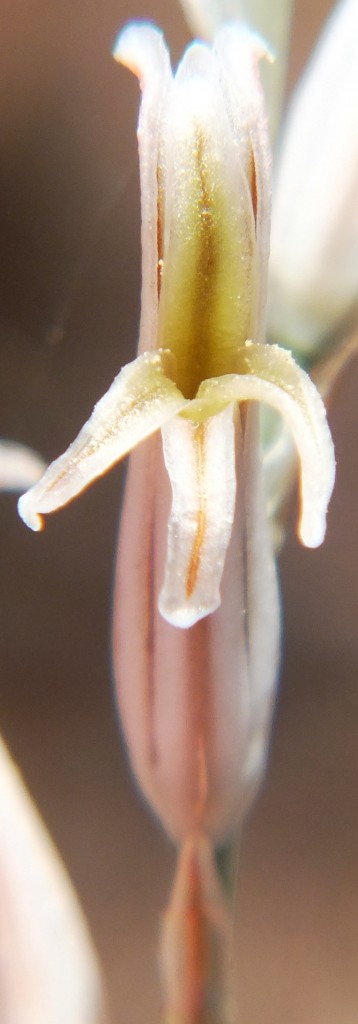
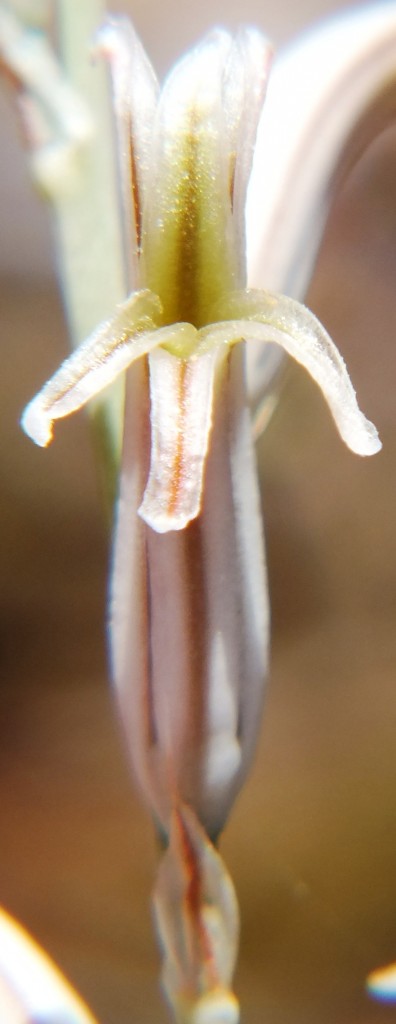
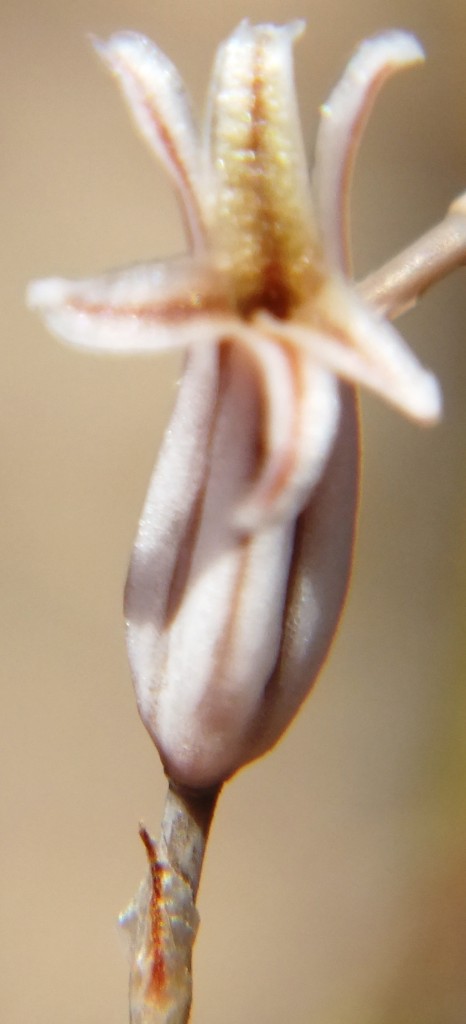
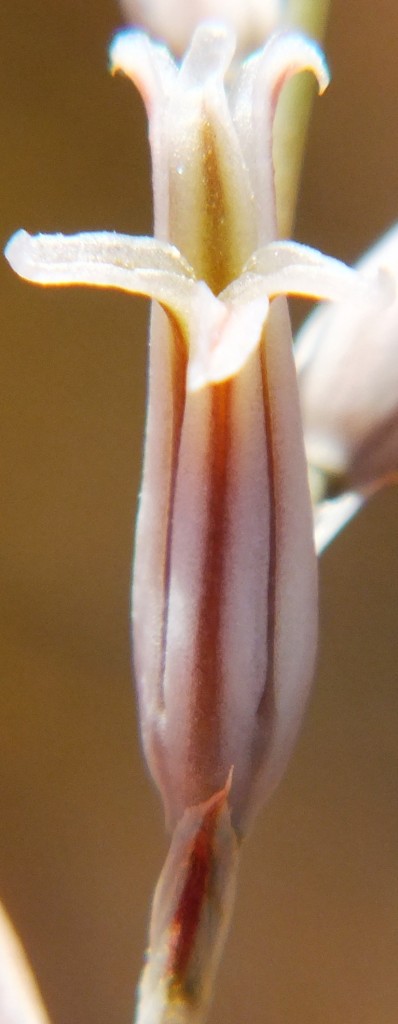

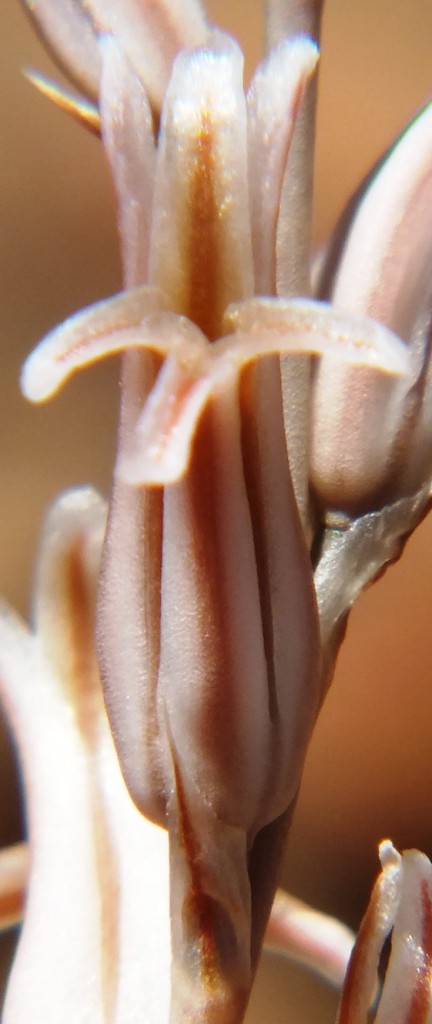





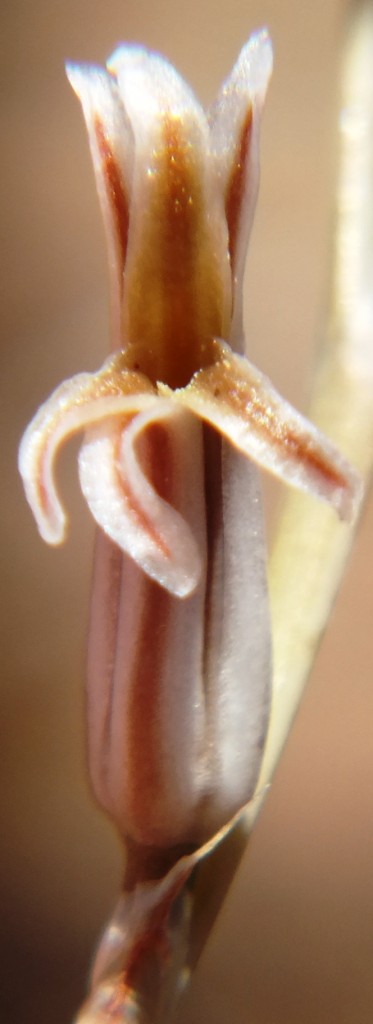

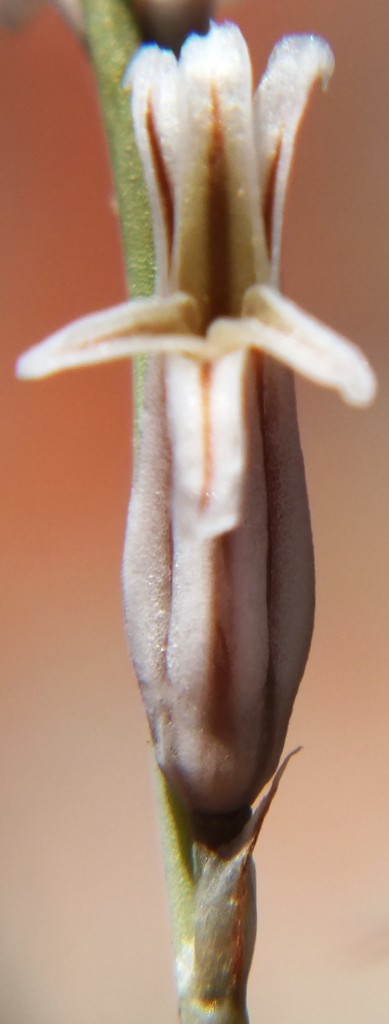

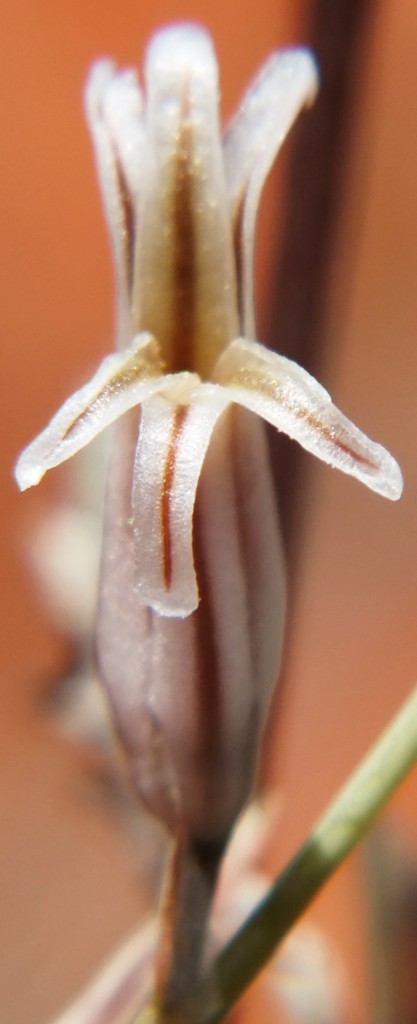
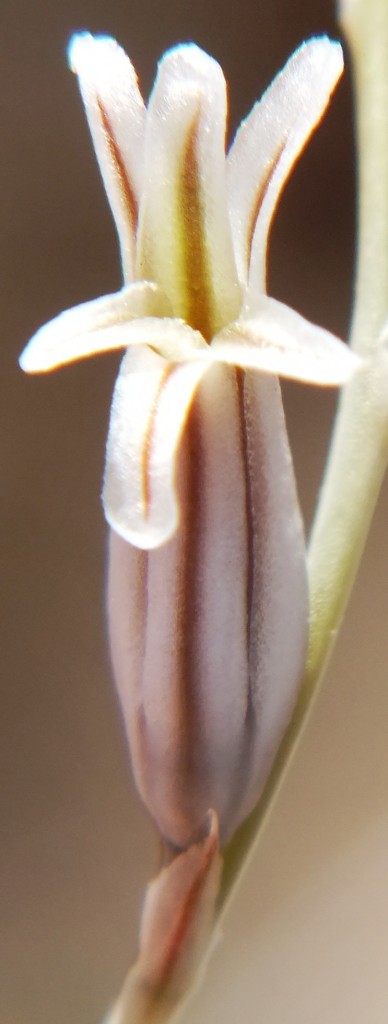

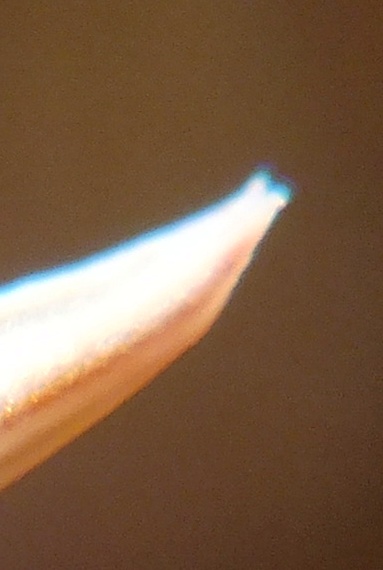



From Greyton we went to Schuitsberg driving further east than previously. This population seems to have led to the speculation that the type of H. mirabilis as illustrated in Botanical Magazine t1354 (1811) could have come from here. In a recent article in Alsterworthia, Gerhard Marx attempts to ridicule my typification of the name ‘mirabilis’. I frankly think this is much more a point scoring effort than a genuine attempt to arrive a taxonomic truth to which Marx claims to aspire. Apart from speculated similarities of some or other clone to that picture, is the fact that this is an old transport route dating to that era. There is a plaque at that site dated 1988 commemorating a 300year history. The problem for me is the variation among the plants that renders the nomenclatural system and the typological approach to naming dismally doubtful. There is just no Haworthia mirabilis var. mirabilis.
Schuitsberg is the origin of H. emelyae var. beukmannii von Poellnitz .I associate that name and description with an exceptional robust, compact and retused version of H. mirabilis (a version with much longer erect leaves with spined margins viz var. rubrodentata {red teeth} was named from further west along the river). I visited Schuitsberg and adjacent farm Nethercourt in the early 1970s. The plants I saw were indeed robust. However I visited there again 2012 and found the place previously visited destroyed and no plants among the many in the adjoining rocky slopes that resembled what I perceived to be ‘beukmanii’. This is repeated in my experience of this second locality on Schuitsberg east (MBB8041) of where I knew the plants. One can refer to the many variants illustrated with this article. Are these all individually or collectively closer to any early illustration on which the name ‘mirabilis’ can be based? It was only a single large very robust plant with leaves nearly 30mm wide and 20mm think that I would have said also agrees with the original acceptance of the “element”. So what can we say here of all these variants? This is a fact of the retusoid species and close relatives. They are simply highly variable with respect to leaf shape, arrangement, markings, armature, and colour, as well as flower characters. The consequence of these is gross aberration of the formal nomenclatural system and whole host of Latin names that are very useful to collectors, commercial nurseries and any other activity where a formal impressive name adds value. What we have at a place like Schuitsberg is that we have plants that can be labelled ‘beukmani’ because they might look ostensibly like the original described plant or its image, or just because it happens to come from Schuitsberg.

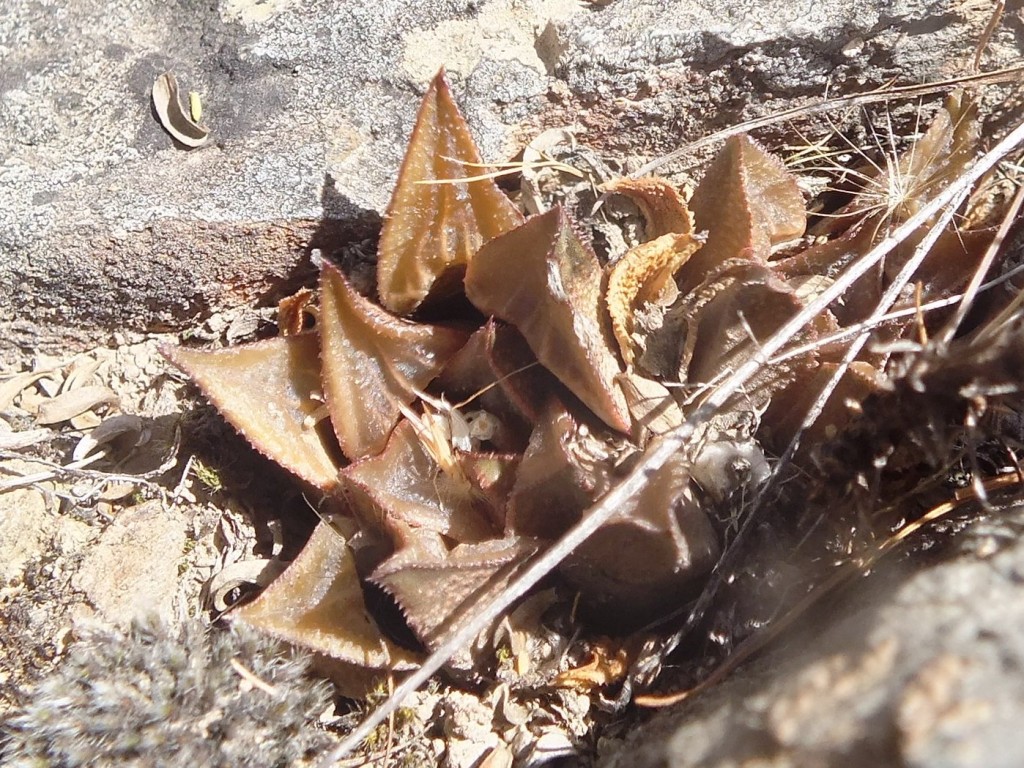
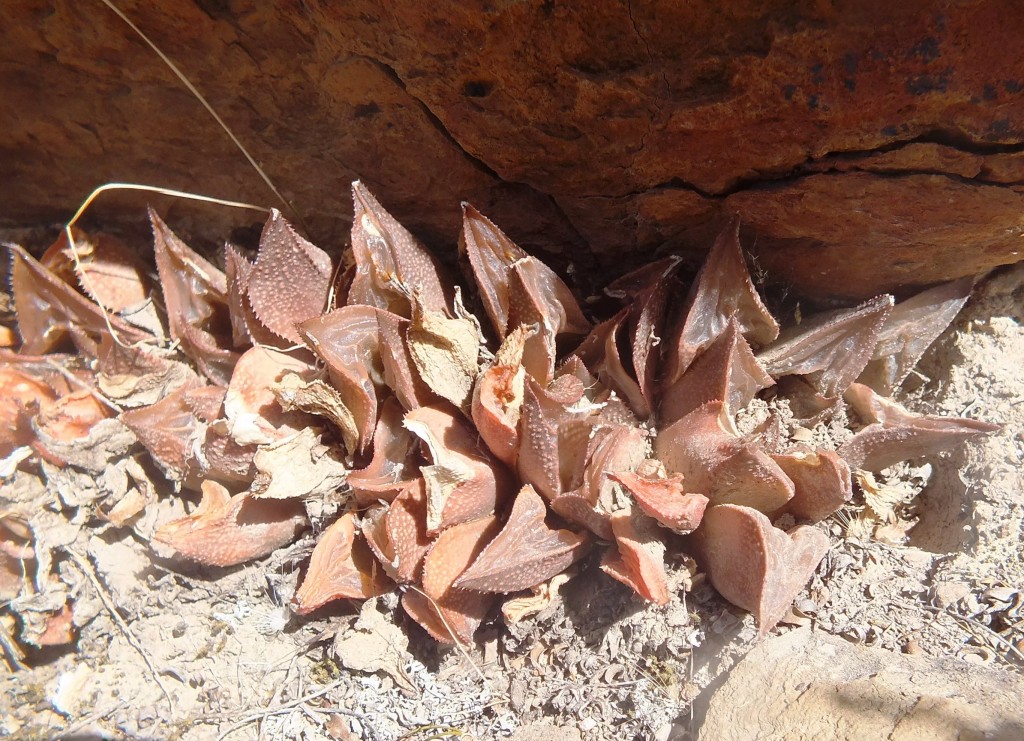
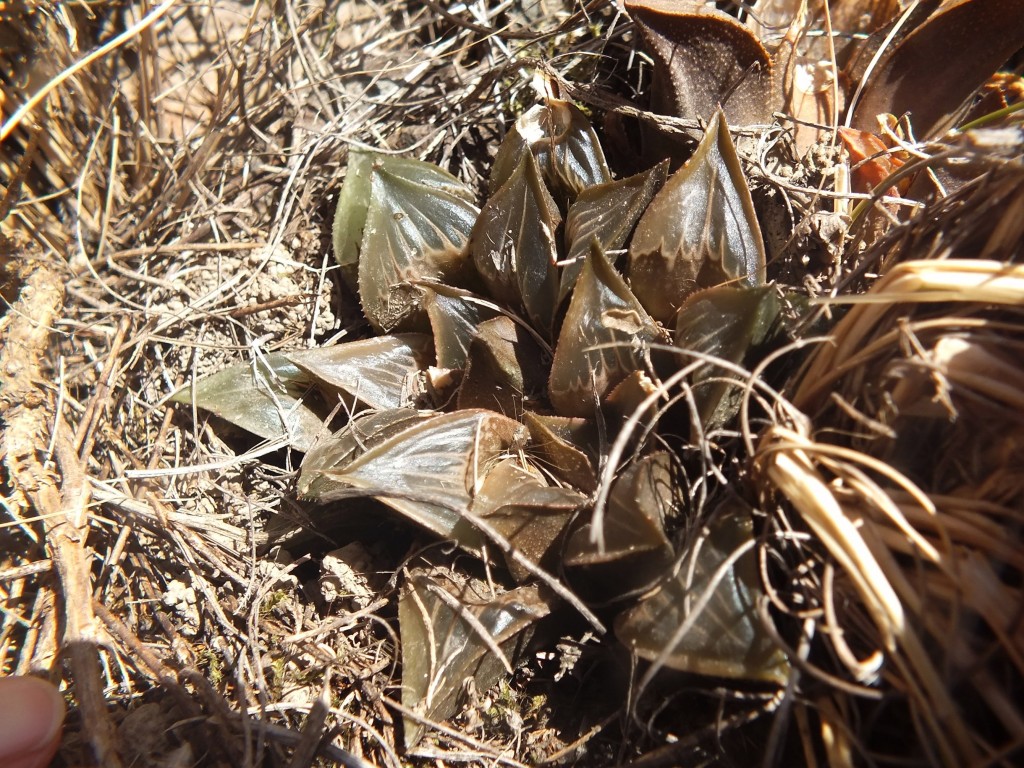
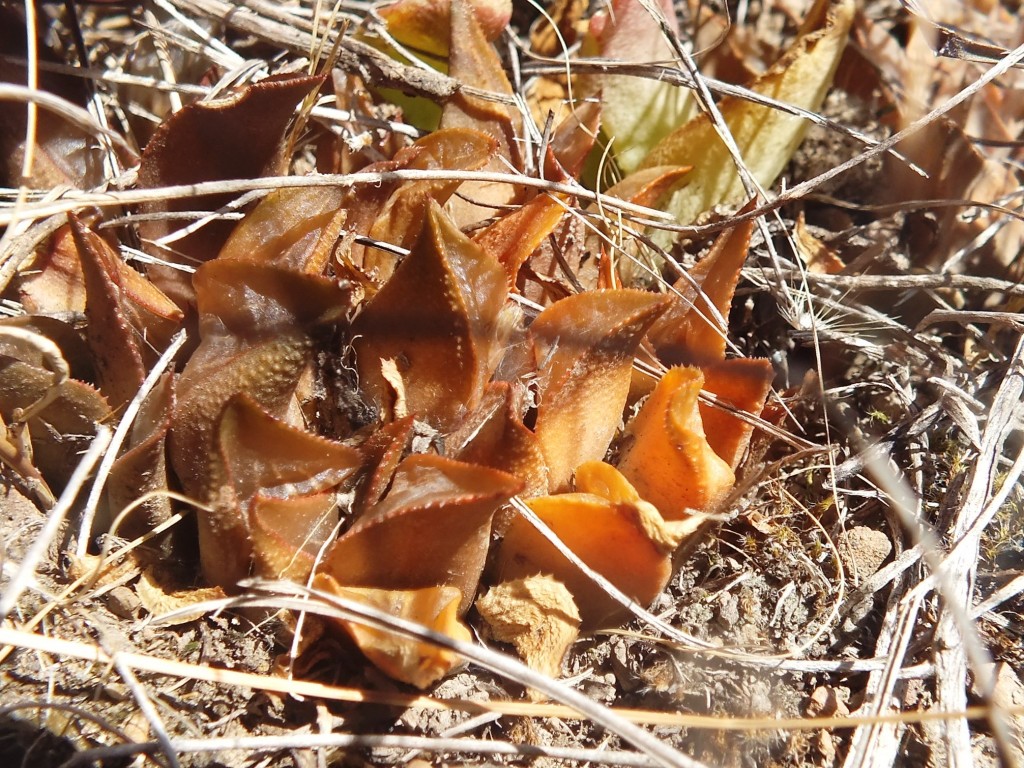
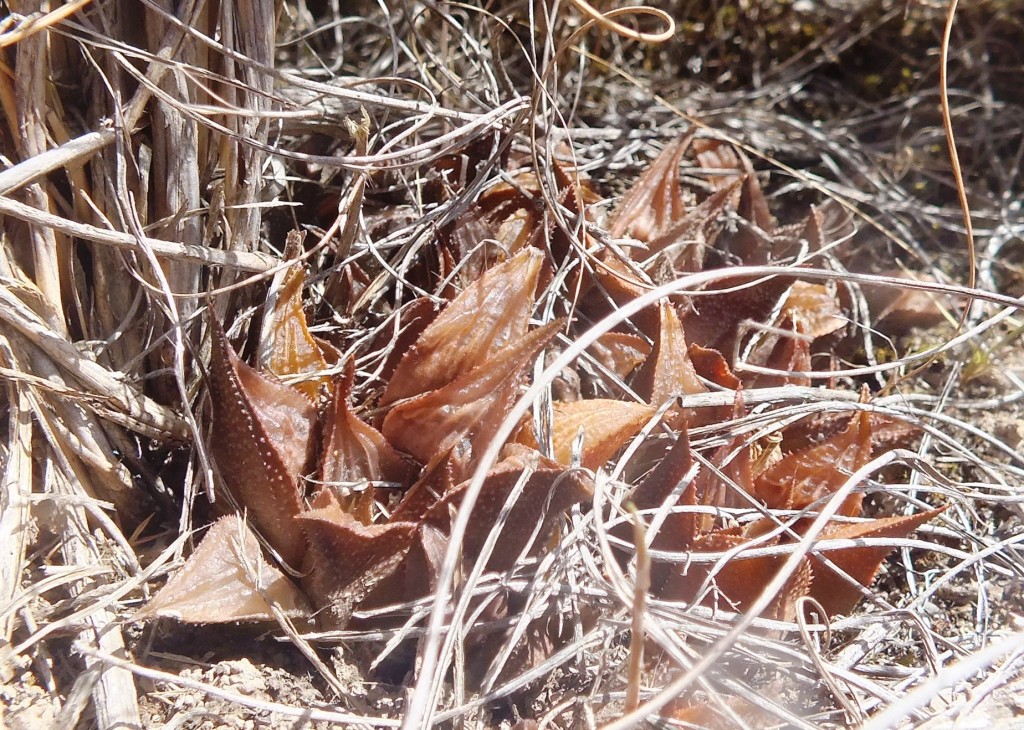
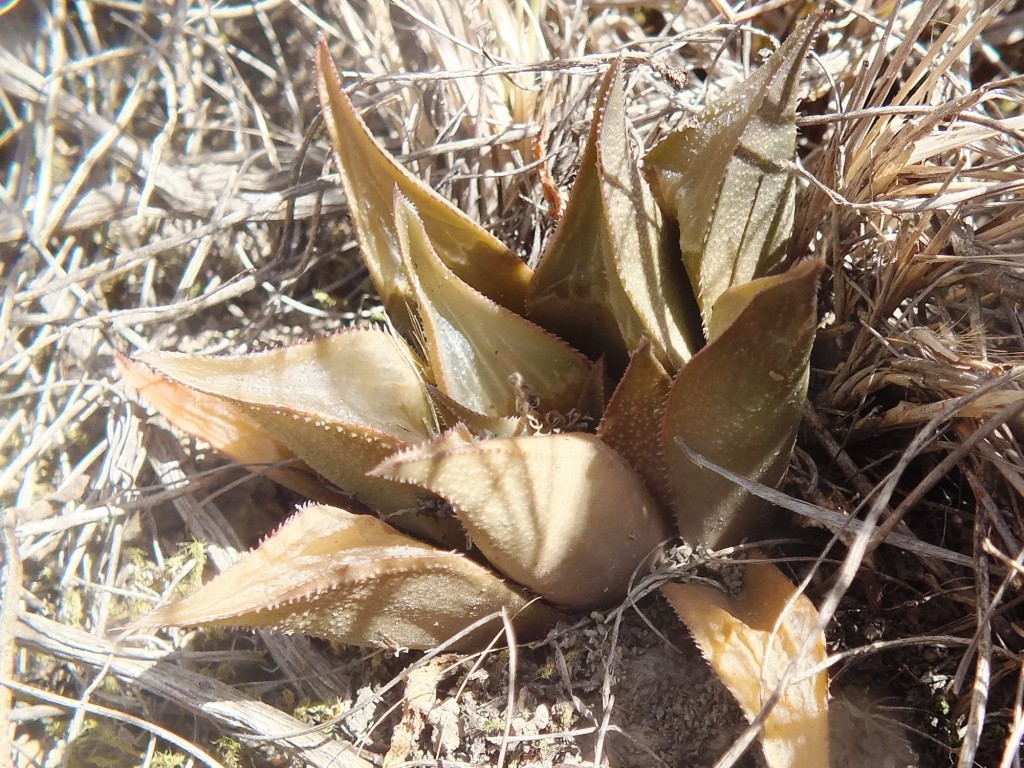
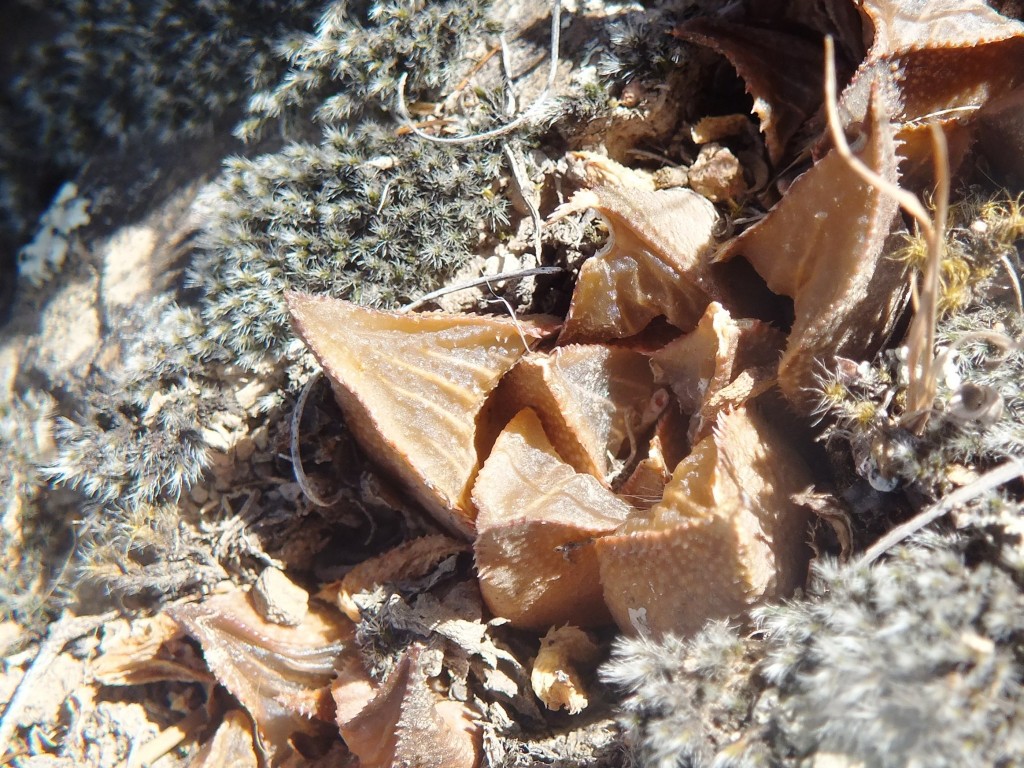
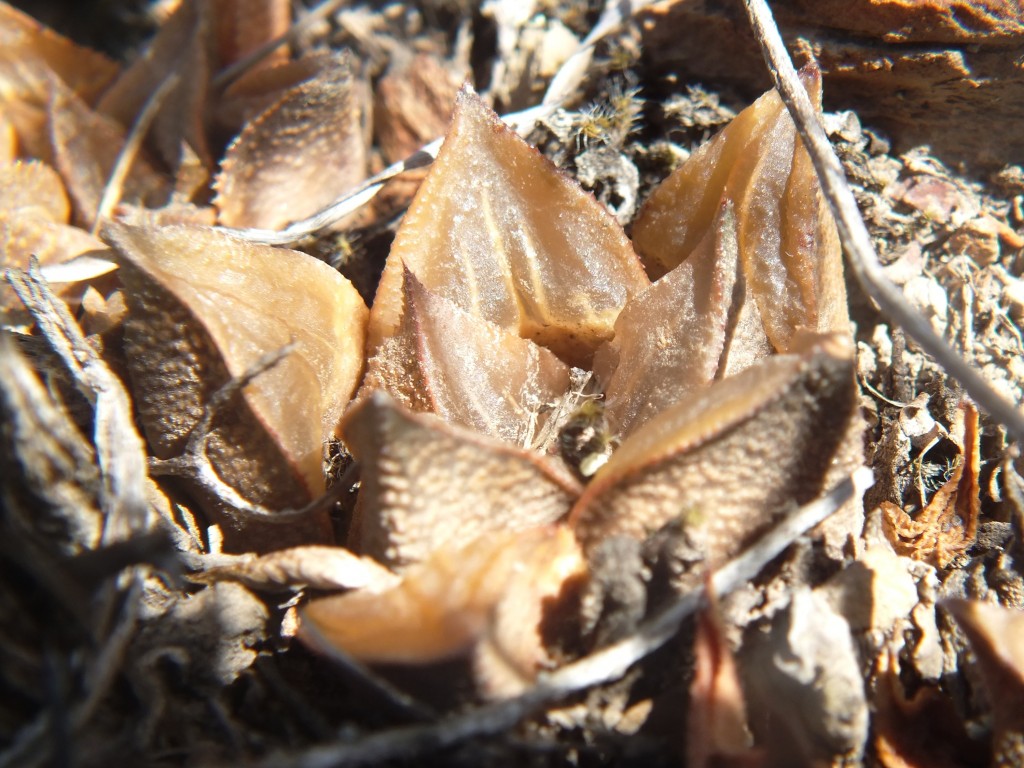
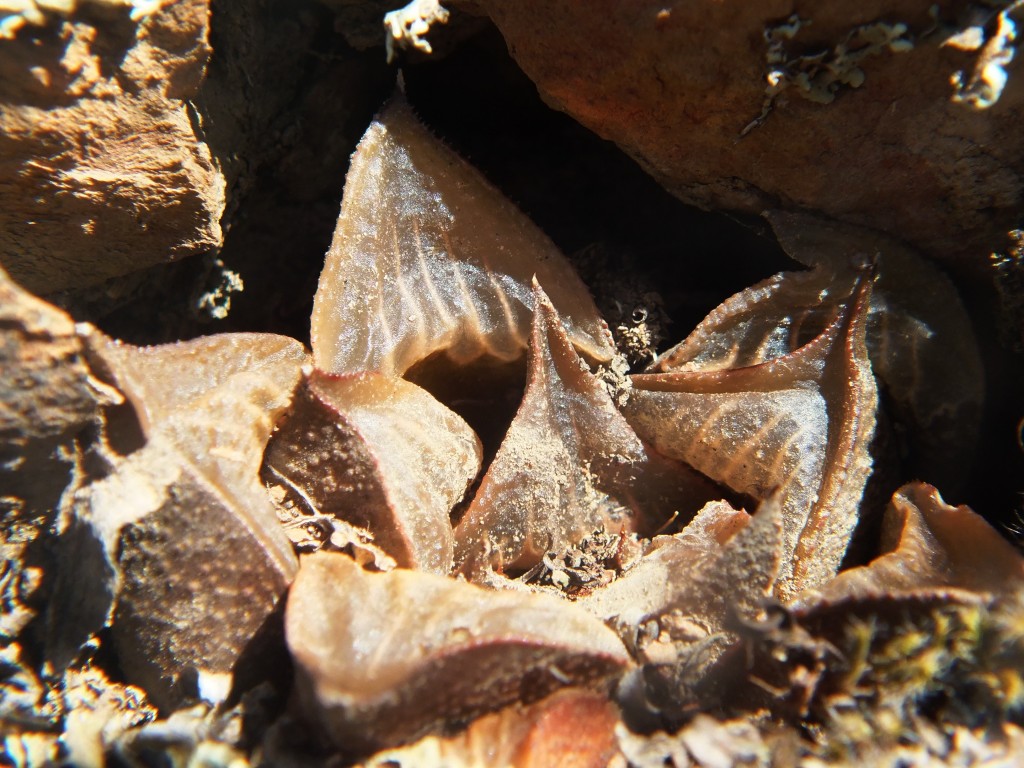
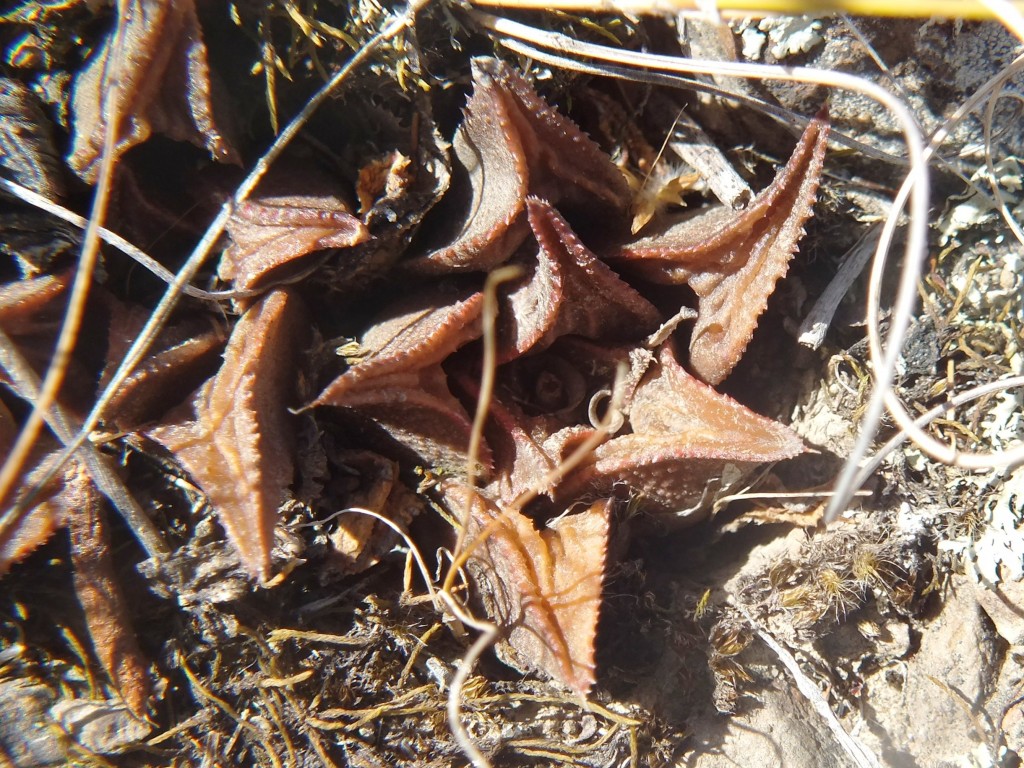

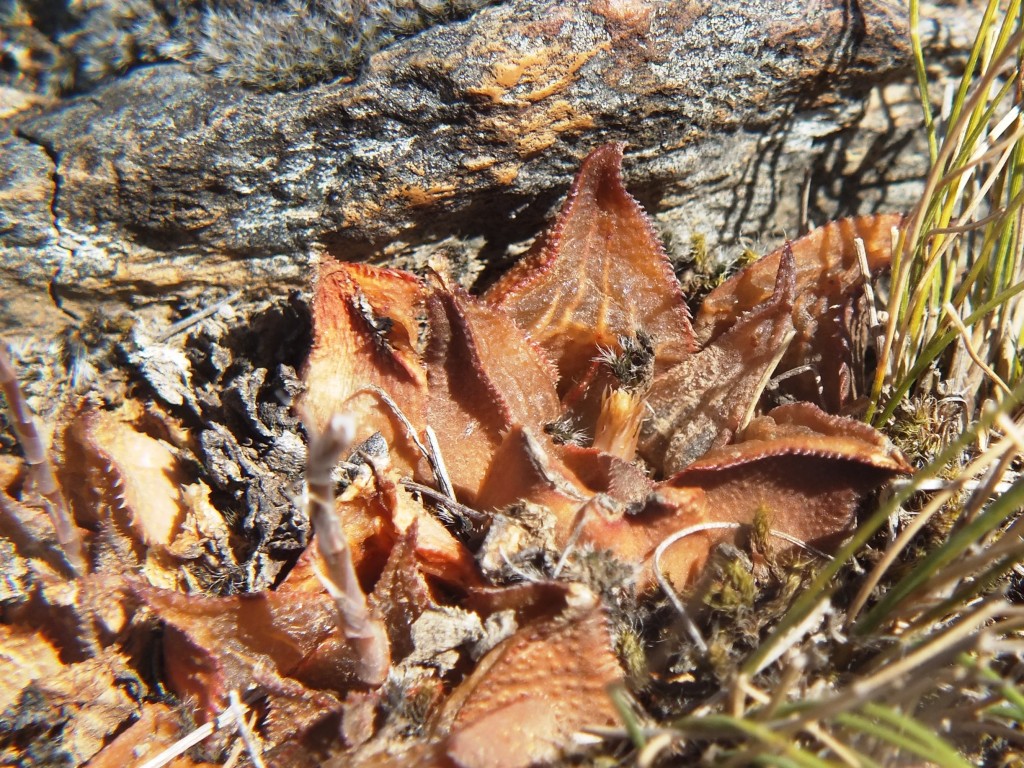
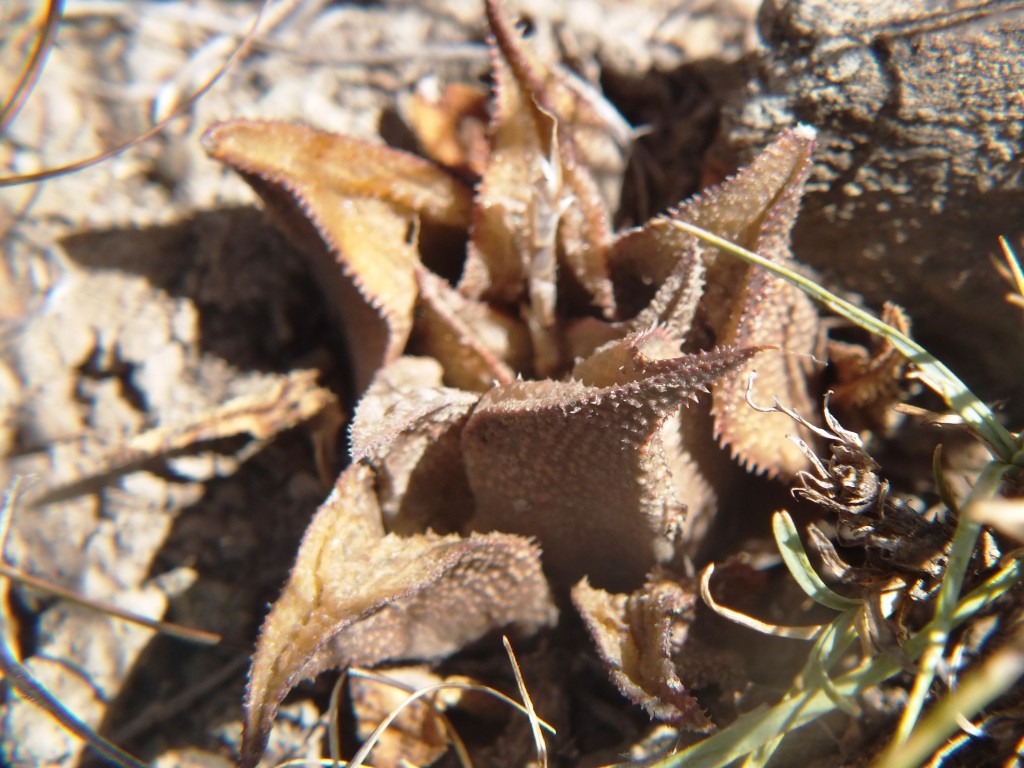
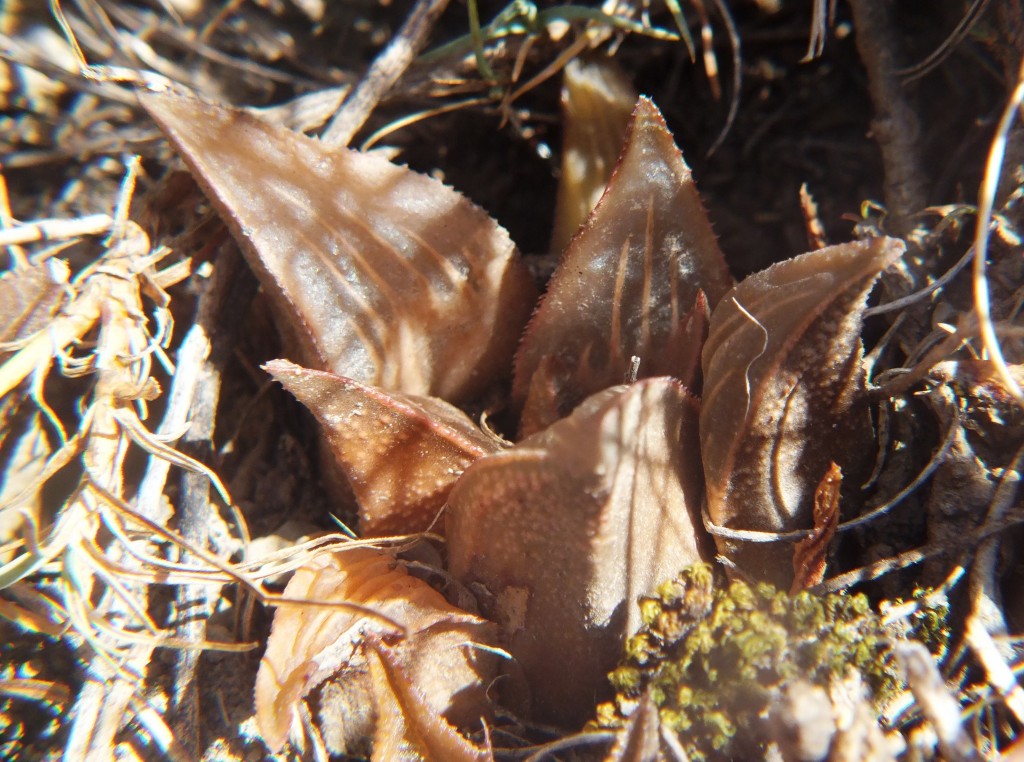
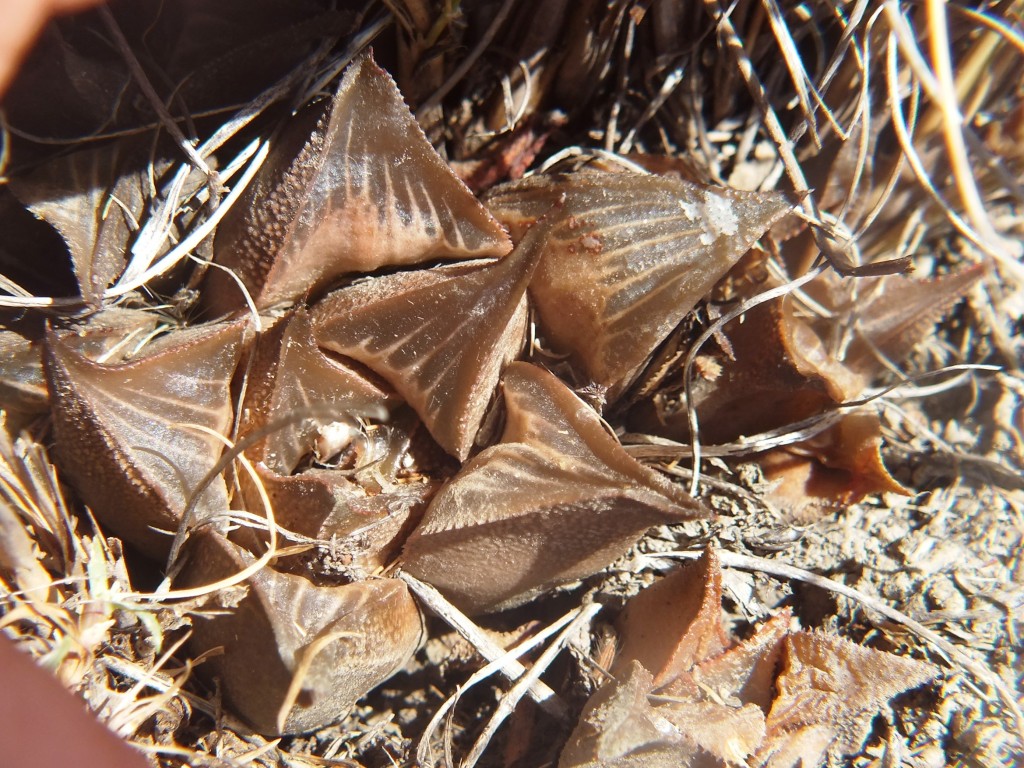
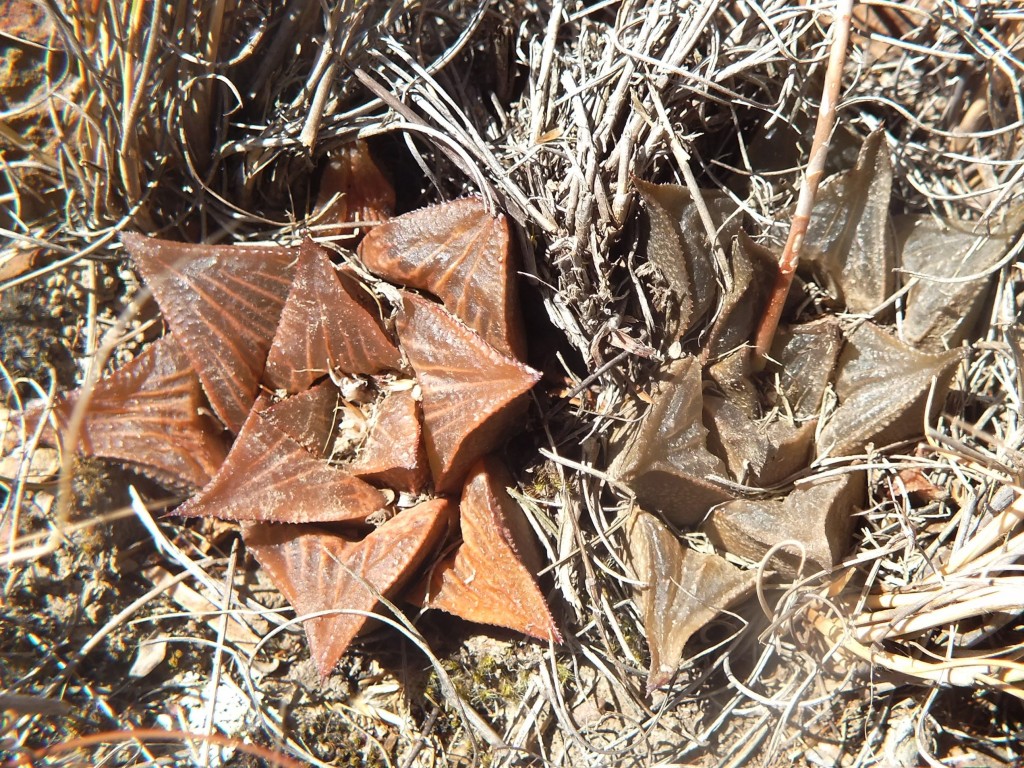
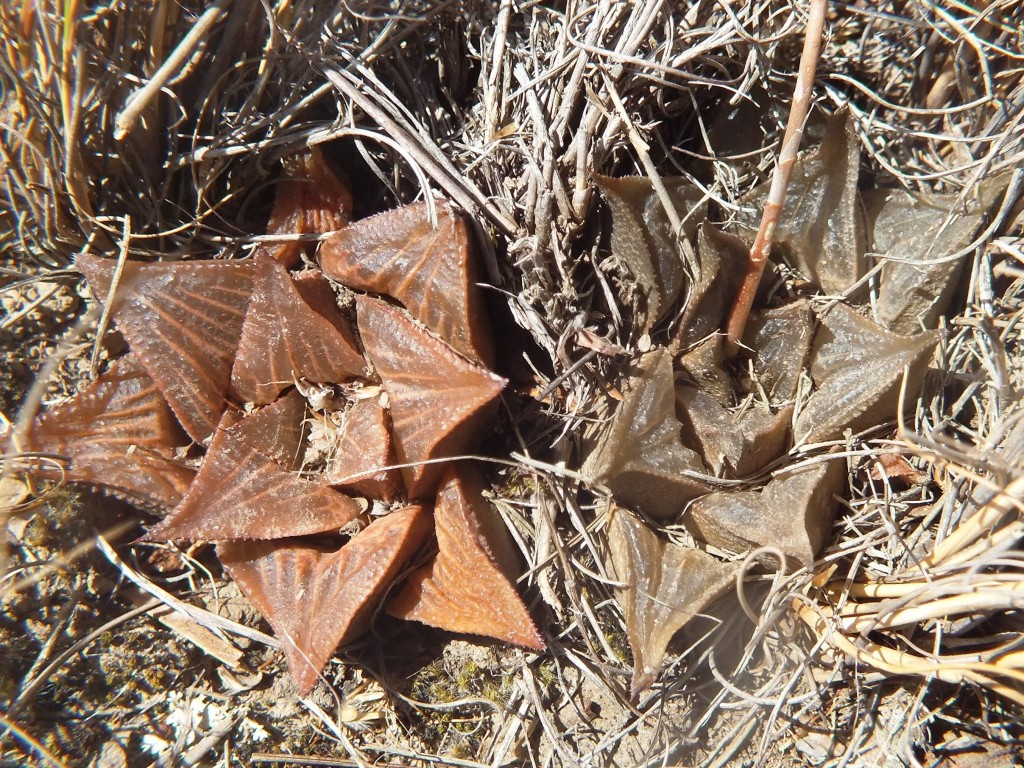
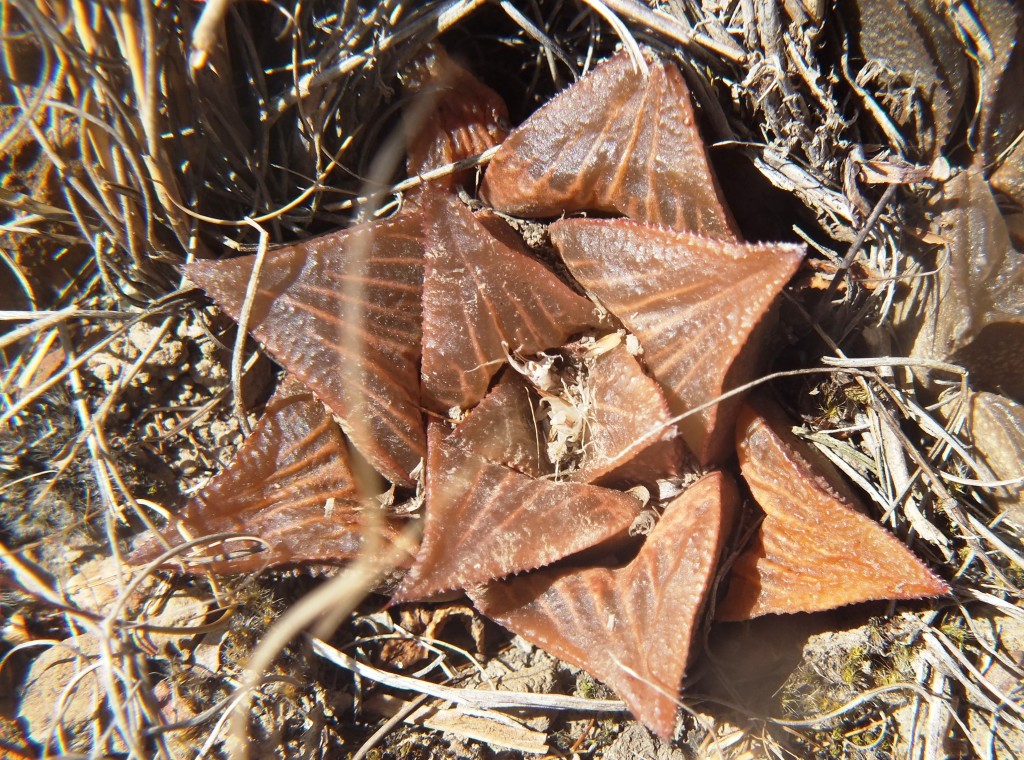
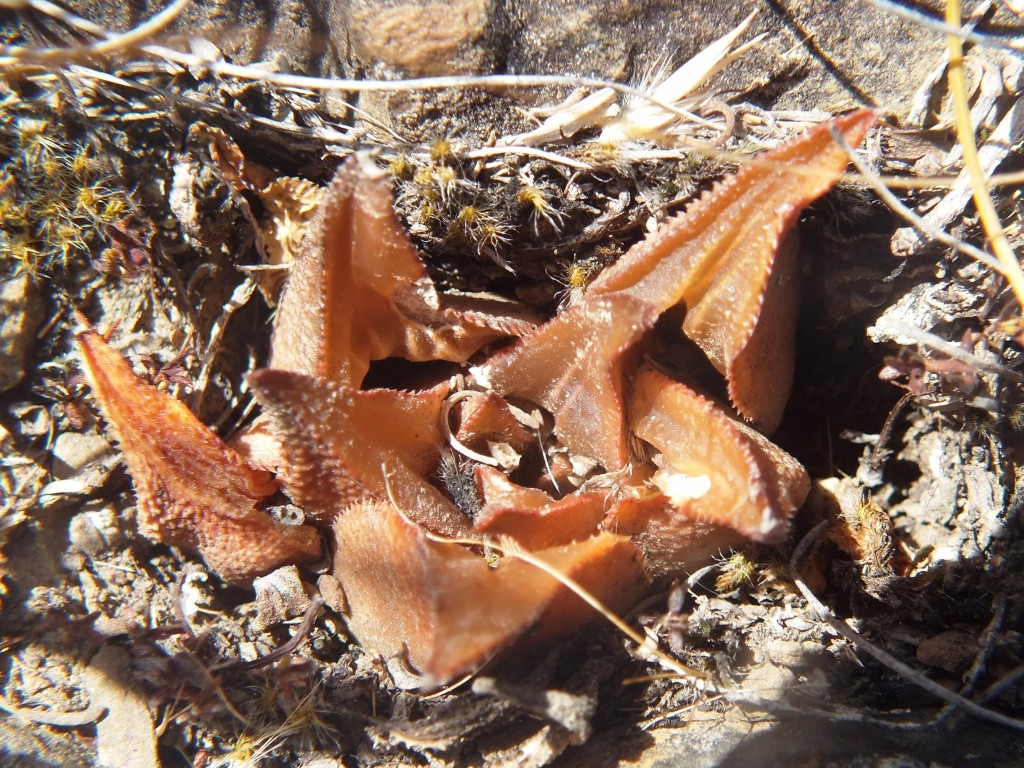
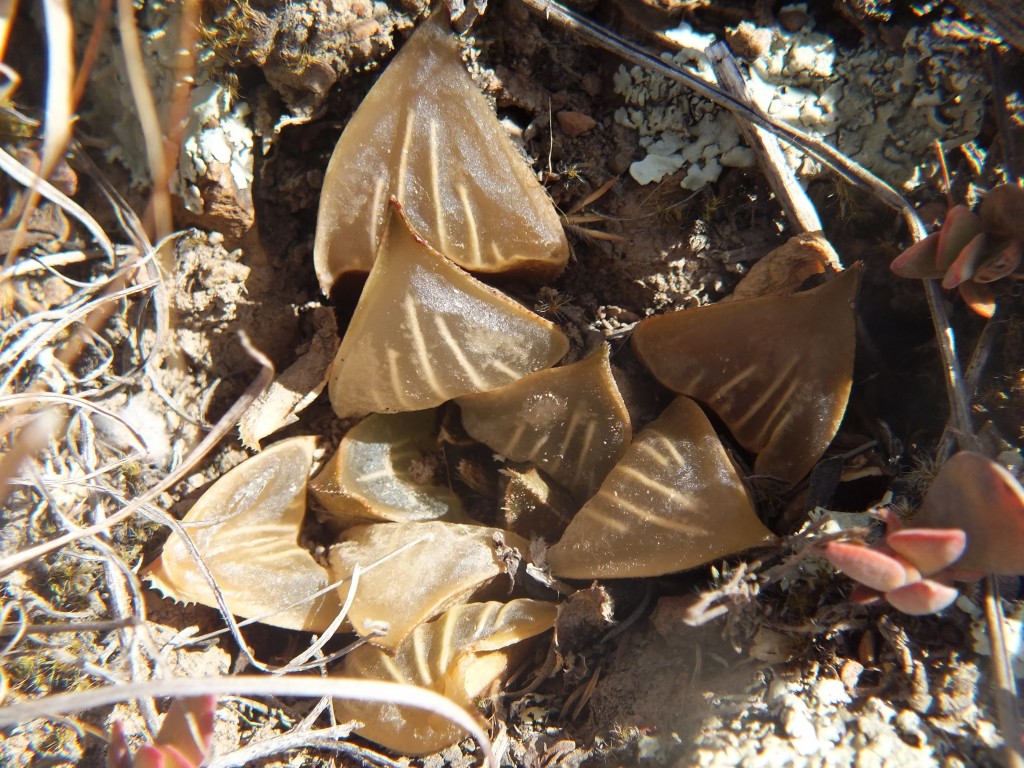
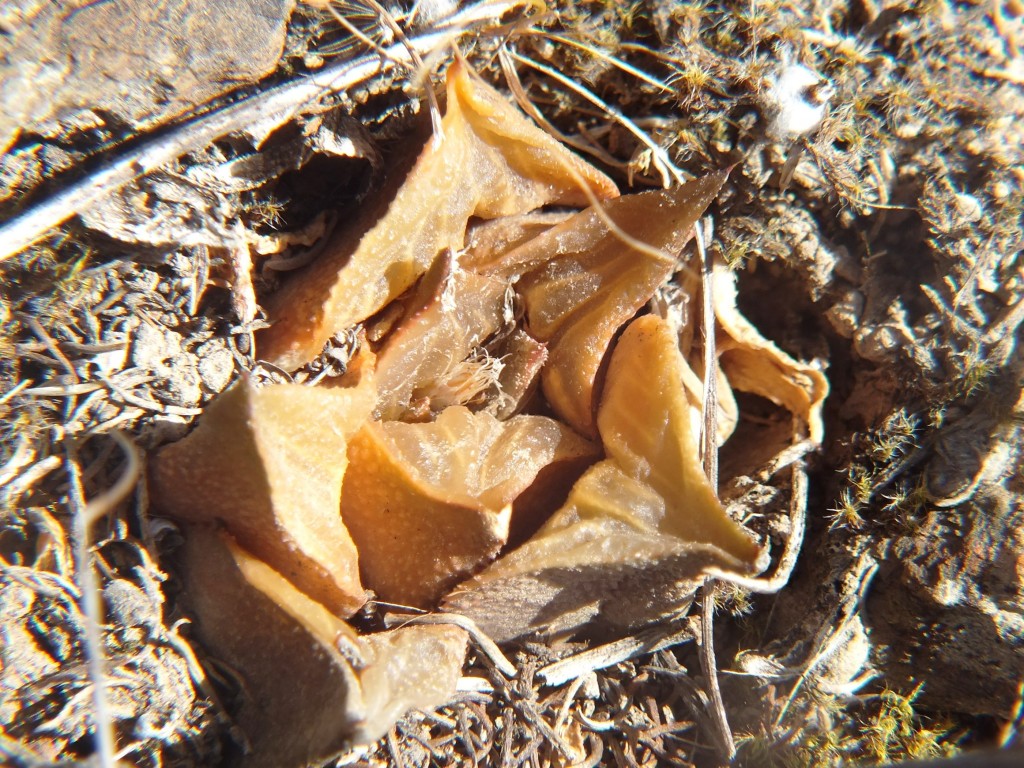

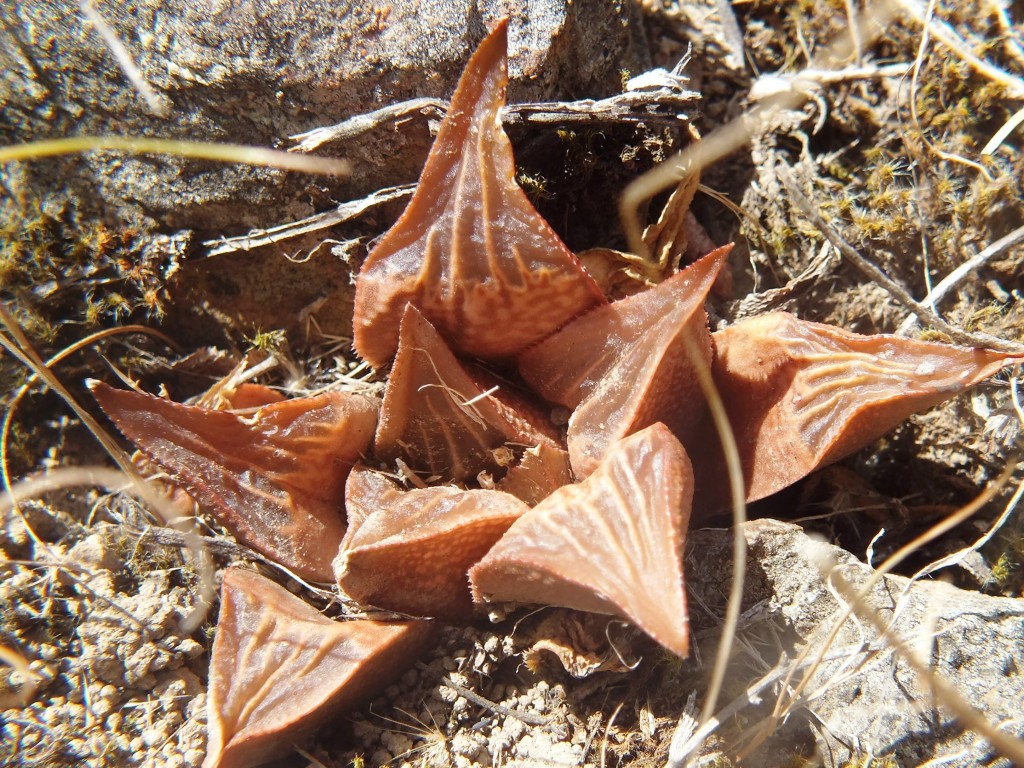
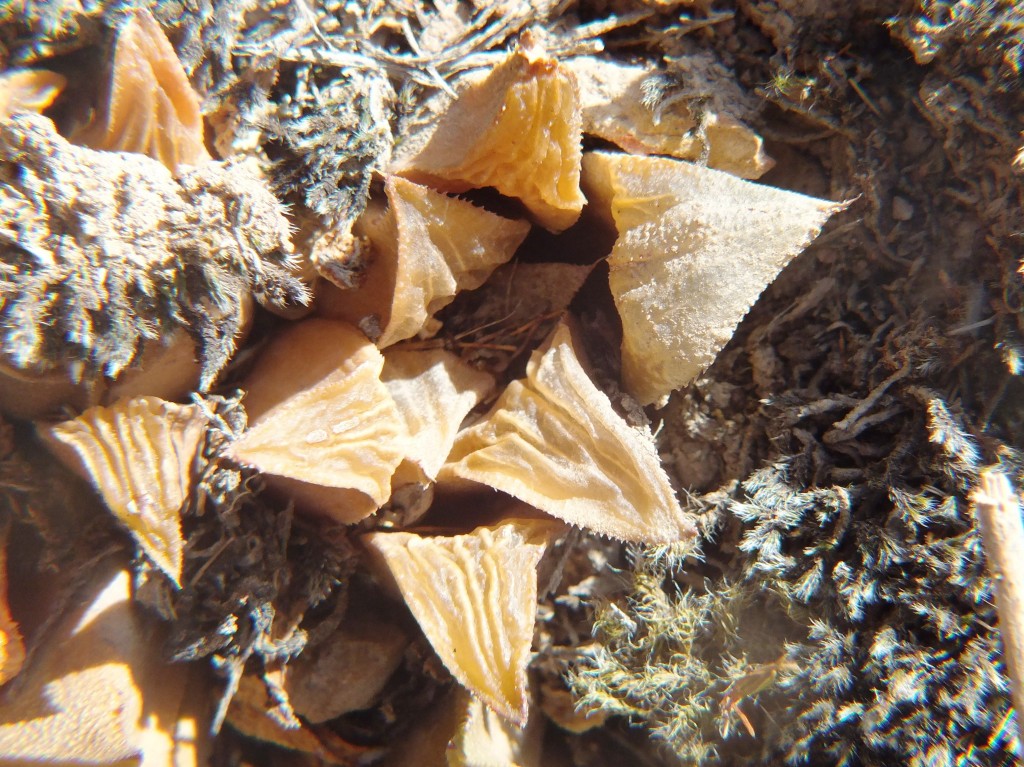
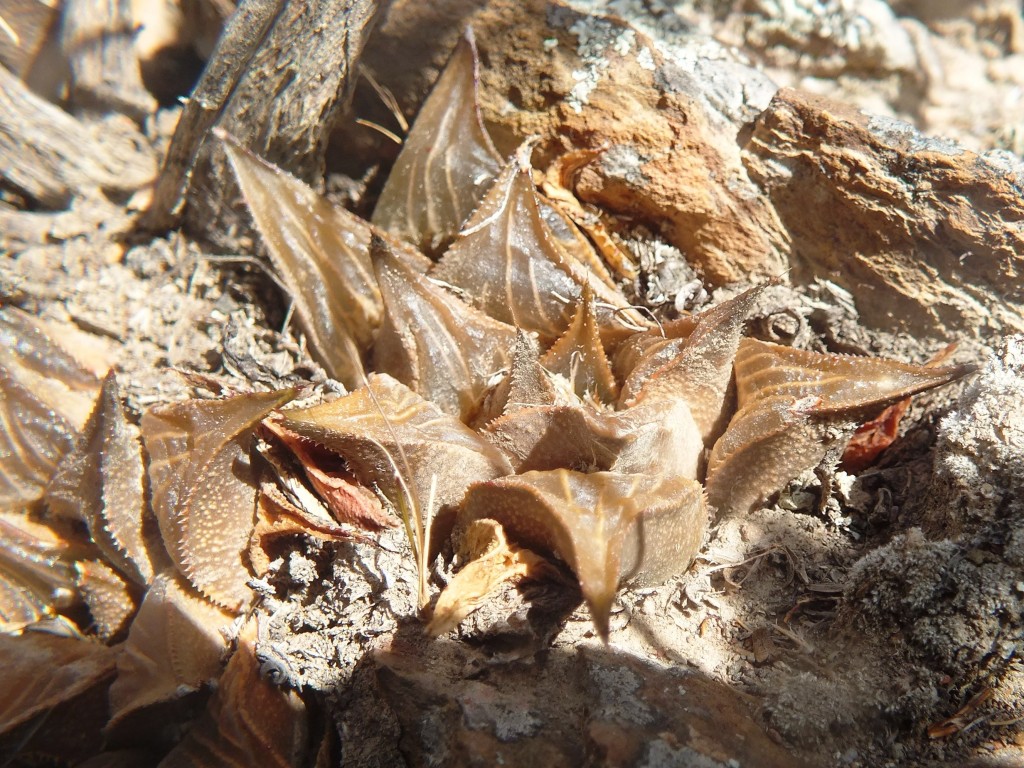
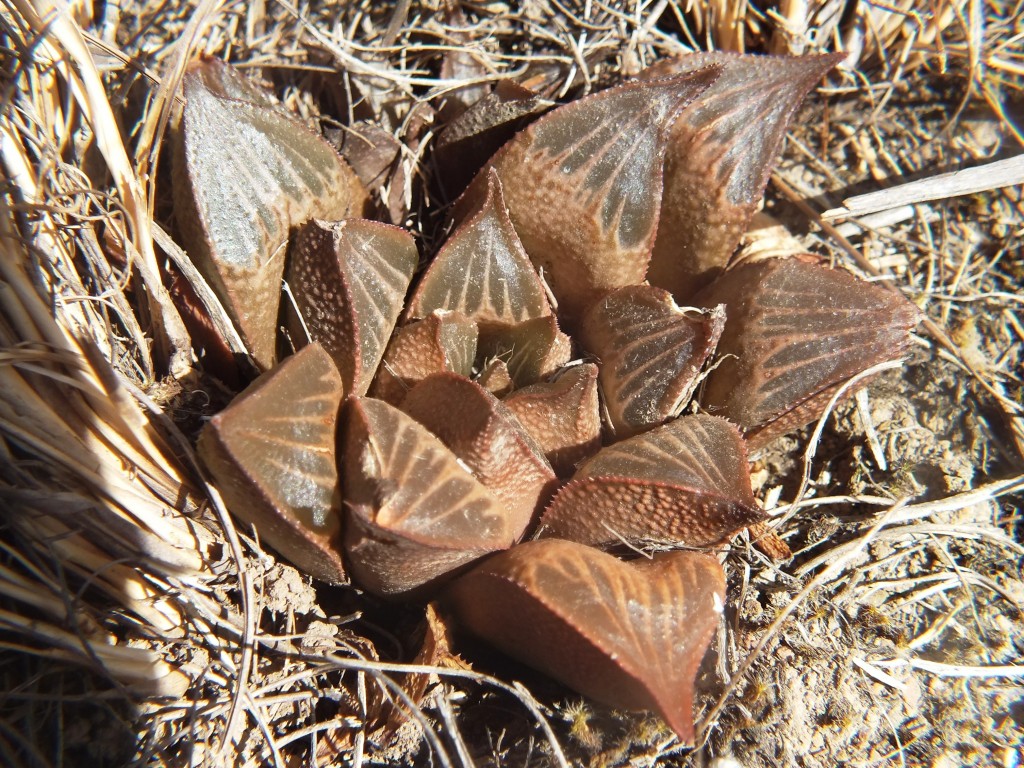
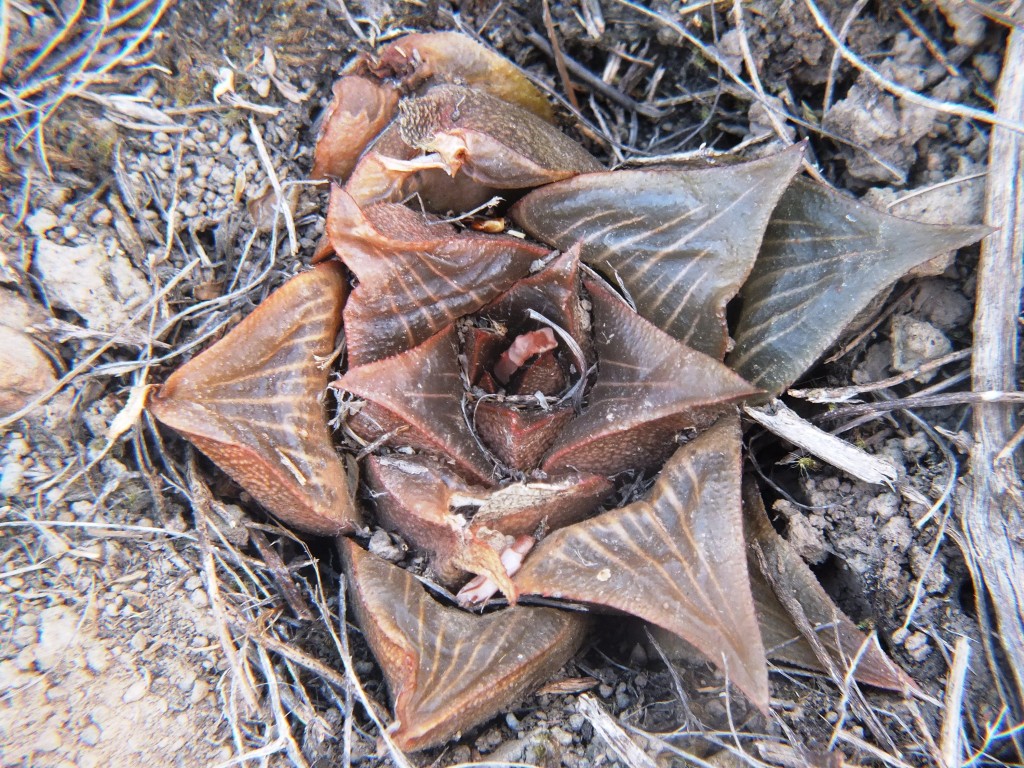
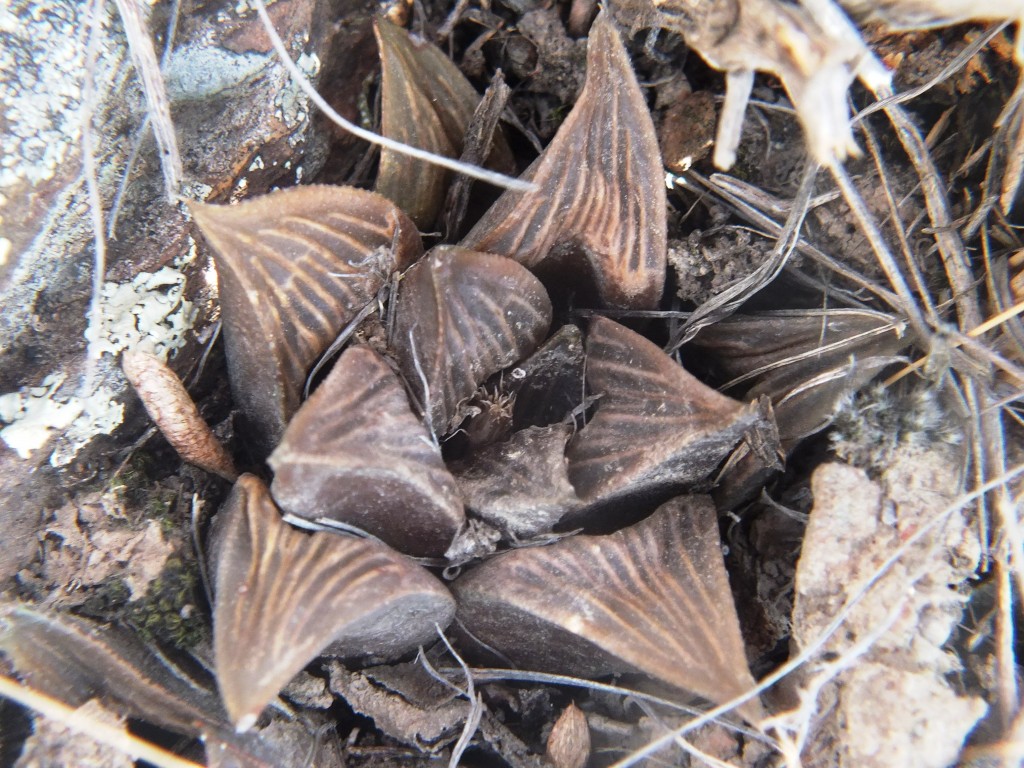

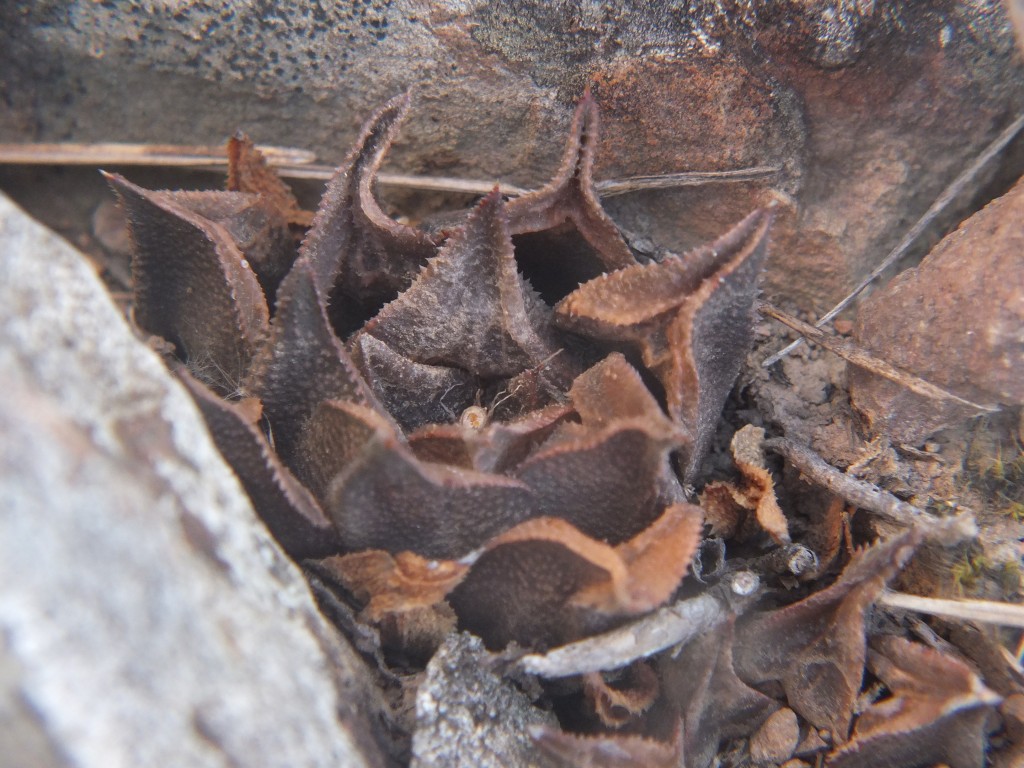
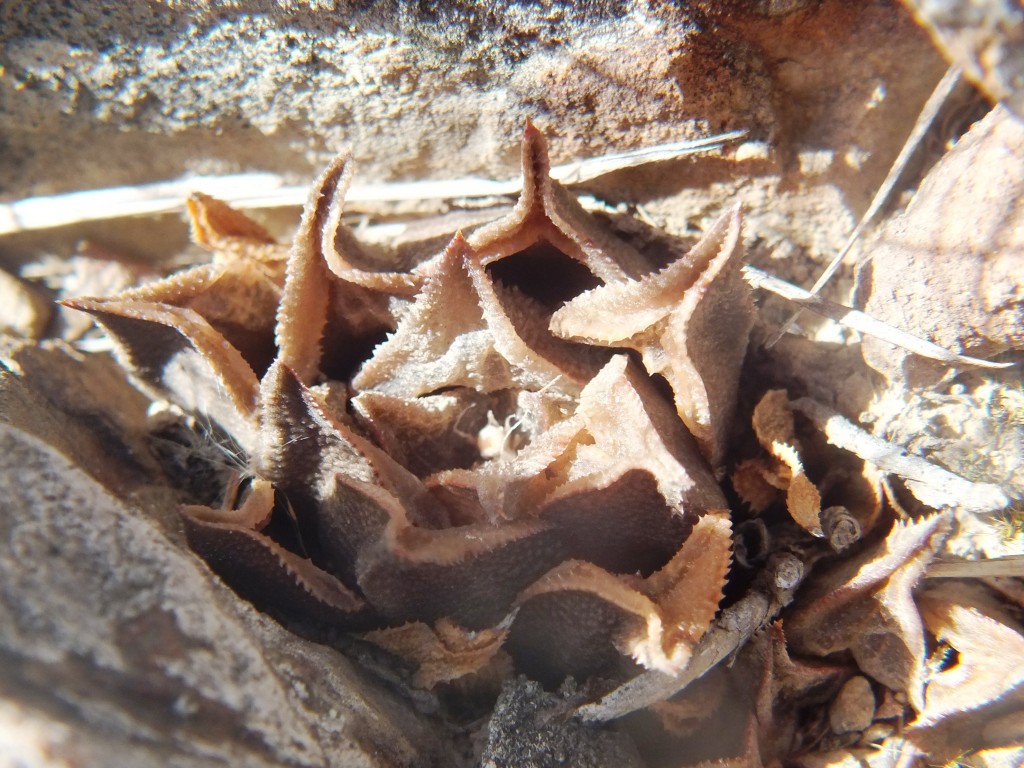
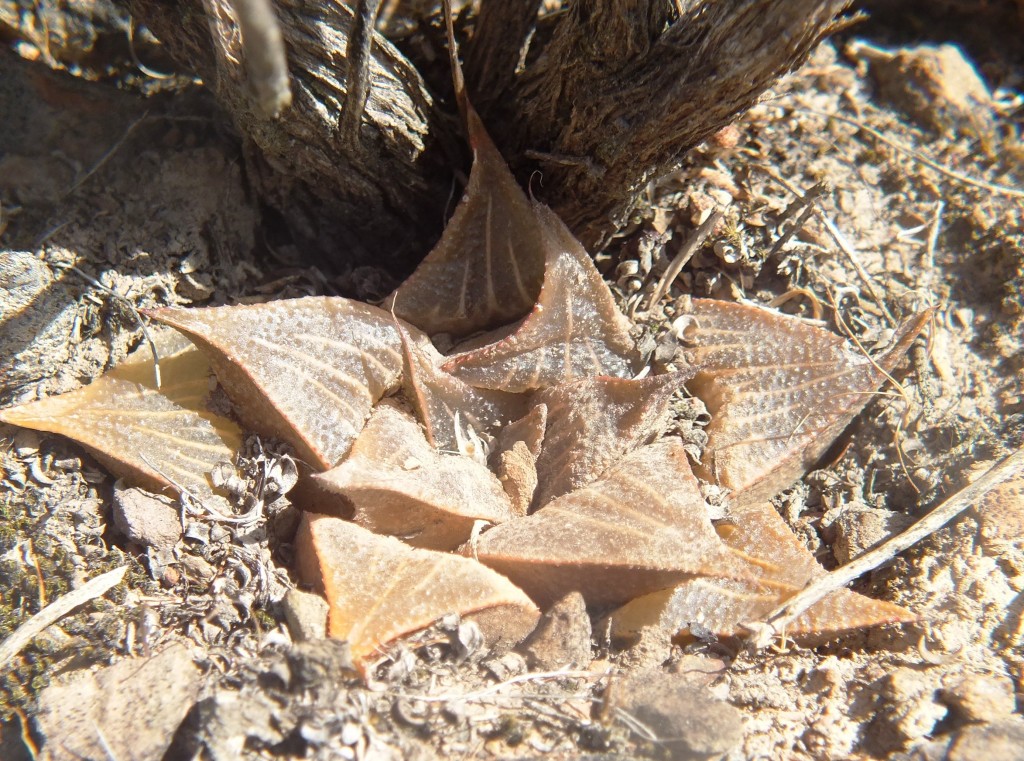
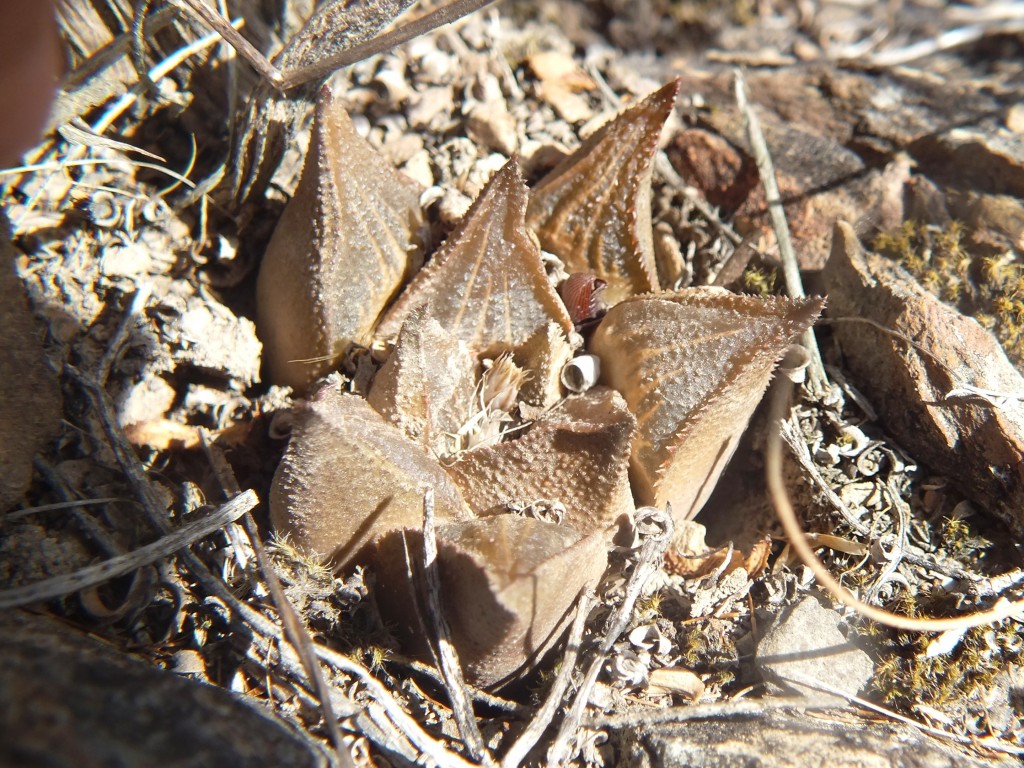

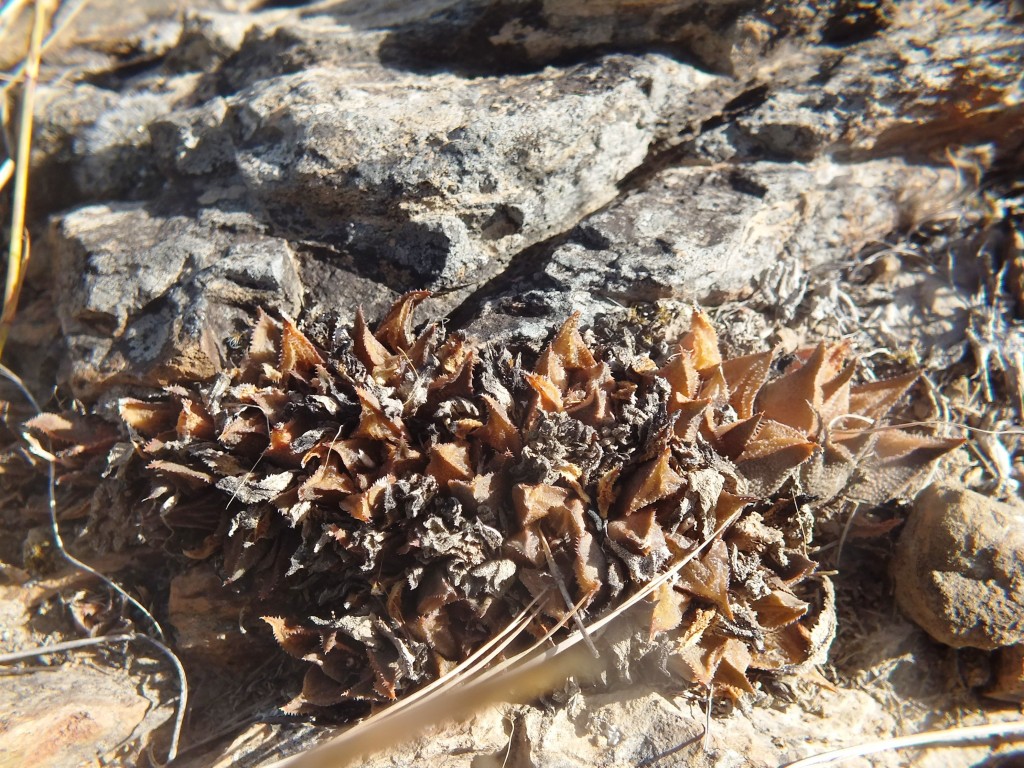
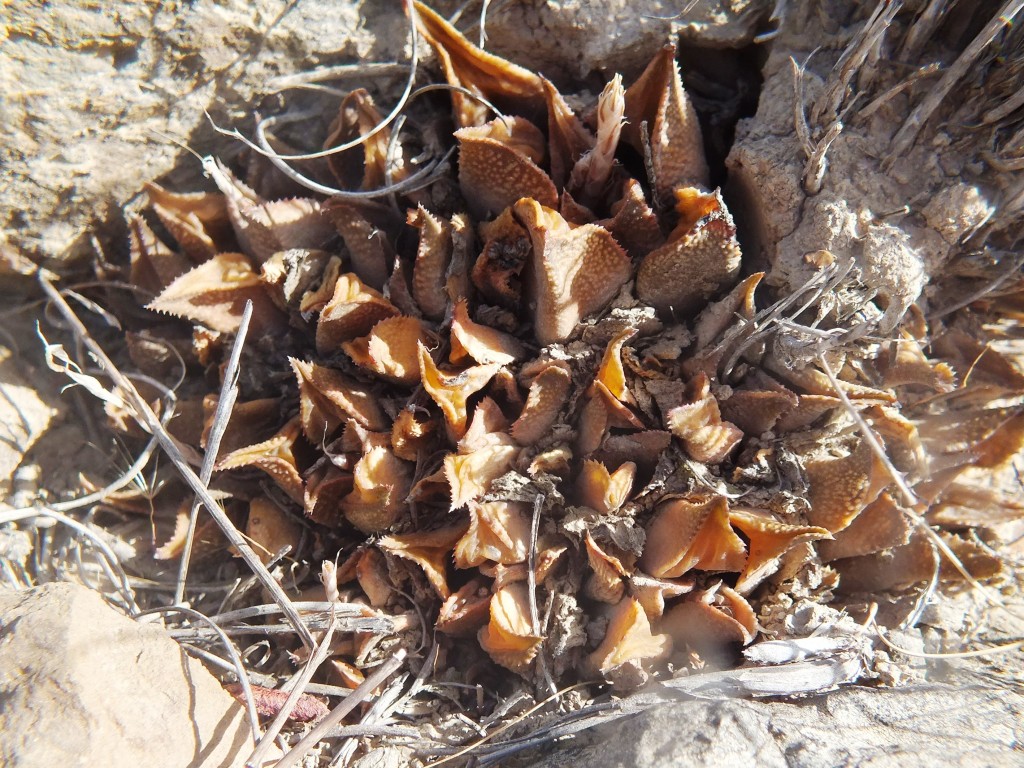
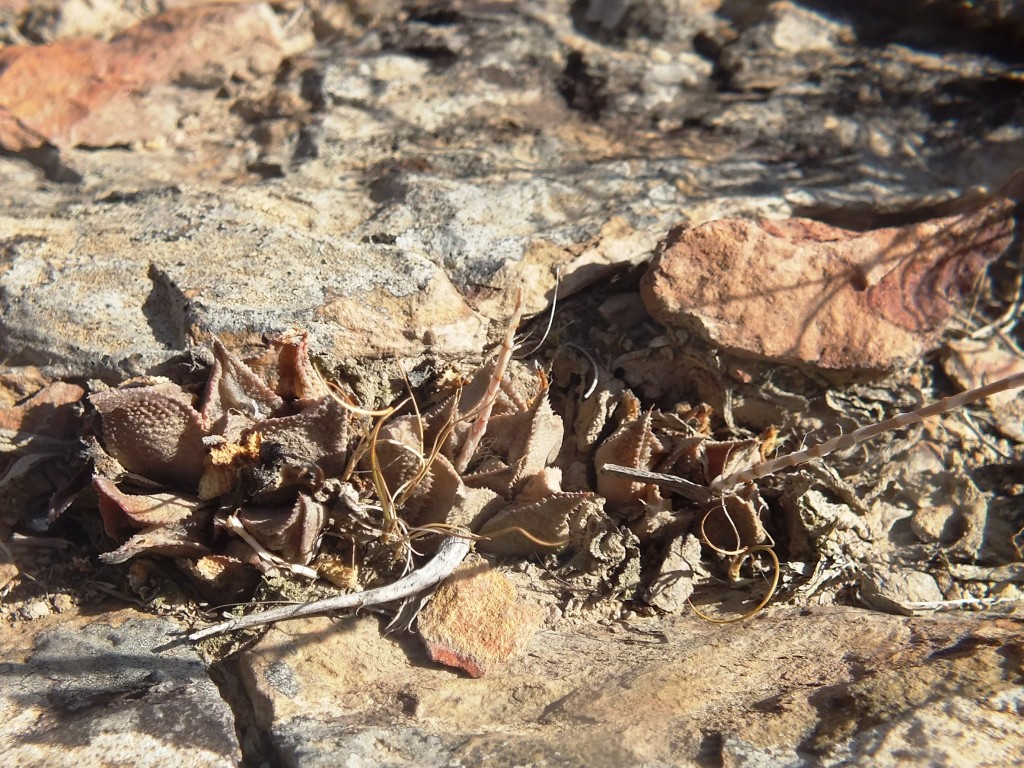
Flower profiles, Faces, and Buds.




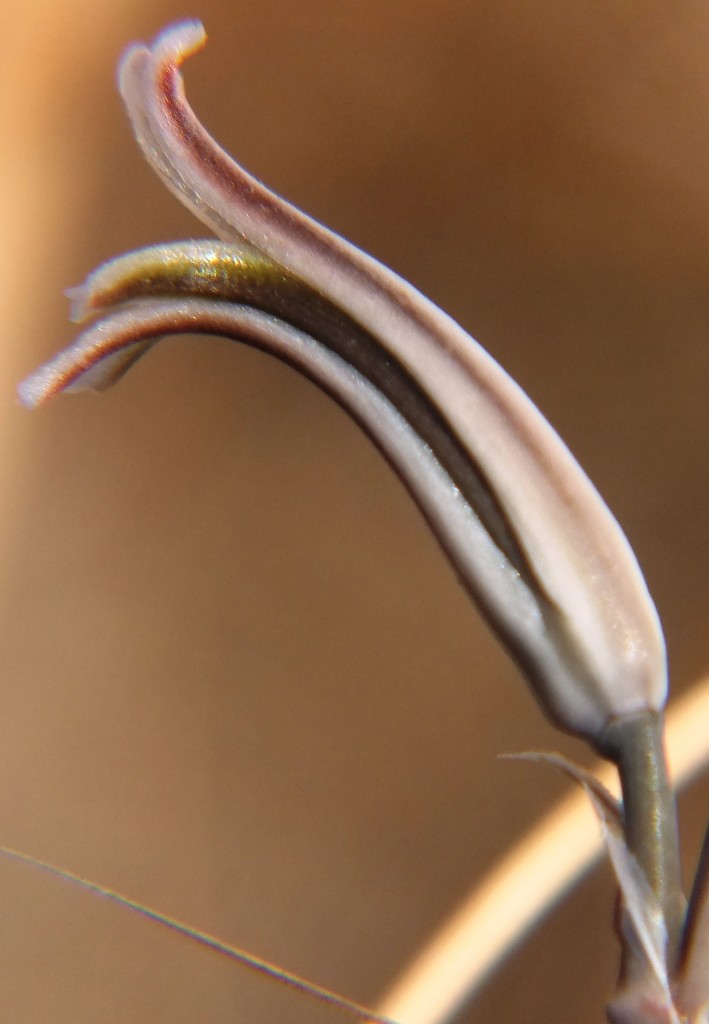
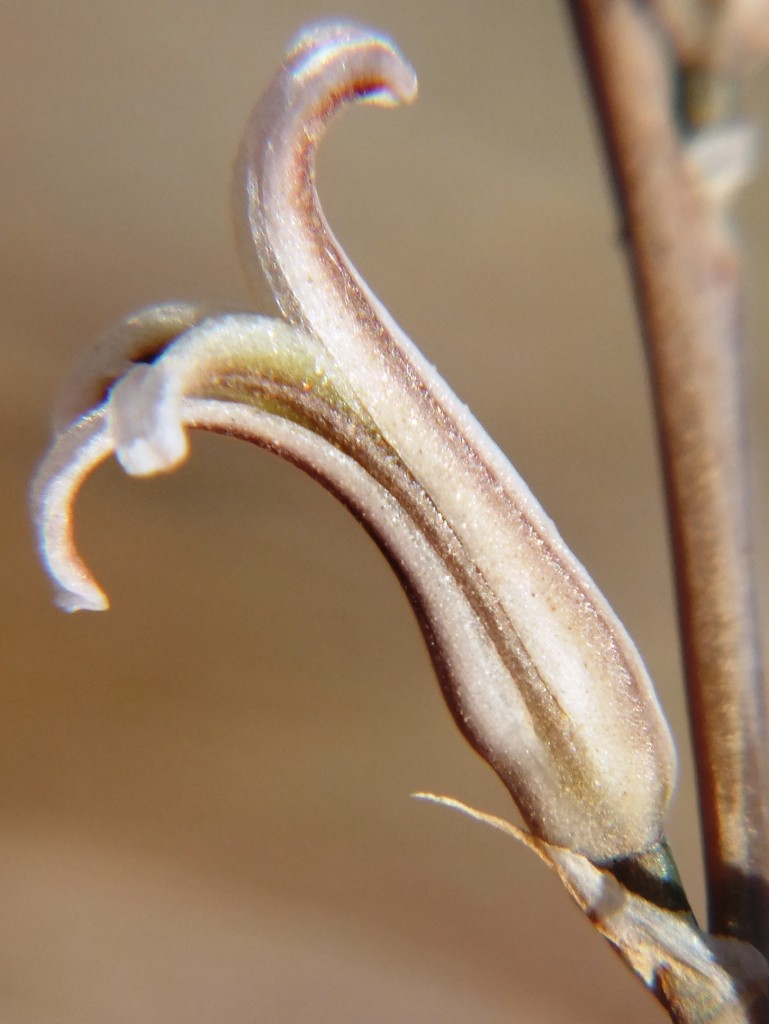

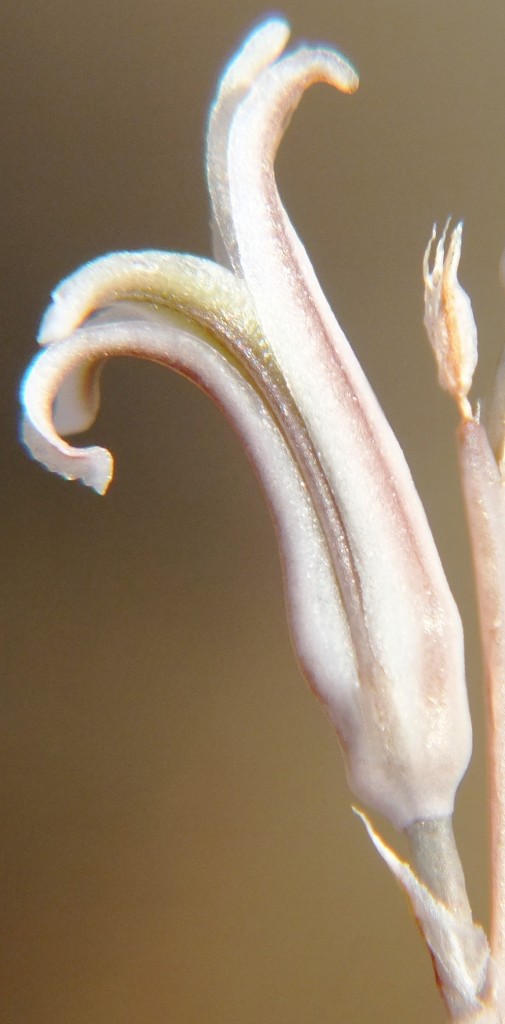
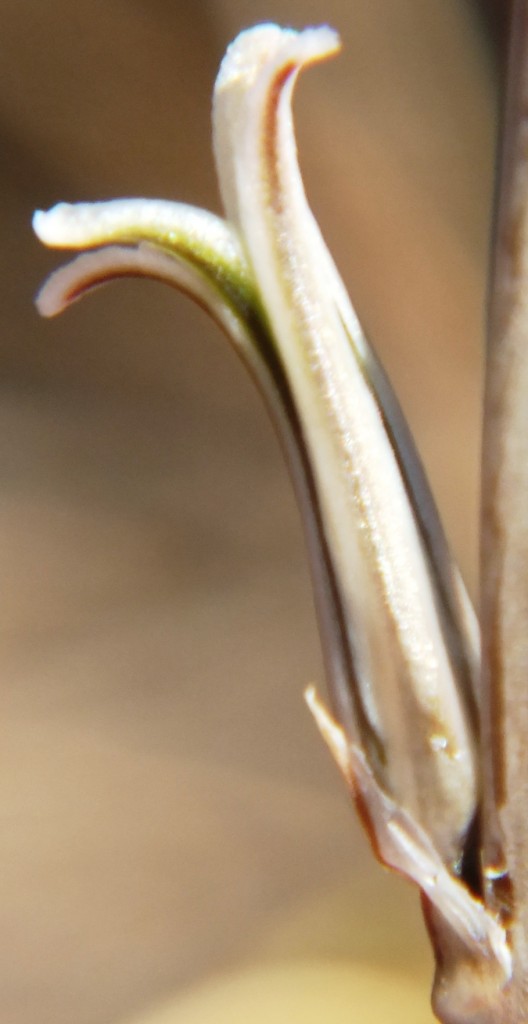

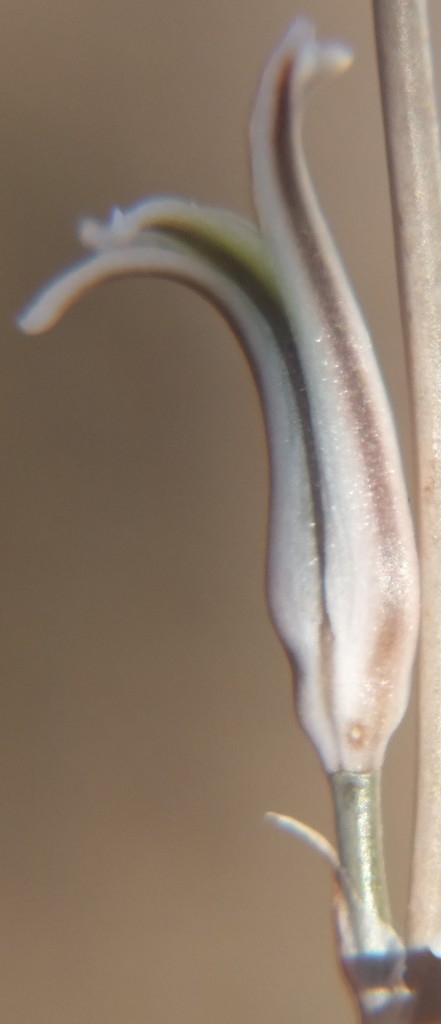
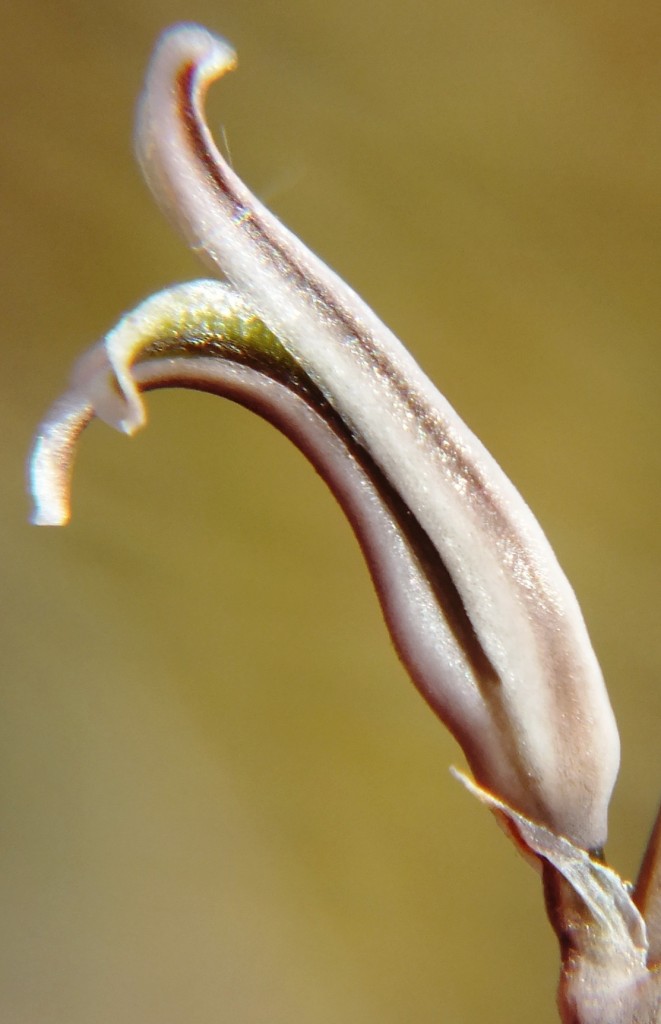
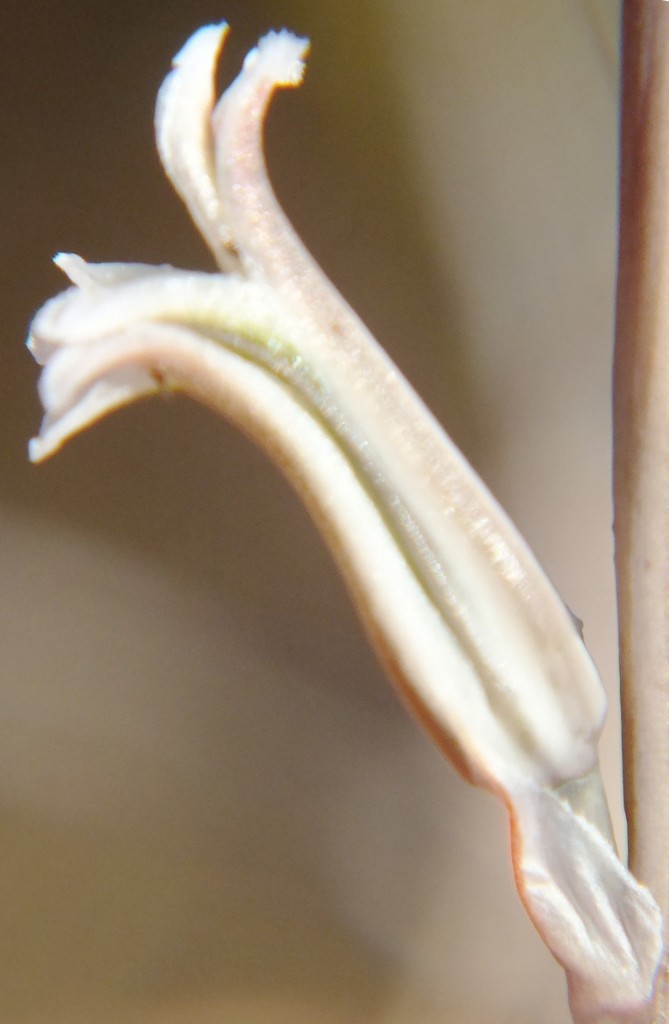
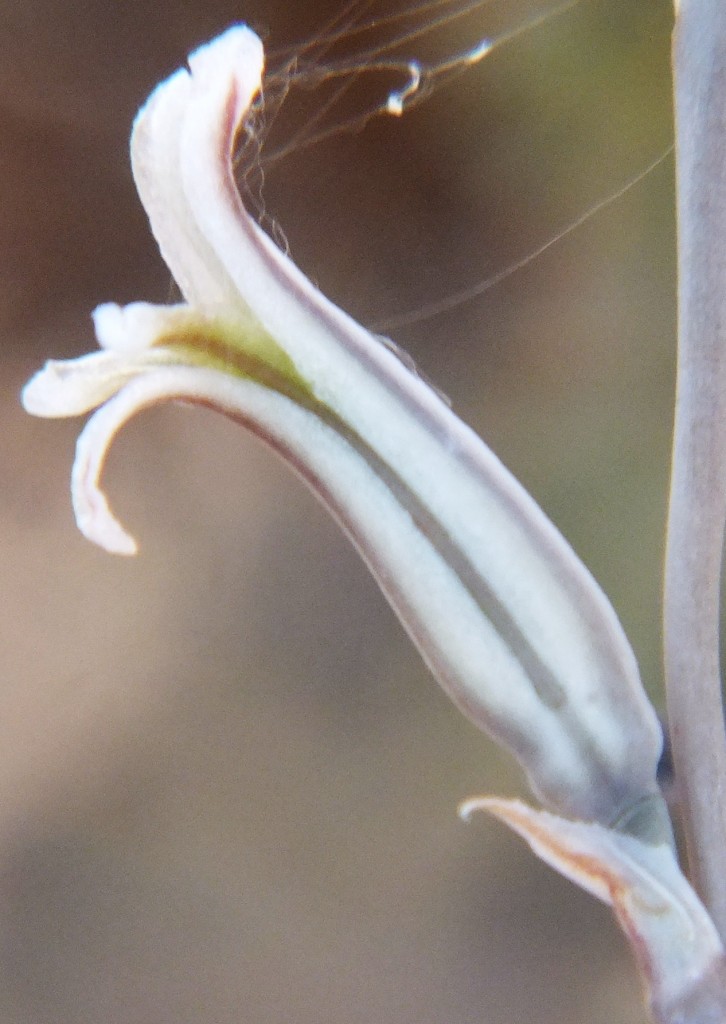
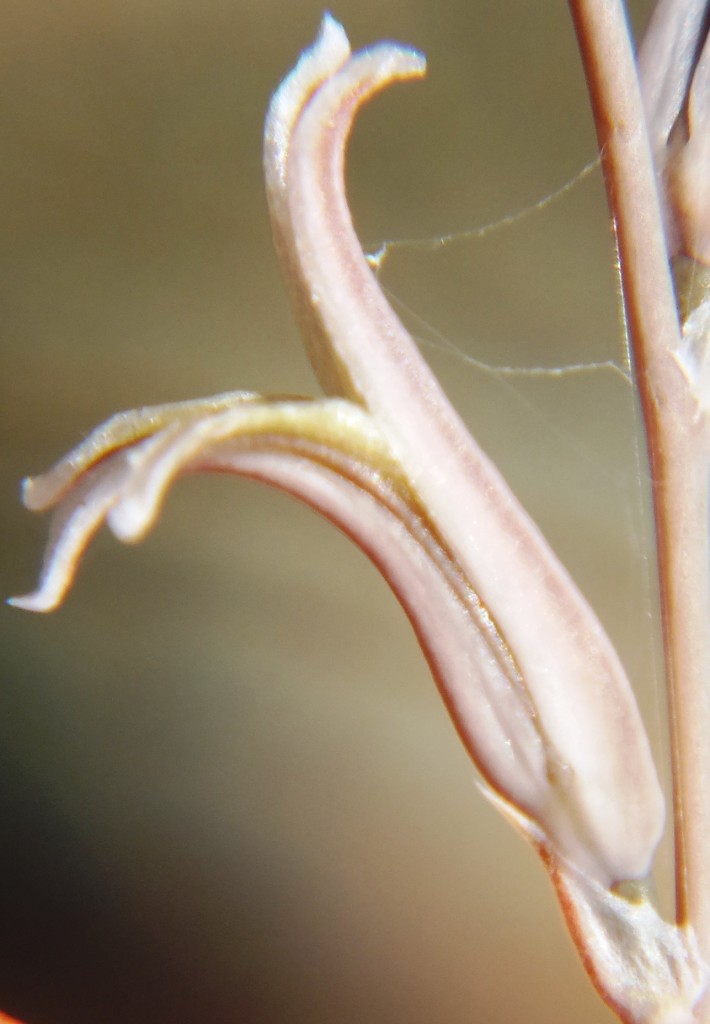

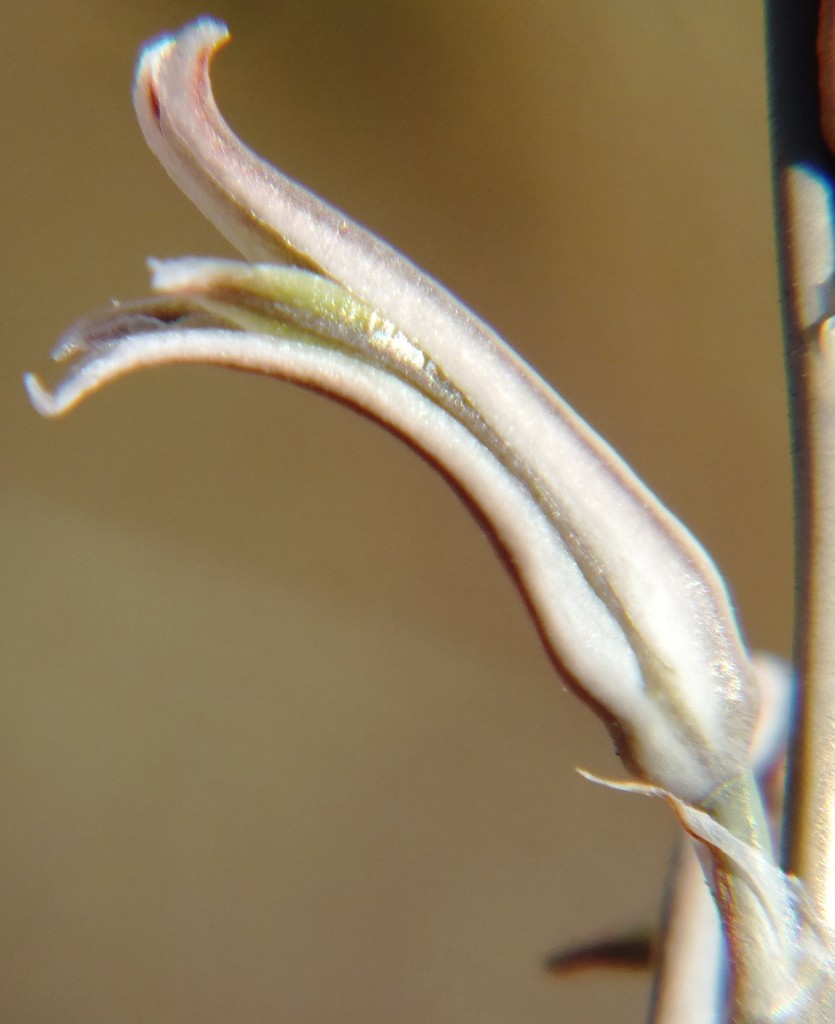
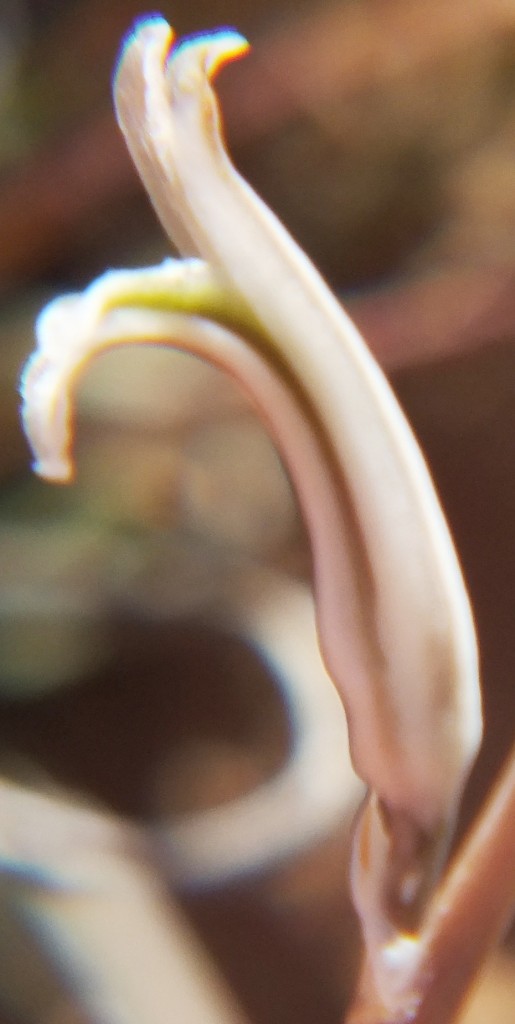

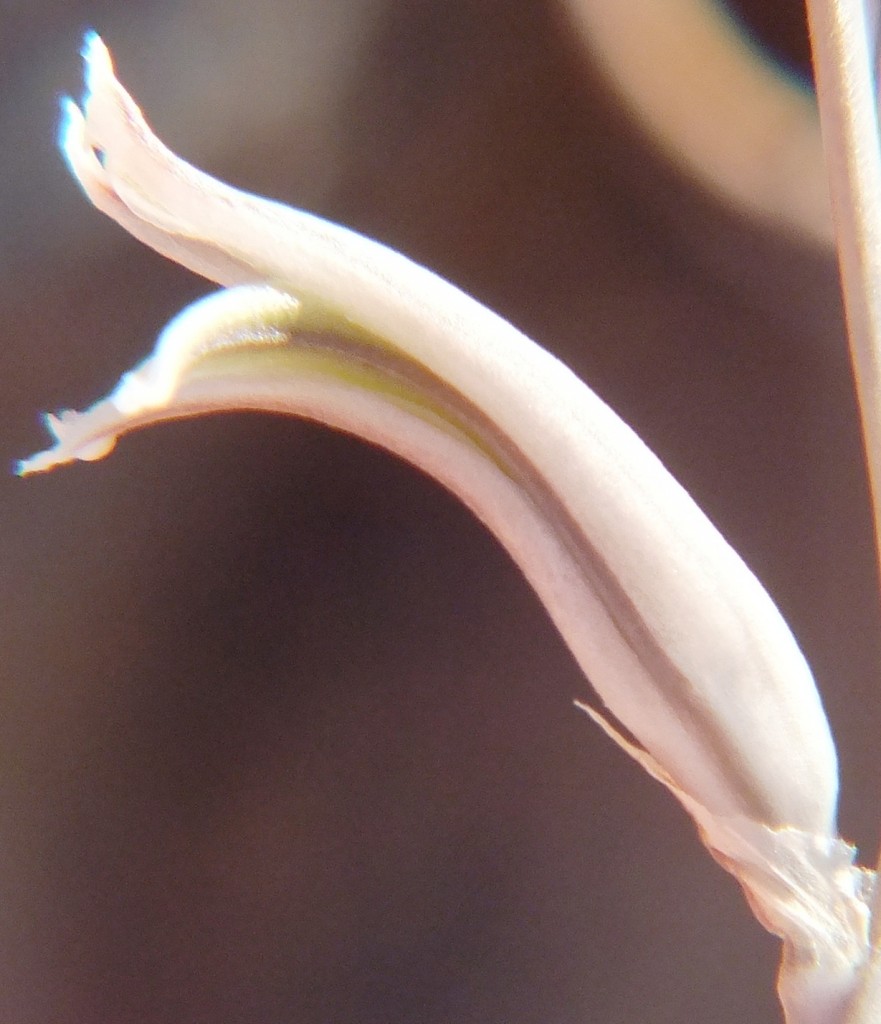
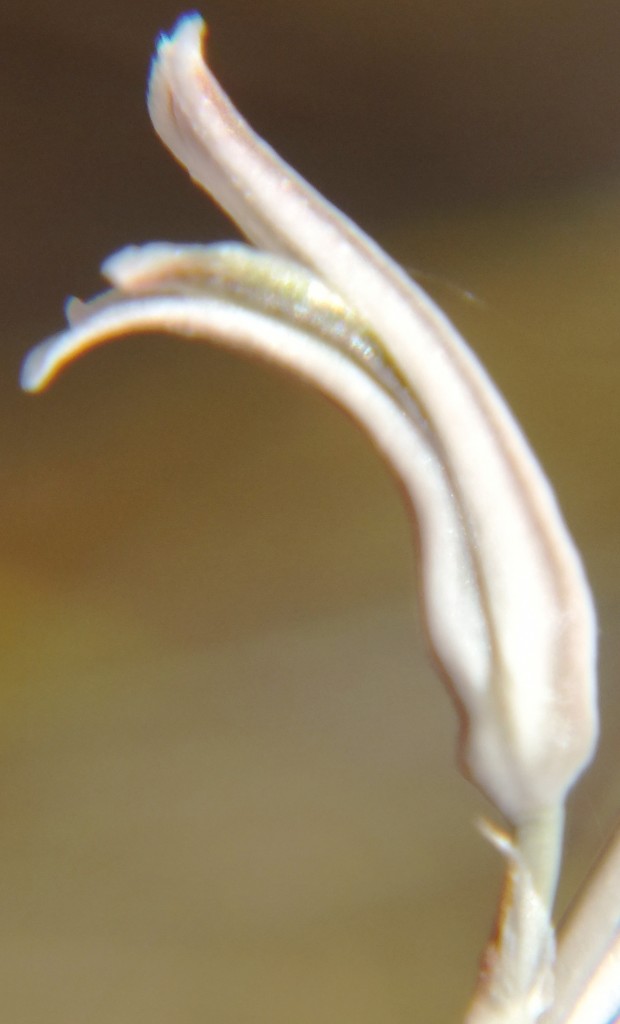
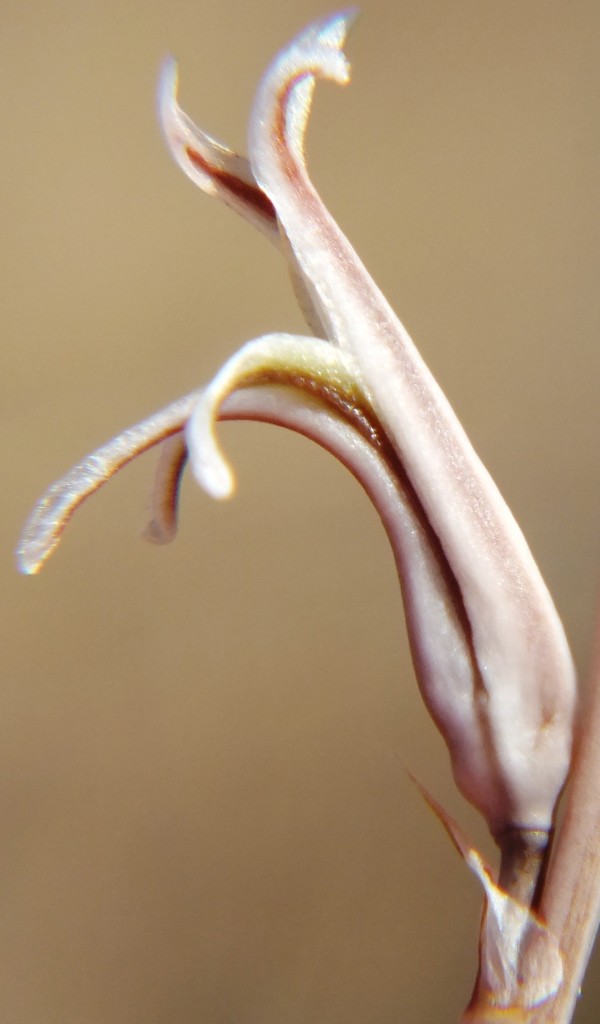
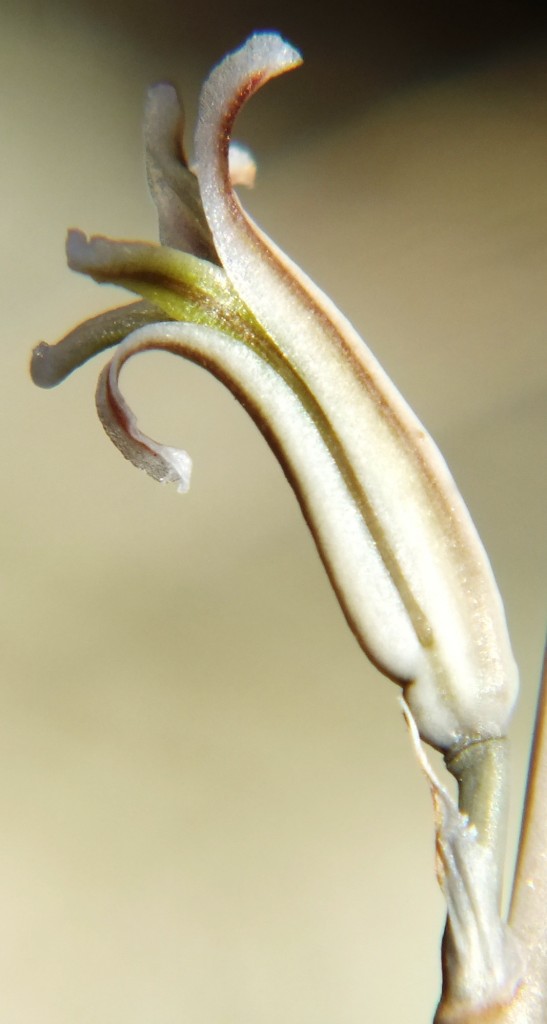
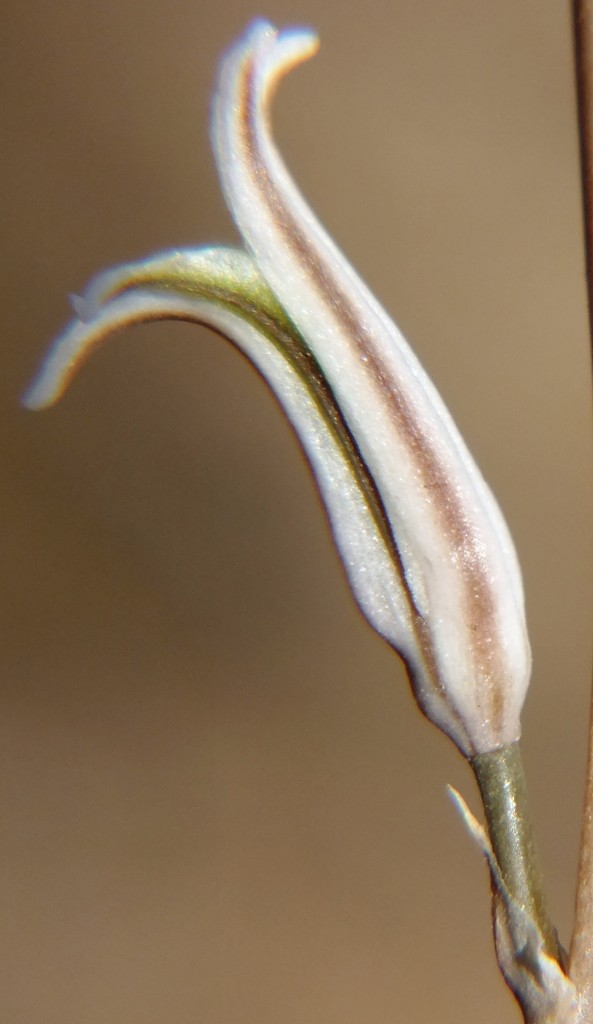
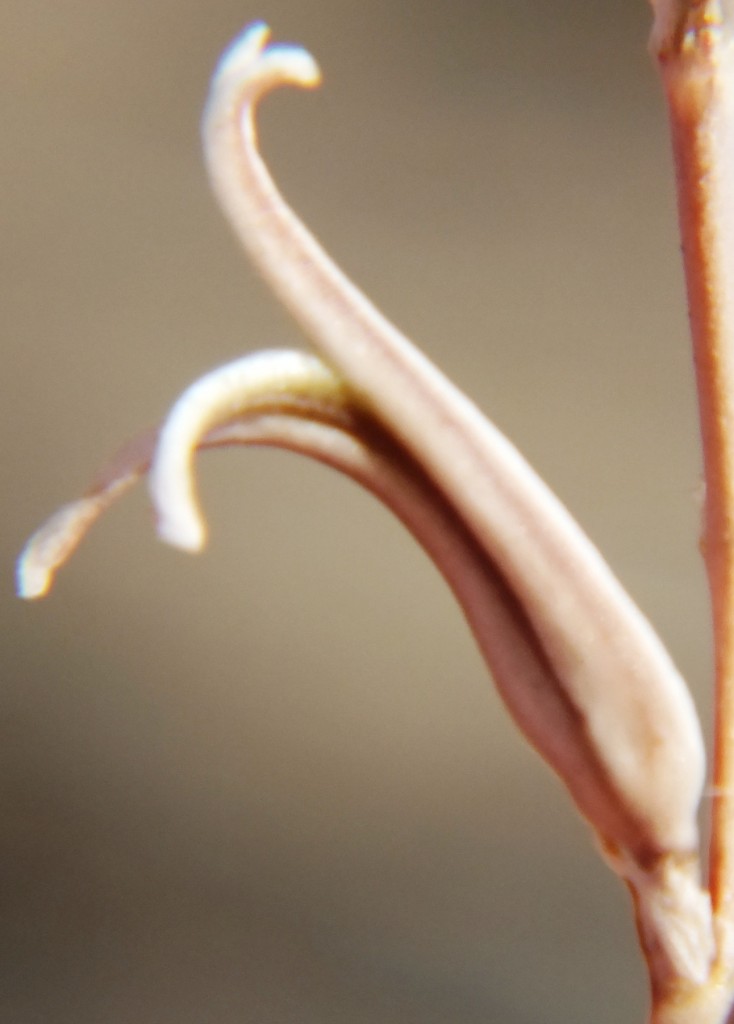
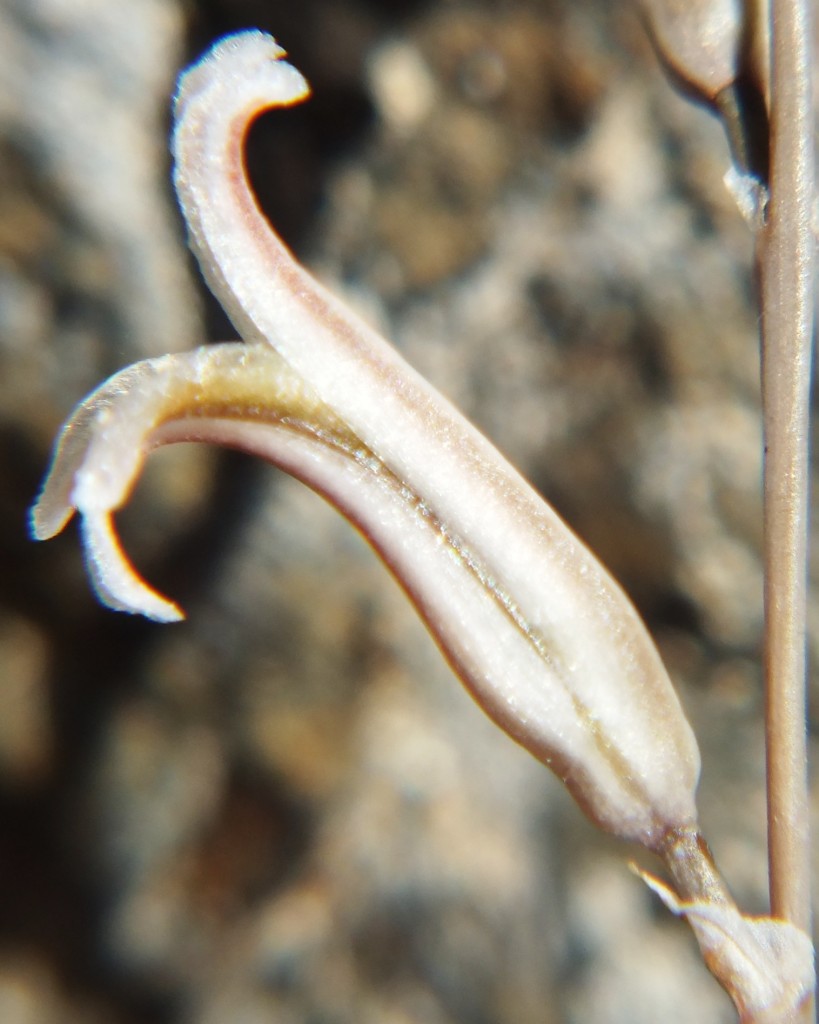
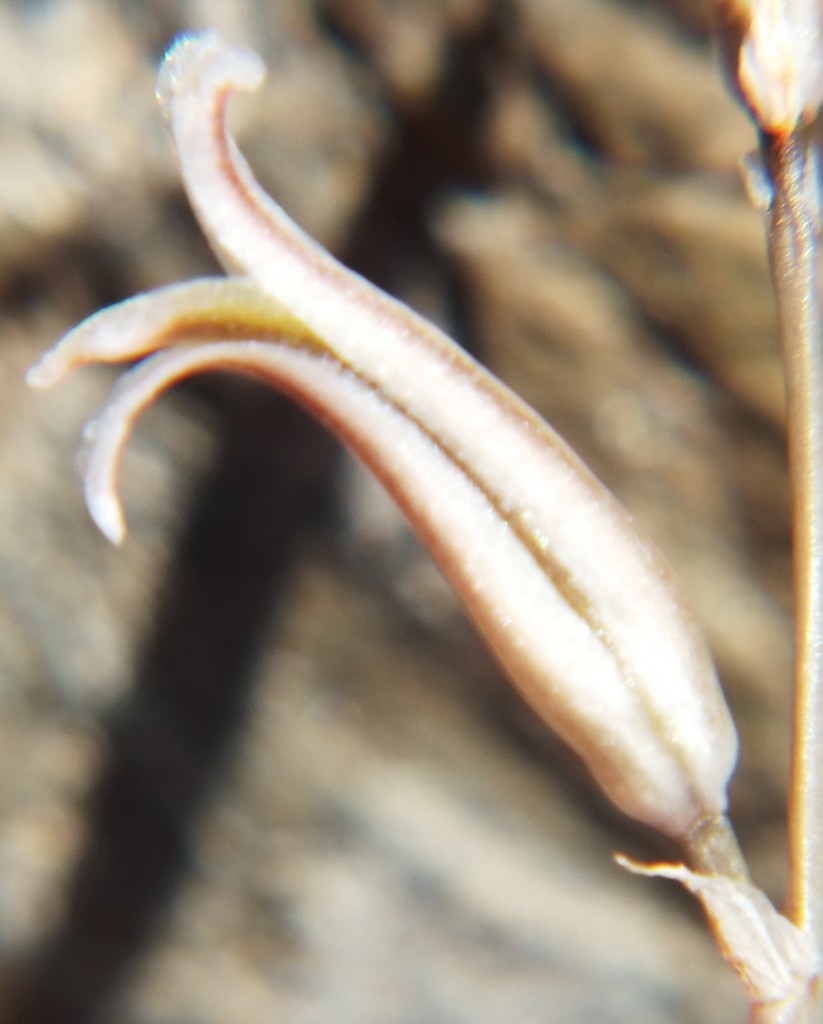
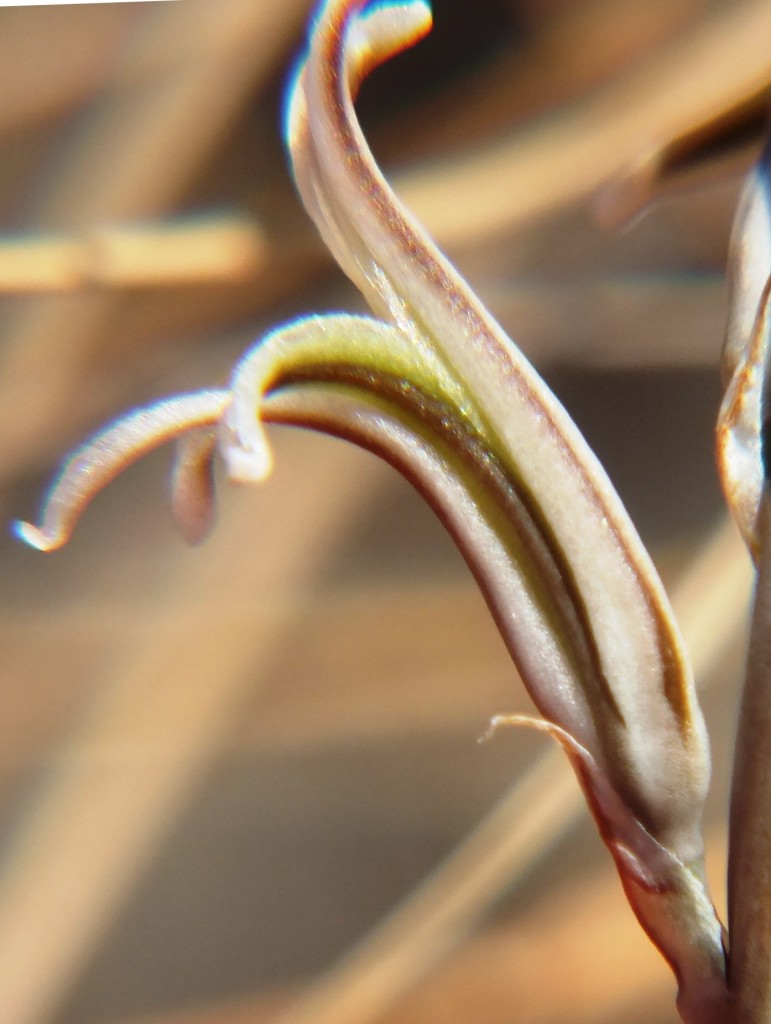

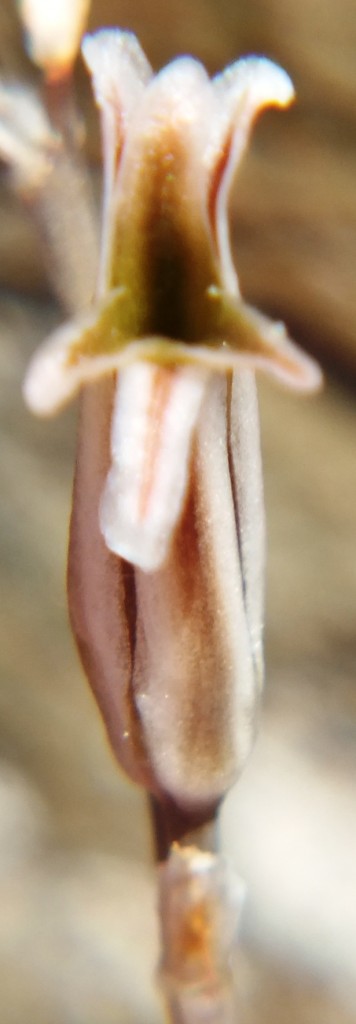
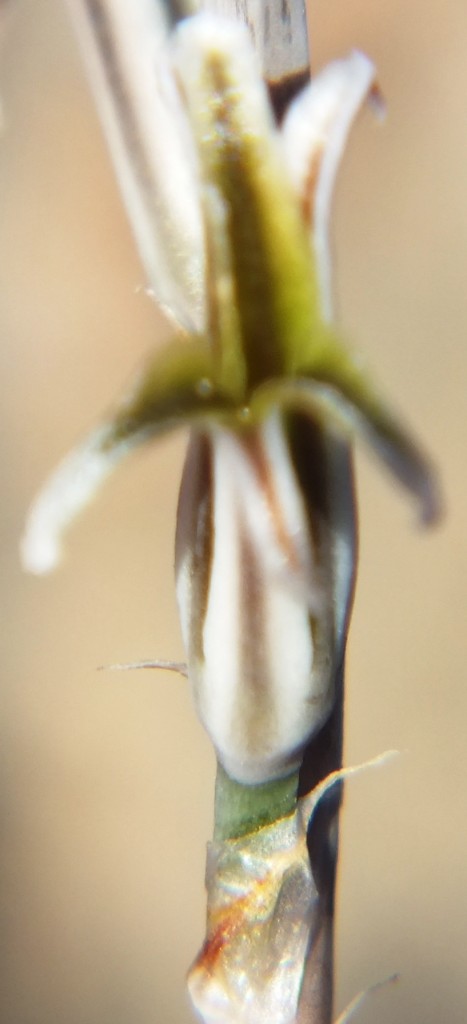




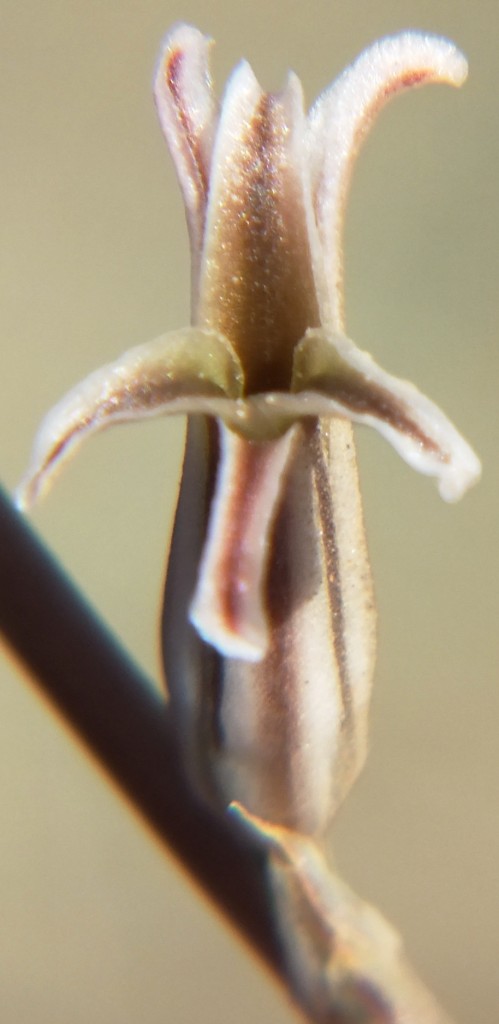
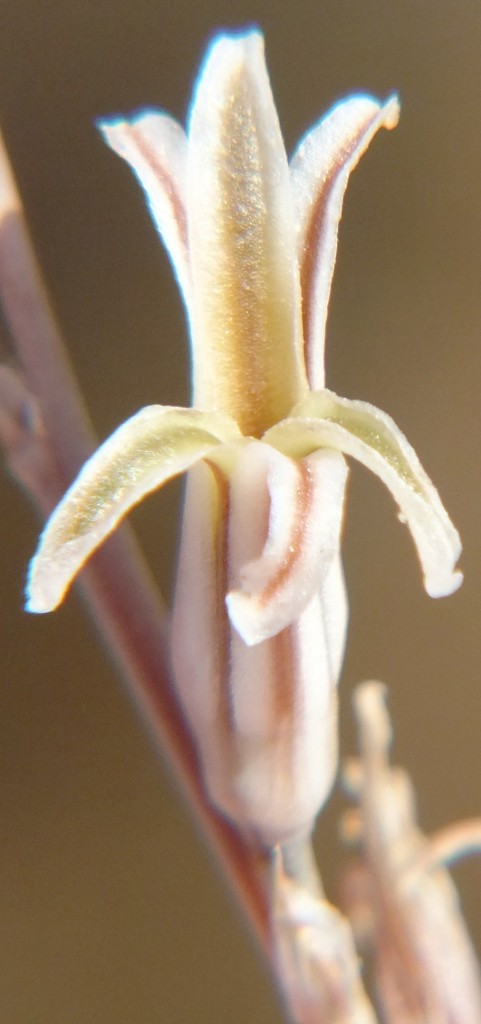
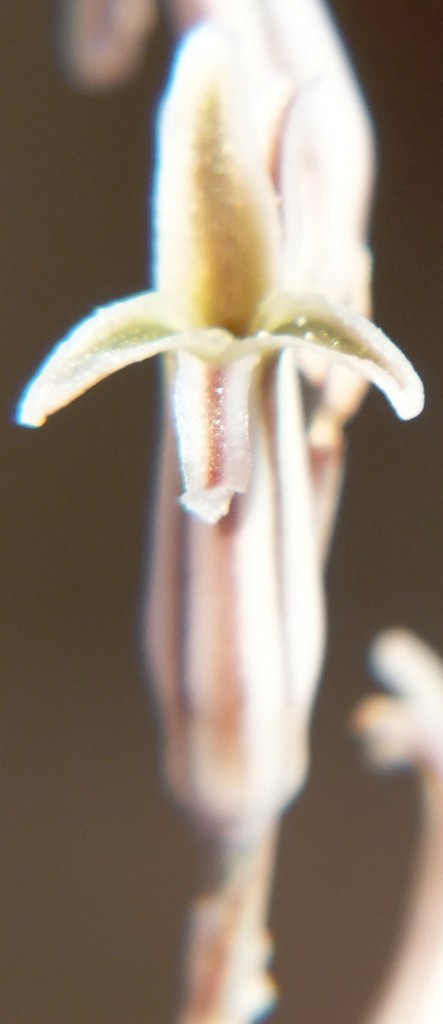

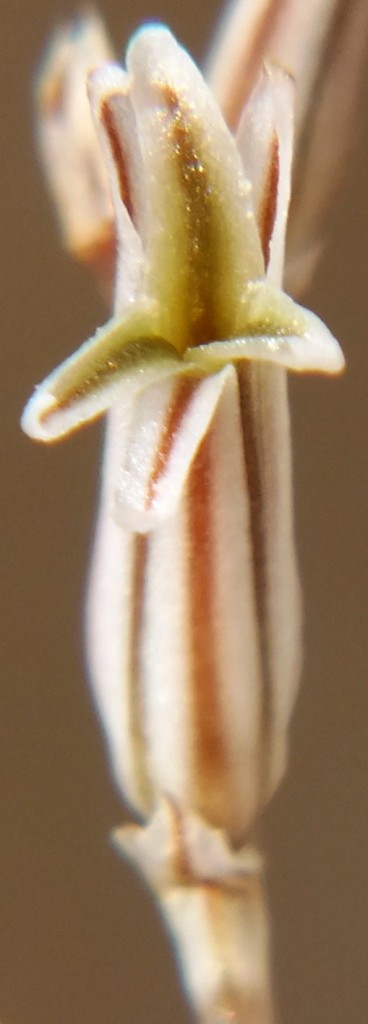
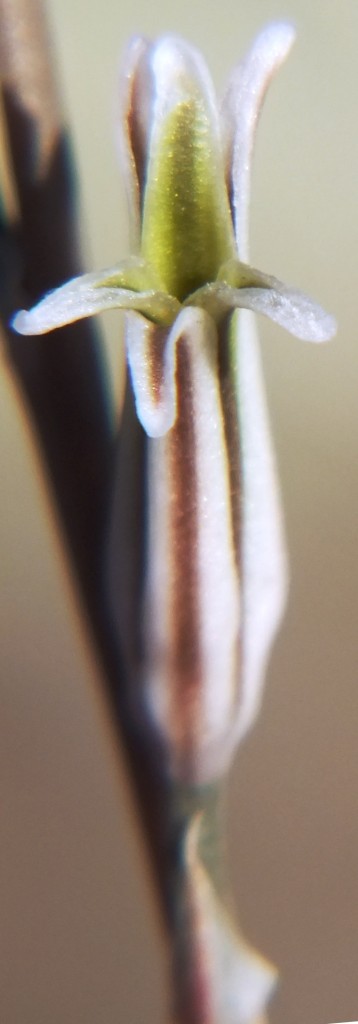


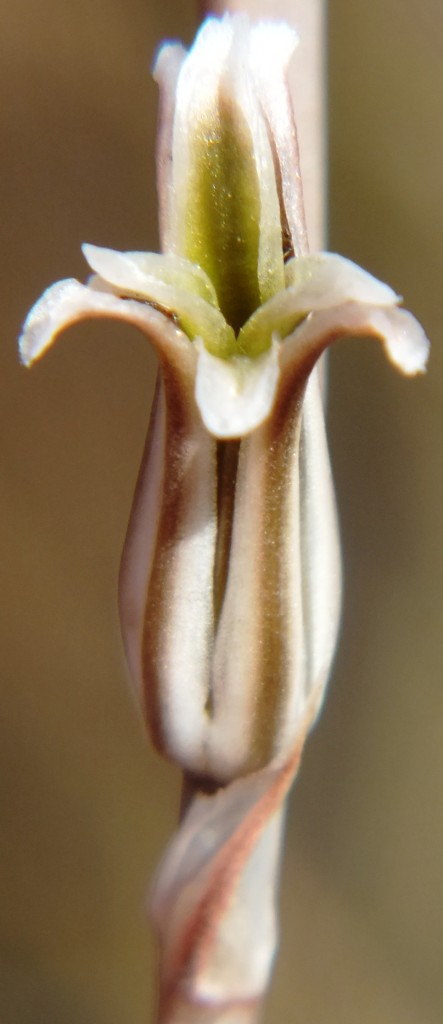
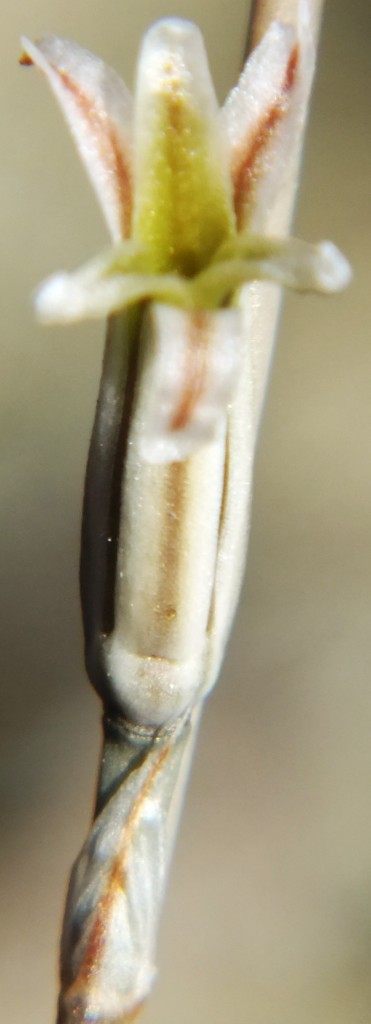
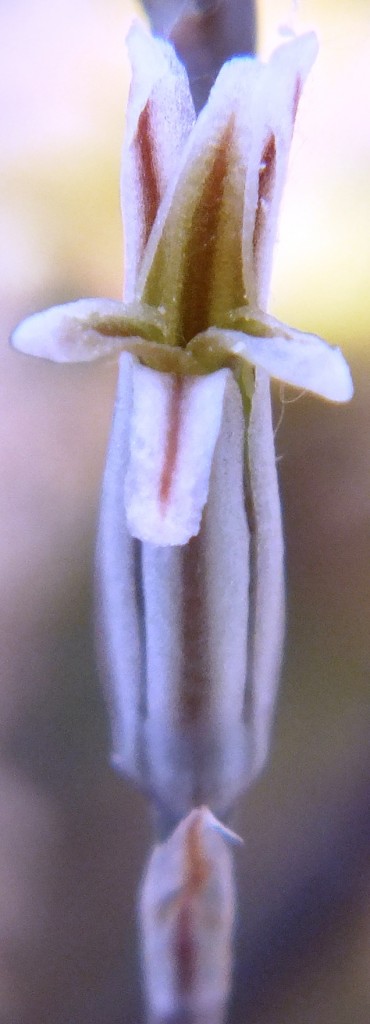


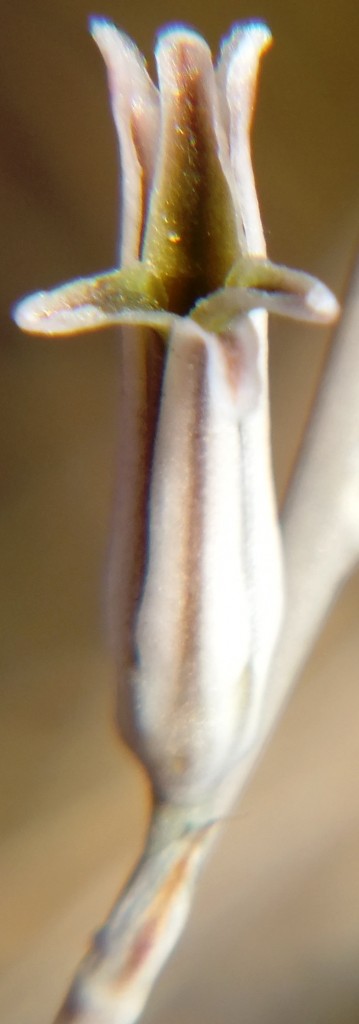




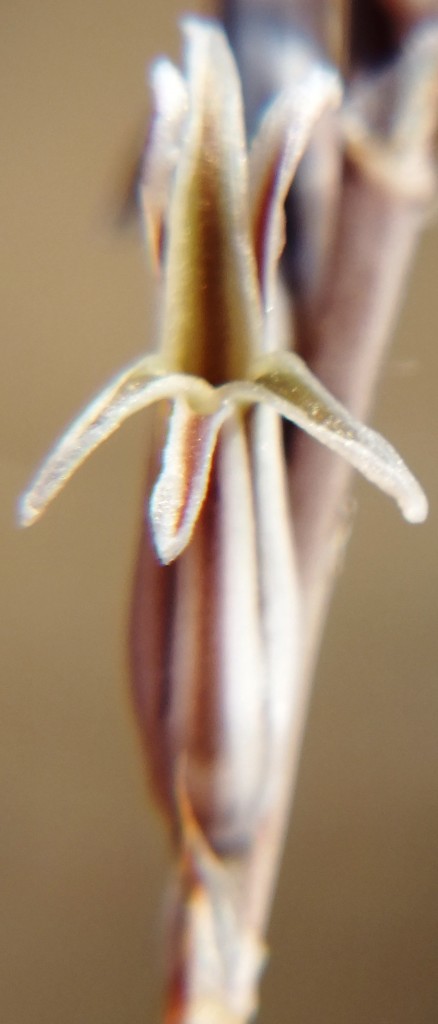
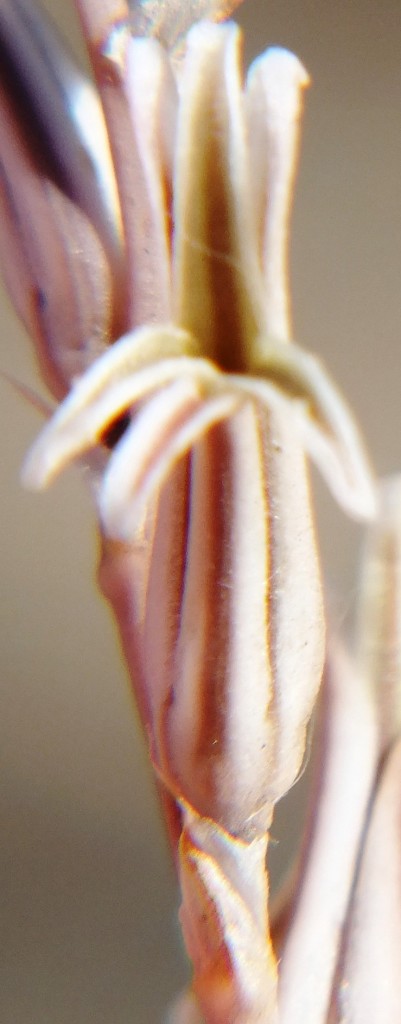

Regarding the flowers of both localities that I illustrate here, there is again the high variability that I discuss and illustrate in all the preceding parts of Haworthia Update 8. What we now need is a computer wizard who can perhaps explore the possibility of computerised pattern recognition. In this way to look at trying to arrive at a composite single image that captures the identification of a population. It boggles my mind that someone might think, say ‘beukmannii’, is an array of plants scattered through many populations to so constitute a species.
I have tried to approach this whole problematic, provocative, disputatious subject from a rational objective view based on my own education, experience and acquired knowledge to place it in an environment acceptable to formal botany. That environment has not been all that helpful and conducive to a solution either.
Acknowledgement
I would like to thank Dr. Daryl and Mrs. Priscilla Hackland, and Andy Hackland for information and assistance in visiting the Greyton Zigzag Path population. Mr. P.G. Viljoen not only kindly allowed us access to Schuitsberg but took the trouble to drive us there to show us a wider view of the localities and also the commemorative plaque that mark the old travel route. ♦
Haworthia flowers – some comments as a character source, Appendix 7
Three further records and data for Haworthia mirabilis.
The populations covered here are:
6631 H. mirabilis ‘mundula’, Mierkraal, SW Bredasdorp.
6635 H. mirabilis ‘badia’, NW Napier.
6639 H. mirabilis ‘sublineata’, S Bredasdorp.
There has been some published comment about the distinctiveness of these three populations stating that I do not recognise this because I treat them as variants of single species. The implication is that I do not see any difference. This is quite bizarre. At the present moment I have a digital library of 165 H. mirabilis populations and this is by no means all there are. There is an enormous amount of variation both in and between these populations. If the specified three are to be recognised as species, it means that there is a wholly unrealistic number of species quite out of keeping even with an already highly diverse set of species of the Cape Flora. Furthermore, as I point out in appendix 6, there is no typical variety of H. mirabilis in any practical sense because the variability in the population designated by me, as well as that of Schuitsberg apparently preferred by another, precludes it.
6631 Haworthia mirabilis ‘mundula’, Mierkraal, SW Bredasdorp.
6631 as a variant ‘mundula’ is only known at this one locale. However, similarities can be found elsewhere. The name was introduced by G.G. Smith without any existing recognition of the prior name H. mirabilis and where that may have been applied. Because only illustration exist for which artistic license must be invoked, there is some doubt about just where the original plant may have originated. Frankly I do not think this even matter because the fact of the individual variation that renders the automatic recognition of typical varieties in Haworthia meaningless.
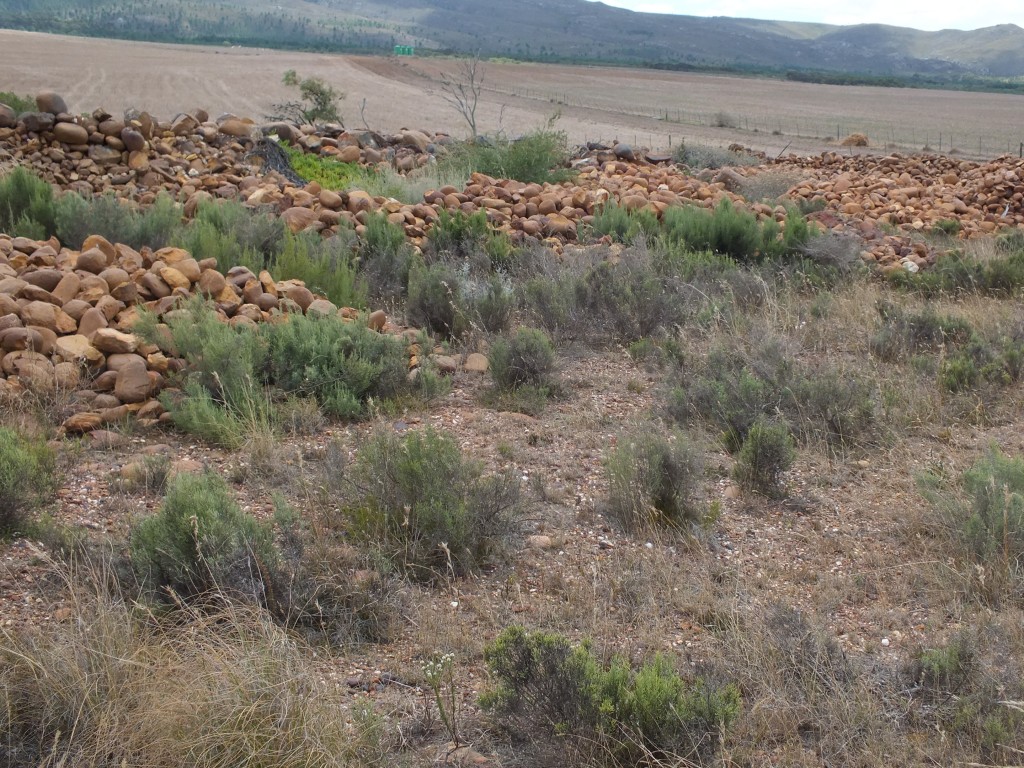
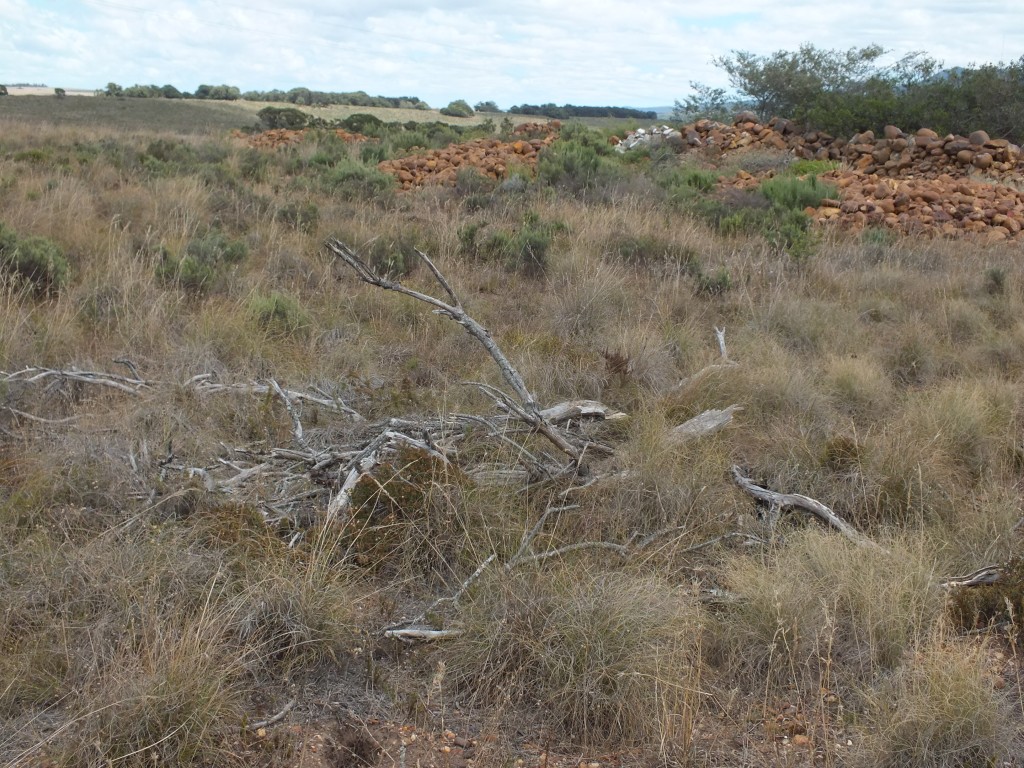
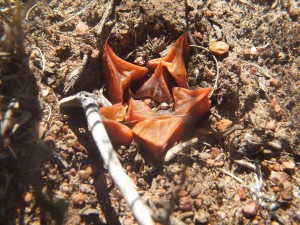

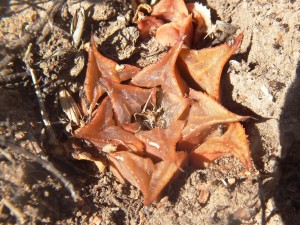
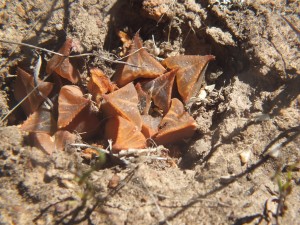
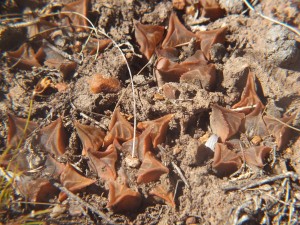
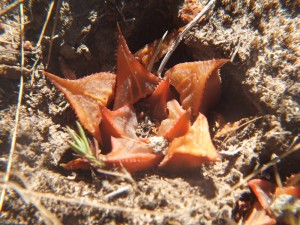
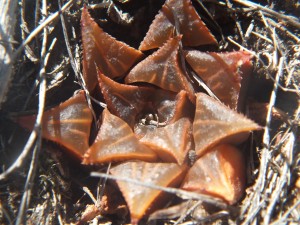

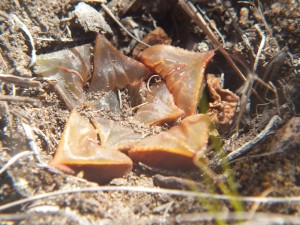
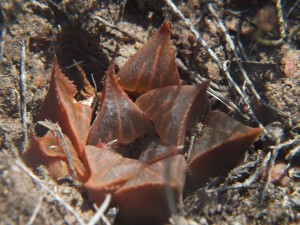
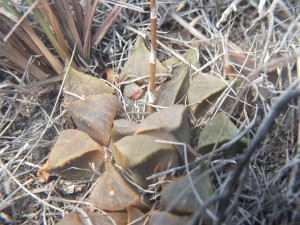
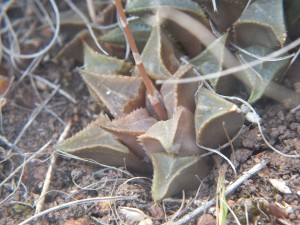
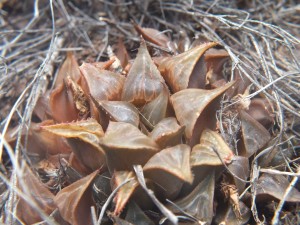
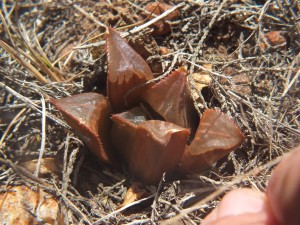

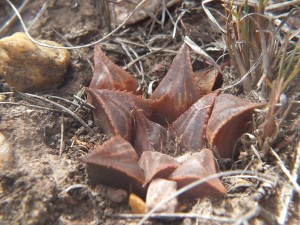
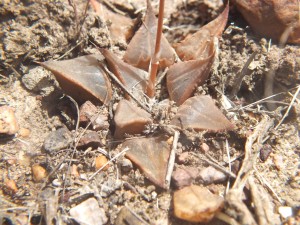
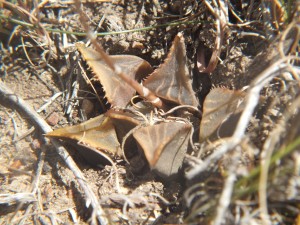


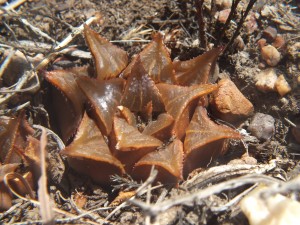
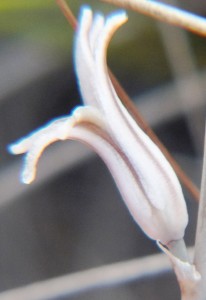
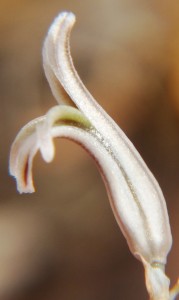

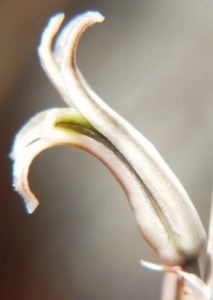
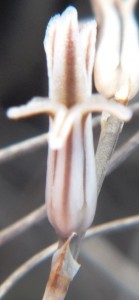

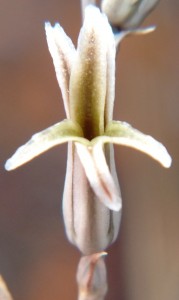


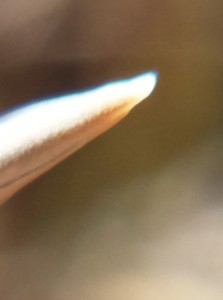
6635 Haworthia mirabilis ‘badia’, NW Napier.
6635 as a variant is generally thought to be only one locale too. It in fact can be seen to be part of a continuum that extends nearly 4km westwards in the same geological stratum. Furthermore it is complemented by quite different variants in at least seven known populations to the north and east. Exploration is by no means complete.
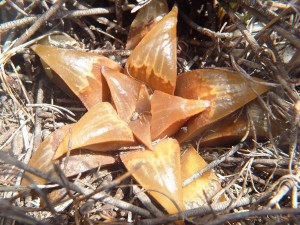

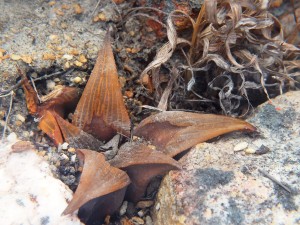
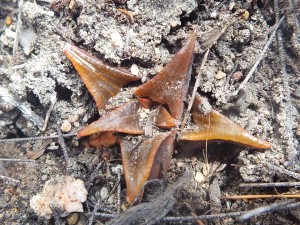
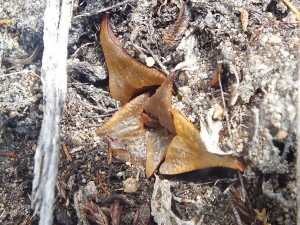
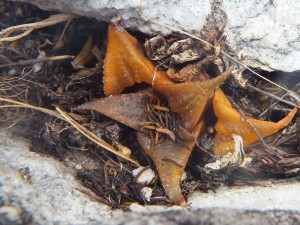

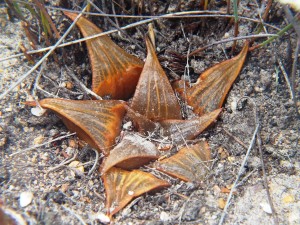
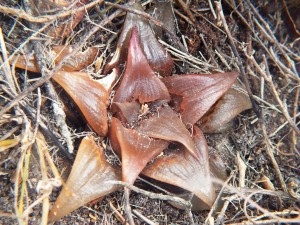
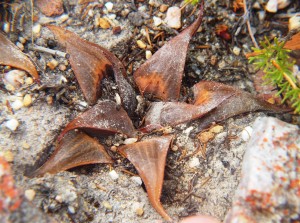
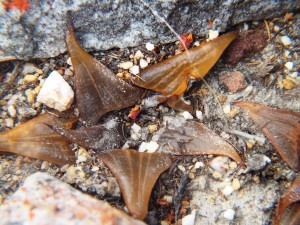
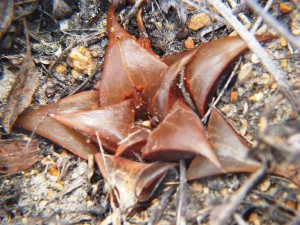
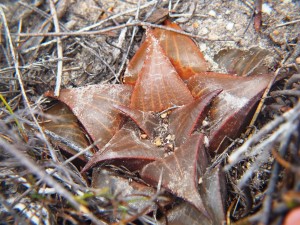
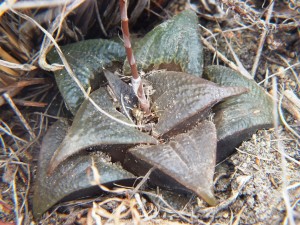

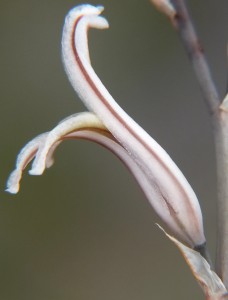

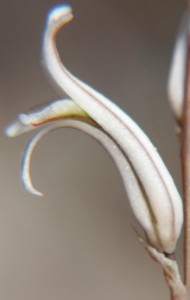
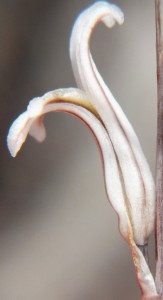
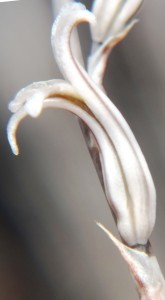
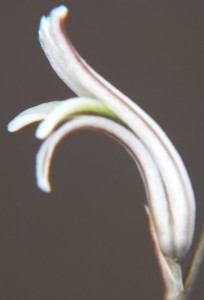
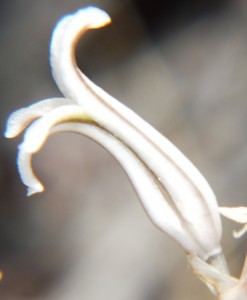
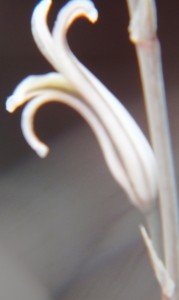
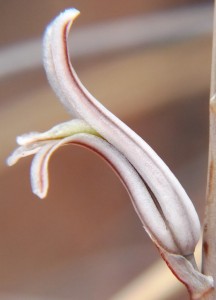

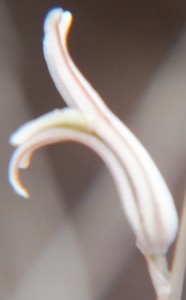
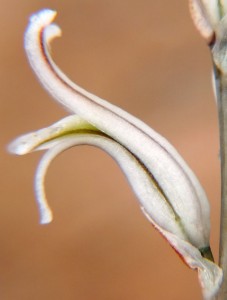


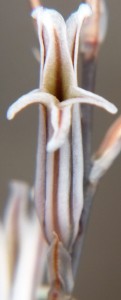
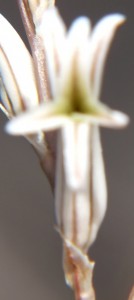

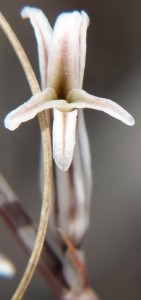

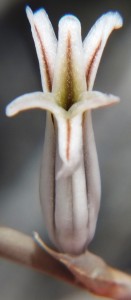
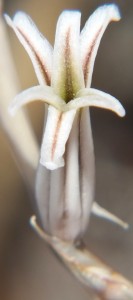
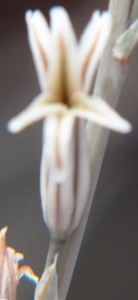
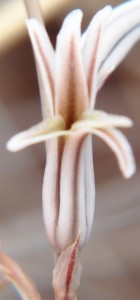
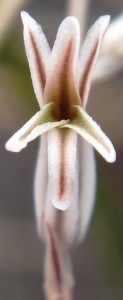
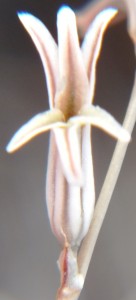

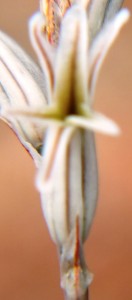
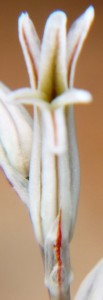
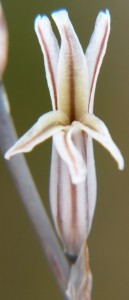
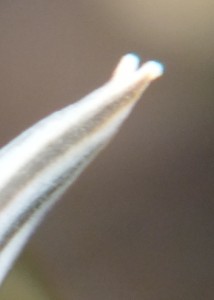

6639 Haworthia mirabilis ‘sublineata’, S Bredasdorp.
6639 as a variant is known immediately south of Bredasdorp, but has been reported further to the southeast in the same stratum. However, there were two populations north of the town no longer extant. Illustrations are available in the literature and herbarium. Based on these, the same illogic that suggest separation of the three specified above would suggest that these are also discrete species. Further populations exist to the near north and northeast of Bredasdorp that intensify and add to the problem of rank. This population, its variation and the statistical difficulties of explaining this variation is discussed in Haworthia Update Vol.4:62-77.
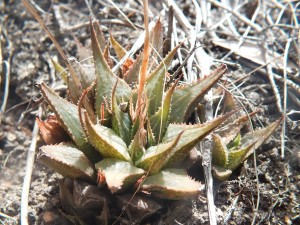
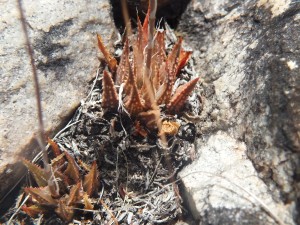
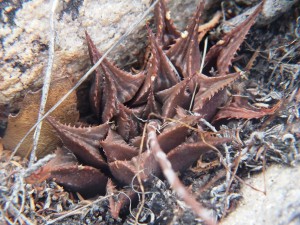
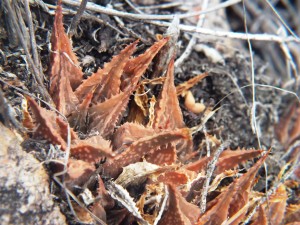

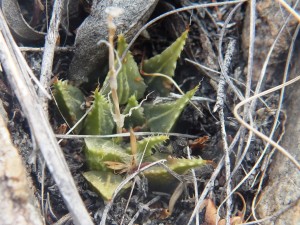
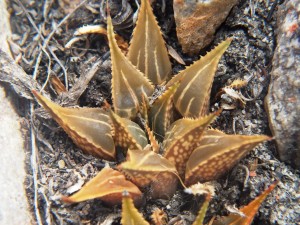
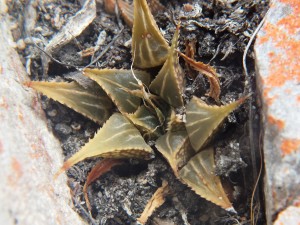



[ed.] flower files names are 6635, but are 6639.
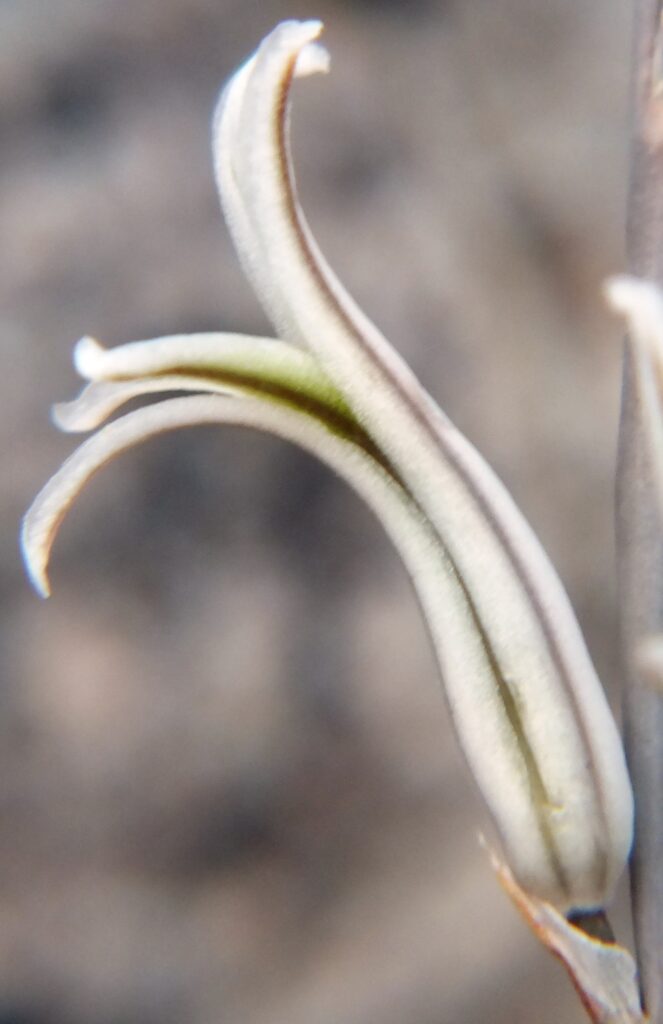
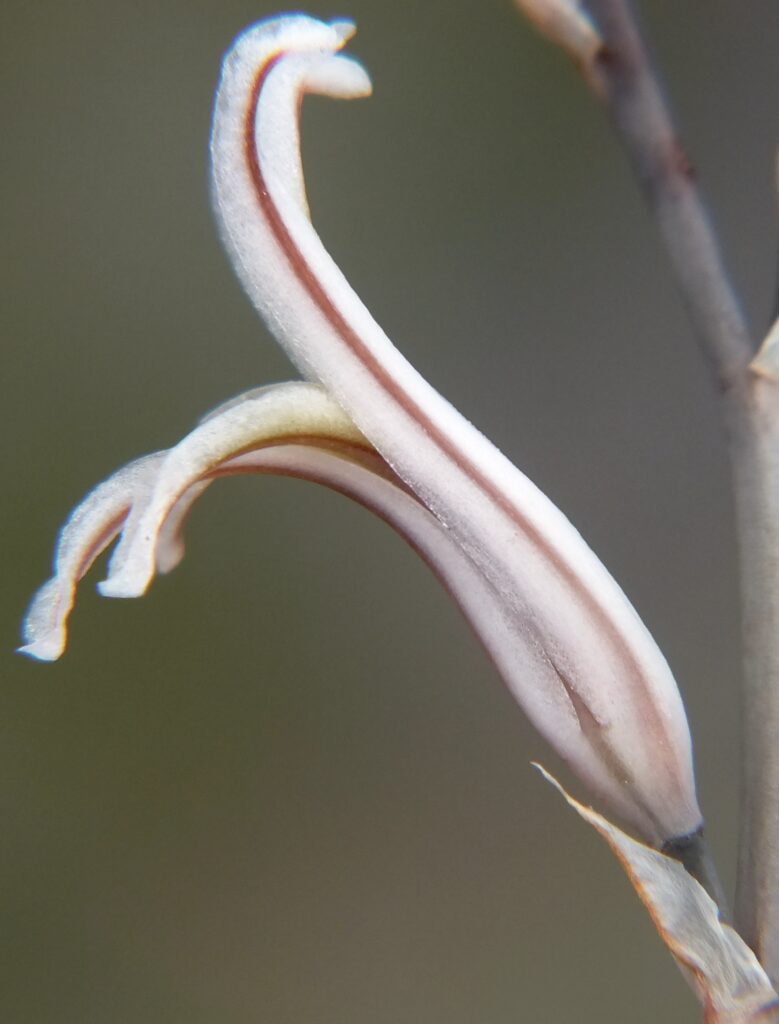
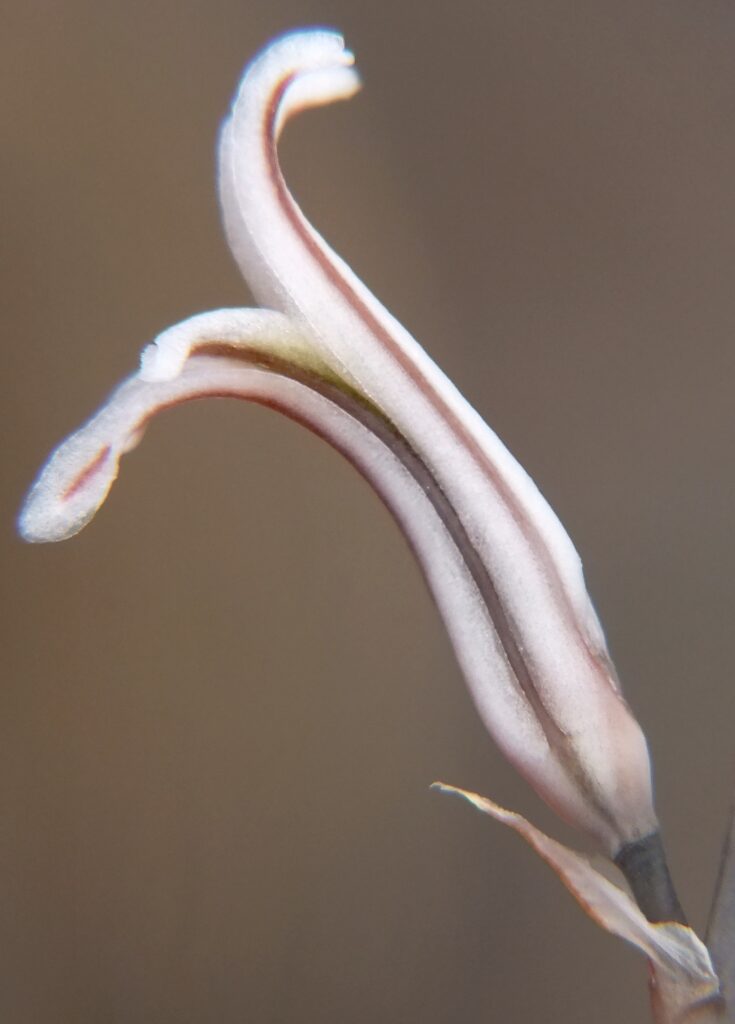
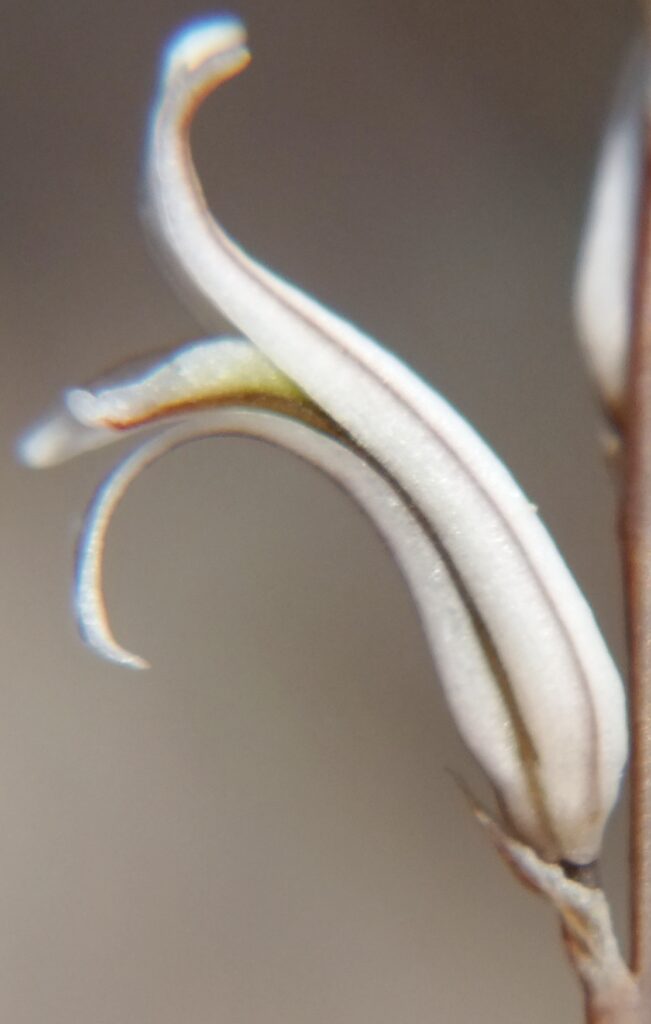
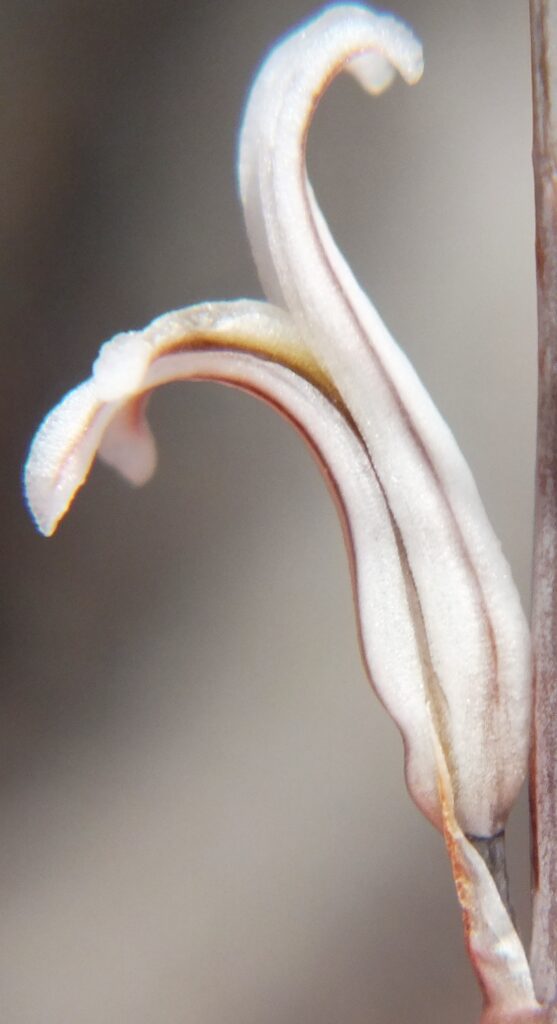
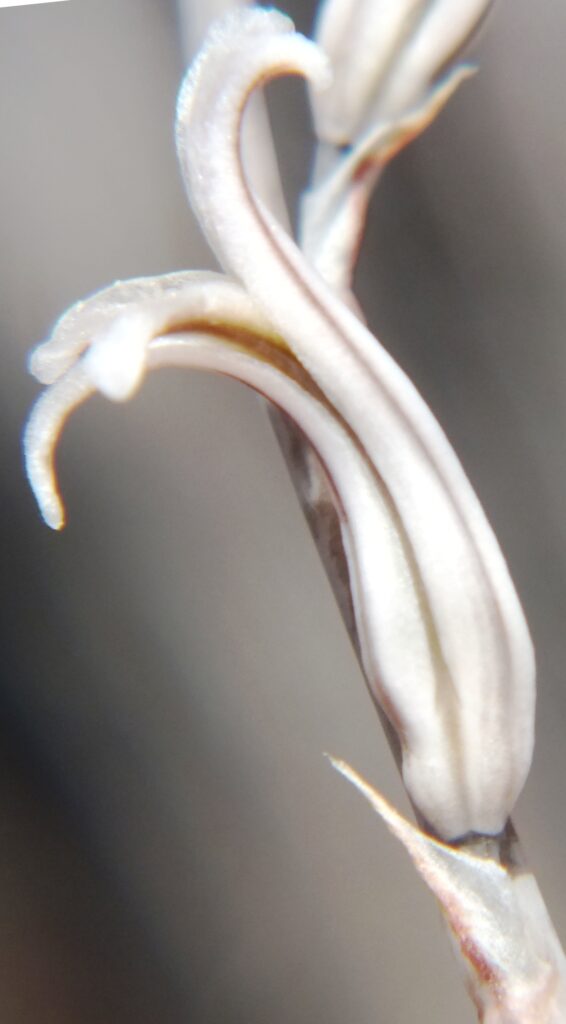
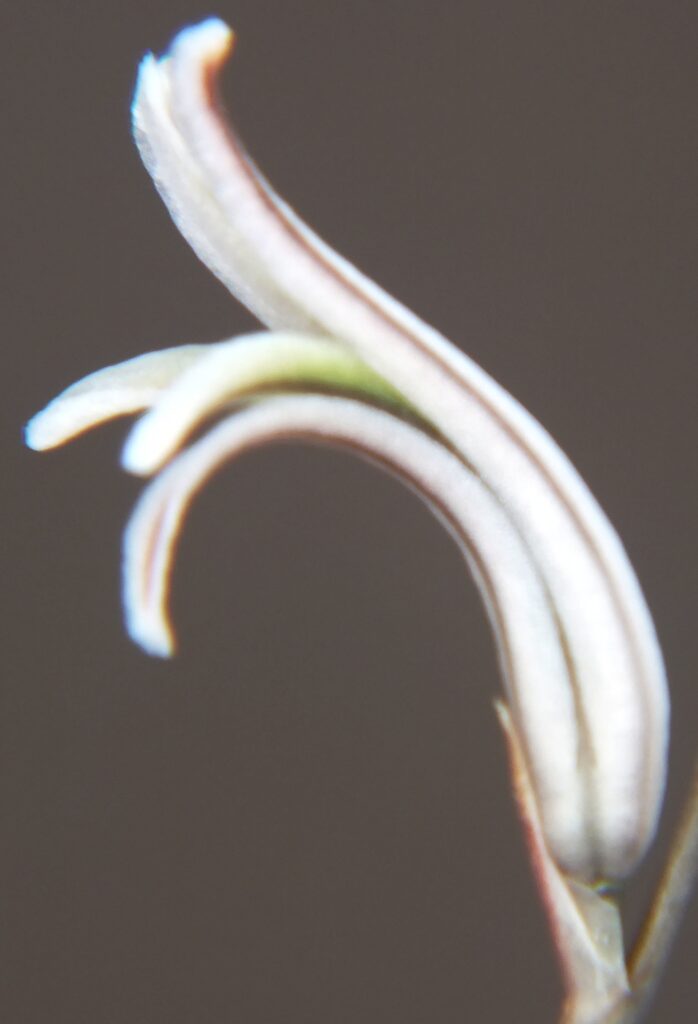
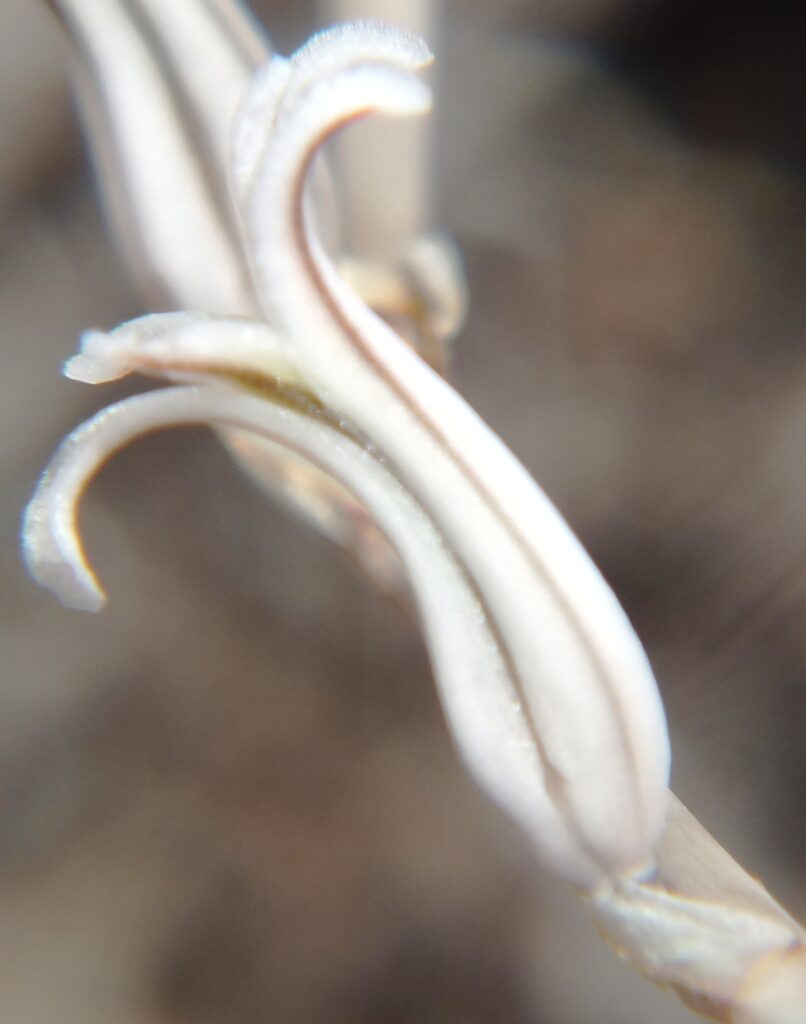

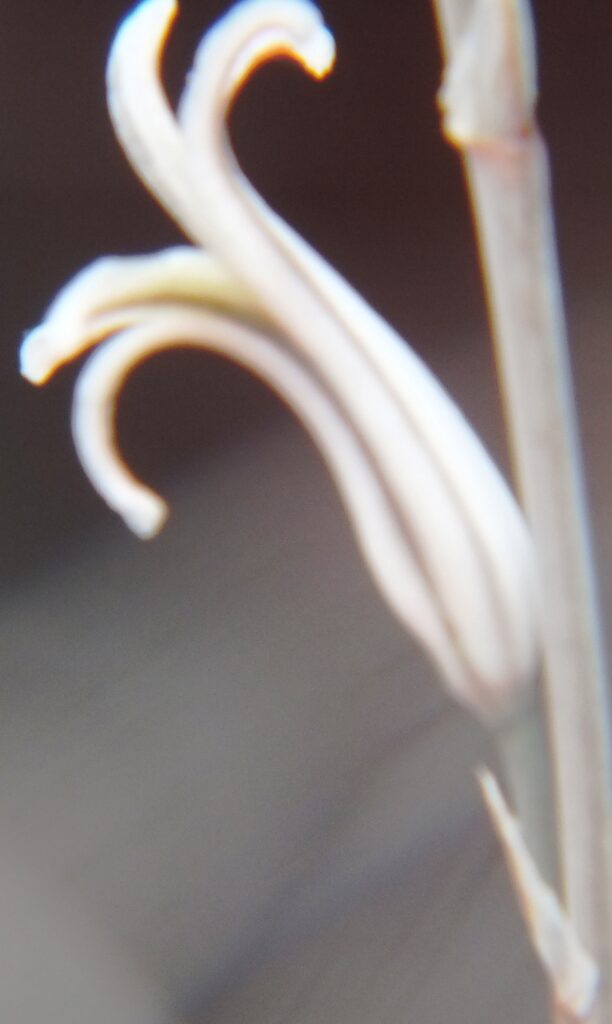
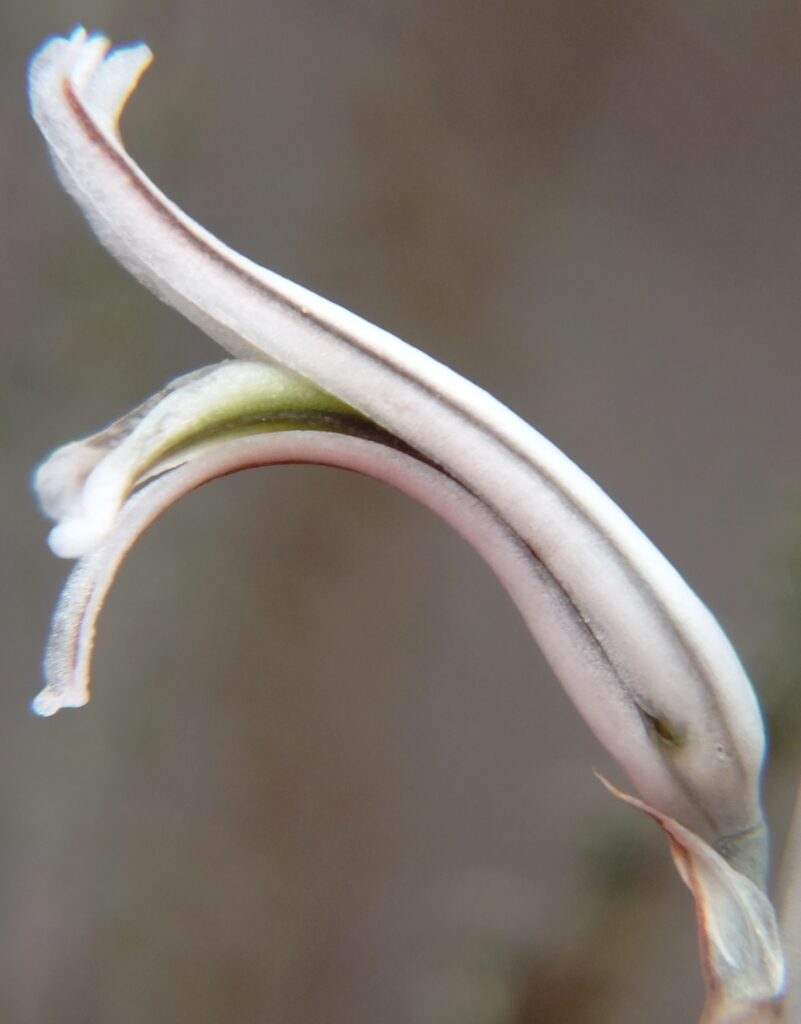
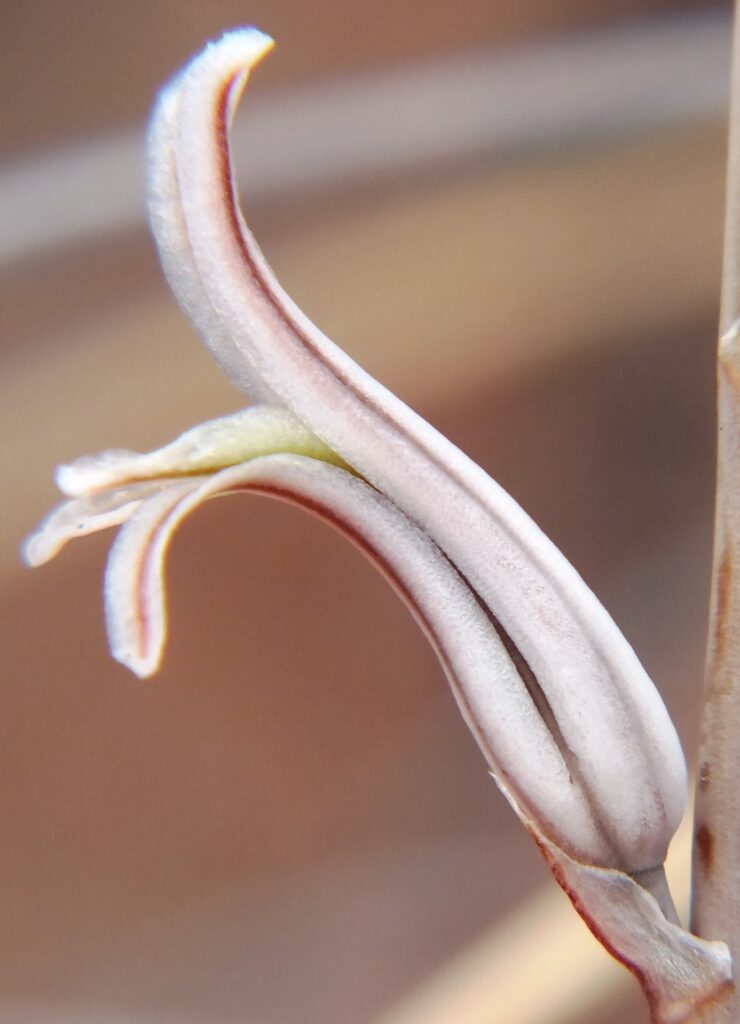

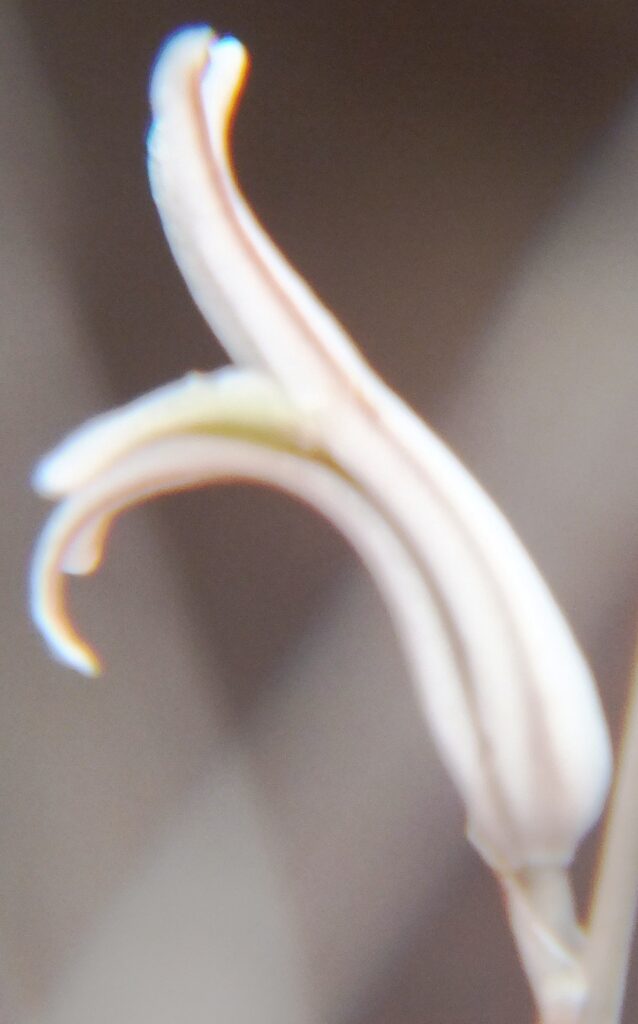
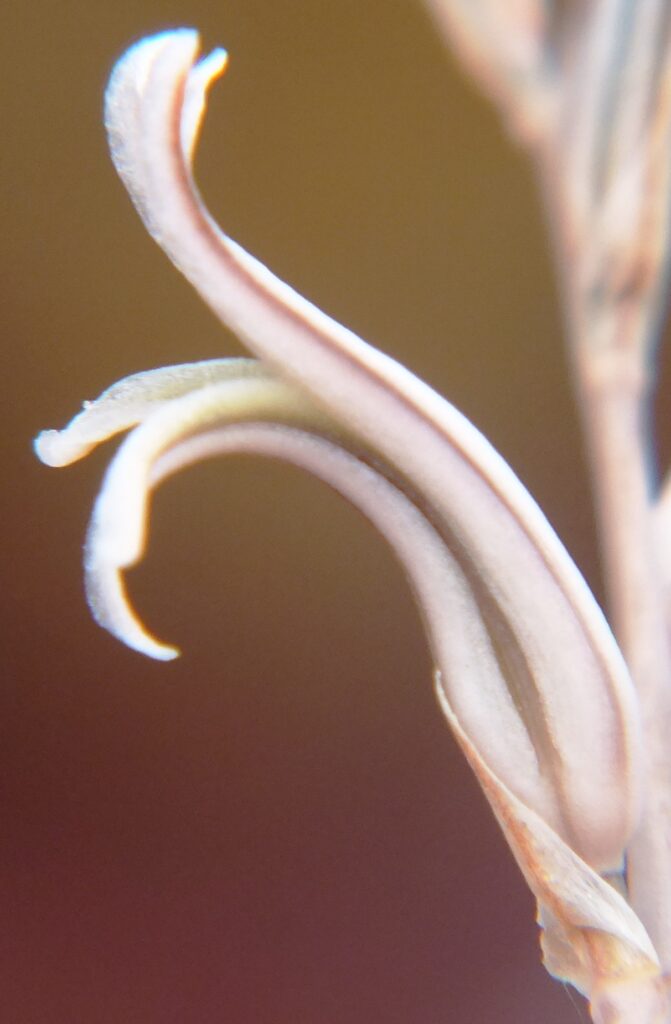
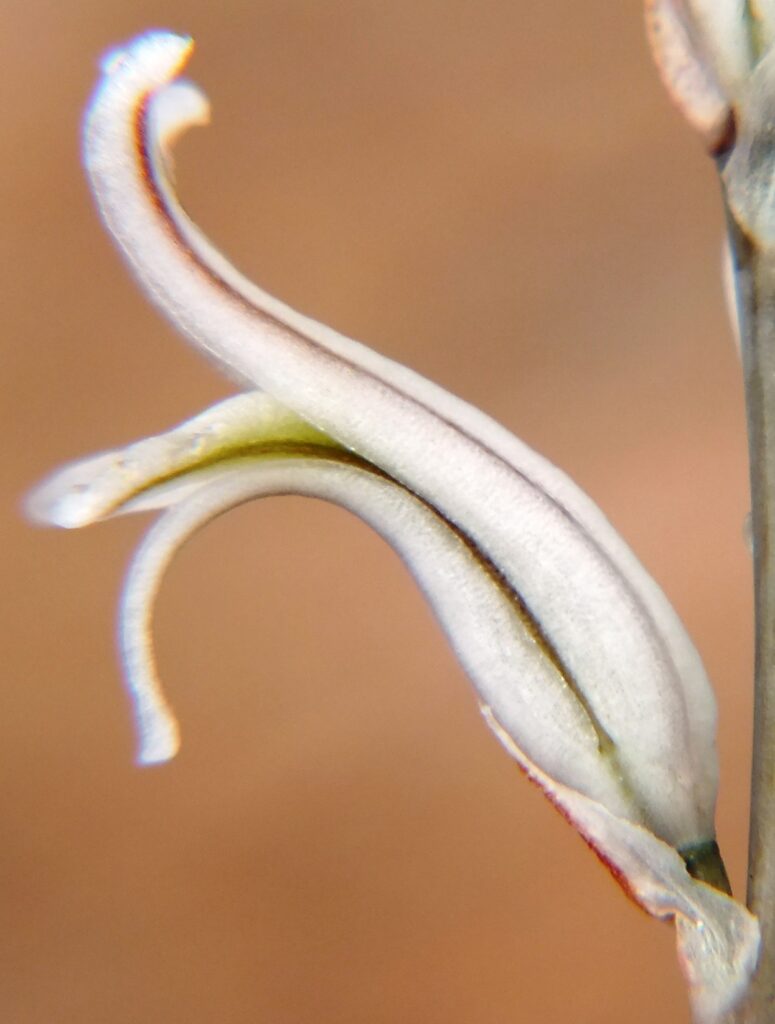
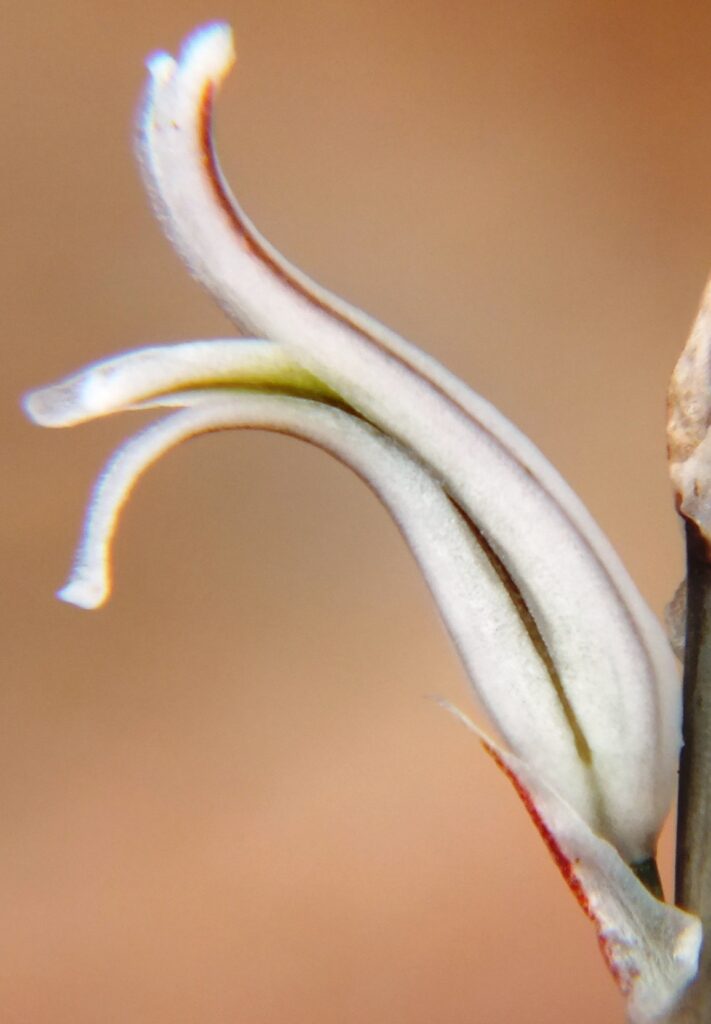

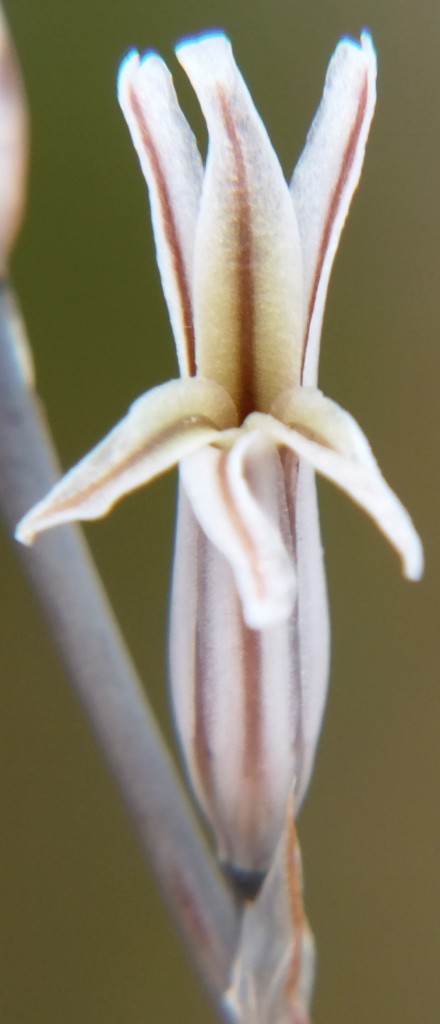
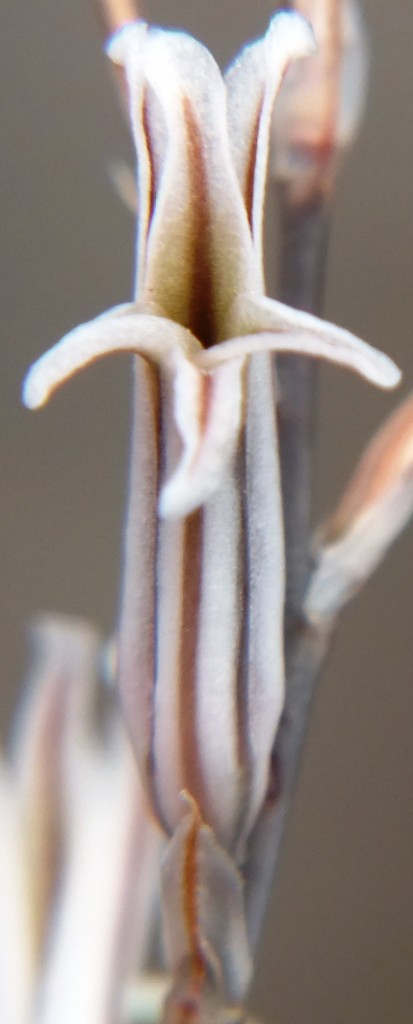
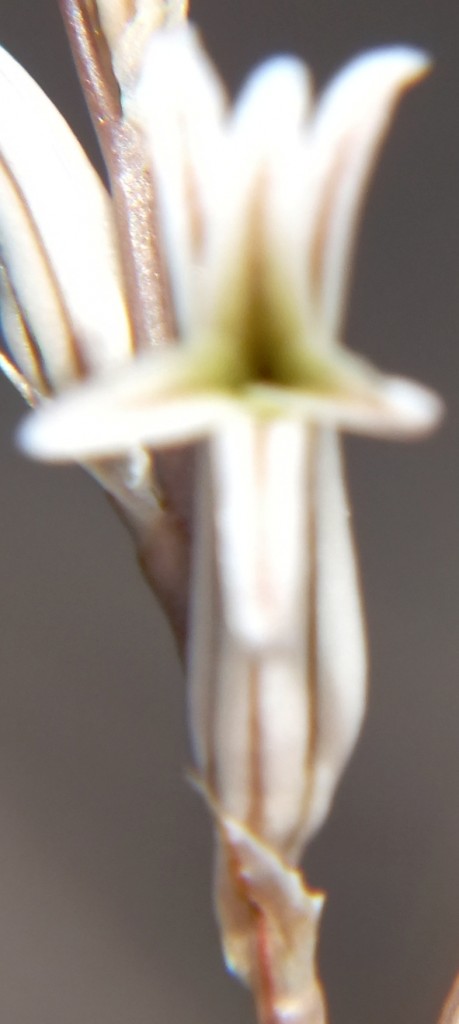
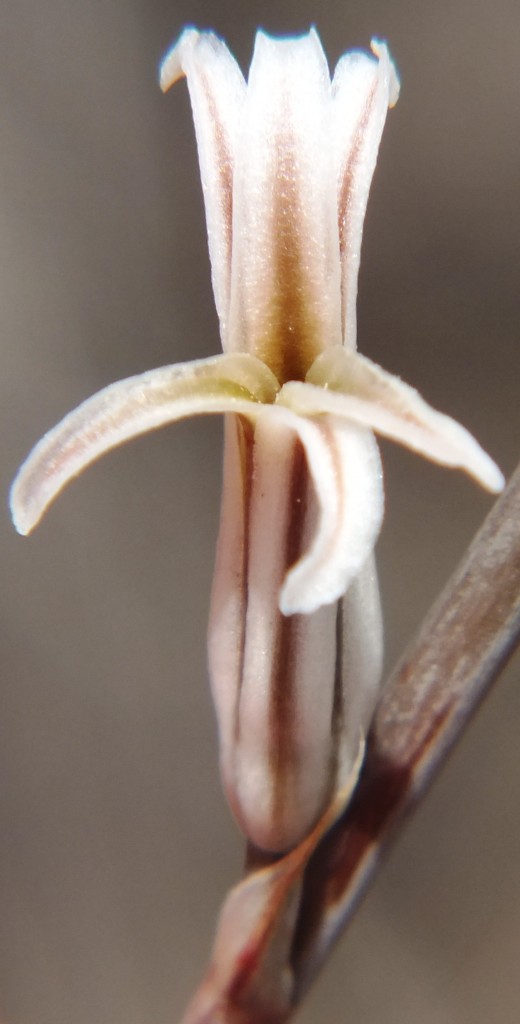
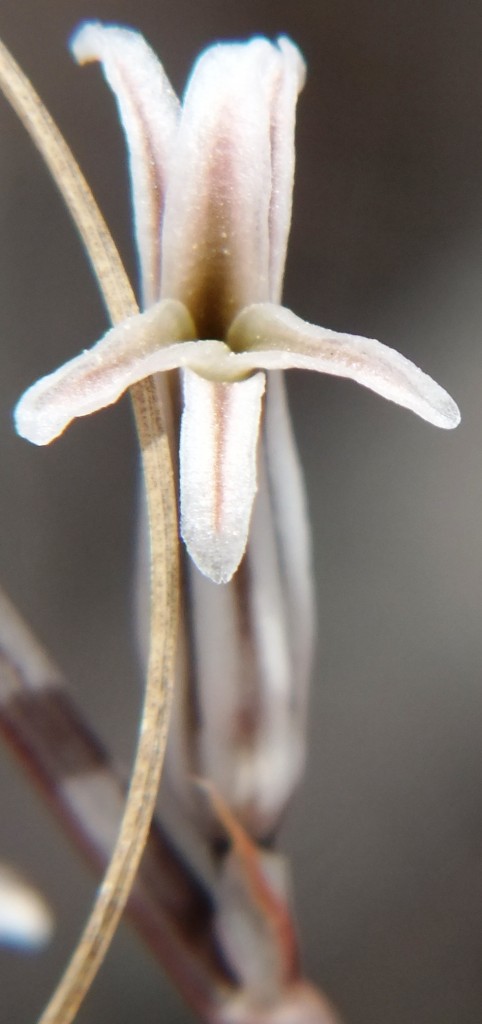

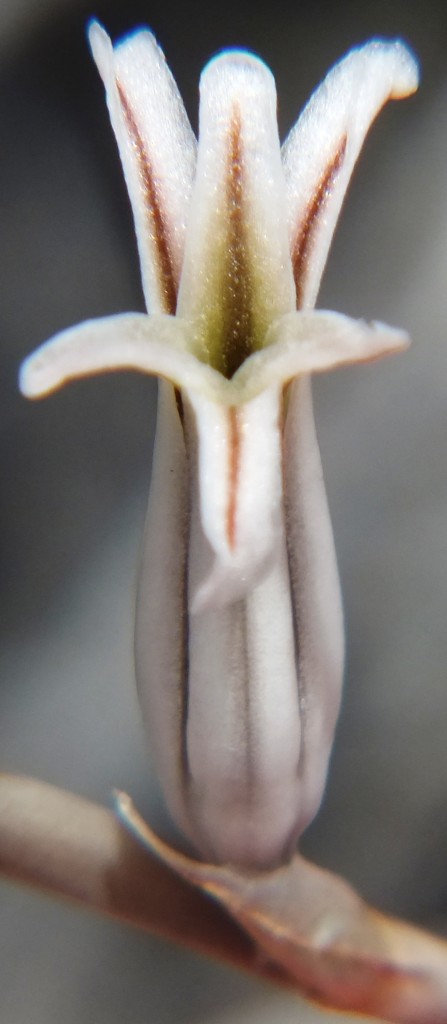

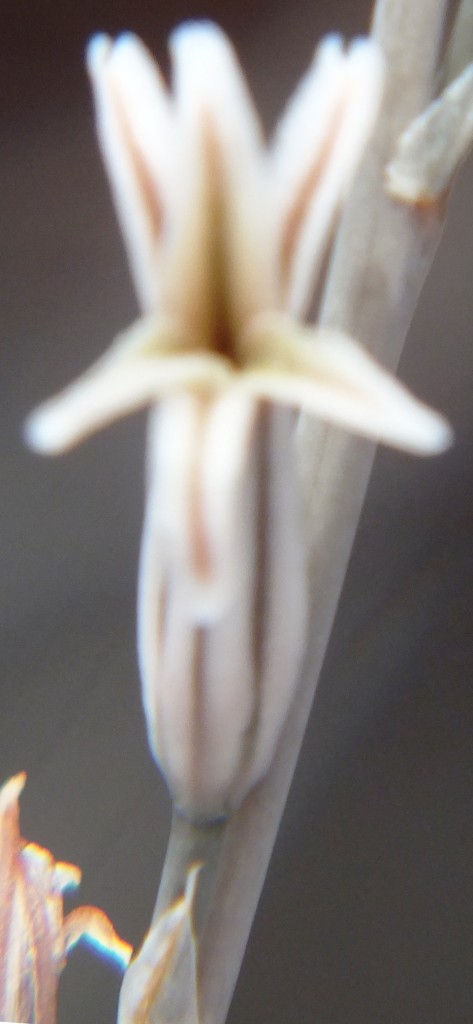
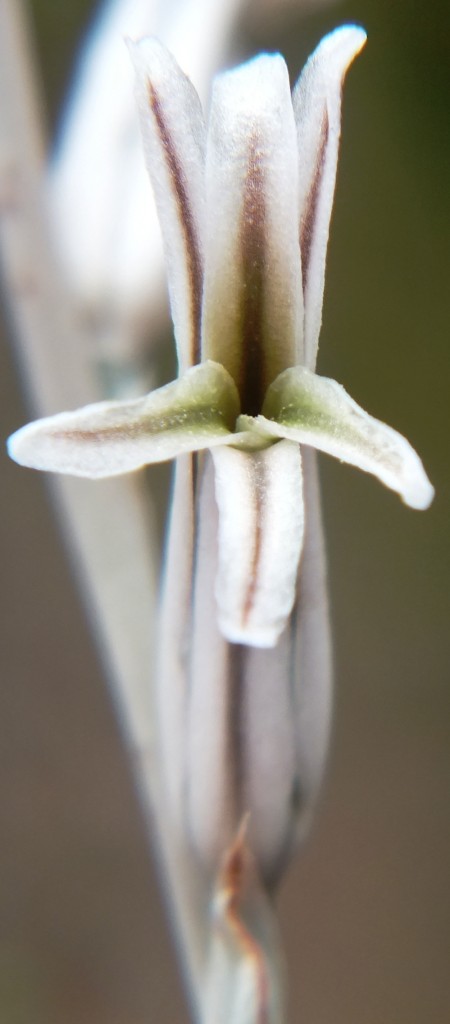
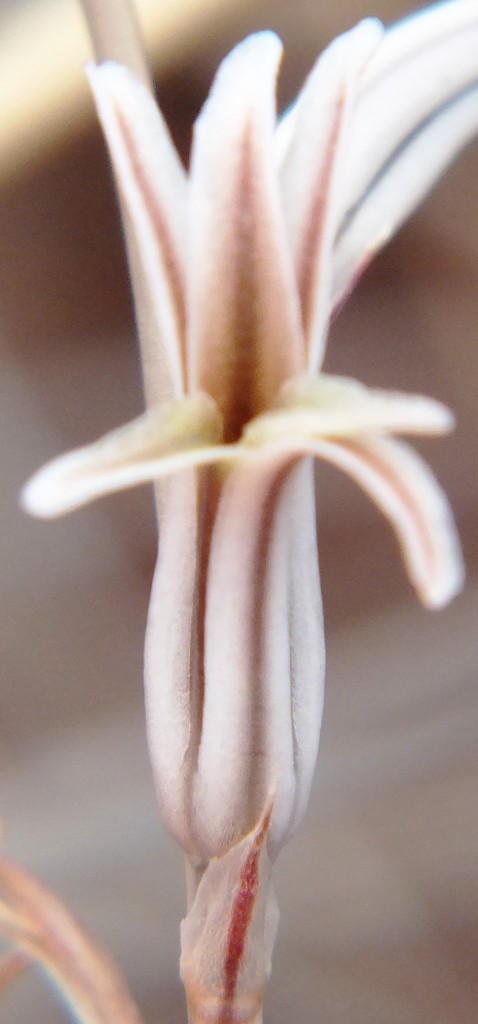


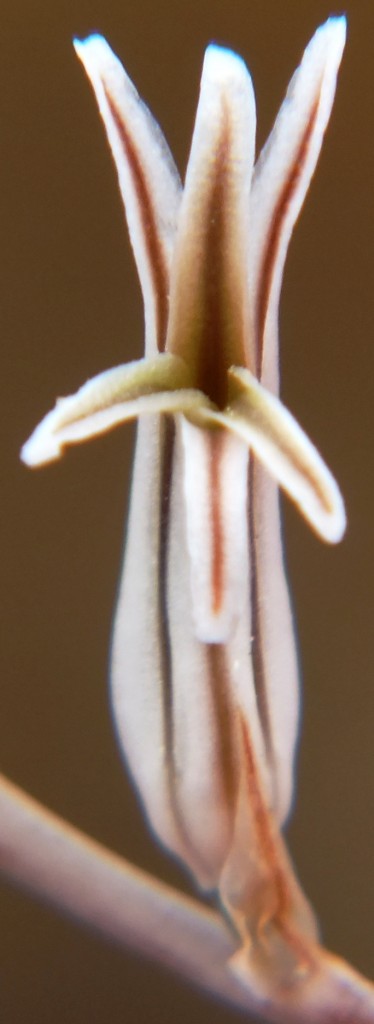
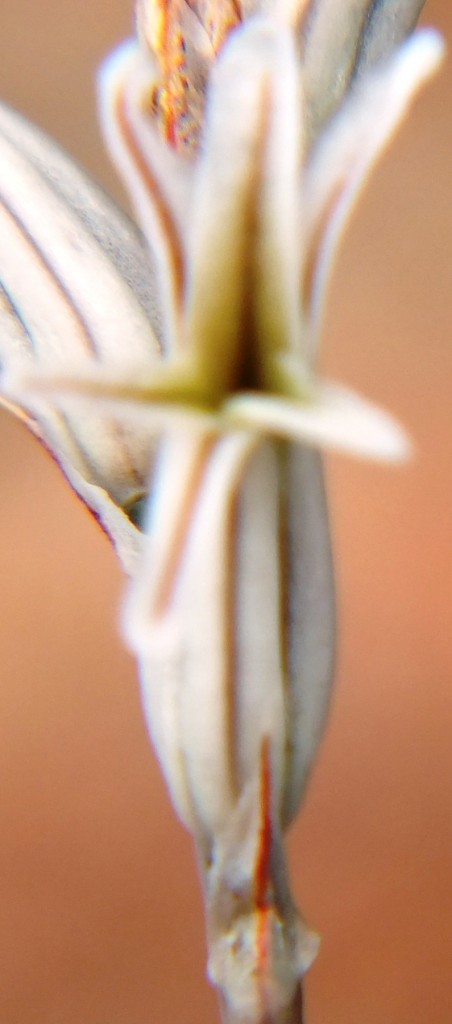
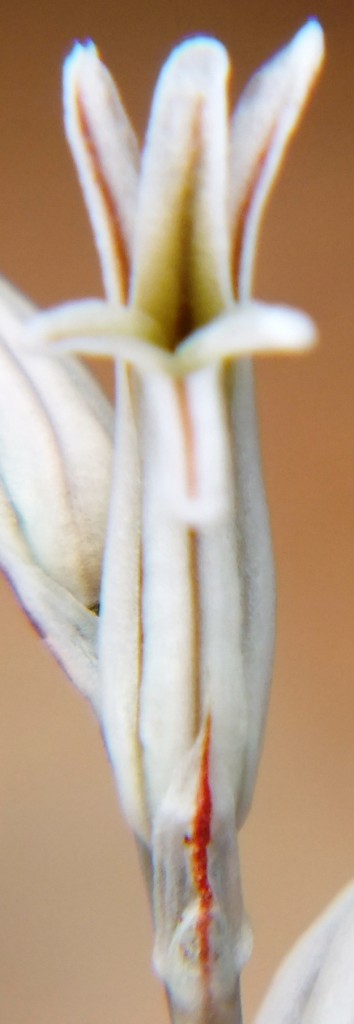
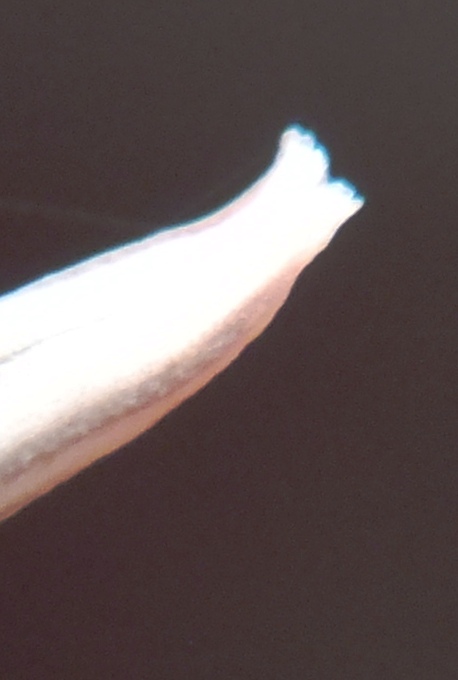
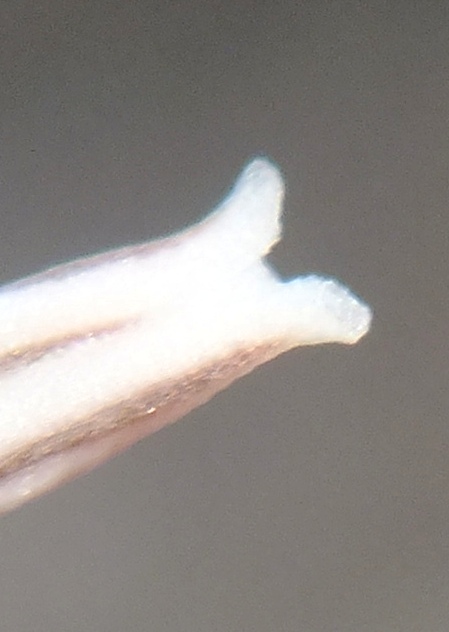
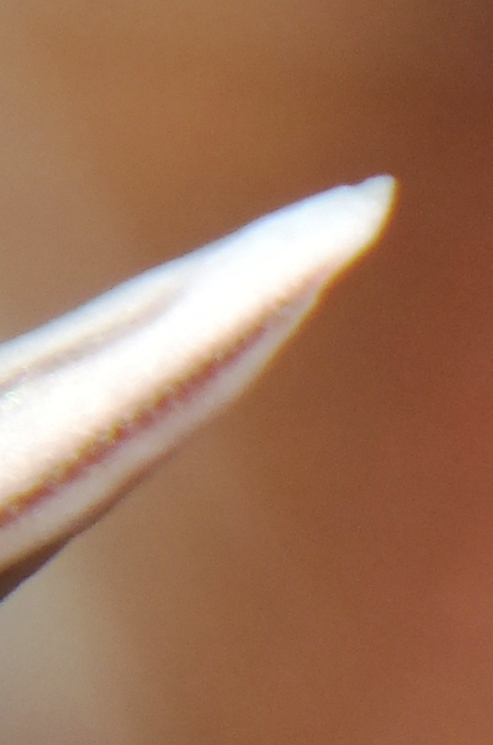
The present appendix represents another set of plant illustrations and also flower photographs. Unfortunately 6631 did not flower very well and only two photographs could be taken. The habitat has changed in the 43 years since I first observed the population. The plant clumps were considerably smaller and there was none of the colour range that I observed in my first visit in 1969 when the plants showed green, yellow and orange.
Observations
The differences in the plants at the three localities are based on three very simple criteria. ‘Badia’ has fewer leaves and no marginal spines, ‘mundula’ has more abbreviated and also numerically more and smaller leaves with a shorter end-area; and ‘sublineata’ has long slender leaves often with prominent venation and larger marginal spines. By these criteria one can nearly always be sure of identification. Nevertheless wider considerations and similarities of one degree or another are so widespread that I consider a stipulated taxonomic distinction impossible and unrealistic. Flower morphology is as variable as the leaf appearances and it is virtually impossible to arrive at a single word or imaged representation of what represents each population. It in fact suggests the restricted view of formal taxonomic recognition that I suggest.
Acknowledgement
I appreciate the co-operation of Mr. E. Conradie of Mierkraal and Mr. P. deKok of Napier for their forbearance. I would be very remiss not to acknowledge the interest in the subject, and input, by Lawrence Loucka who has generated the HaworthiaUpdates.org website and the ISSN 2306-0956 archive for my writings on Haworthia. ♦
Haworthia flowers – some comments as a character source, Appendix 8
A report on Haworthia mirabilis ‘badia’ / ‘subtuberculata’
I cannot claim that I have resolved the nomenclature niceties around the use of this name and its many varietal names and synonyms. If critically examined even the use of the name “mirabilis” is in doubt and the very original epithet of “Aloe atrovirens” may be nomenclaturally correct. This would create havoc because then the name H. herbacea as typified by W.T. Stearn may best apply. So I put that all aside and use names as I have in my Revision and subsequent publications. I am well aware that there is a problem with the use of H. mirabilis var. mirabilis where it may be thought that the name “mundula” is therefore redundant. I cover all this up with the explanation that there is no typical variety “mirabilis” and actually use just the name H. mirabilis to cover all those populations and variants to which no Latin names exist. I use names like “badia” and “sublineata” as it is generally possible to recognise all or most of the variants from those populations. But names like “magnifica”, “maraisii”, “heidelbergensis”, “rubrodentata”, “beukmannii” and “depauperata” (among others) have no clear and direct application in respect of a population or even a group of variants of any kind. In my Revision I attempt the use of the name “triebneriana” to cover all the variants that are not included under the typical varietal name “mirabilis”. This does not actually work either because the name has its origins at Stormsvlei and there are other populations that are very different from those occurring there too.
My conclusion was, and is, that it is not possible to formally name and describe all the variants in H. mirabilis. Firstly this is true at population level and very much more so in respect of the incredible variation that exists within those populations.
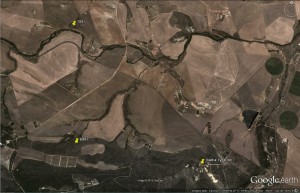
In this appendix I present images of plants and flowers for just two populations…
MBB6987 Haworthia mirabilis ‘badia’. Sandfontein.
MBB7091 H. mirabilis ‘subtuberculata’. Mierkraal, Napier
(Note: – this is not MBB6631 Bredasdorp ‘Mierkraal’ where ‘mundula’. I use now the name ‘subtuberculata’ as one of two generally for that area Northwest of Napier. These are plants with generally erect to suberect leaves, fairly strongly triangulate and tubercled. The von Poellnitz and Triebner names ‘multituberculata’, ‘napierensis’ and ‘turgida’ are also available).
1. MBB6987 Haworthia mirabilis ‘badia’. Sandfontein.
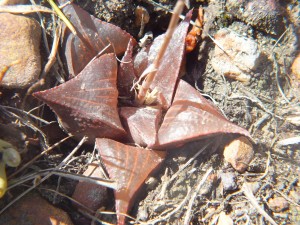
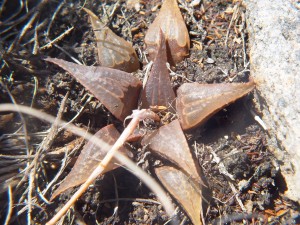
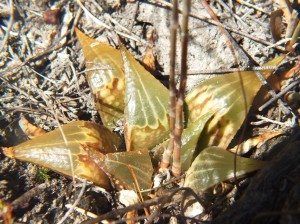
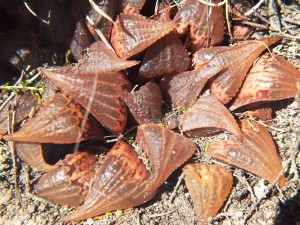
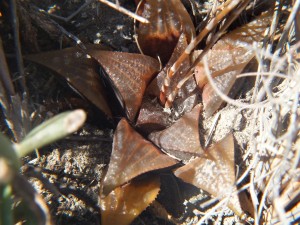
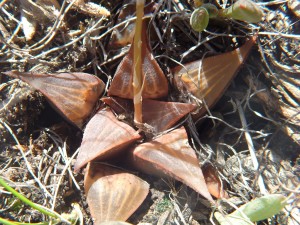
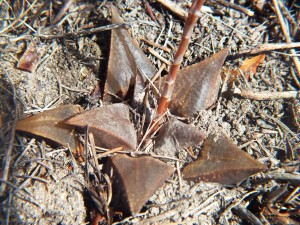

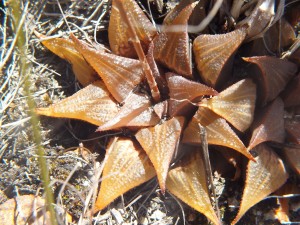
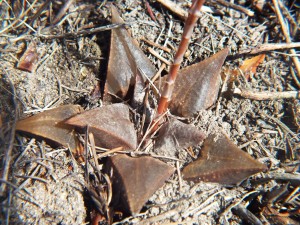
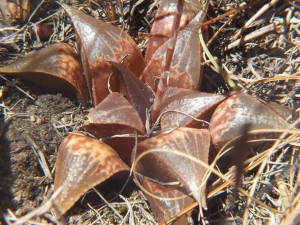
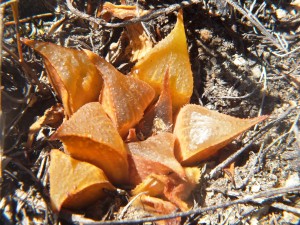

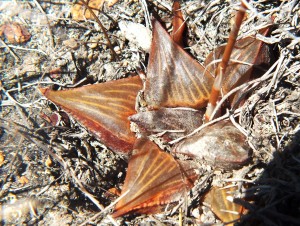
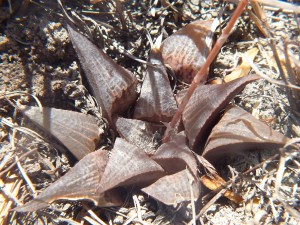
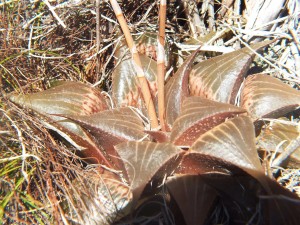
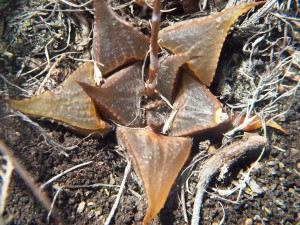
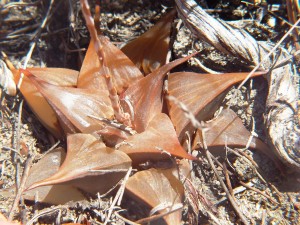
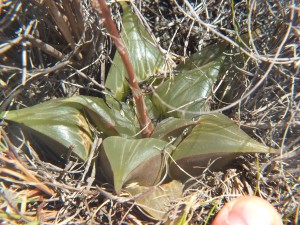
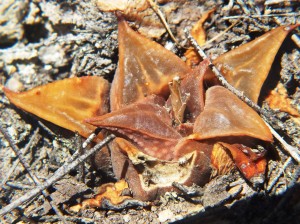

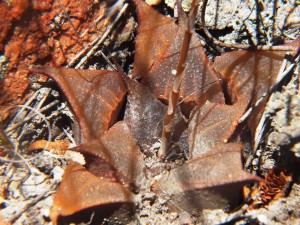
Flower profiles.
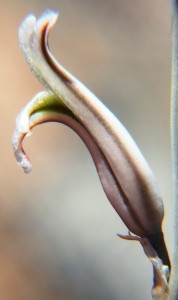
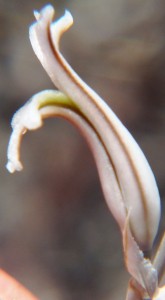
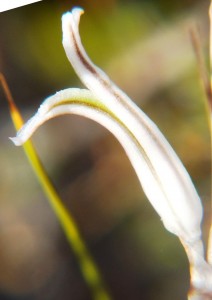
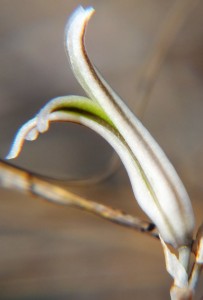

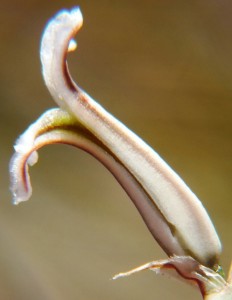
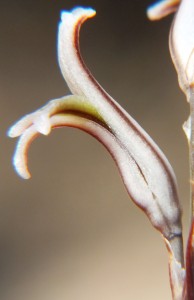
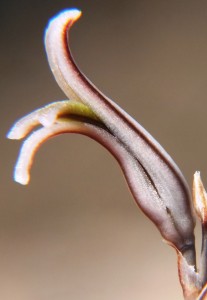
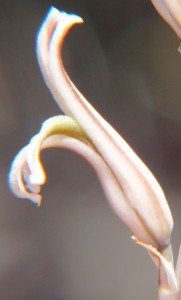

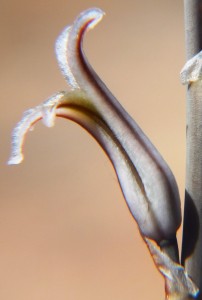
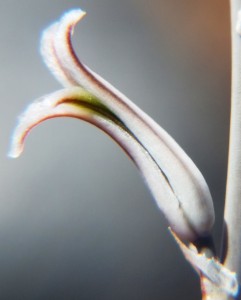

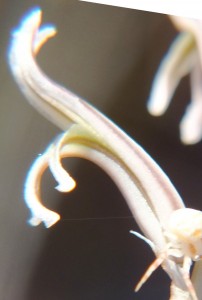
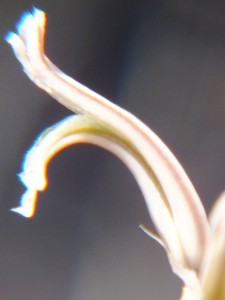
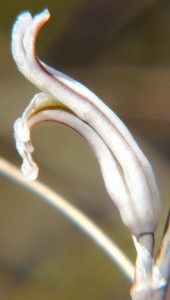
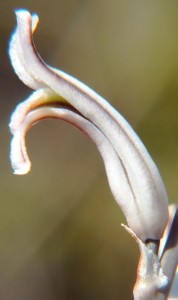
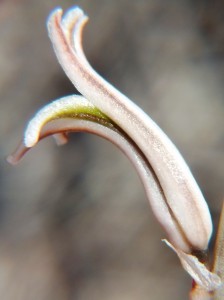
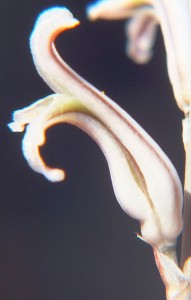
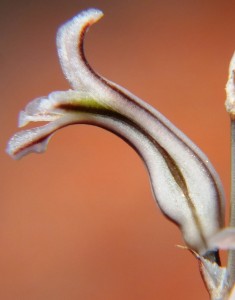
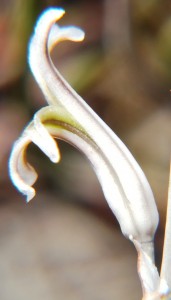


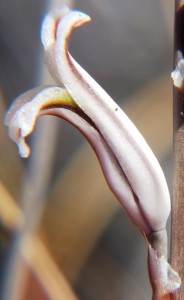

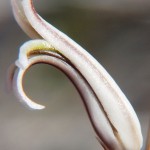
Flower faces.
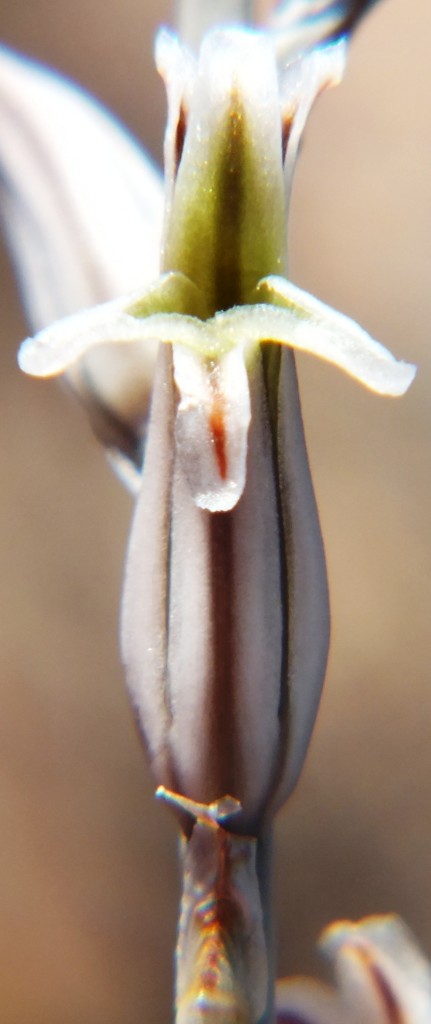
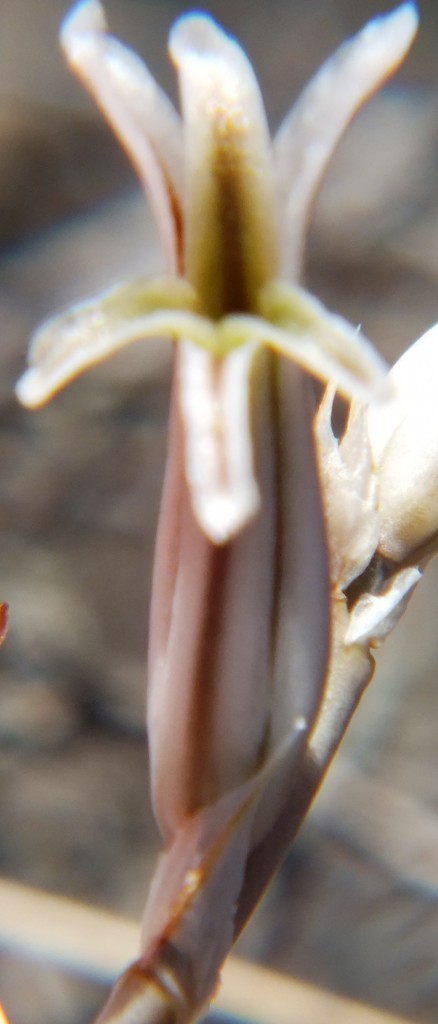

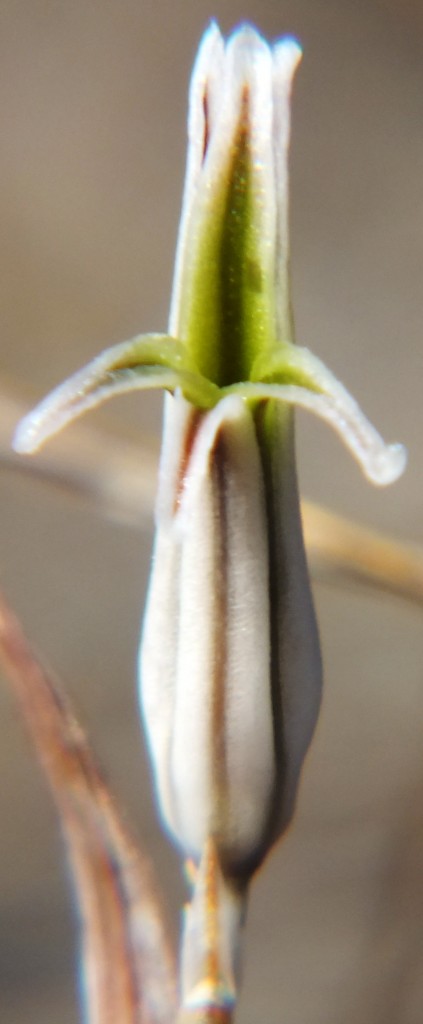
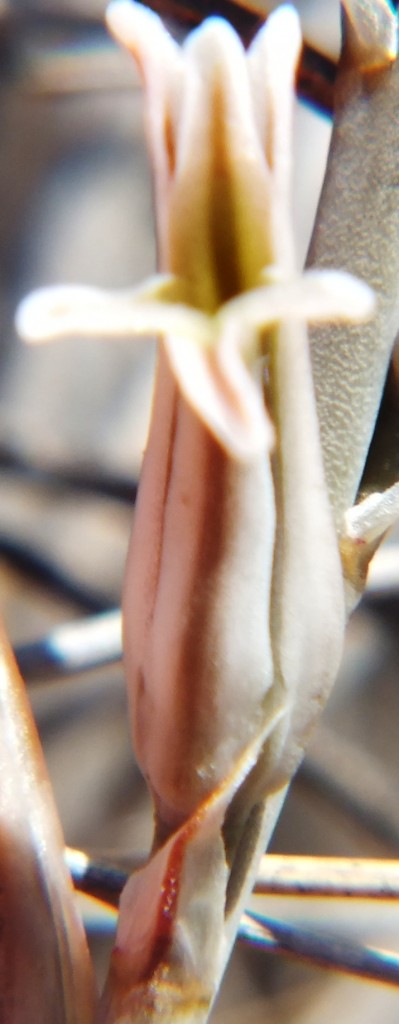



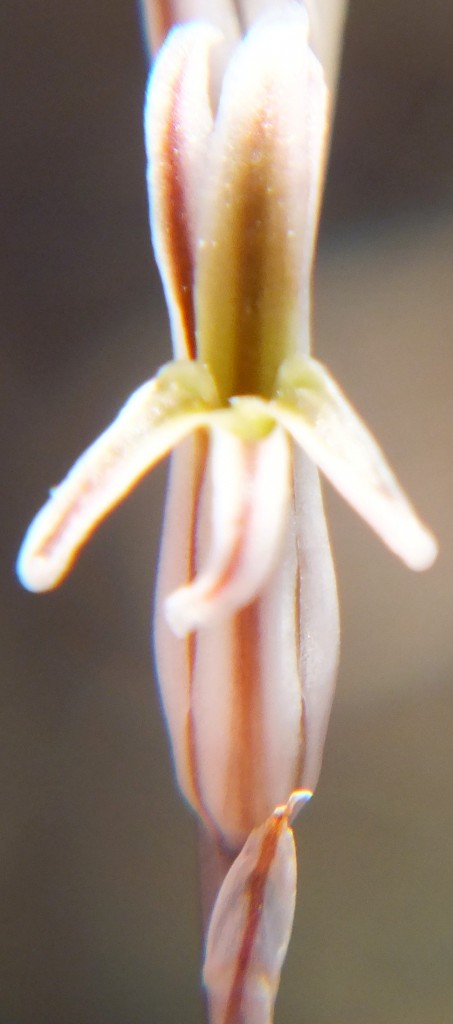
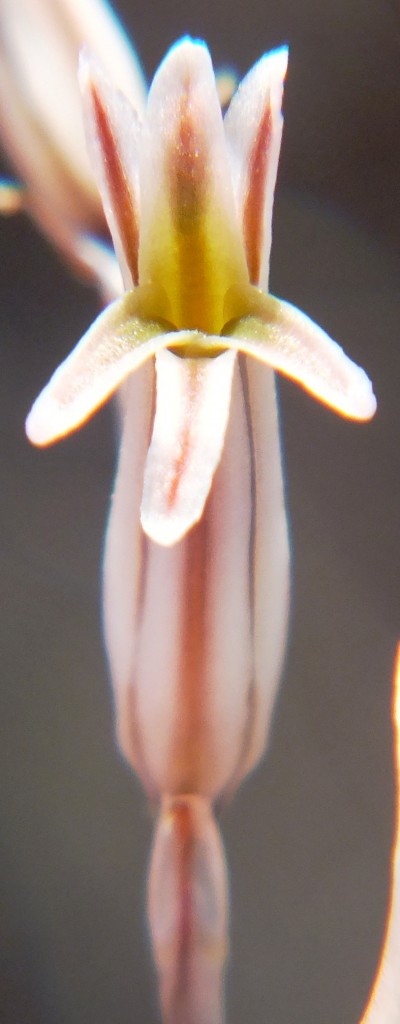




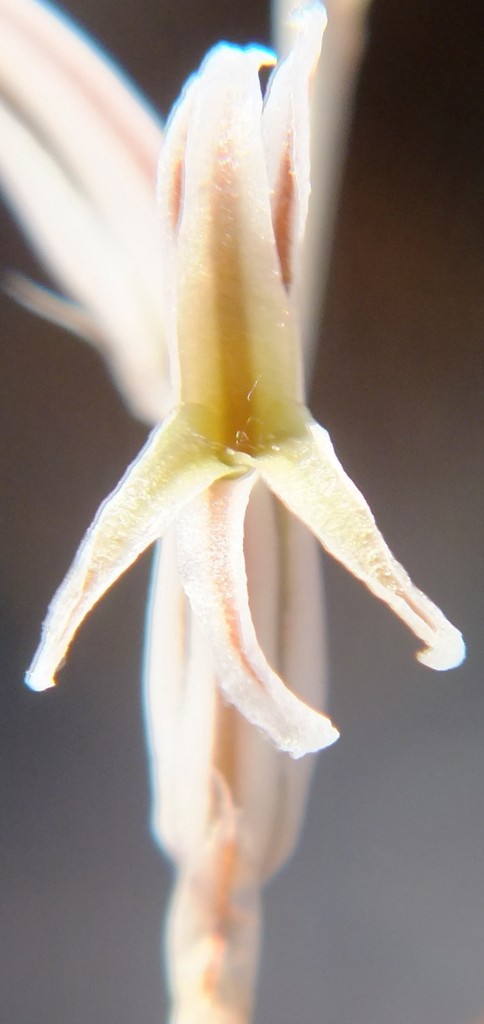
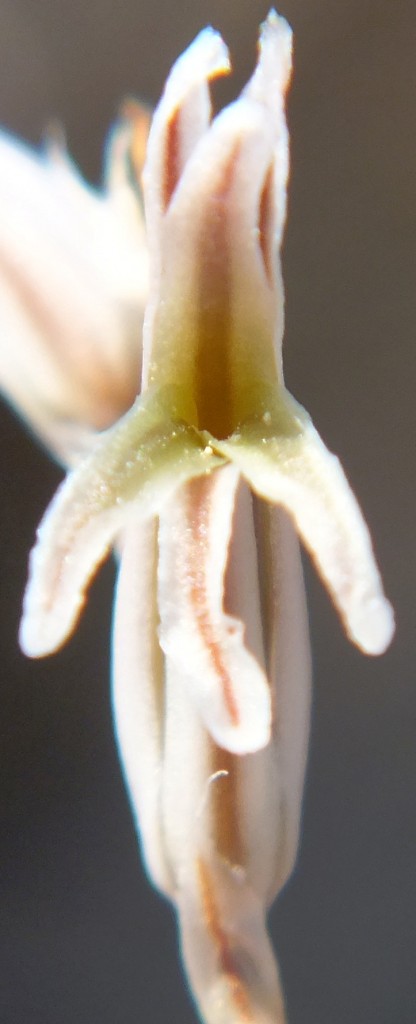
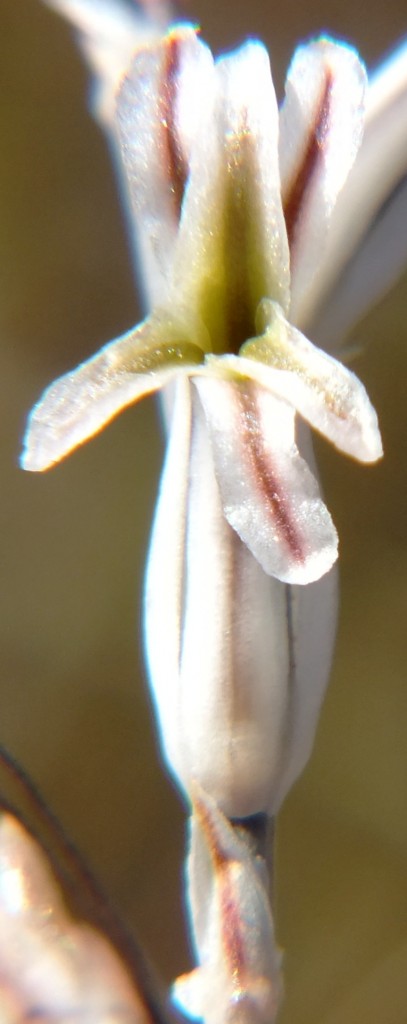
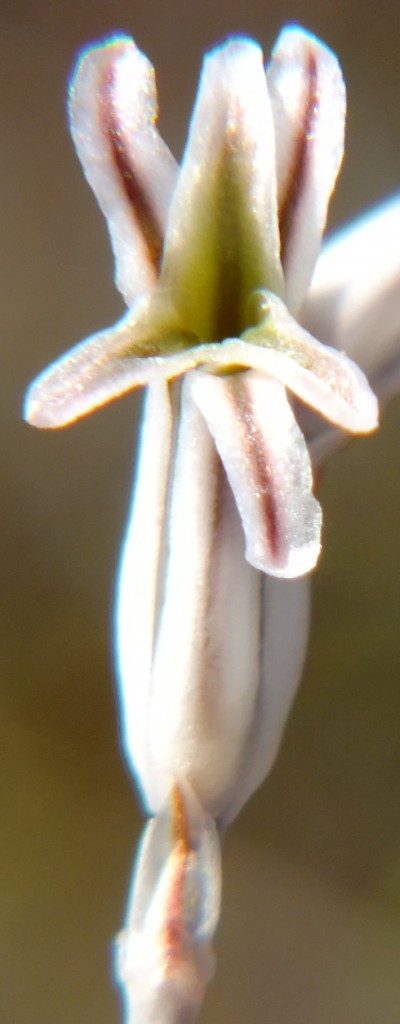
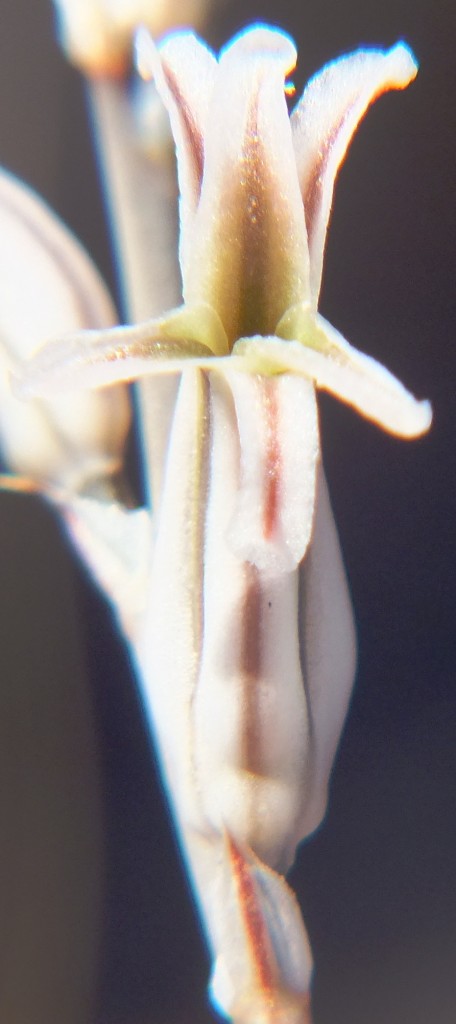
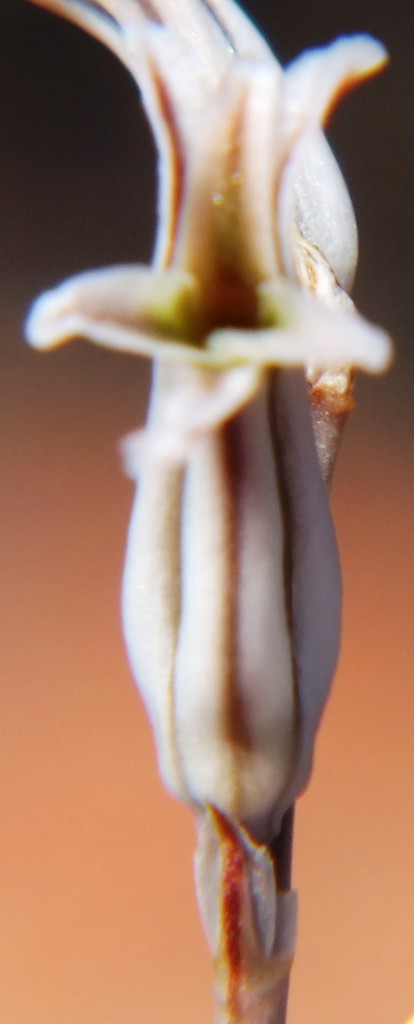

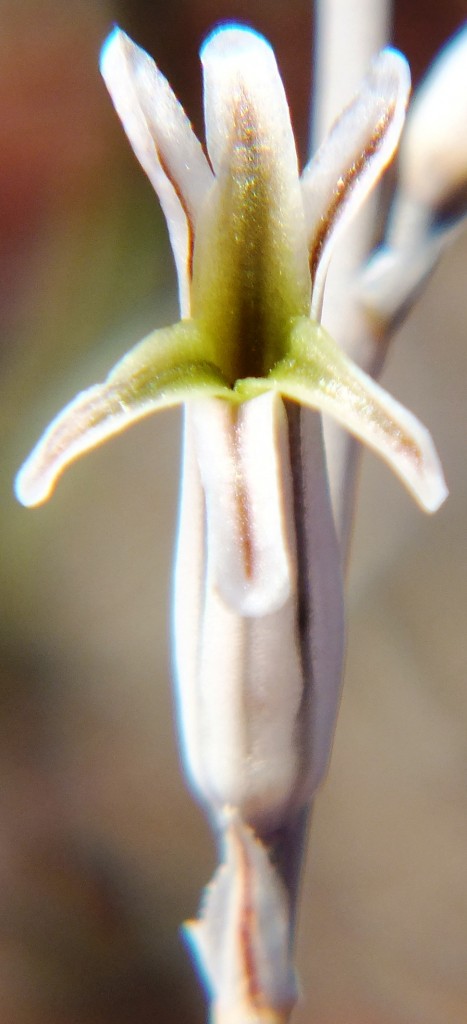
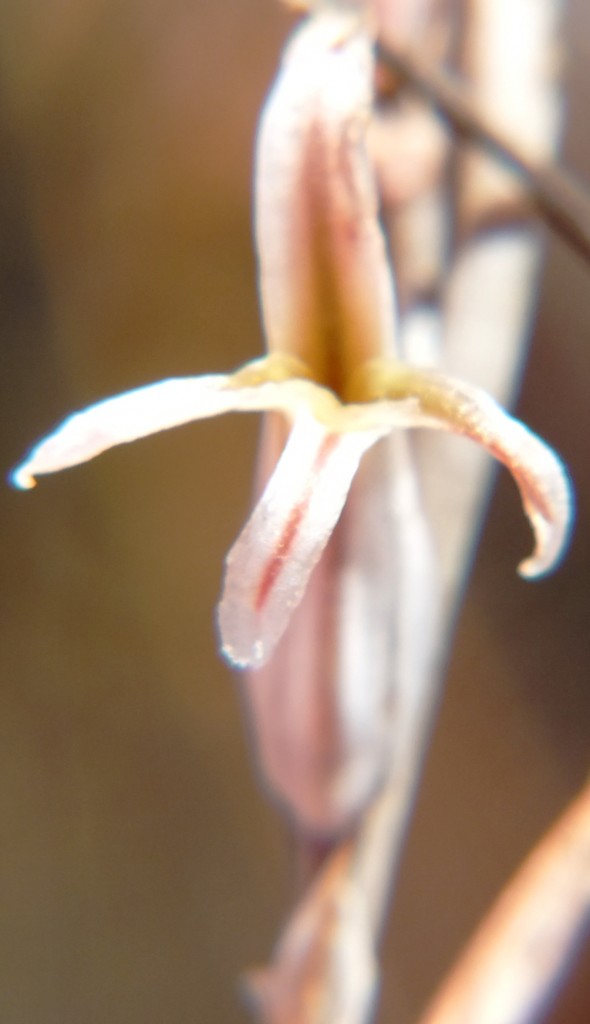

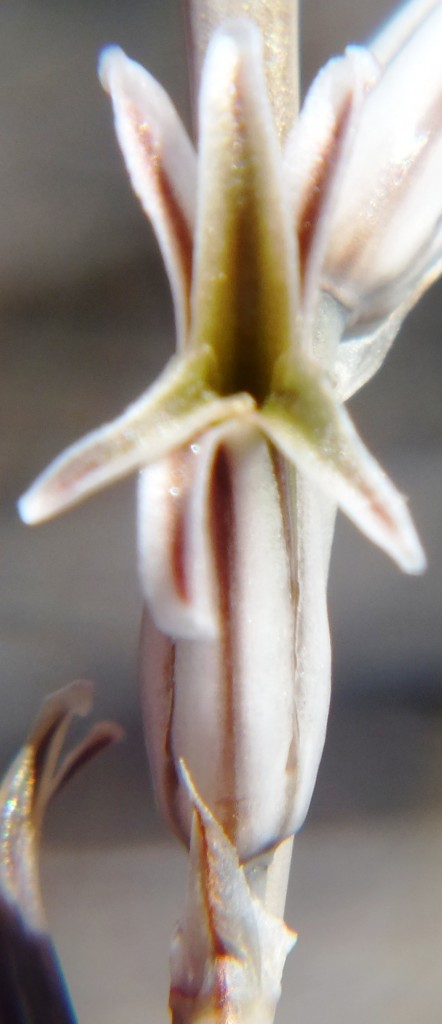
2. MBB7091 H. mirabilis ‘subtuberculata’. Mierkraal, Napier
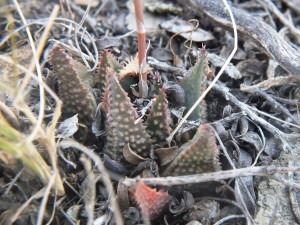
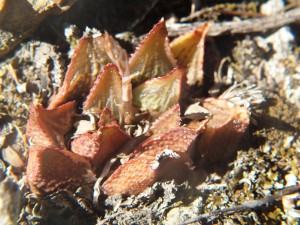
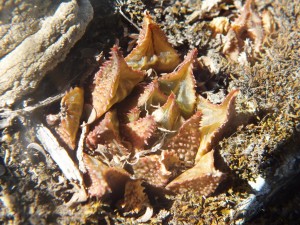

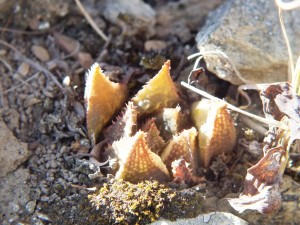
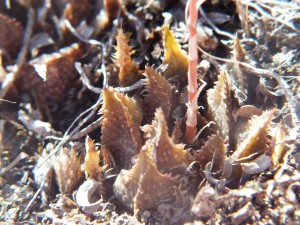
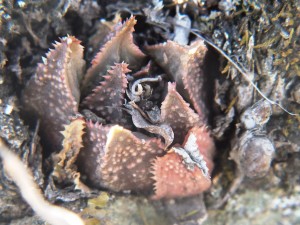
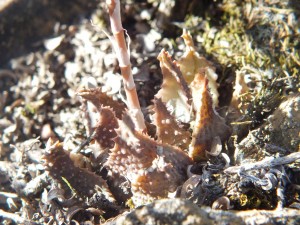
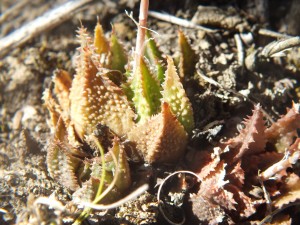
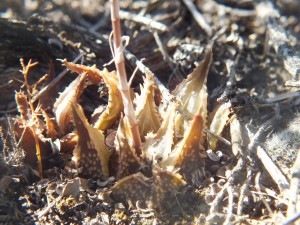
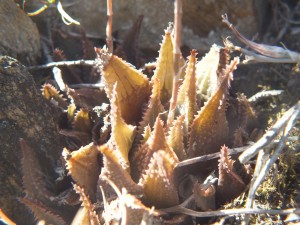
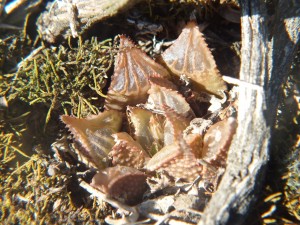

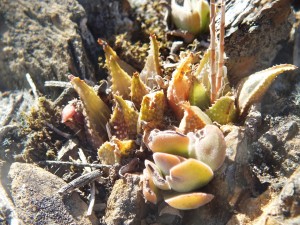
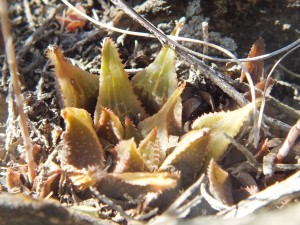

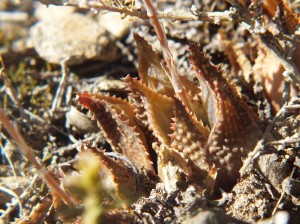
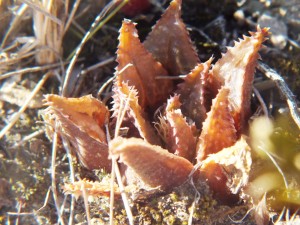
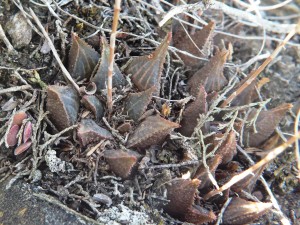
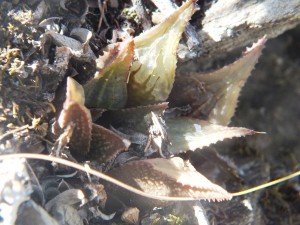
Flower profiles.

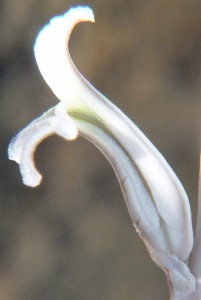
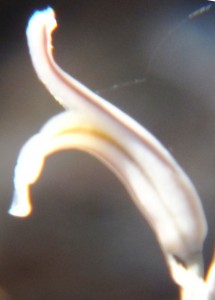
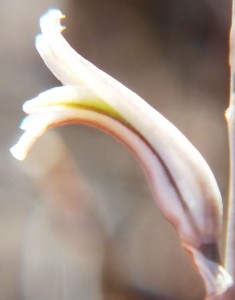

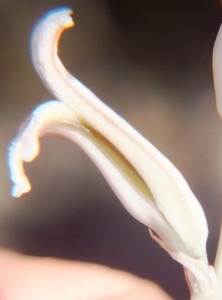
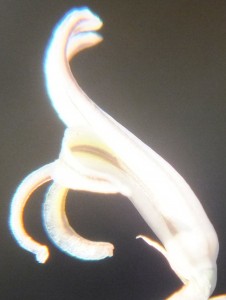
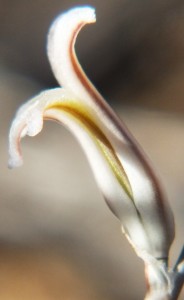

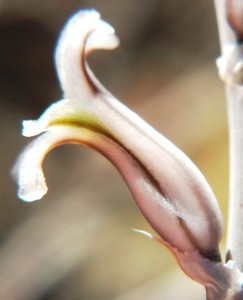
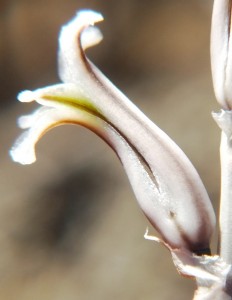
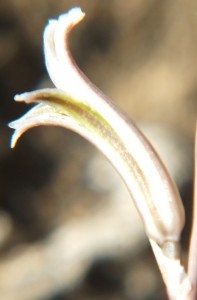

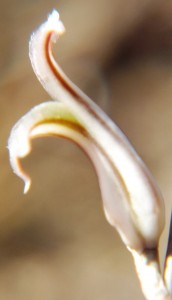
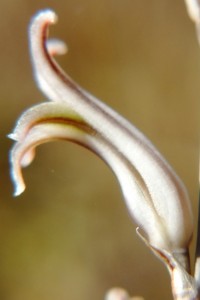
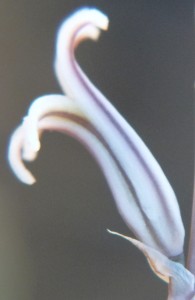
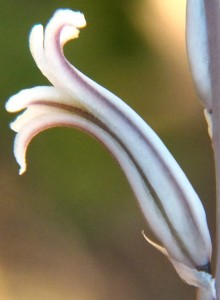
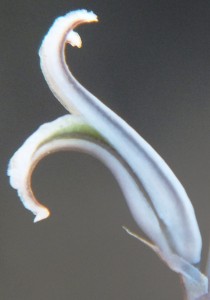
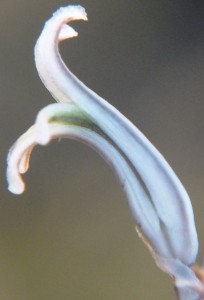
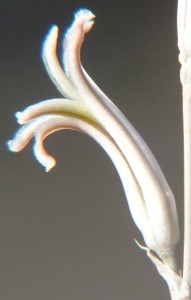
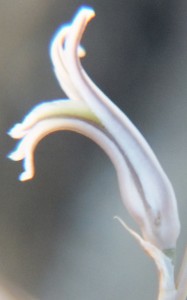
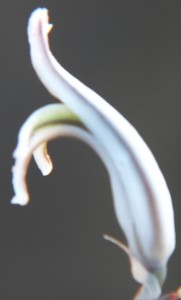



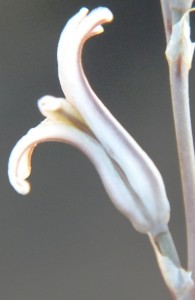
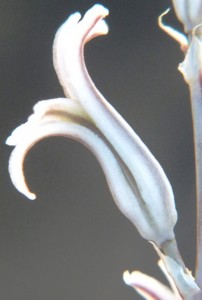
Flower faces.

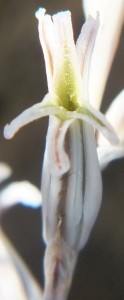
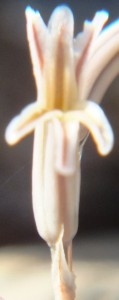


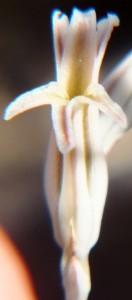
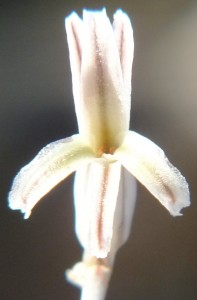
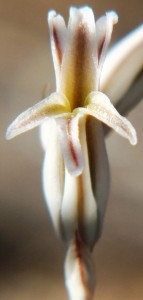
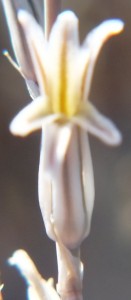
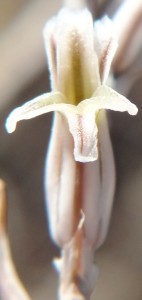
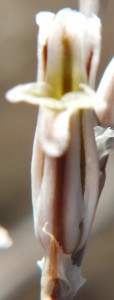

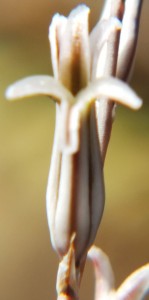
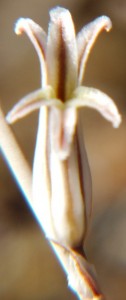
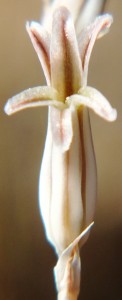
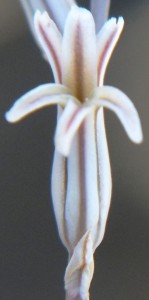
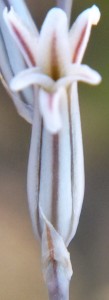

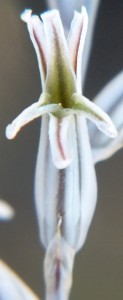

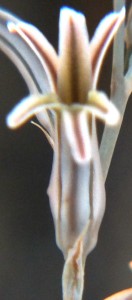
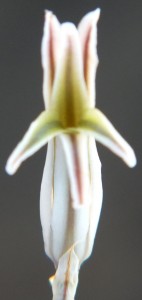
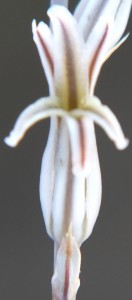
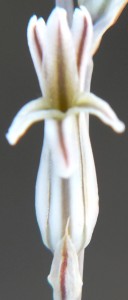
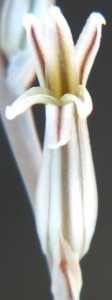

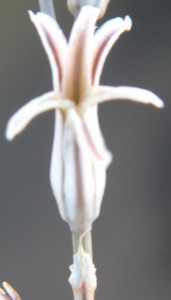

The first population is approximately 2.8km west of the “typical badia” population and in almost the same geological stratum and habitat viz. Table Mountain Sandstone with grassy fynbos. The second population is approximately 2.7km northwest of the first and it is on a small ridge of vertically orientated Bokkeveld shale with Renosterveld. There are several populations west and north from here with similar plants. To the east at Napier and north of Napier the plants vary towards smaller and darker versions of H. mirabilis that very loosely indeed have been covered by the name “maraisii”. This is a complete myth and about as accurate as the use of the name “magnifica” to cover all the H. mirabilis variants around Heidelberg and Riversdale. It must be noted that the name “heidelbergensis” is drawn into the arena too and in Appendix 9 I will explain one aspect of the situation with respect to that name.
What this particular report is intended to convey, is the dramatic change related to firstly location, and secondly habitat. I maintain that there is no prescribed species definition in botany and that this is the prime reason for the confusion that exists at every level in botany. Therefore I have arrived at my own view of species as dynamic systems that are not necessarily recognisable in terms of tangible visible characters. There are two important considerations in the way I classify Haworthia. The first is there geographic spatial positions, and secondly the way in which apparent systems relate to each other with respect to those positions. Therefore what I am showing here is that H. mirabilis ‘badia’ is the sandstone version (ecotype) of the species northwest of Napier, and H. mirabilis ‘subtuberculata‘ the shale version a little to the north and then west. H. mirabilis ‘sublineata‘ is a sandstone ecotype south of Bredasdorp and H. mirabilis ‘mundula’ a fairly unique population on tertiary gravel southwest of Bredasdorp. In Appendix 9 I will give an inkling of what happens to H. mirabilis in the shale and tertiary formations north and then west from Napier.
Acknowledgement
Mr. Wynand Wessels kindly accompanied us to the population at Mierkraal. It was difficult to establish just who owns the property at Sandfontein where H. mirabilis occurs and while we met two landowners in the area we were not sure if we were trespassing or not. ♦
Haworthia flowers – some comments as a character source, Appendix 9
A report on Haworthia mirabilis and Haworthia rossouwii ‘minor’, Rooivlei, NNE Bredasdorp.
In Appendix 8, I explain some of the rationale of my use of names. A detailed report on H. mirabilis can be found in Haworthia Update Vol.3. and in various chapters of the subsequent Updates. It is shown why I consider the possibility that H. mirabilis and H. retusa are in fact the same species.
In this report I will show just one population of many from Napier northwards and westwards for which no broad name exists. There is simply a transformation from elements that I refer to as H. mirabilis ‘subtuberculata’ in Appendix 8, to a very wide range of populations in the central Southern Cape. Both the names “maraisii” and “heidelbergensis” have been applied to populations in this area. The name H. maraisii var. simplicior from Napky may even be relevant but its application, simply irrational.
The populations for which data is presented here are…
- 7334 H. miriabilis NE Bredasdorp
- 6638 H. miriabilis Rooivlei
- KG36-70 H. miriabilis ‘minor’ Rooivlei
- 7821 2013 H. mirabilis x rossouwii ‘minor’
- 7822 H. miriabilis Rooivlei E of Rd
- 8044 H. miriabilis with H. rossouwii ‘minor’ KG36-70
- 8045 H. rossouwii ‘minor’ Rooivlei
The population 7334 H. mirabilis is covered in a general way by the name “maraisoid” that simply denotes smaller darker green versions of H. mirabilis. It is not accurate and the terms “floribundoid” and even “heidelbergensoid” are applicable. A complication among many is “hammeroid” for what appears to me as introgression of H. mutica with H. mirabilis. It is just not possible to simplify and summarise the range of populations and variants that lead on from this close to Bredasdorp (and “sublineata”) on to Rooivlei, then north and eastwards to eventually cover “hammeri”, “bobii”, “paradoxa”, “jakubii”, “Windsor”, “magnifica”, “atrofusca”, “toonensis”, “scabra”, “vernalis” and so on ad infinitum. So these pictures together with 7822 just serve as a reference point for what follows.
1. MBB7334 Haworthia mirabilis, NE Bredasdorp
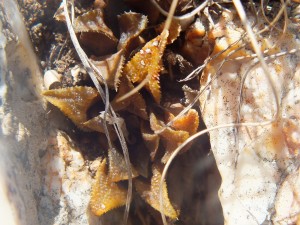
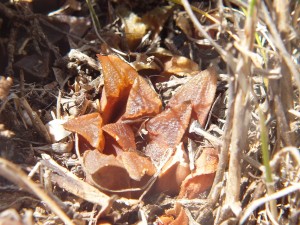
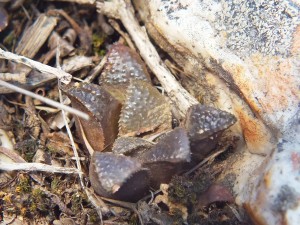

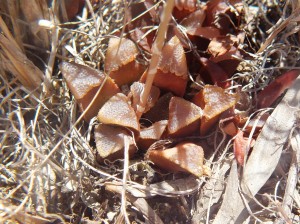
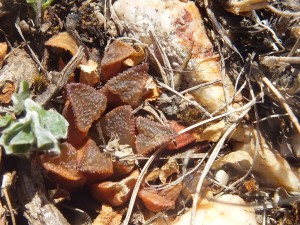
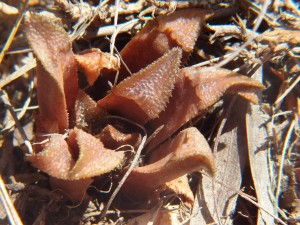
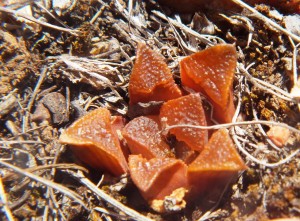
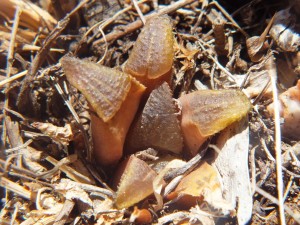
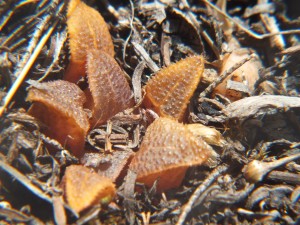
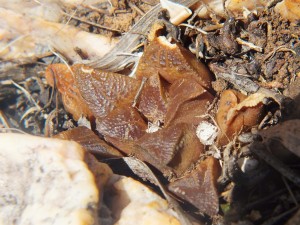


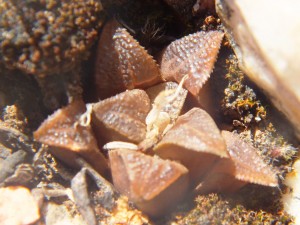
It is Rooivlei approximately 26km NE Bredasdorp that concerns me here. It is quite a high-lying area in the wheat growing area of the southwestern Cape. The geology is primarily Bokkeveld shale with inselbergs of later tertiary origins. At Rooivlei the highpoint has tertiary remnants and the Bokkeveld strata include sandstone among the truly clay derived shales. While the vegetation is broadly renosterveld, there is even a remnant of what Acocks’ described as Valley Bushveld. Curiously is the presence of Acrodon quartzicola first described from there as well as Gibbaeum austricola much more widely distributed even to southwest Heidelberg. From the Haworthia aspect, H. marginata is present. It is the presence of a vicariant population of H. retusa ‘turgida’ that is really odd because it is known again about 40km away to the east and in the Breede River river channel.
What is significant is a plant illustrated as no.12 in 6638. I have seen a plant just like this where H. mutica occurs in the immediate vicinity of H. mirabilis at Klipbankskloof about 20km north of Rooivlei. The illustration referred to my well be a hybrid involving H. retusa ‘turgida’. H. mutica is not known closer than Hasiesdrift (Soesriver) about 6km away.
2. MBB6638 Haworthia mirabilis, Rooivlei
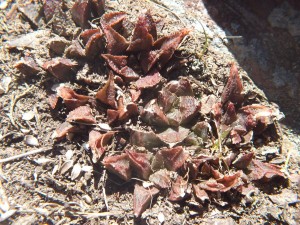

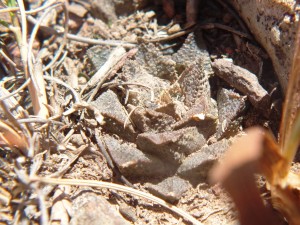

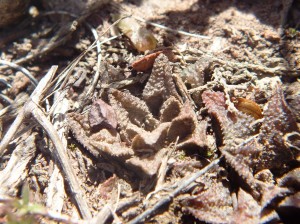
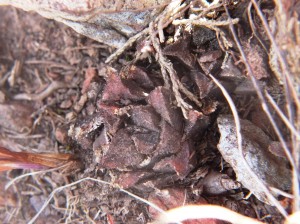
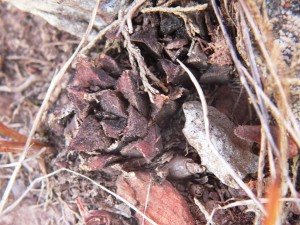
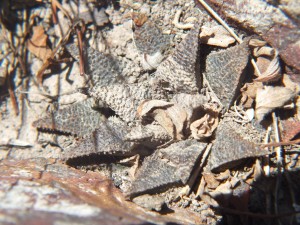
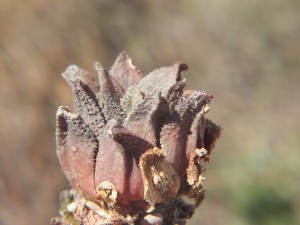


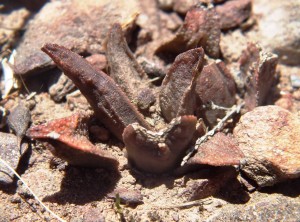
Still more significant now is what I refer to formally as H. rossouwii var. minor. This is KG36/70 originally described by me in my Revision of 1999 but as H. heidelbergensis var. minor. I did explain at the time that there were similarities to H. mirabilis var. sublineata. Since then when I did not know all that much, I have explored a great deal and it is clear that the greater picture is that H. heidelbergensis is truly a variant of H. mirabilis. Because the variant ‘minor’ occurs with H. mirablis it forces a rethink. I did this eventually when H. rossouwii was re-discovered at three locations north-northwest and north of Bredasdorp (forcing the abandonment of the name H. serrata) and not very far from Rooivlei. This is really odd in respect of the distribution and variability of Haworthia because I had described H. serrata from near Heidelberg far to the east. I now have records for 12 populations in that area. This distribution brackets that of ‘minor’. My suggestion thus was that it was better a variant of H. rossouwii than H. mirabilis that now included H. heidelbergensis.
3. KG36/70 Haworthia rossouwii var. minor, type locality
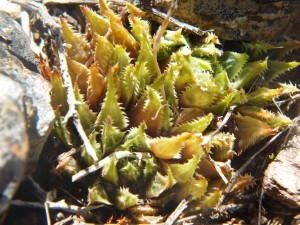
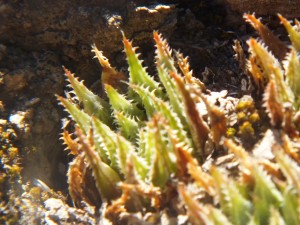
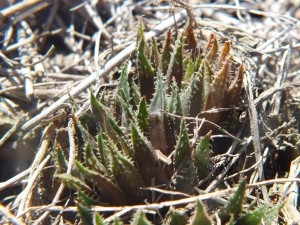

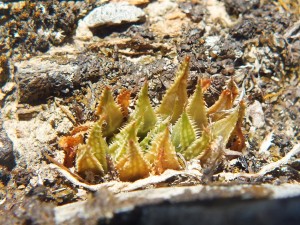
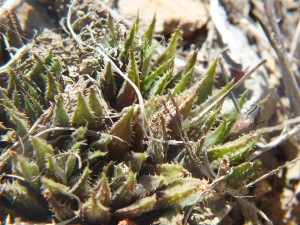
4. MBB7821 Haworthia mirabilis x rossouwii ‘minor’

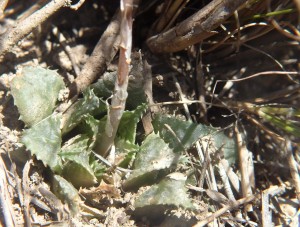
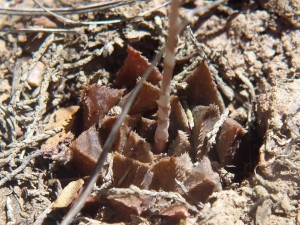
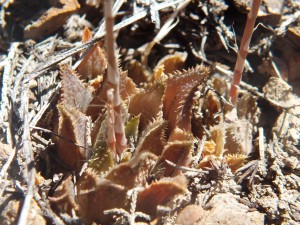
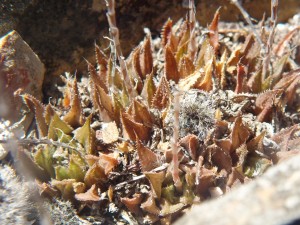
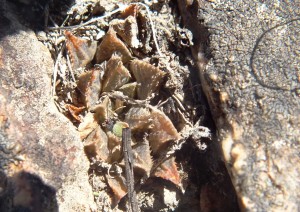
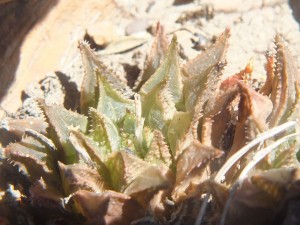
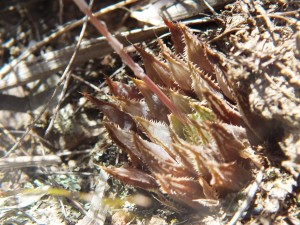

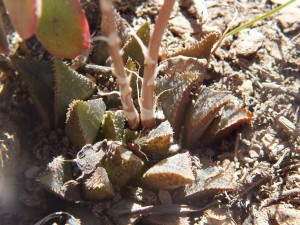
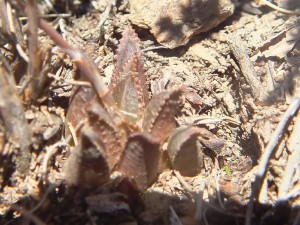
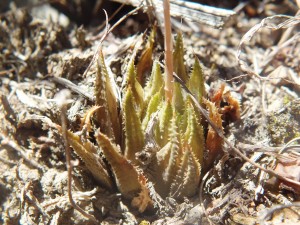
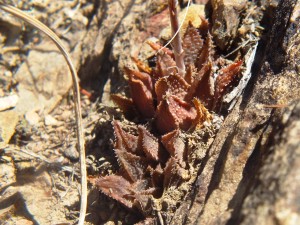
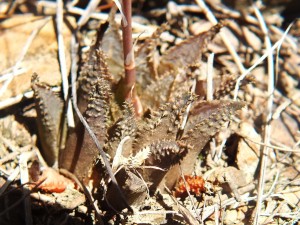
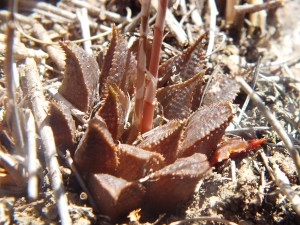

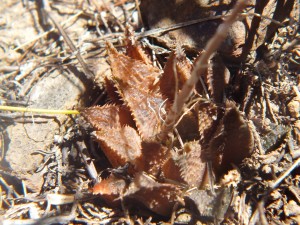


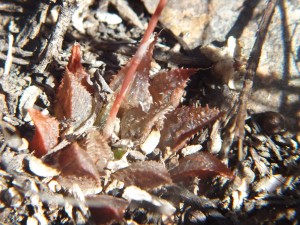
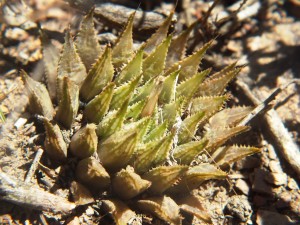
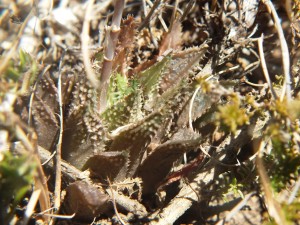
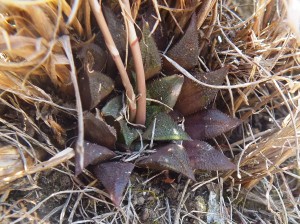

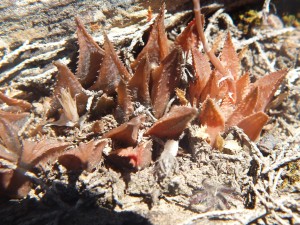
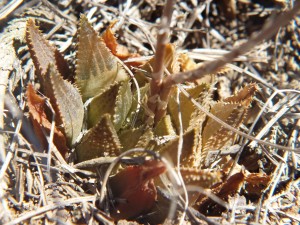
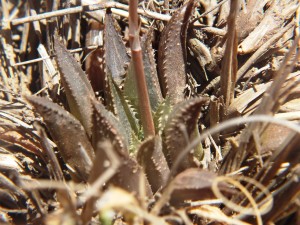

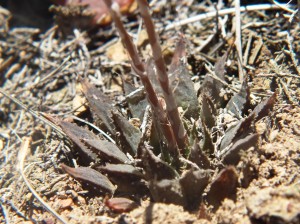
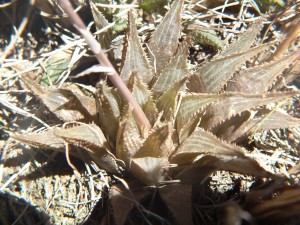
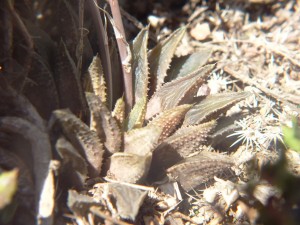
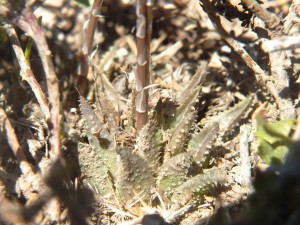
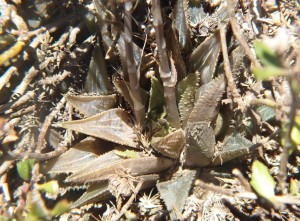
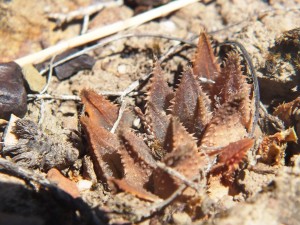
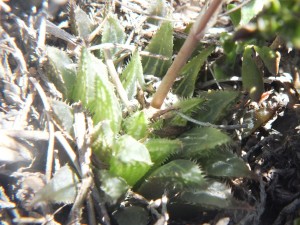
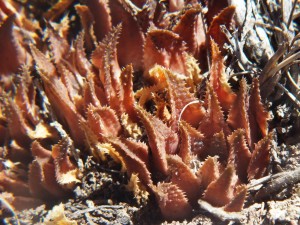
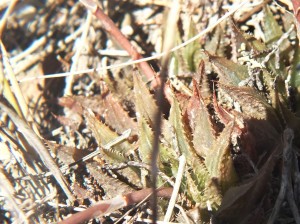
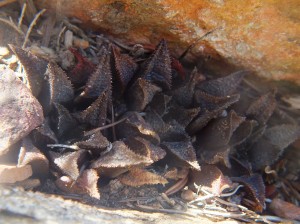
A few years ago I revisited Rooivlei to assess the presence of H. marginata there. I did not find it, but instead noted a population 7821 west of KG36/70 that was very unusual and I suspected it had something to do with both H. mirabilis and H. rossouwii ‘minor’. The object of my recent visit to Rooivlei was to examine this a bit more closely with H. mirabilis in flower. I do not have a record for the flowering time of H. rossouwii ‘minor’ but have memorised it as November. In my visit of 12th Feb. Almost the first plants we found were 2 plants of H. mirabilis (8044) in flower in the immediate vicinity of KG36/70 that was not in flower. The population (7821) west of this is very extensive and the plants extremely variable. They were mostly in flower and there were odd large plants suggesting hybridization with some other species. To the northwest we again found plants (8045) like those at KG36/70 in the same more prominent vertical shale ridges as at the original locality. There was an indication that these plants were not flowering in synchronicity with 7821 and had in fact already flowered. But the plants overall were intensely variable as can be seen from all the illustrations.
5. MBB7822 H. mirabilis Rooivlei, east of Road
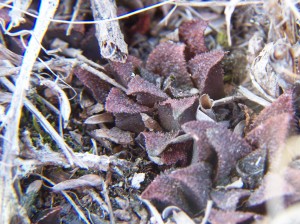
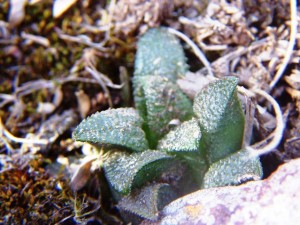

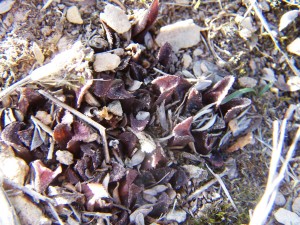
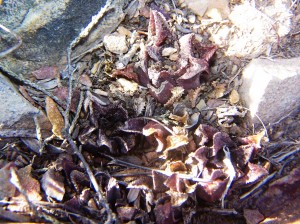

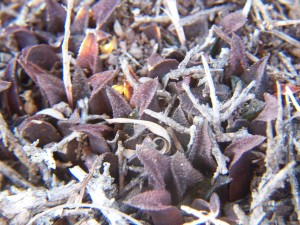
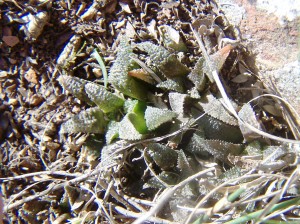
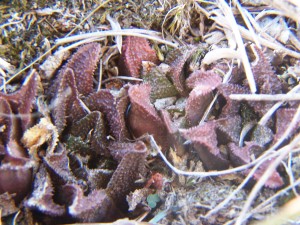
6. MBB8044 H. mirabilis with H. rossouwii ‘minor’ KG36-70
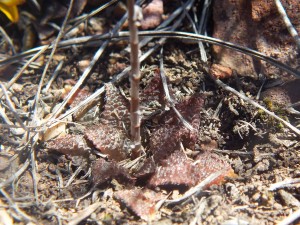
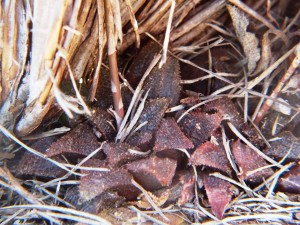
7. MBB8045 H. rossouwii ‘minor’ Rooivlei NW of type locality
I therefore hypothesize again that what is occurring at Rooivlei was/is introgression of H. rossouwii and H. mirabilis. The area is quite extensive and I have not explored it in its entirety. I would not be surprised if H. rossouwii in its more “typical” form is found there.
Acknowledgement.
I would like to thank Mr Francois Uys for access to Rooivlei. Florent Grenier accompanied us there. Lawrence Loucka kindly and patiently brought some loose ends together.
Haworthia flowers – some comments as a character source, Appendix 10
Appendix 10 – An additional report on Haworthia mirabilis and Haworthia rossouwii ‘minor’, Rooivlei and Brakkloof, N and, NNE Bredasdorp.
The previous report indicated the necessity for further exploration of Rooivlei. I had observed H. mirabilis, but not reported it in Update 3, at Brakkloof to the west in 2004. So the object of this appendix is to remedy this oversight and to also cover more area of Rooivlei. At Brakkloof there are several small remnants of rocky shale and we located several populations, while at Rooivlei we actually explored the very western boundary. This constitutes the same topographical area as the Rooivlei populations but the plants we observed were factually on Brakkloof.
The populations reported on here are:-
- 6537 H. mirabilis, Groudini, W Napier
- 7285 H. mirabilis, Brakkloof 3
- 8046 H. mirabilis, Brakkloof 2
- 8047 H. mirabilis, Brakkloof 1
- 8048 H. mirabilis, W Rooivlei 1
- 8049 H. mirabilis, W Rooivlei 2
- 8050 H. mirabilis, W Rooivlei 3
- 8051 H. mirabilis, E Rooivlei
- 8045+ H. rossouwii ‘minor’, NW type locality
- 8052 H. mirabilis, S.Welgegund
- 8053 H. mirabilis, Welgegund SE 8052

